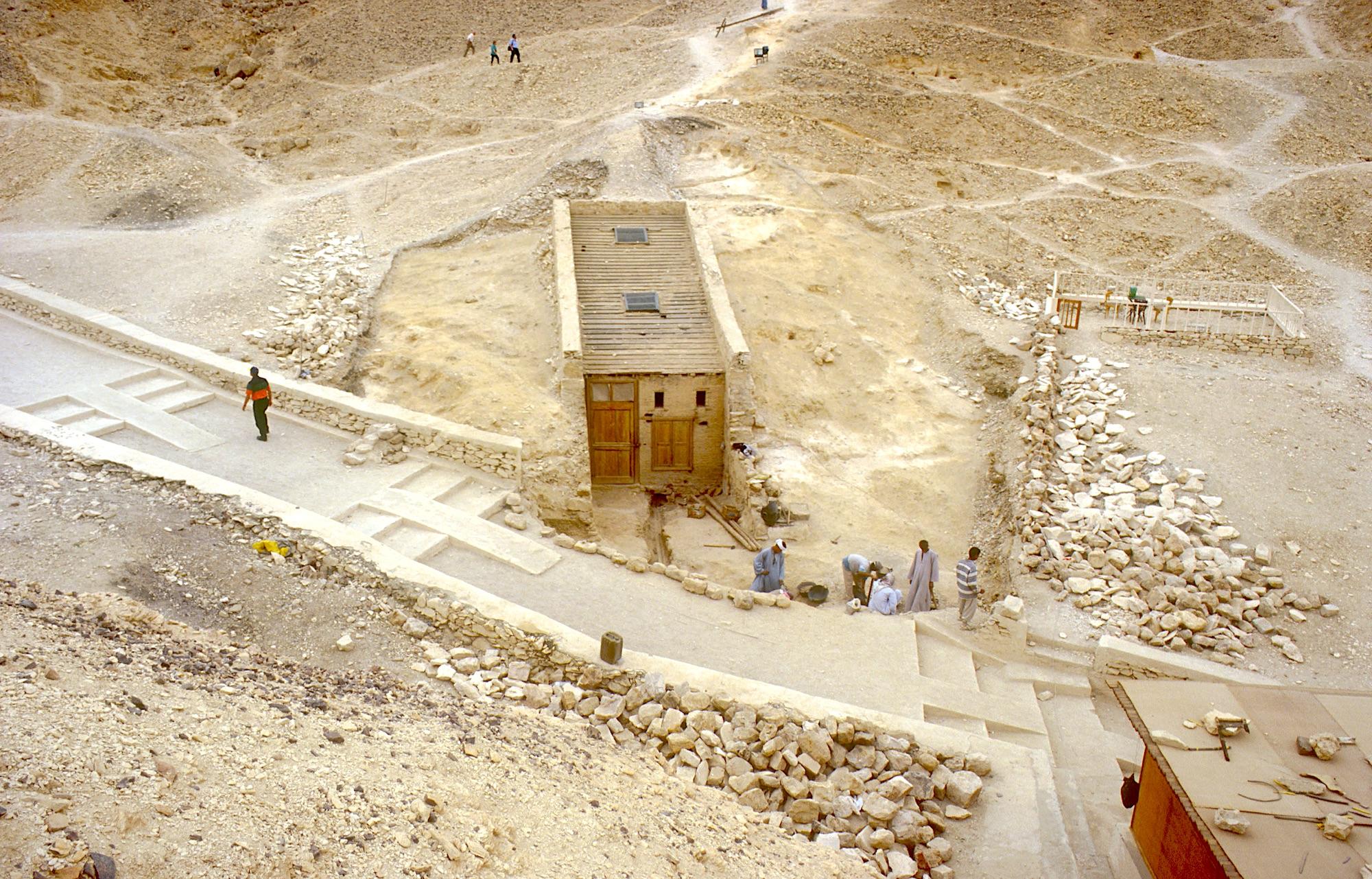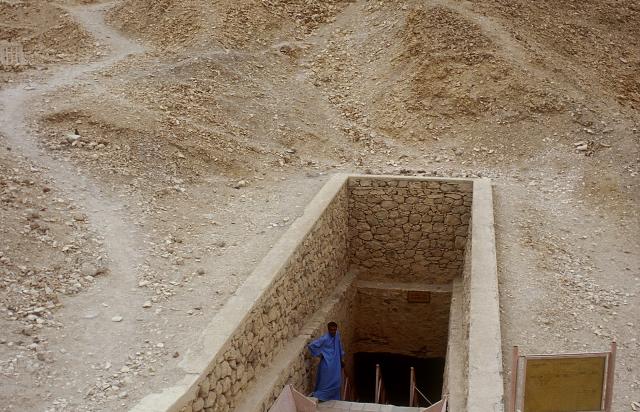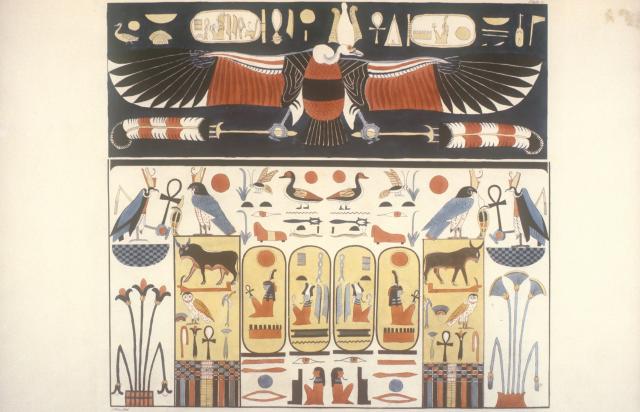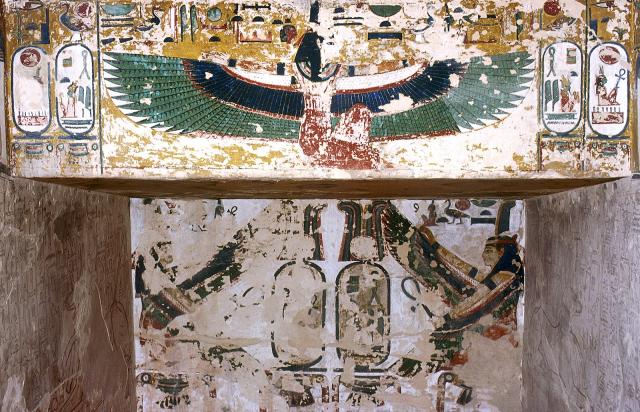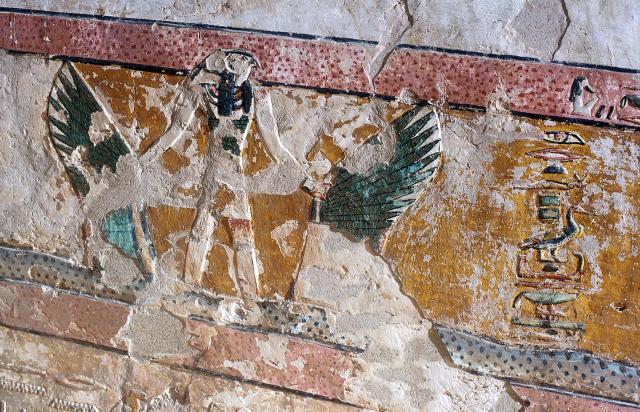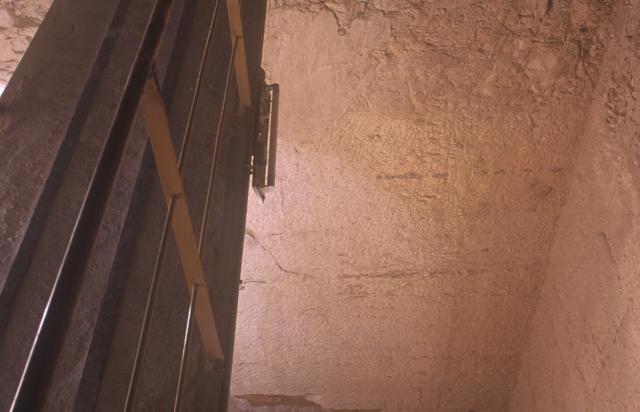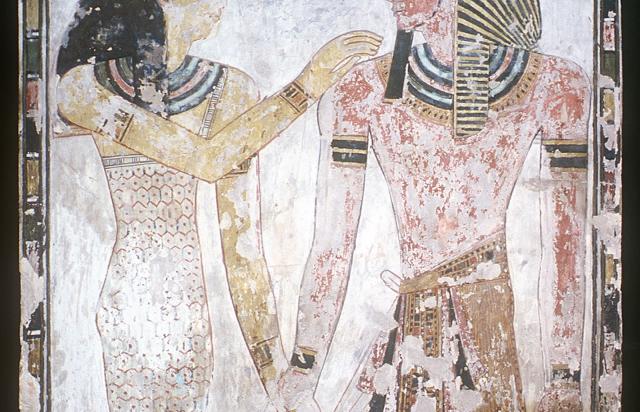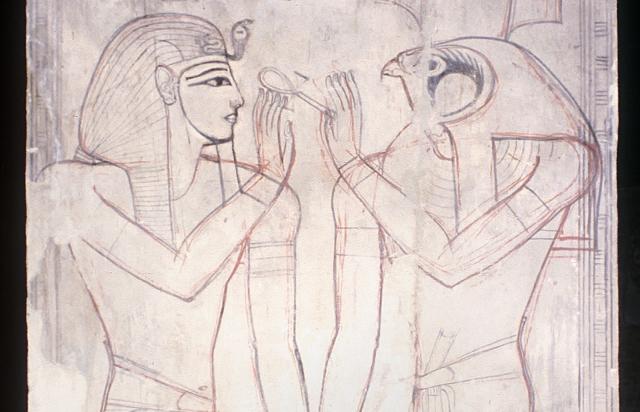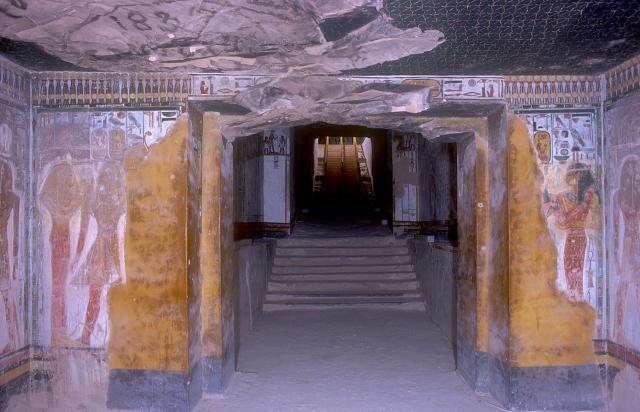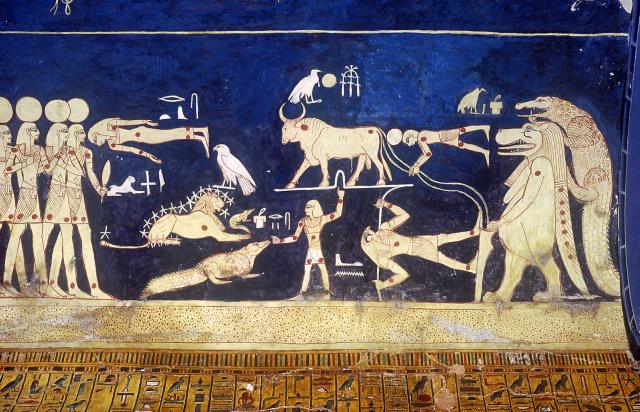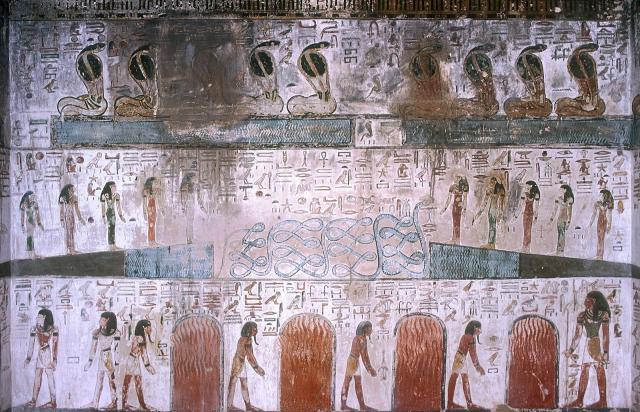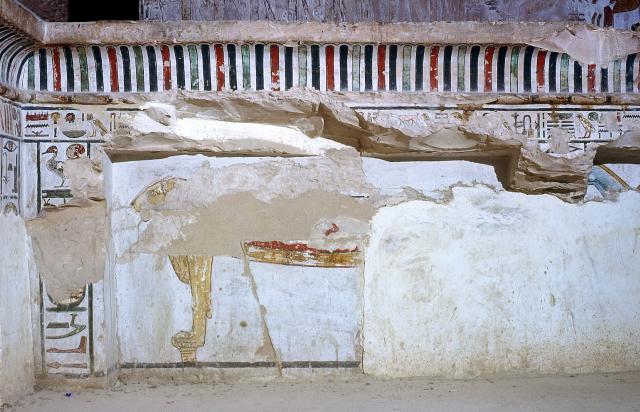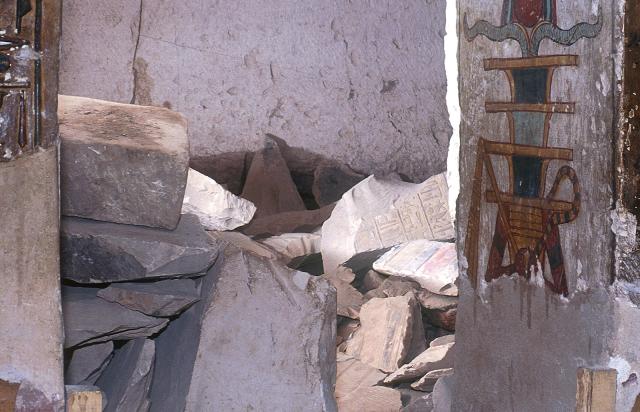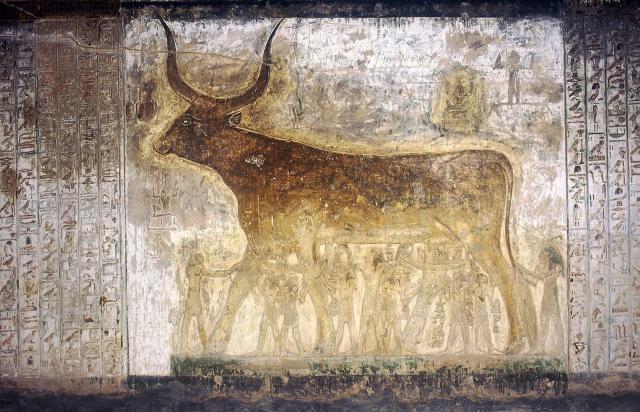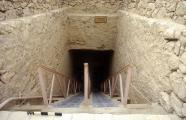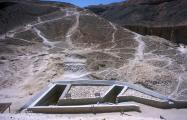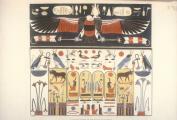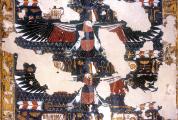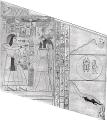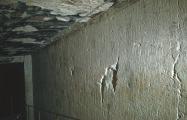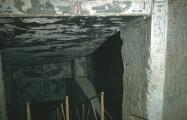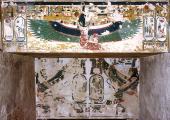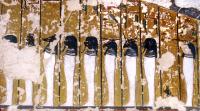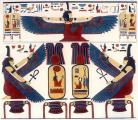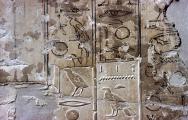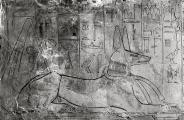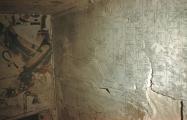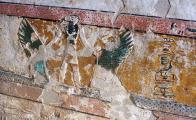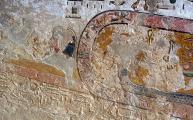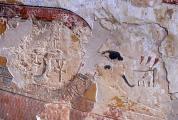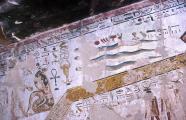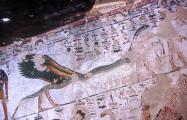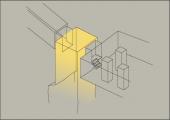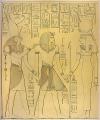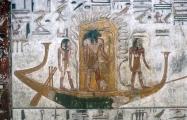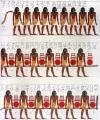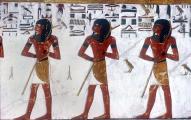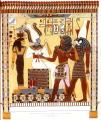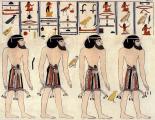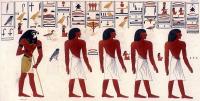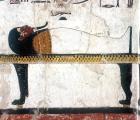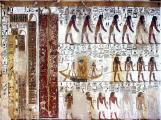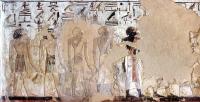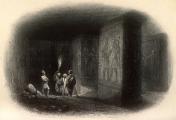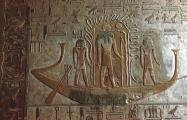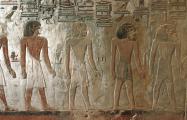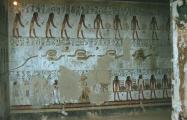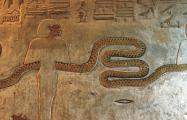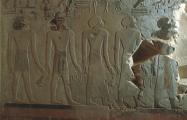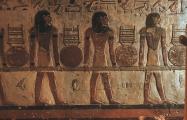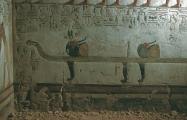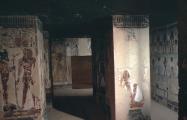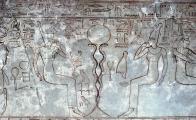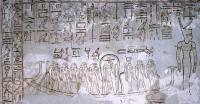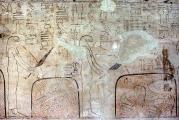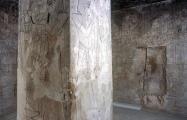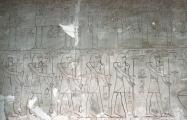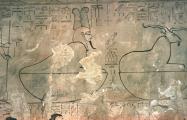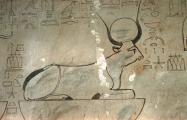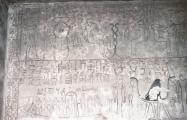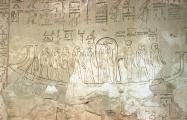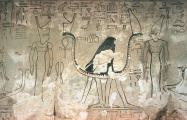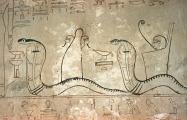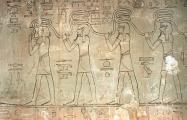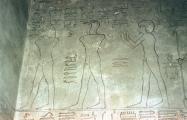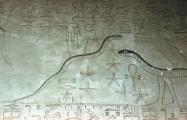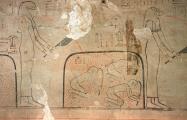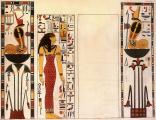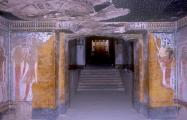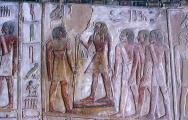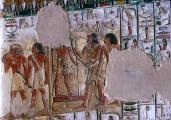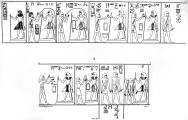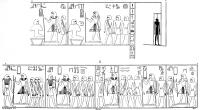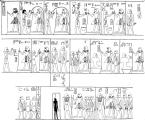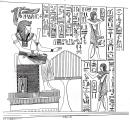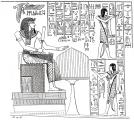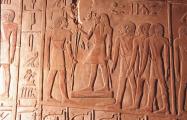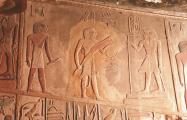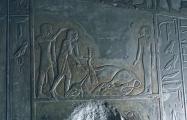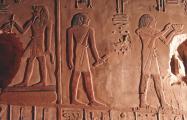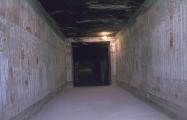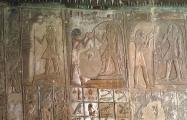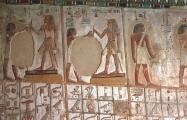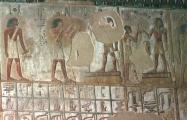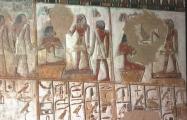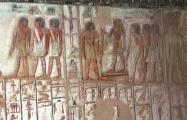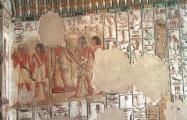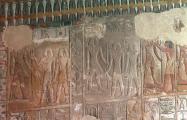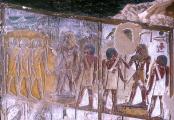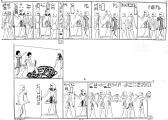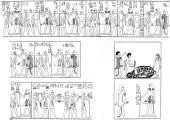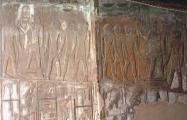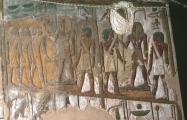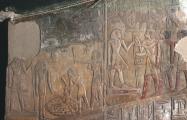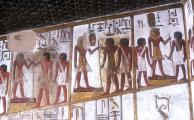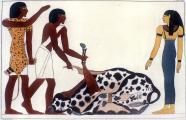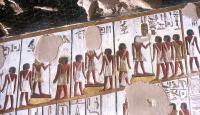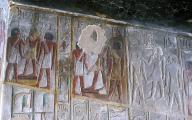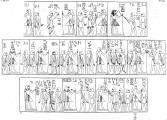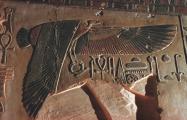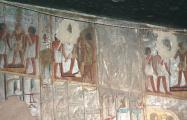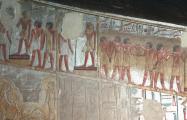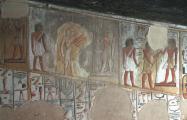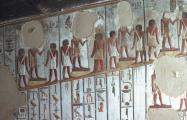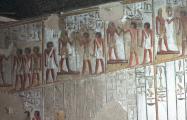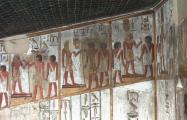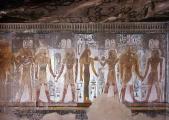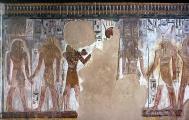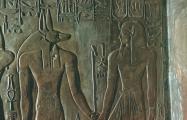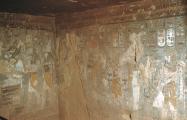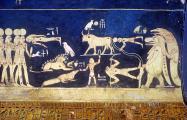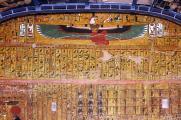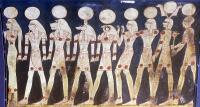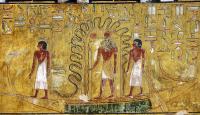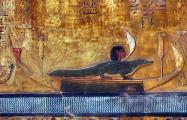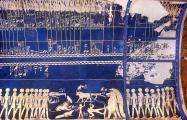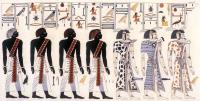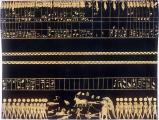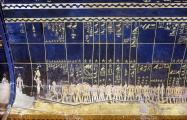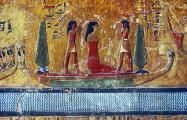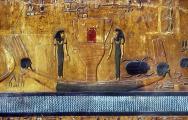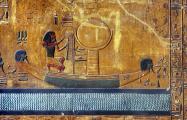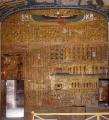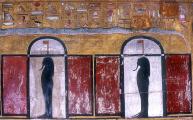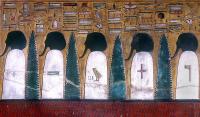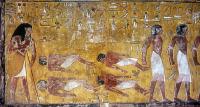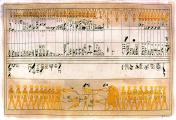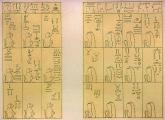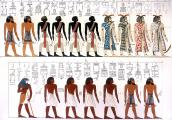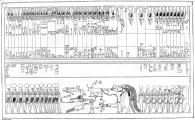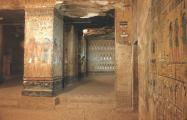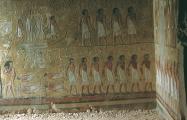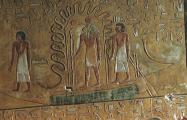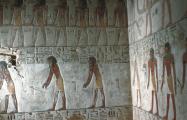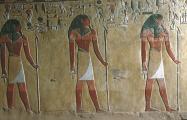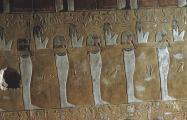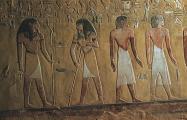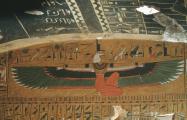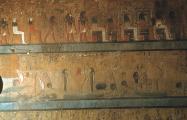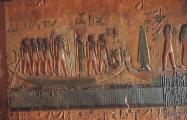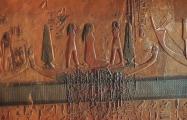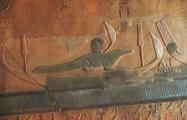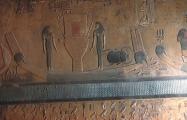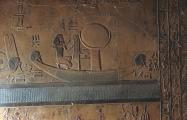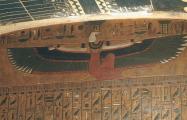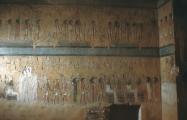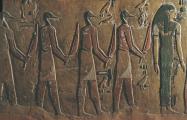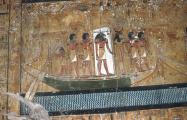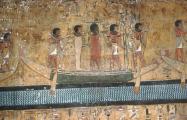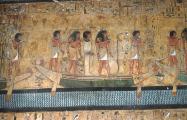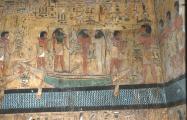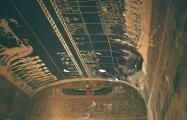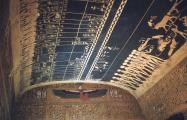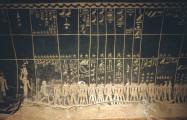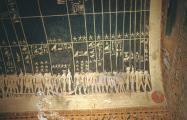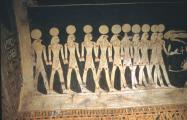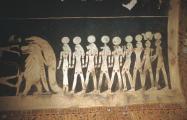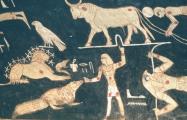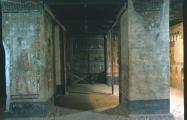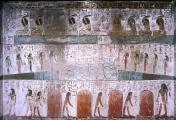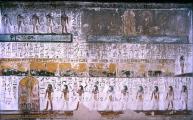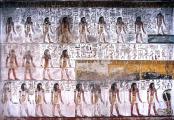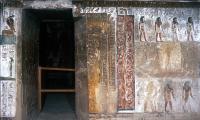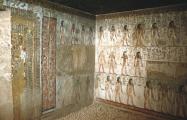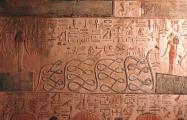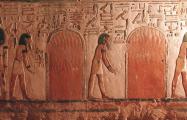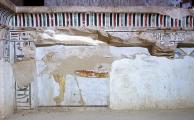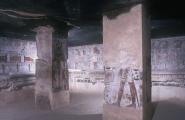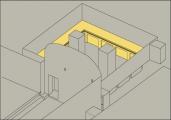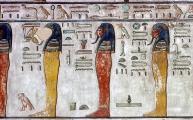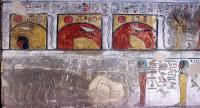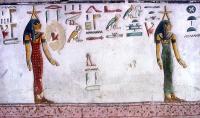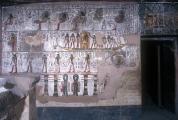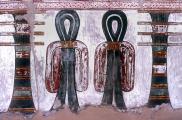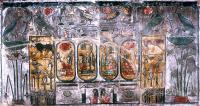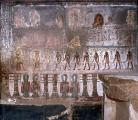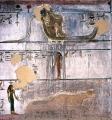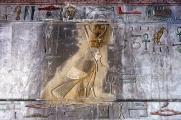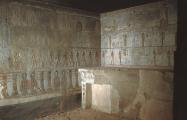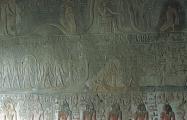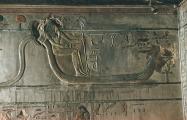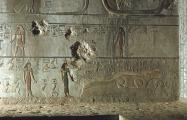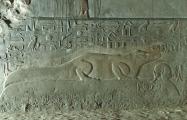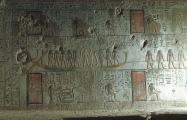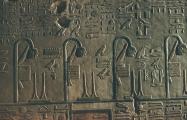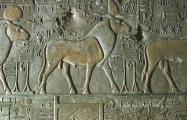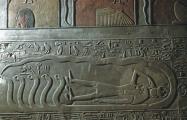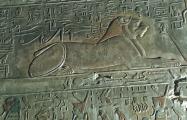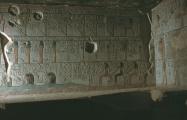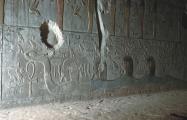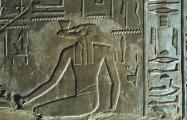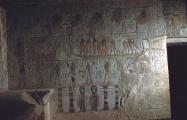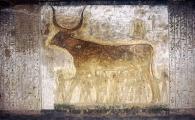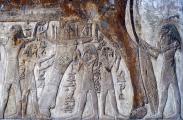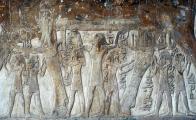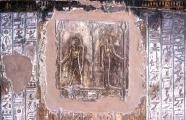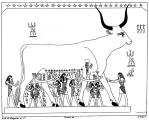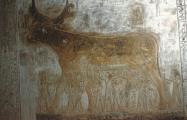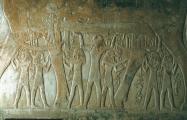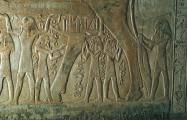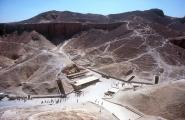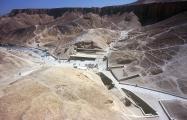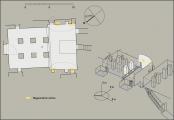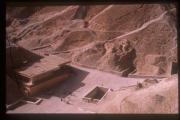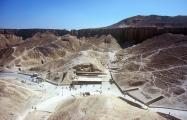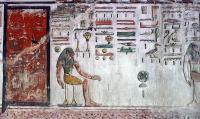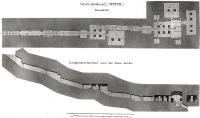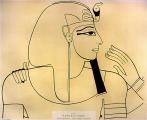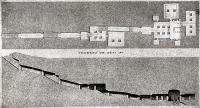KV 17
Sety I
Entryway A
See entire tombModern steps and a landing with benches precede twenty-six ancient steps leading to the beginning of corridor B. Modern retaining walls surround the entryway.
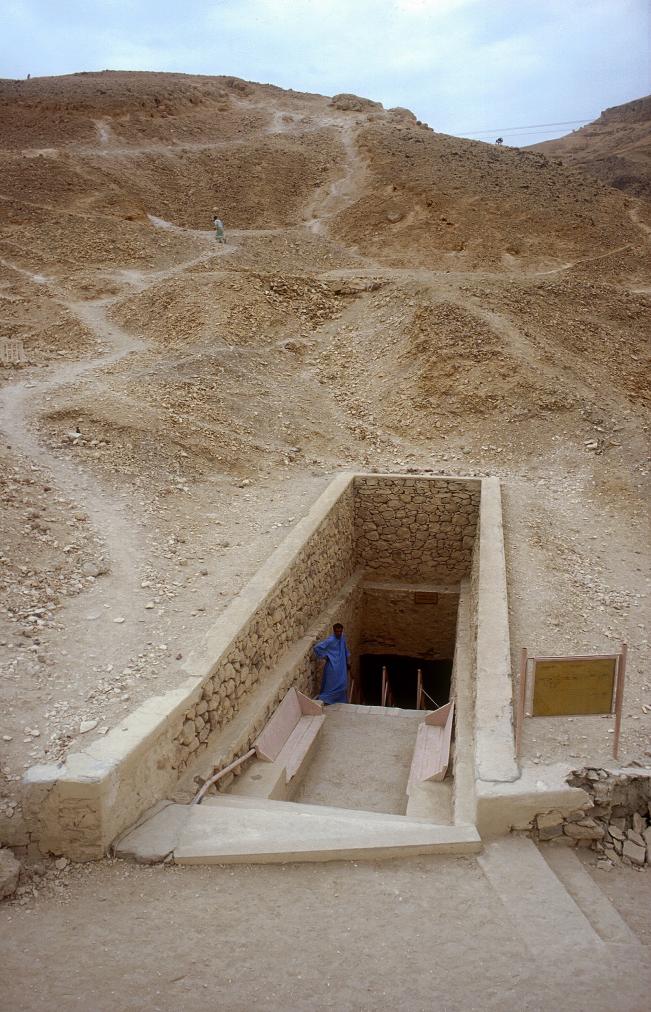
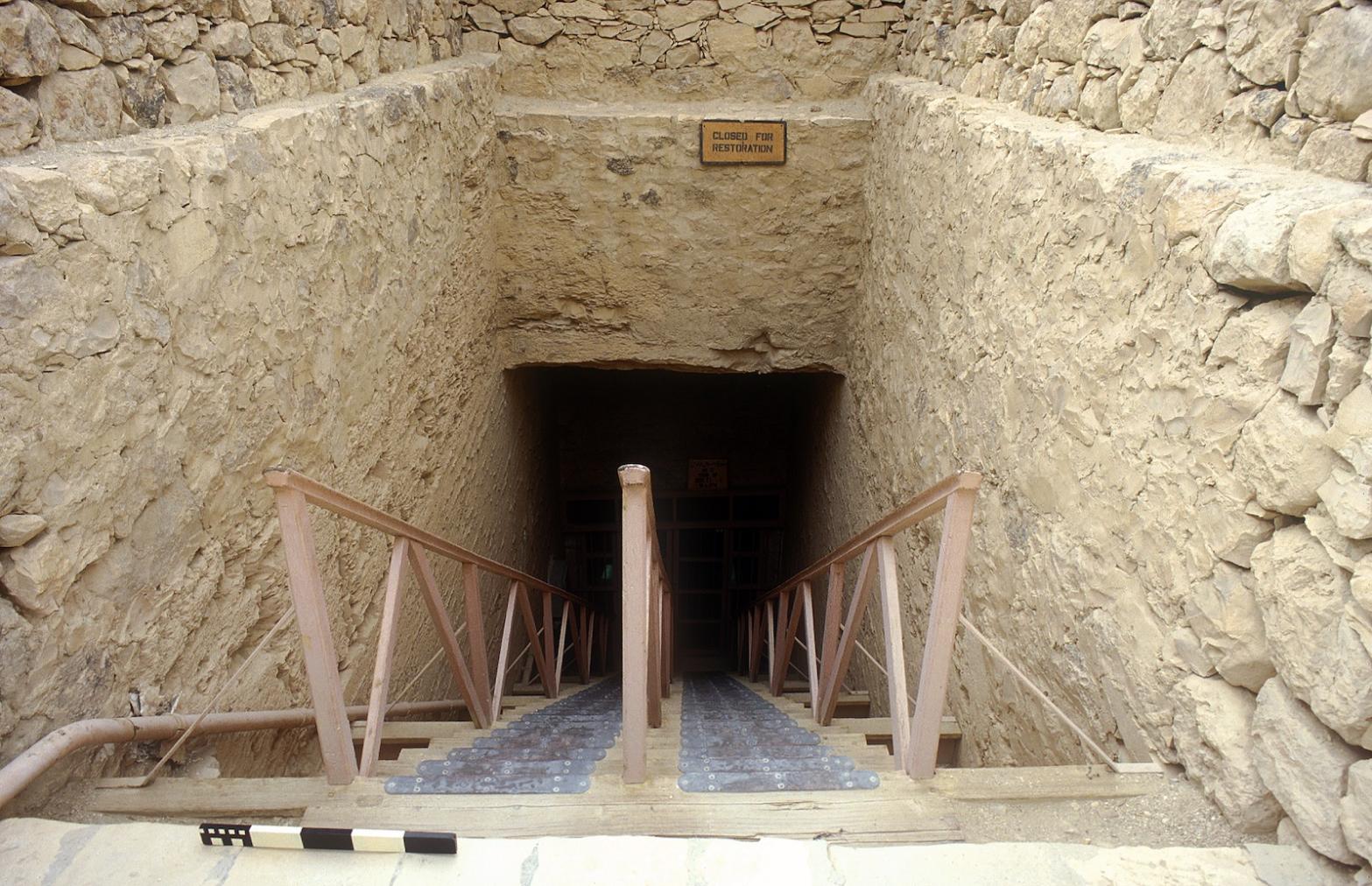
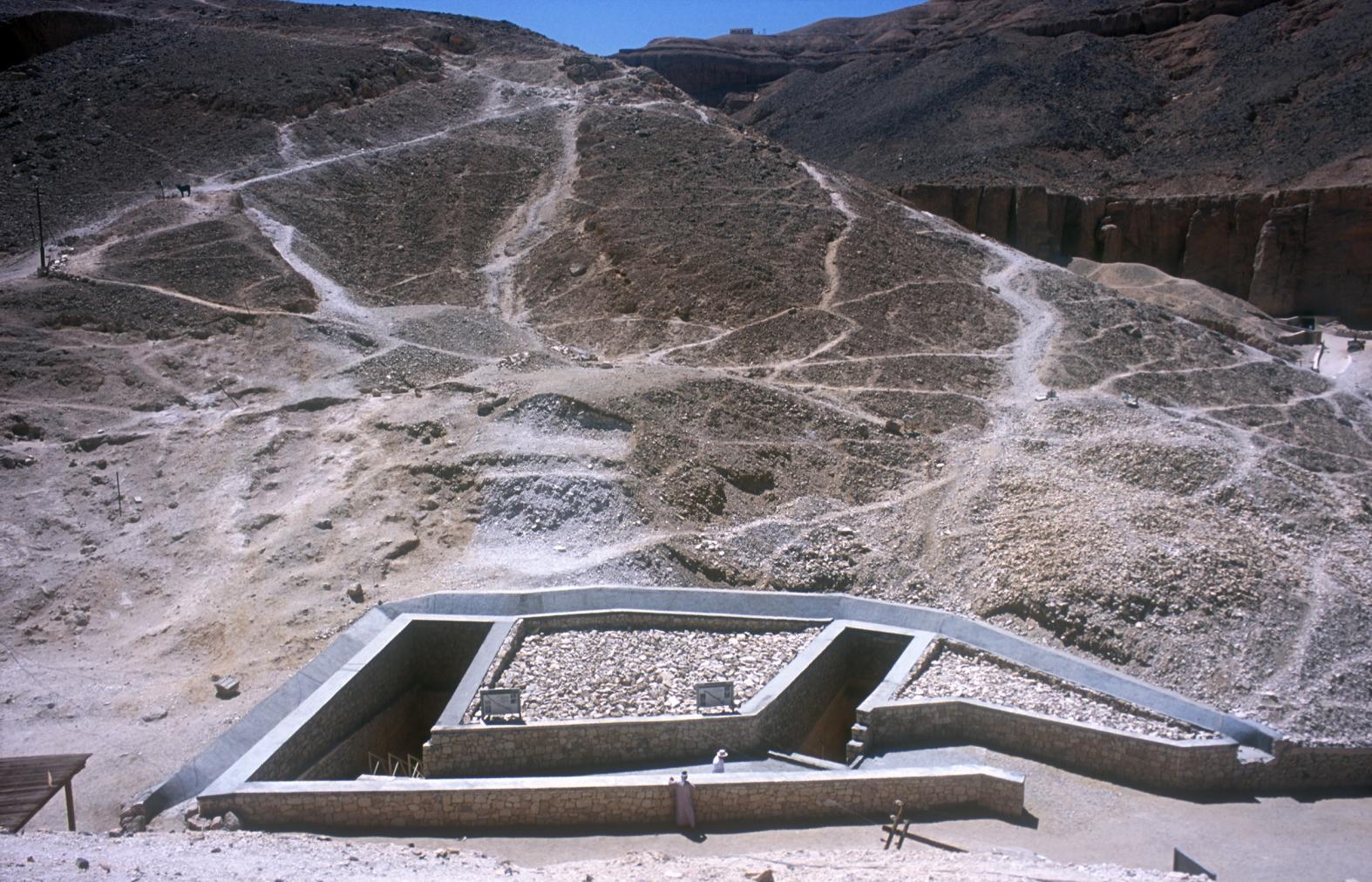
Gate B
See entire tombThere is a column of text on the left (southeast) return giving the king's names and epithets.
Porter and Moss designation:
Corridor B
See entire tombThis sloping corridor is decorated in raised relief. The left (southeast) wall shows Sety I before Ra-Horakhty, followed by the opening scene of the Litany of Ra and the opening text of this composition. The opening scene of the Litany appears for the first time in a royal tomb. The right (northwest) wall continues the text of the Litany of Ra and the ceiling is decorated with vultures, every other one cobra-headed. These alternate with texts giving the names of Sety I, and columns of texts run along the edges of the ceiling. A pair of holes for a wooden beam were cut in the walls toward the rear (southwest) end of this corridor. The right (northwest) hole was filled with plaster over which the columns of text were carved.
Porter and Moss designation:
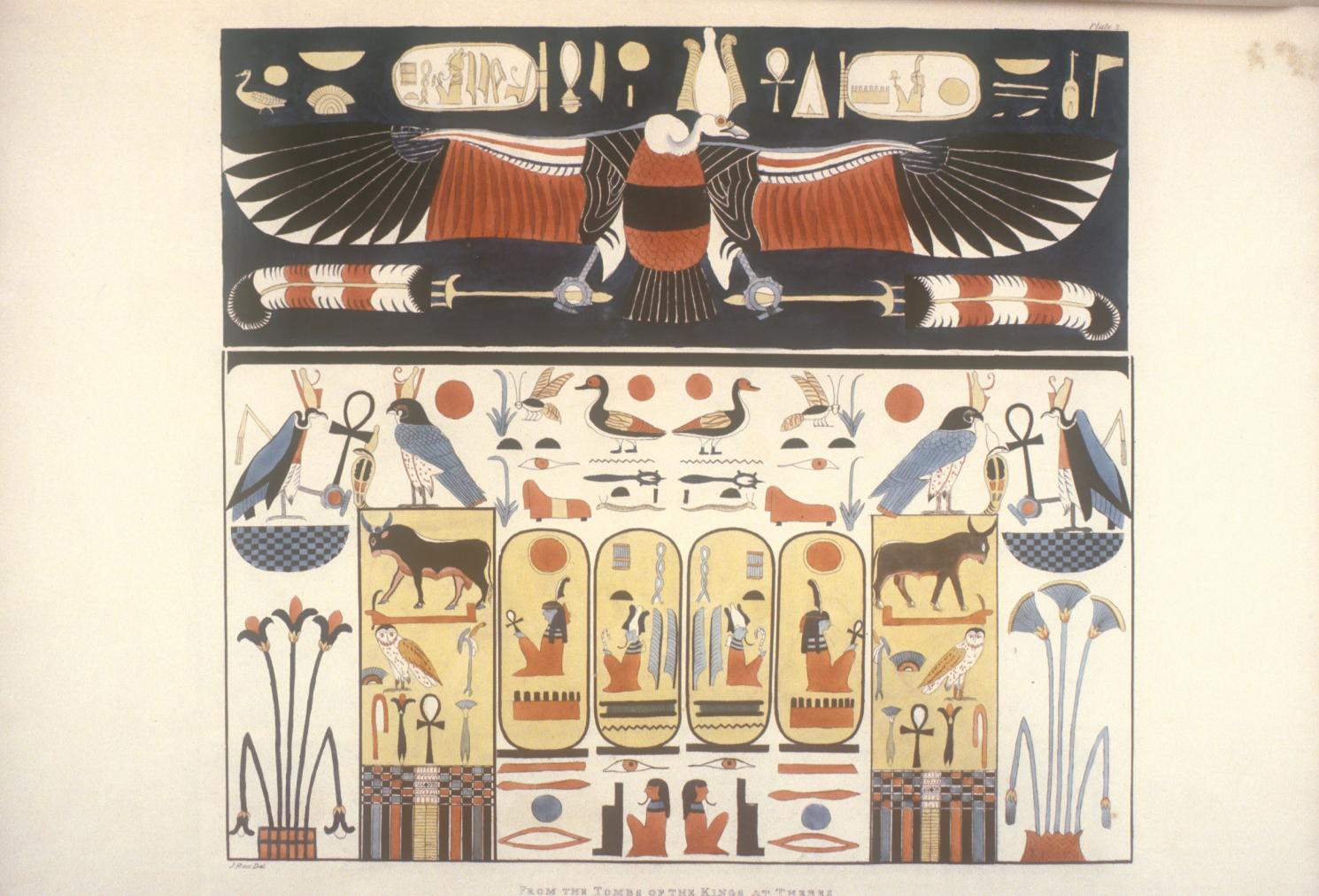
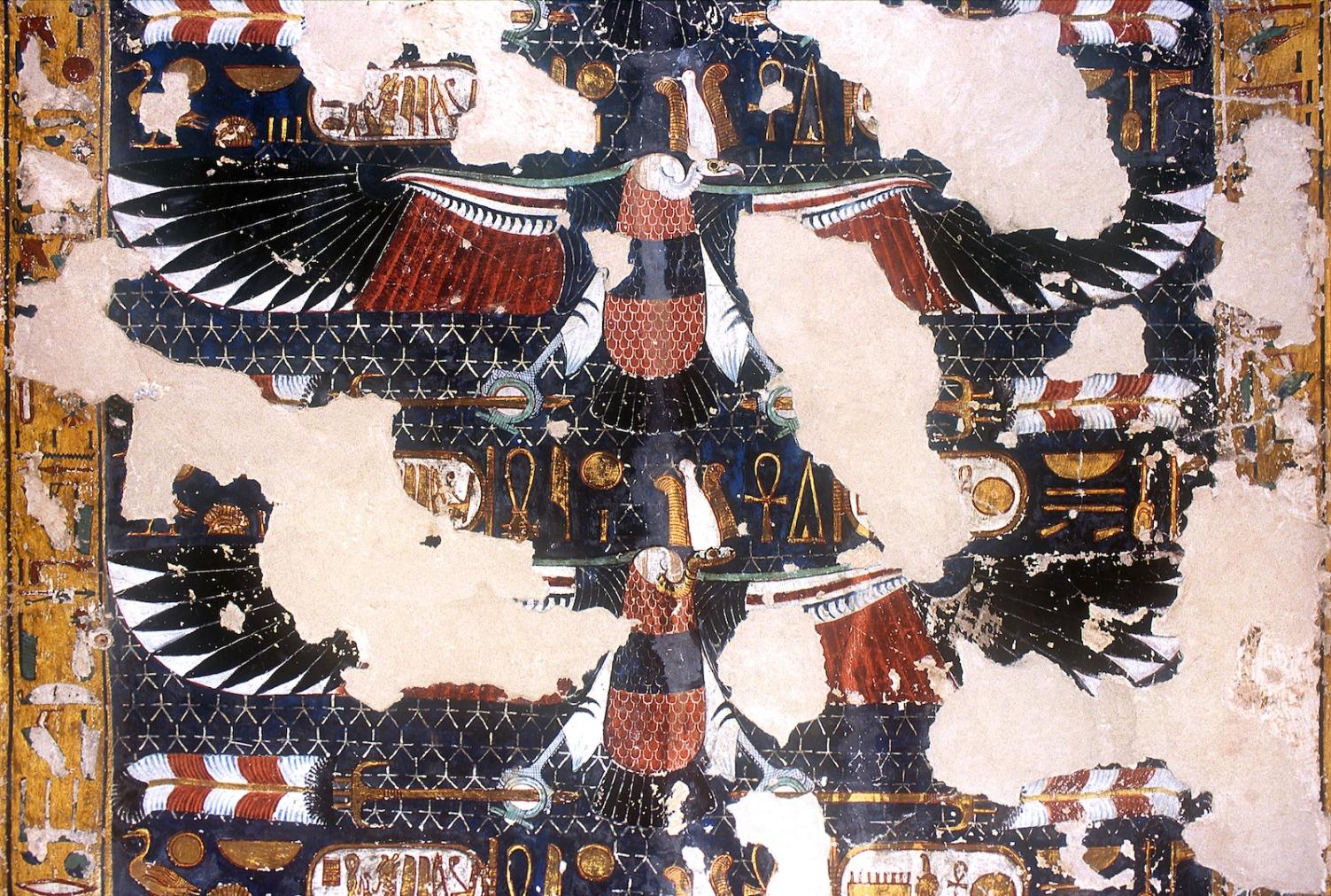
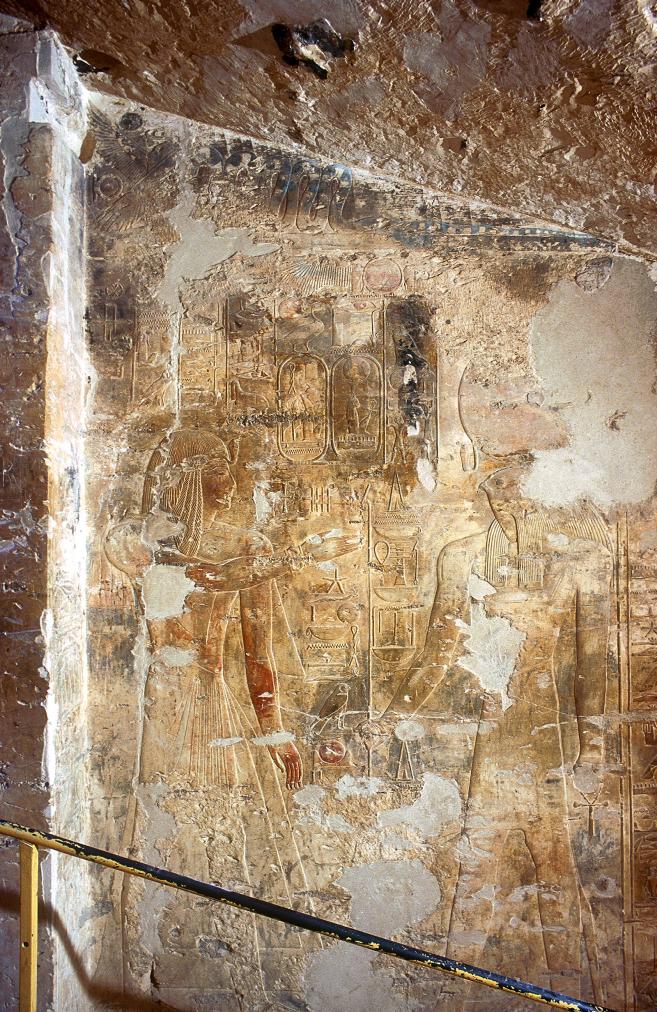
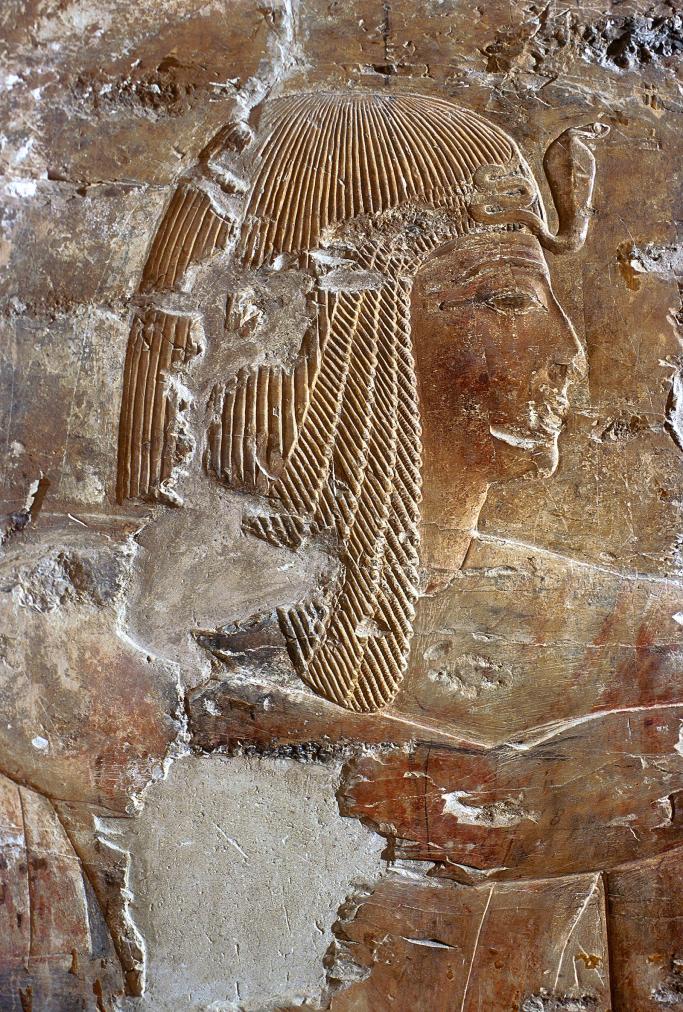
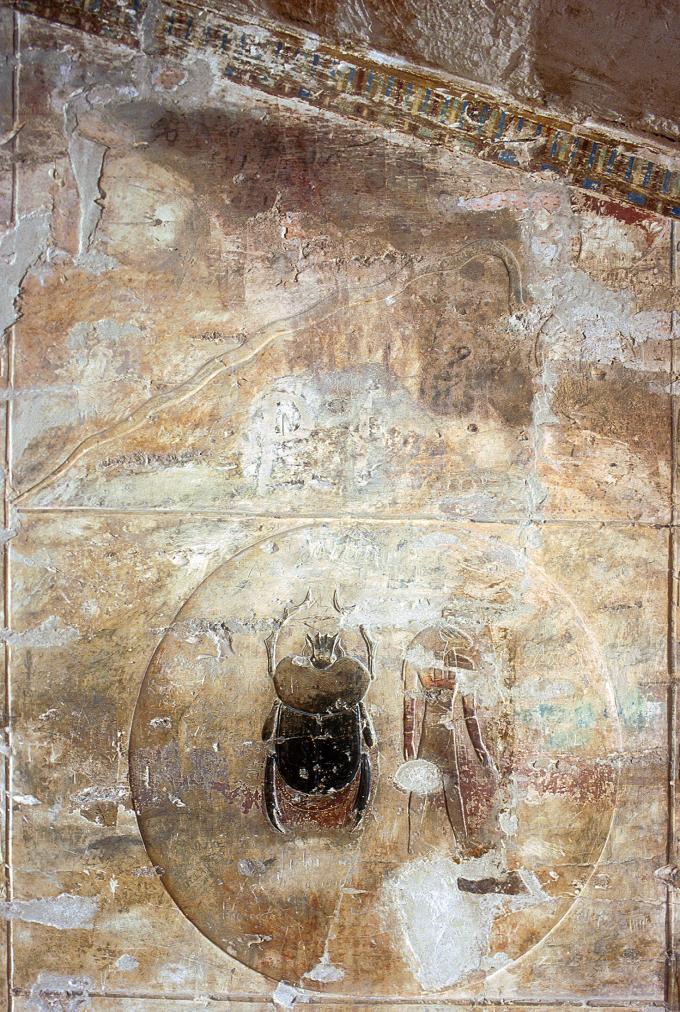
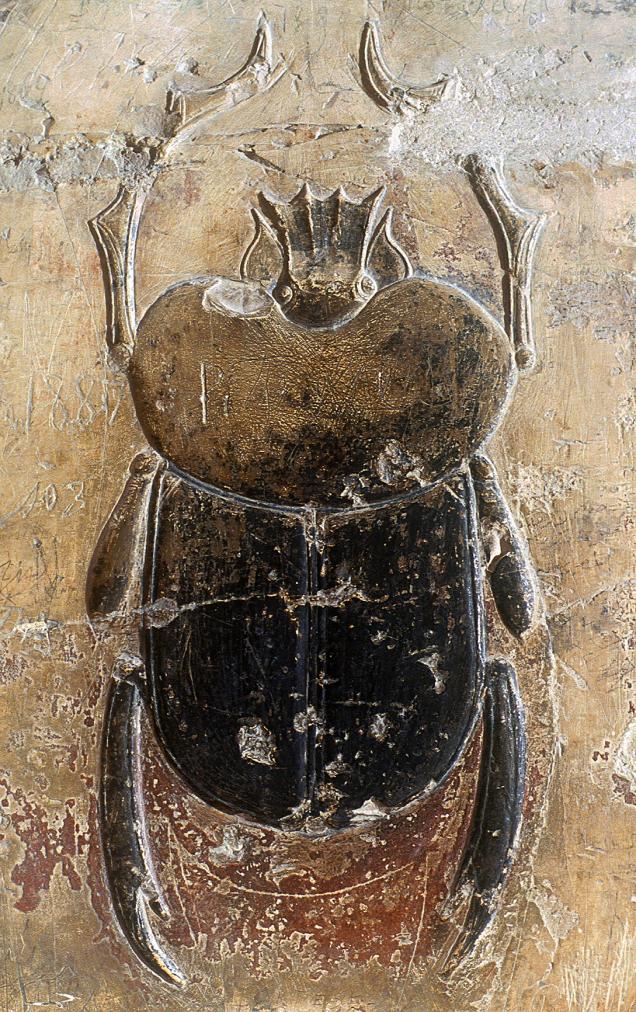
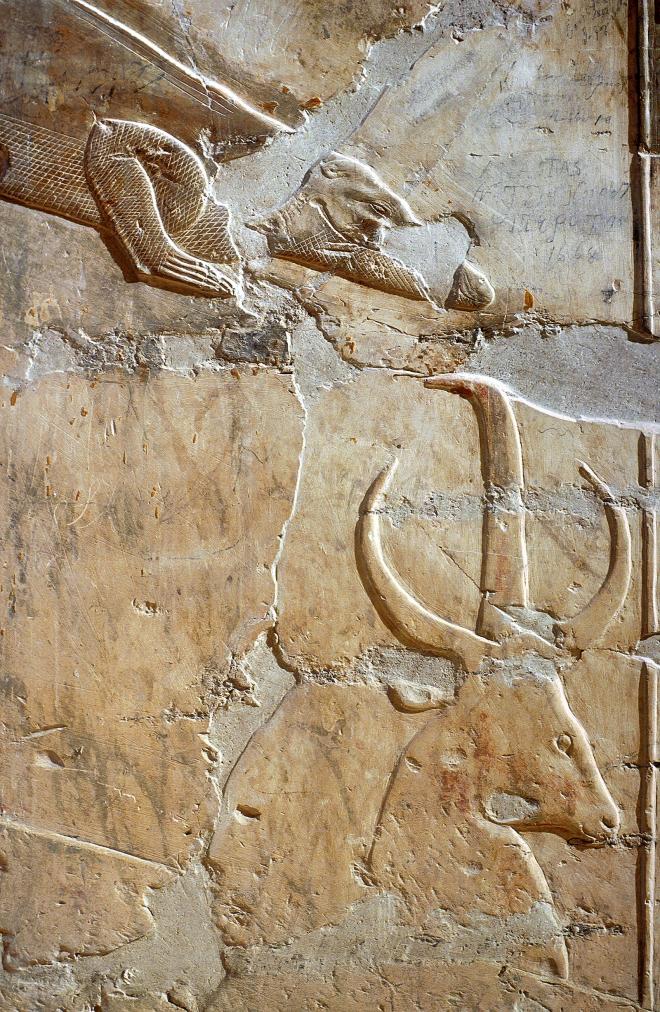
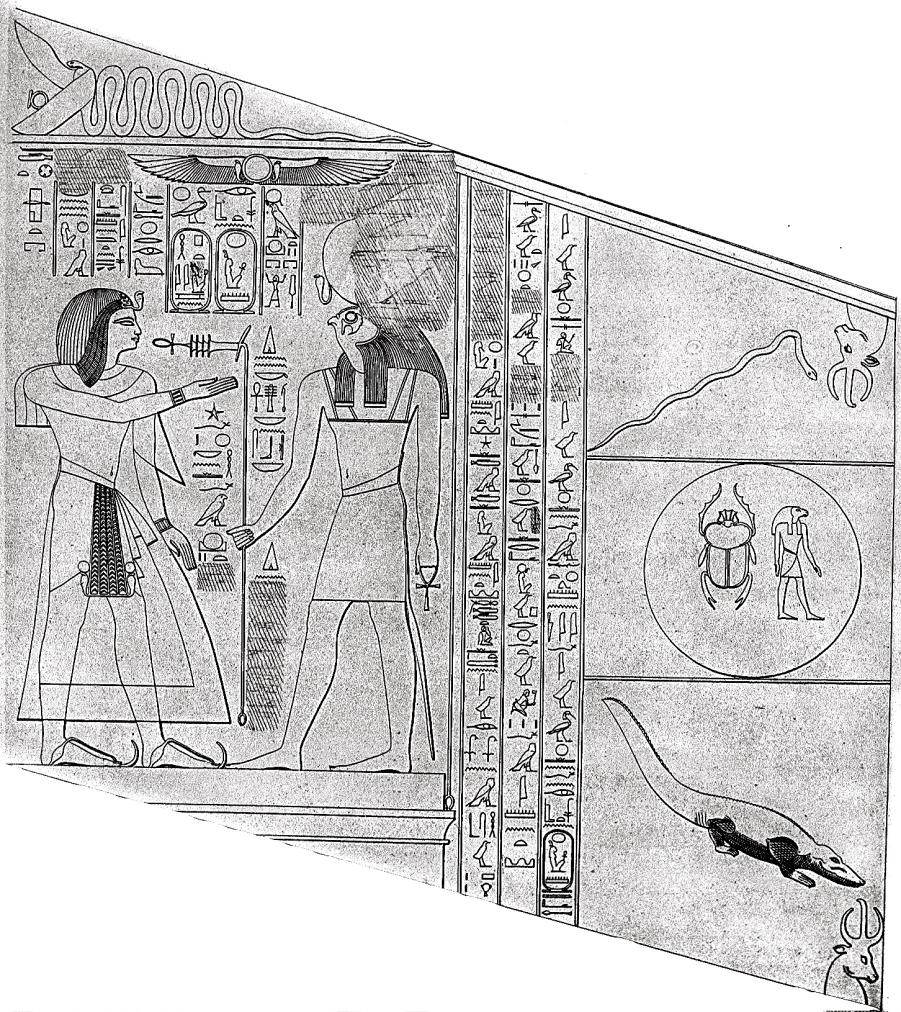
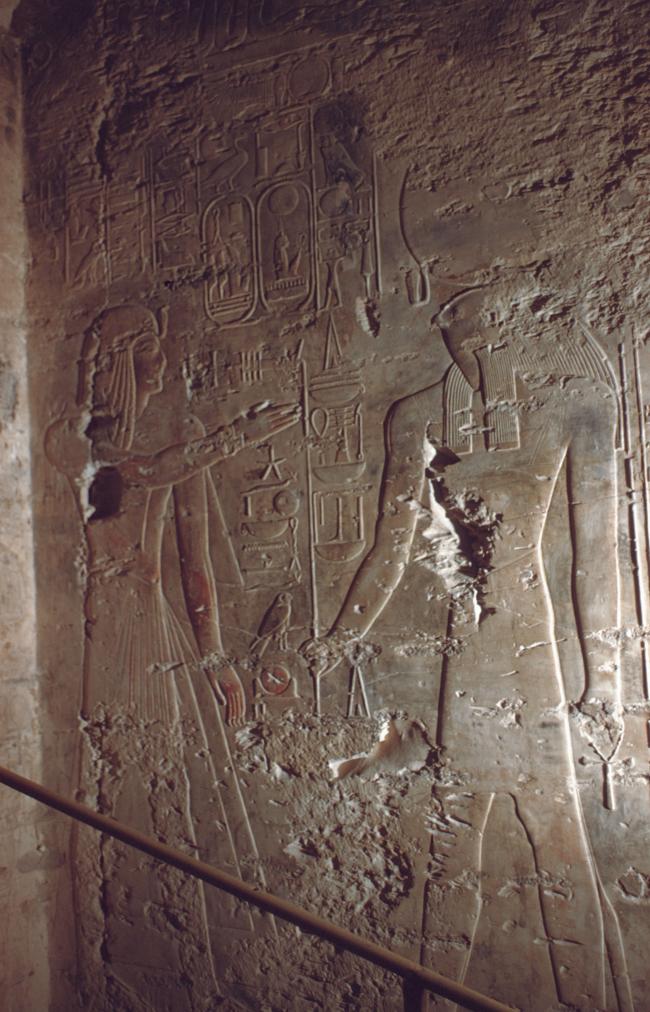
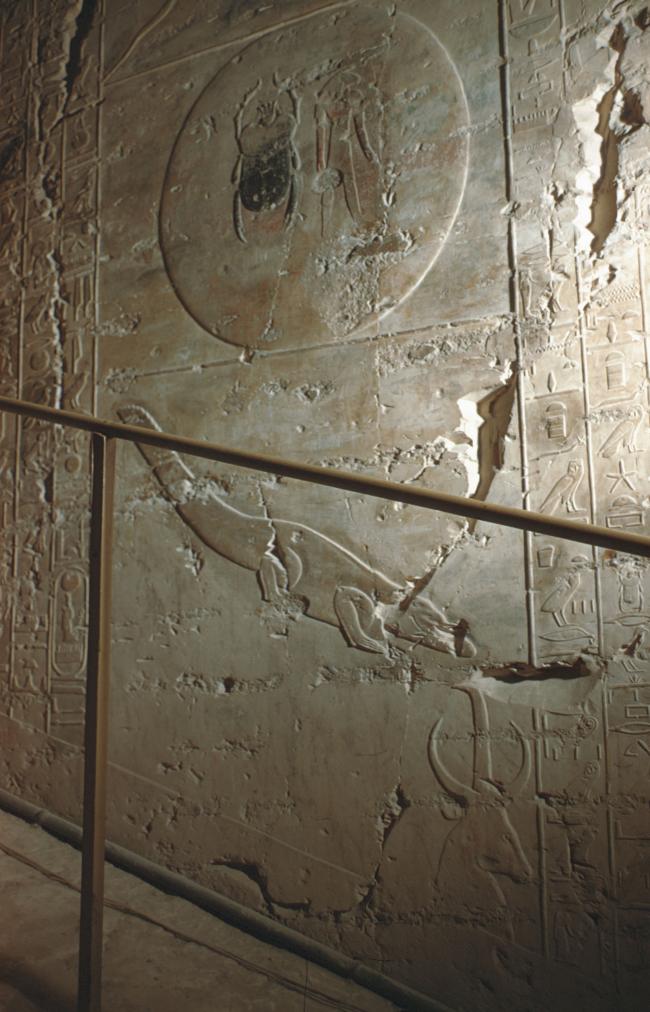
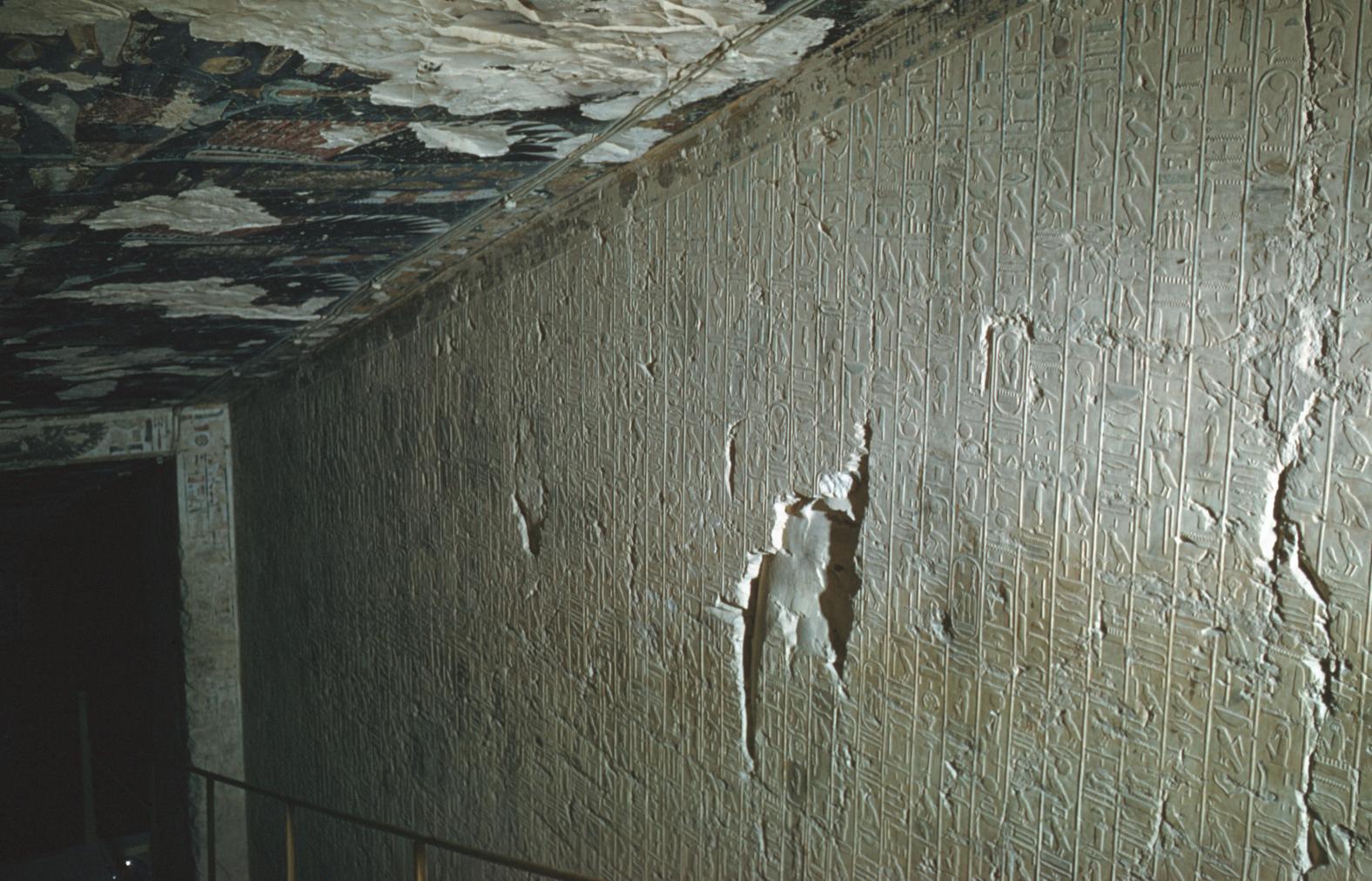
Gate C
See entire tombThe outer lintel is decorated with a winged sun disk. The reveals and thicknesses are covered with texts of the Litany of Ra.
Porter and Moss designation:
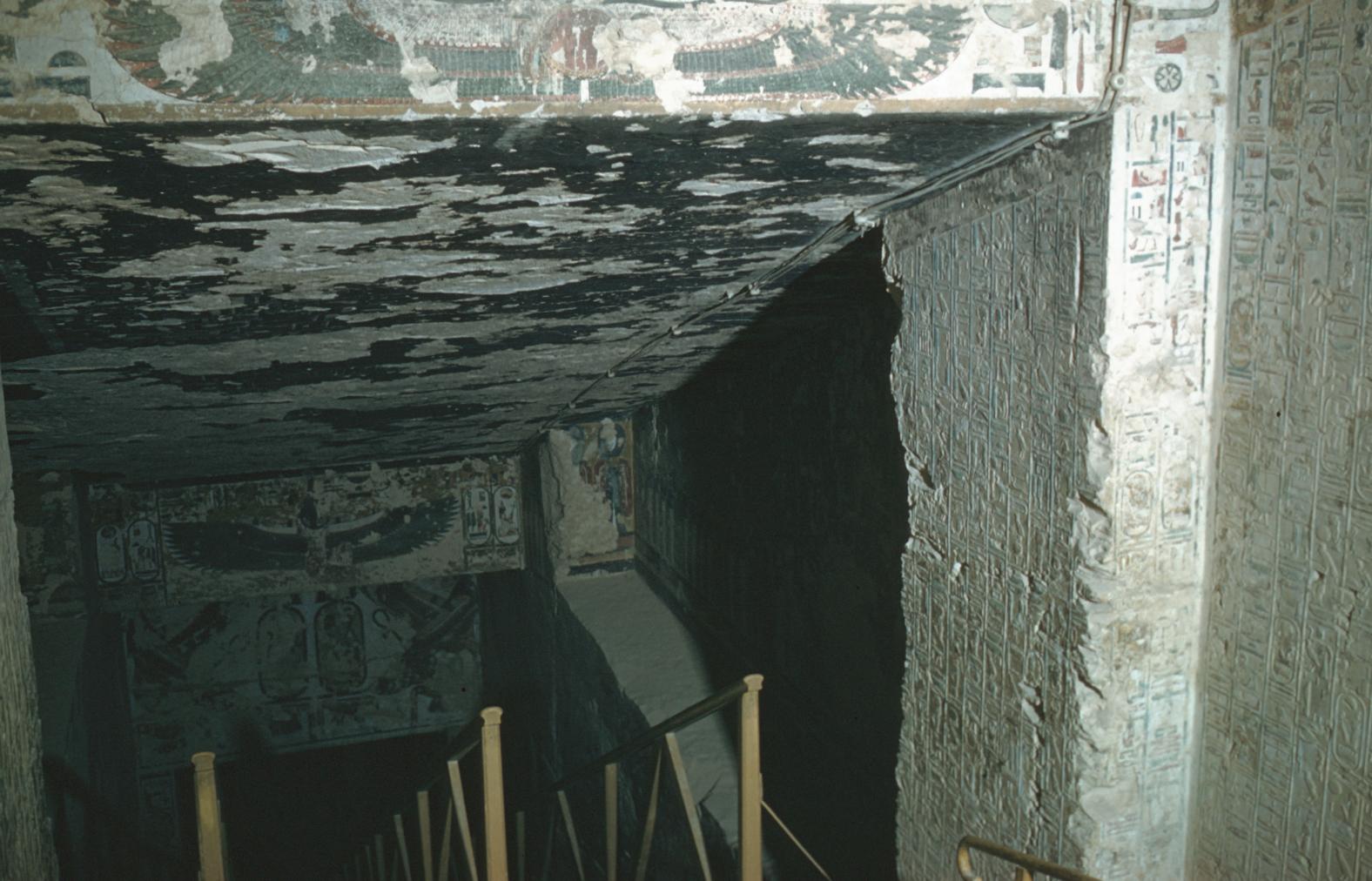
Stairwell C
See entire tombThe steps descend at a steep thirty degree angle. Trapezoidal recesses are cut at the tops of the walls. Both walls at the top of the stairwell are decorated with the various manifestations of Ra from the Litany of Ra, both in the recesses and for almost the full length of the stairwell. Almost identical versions of the third hour of the Imydwat cover the left (southeast) and right (northwest) walls for the rest of the corridor, but these were left unfinished with only a part of the text carved in relief and the remainder simply drawn in outline. At the end of this corridor, on both walls is a drawing of Anubis. Under him on the southeast wall is Isis. She is replaced by Nephthys on the northwest wall. The ceiling is painted with a continuation of the Litany of Ra. A kneeling figure of Ma'at with outspread wings, flanked by cartouches of Sety I, decorated the vertical face of the overhang near the rear of this stairwell's ceiling.
Porter and Moss designation:
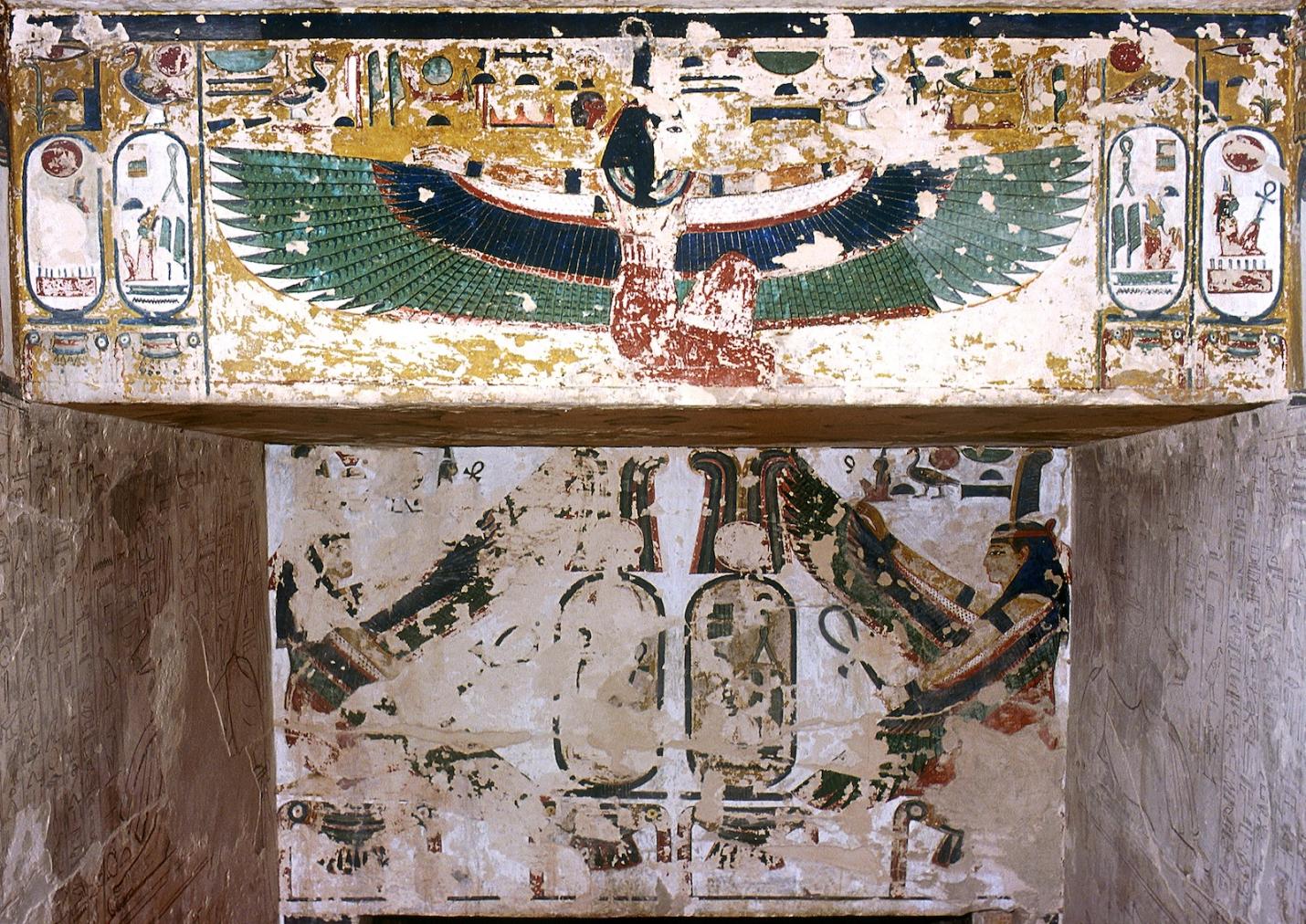
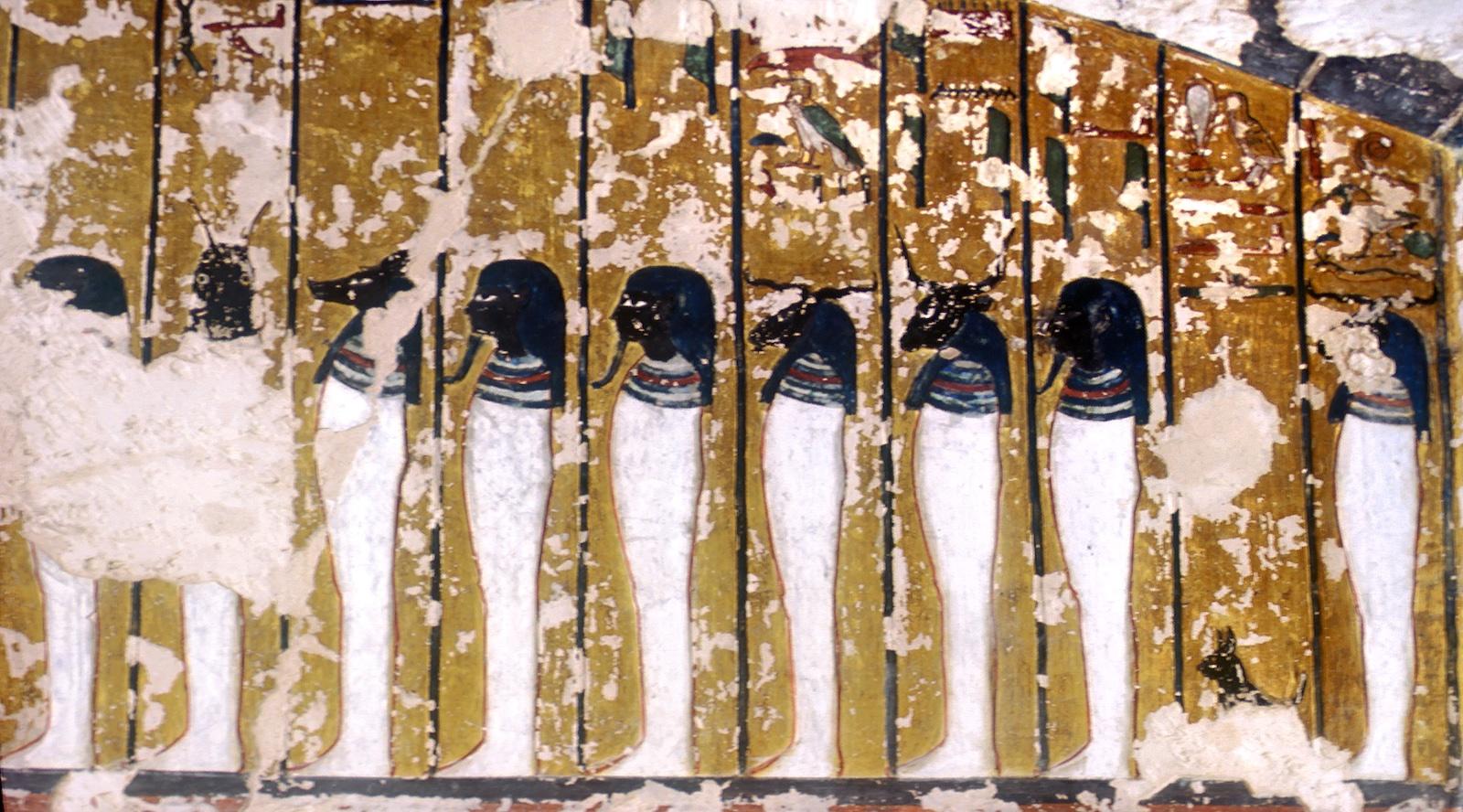
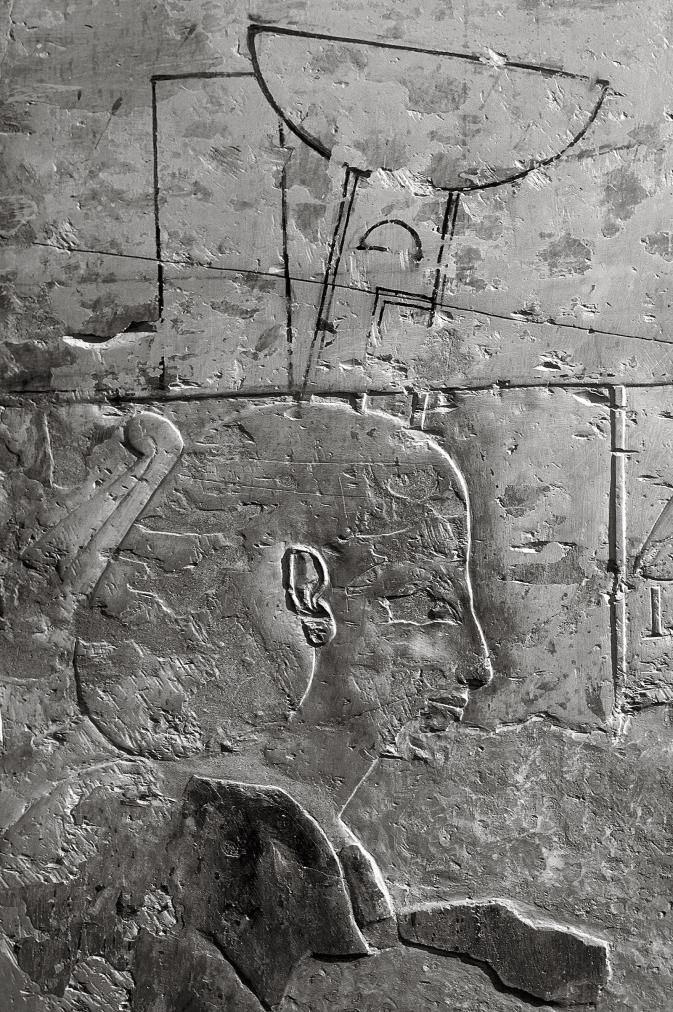
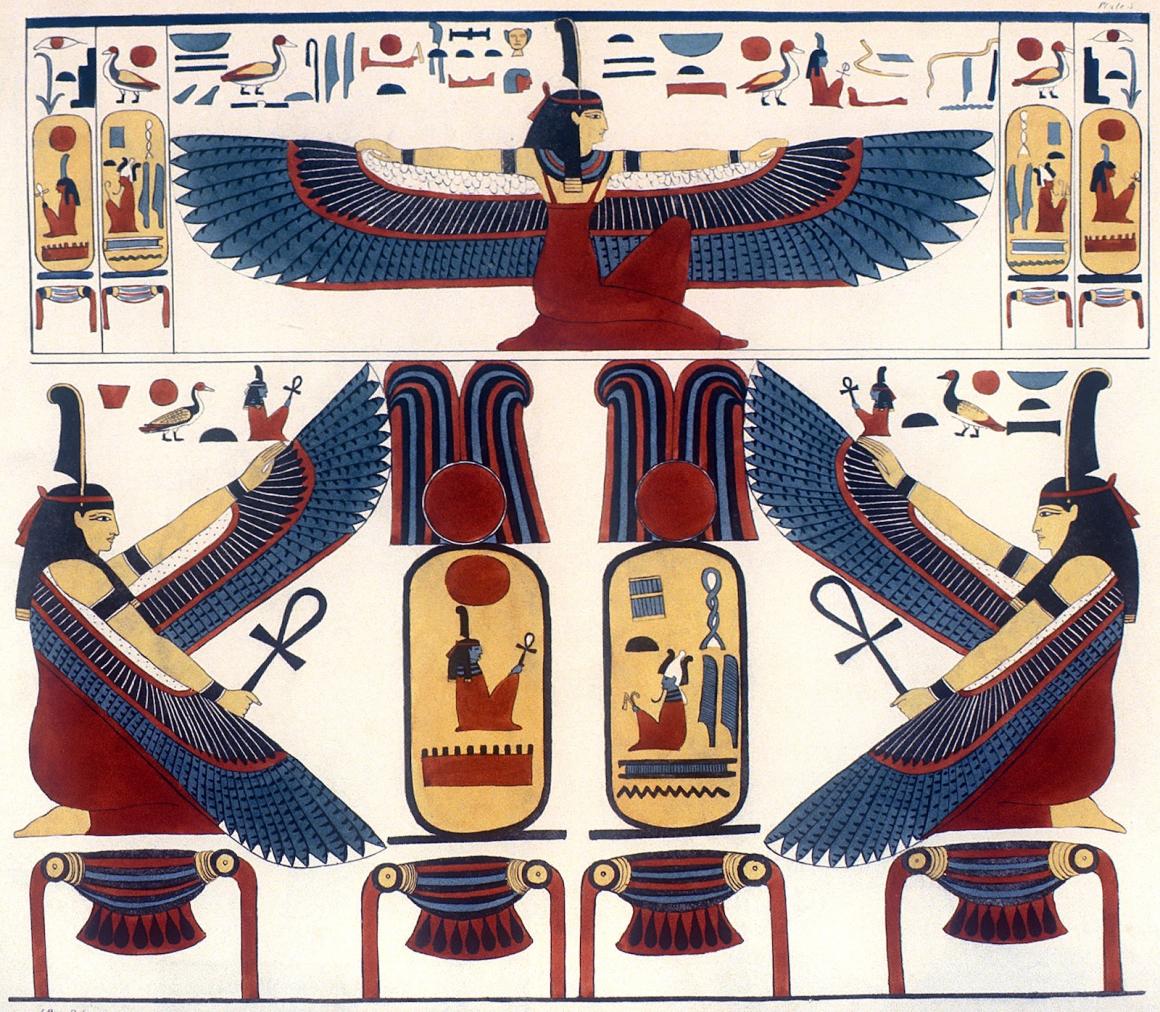
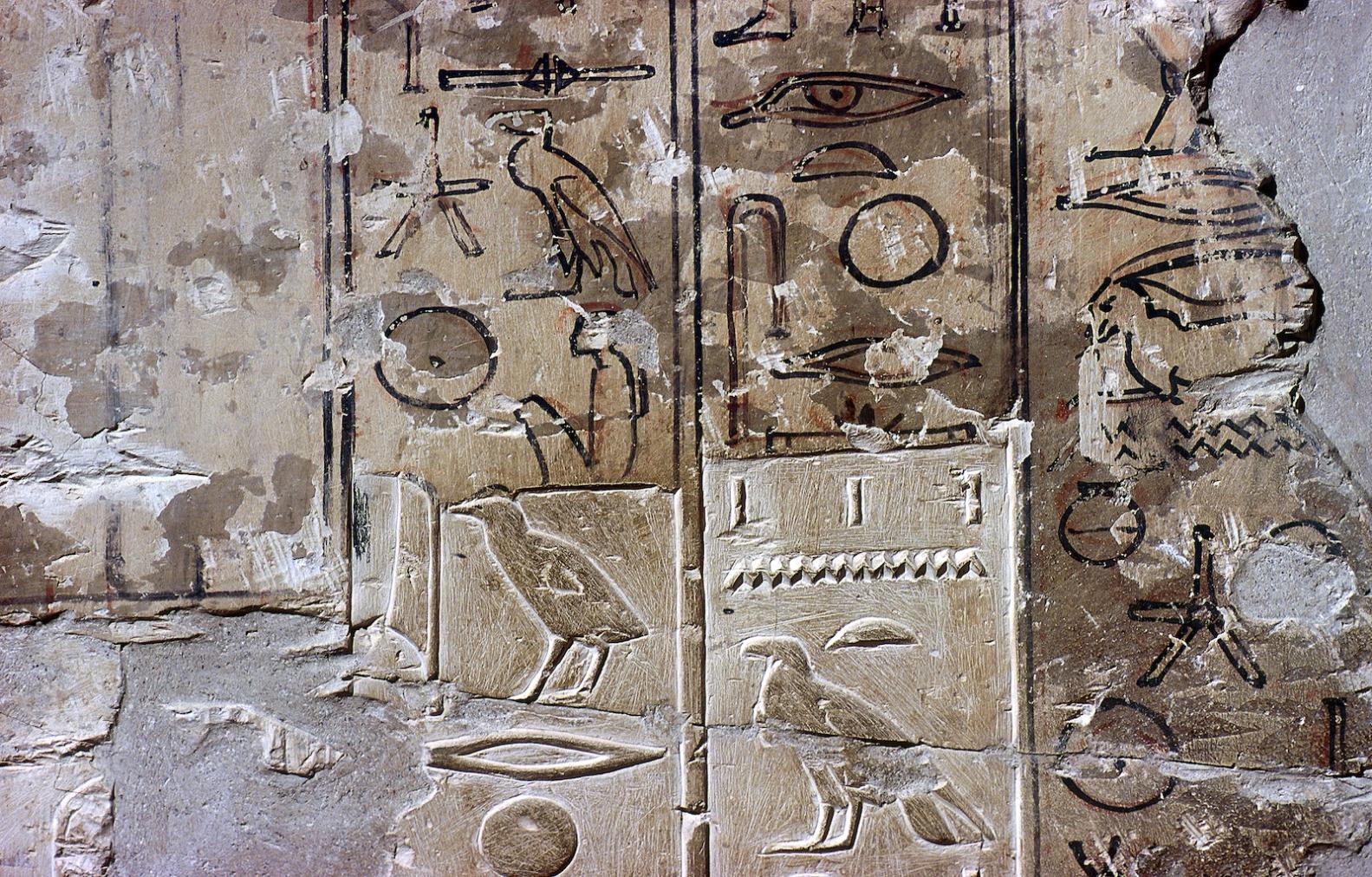
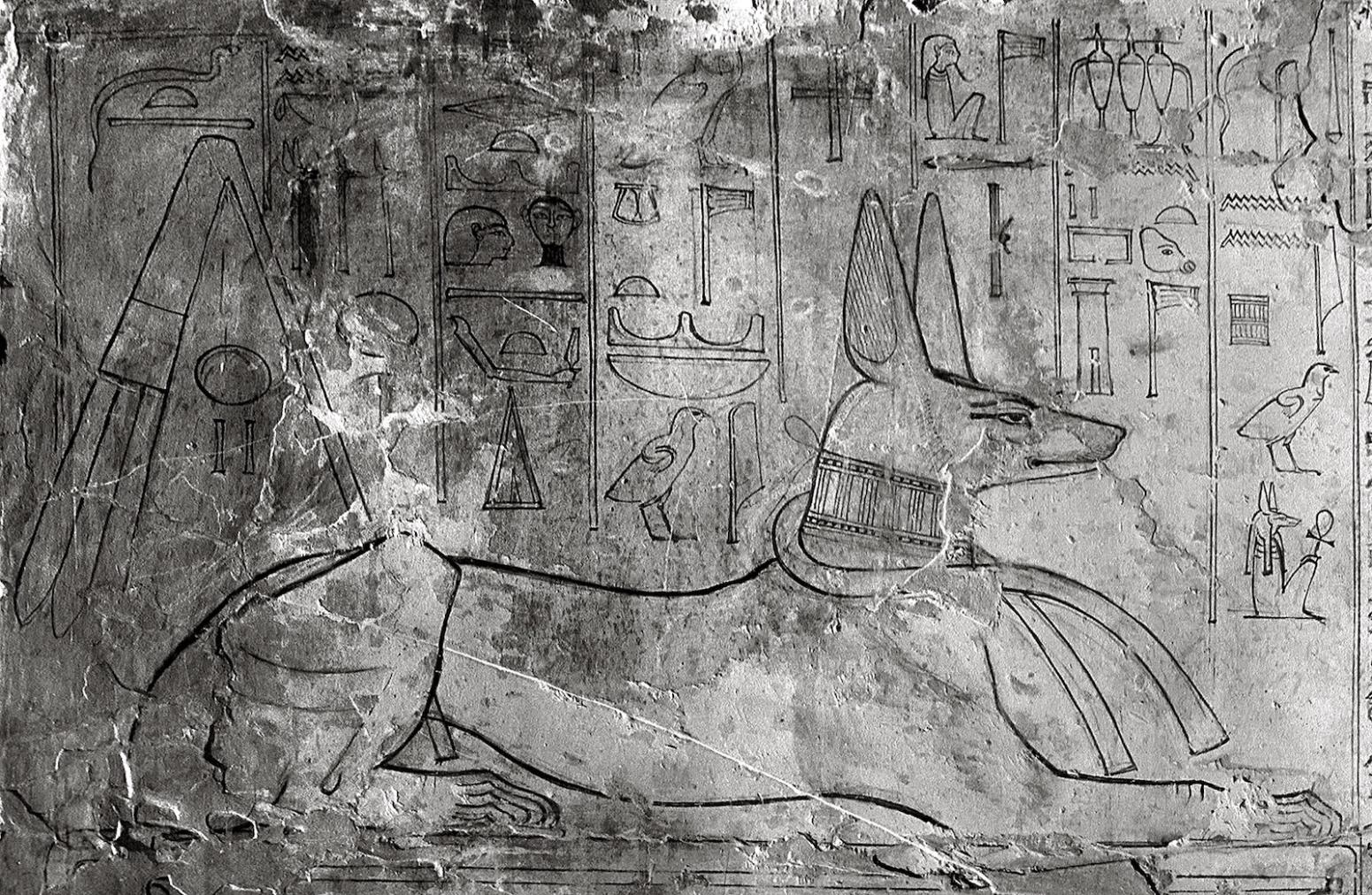
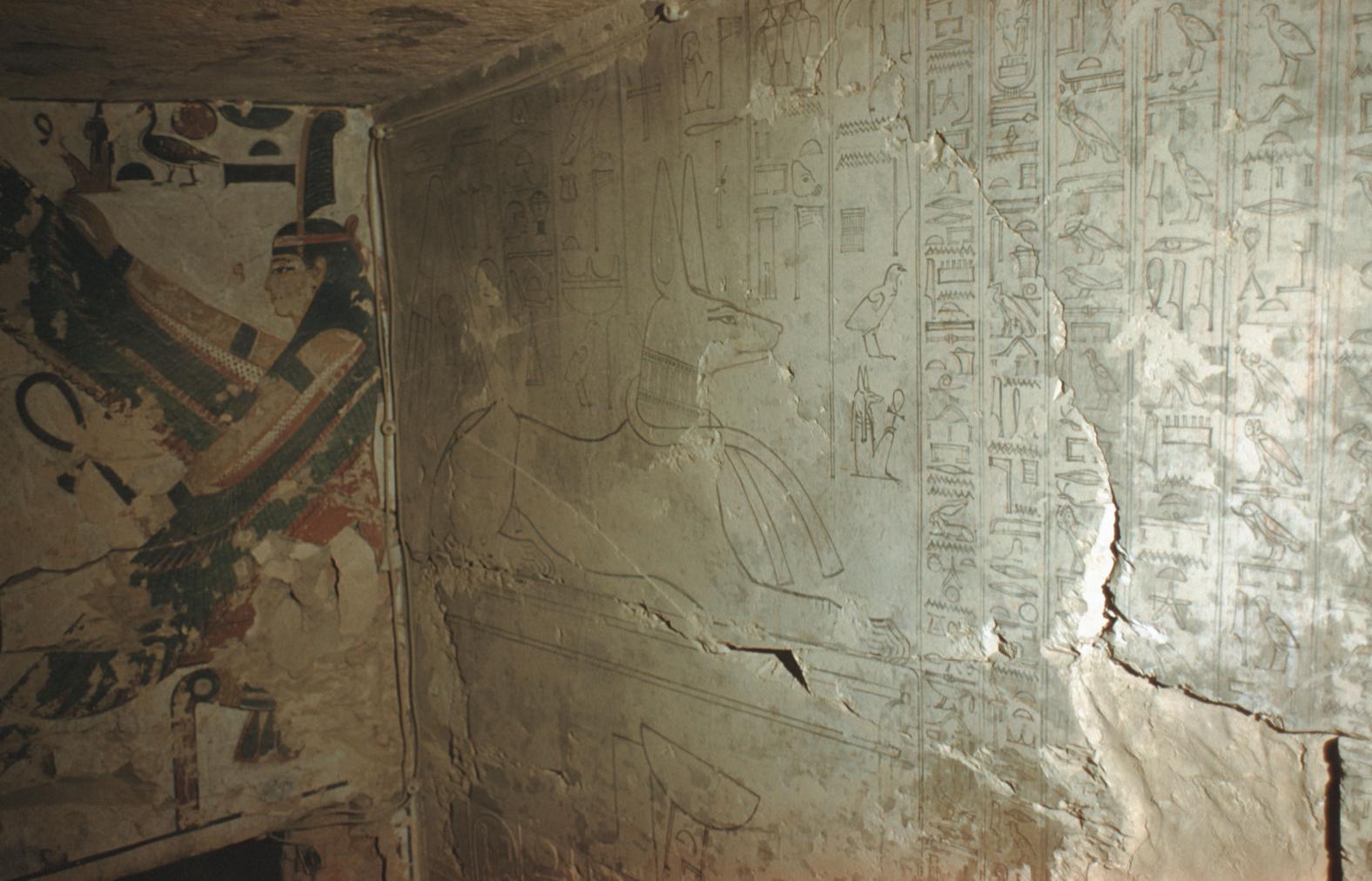
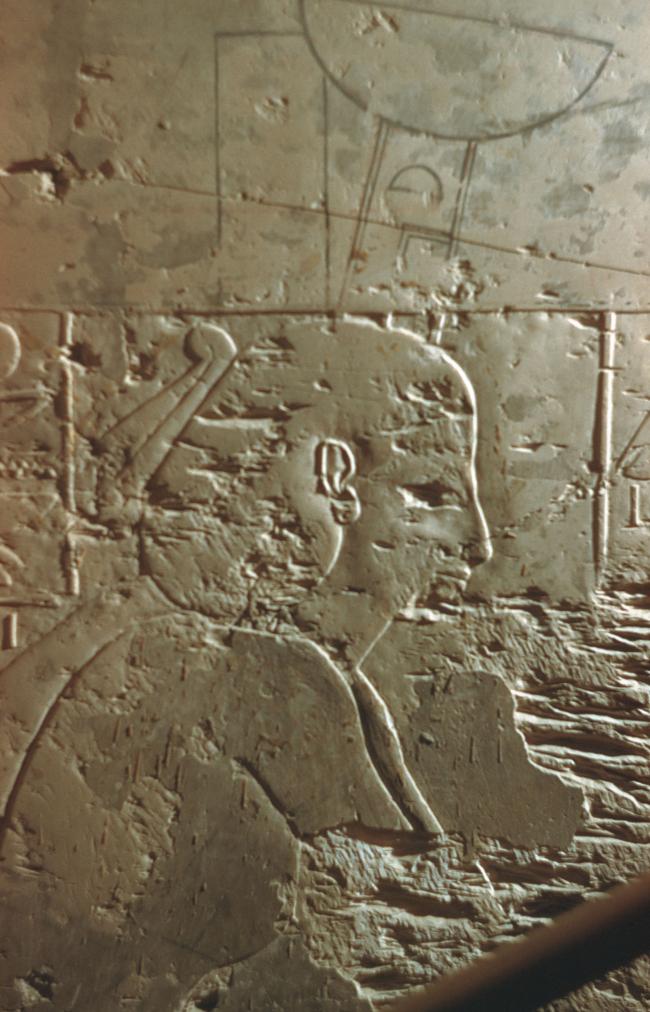
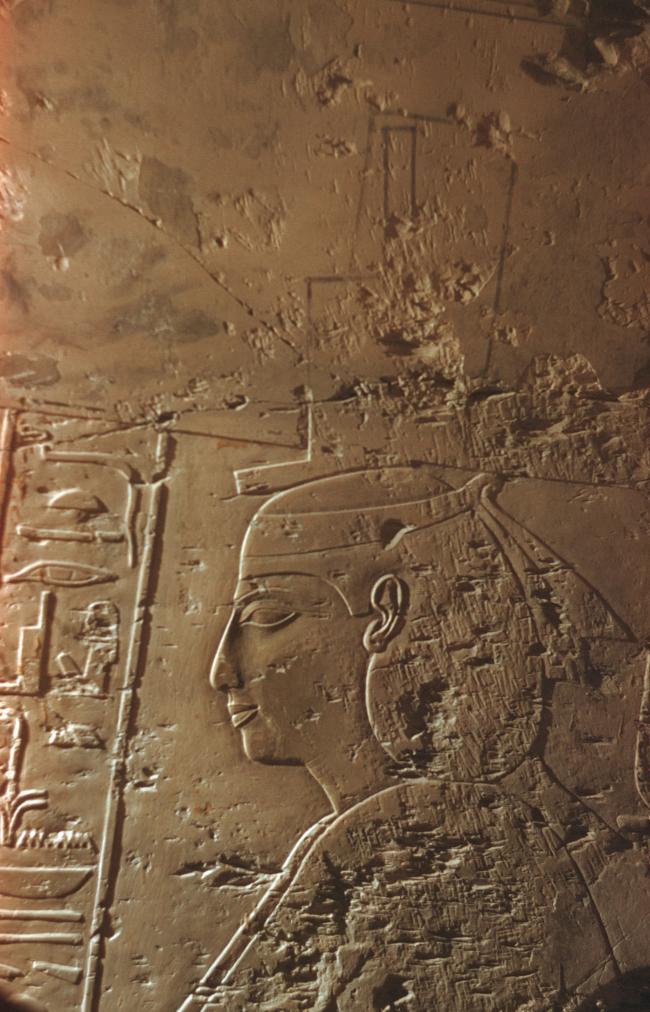
Gate D
See entire tombTwo kneeling figures of winged goddesses flank the cartouches of Sety I on the lintel, and the kings' names and titles appear on the outer faces of the reveals. On the right thickness are traces of two baboons, perhaps from the beginning of the upper register of the third hour of the Imydwat.
Porter and Moss designation:


Corridor D
See entire tombThis sloping corridor is decorated with the fourth and fifth hours of the Imydwat on the right (northwest) and left (southeast) walls, respectively. Near the lower ends of these walls are outlines in black for what in later tombs are a pair of rectangular recesses.
Porter and Moss designation:
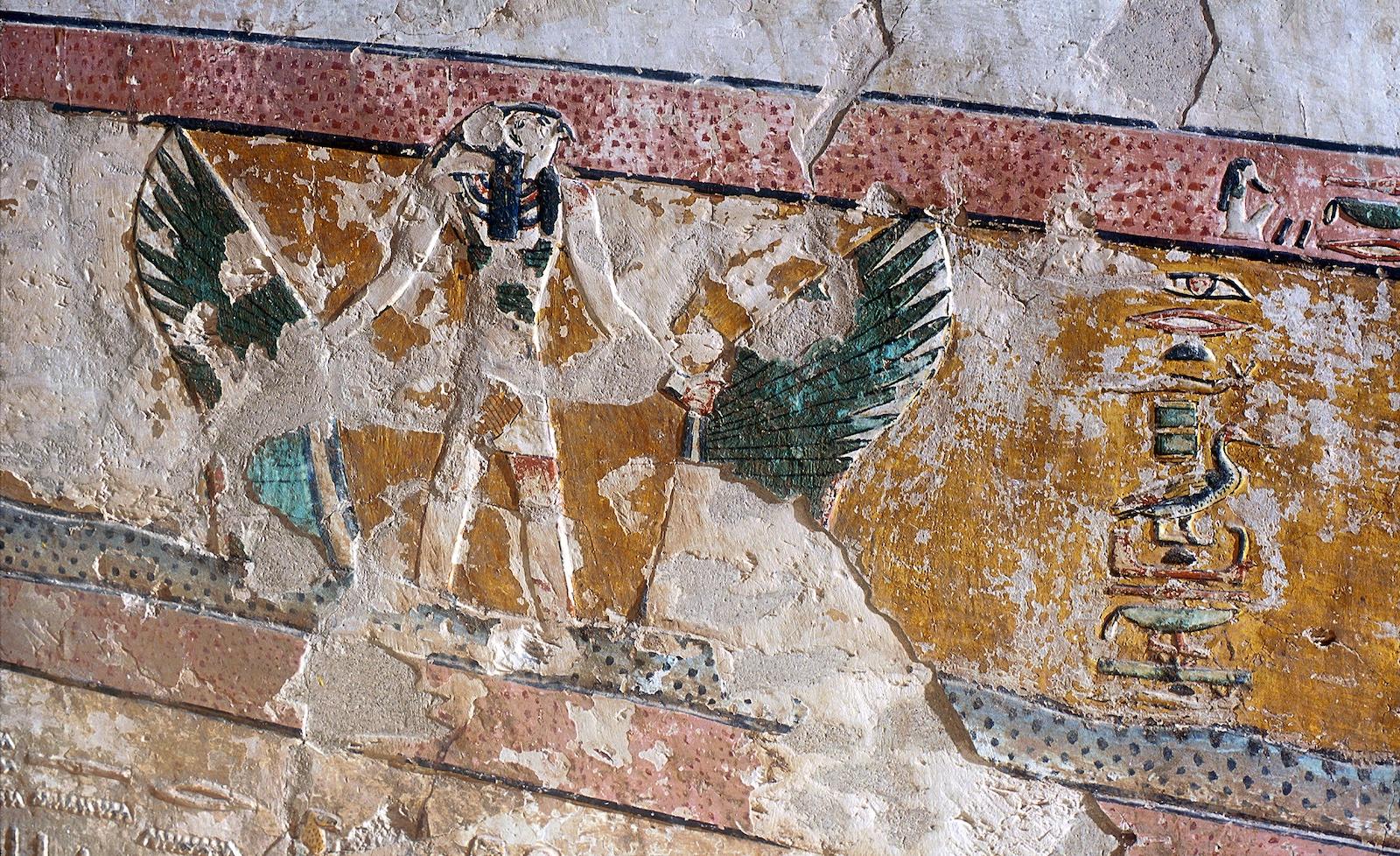
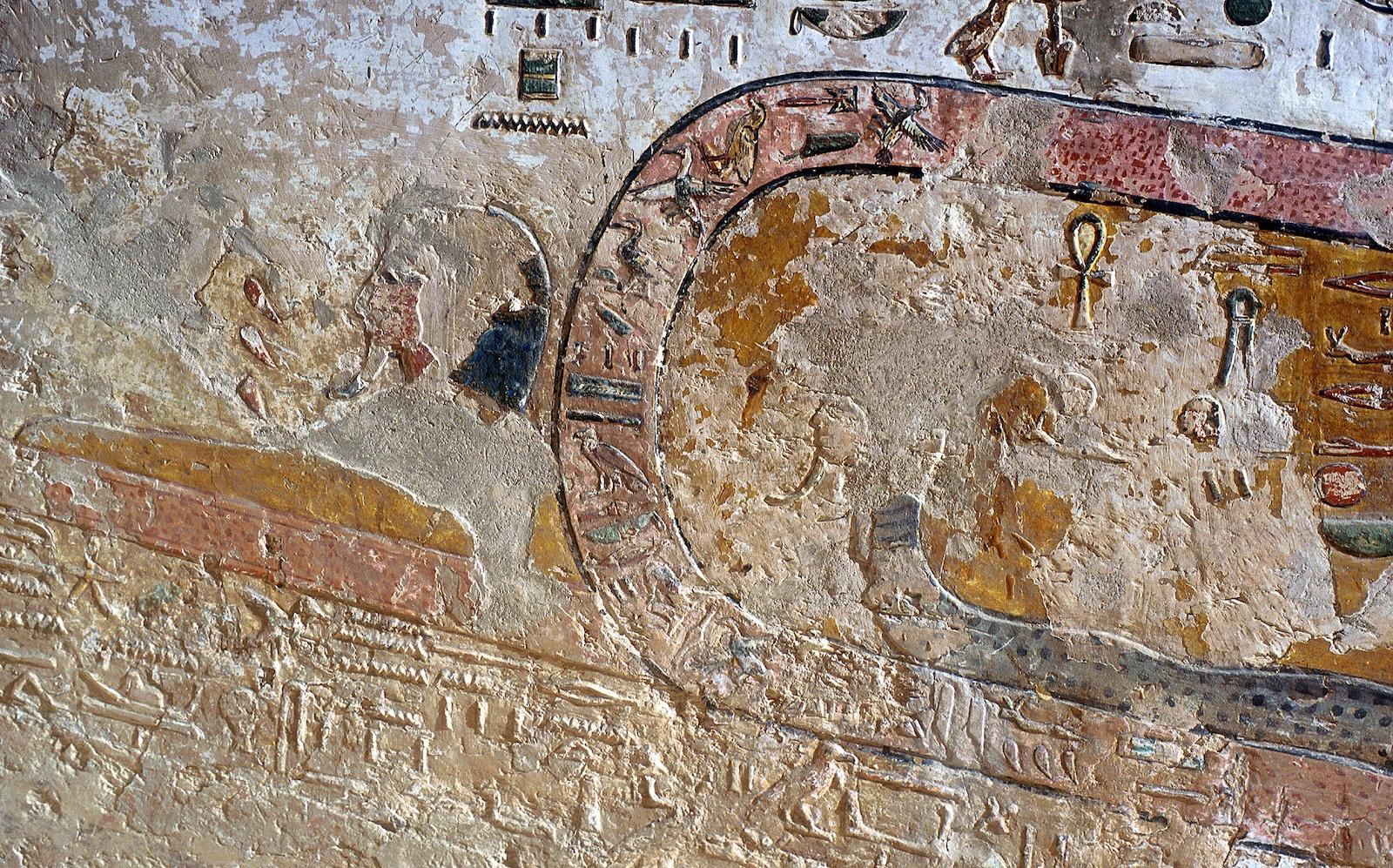
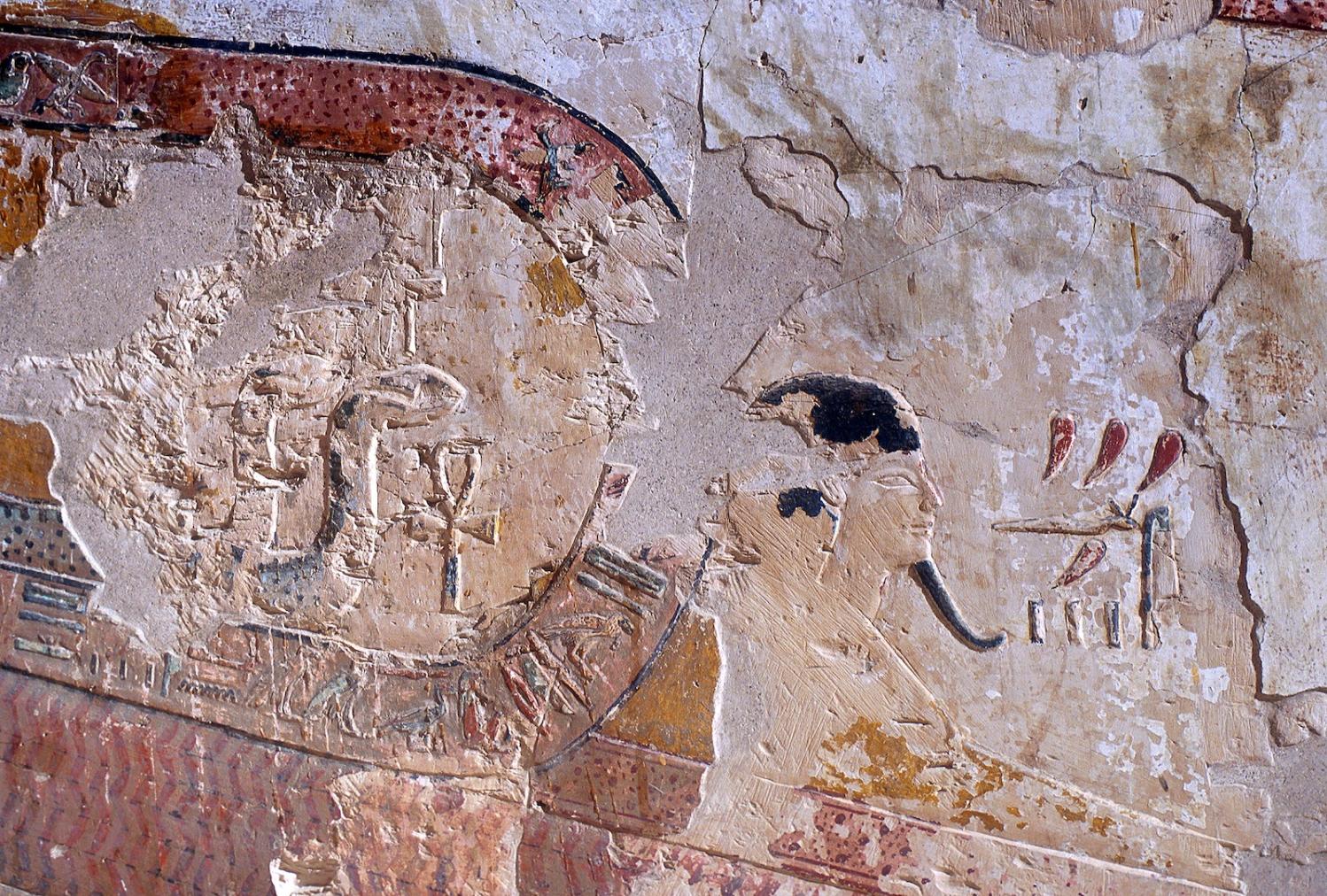
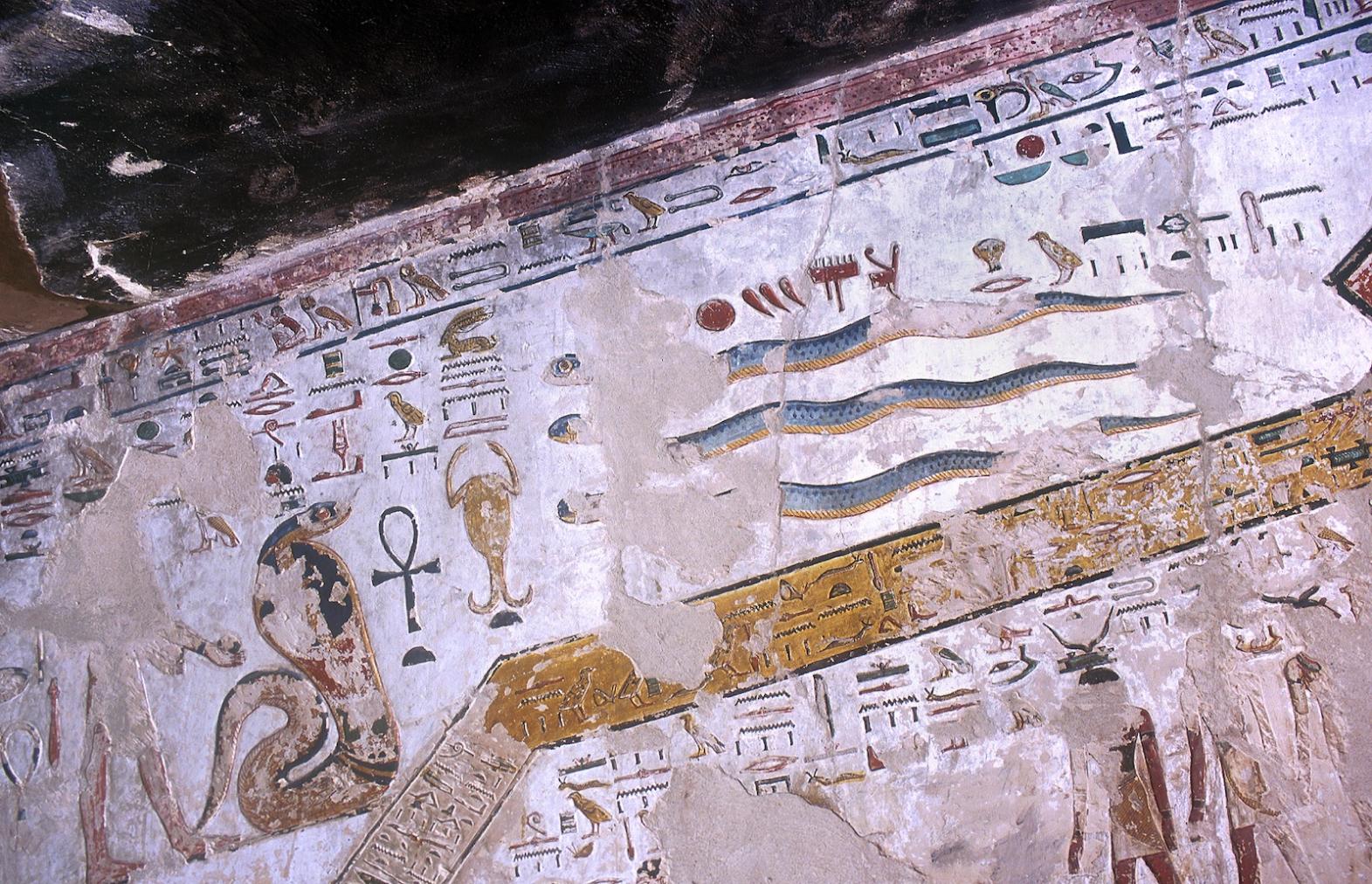
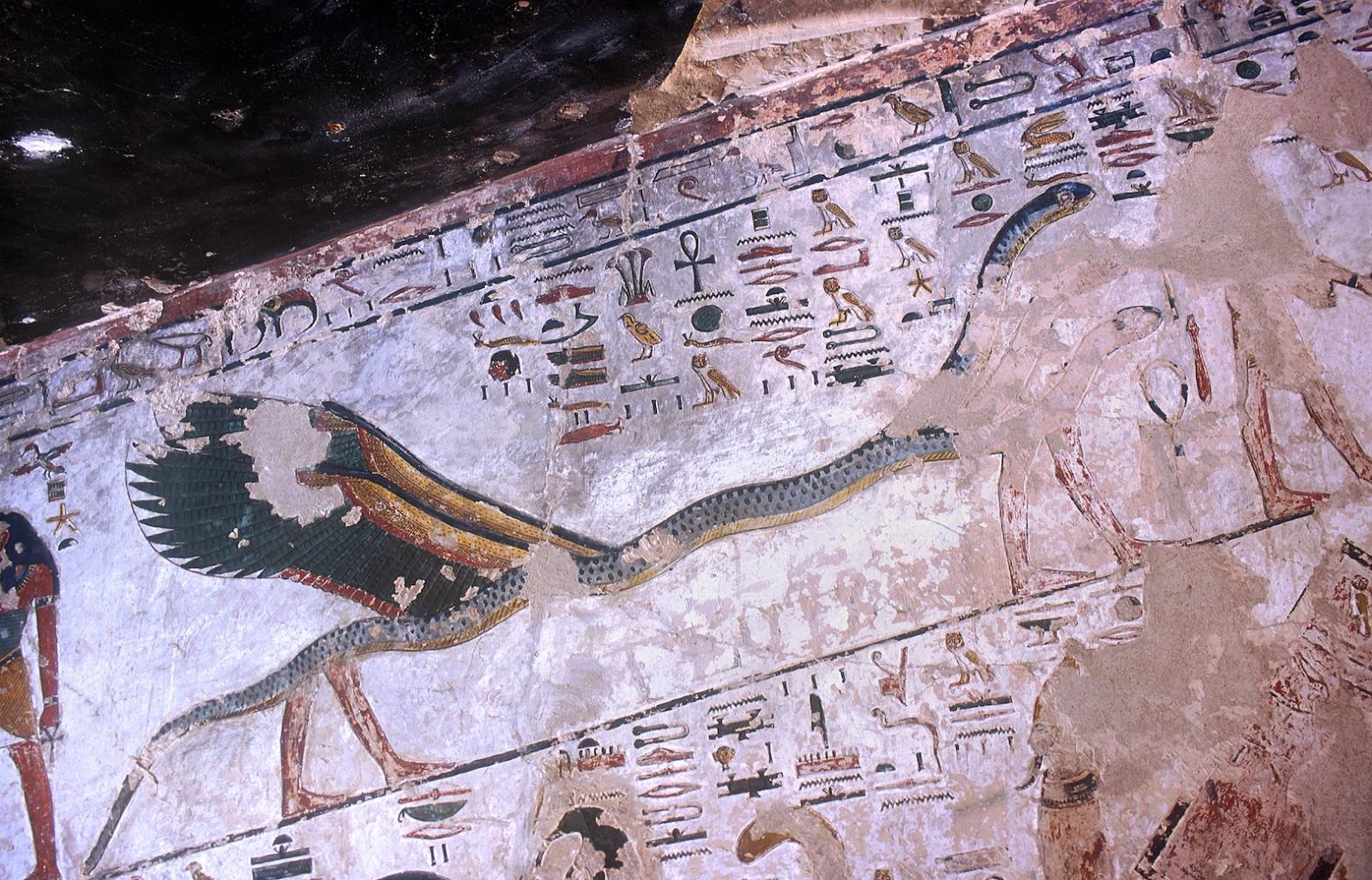
Gate E
See entire tombThe outer lintel is decorated with a winged sun disk and the reveals with the names of Sety I.
Porter and Moss designation:
Well chamber E
See entire tombA shaft has been cut through the floor of this chamber. The five scenes on the left (southeast) side of the chamber show jackal-headed Anubis, Sety I being led by Horus to Isis, the king offering wine to Hathor, the king before Osiris, and finally the Western Goddess. On the right (northwest) side, the king is shown led by Horus to Hathor and to Isis, offering wine to Hathor, before Osiris, and there are also depictions of Osiris seated, and Anubis and Horus. The ceiling is painted with yellow stars on a blue background. It cannot be determined if the widening of the bottom of the shaft was intentional. The shaft has not yet been fully cleared.
Porter and Moss designation:
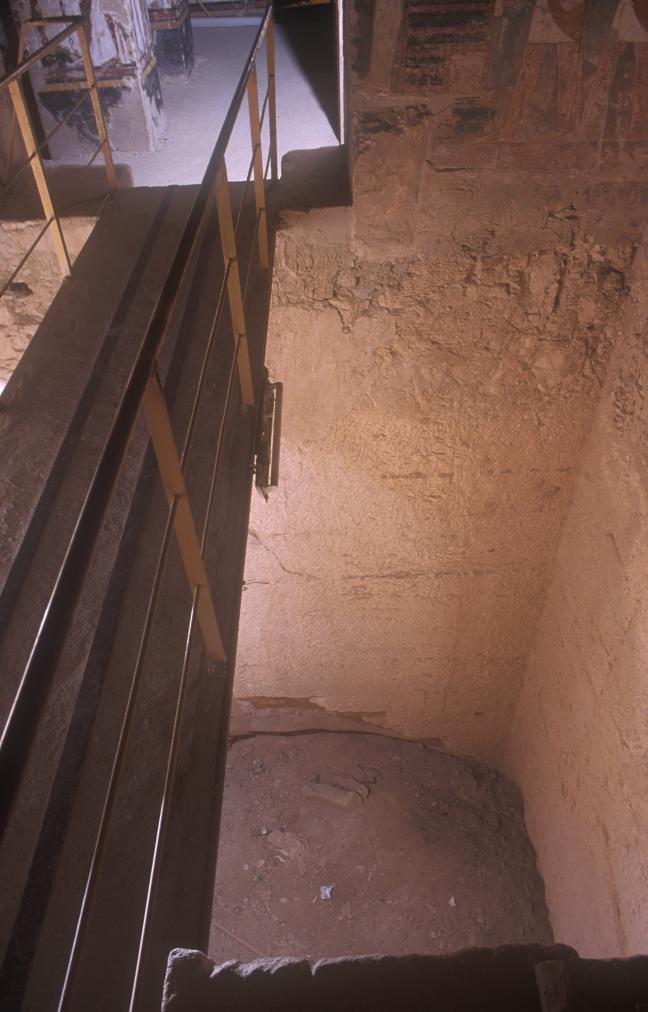
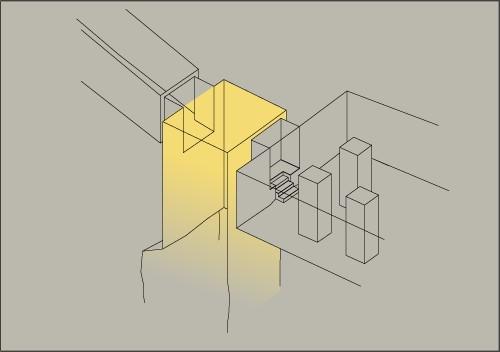
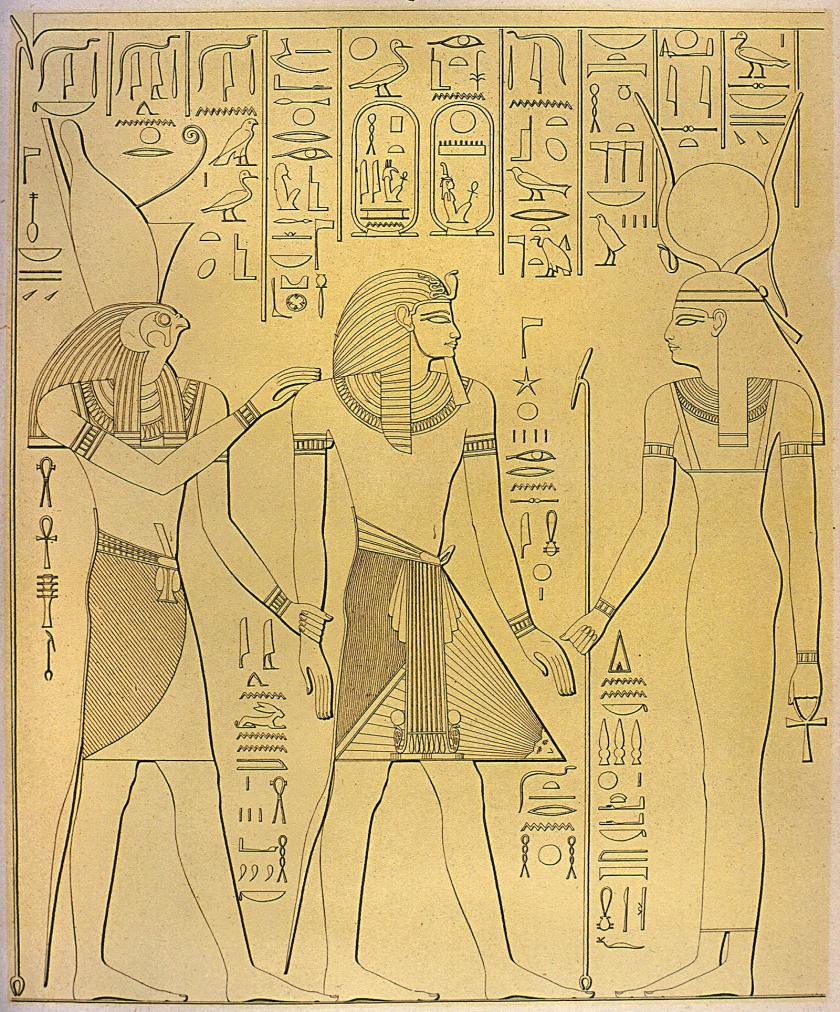
Gate F
See entire tombThe gate is undecorated.
Porter and Moss designation:
Pillared chamber F
See entire tombThis is a roughly square chamber with two rows of two pillars flanking the central axis. From the descent, the central tomb axis is displaced to the left (southeast). The left (southeast) side of the chamber is divided into three registers decorated with the fourth division (P)/fifth hour (H) of the Book of Gates. One scene represents the four "races" of mankind, for the first time in this composition differentiated by their physical characteristics. The right (northwest) side of the chamber is similarly divided into three registers and is decorated with the fifth division (P)/sixth hour (H) of the Book of Gates. On the rear (southwest) wall, the king is presented to Osiris and Hathor by Horus.
Porter and Moss designation:
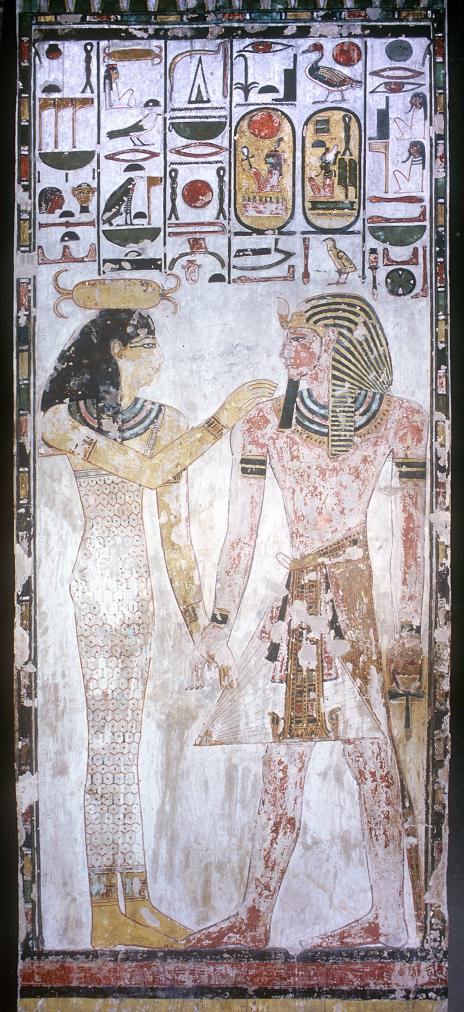
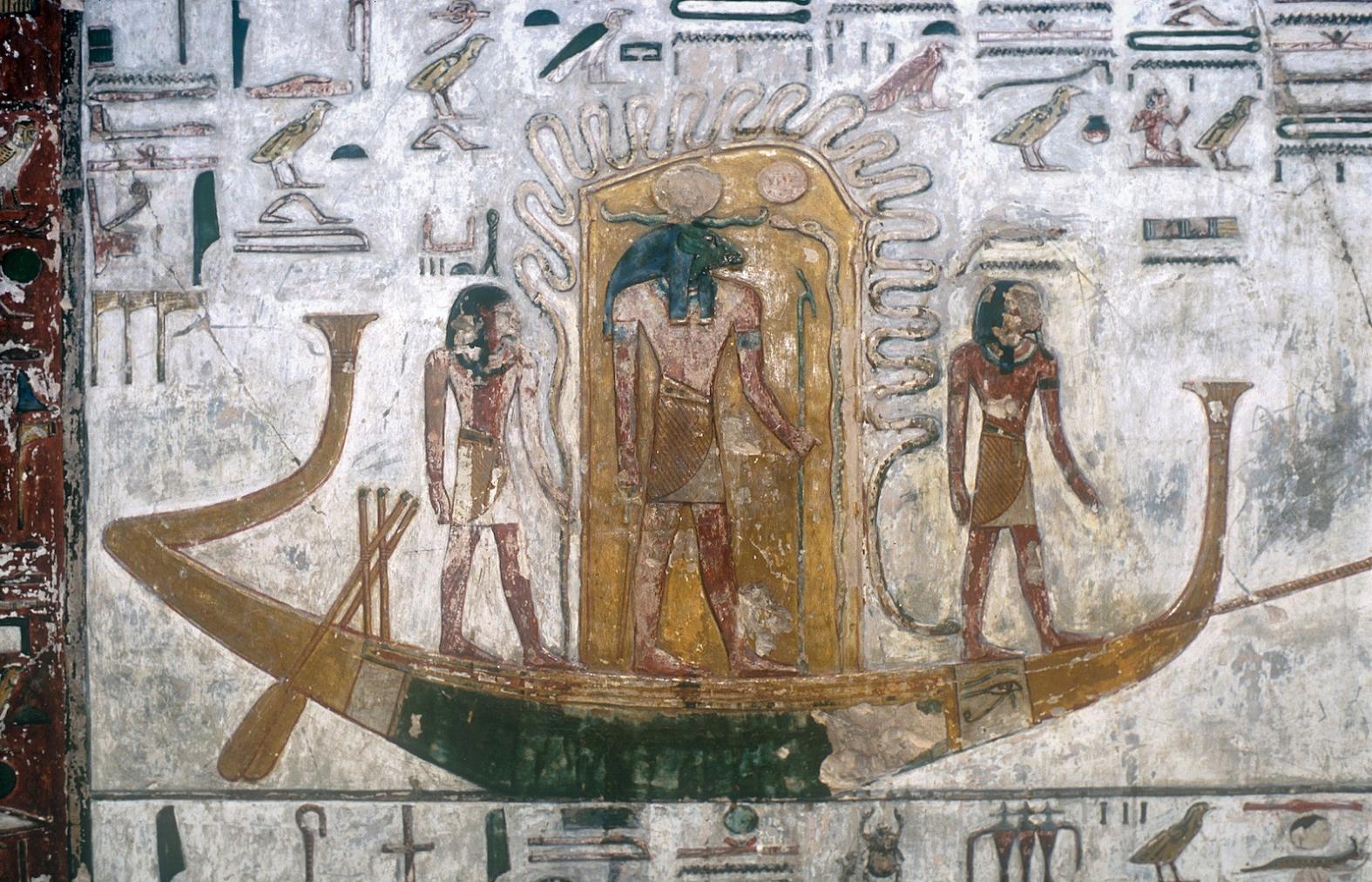
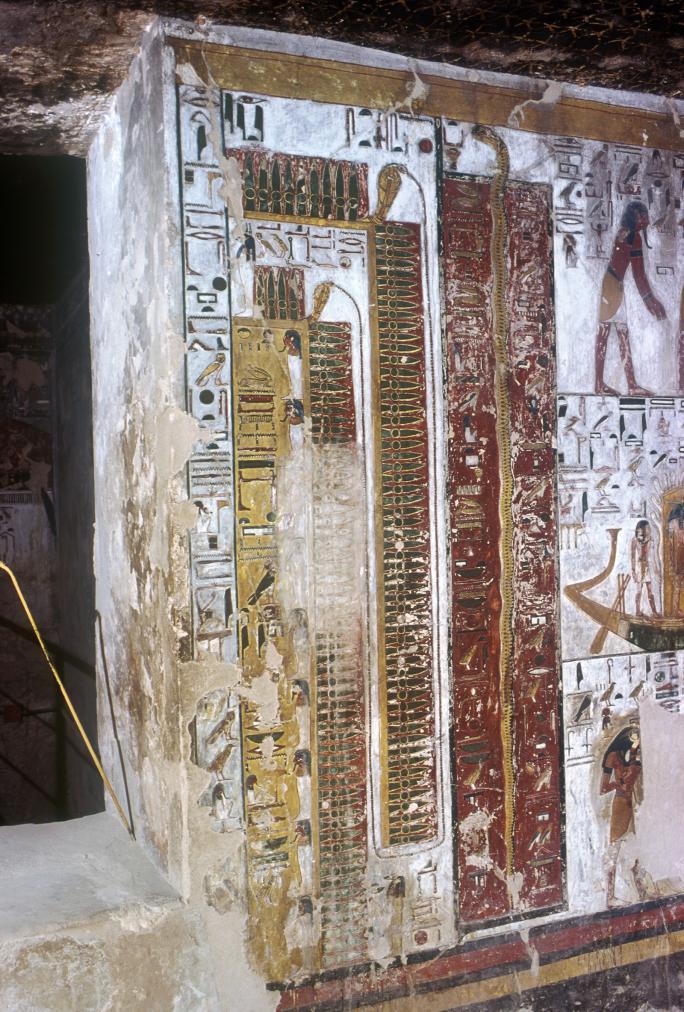
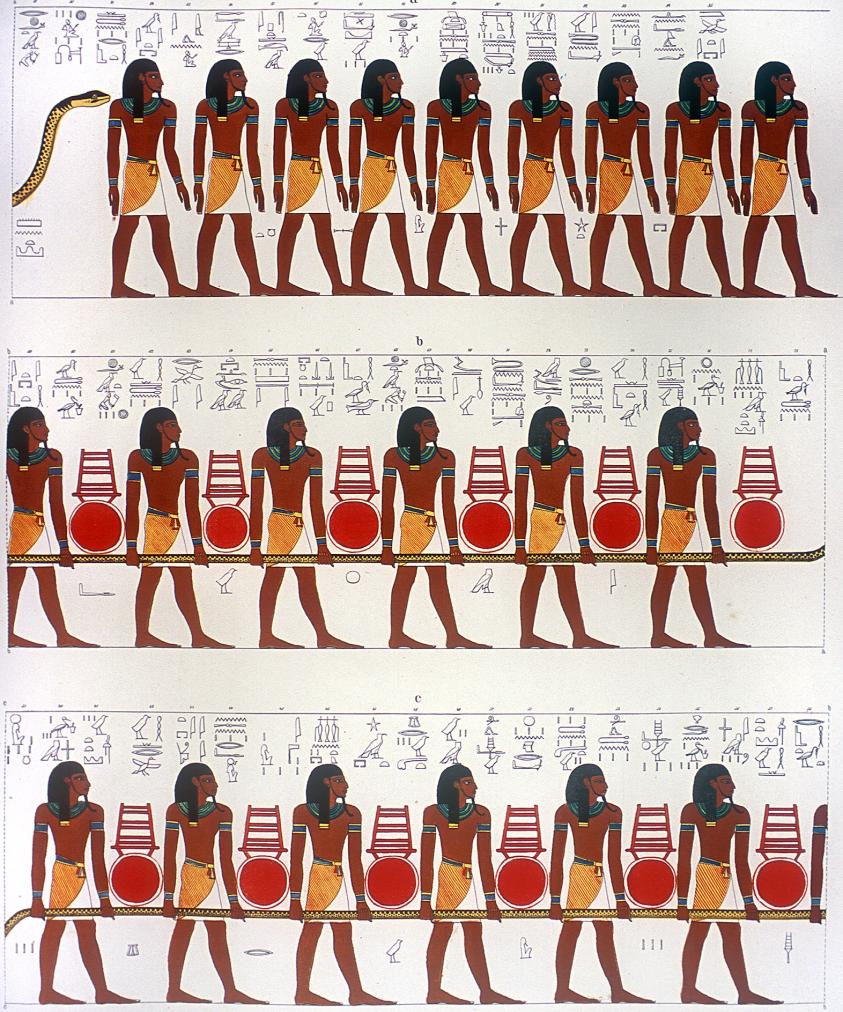
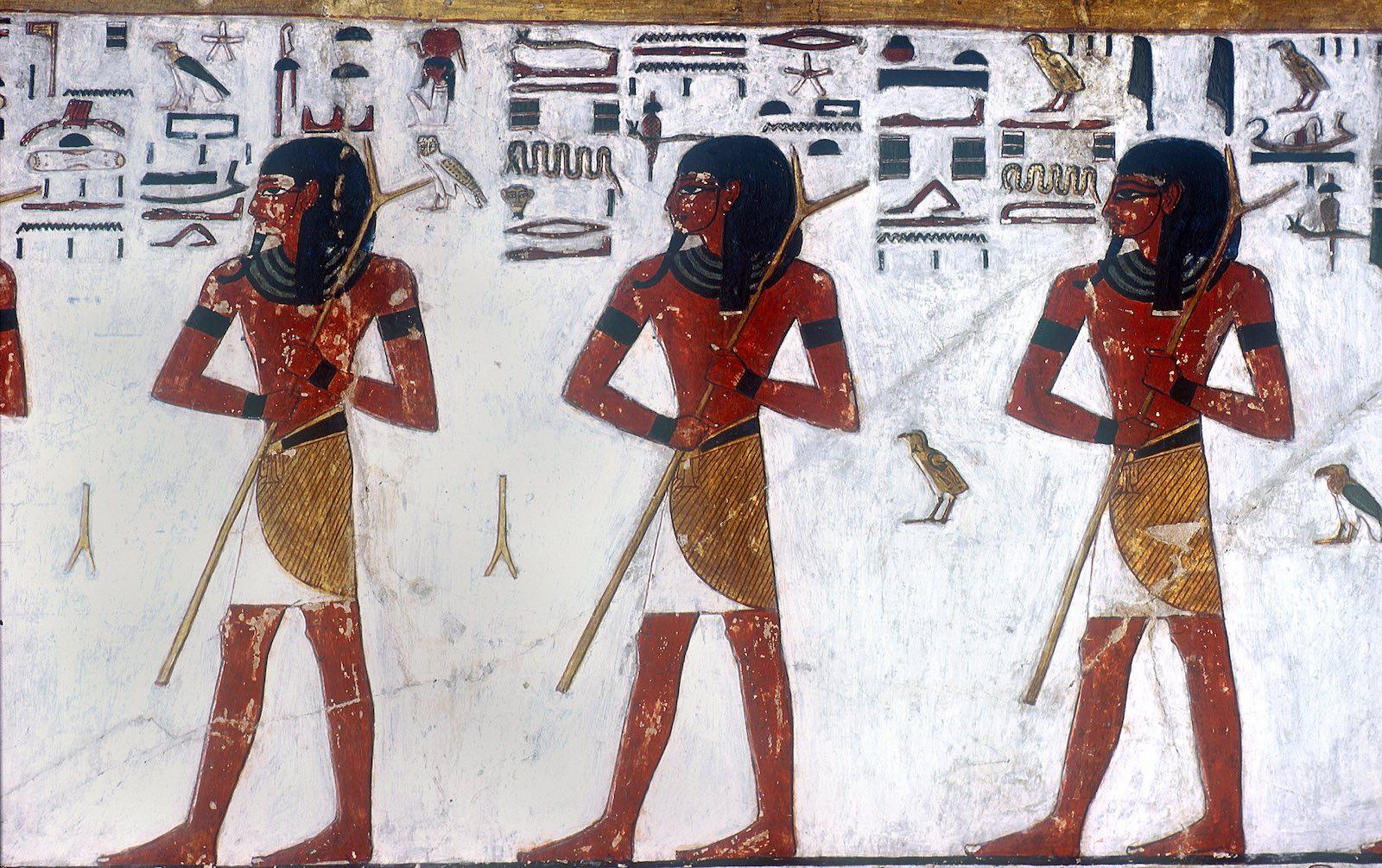
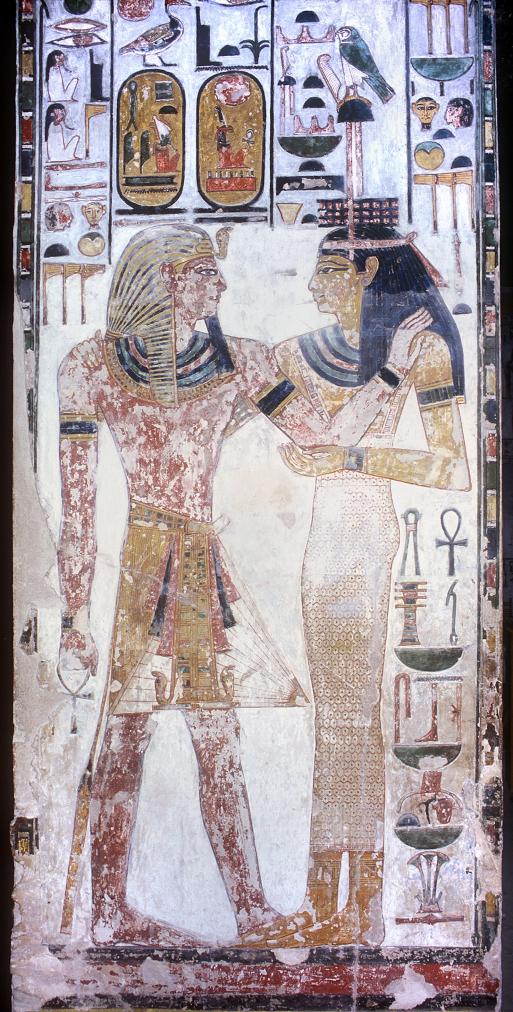
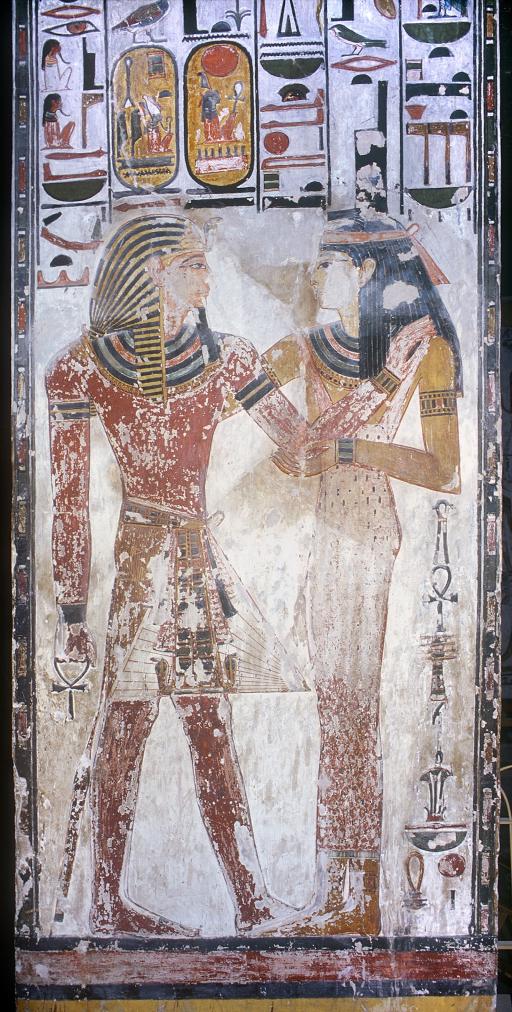
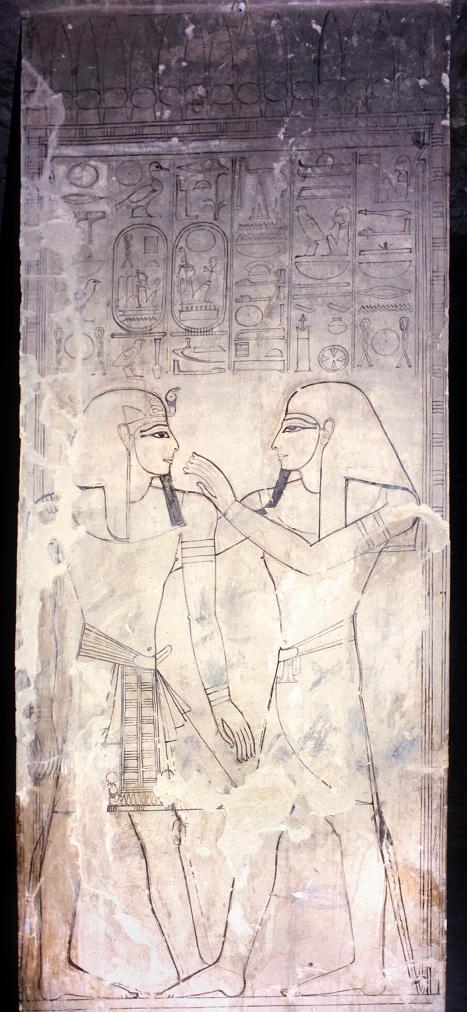
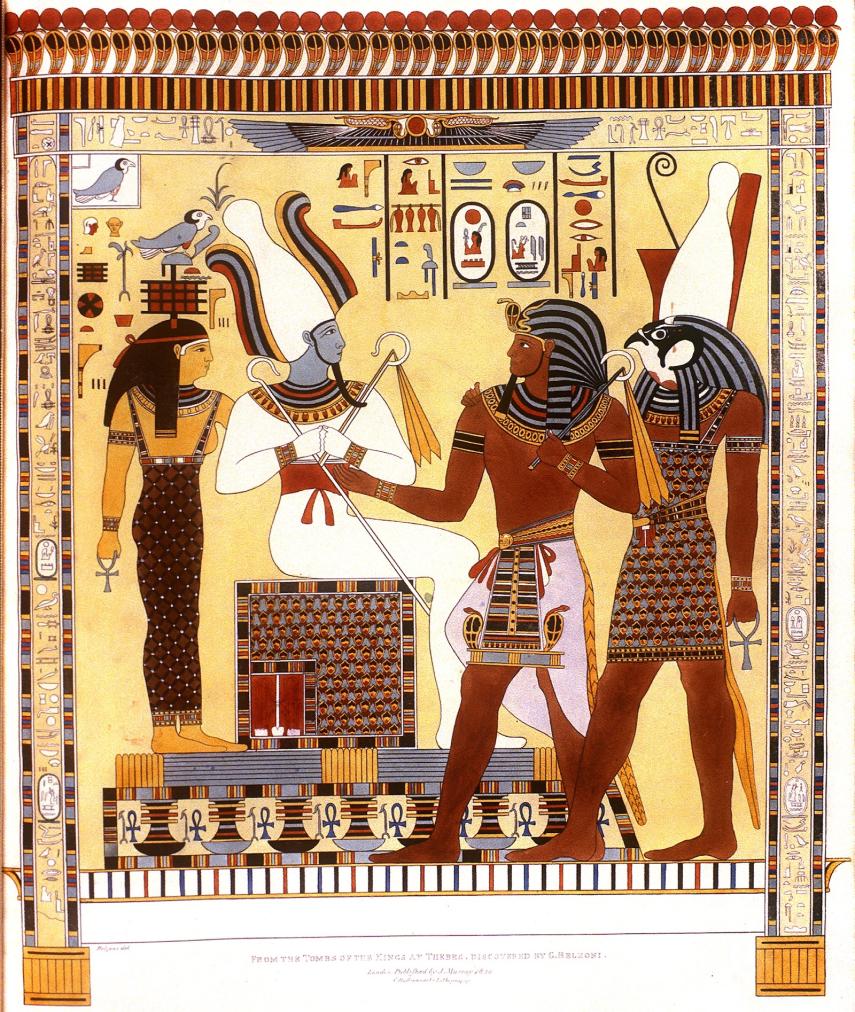
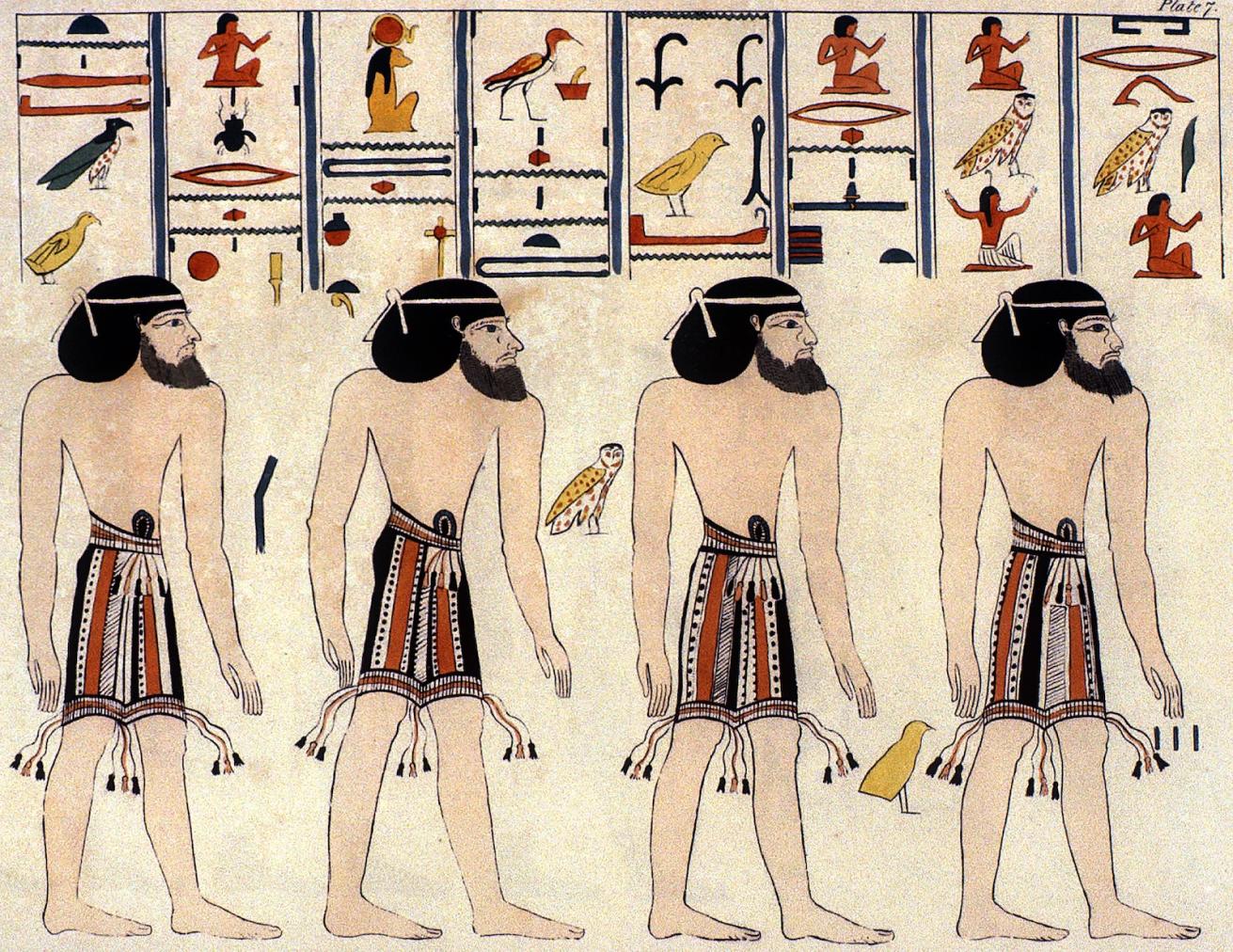
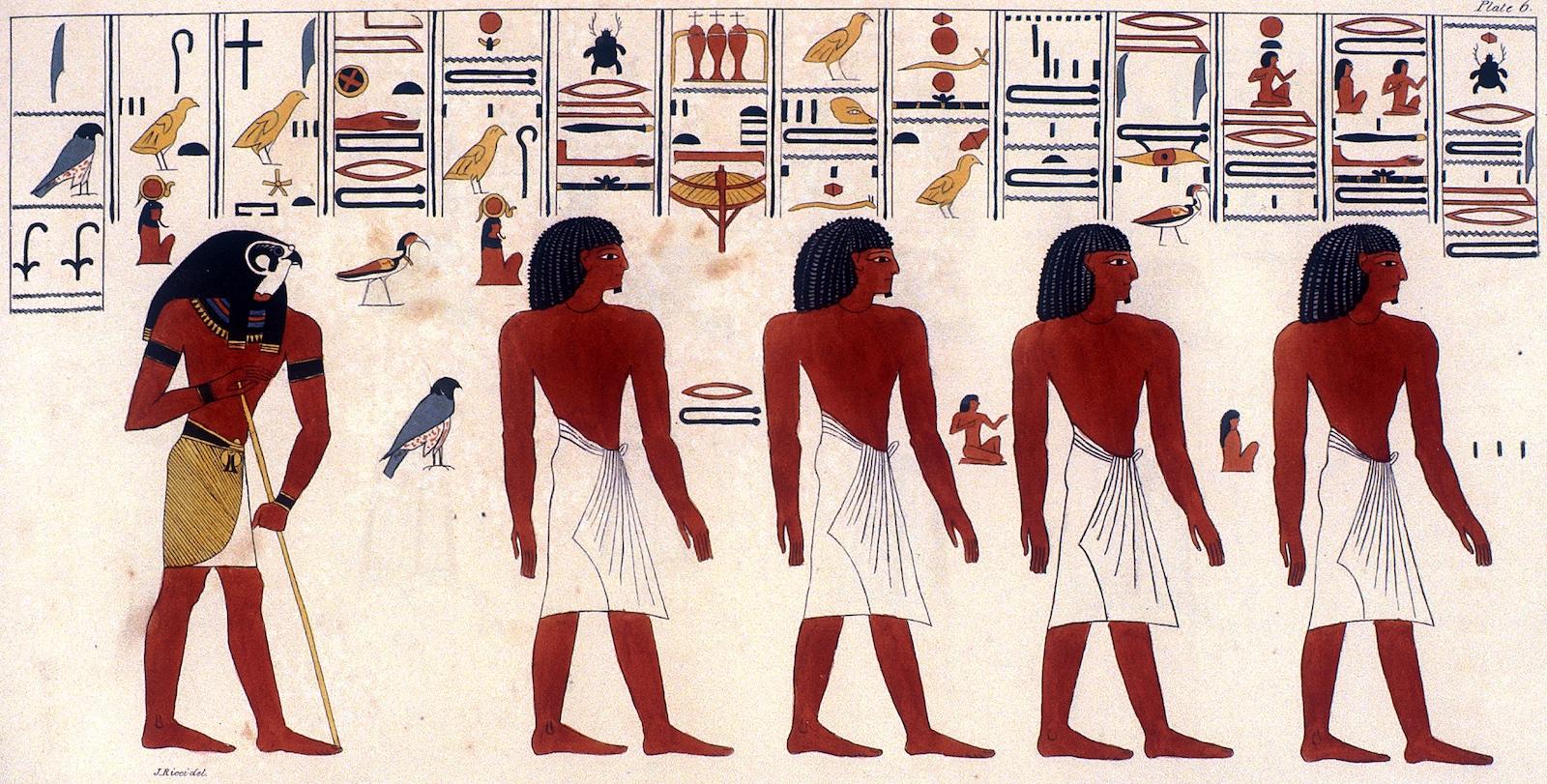
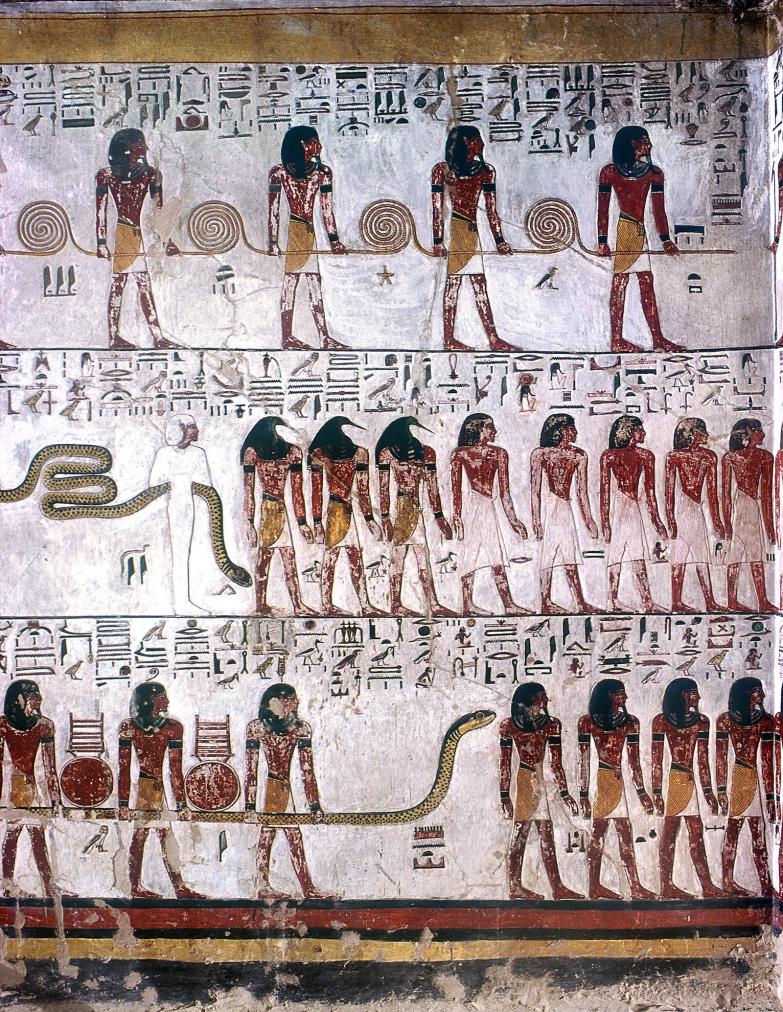
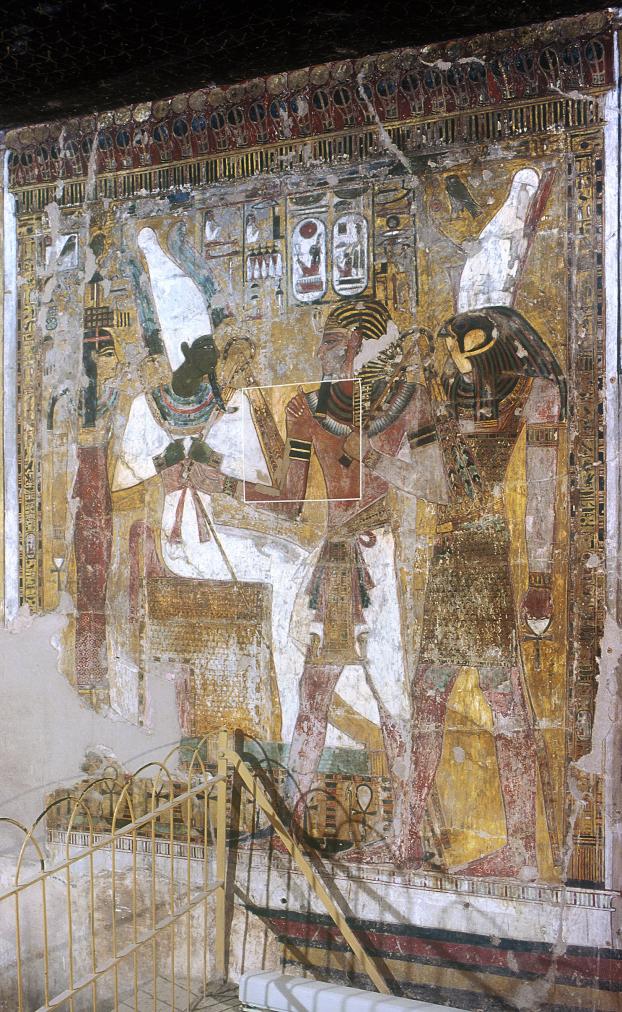
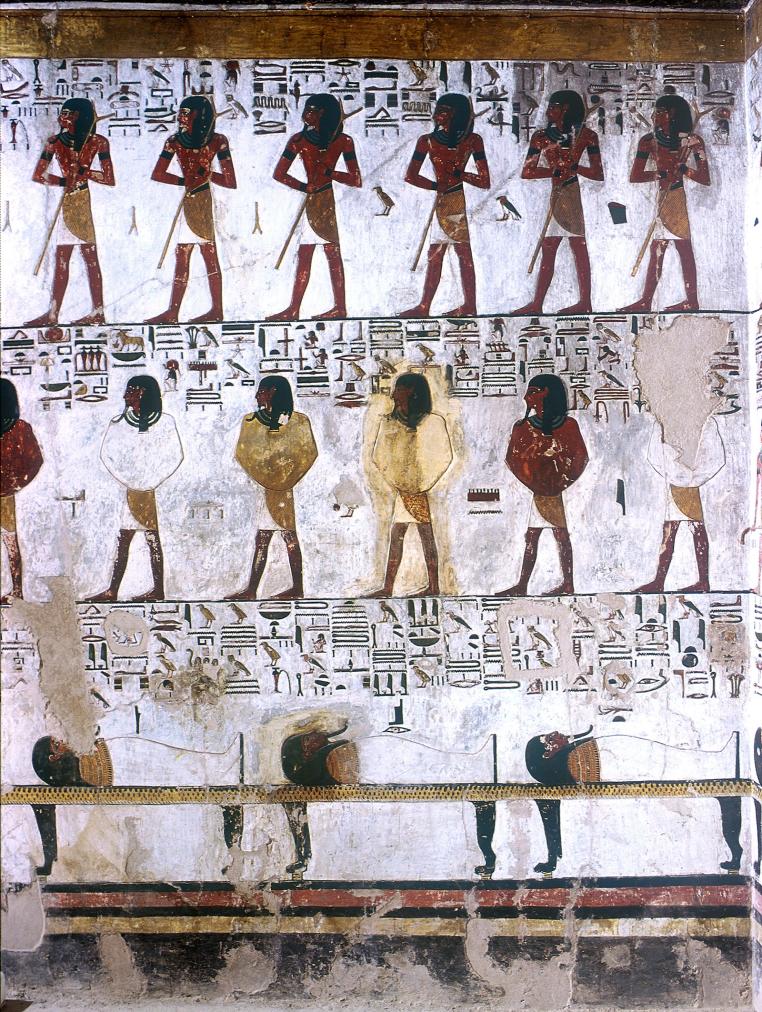
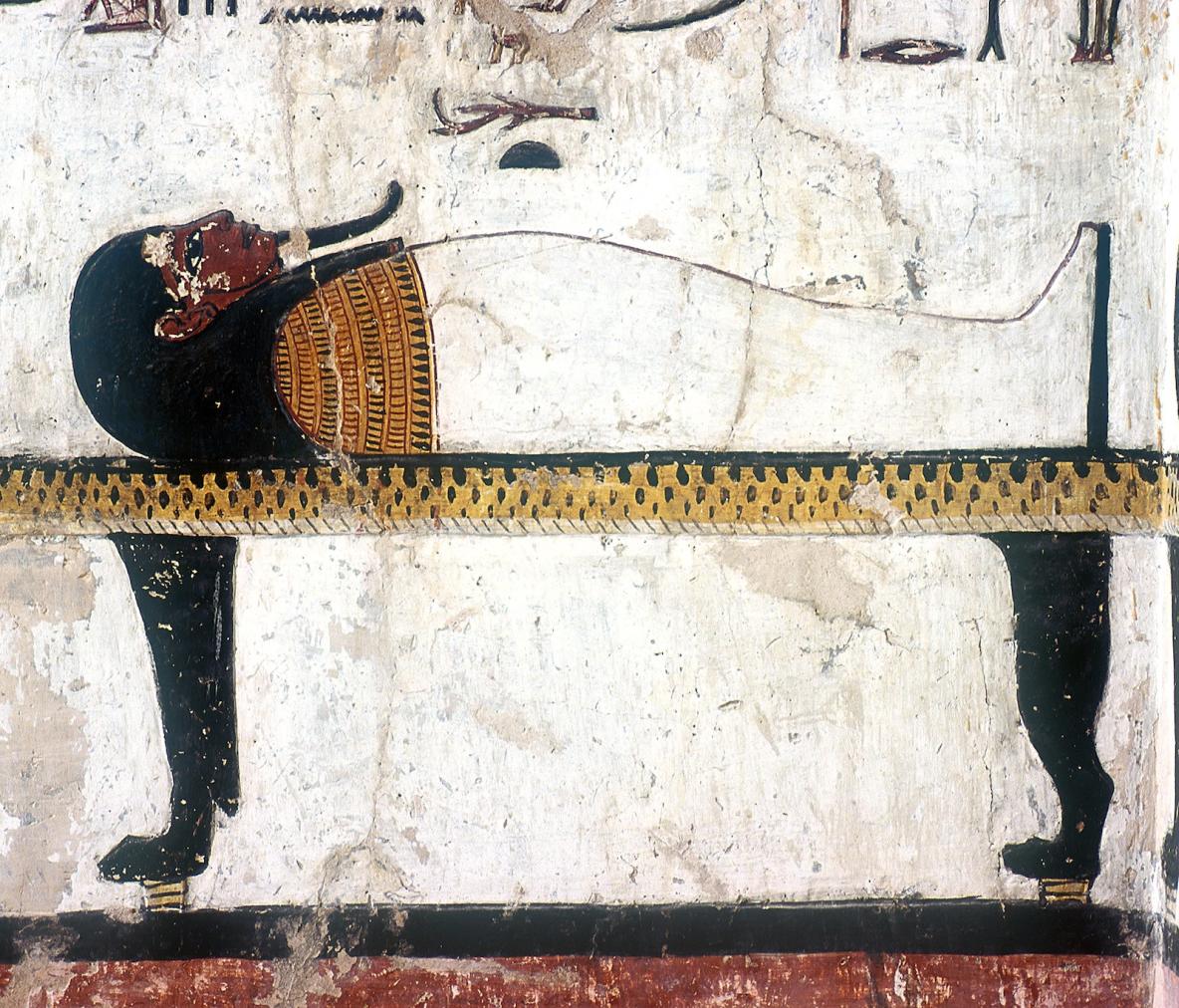
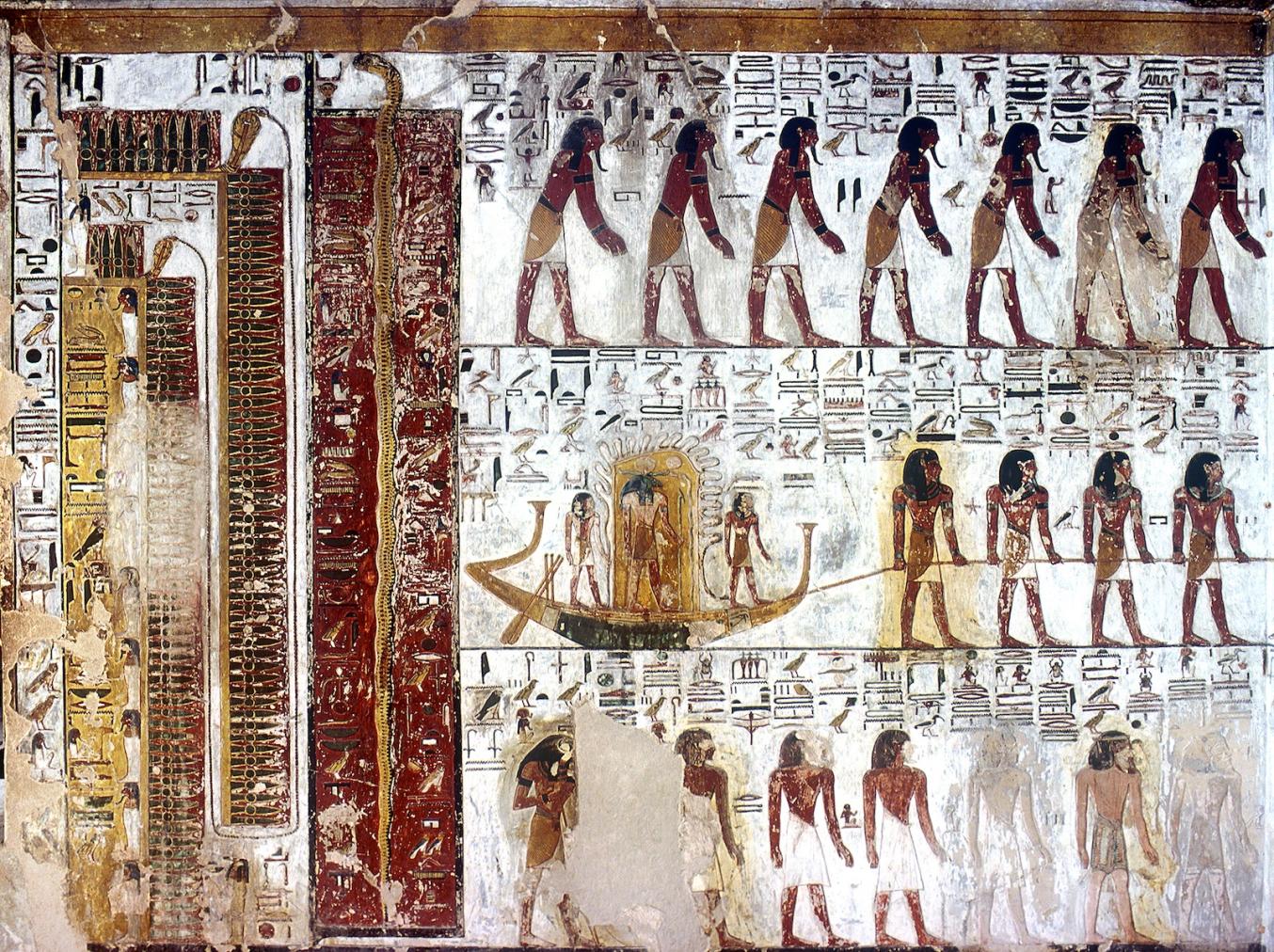
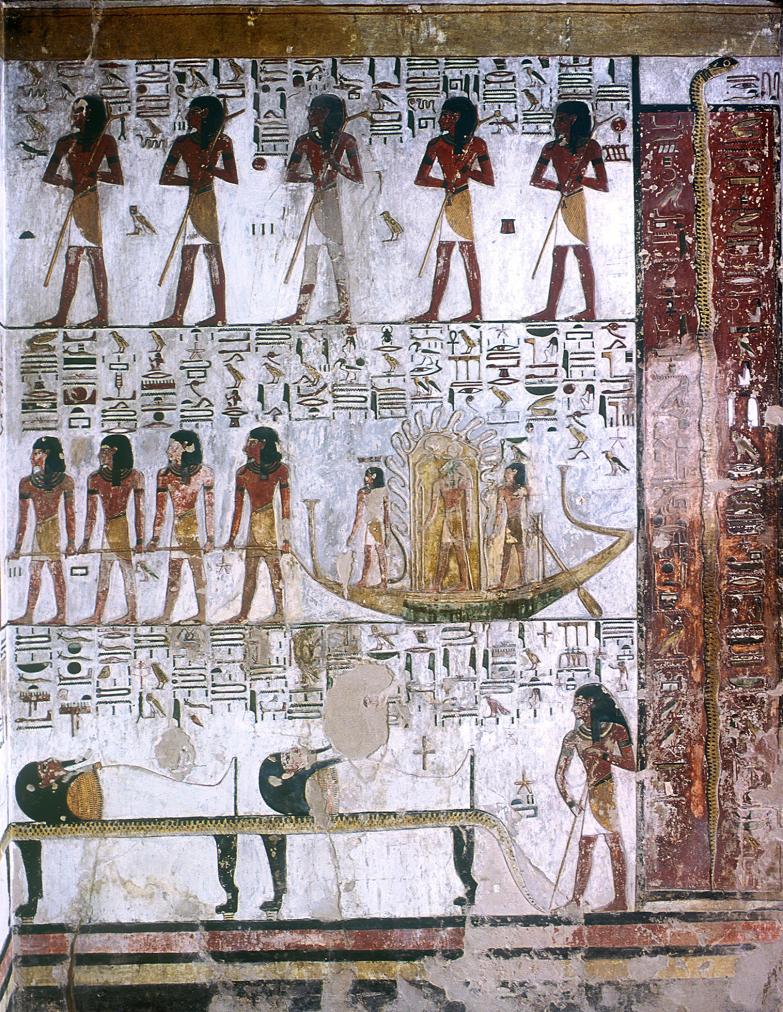
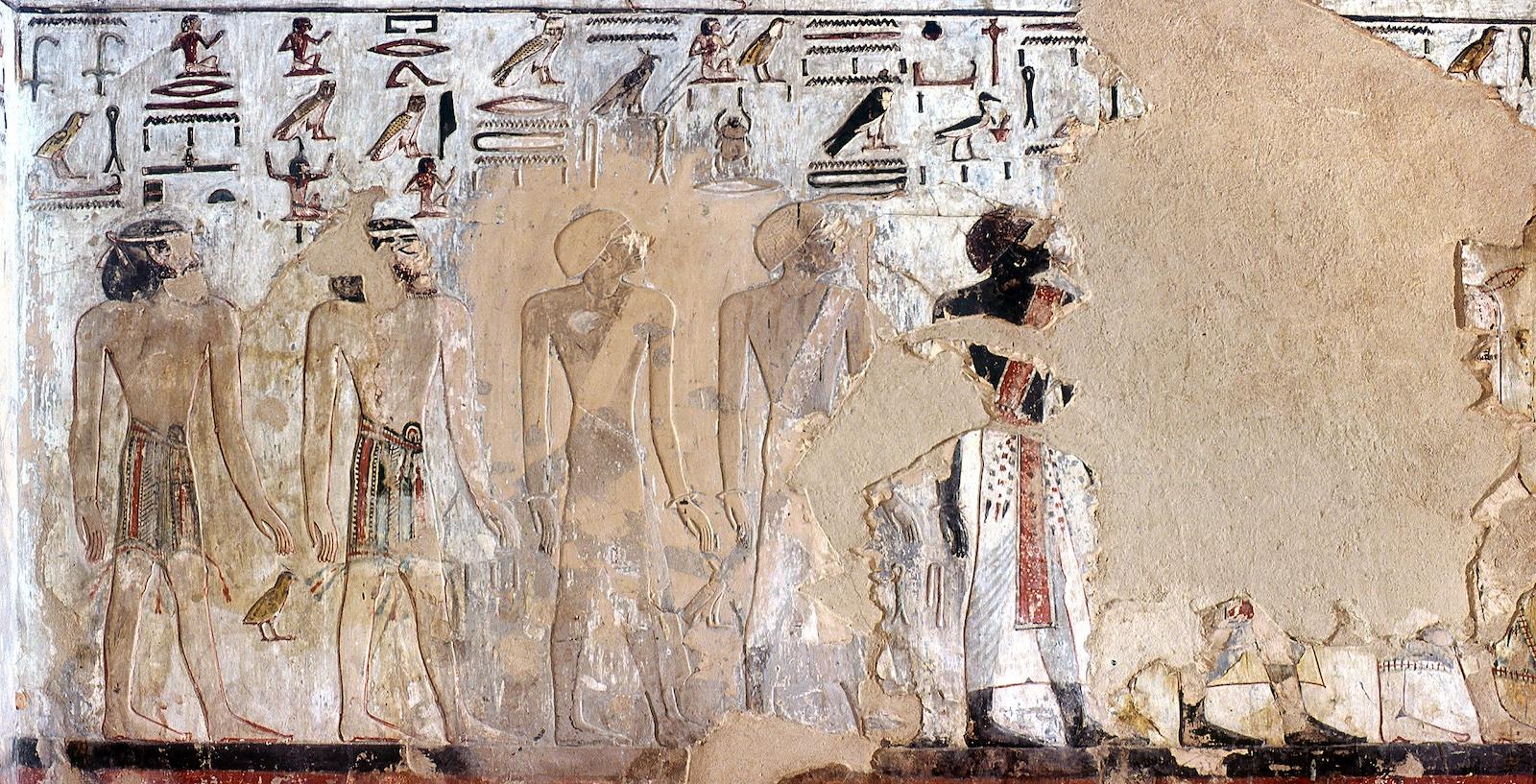
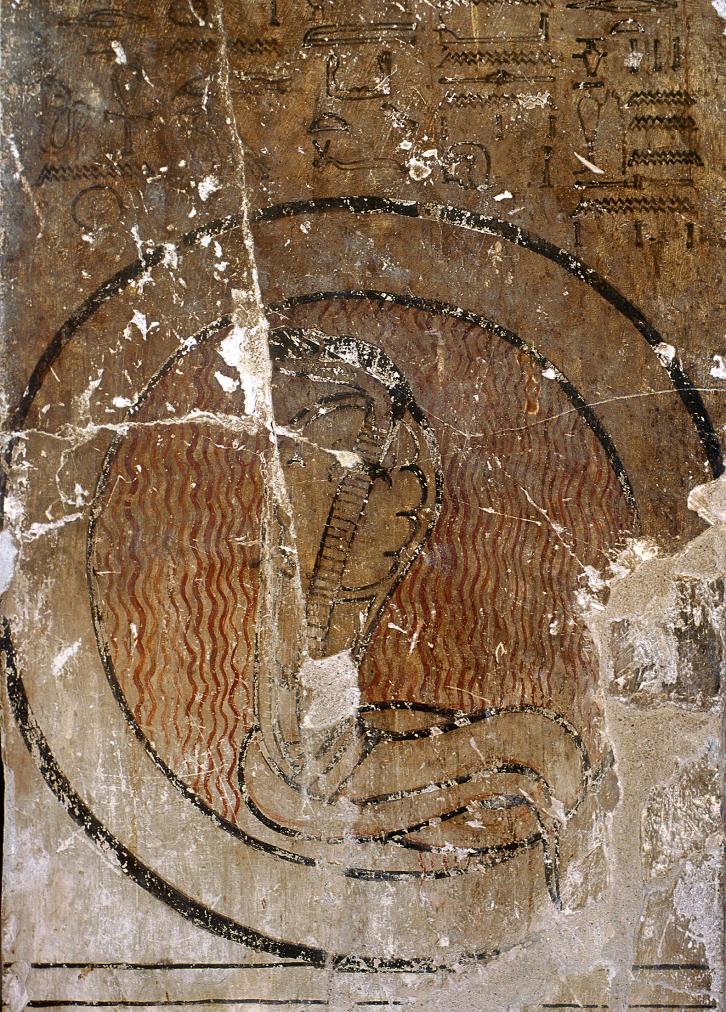
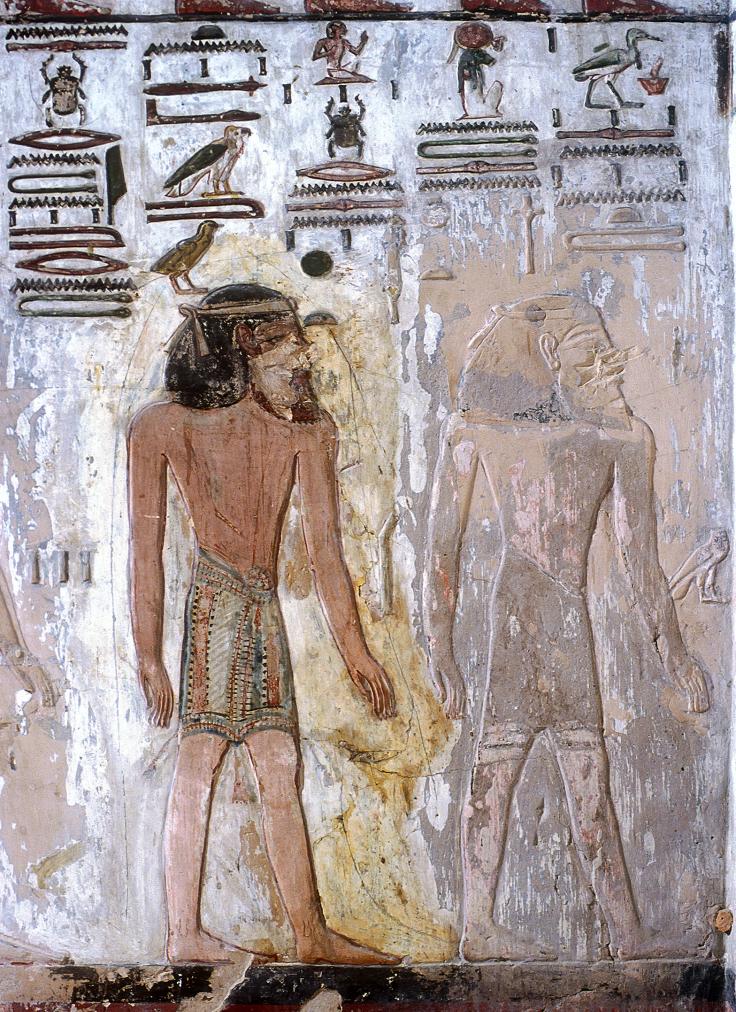
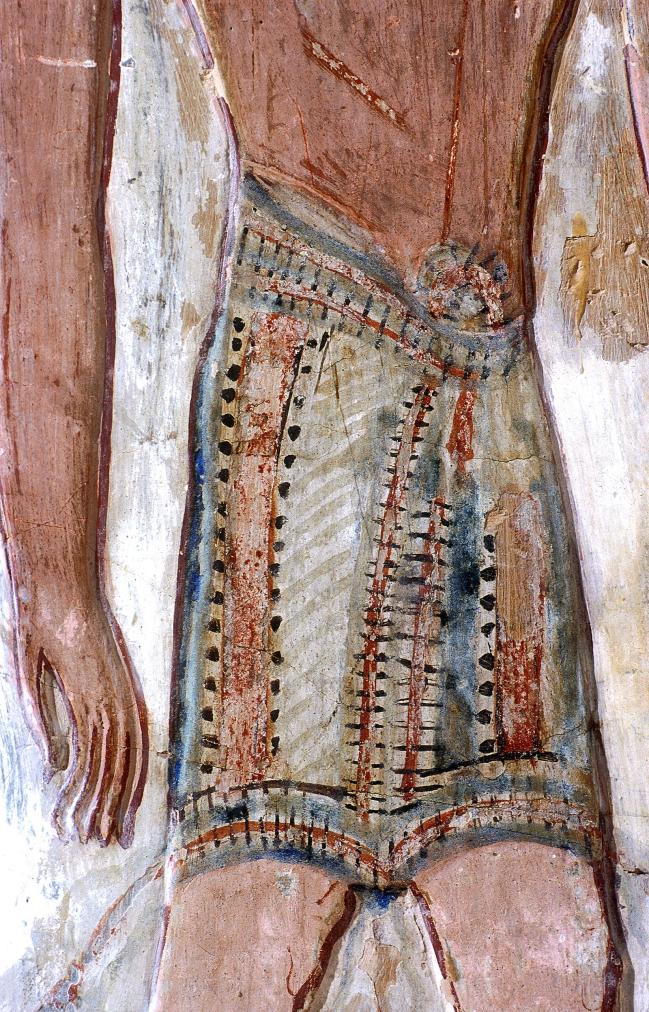
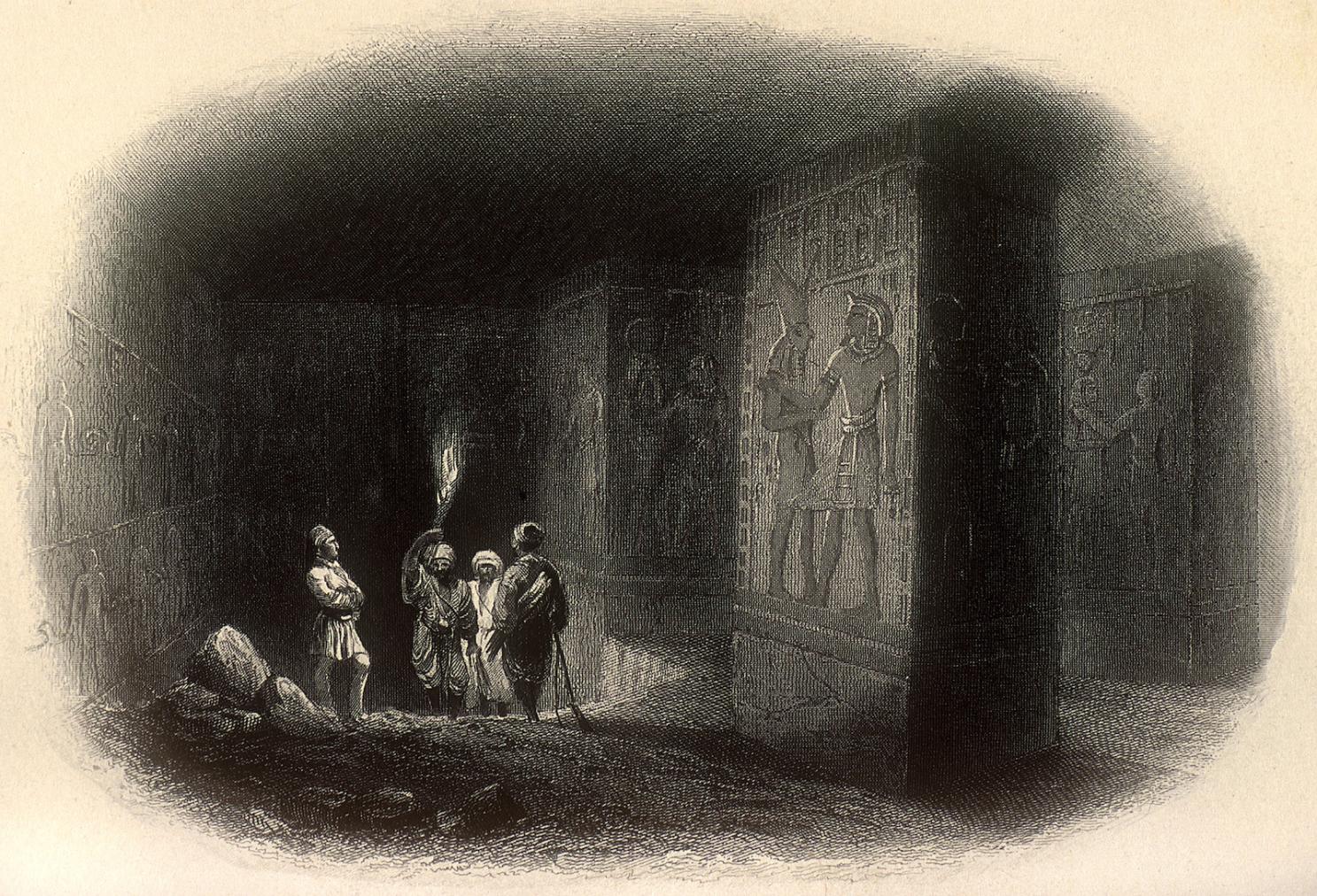
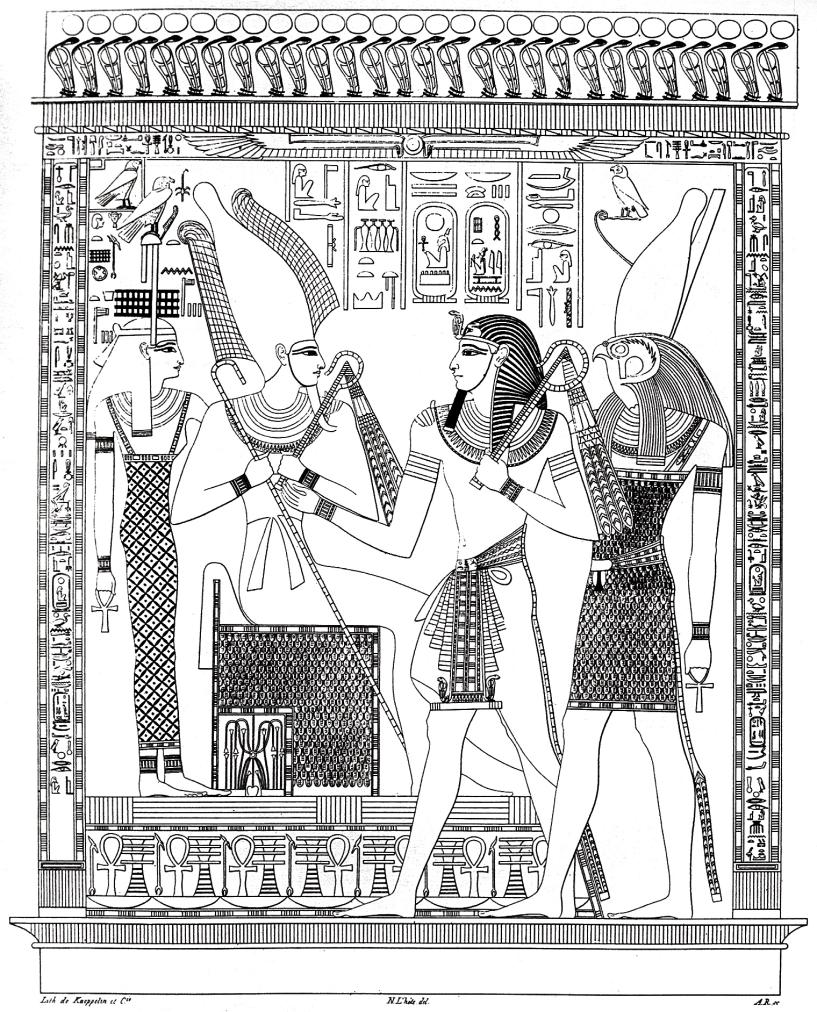
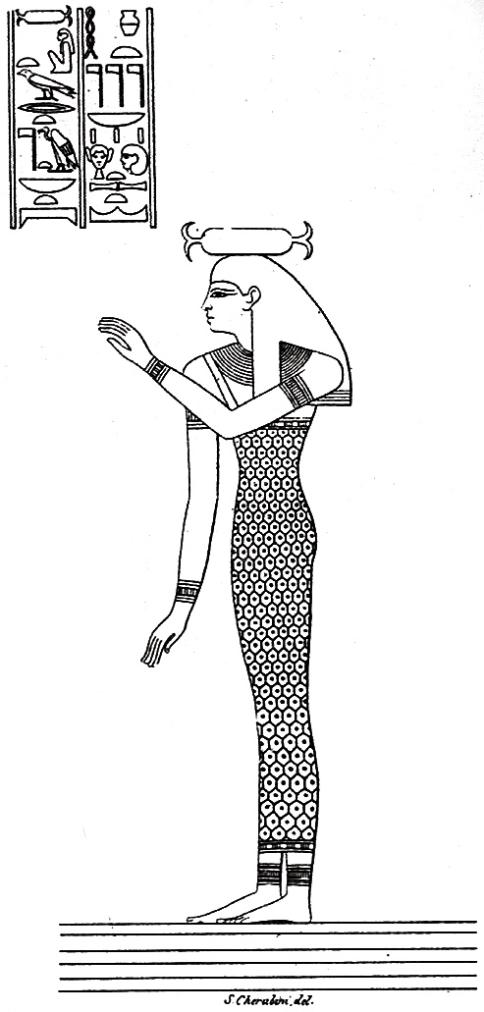

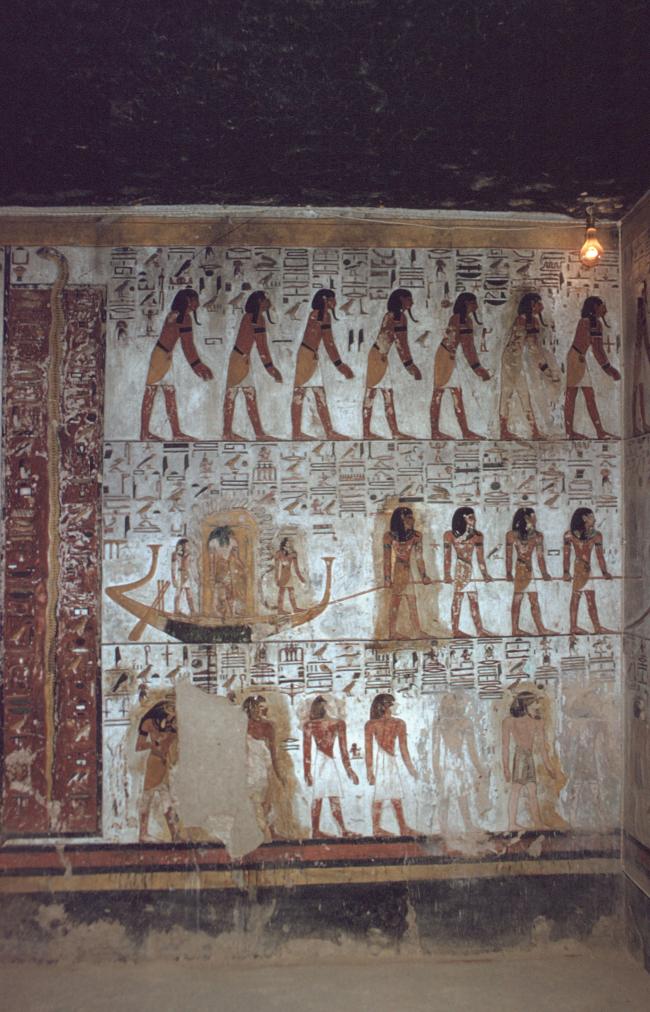
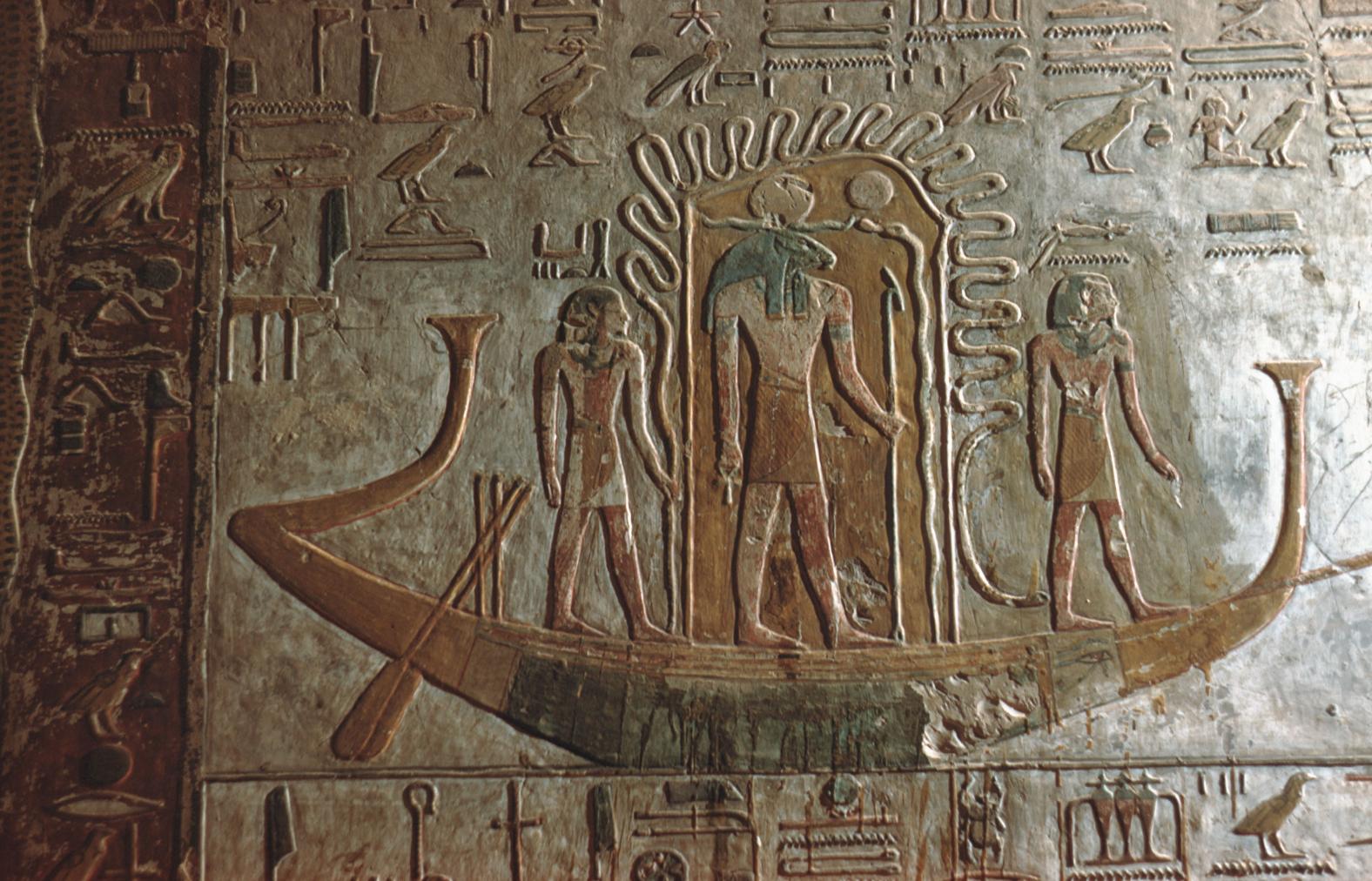
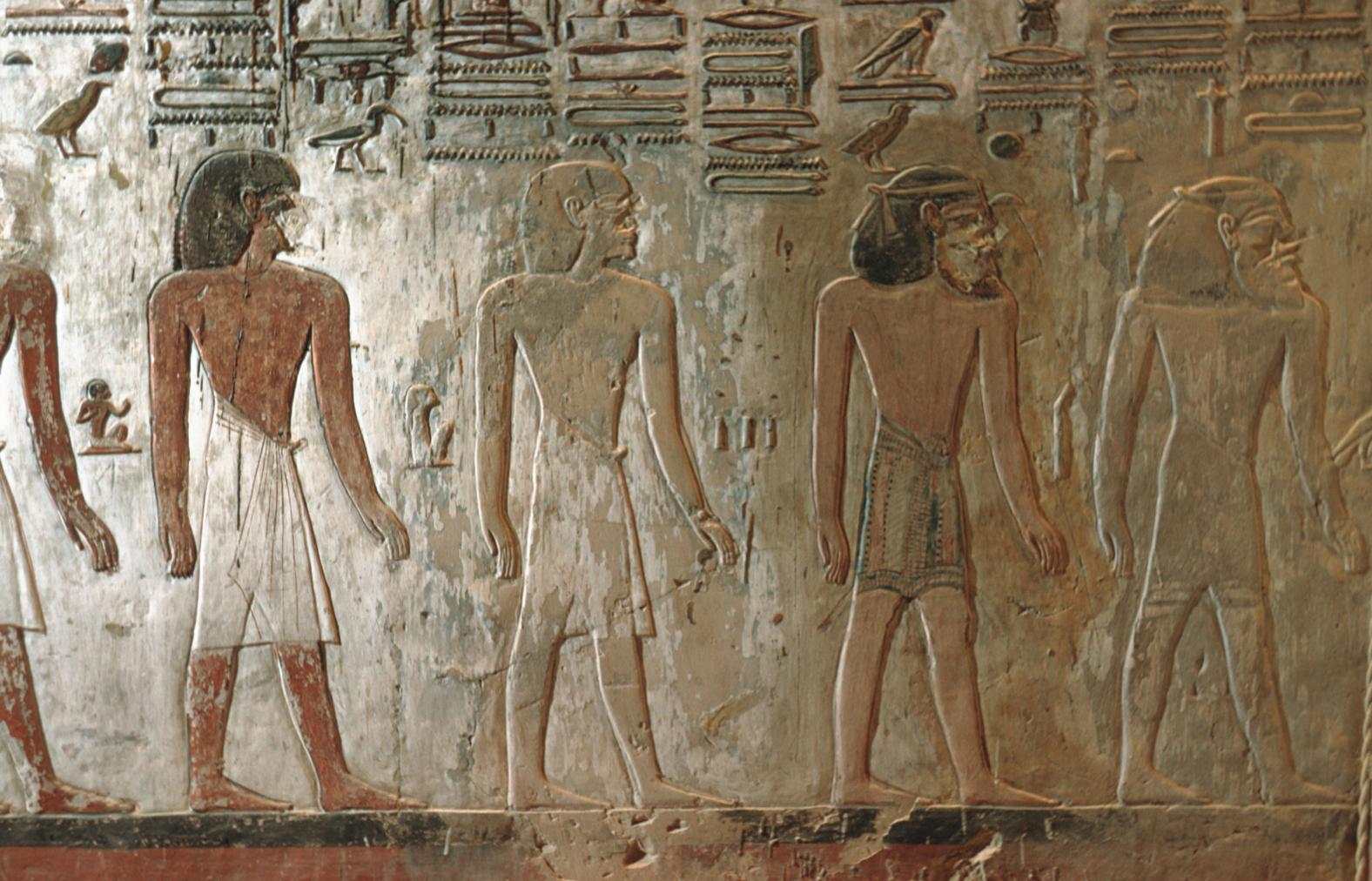
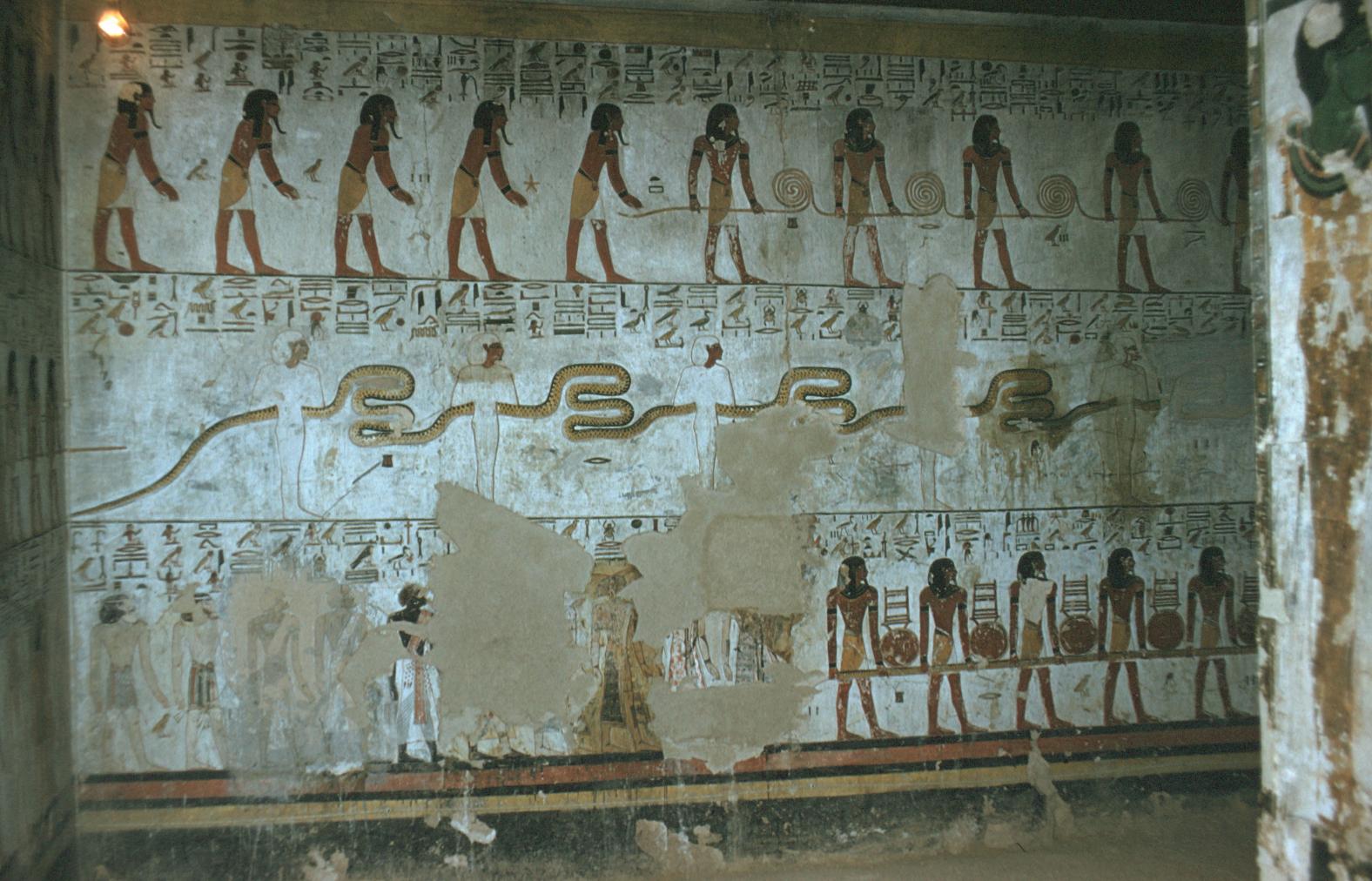
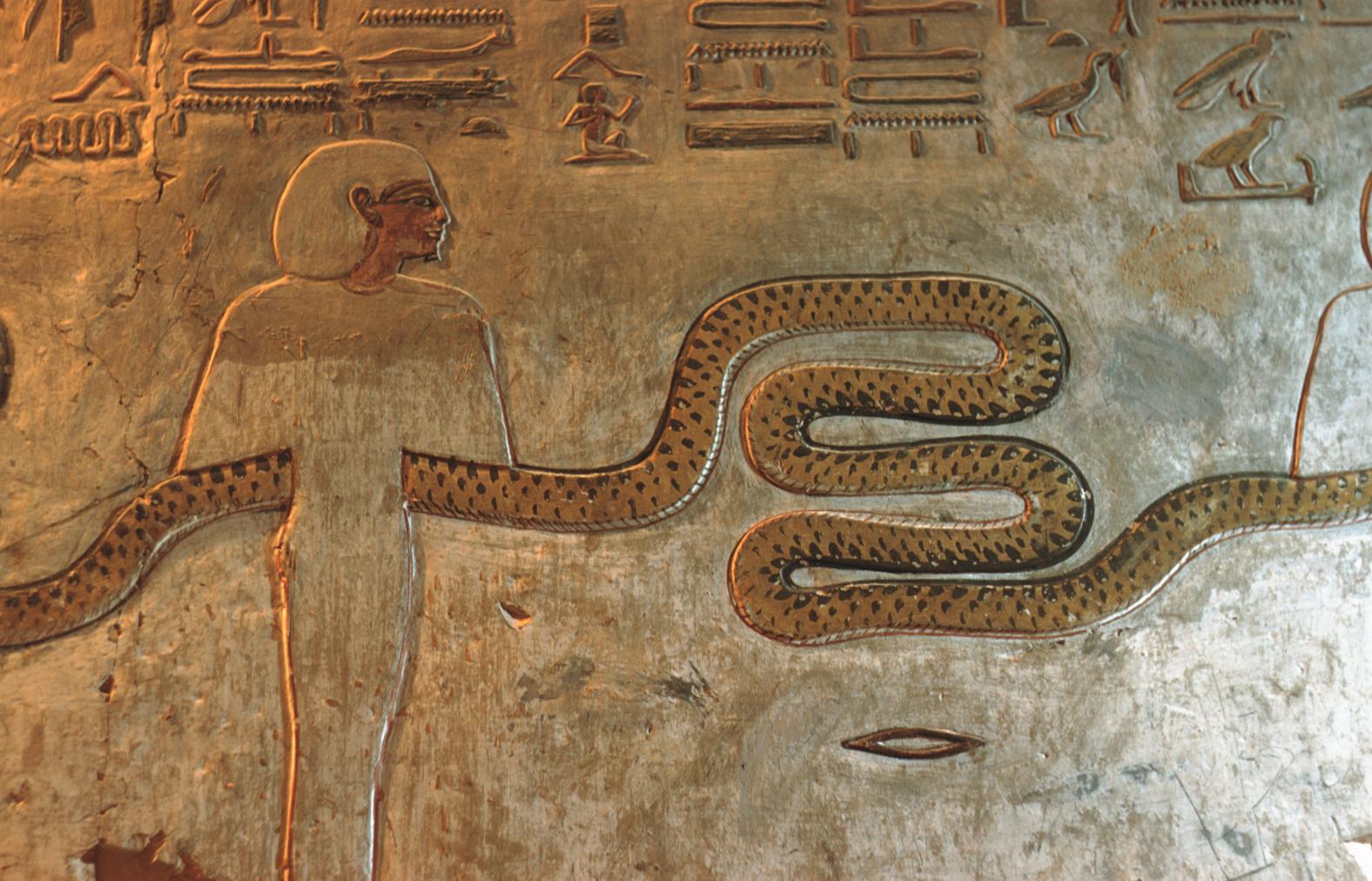
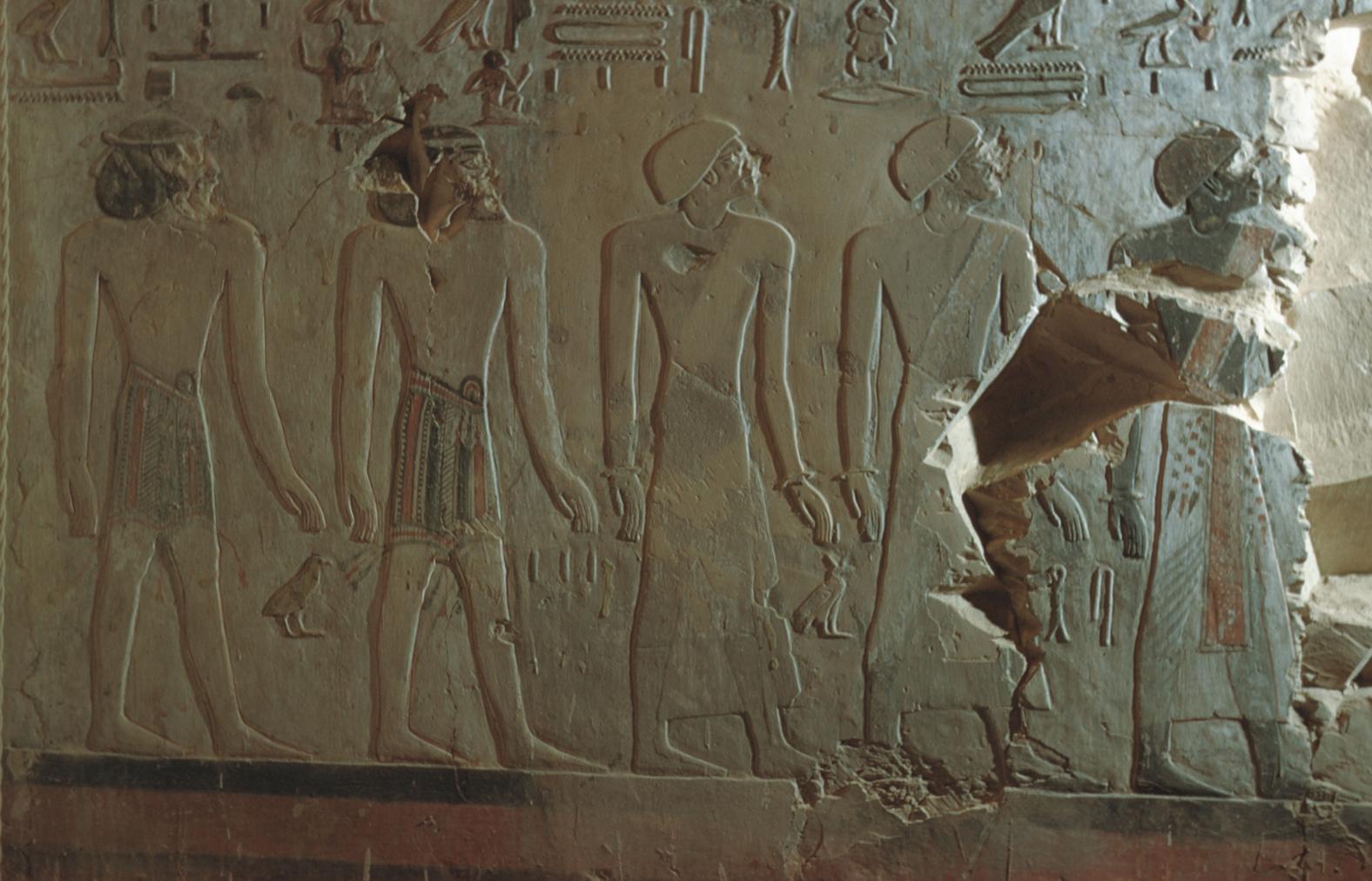
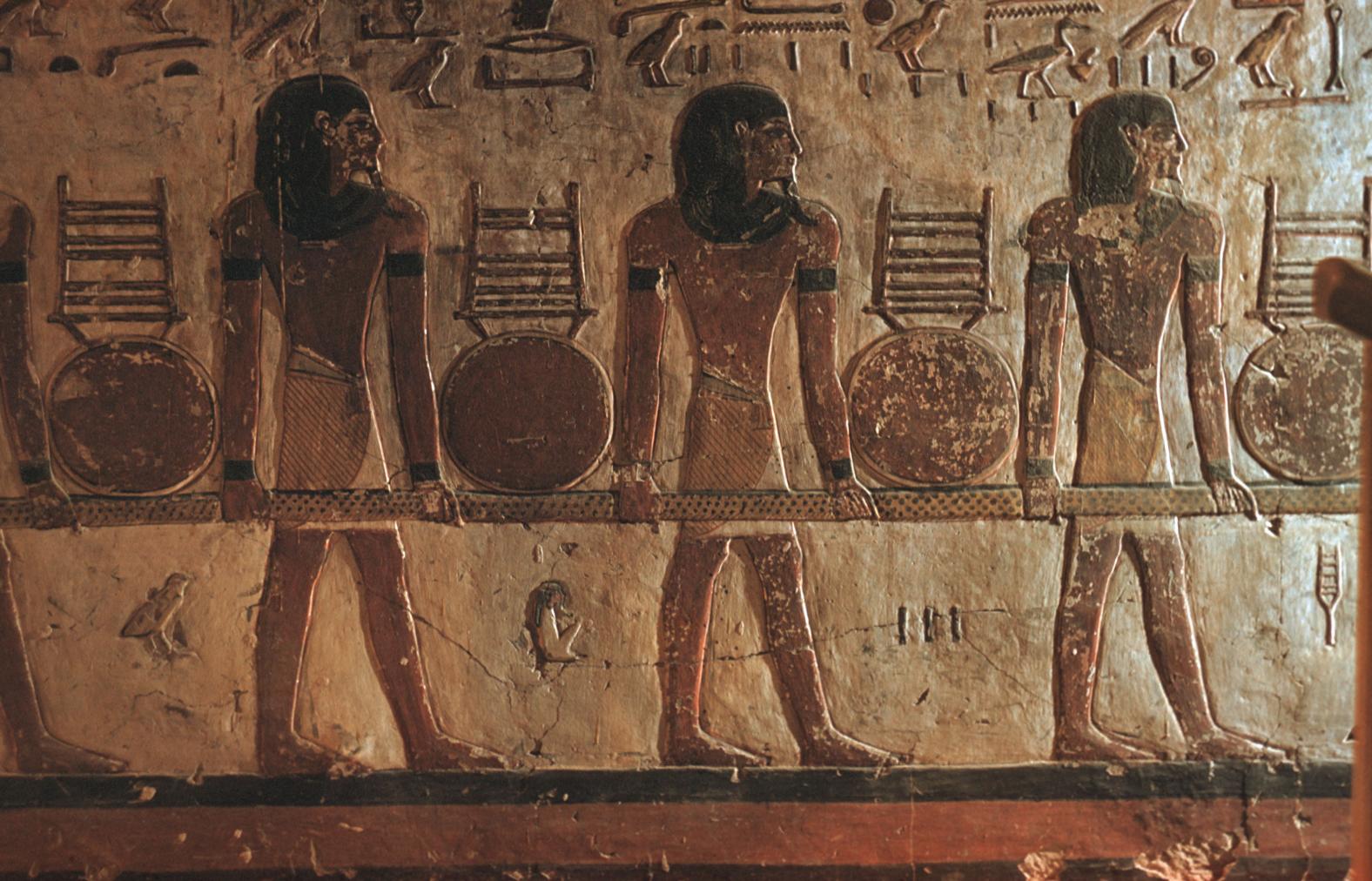
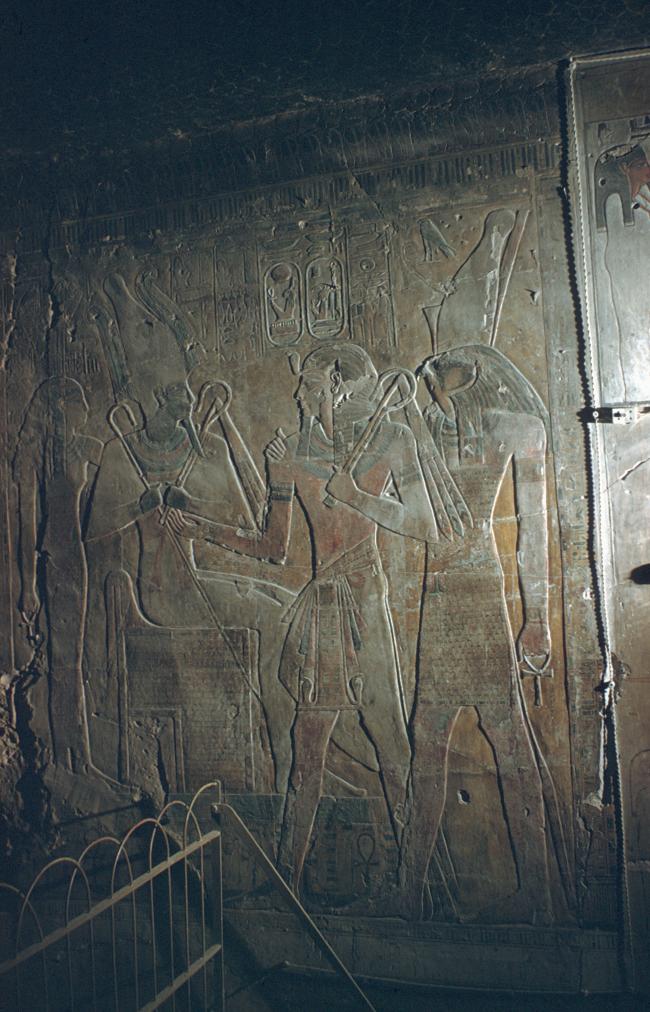
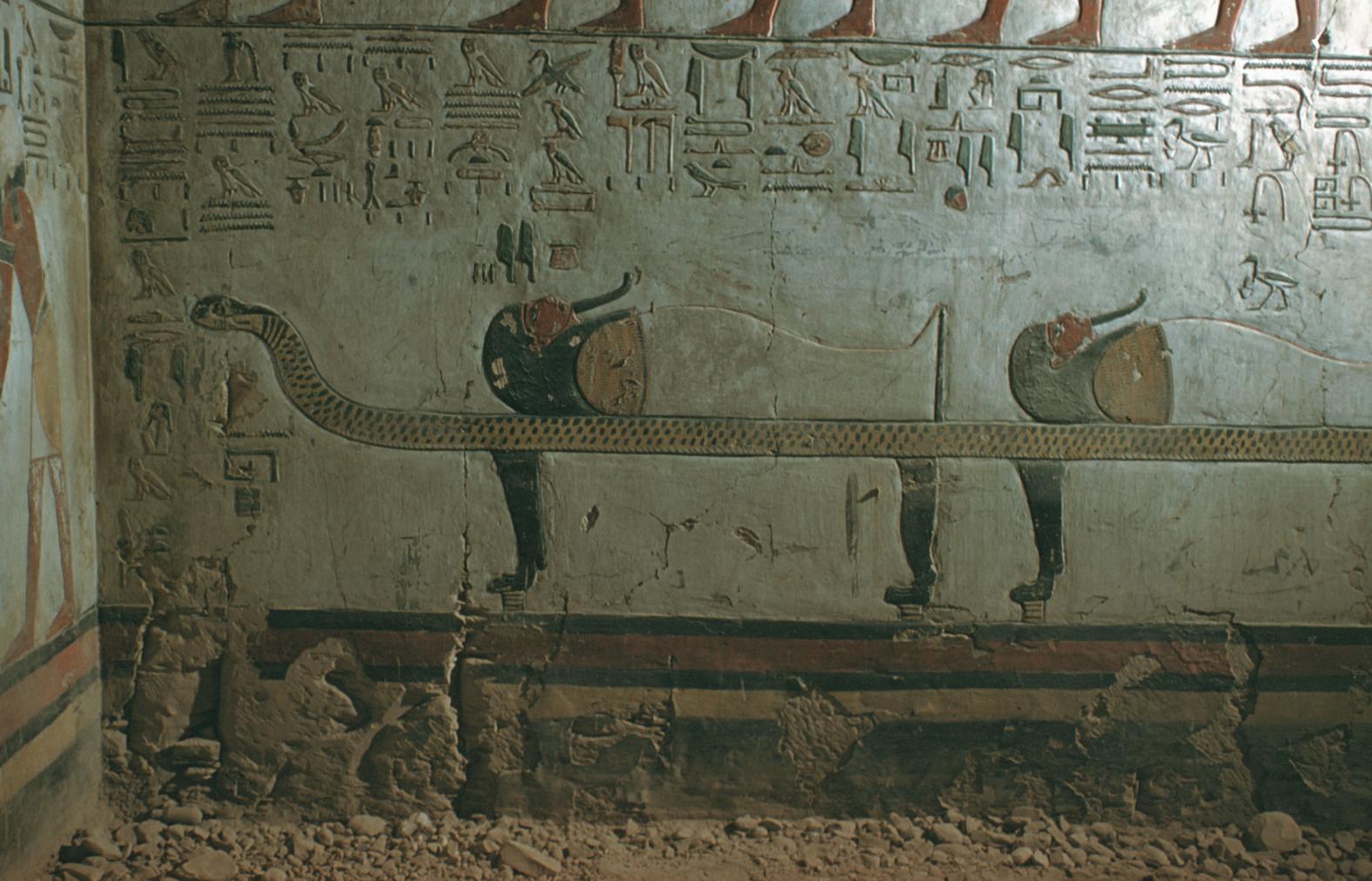
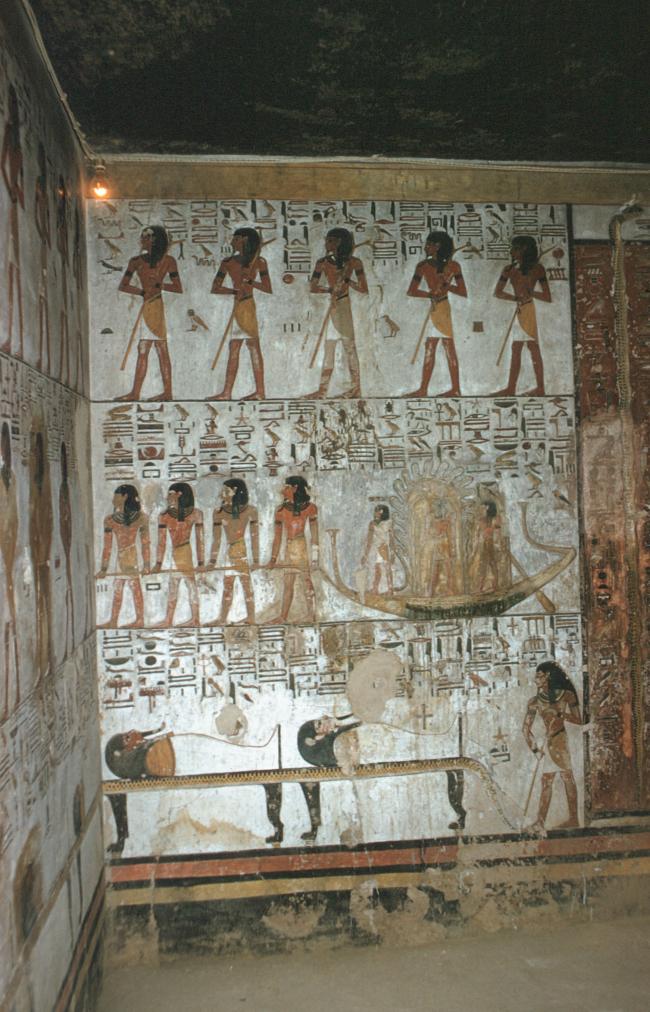
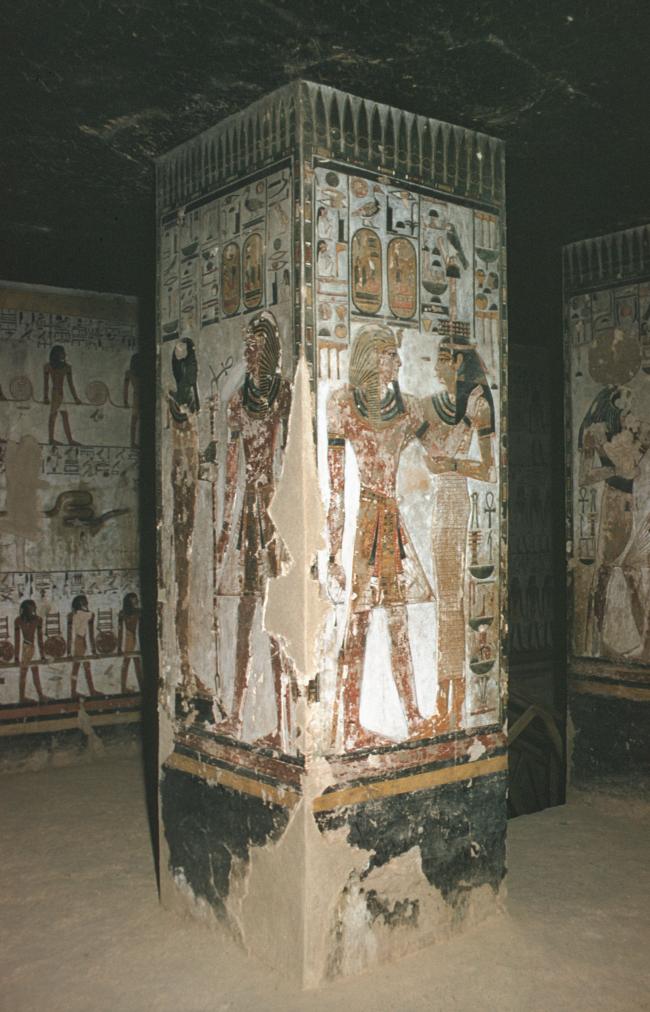
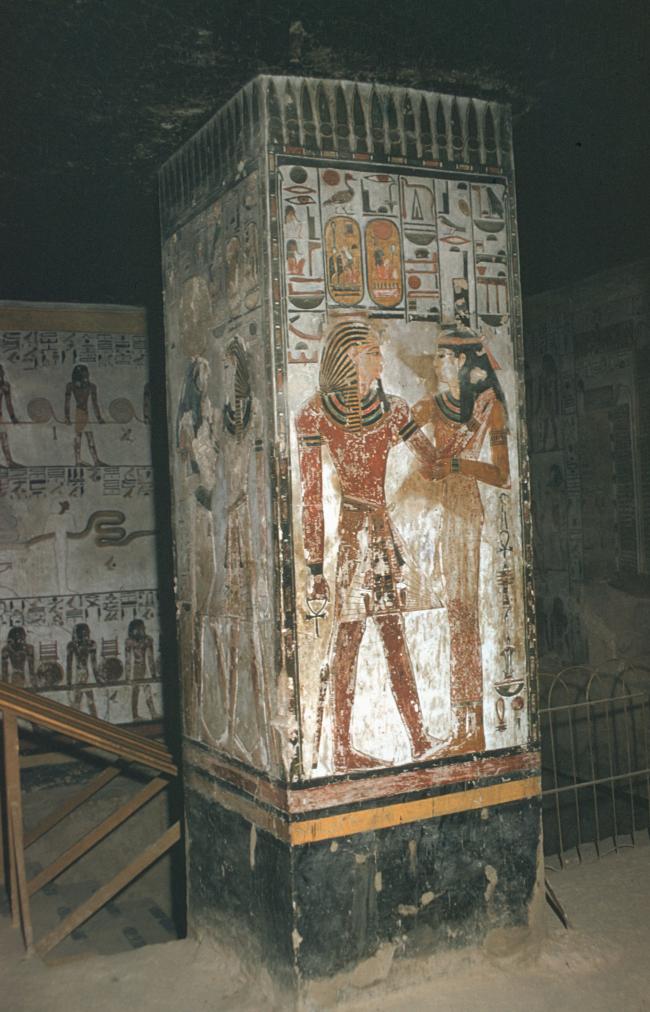
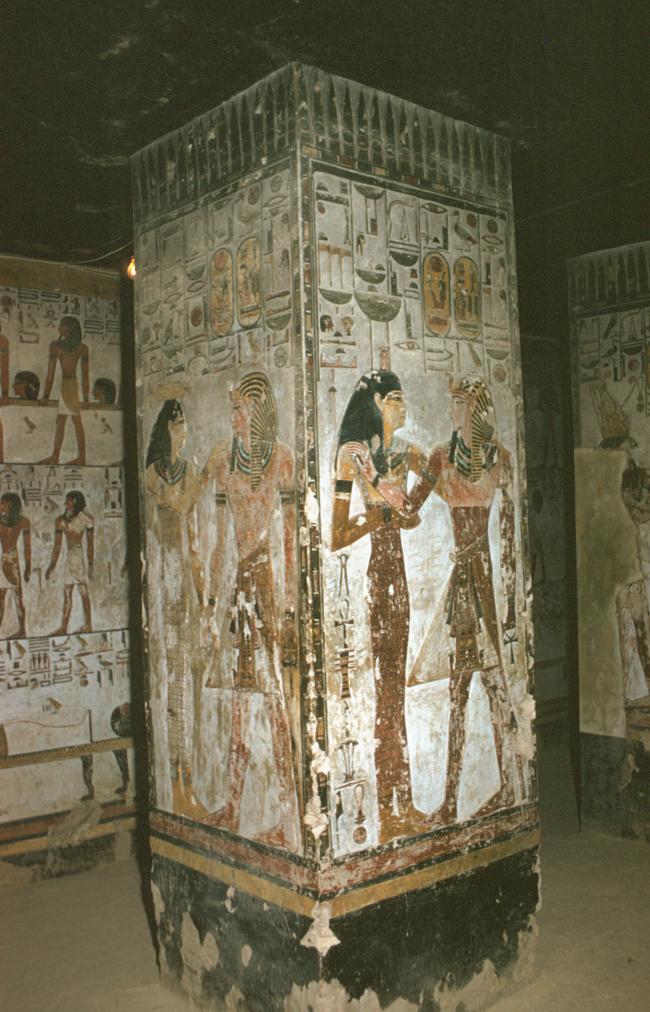
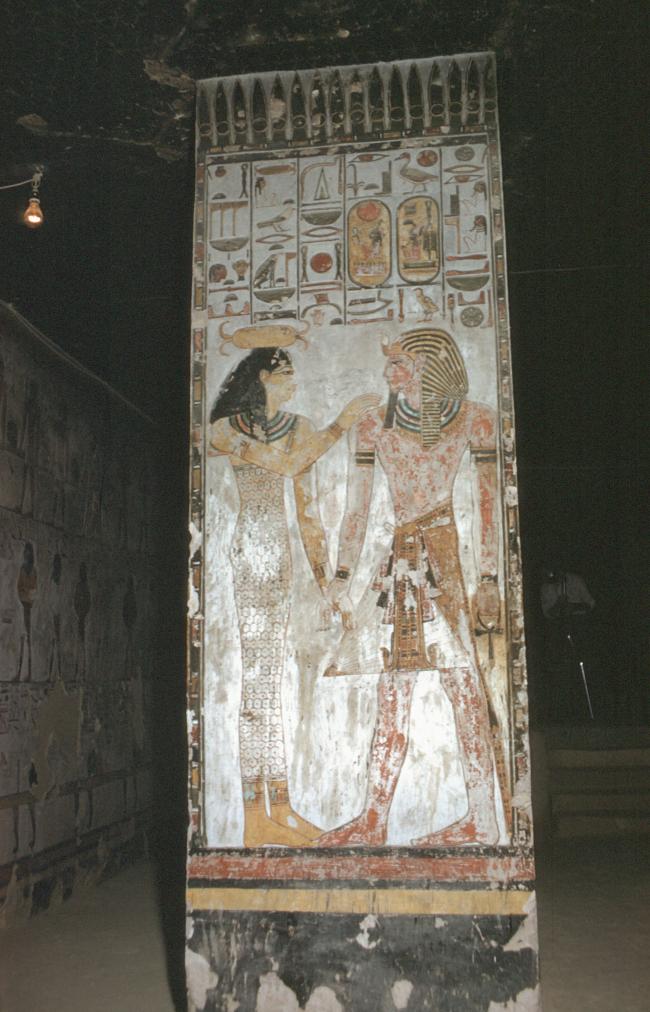
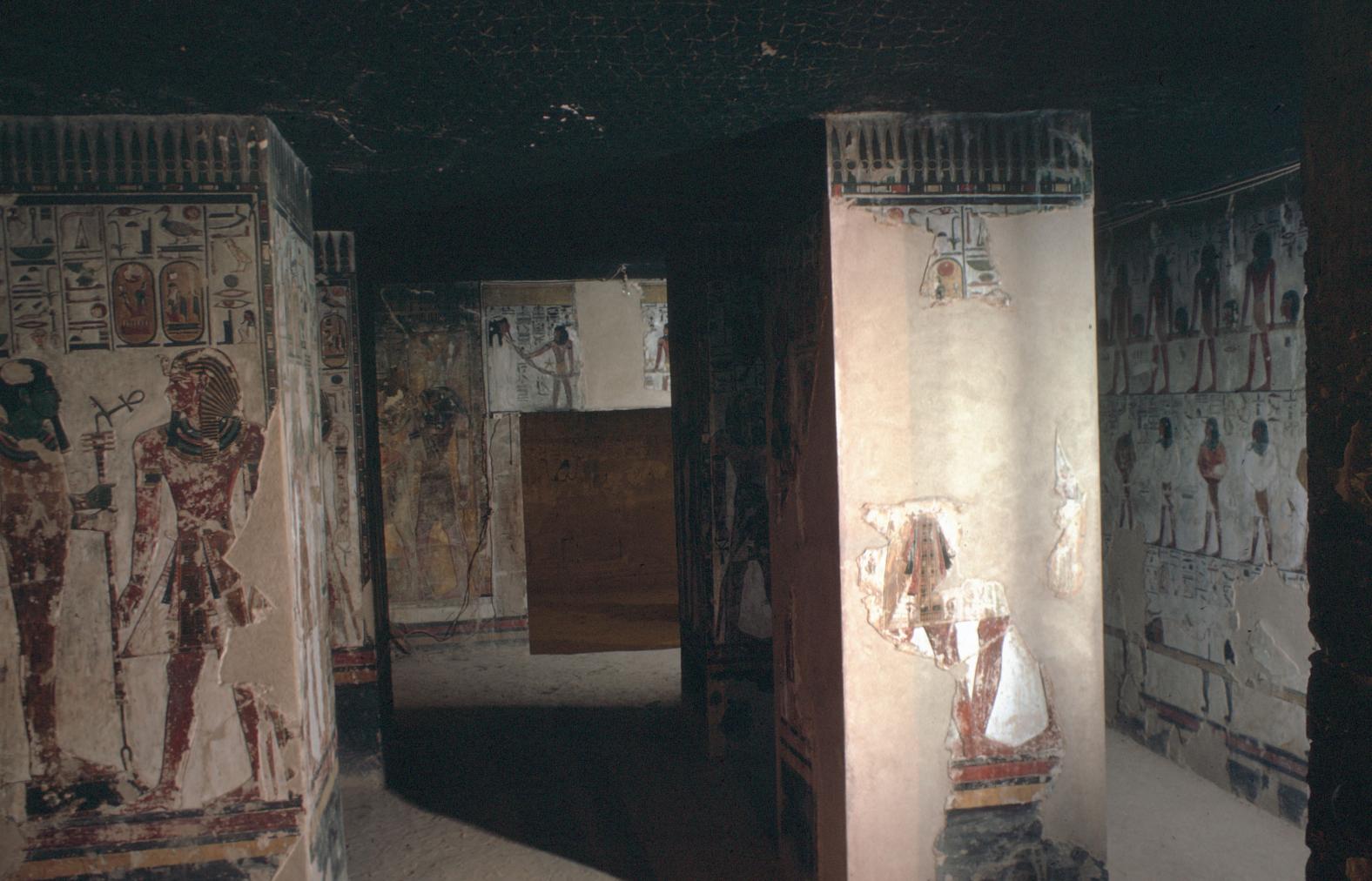
Descent F
See entire tombThe descent is situated to the rear in the southern corner of pillared chamber F.
Porter and Moss designation:
Gate Fa
See entire tombThe outer thicknesses are decorated with texts and figures from the fifth division (P)/sixth hour (H) of the Book of Gates. On the inner thicknesses are texts from the beginning of the ninth and eleventh hours of the Imydwat.
Porter and Moss designation:
Side chamber Fa
See entire tombThe floor of side chamber Fa is several steps lower than pillared chamber F and has two pillars. On the left (southeast) wall and the left (northwest) part of the front (northeast) wall is the ninth hour of the Imydwat. The tenth and eleventh hours cover the right (southeast) part of the front wall, the right (northwest) wall, and the rear (southwest) wall. All the decoration is drawn in black outline only. There is a break in the bottom of the left wall into corridor G. On the pillars, the king is shown with several deities.
Porter and Moss designation:
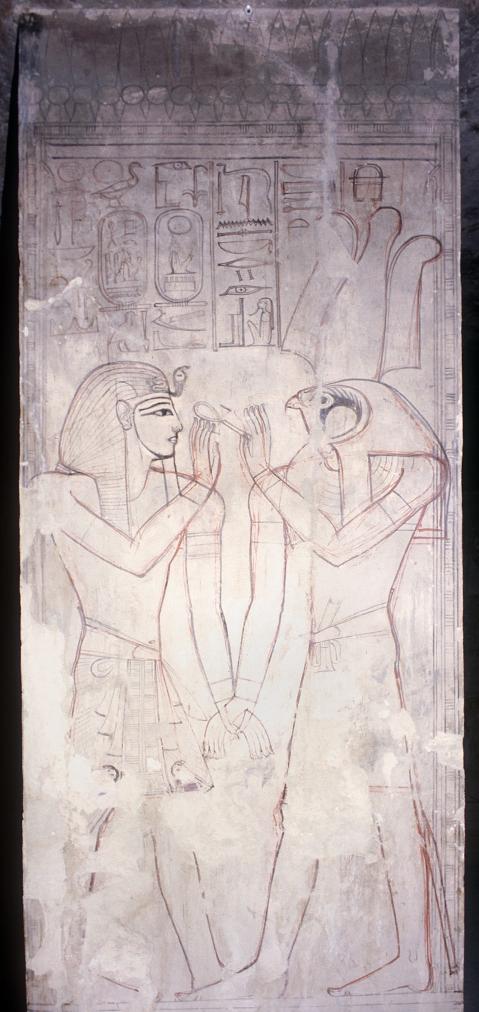
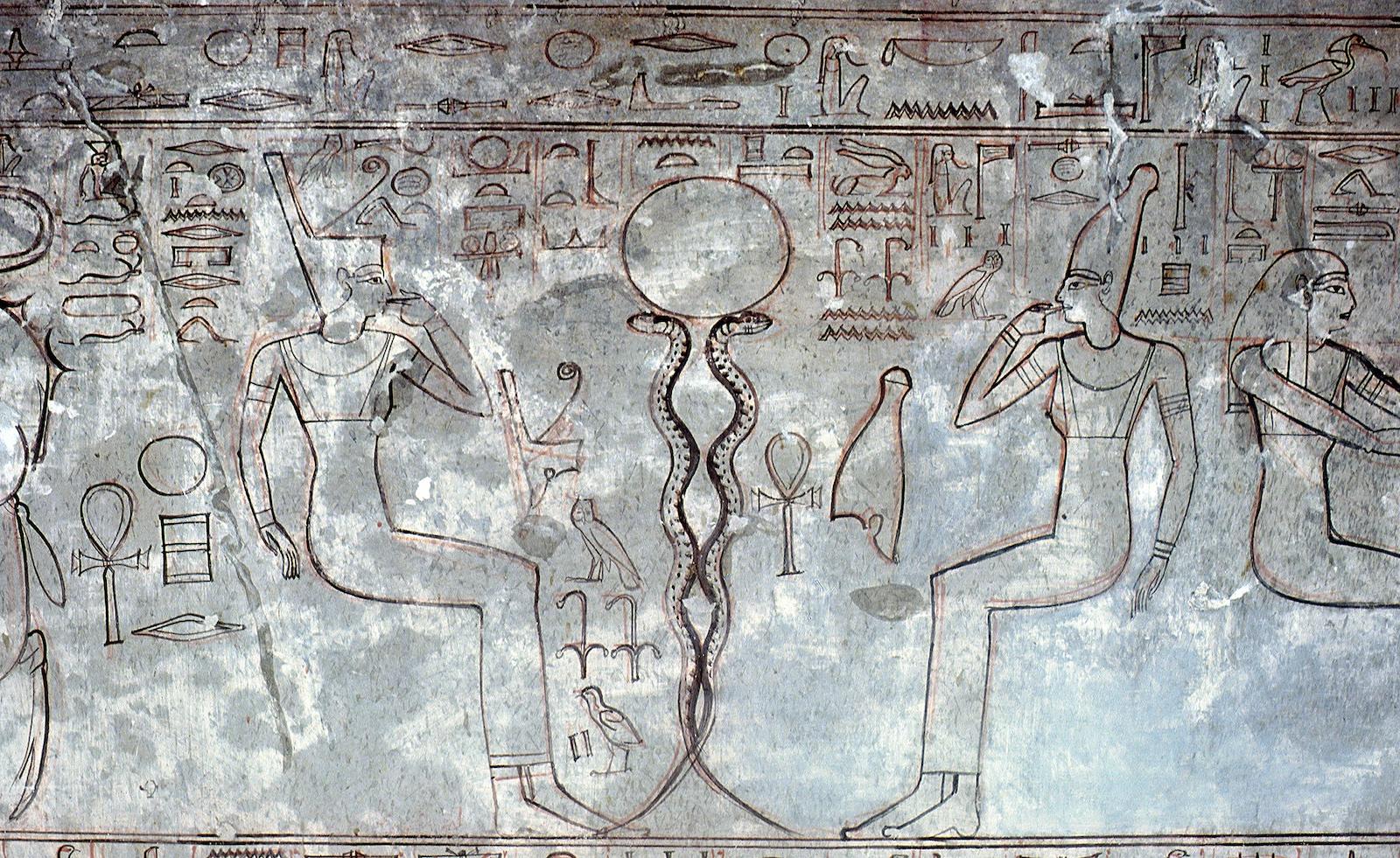
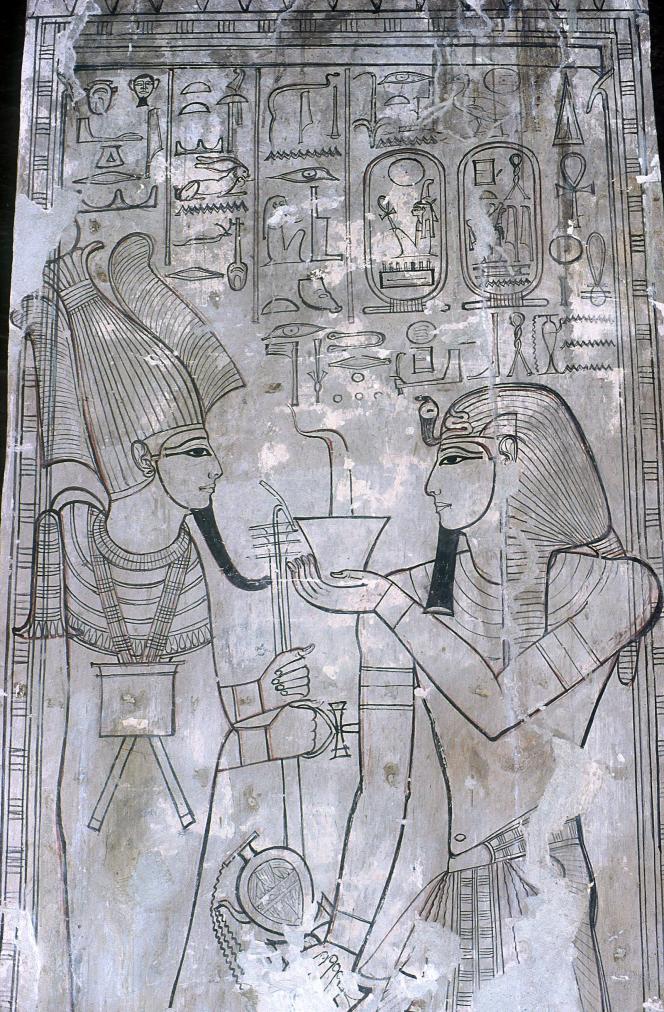
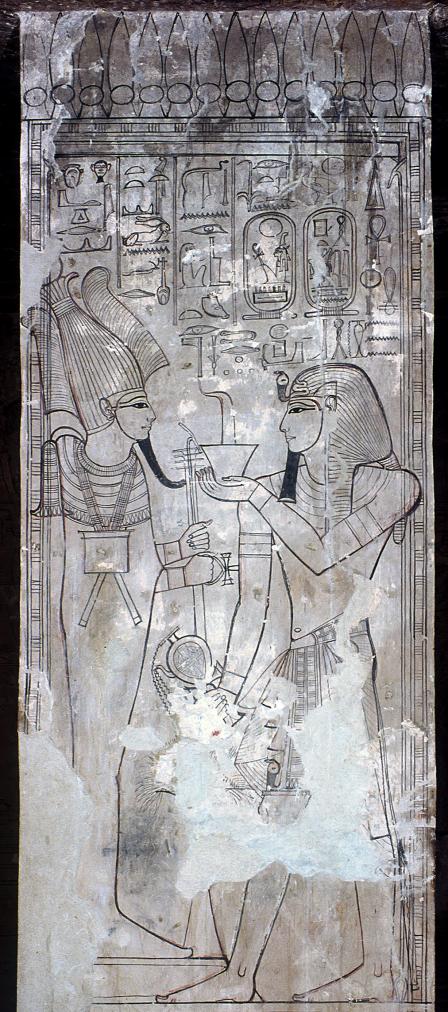
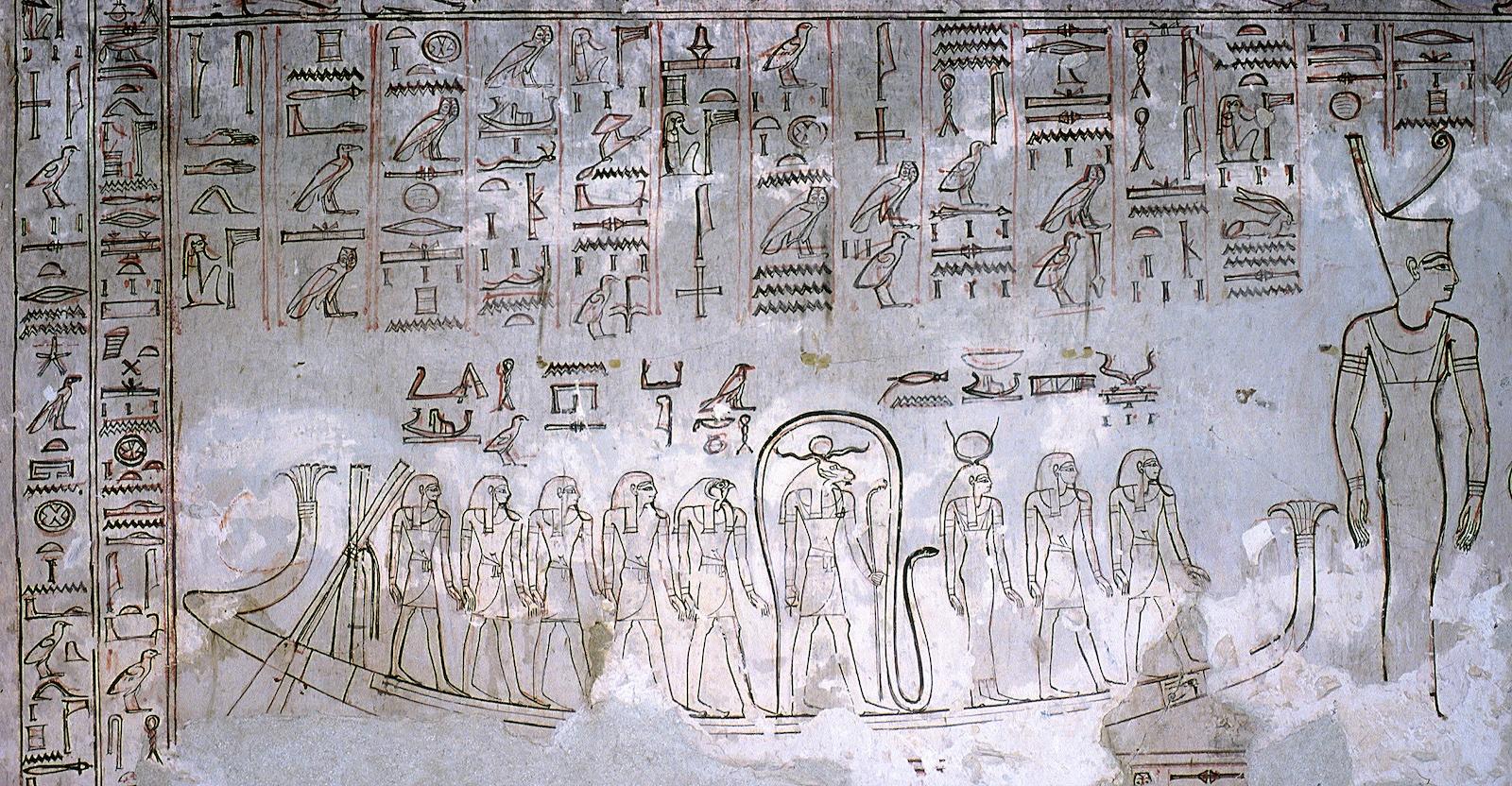
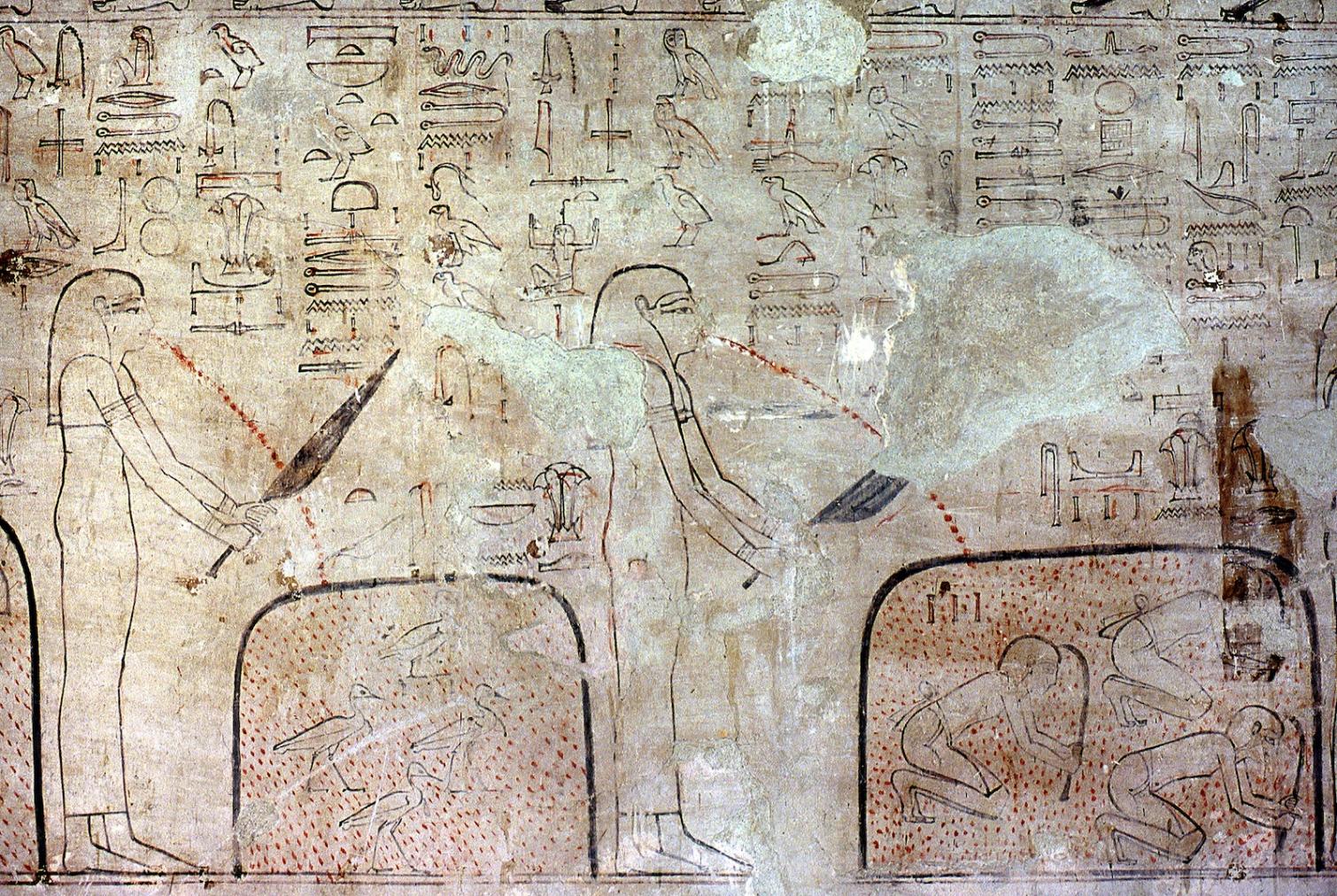
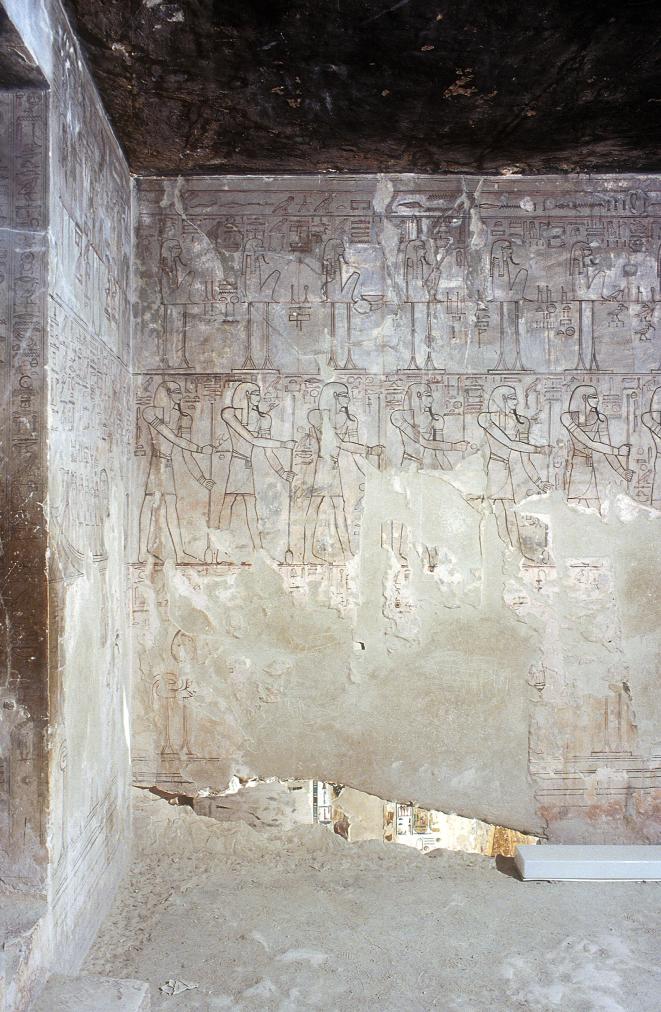
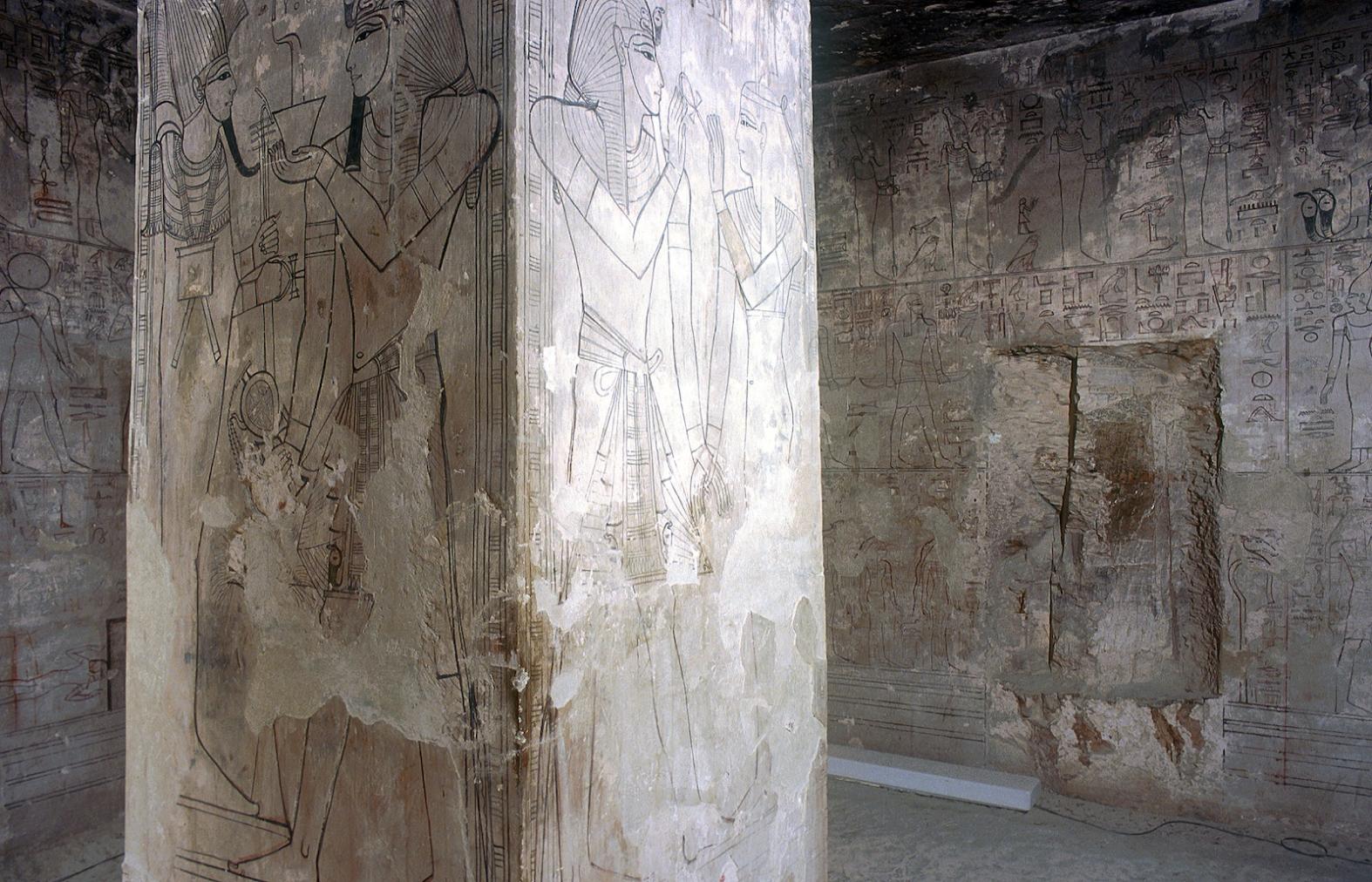
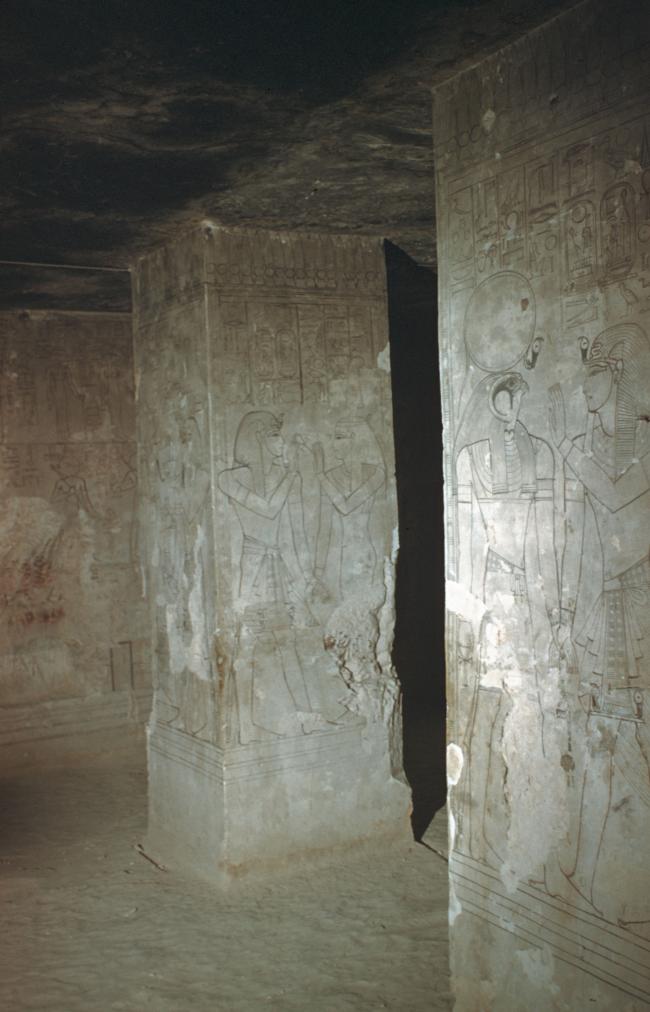
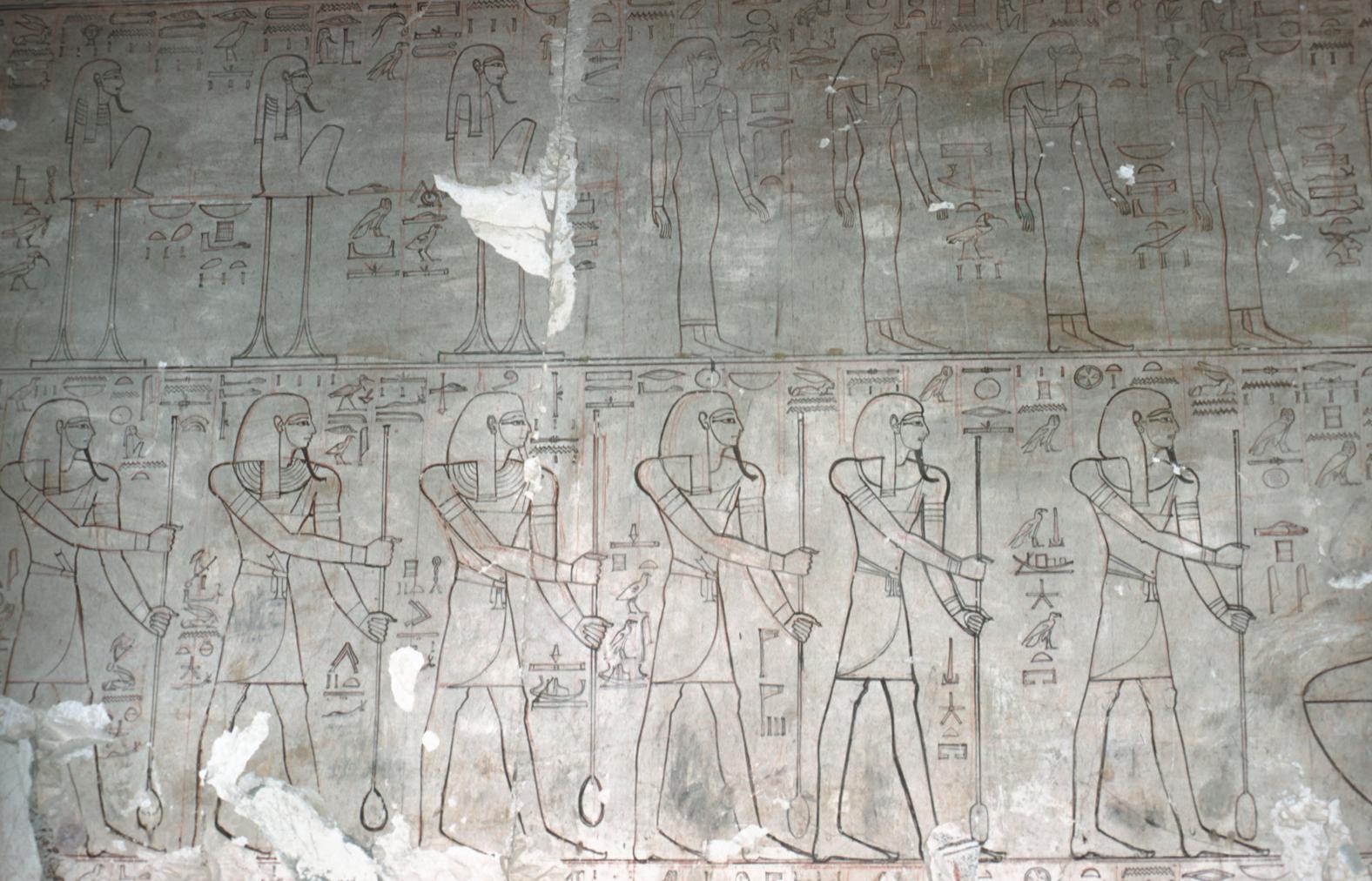
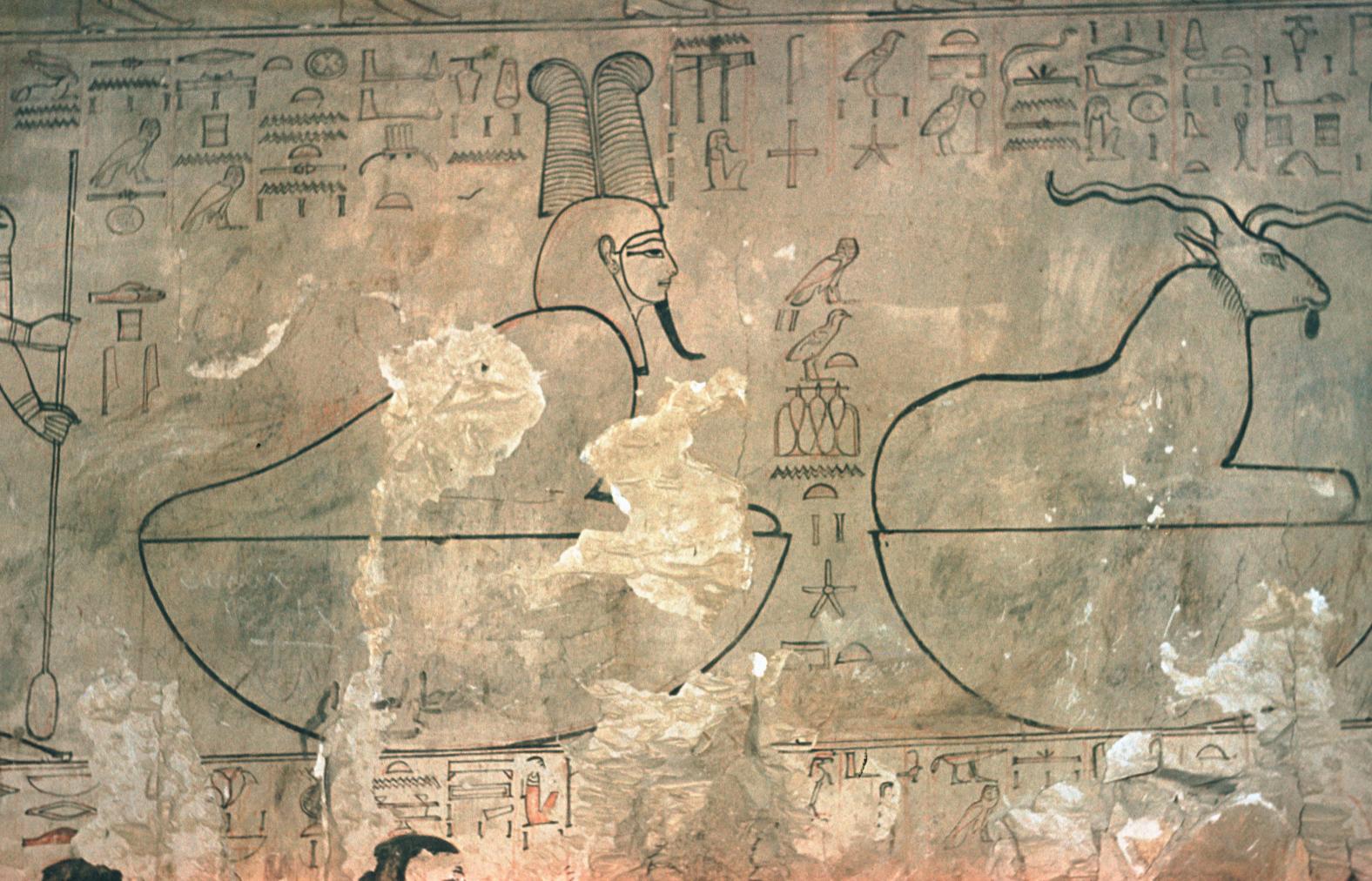
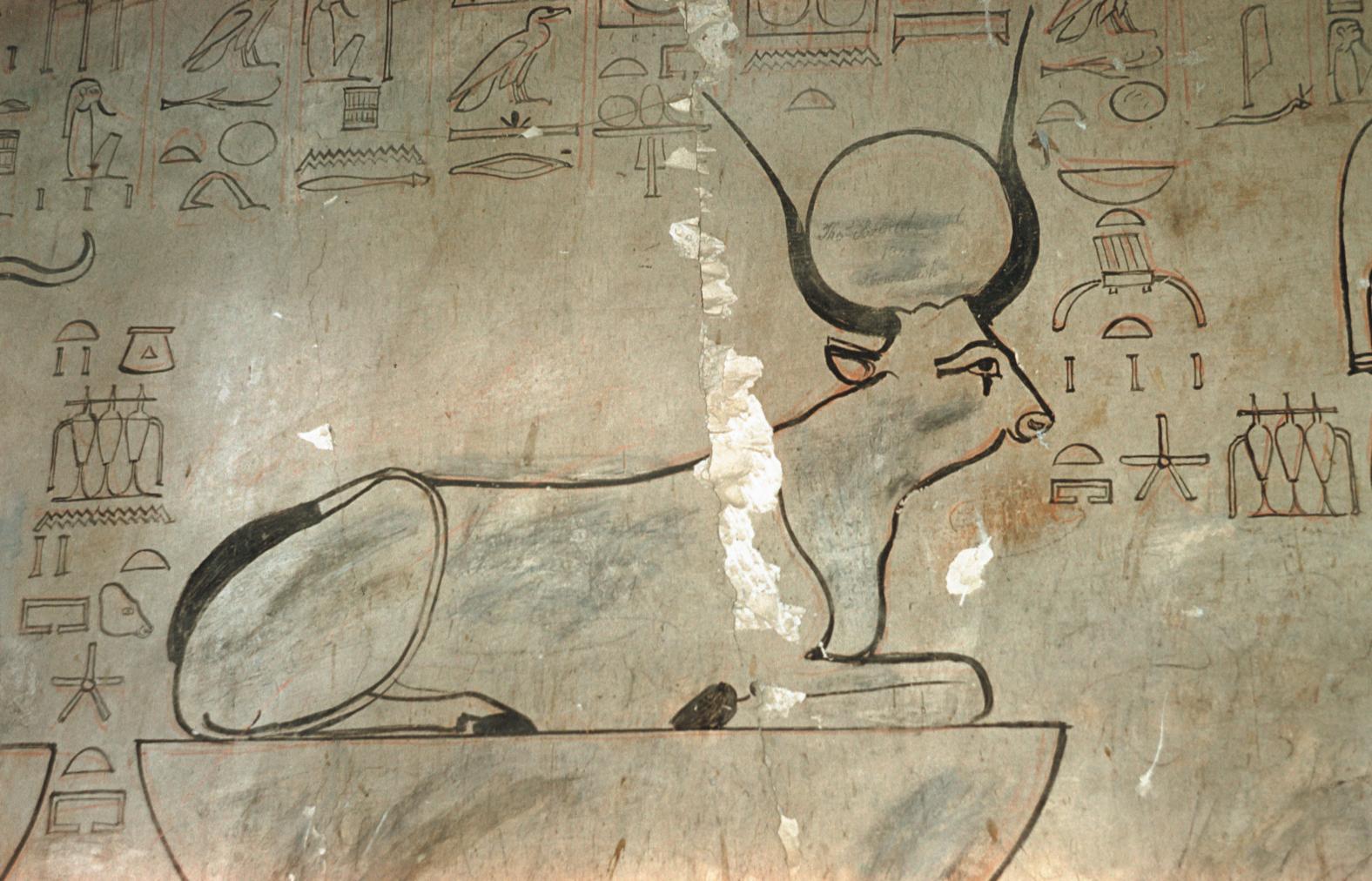
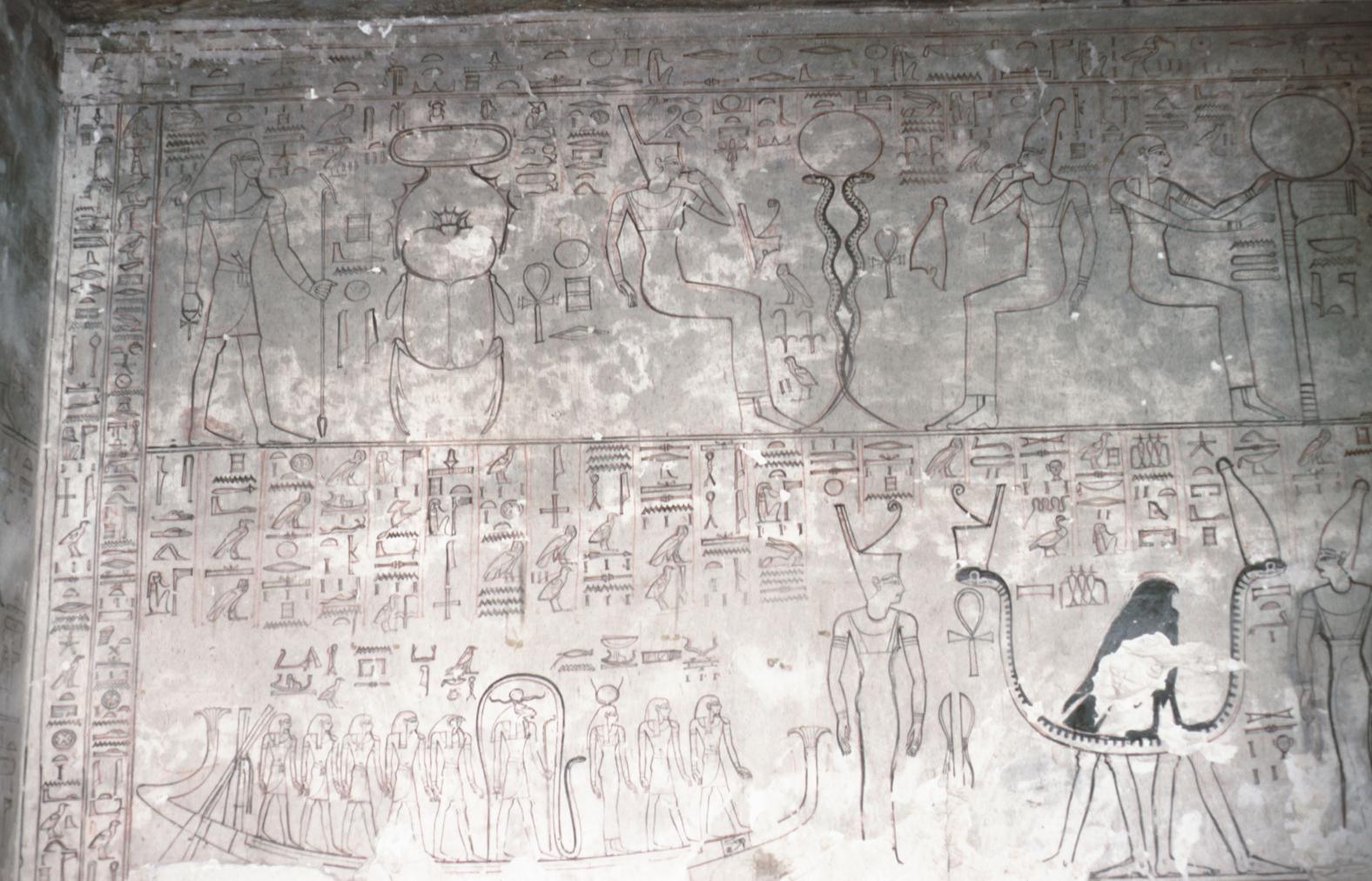
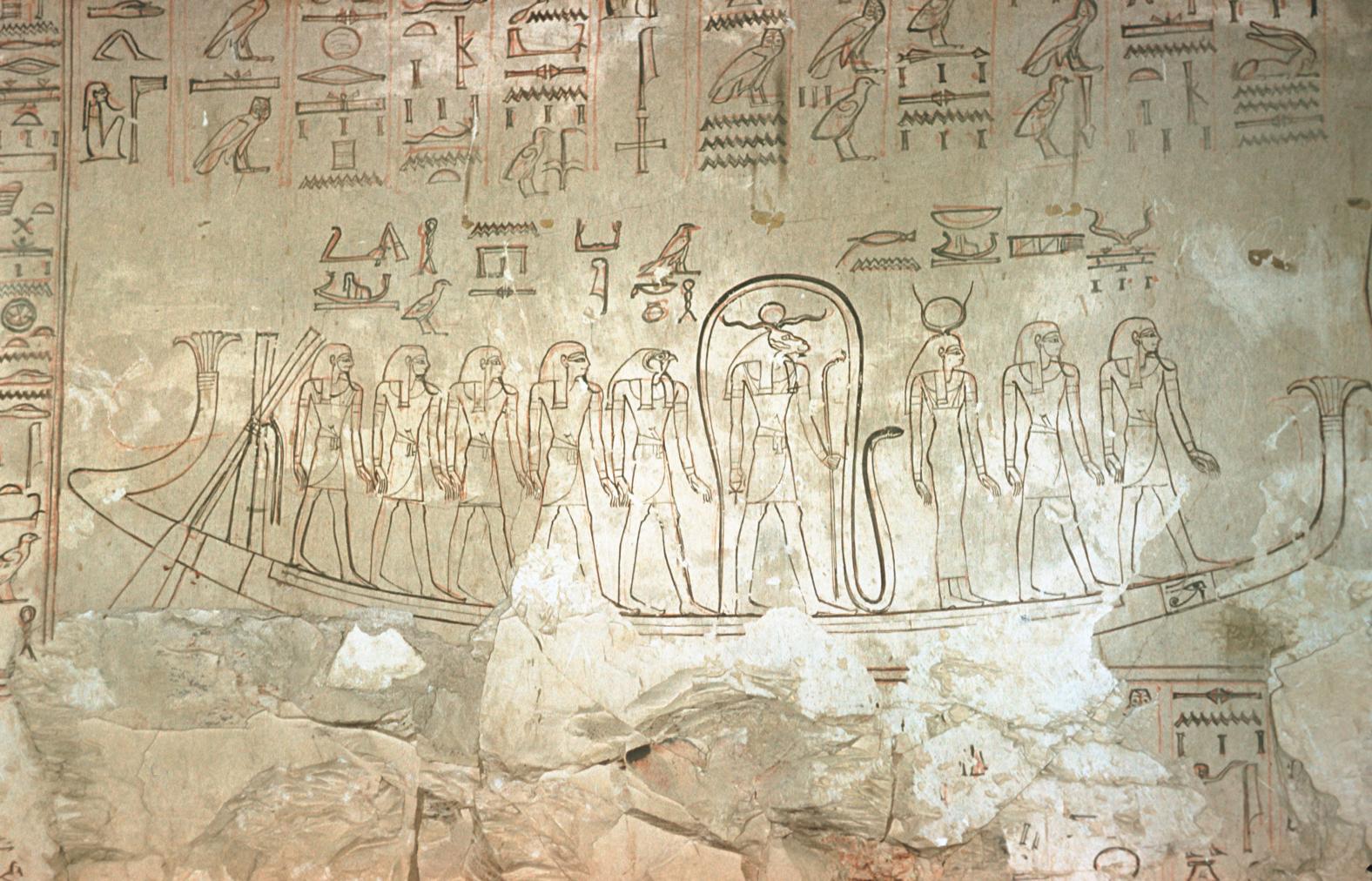
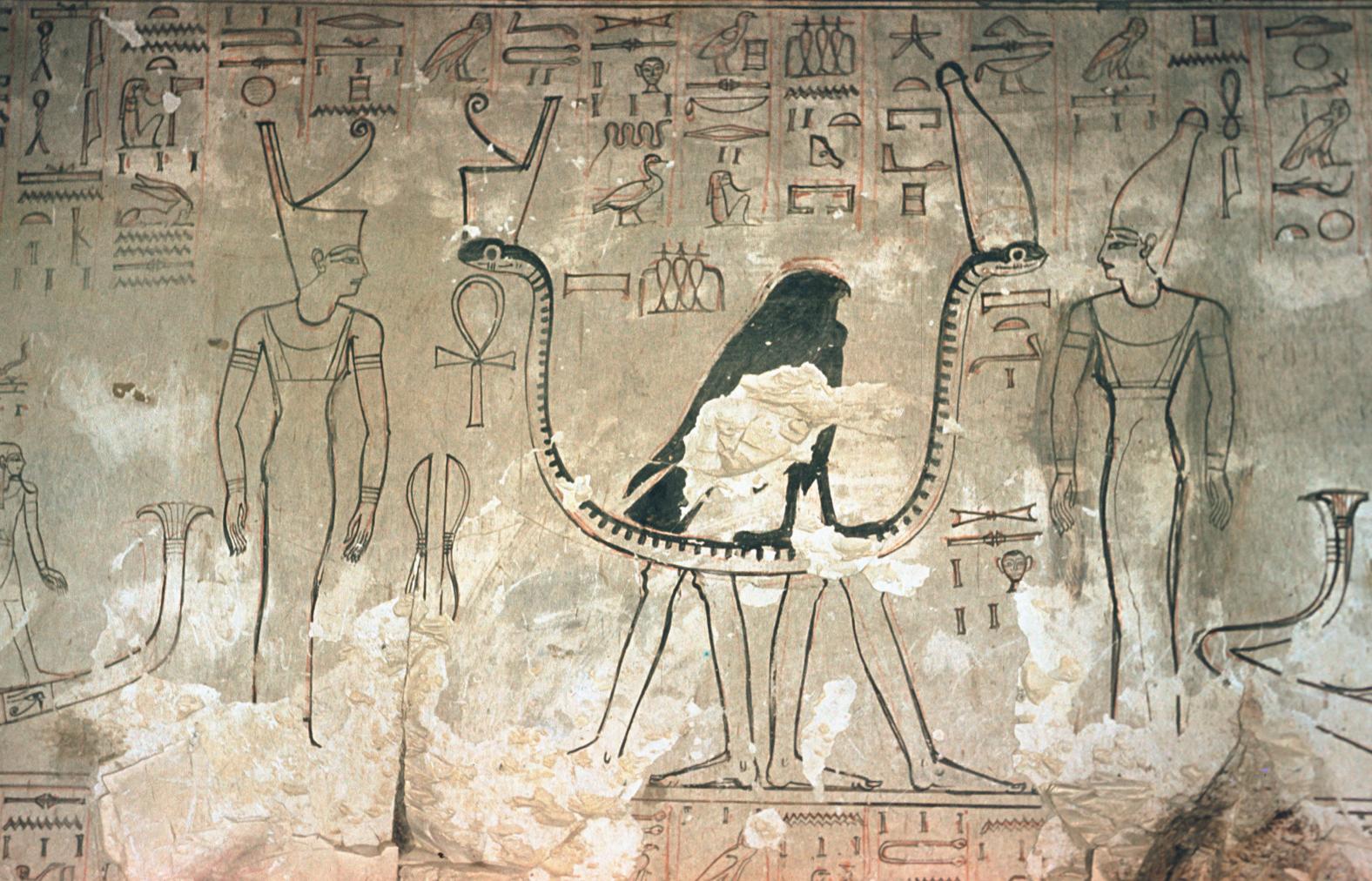
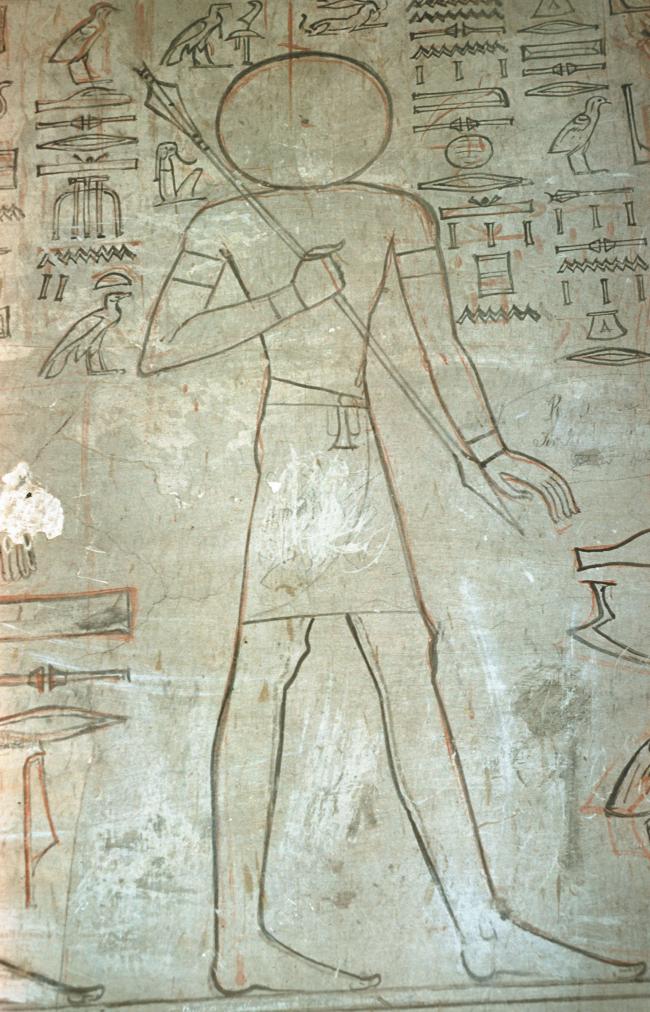
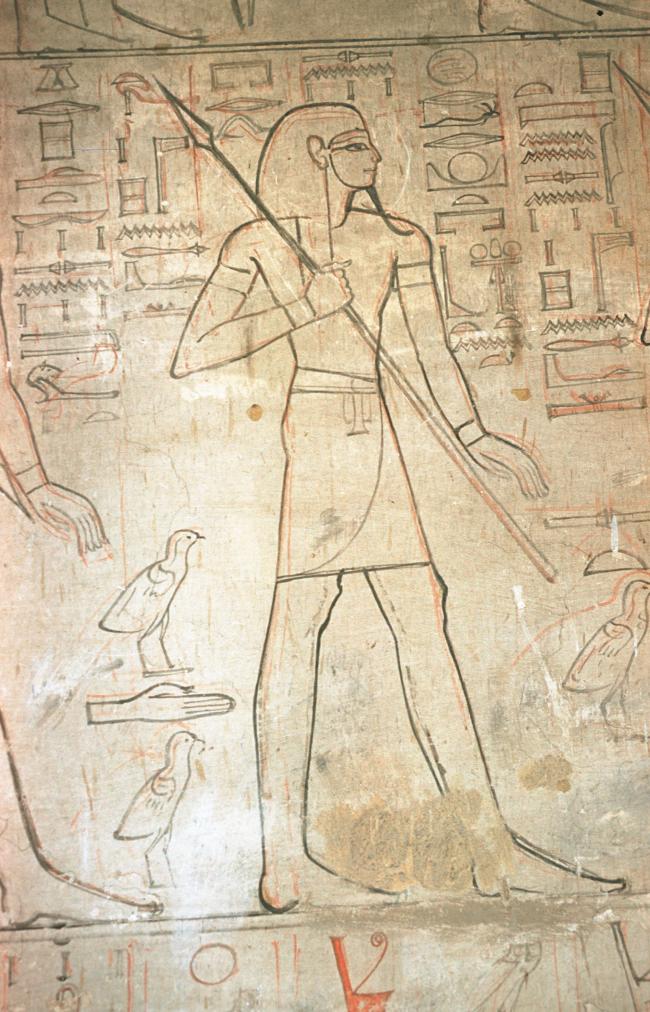
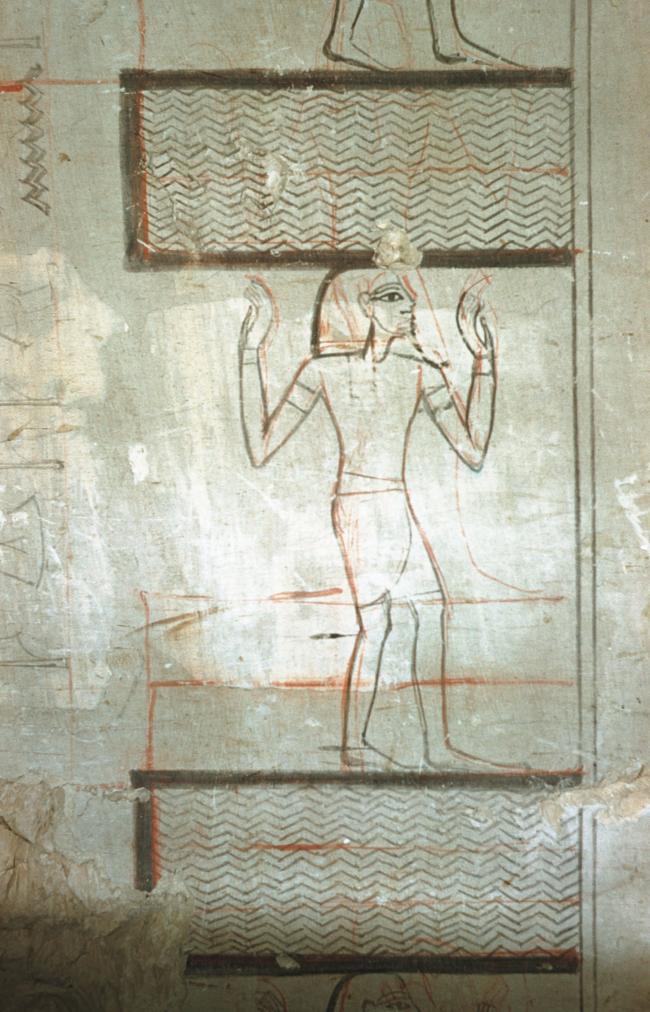
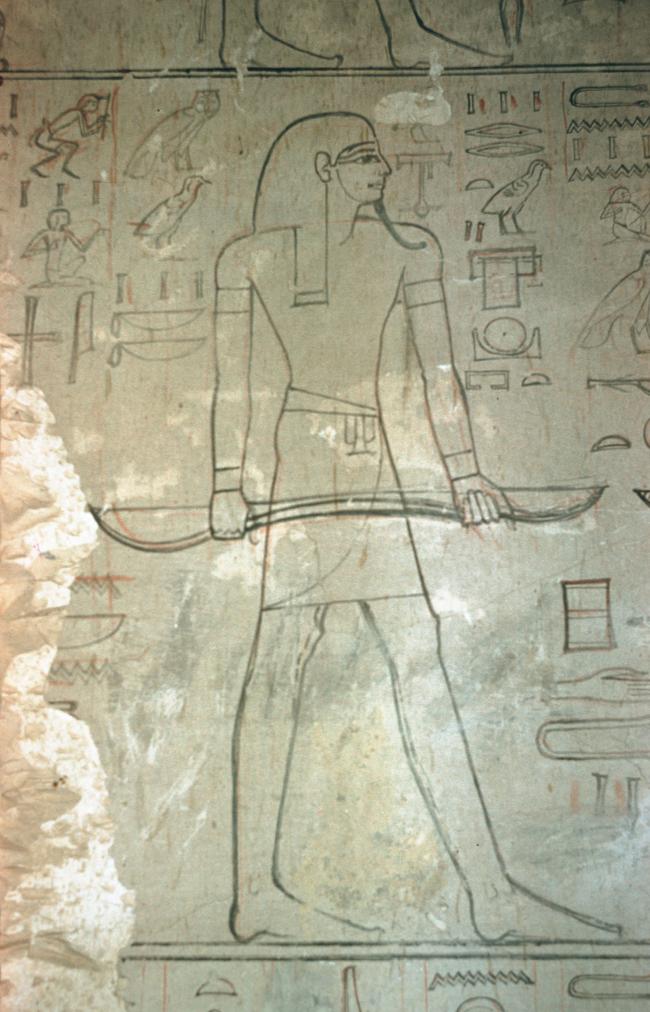
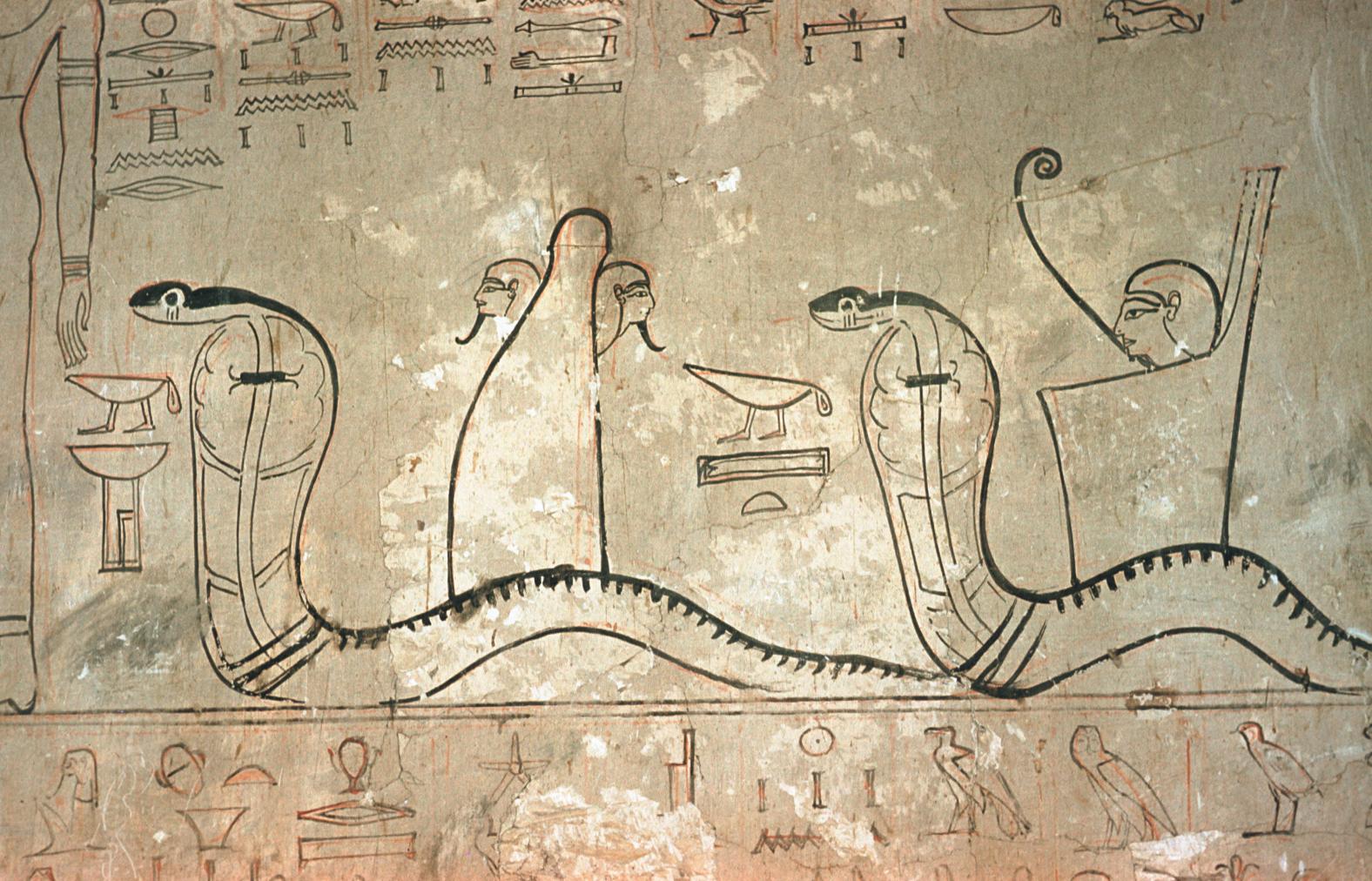
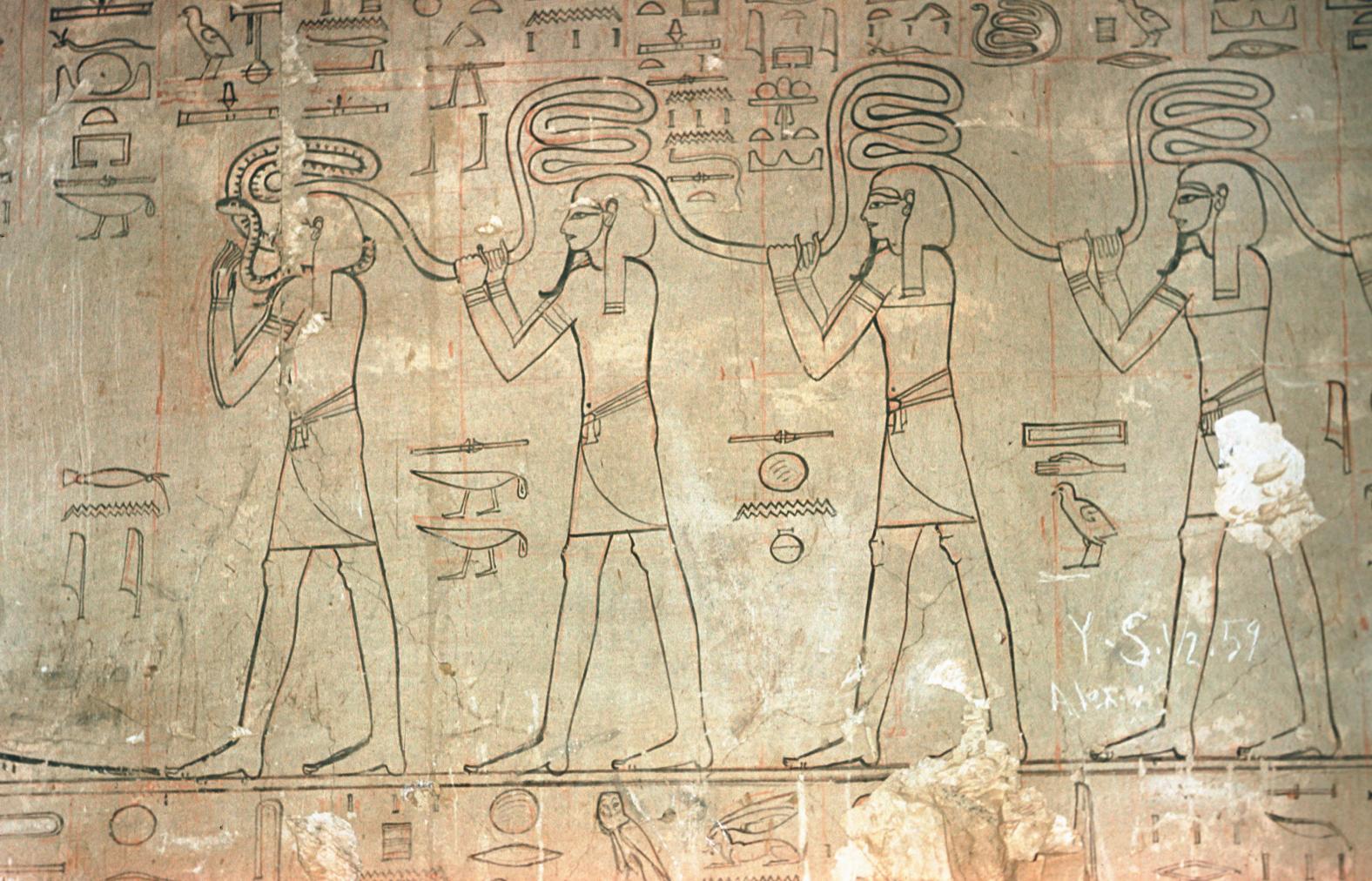
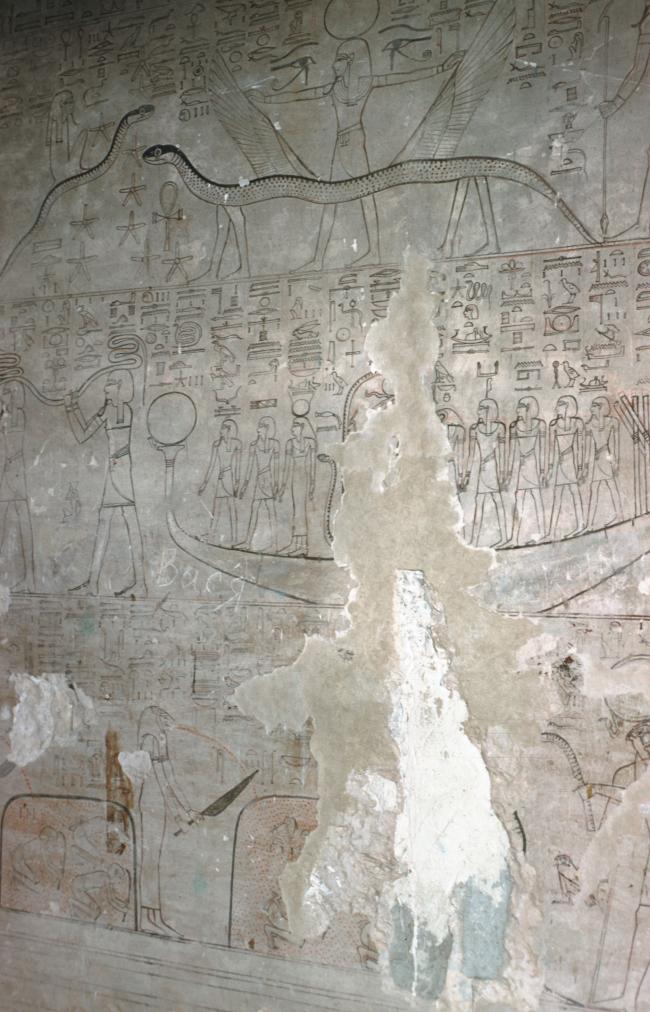
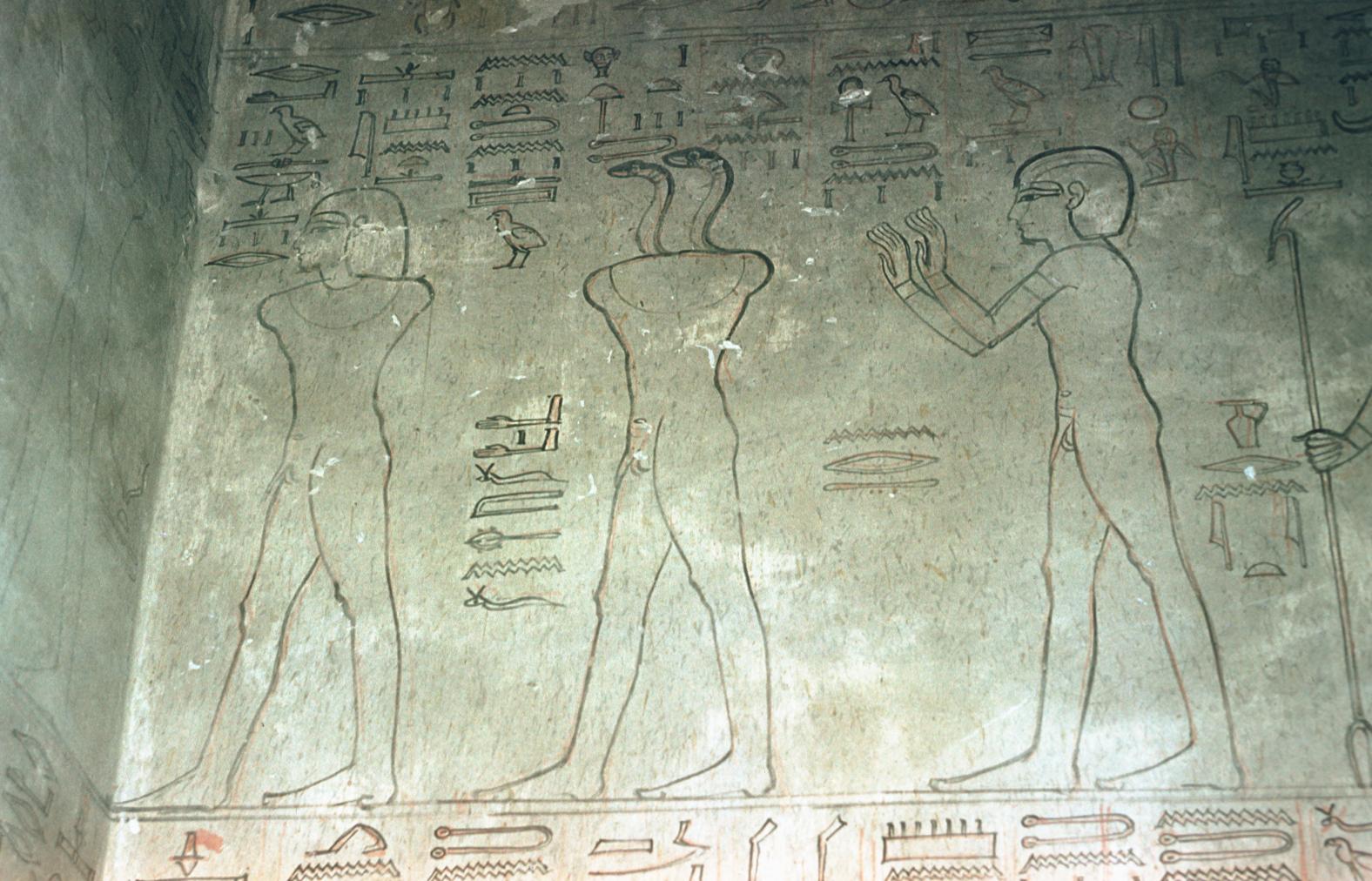
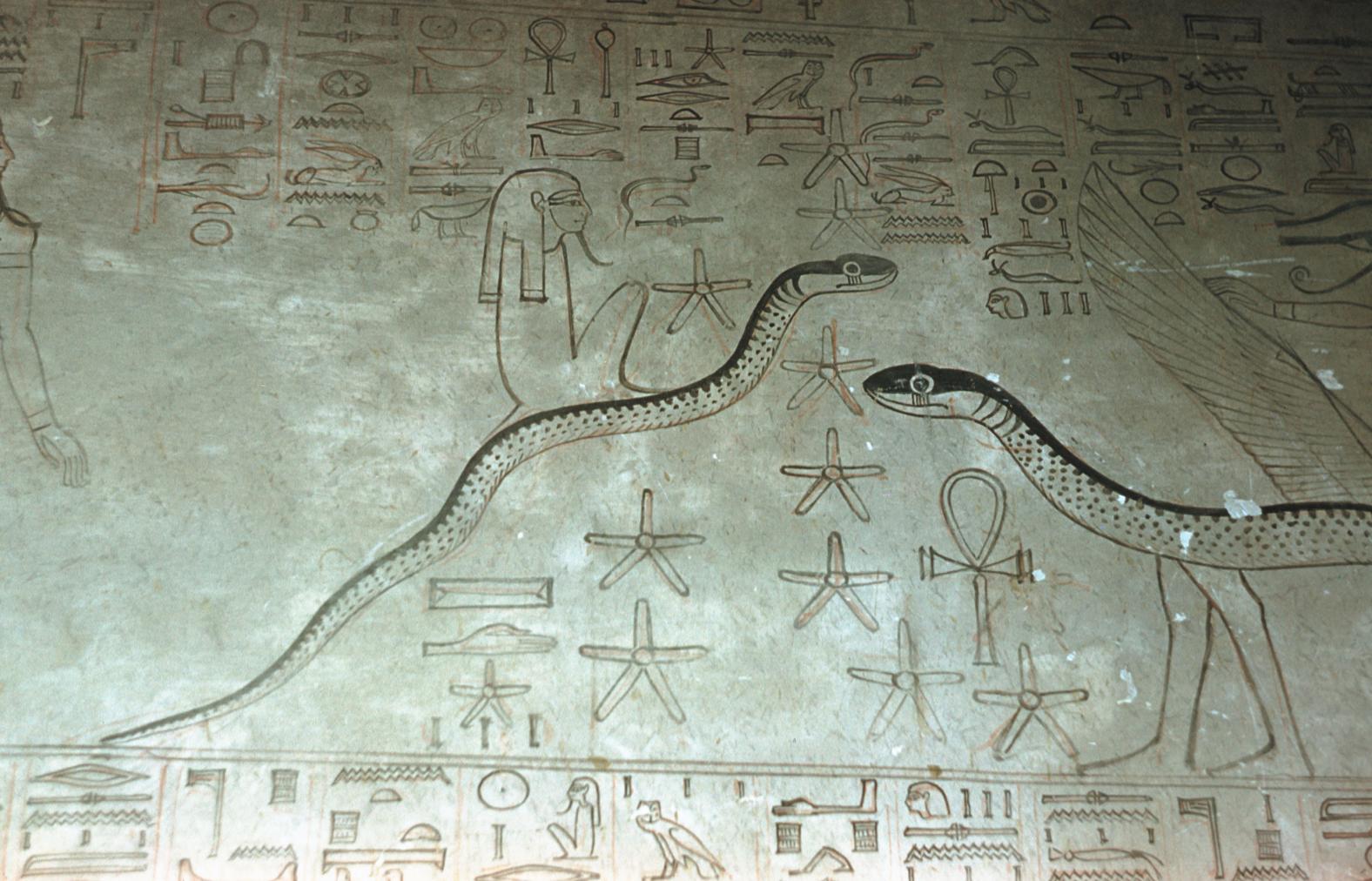
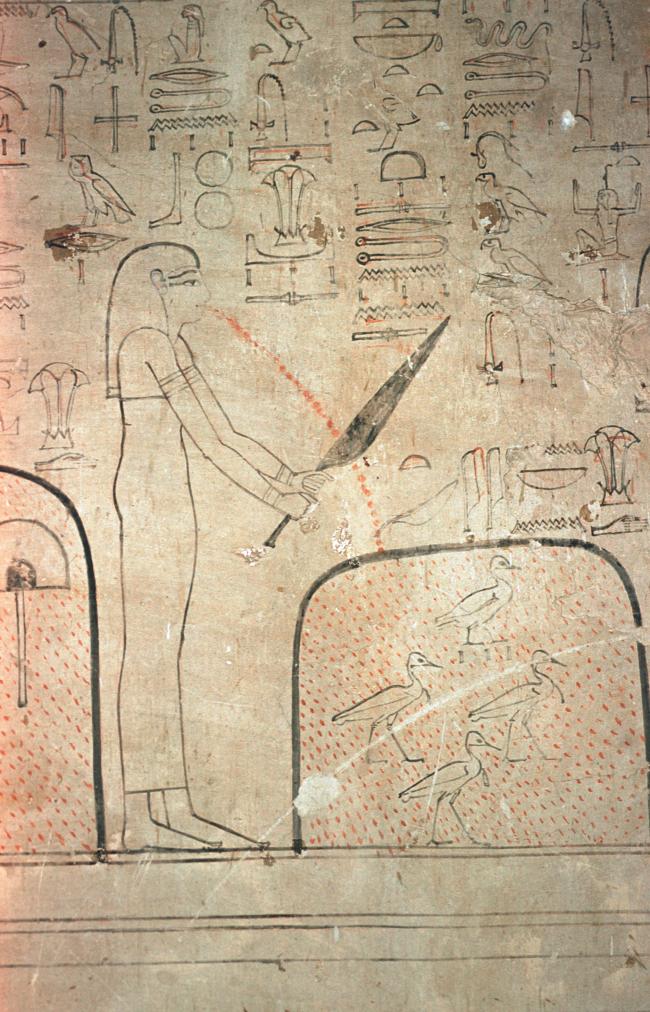
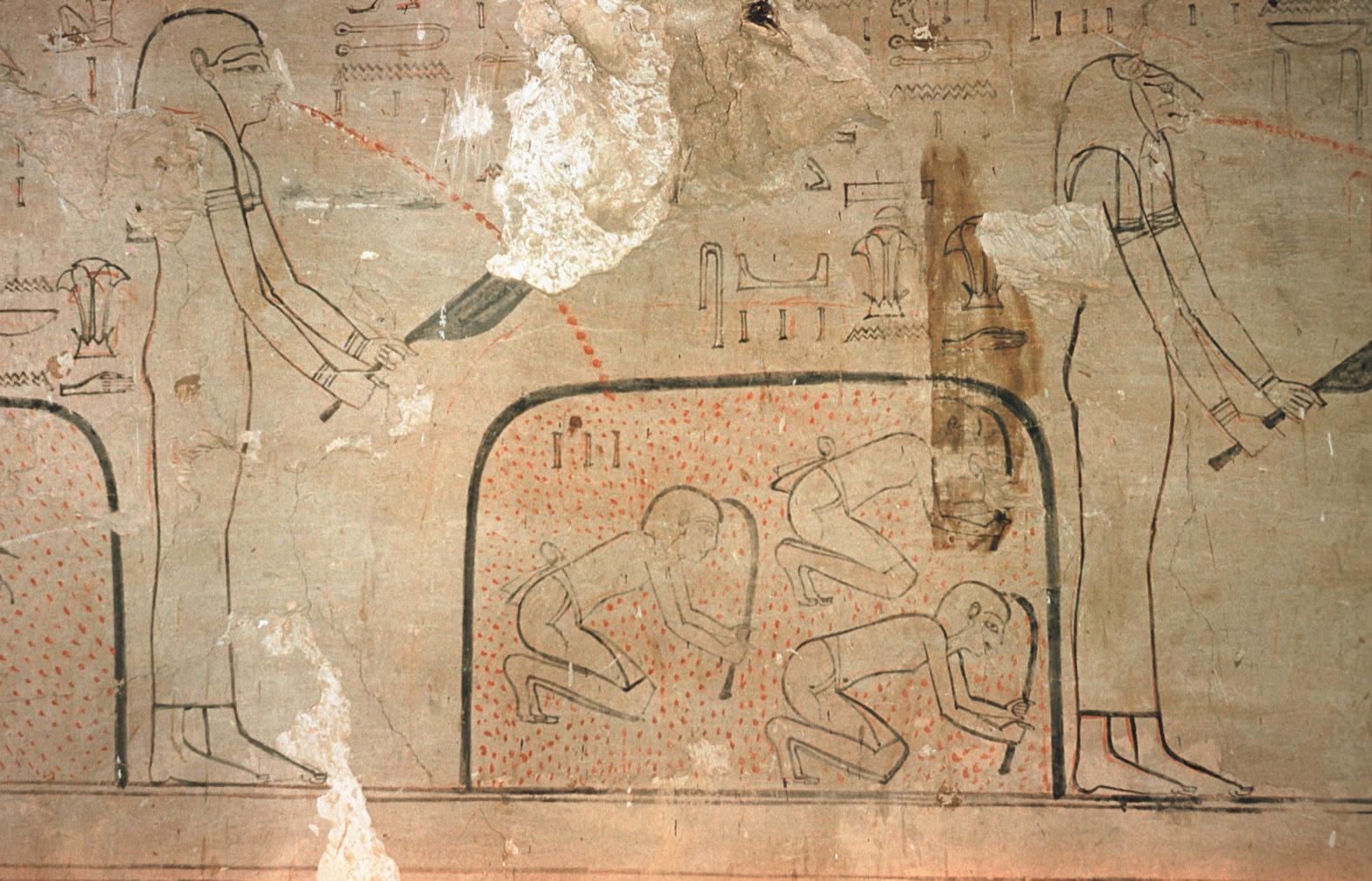
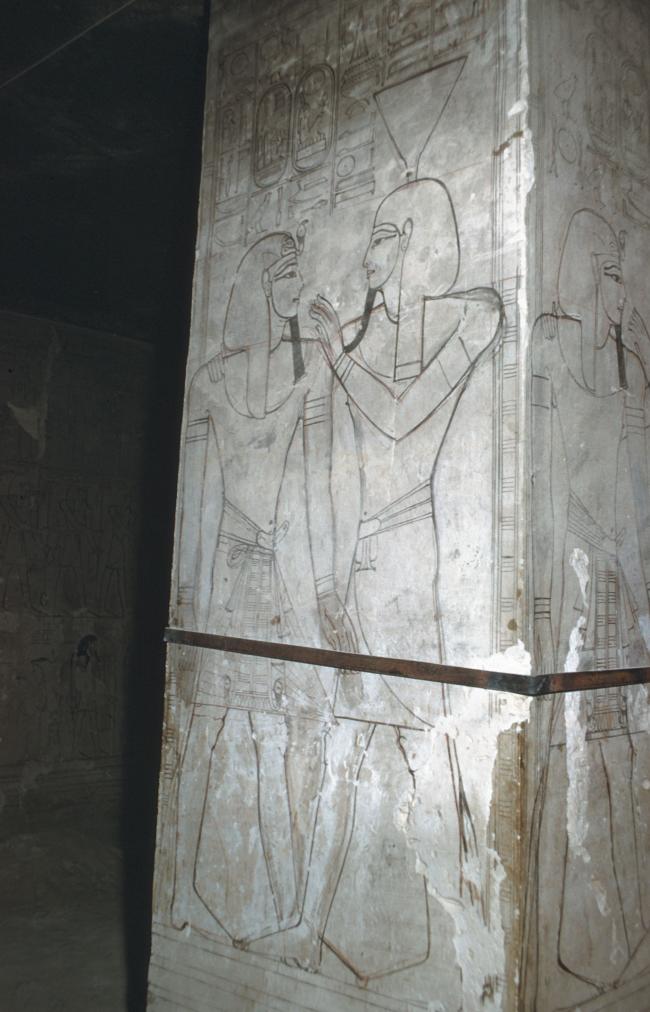
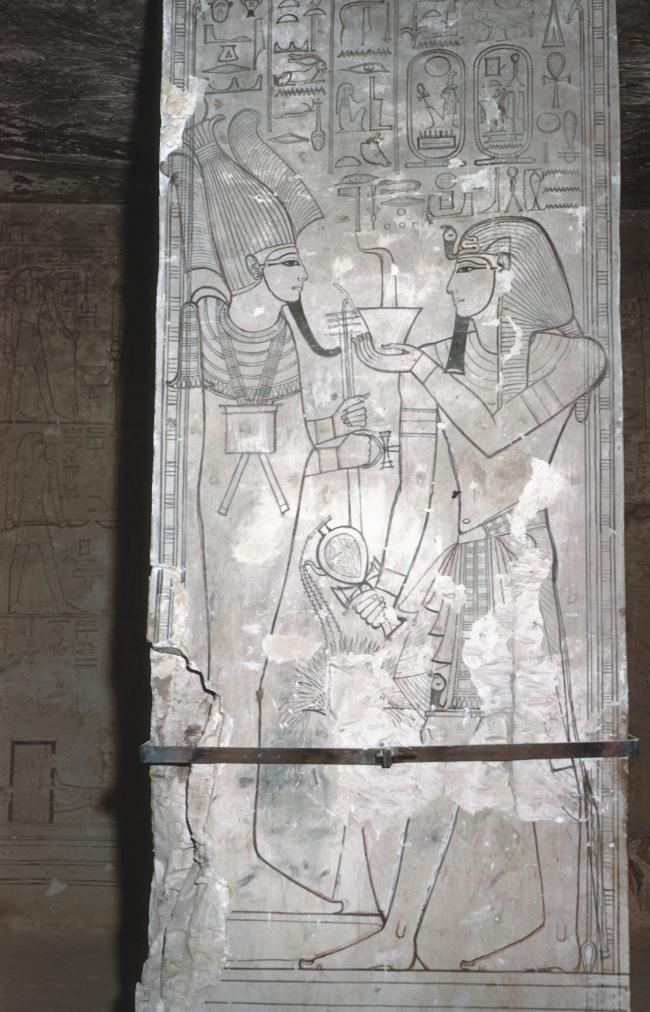
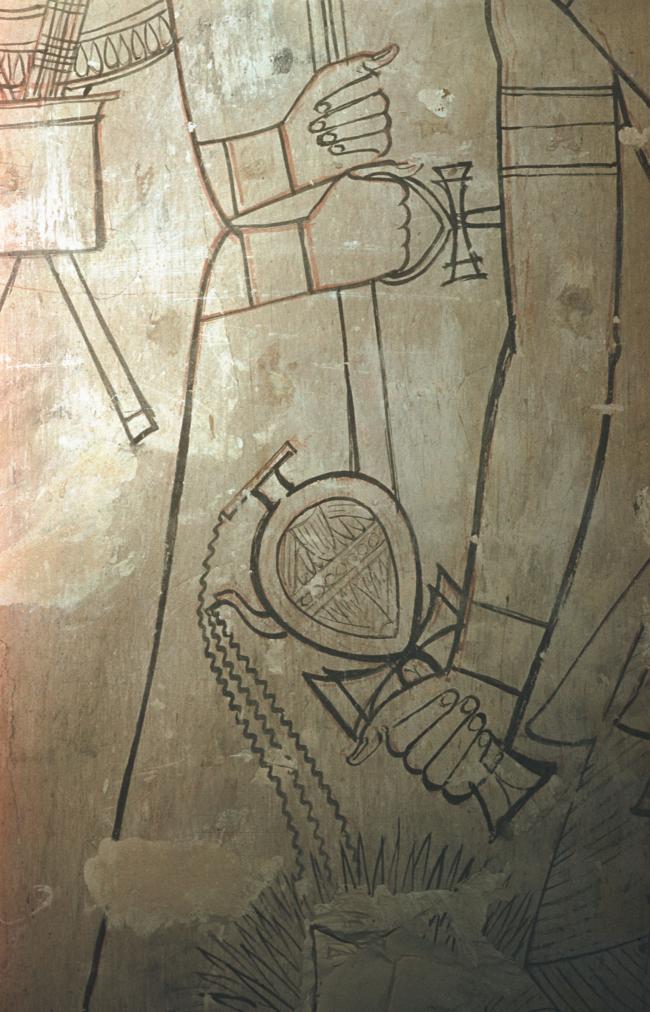
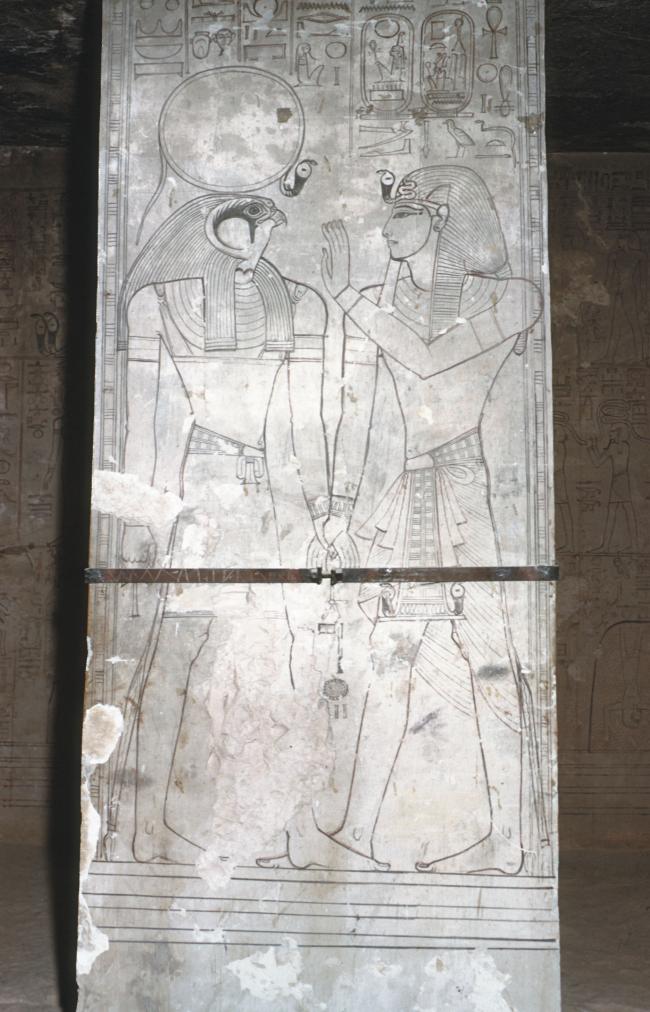
Gate G
See entire tombThe top of this gate is damaged. On the thicknesses, Hathor holds a menat necklace up to the king. These reliefs were removed by Champollion and Rosellini and are now in the Louvre and Florence.
Porter and Moss designation:
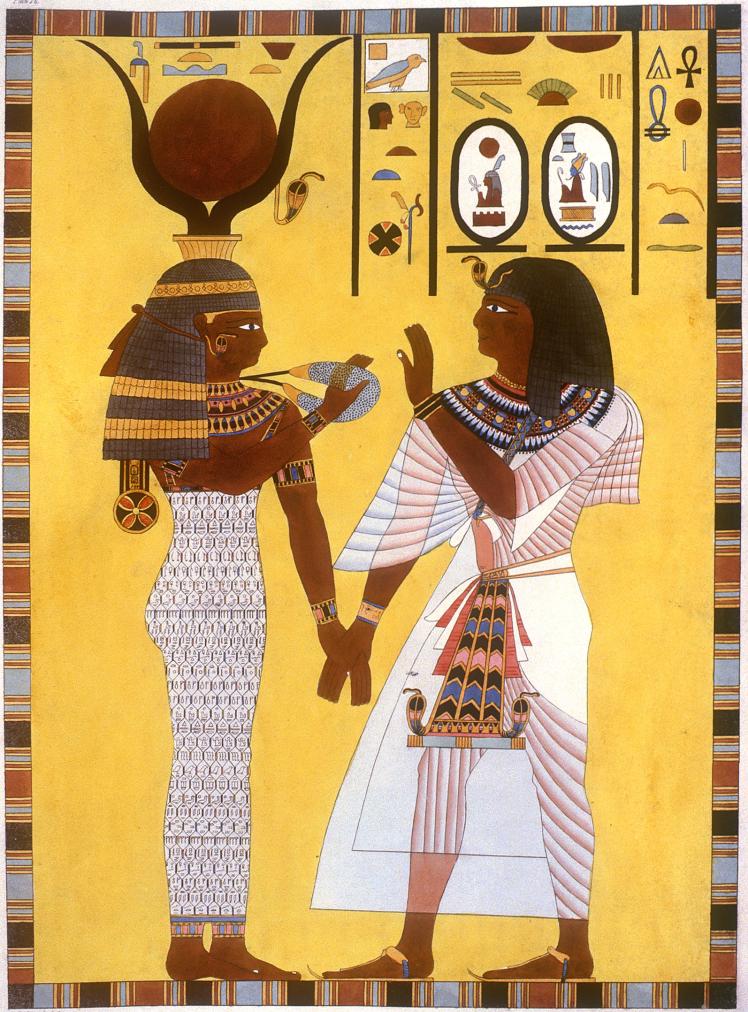
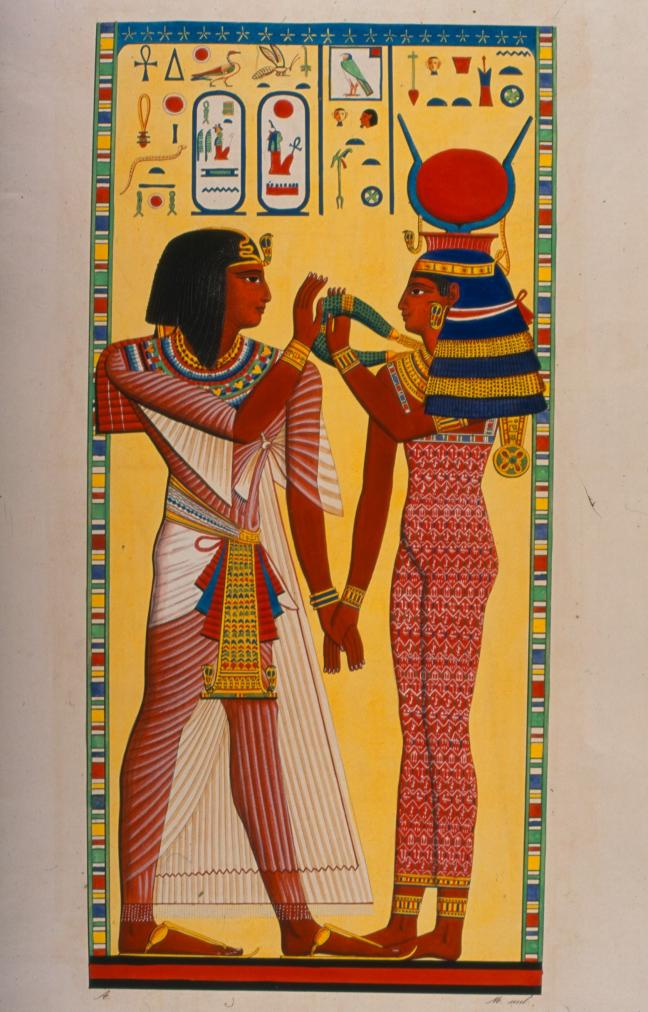
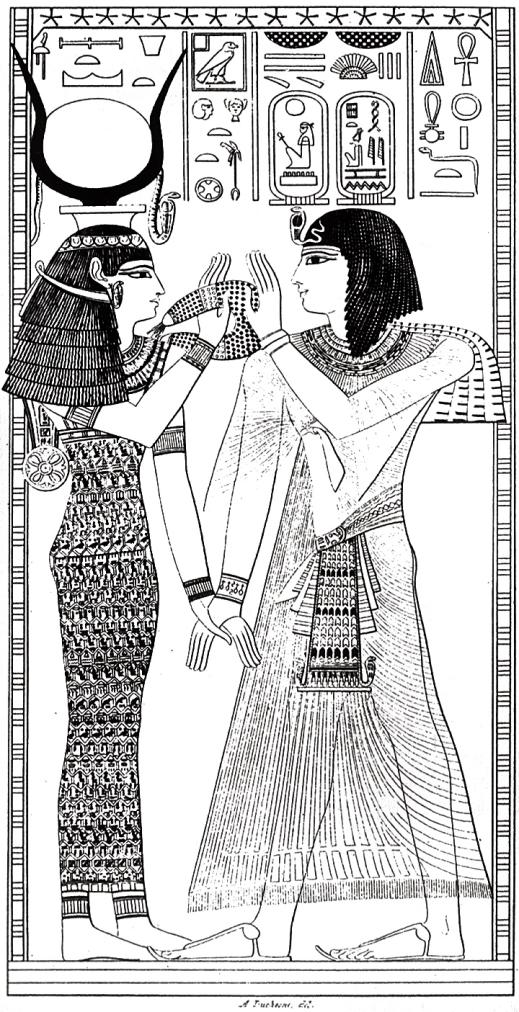
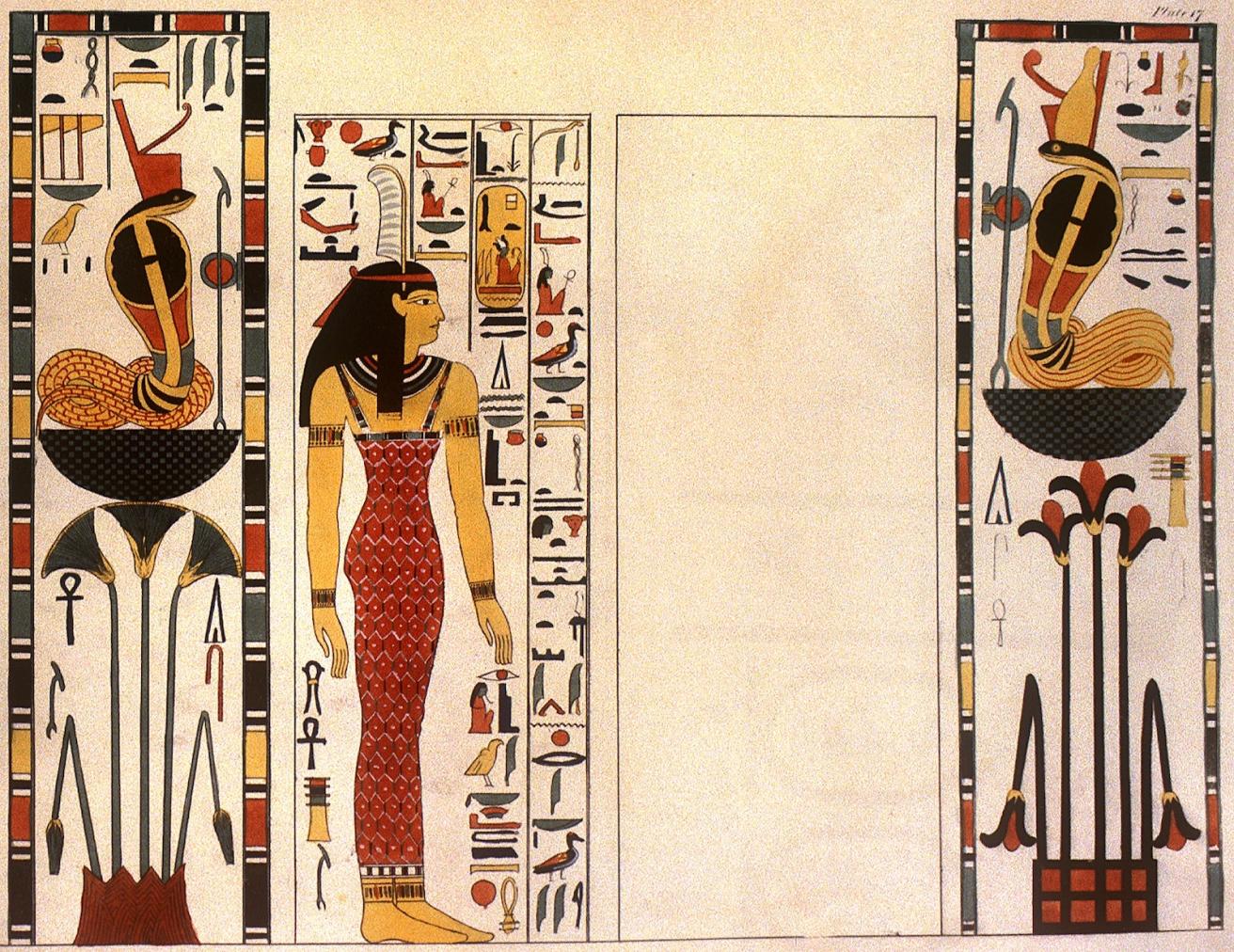
Corridor G
See entire tombThe continuation of the tomb bends slightly right (northwest) of the previous tomb axis. The walls are decorated with texts and scenes from the Opening of the Mouth ritual. There are many instances where vandals have cut out the king's cartouches, texts and figures.
Porter and Moss designation:
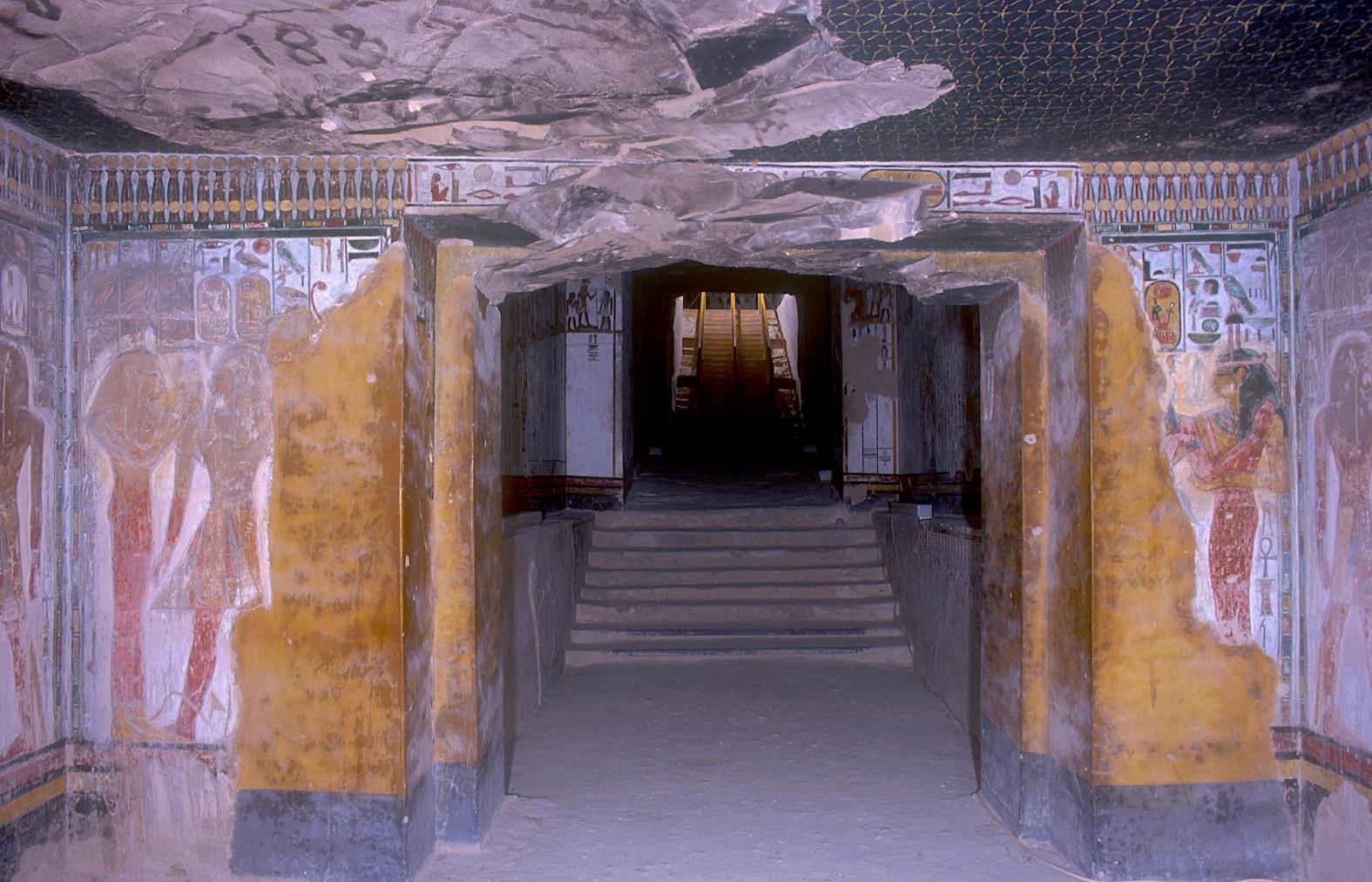
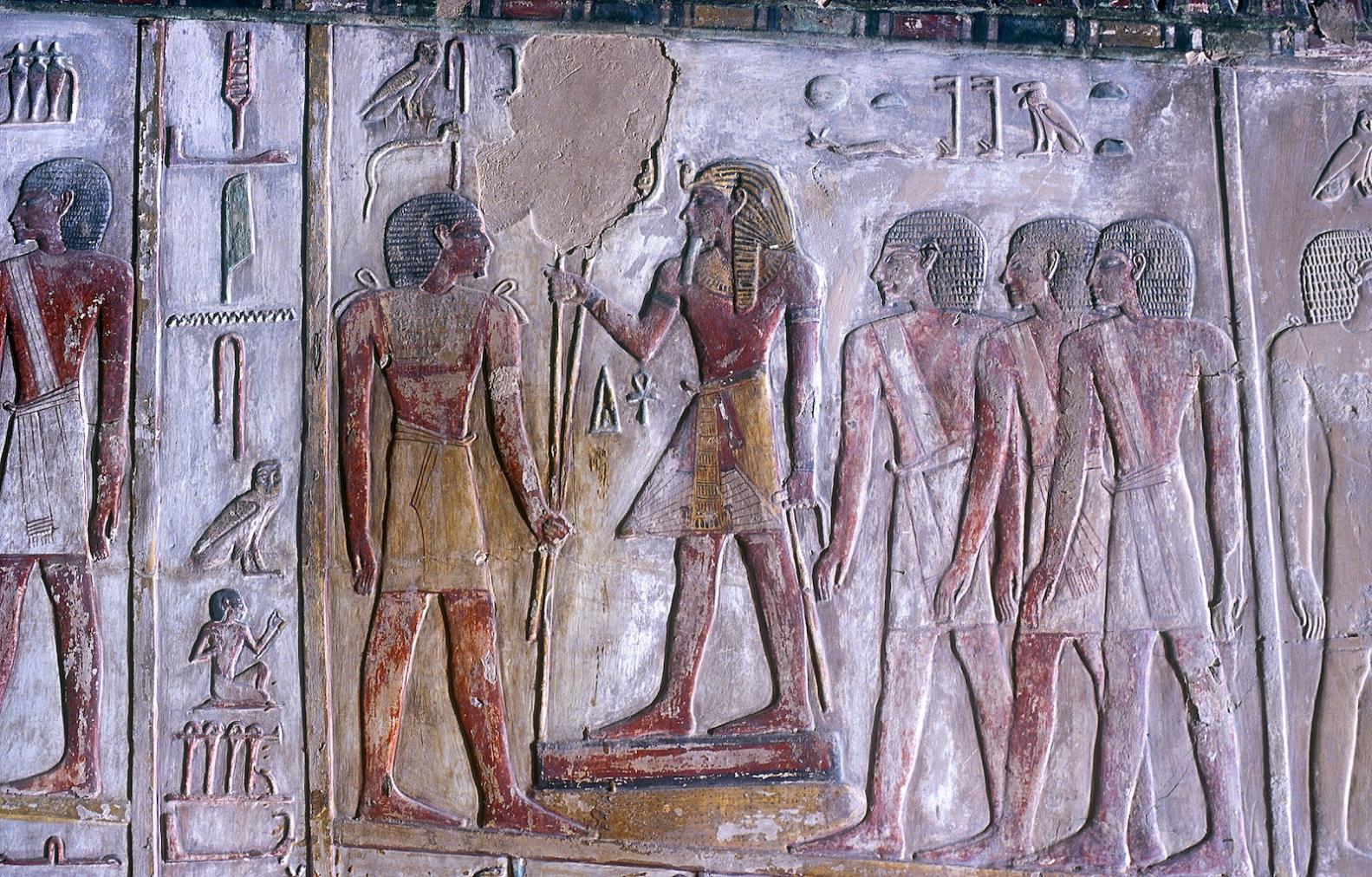
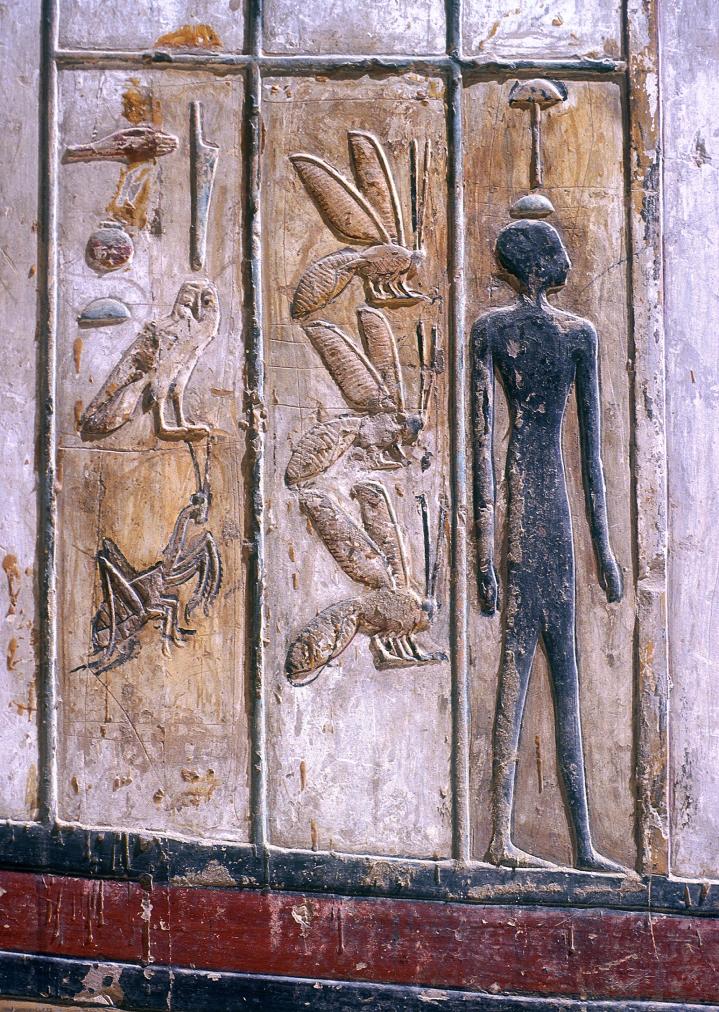
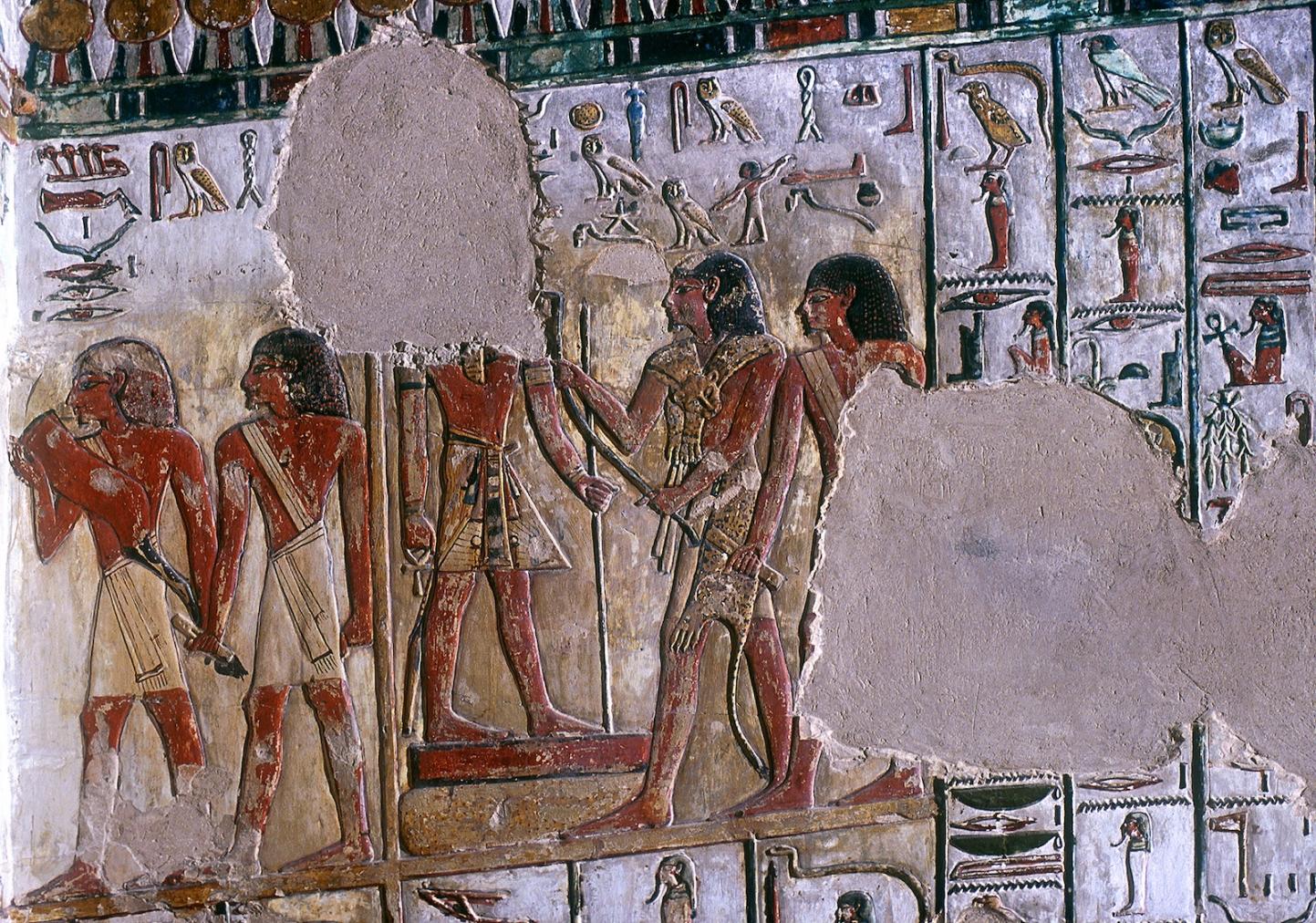
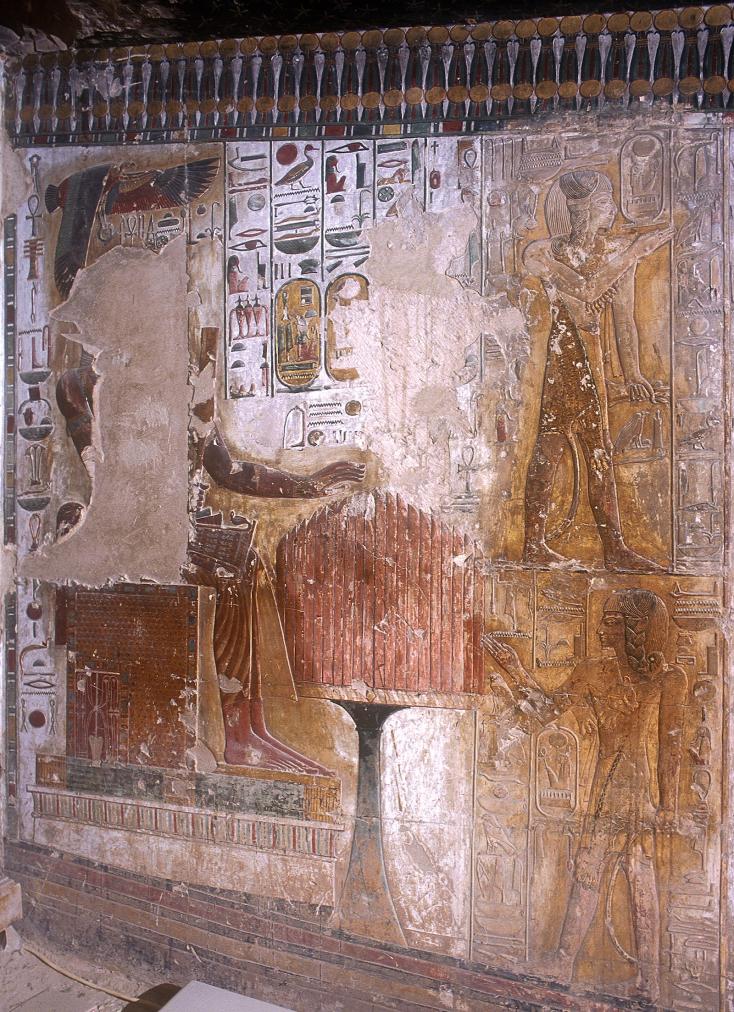
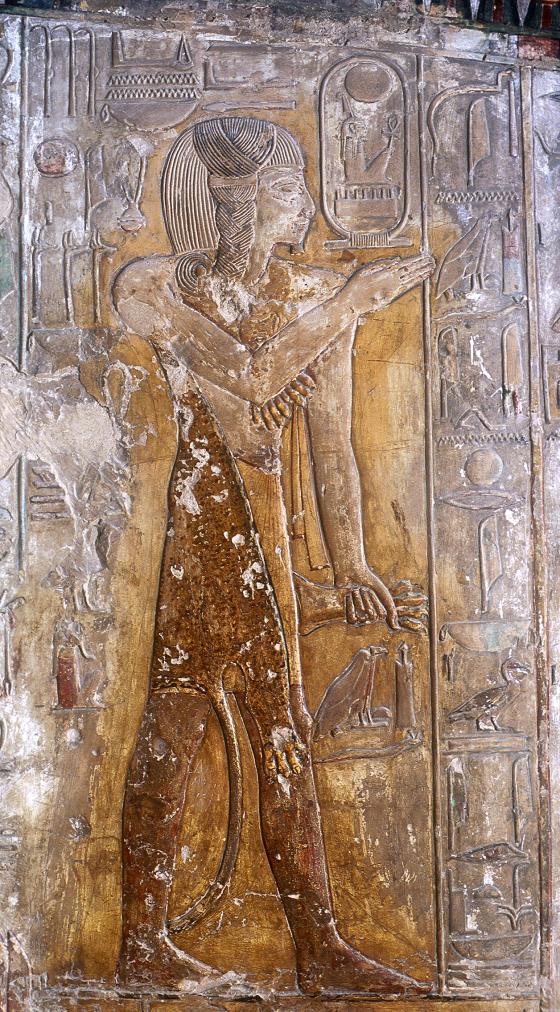
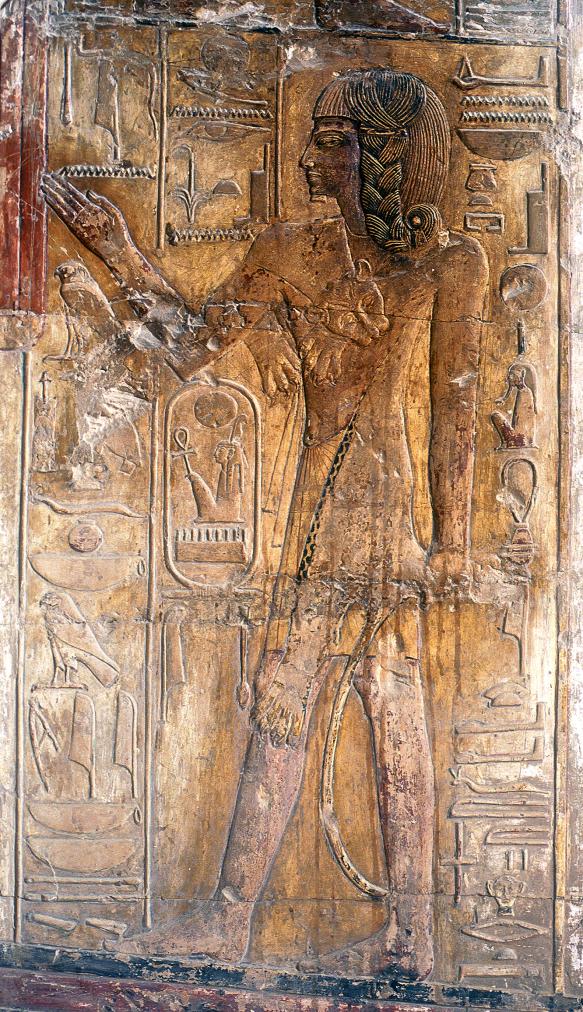

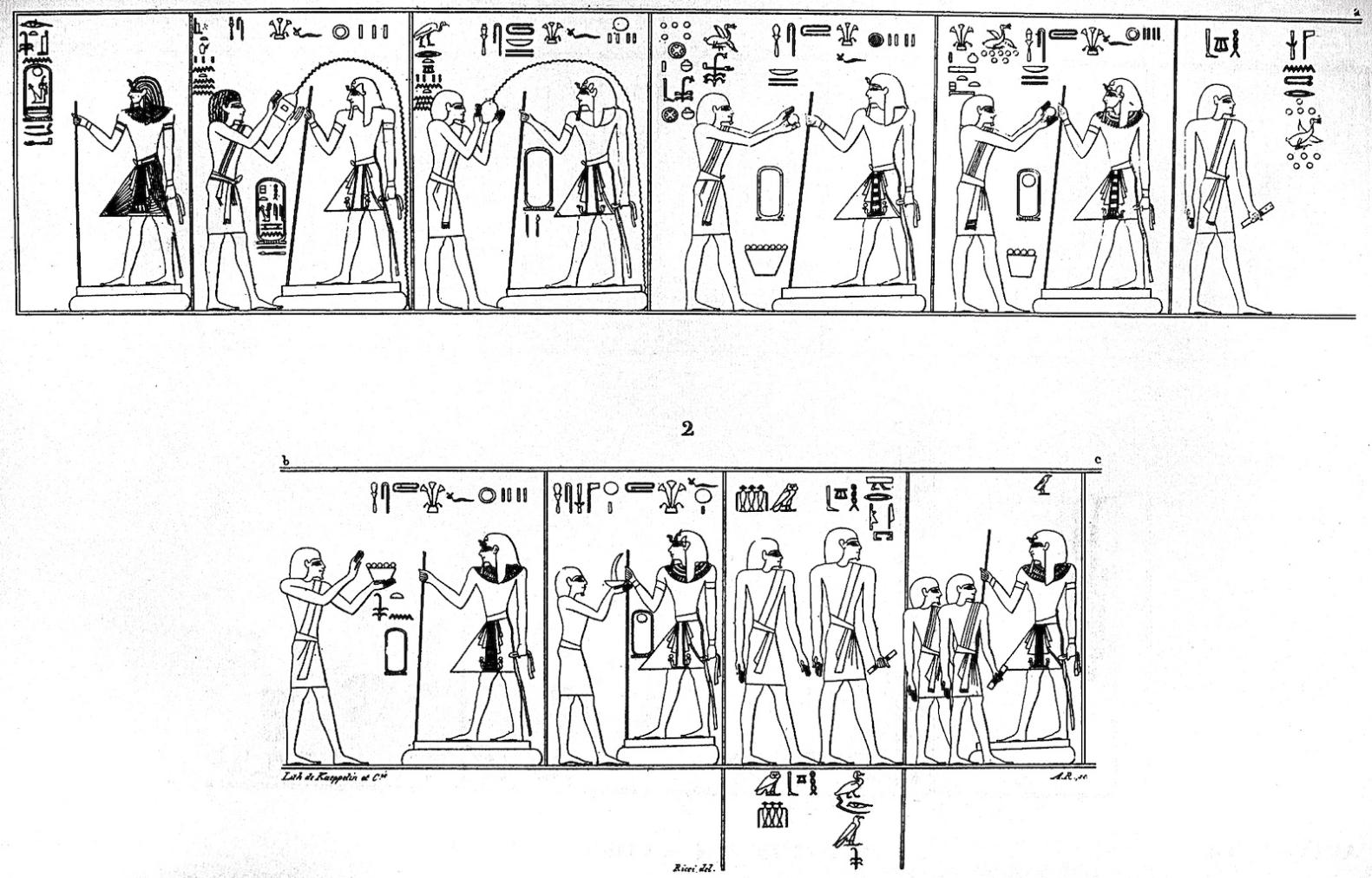
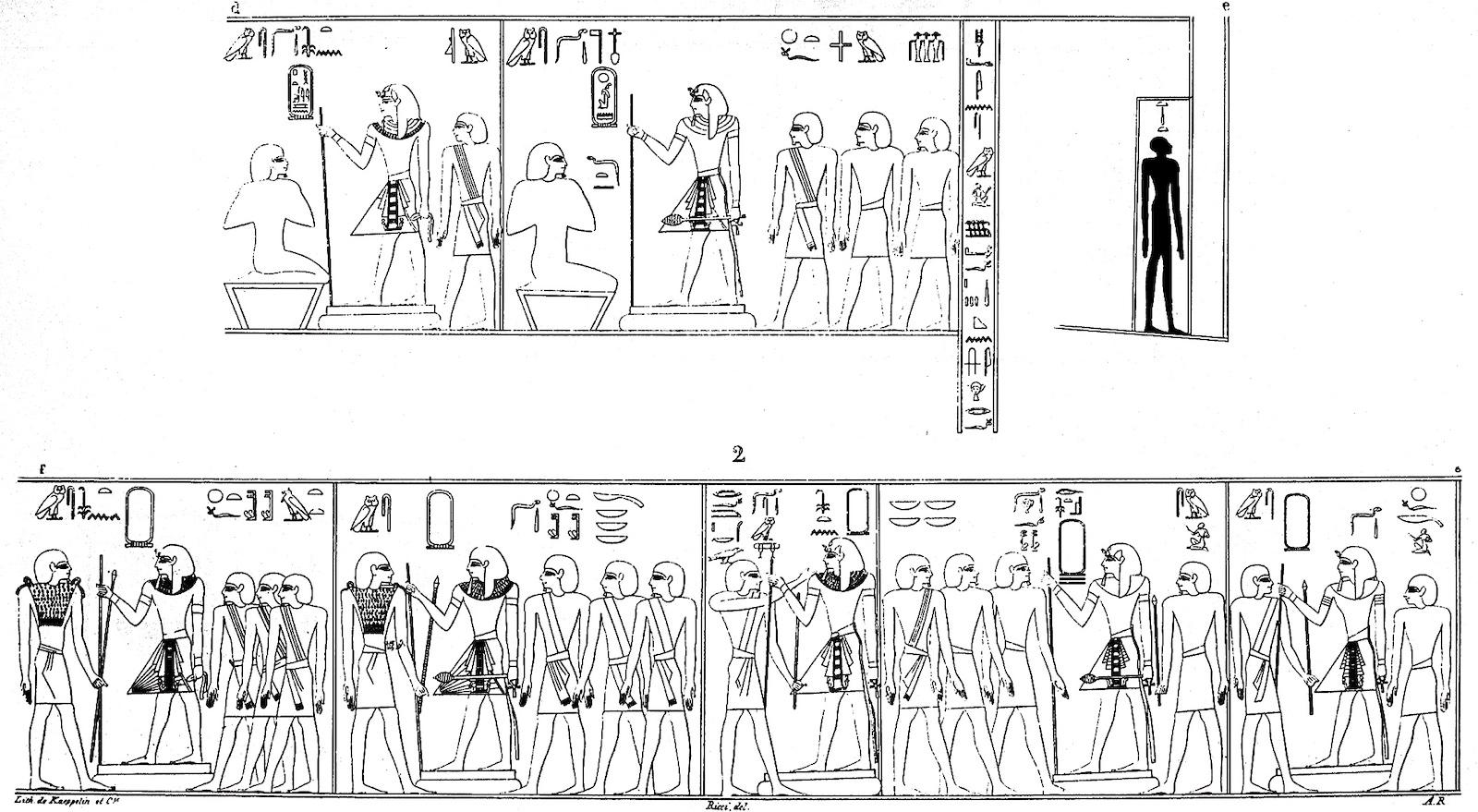
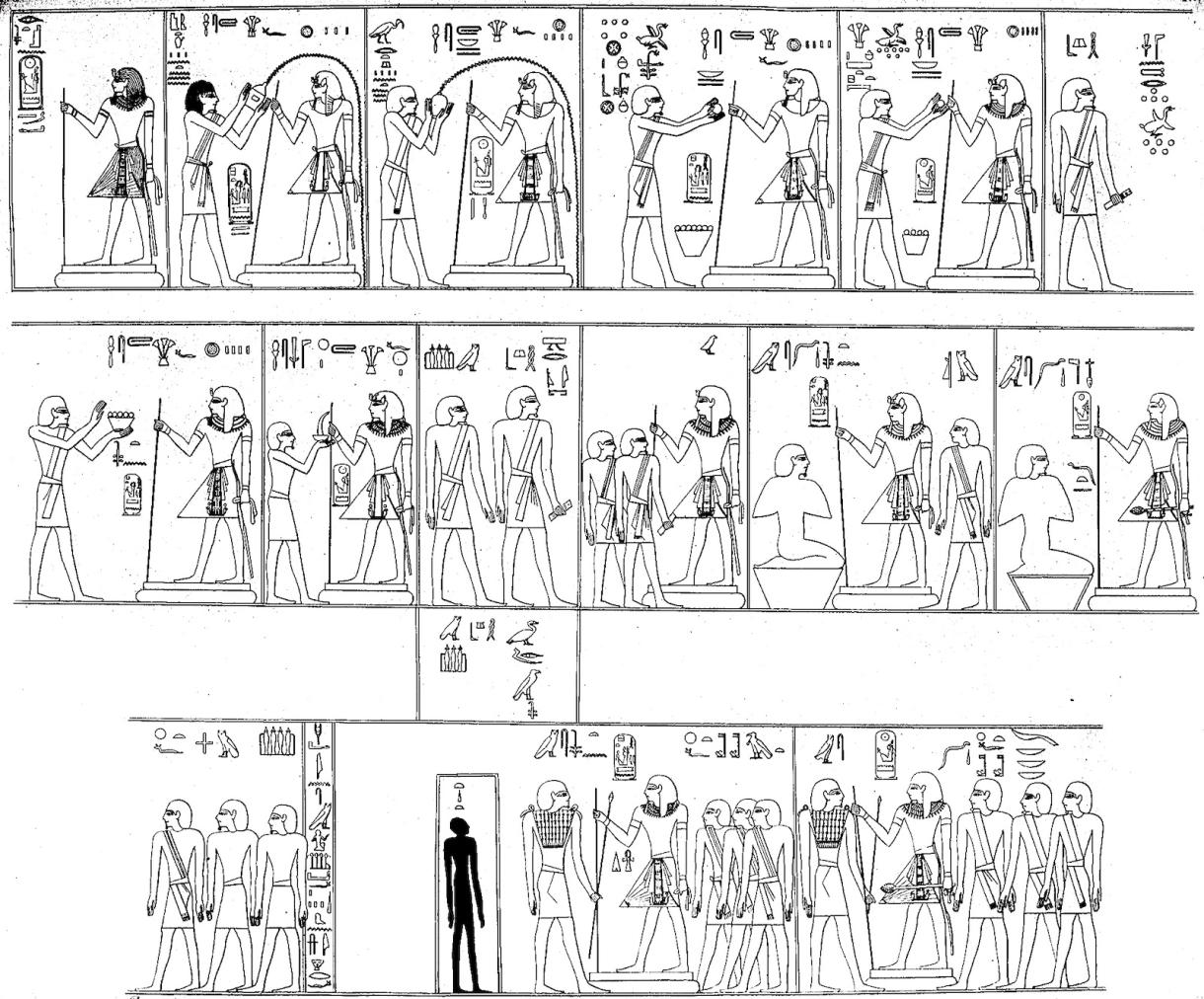
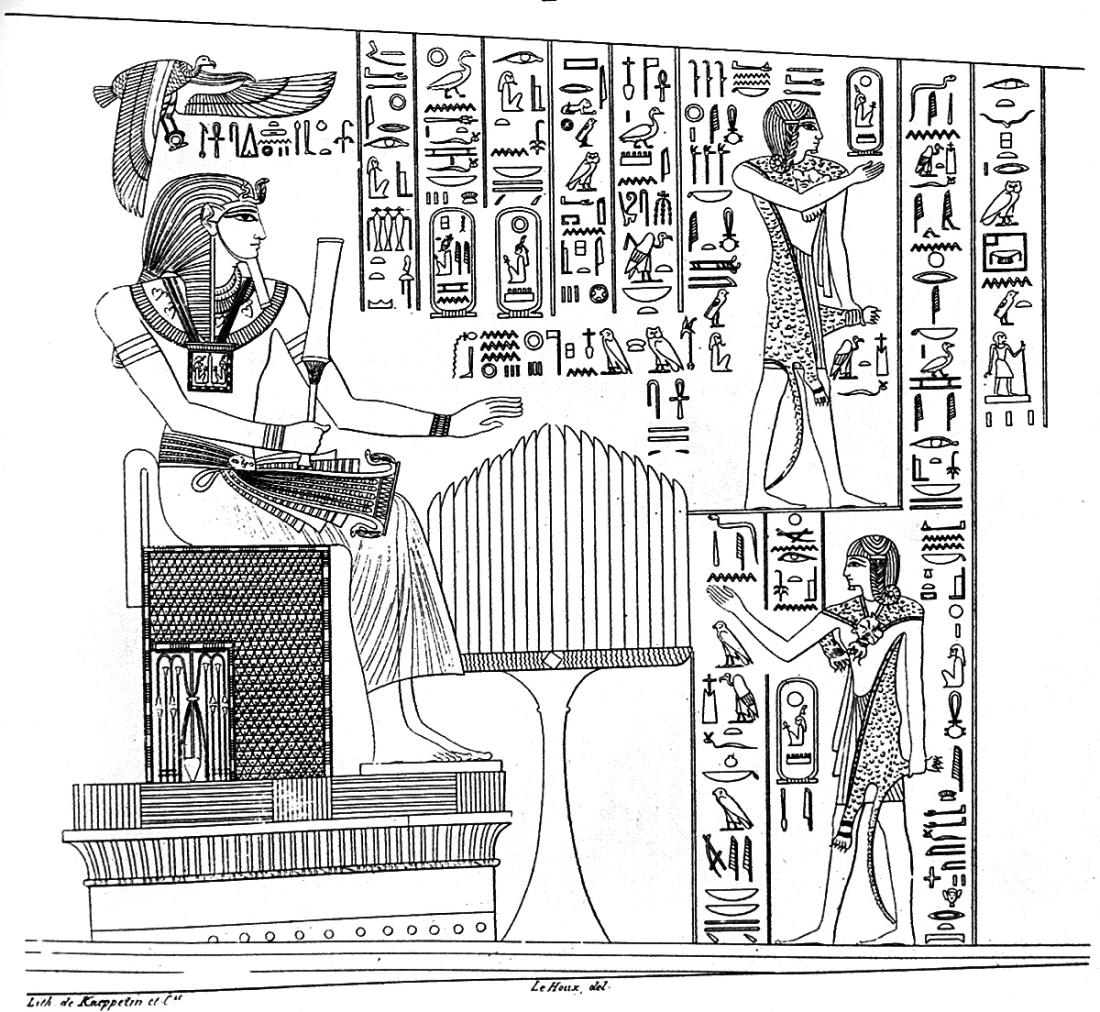
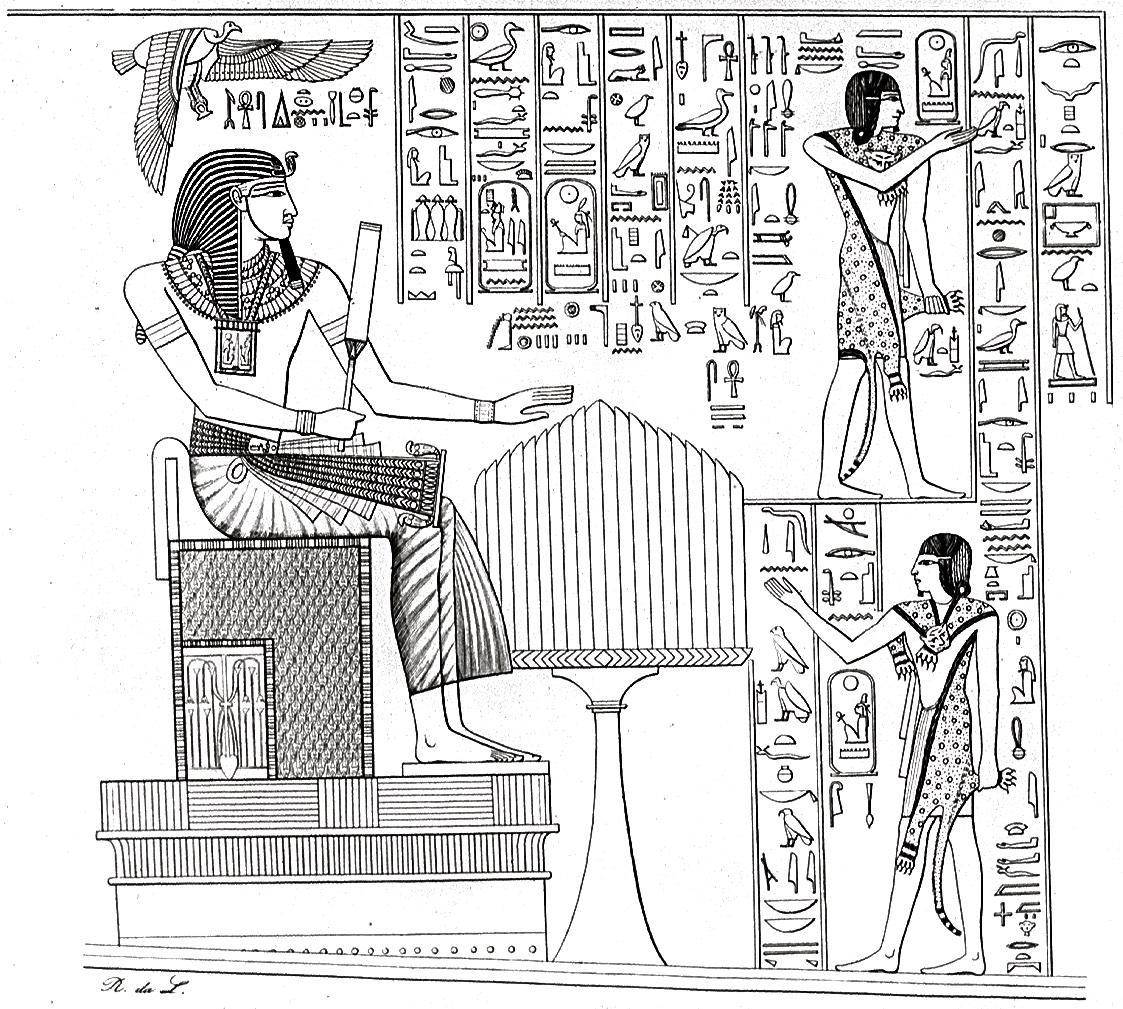
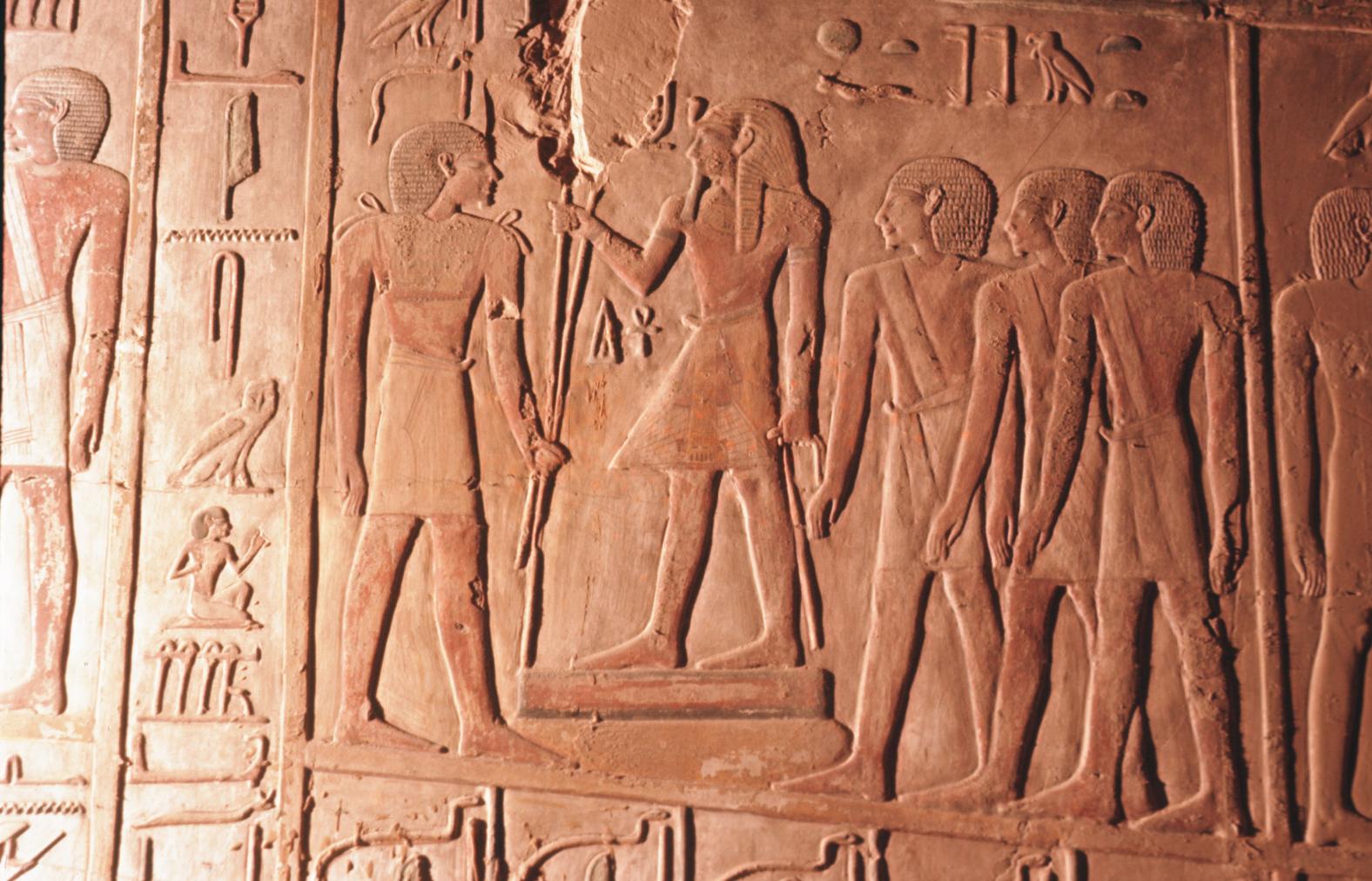
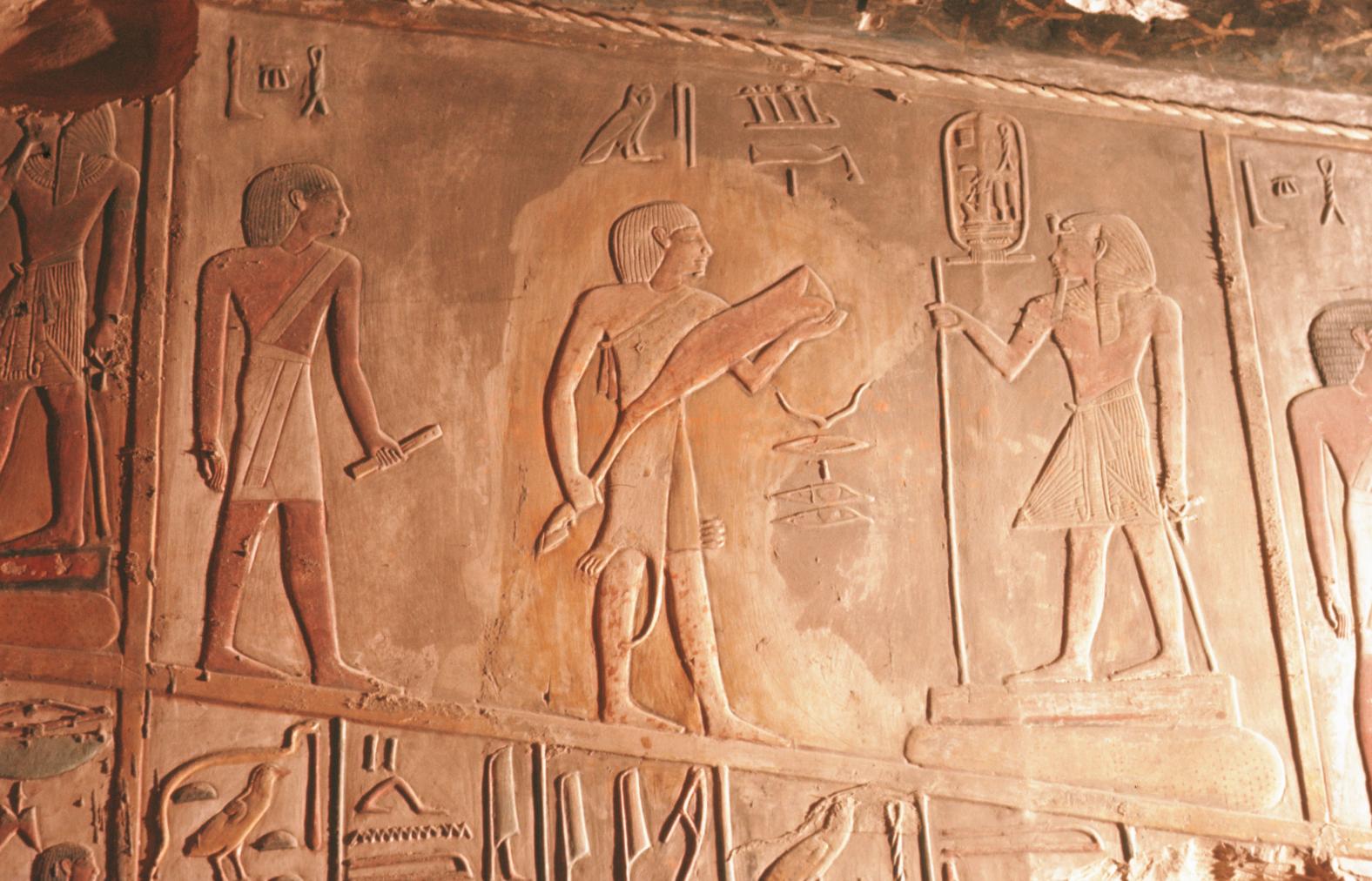
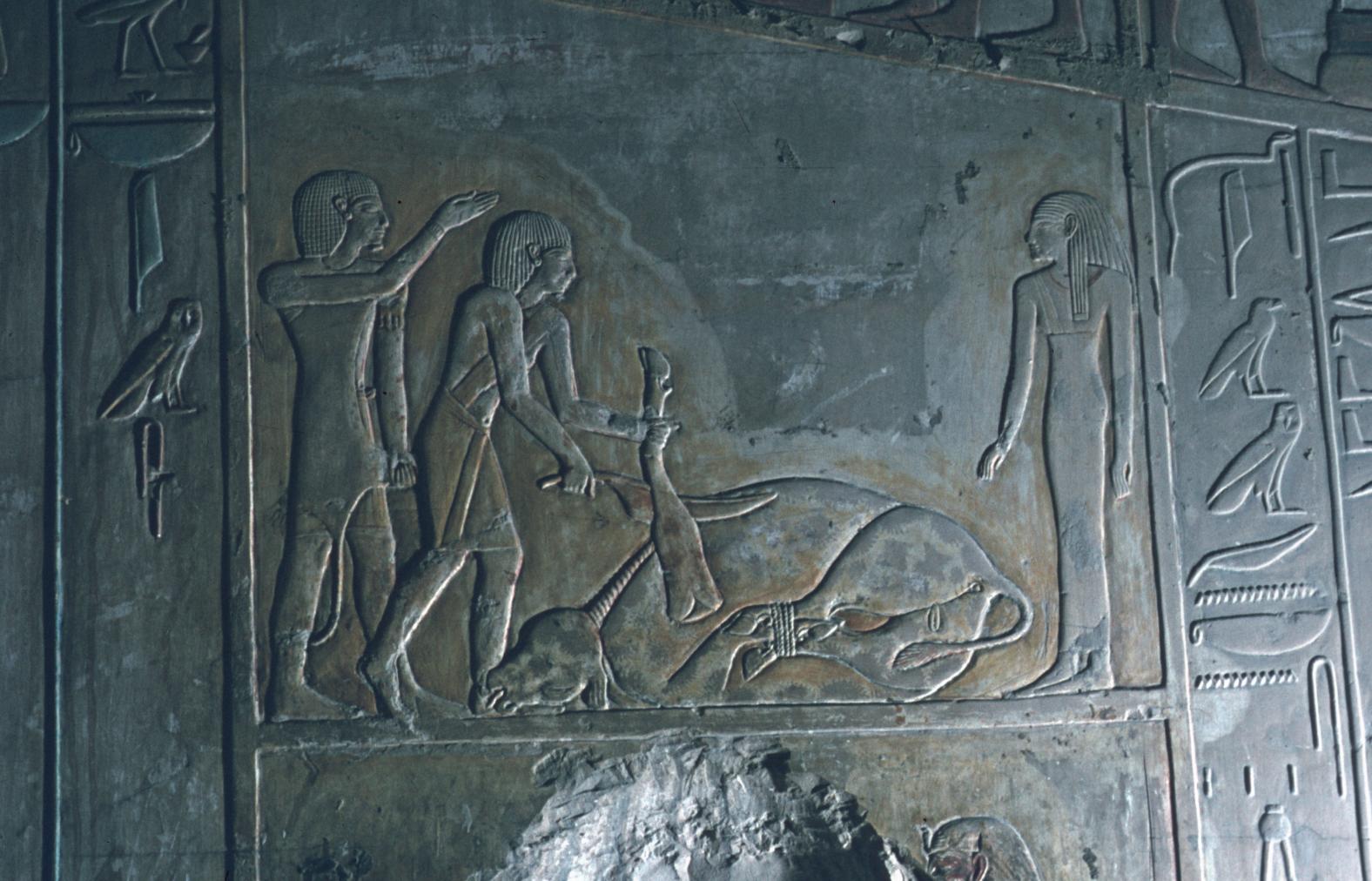
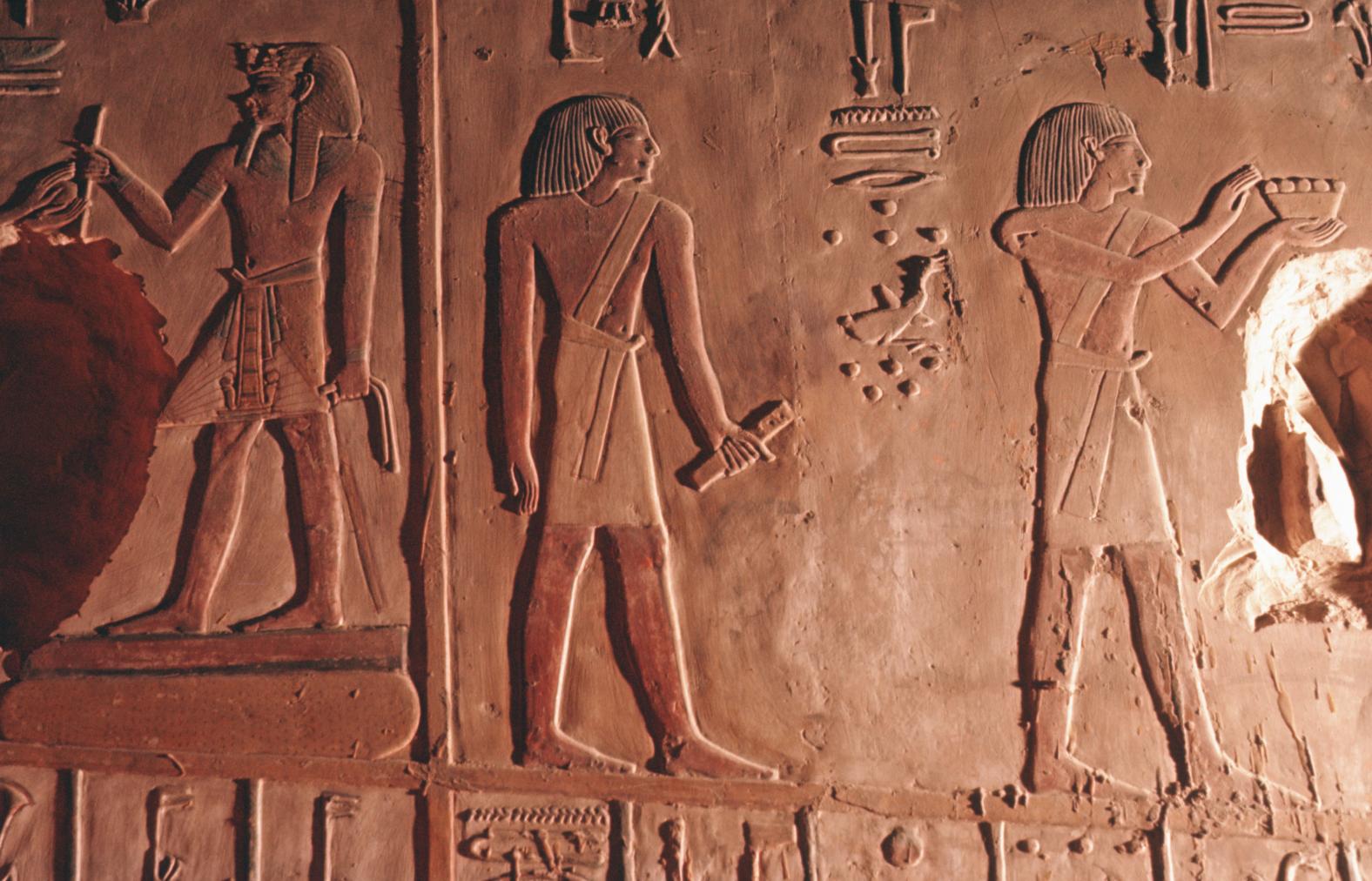
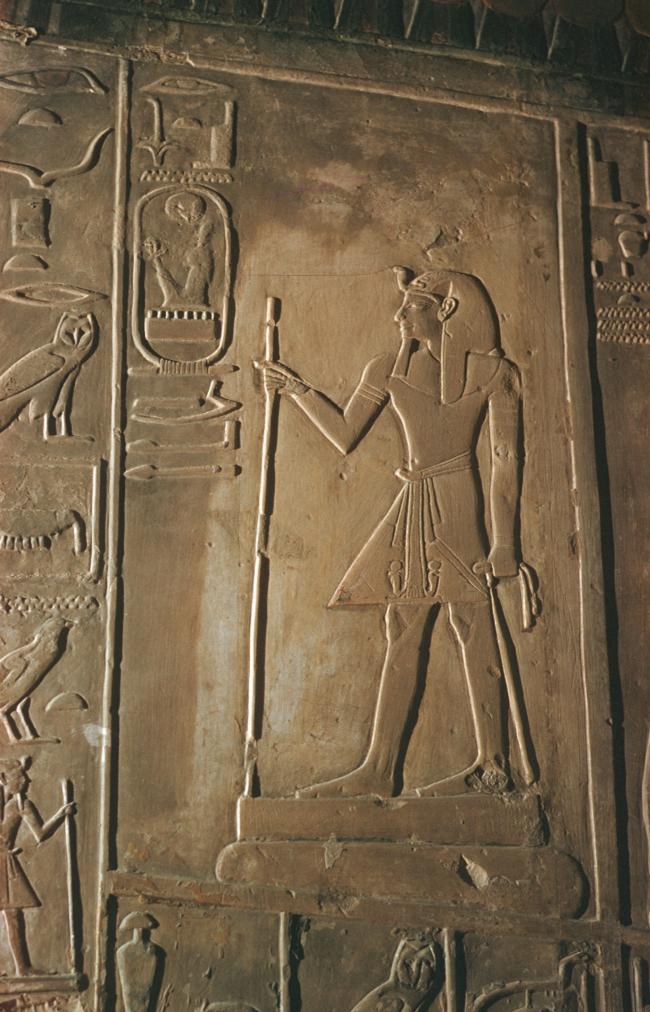
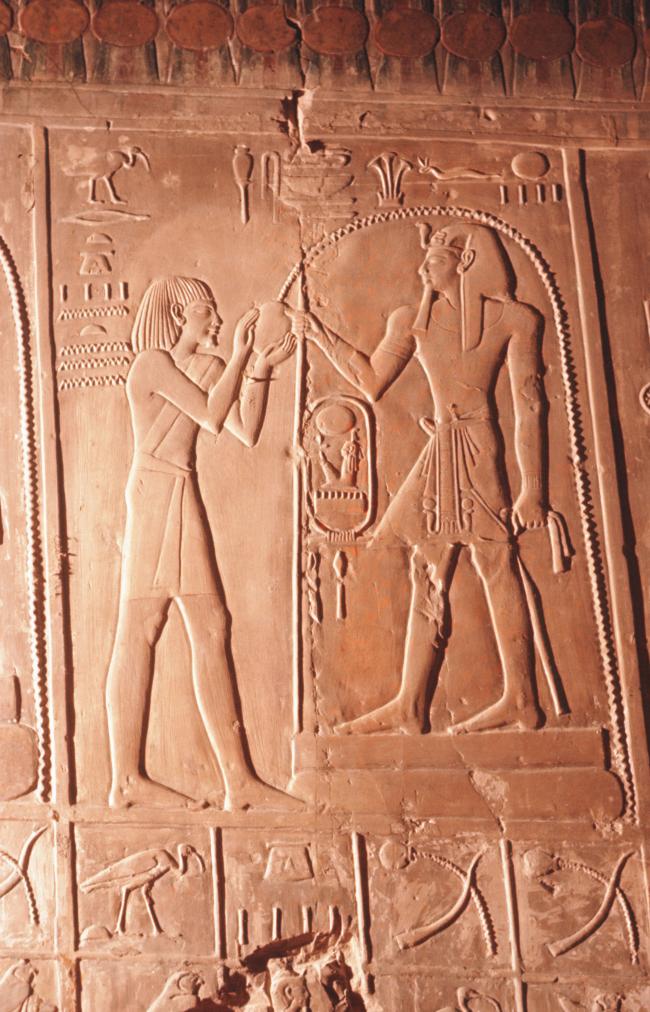
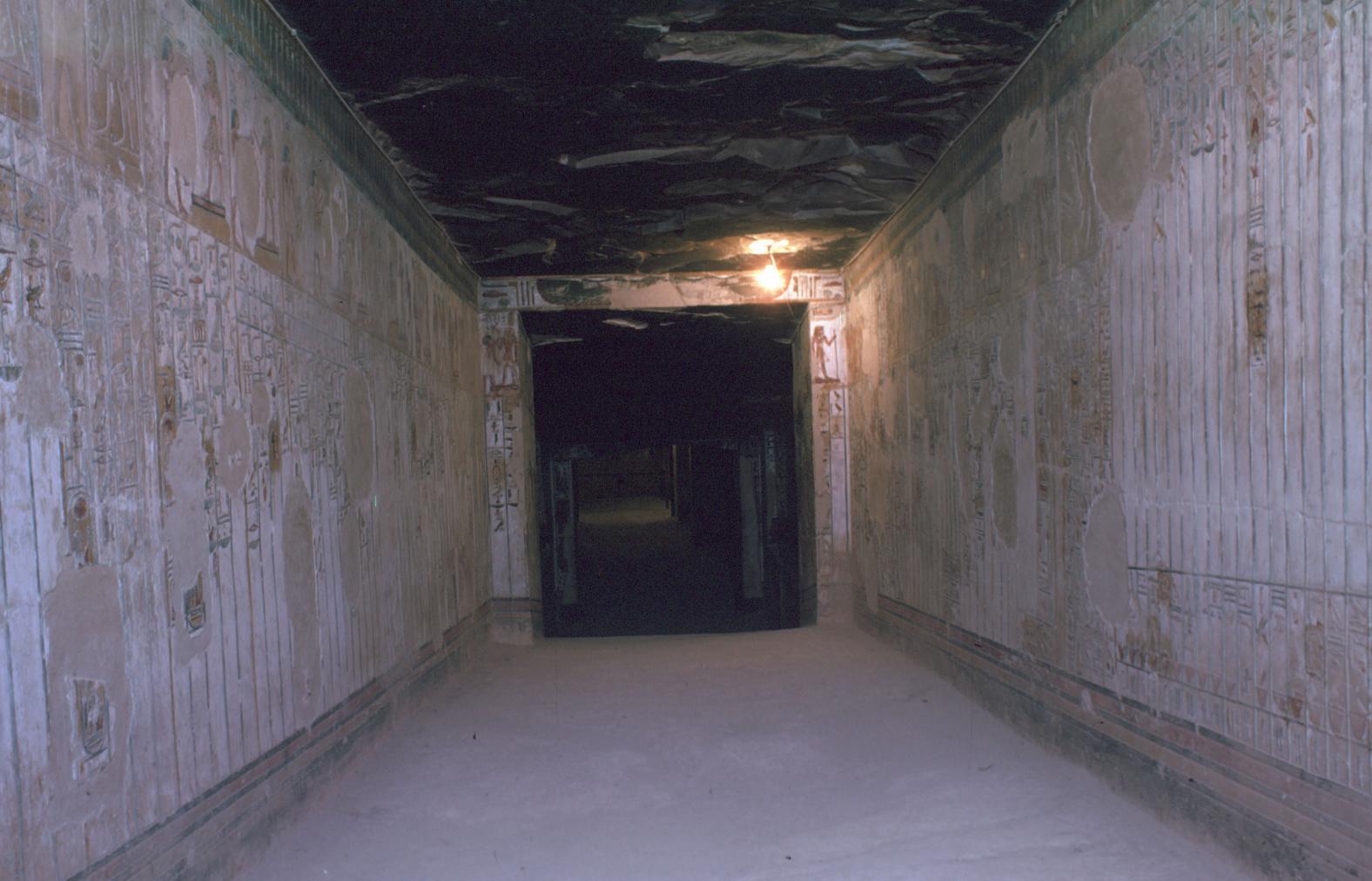
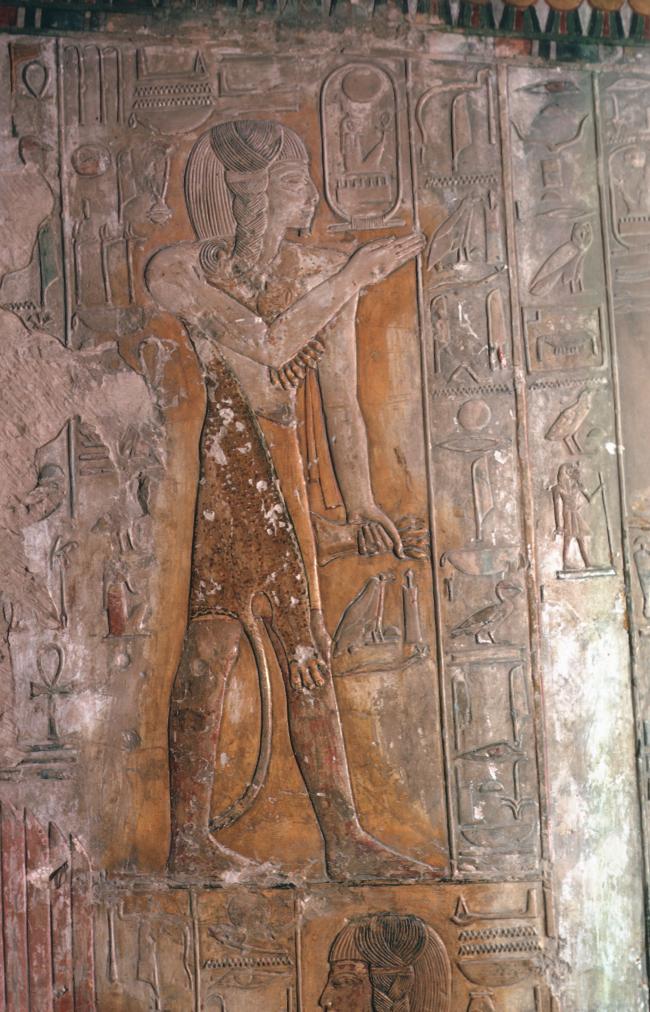
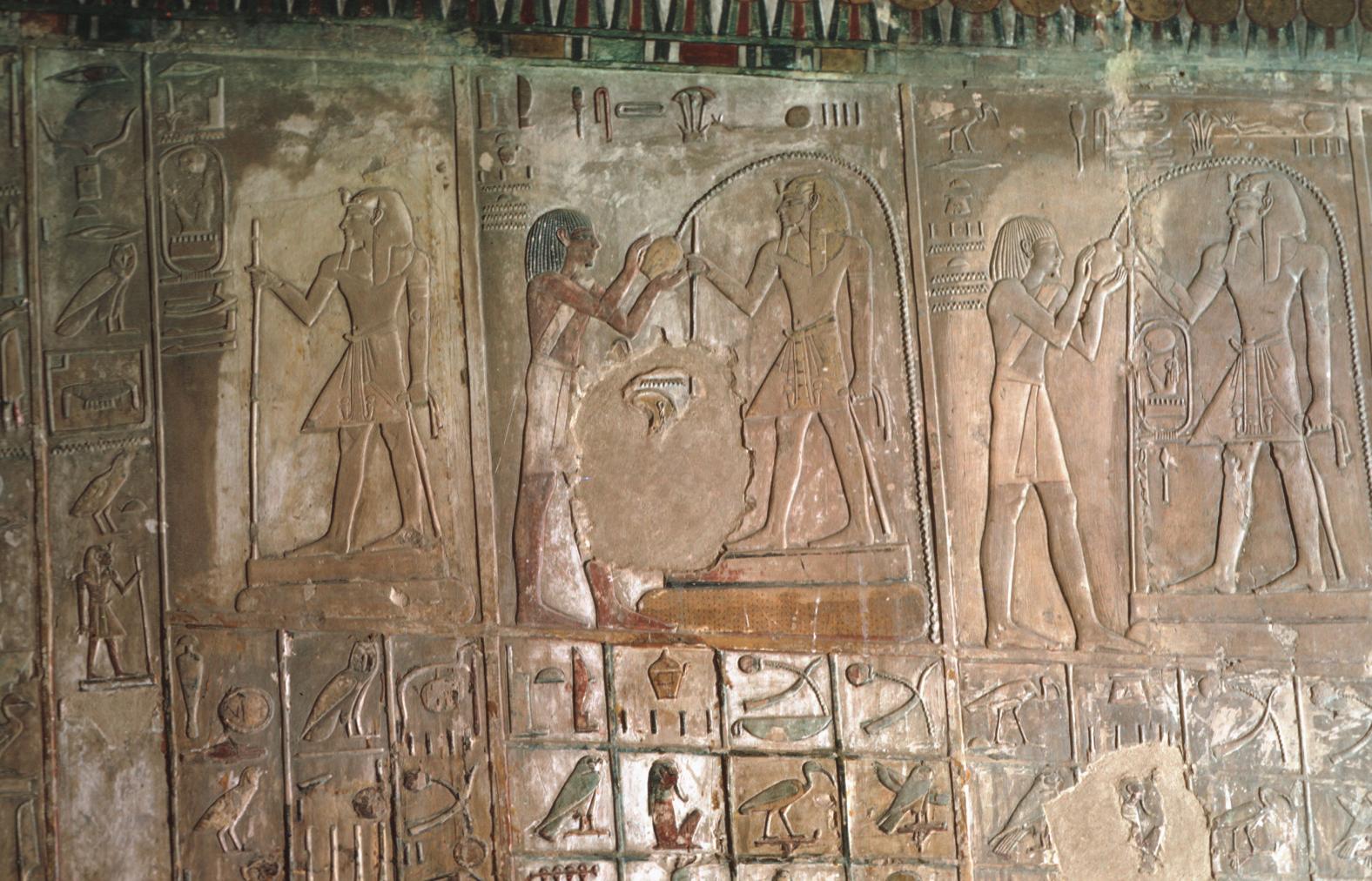
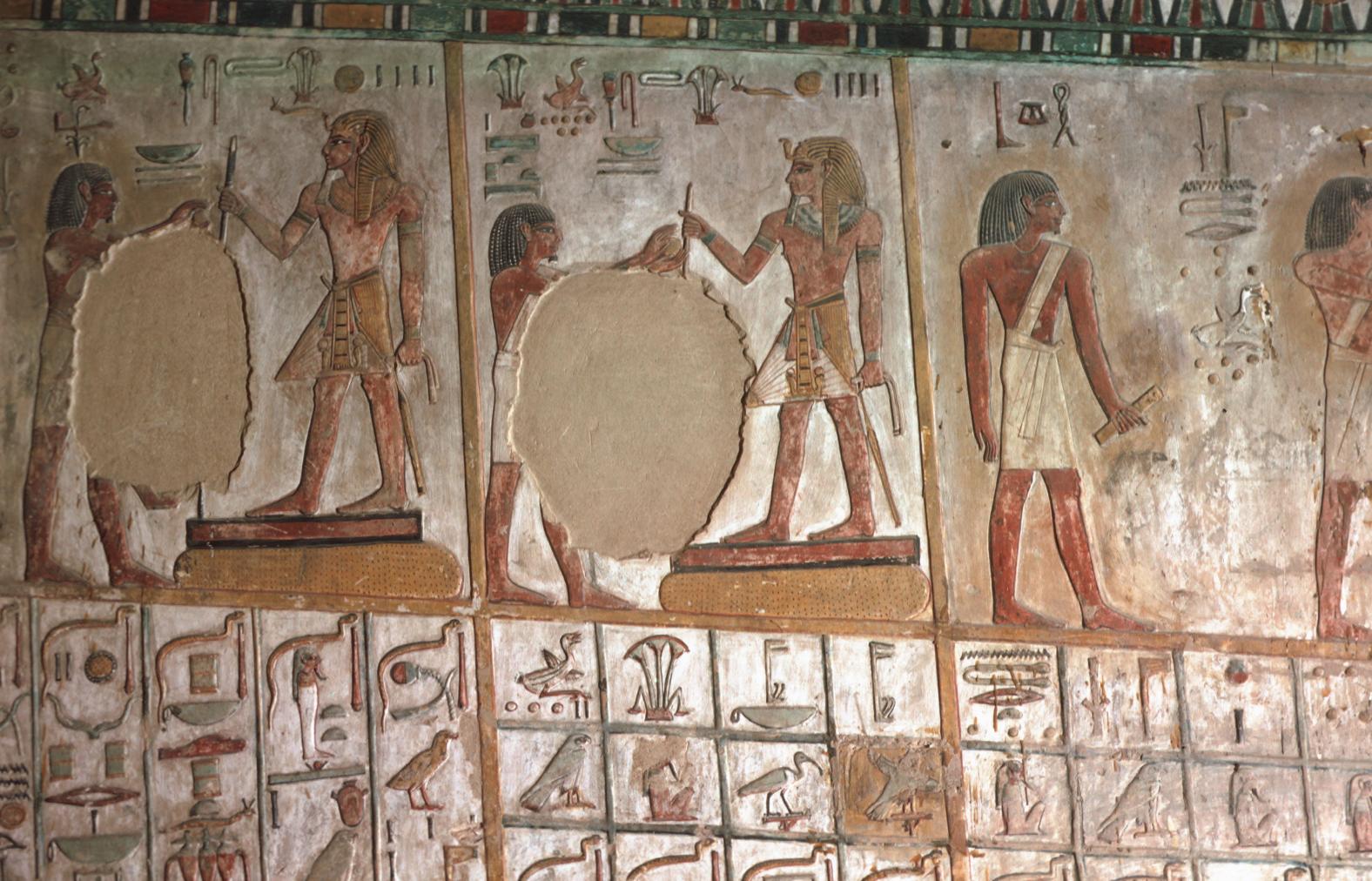
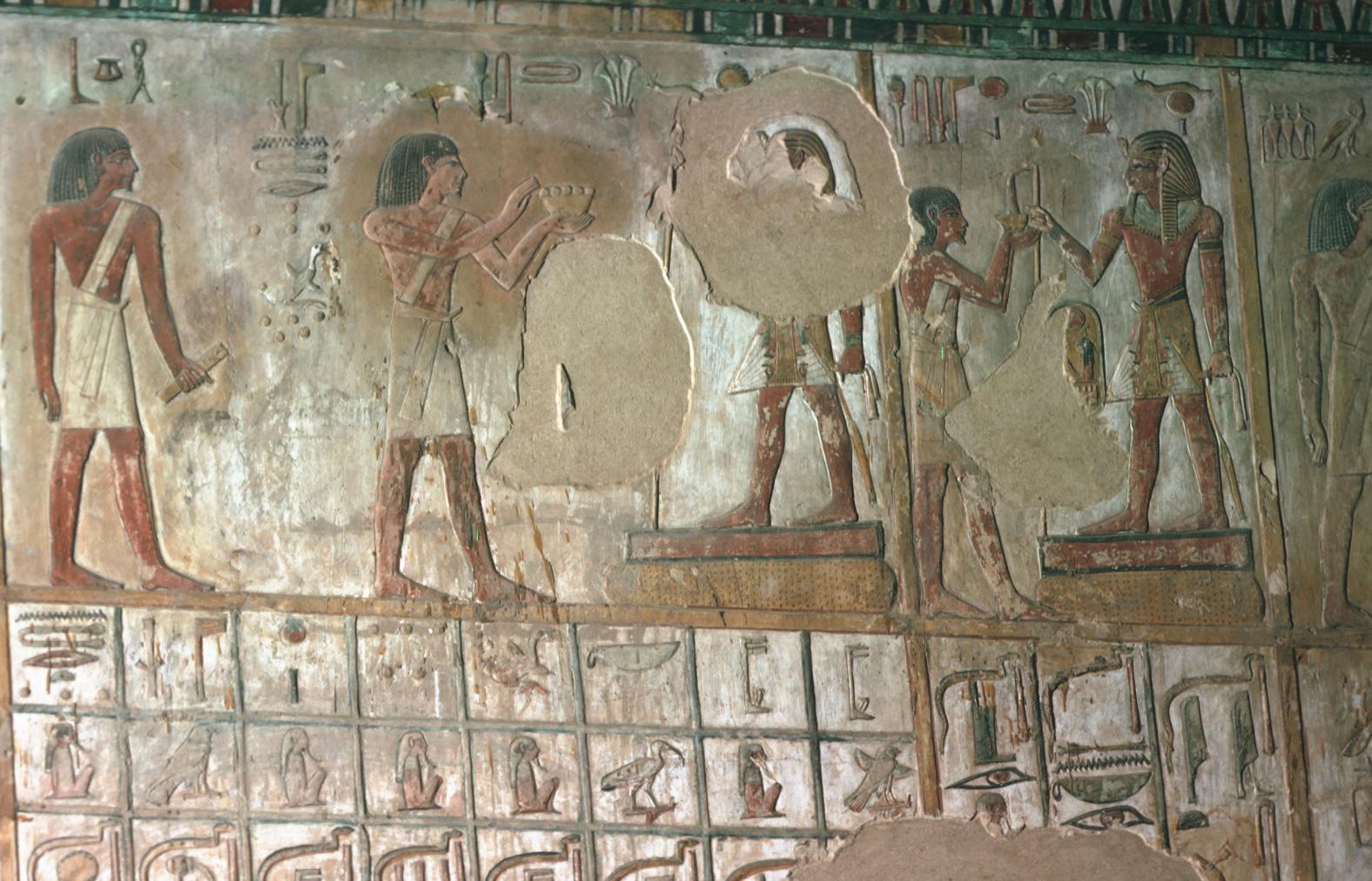
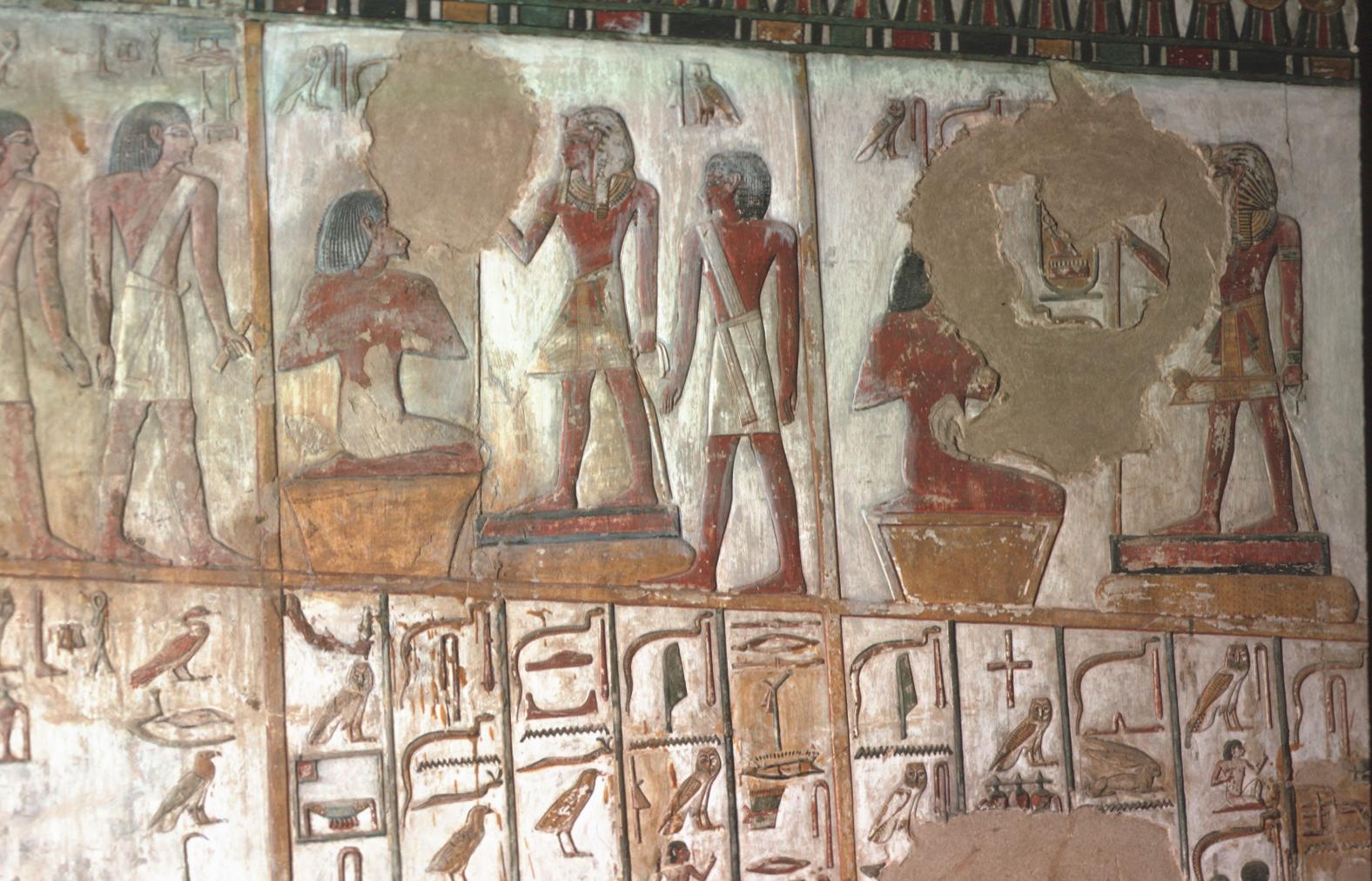
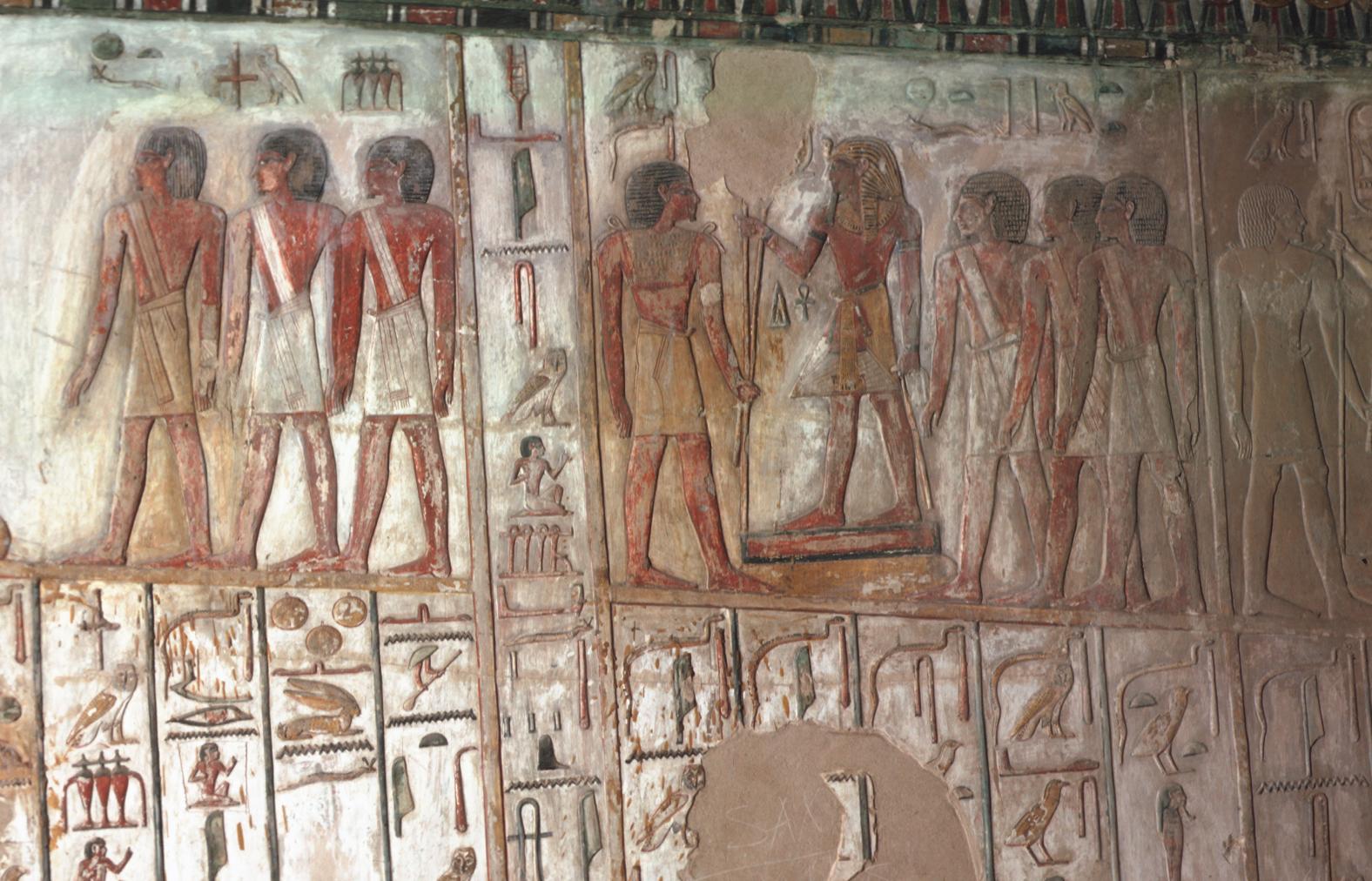
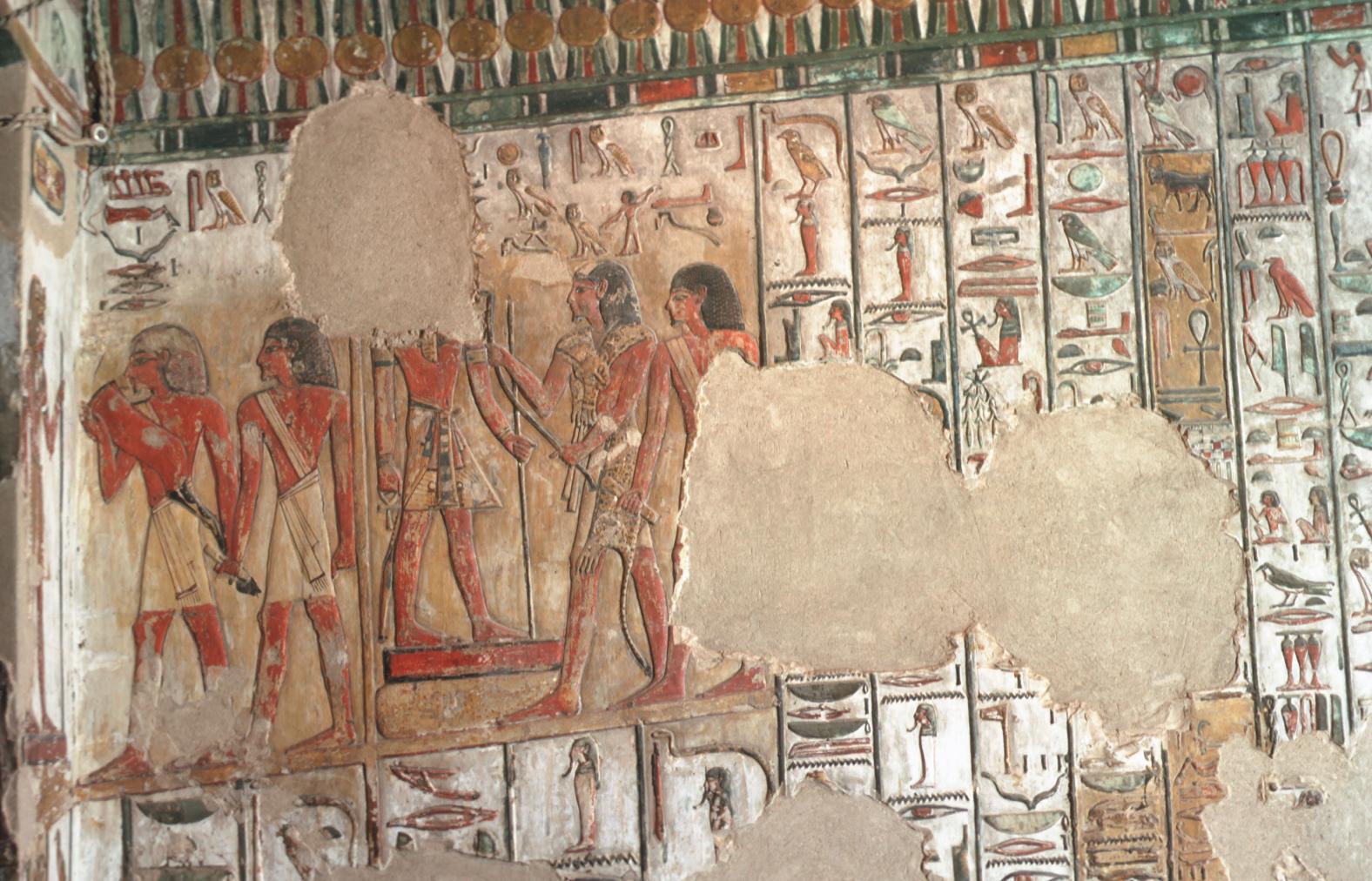
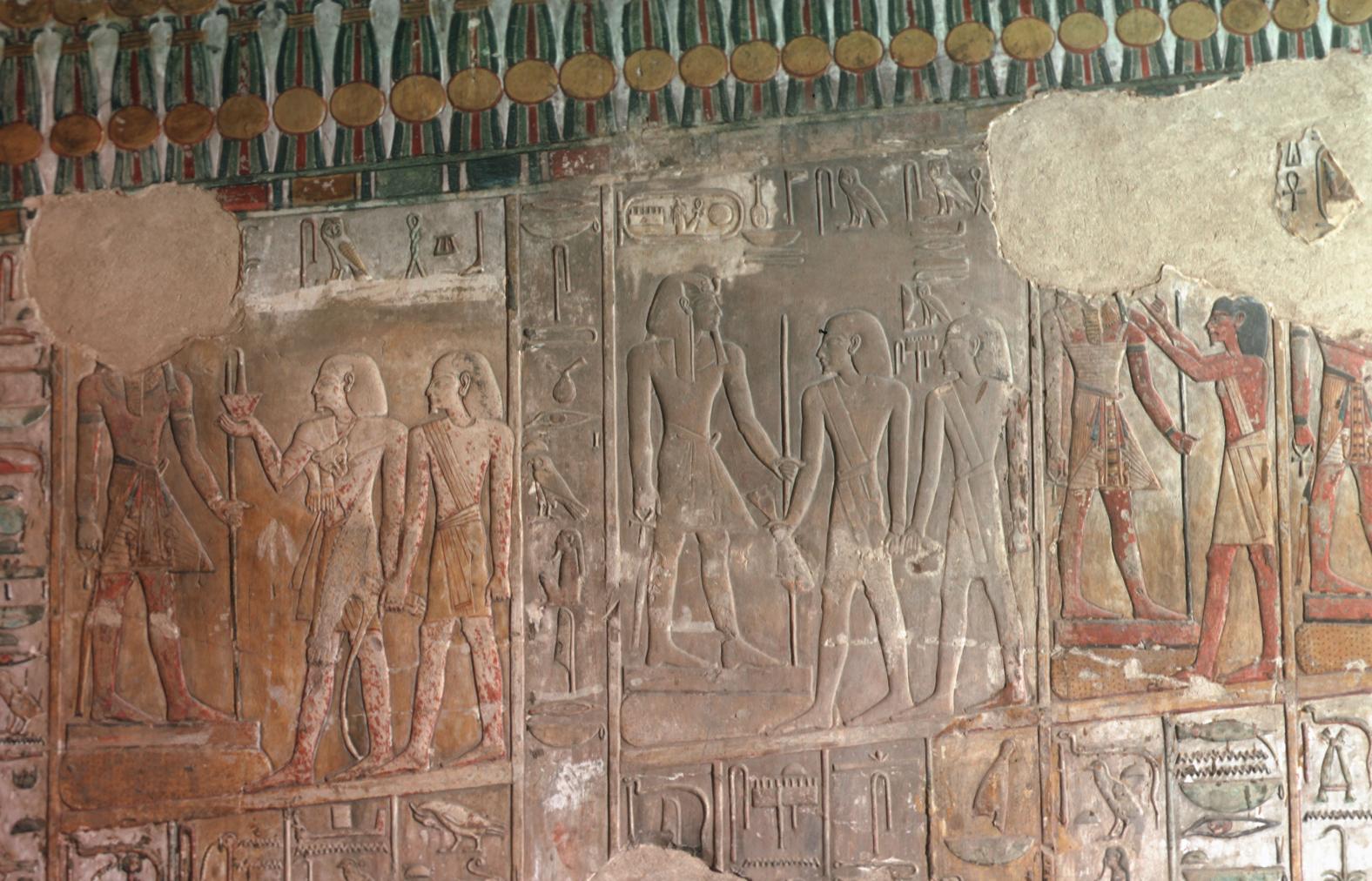
Gate H
See entire tombScenes from the Opening of the Mouth ritual are represented on the jambs.
Porter and Moss designation:
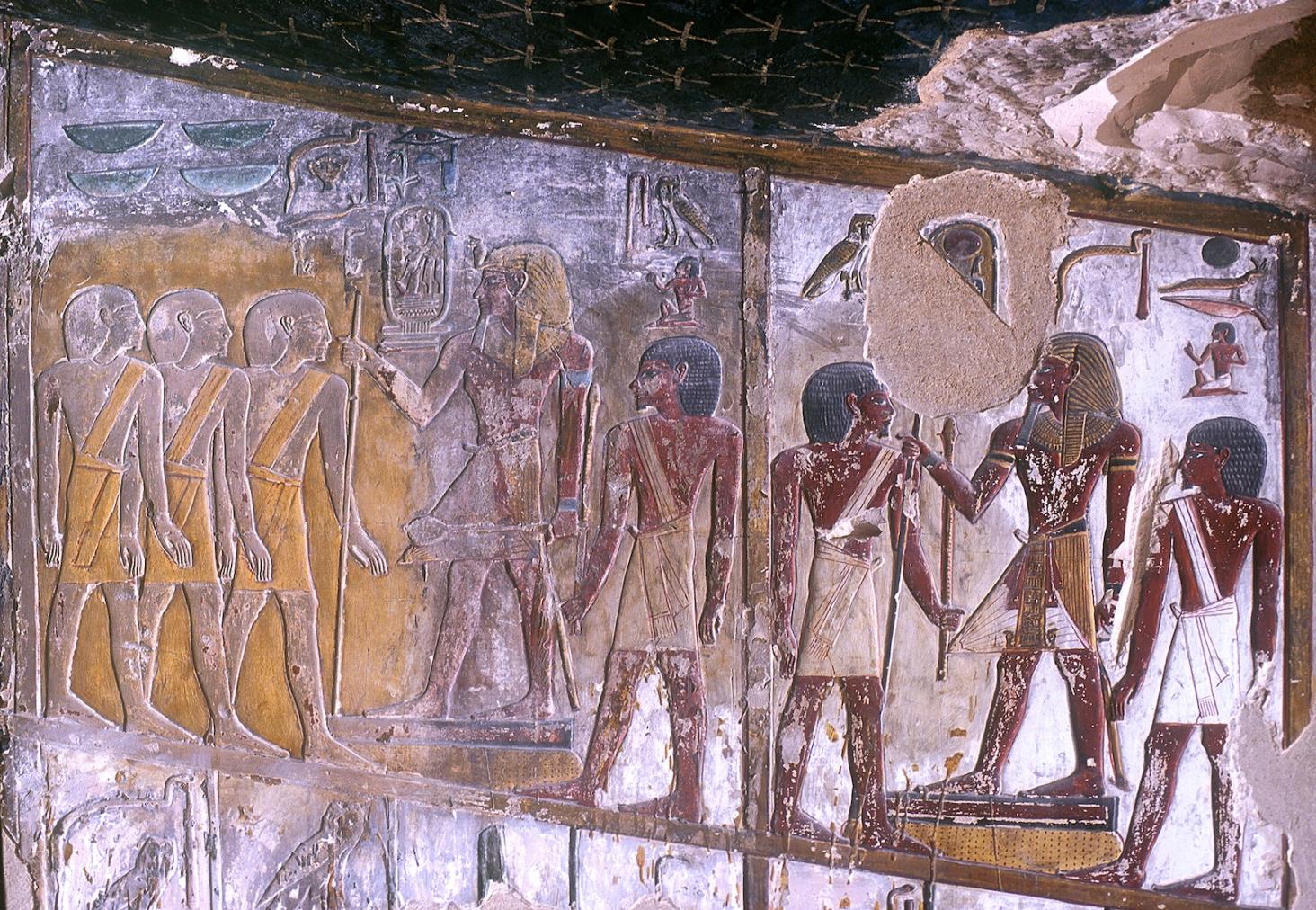

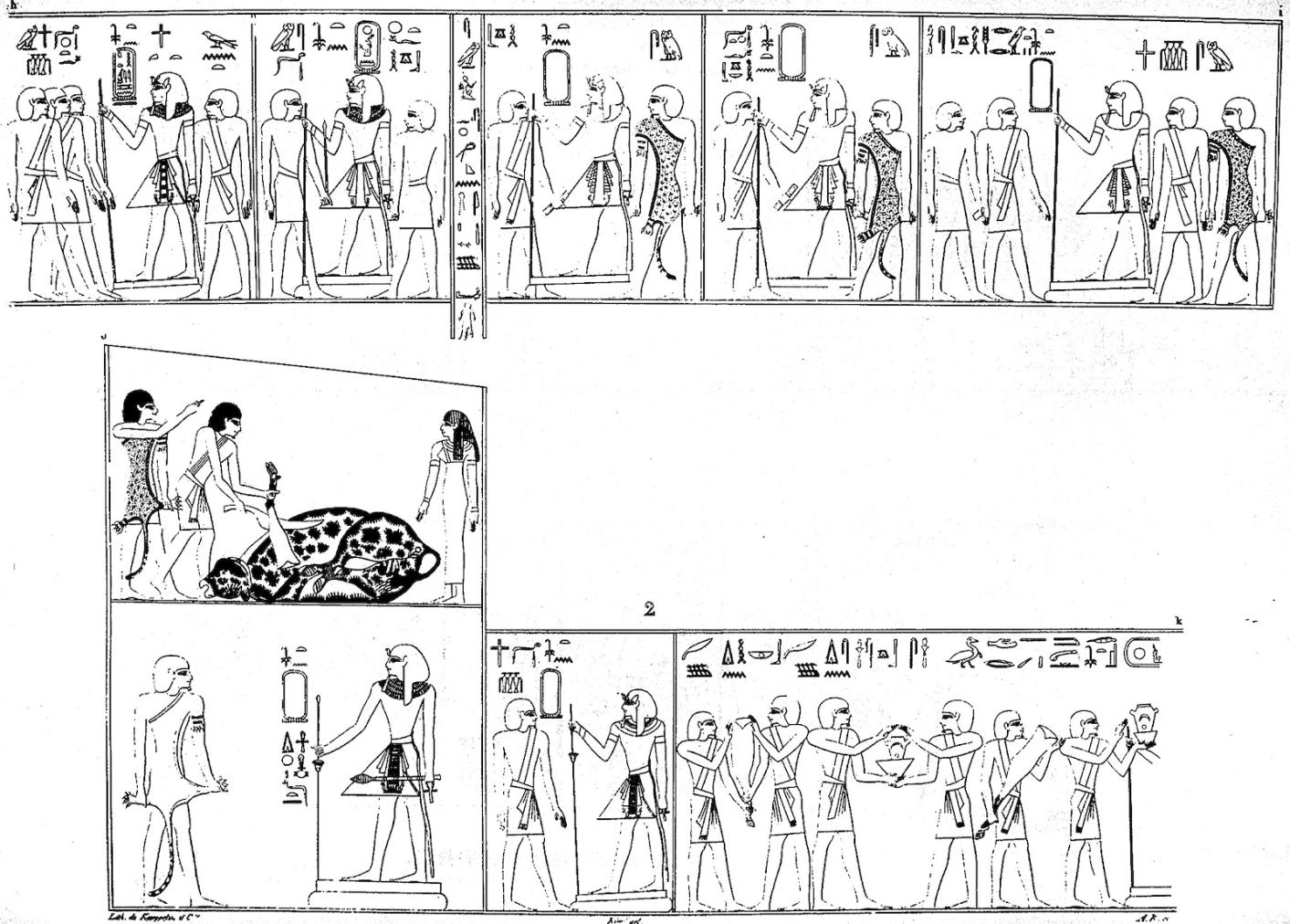
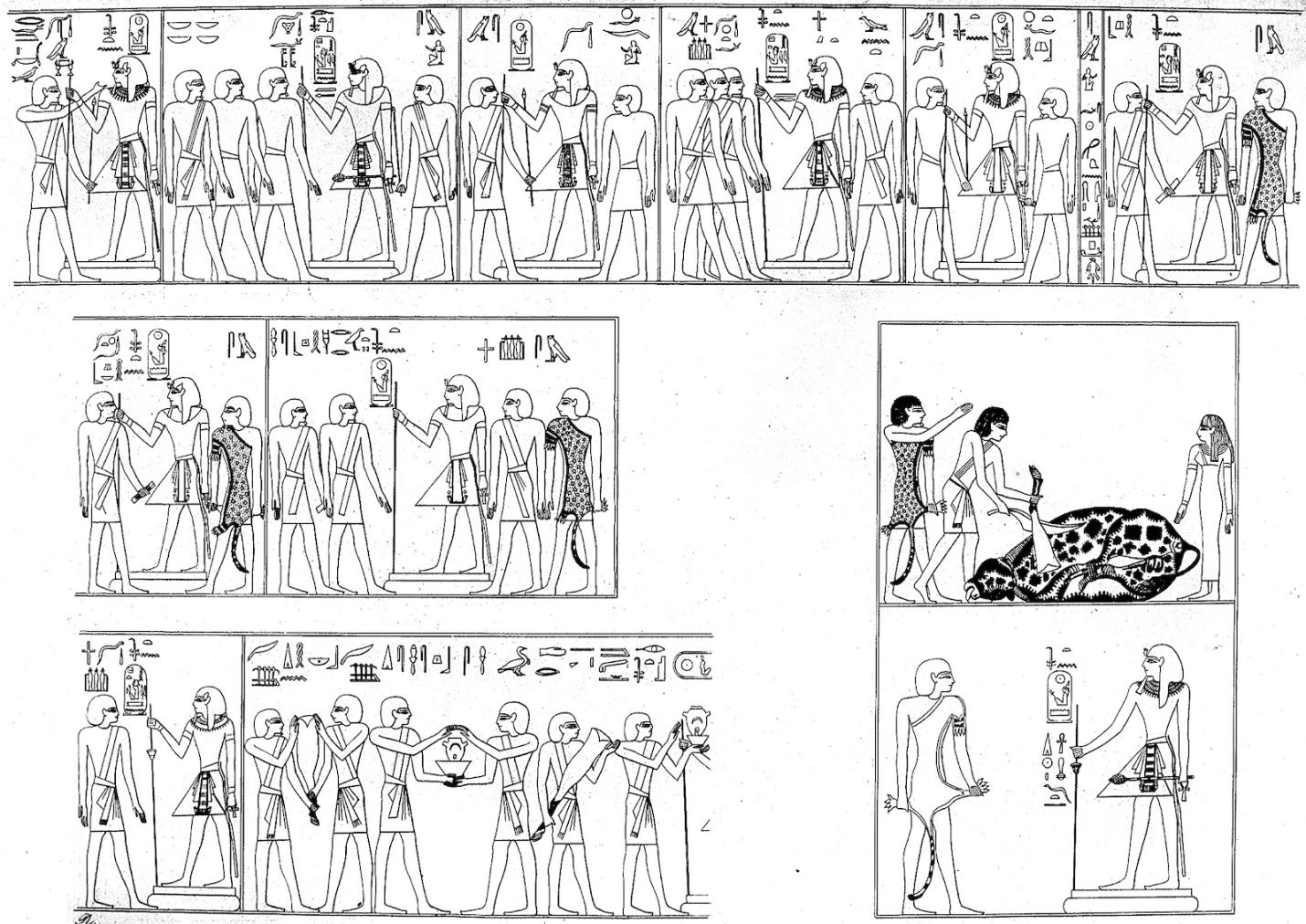
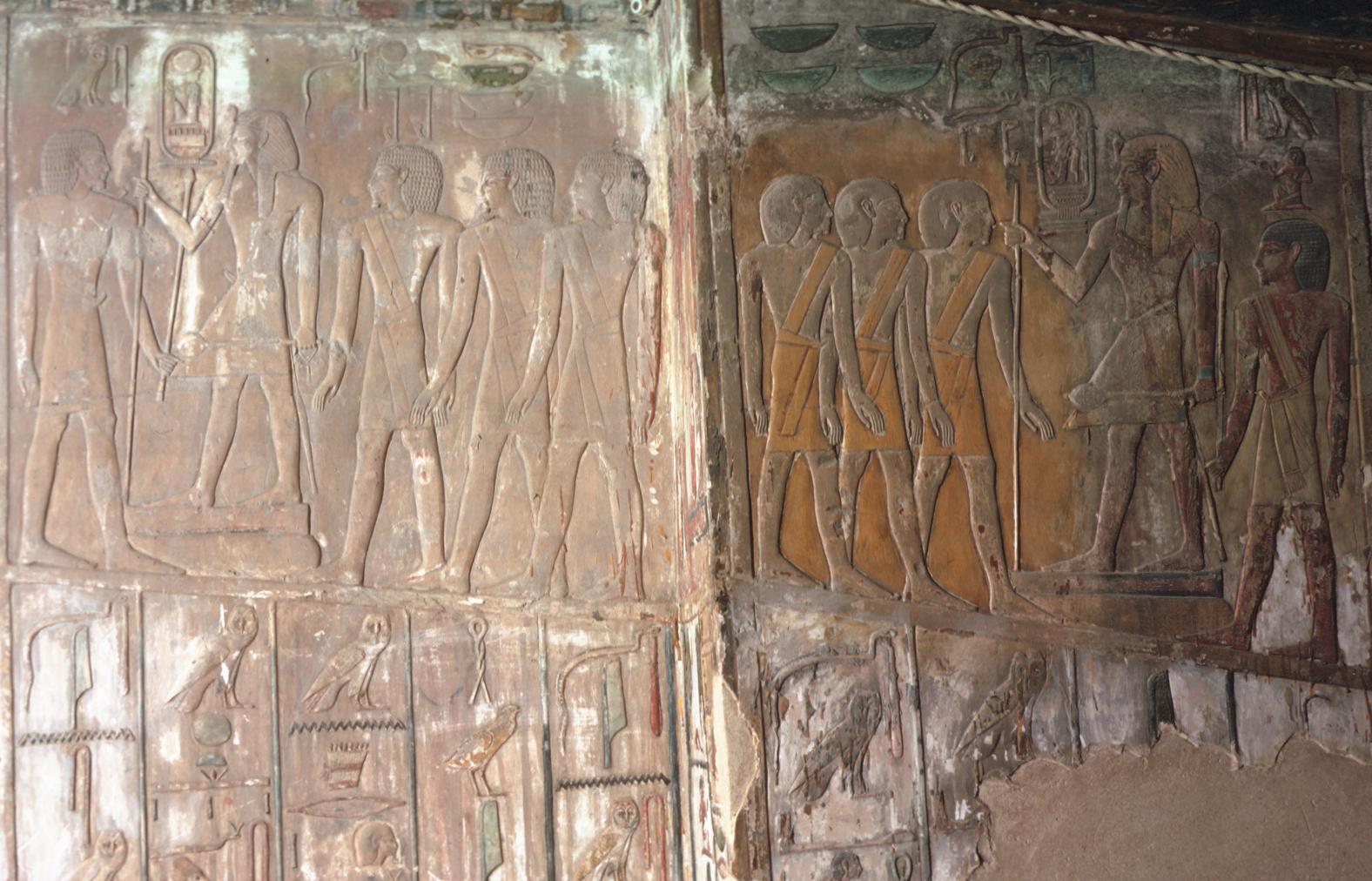
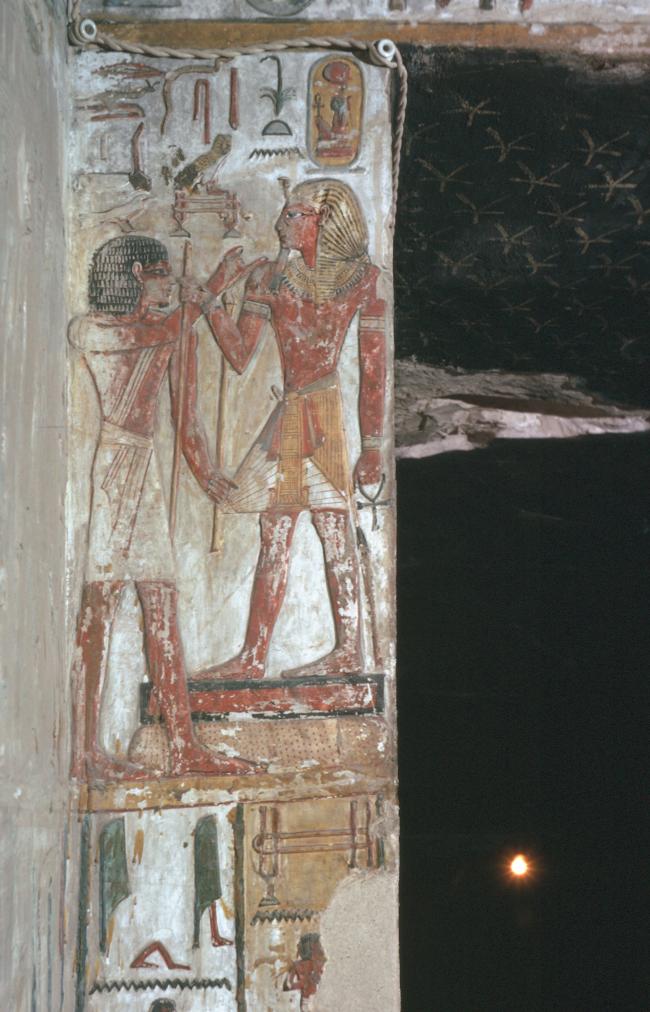
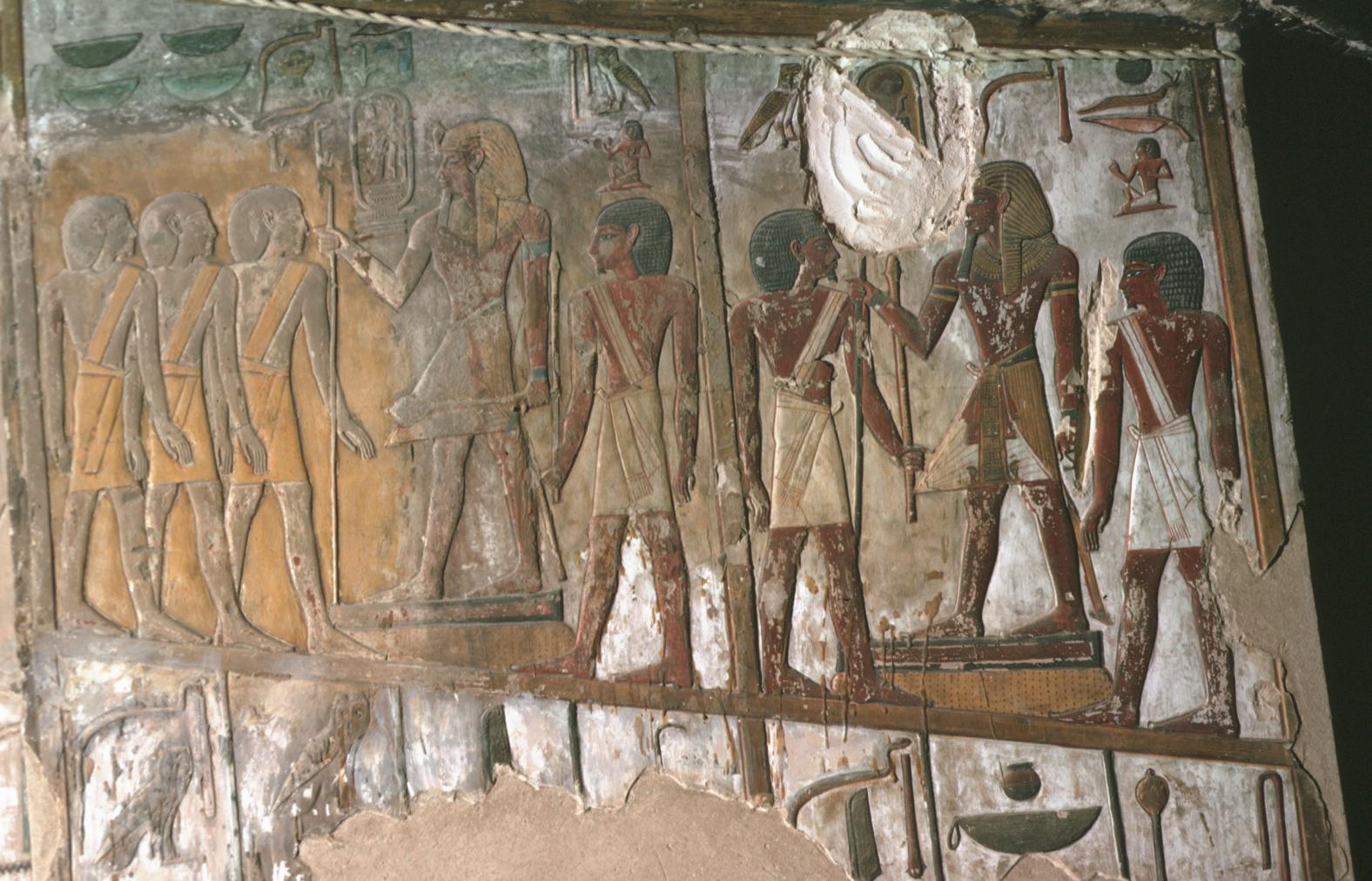
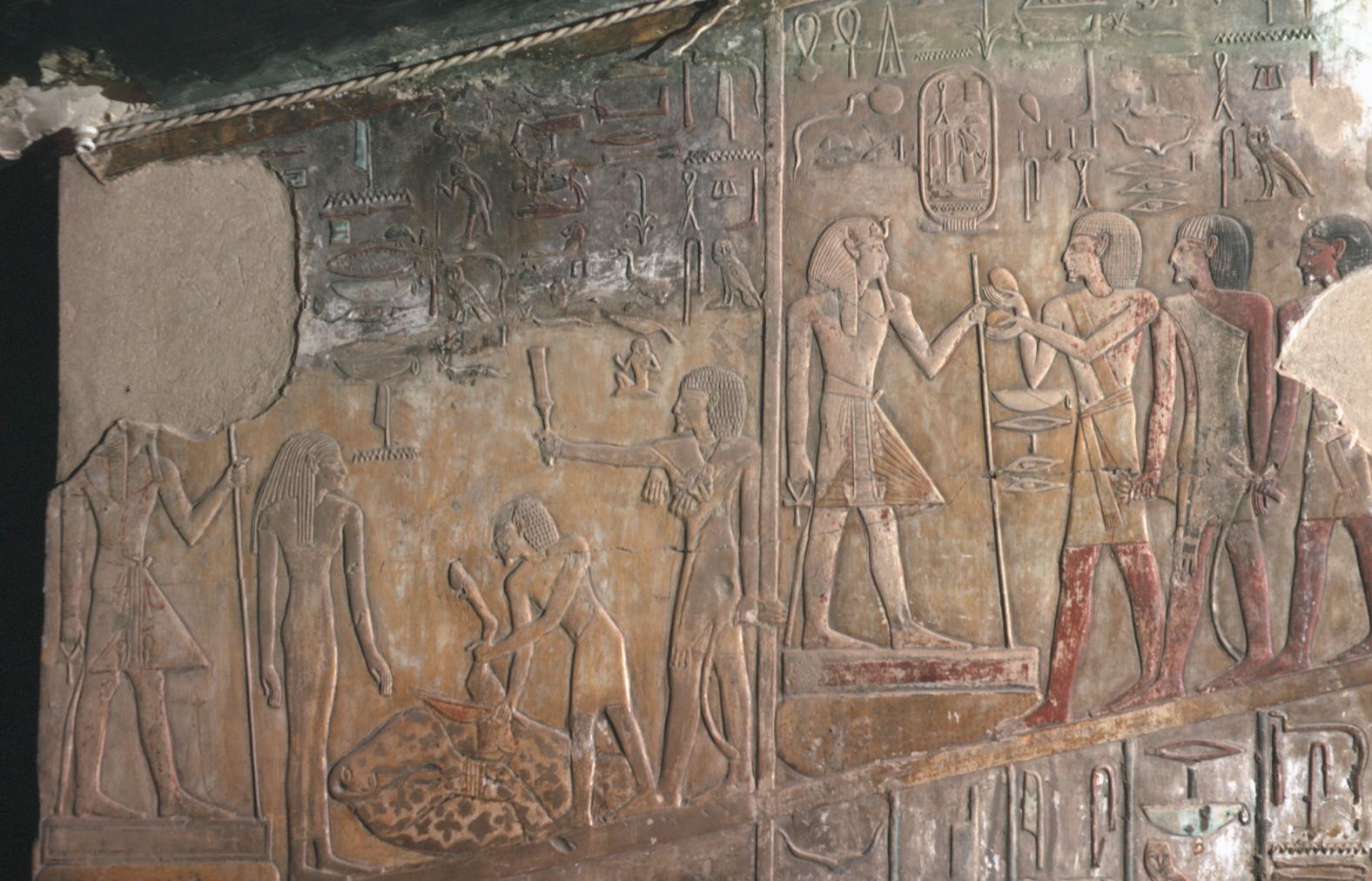
Corridor H
See entire tombFive steps lead into corridor H. The upper part of the side walls were cut back to form a recess along each side. In these recesses are scenes from the Opening of the Mouth ritual. Below them, decoration on both walls is dominated by part of the Litany of the Eye of Horus, a composition originally derived from the Pyramid Texts. The ceiling is decorated with yellow stars on a blue background. Again, vandals have been at work here, cutting out texts, figures, and cartouches.
Porter and Moss designation:

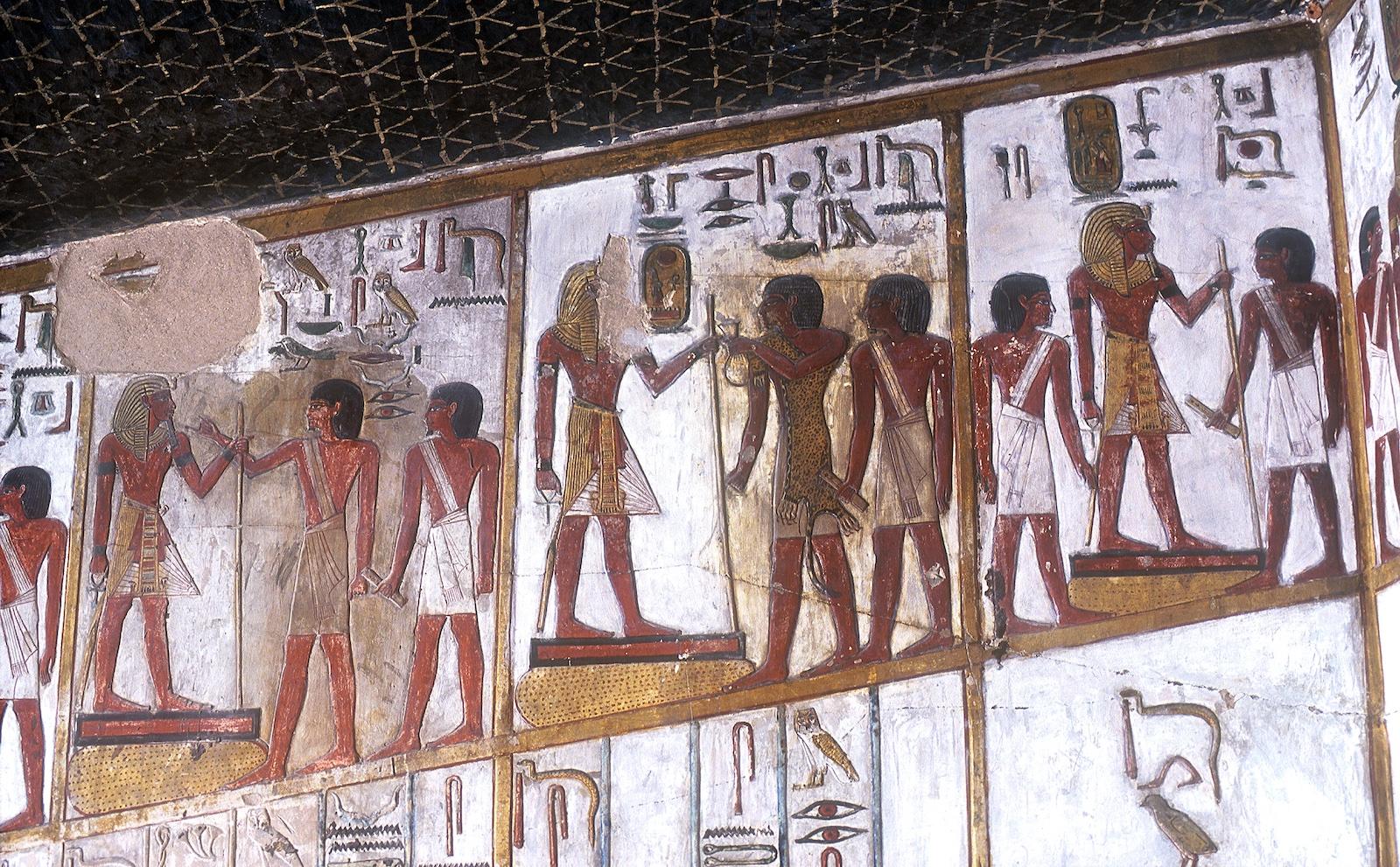
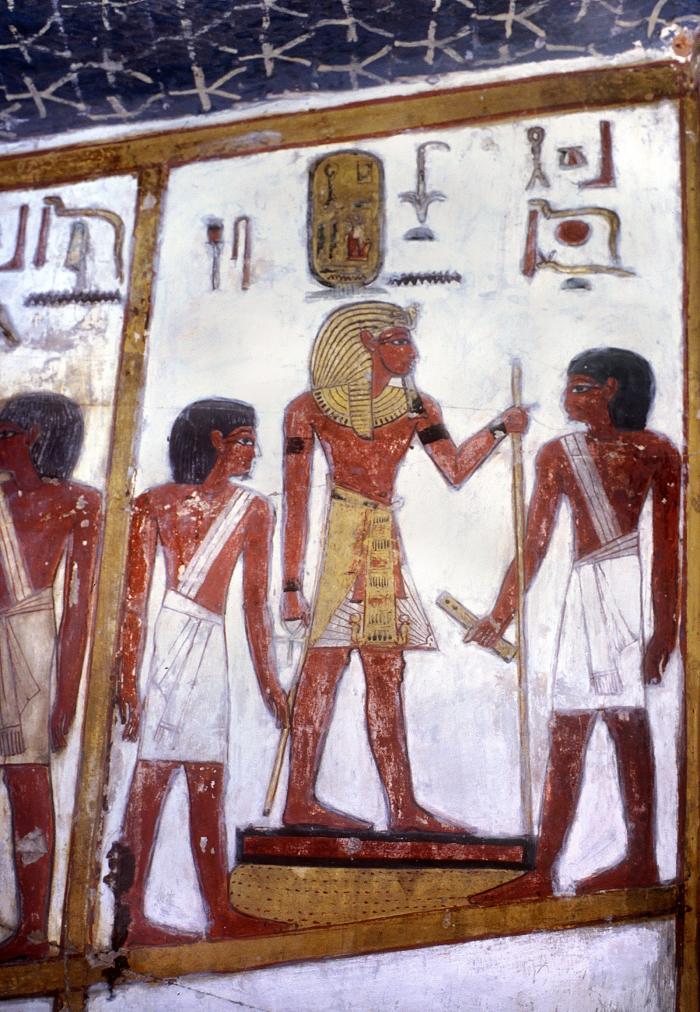
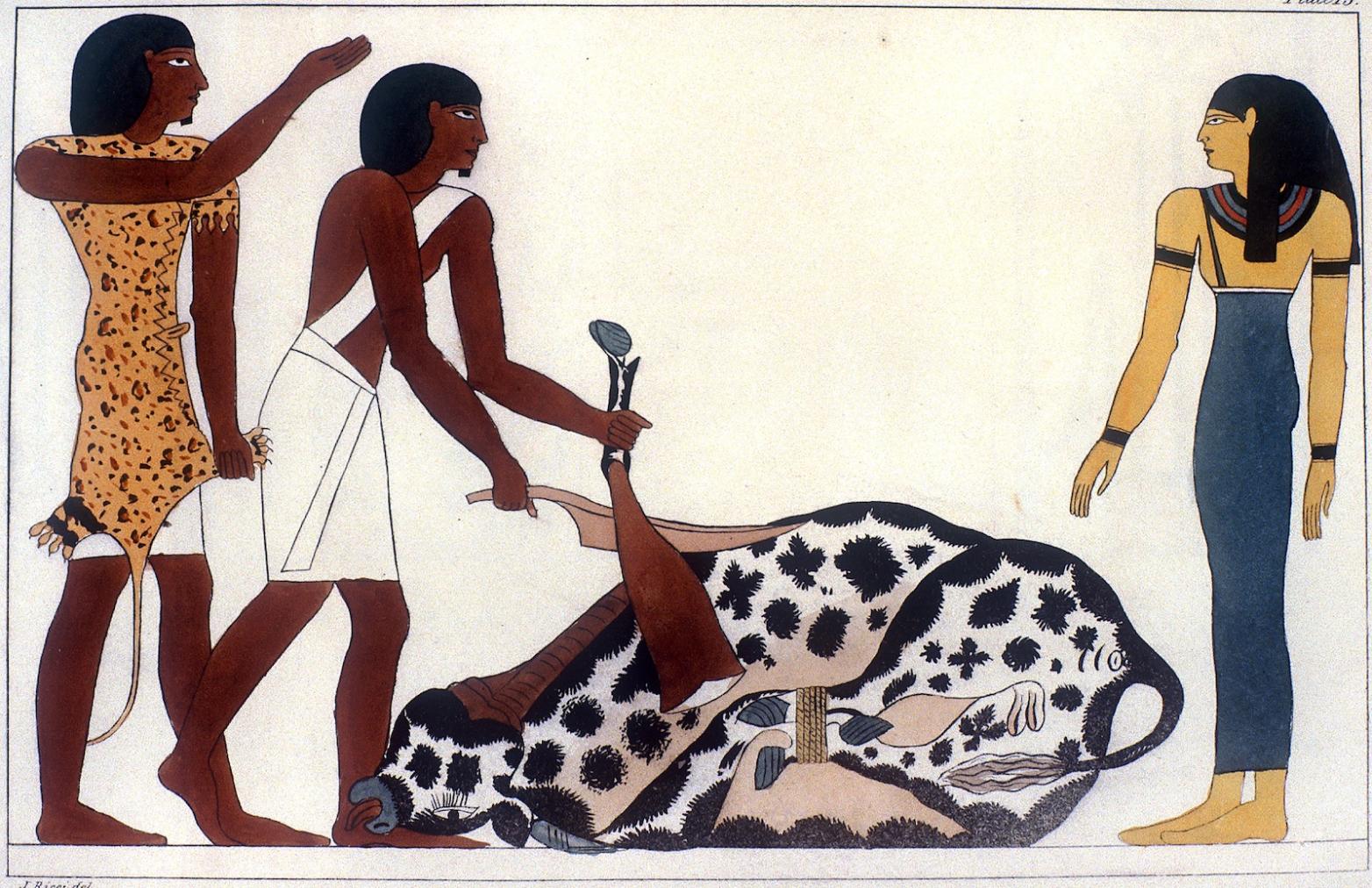
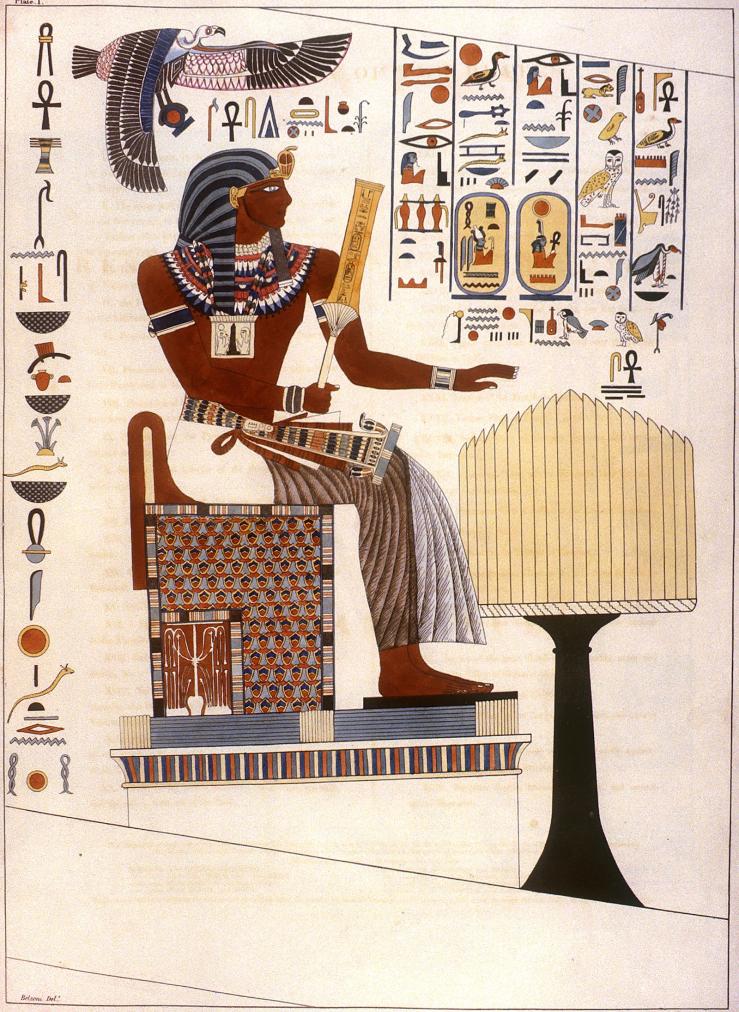
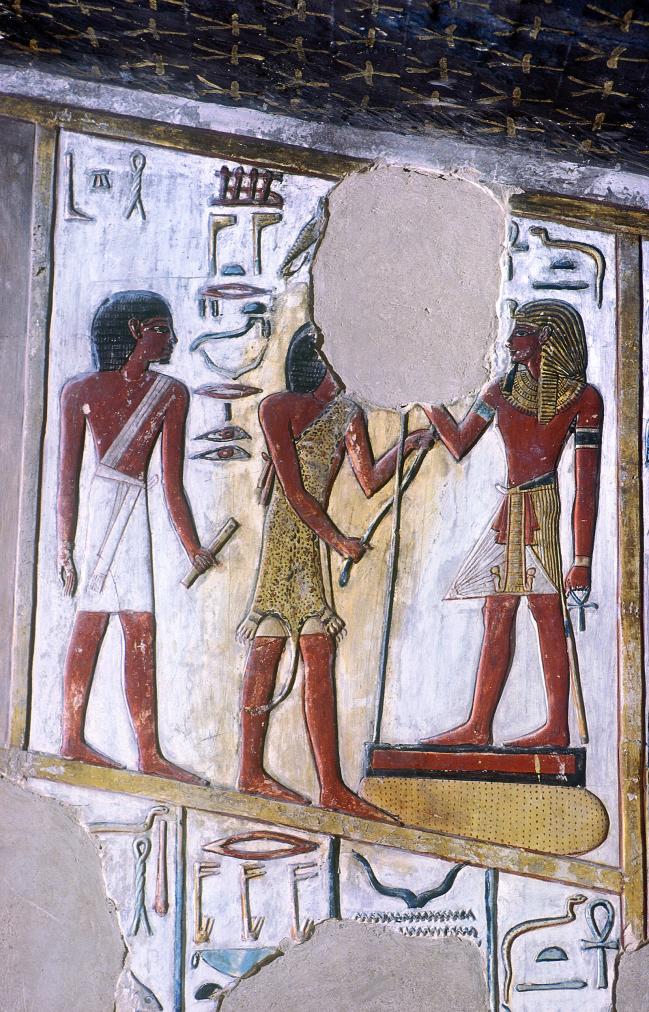
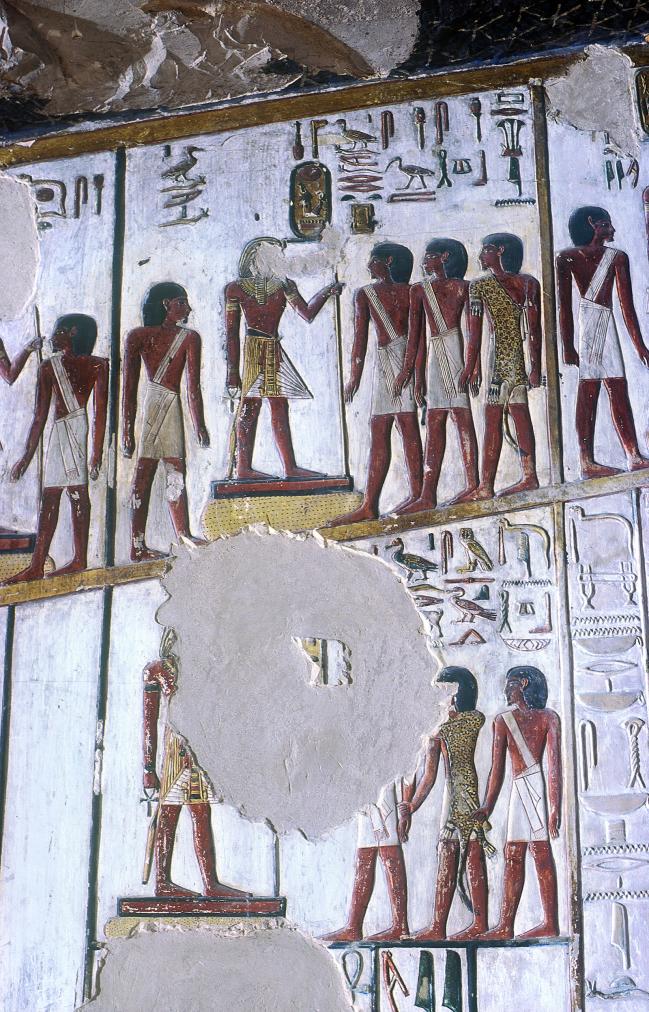
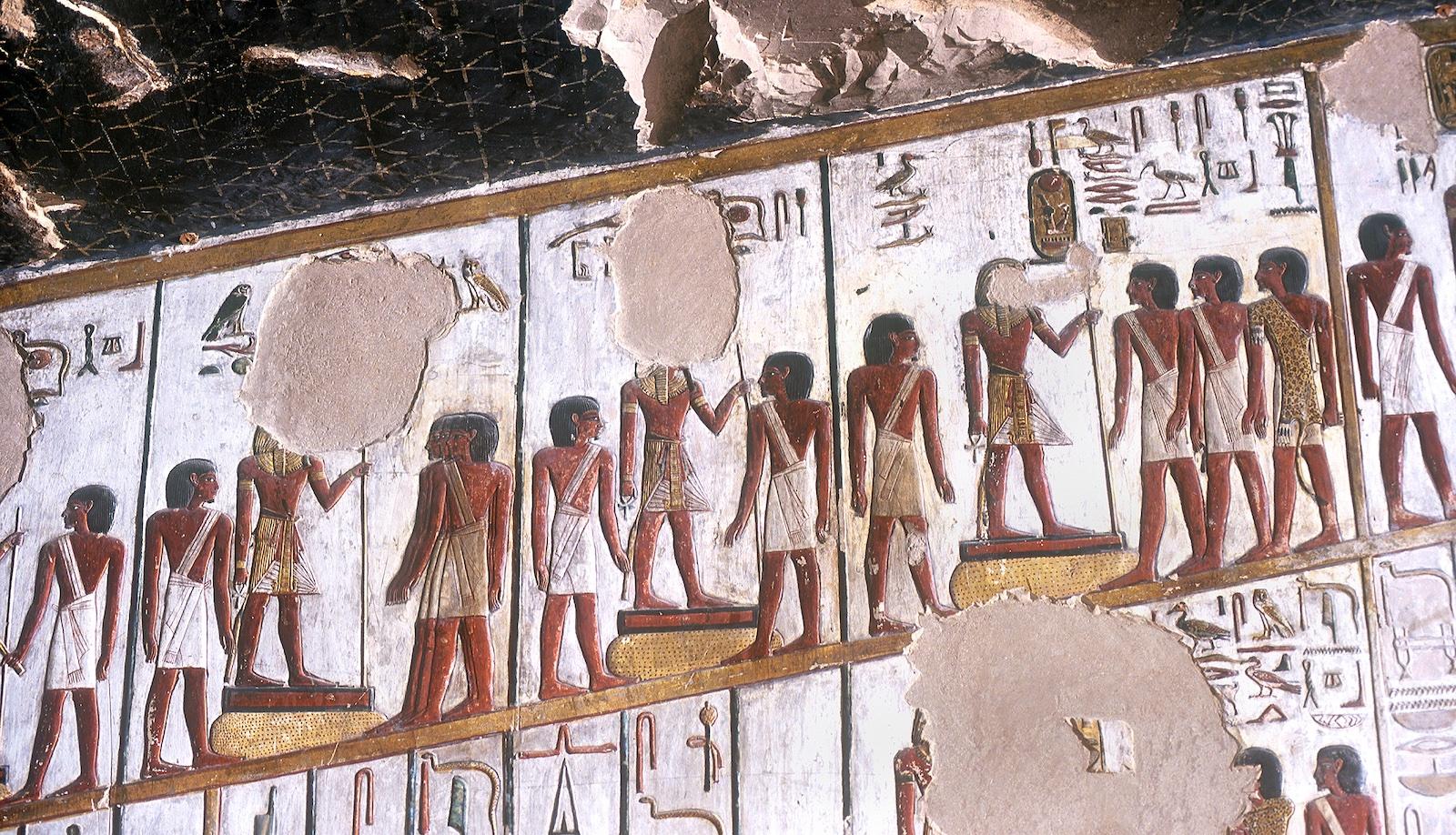
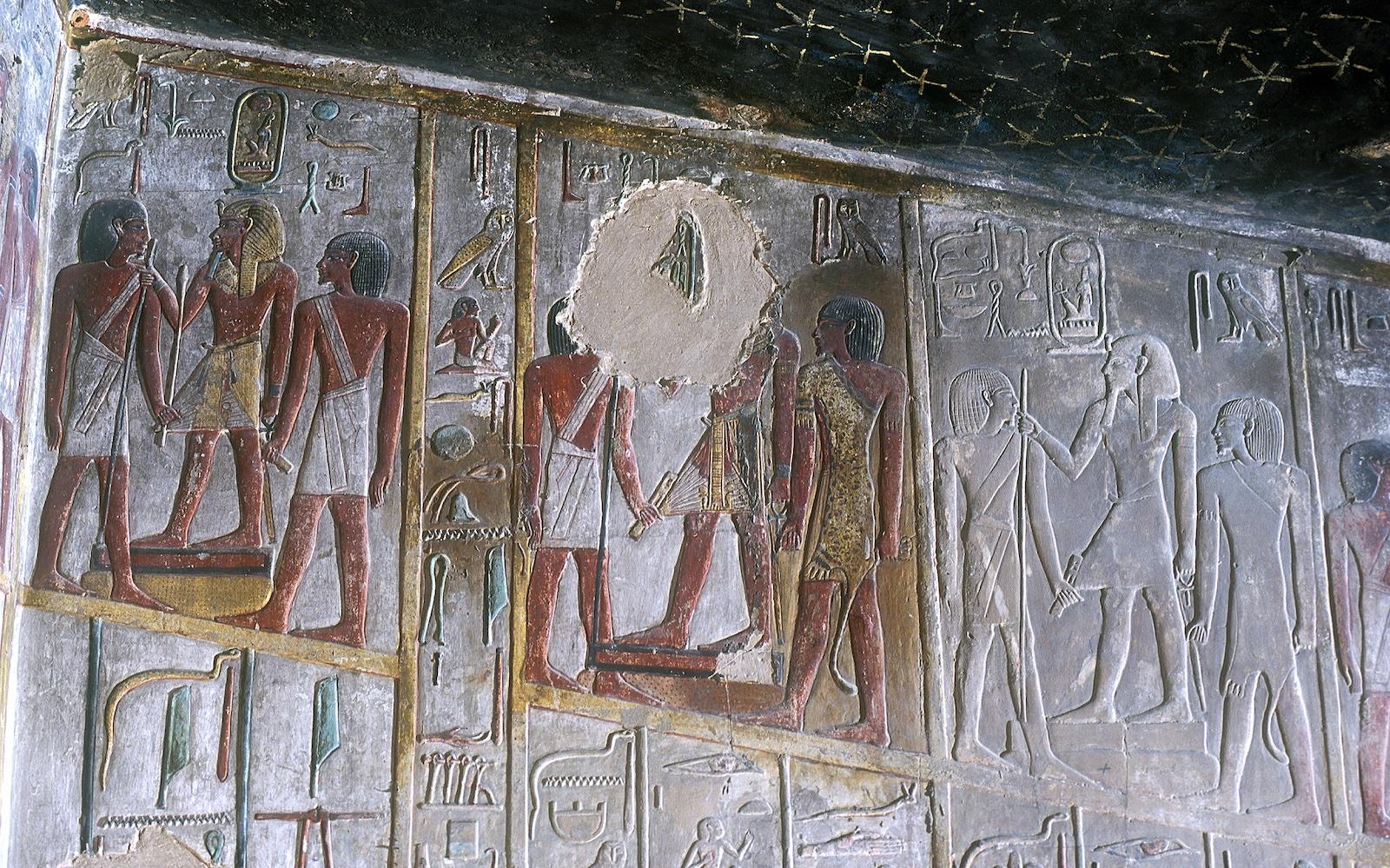


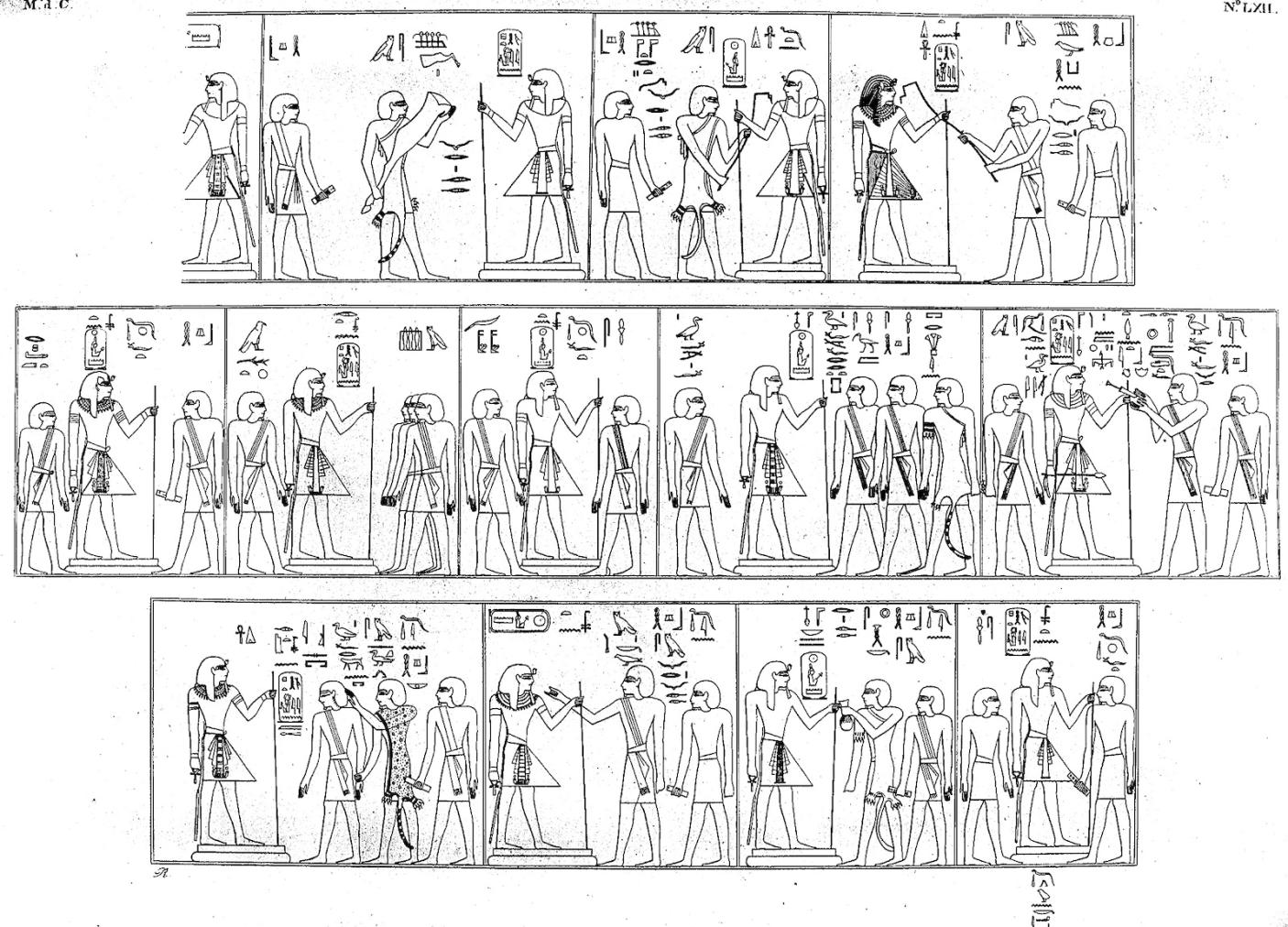

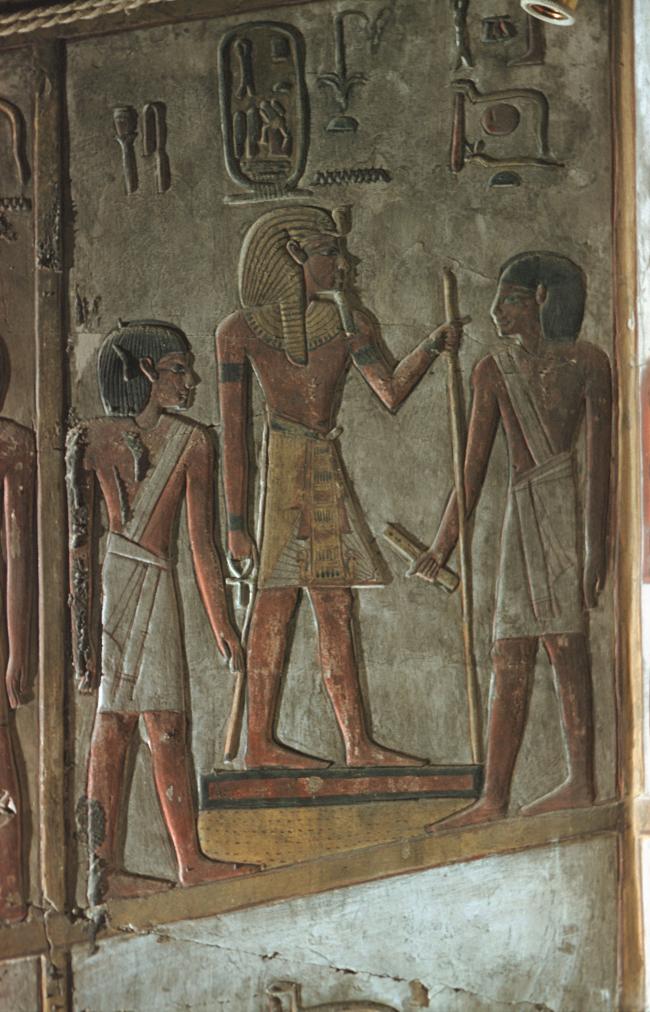
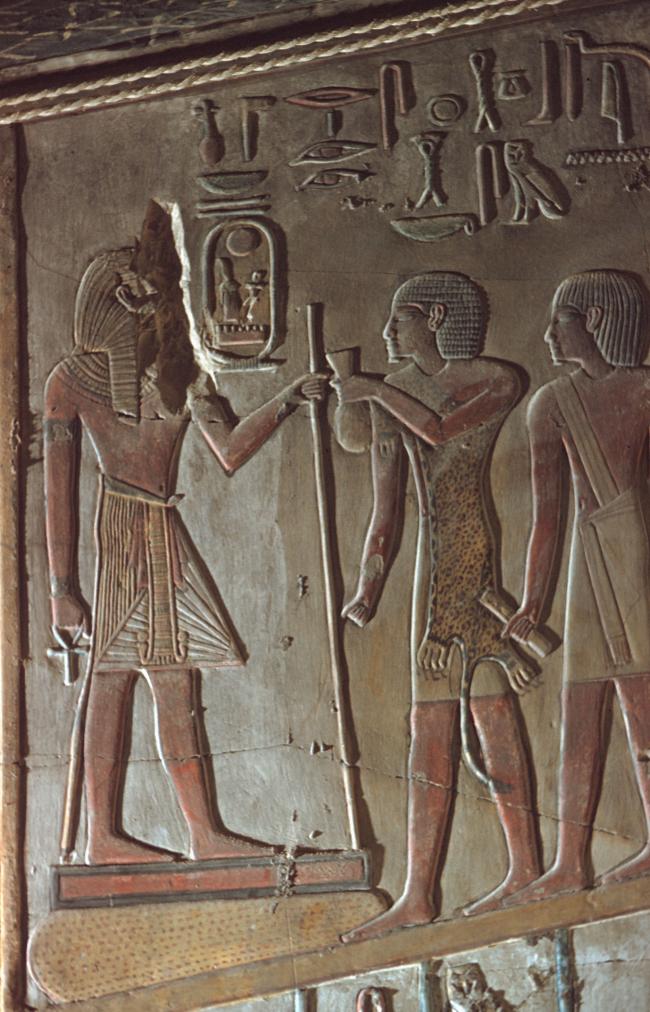

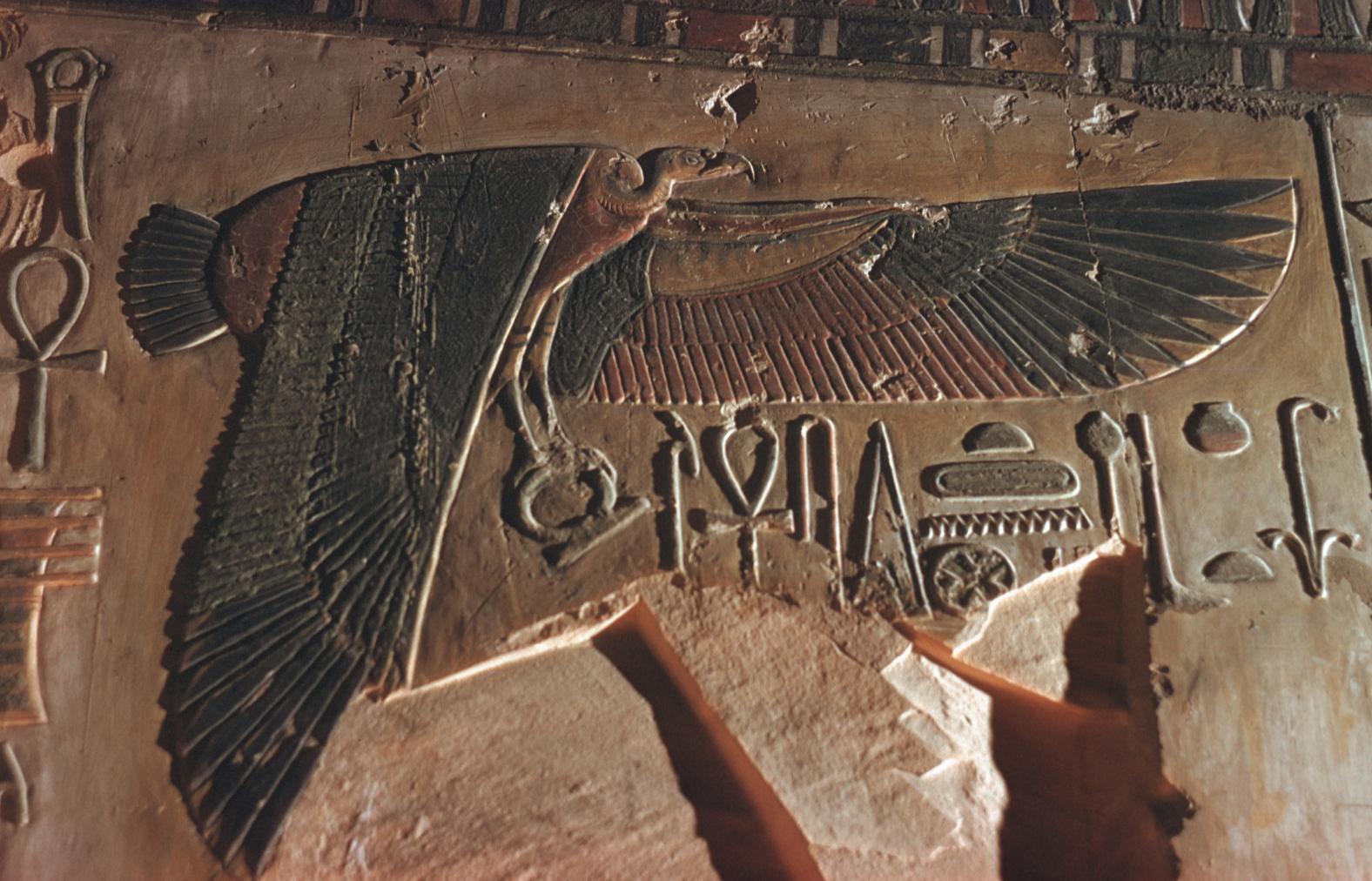
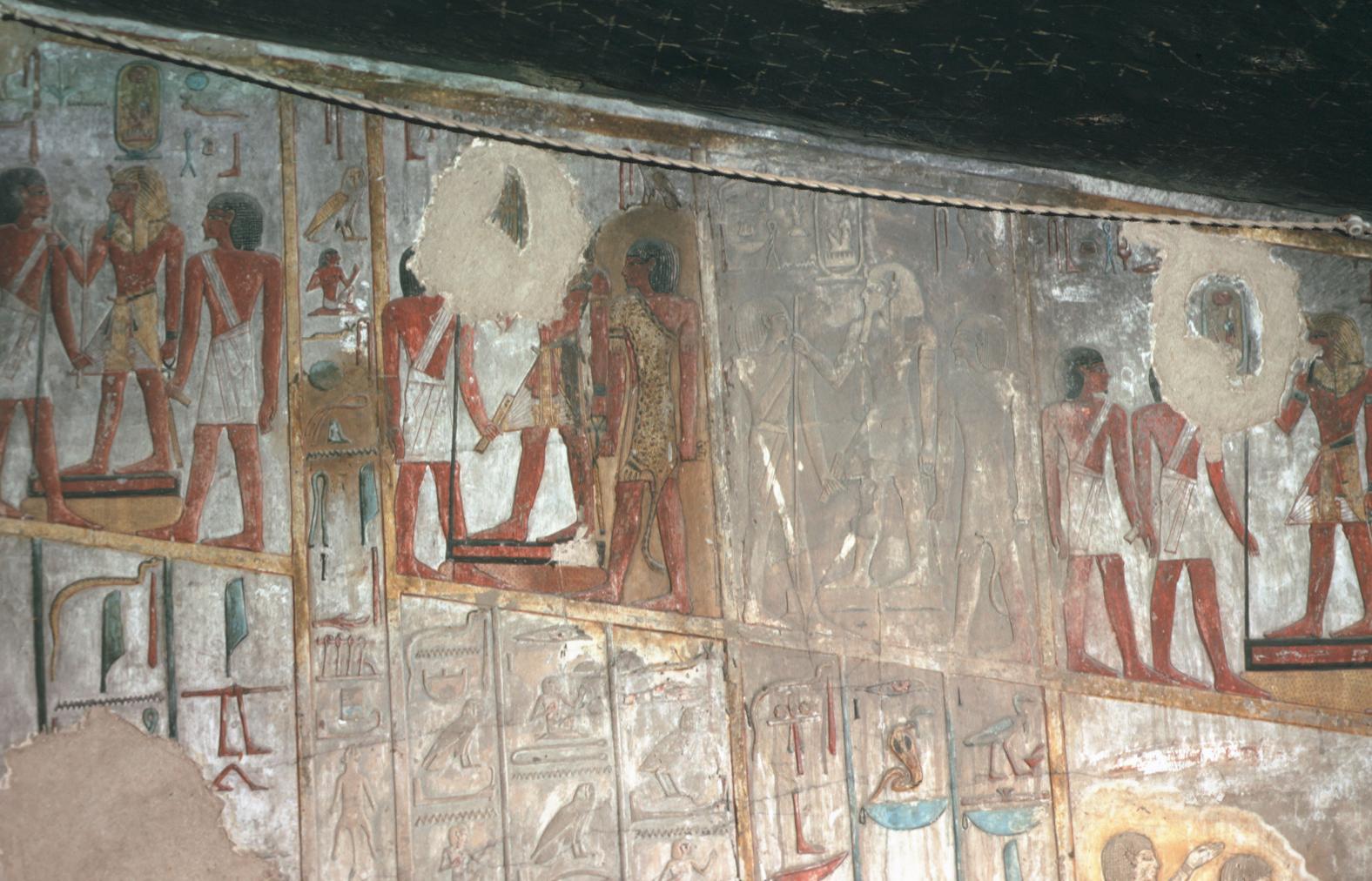
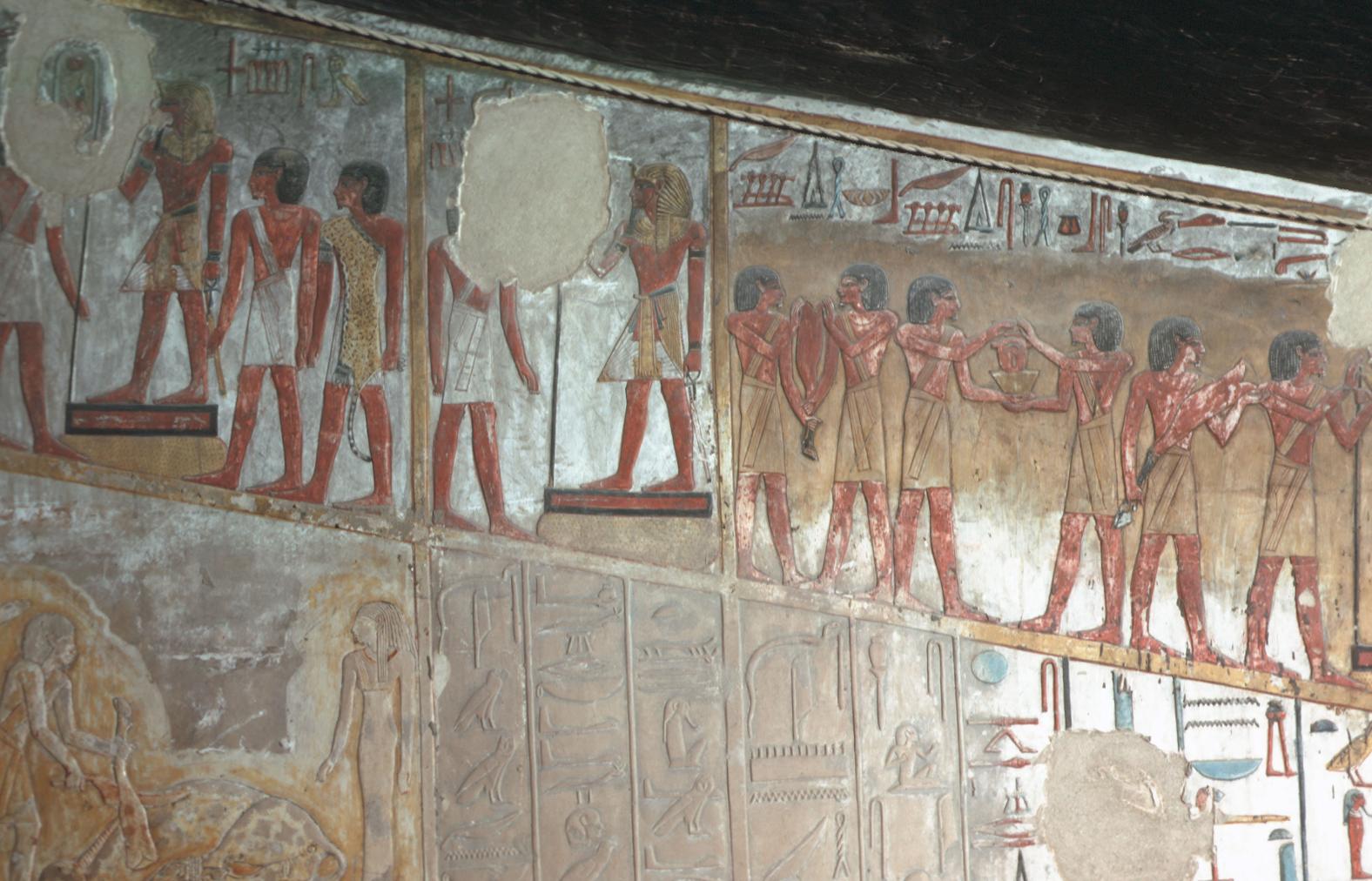
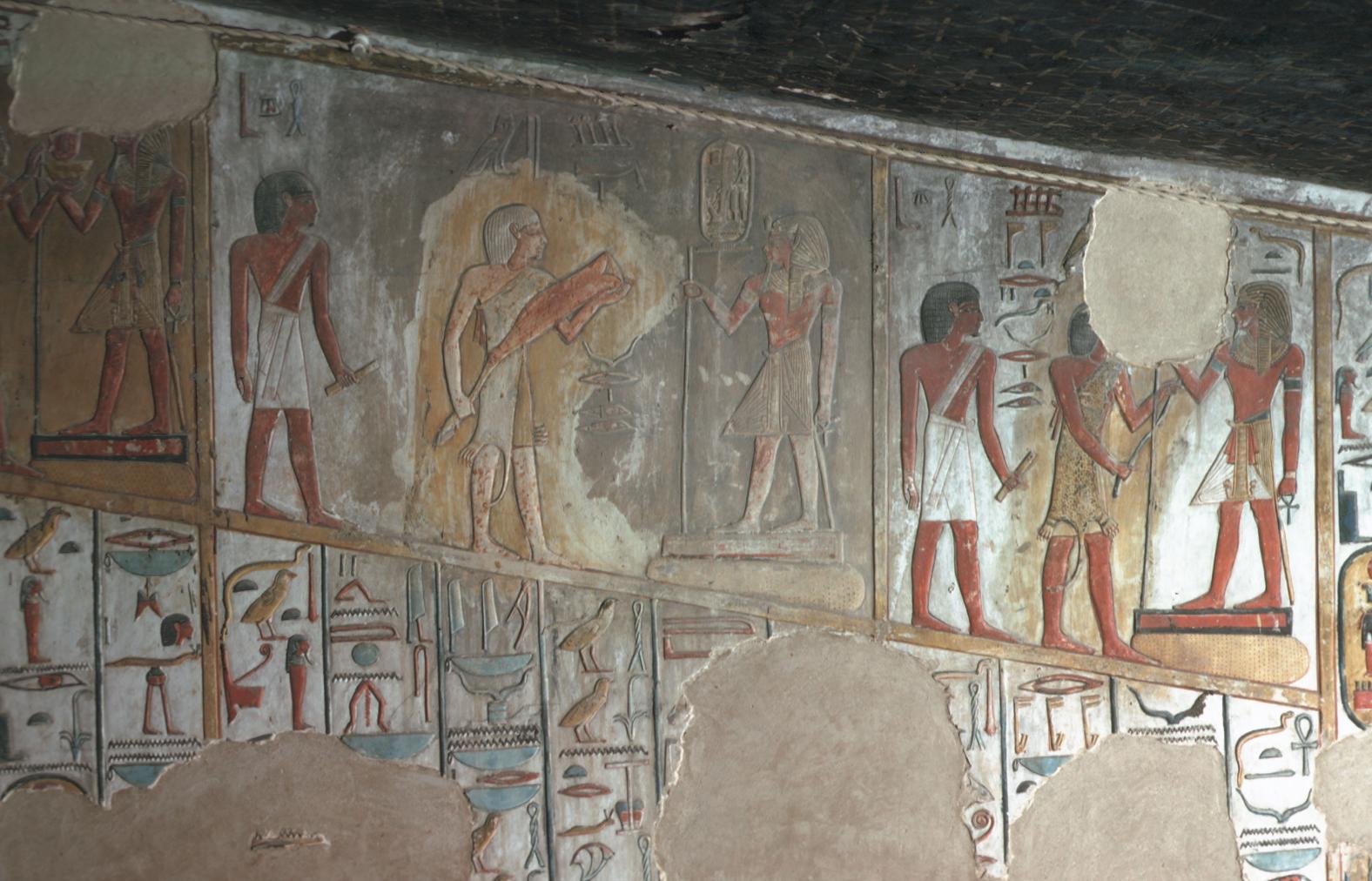
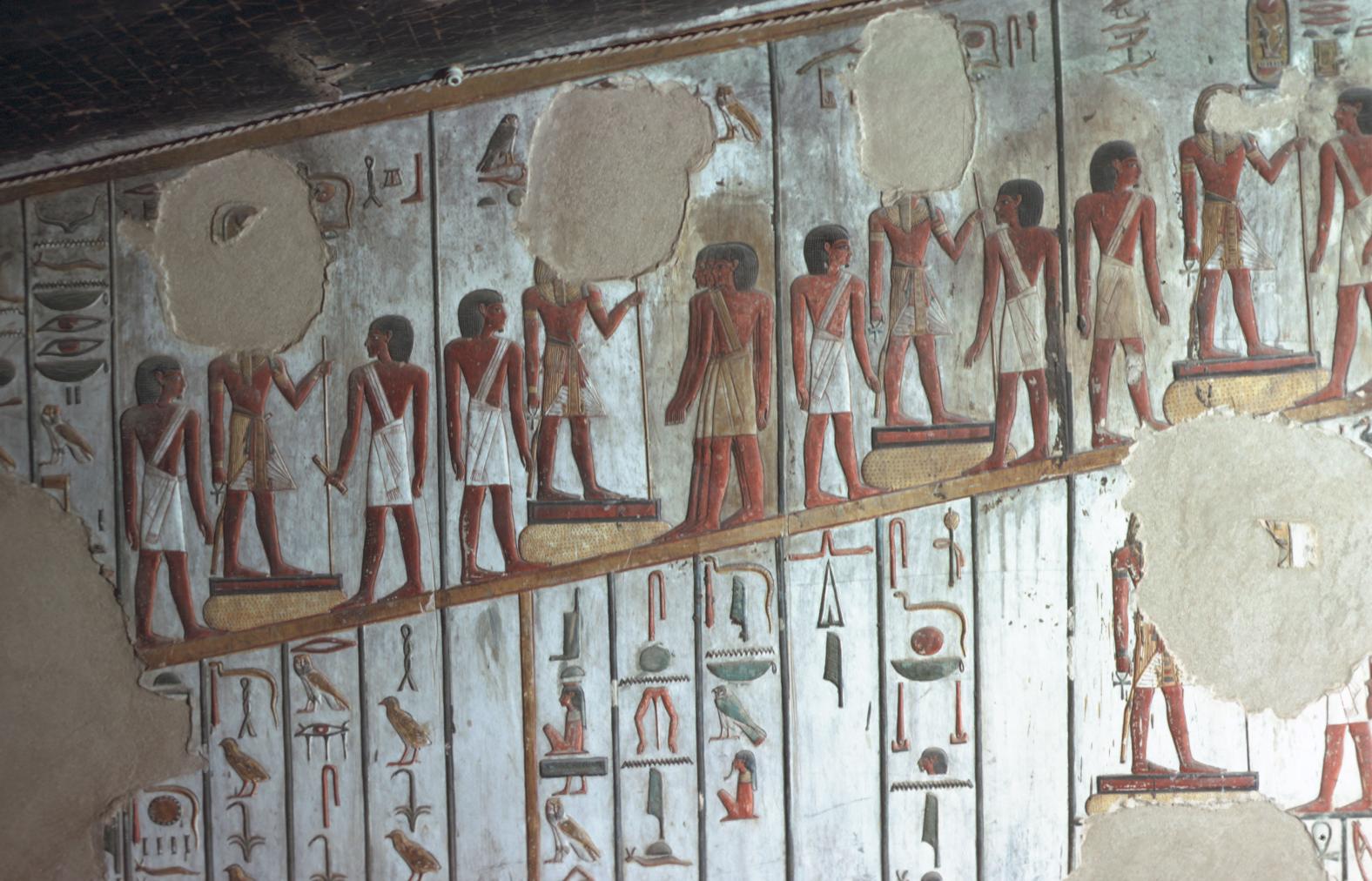
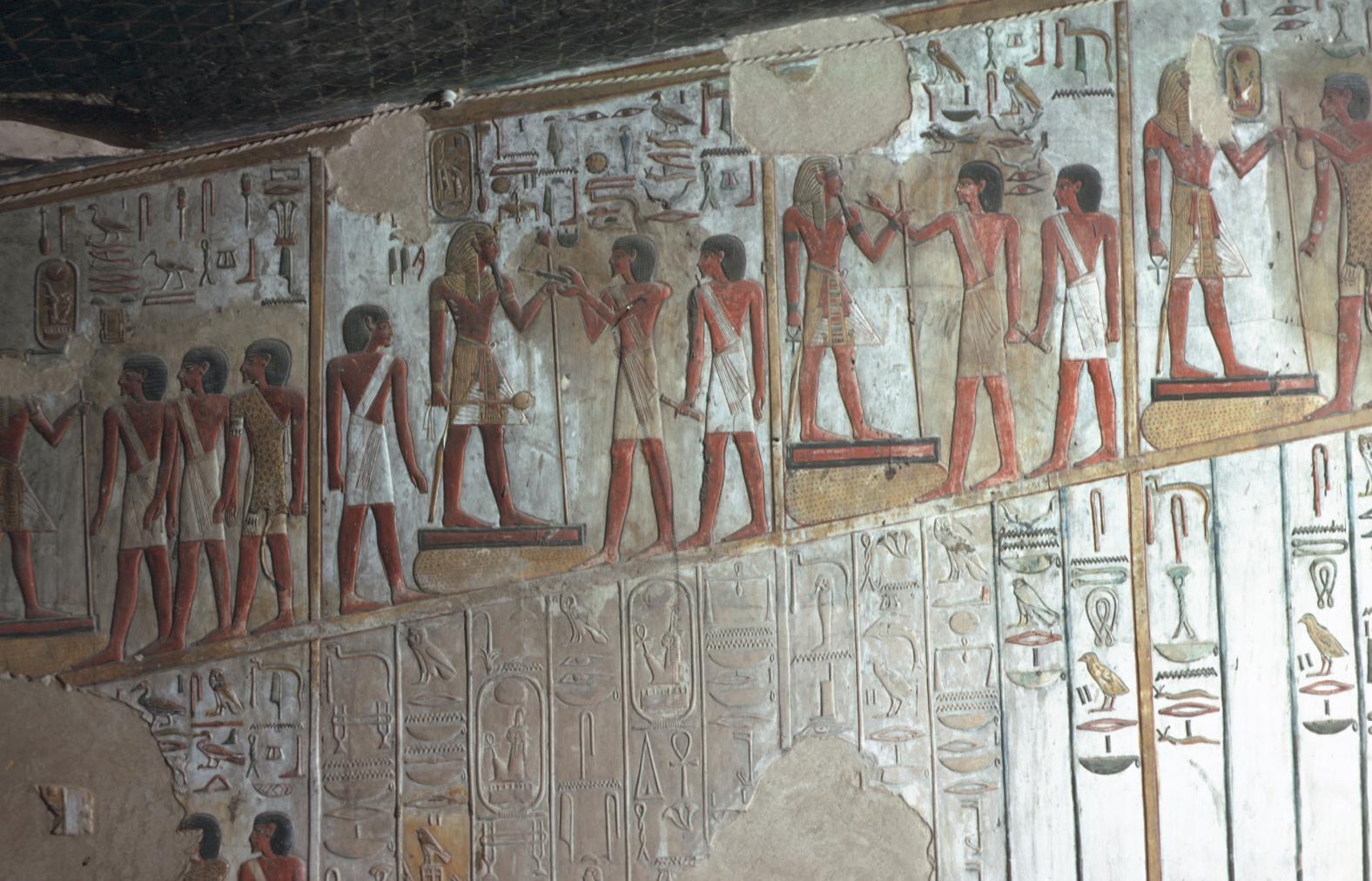
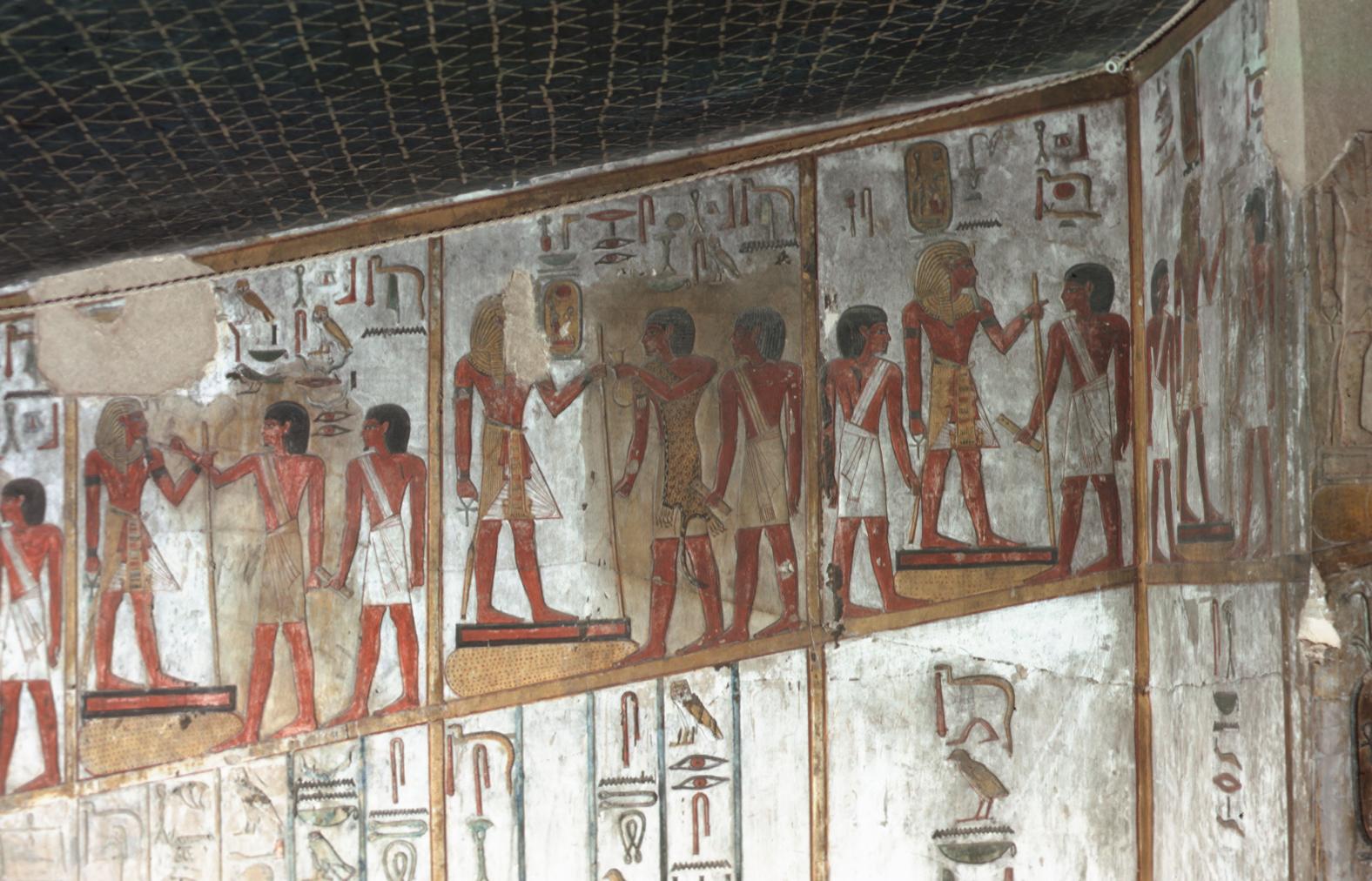
Gate I
See entire tombA winged disk decorates the outer lintel, and the reveals are decorated with the king's names. There are two cobras on the thicknesses, one representing Nekhbet (on the southeast) and Wadjet (on the northwest).
Porter and Moss designation:
Chamber I
See entire tombSqueezes taken of scenes in this chamber in the nineteenth century caused considerable loss of color. The king is shown with various deities. The ceiling is painted with stars.
Porter and Moss designation:

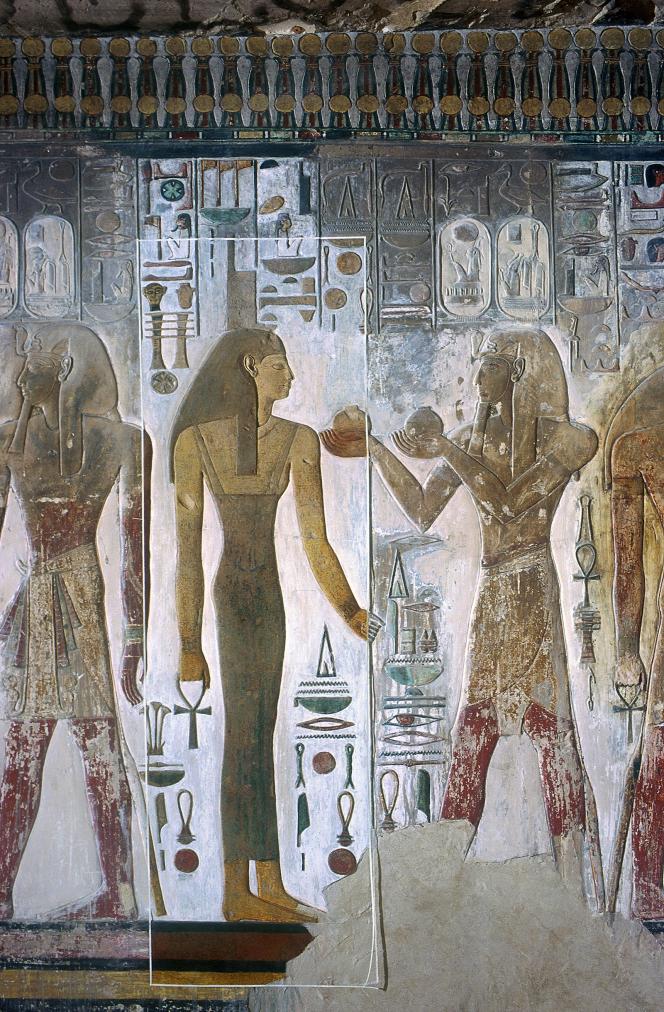
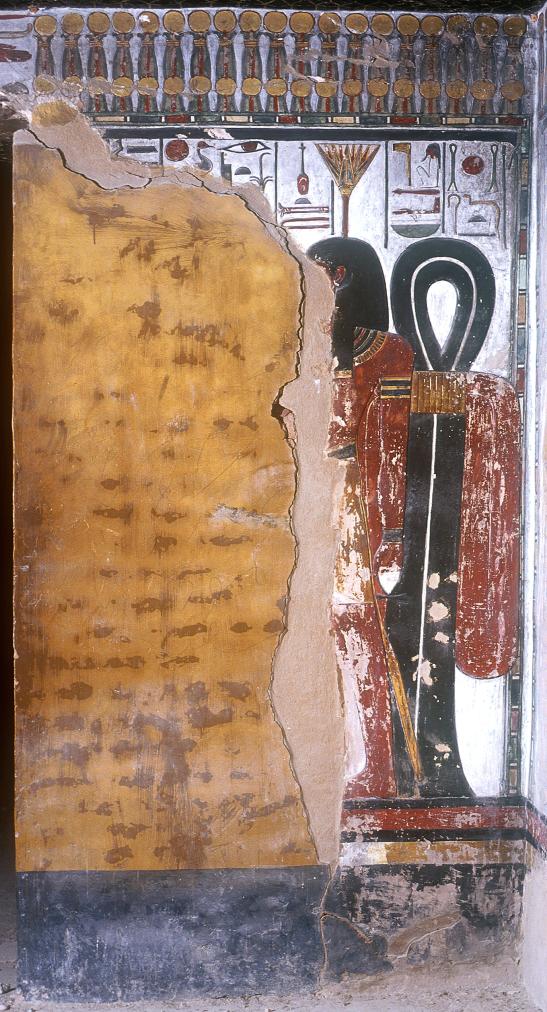
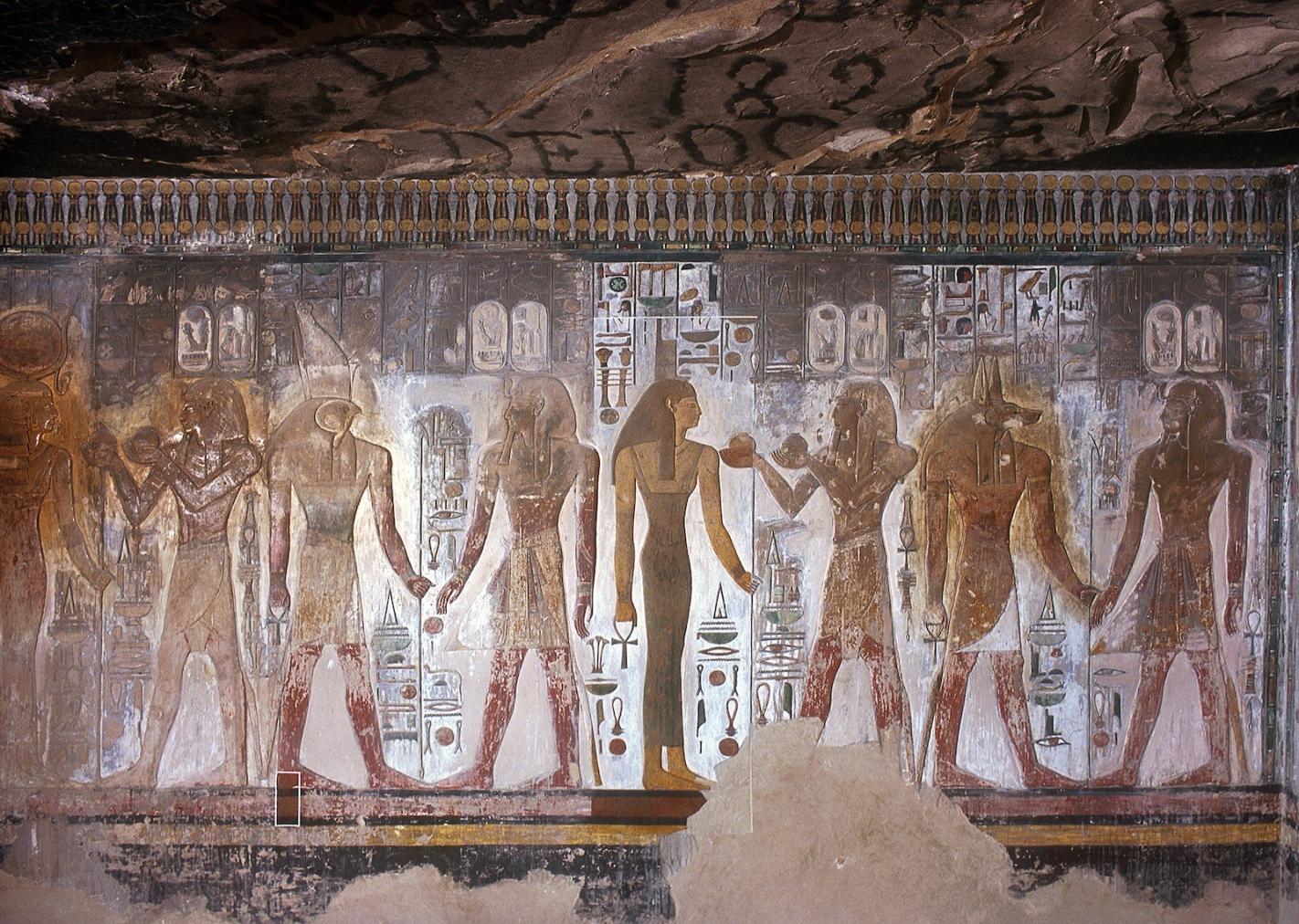
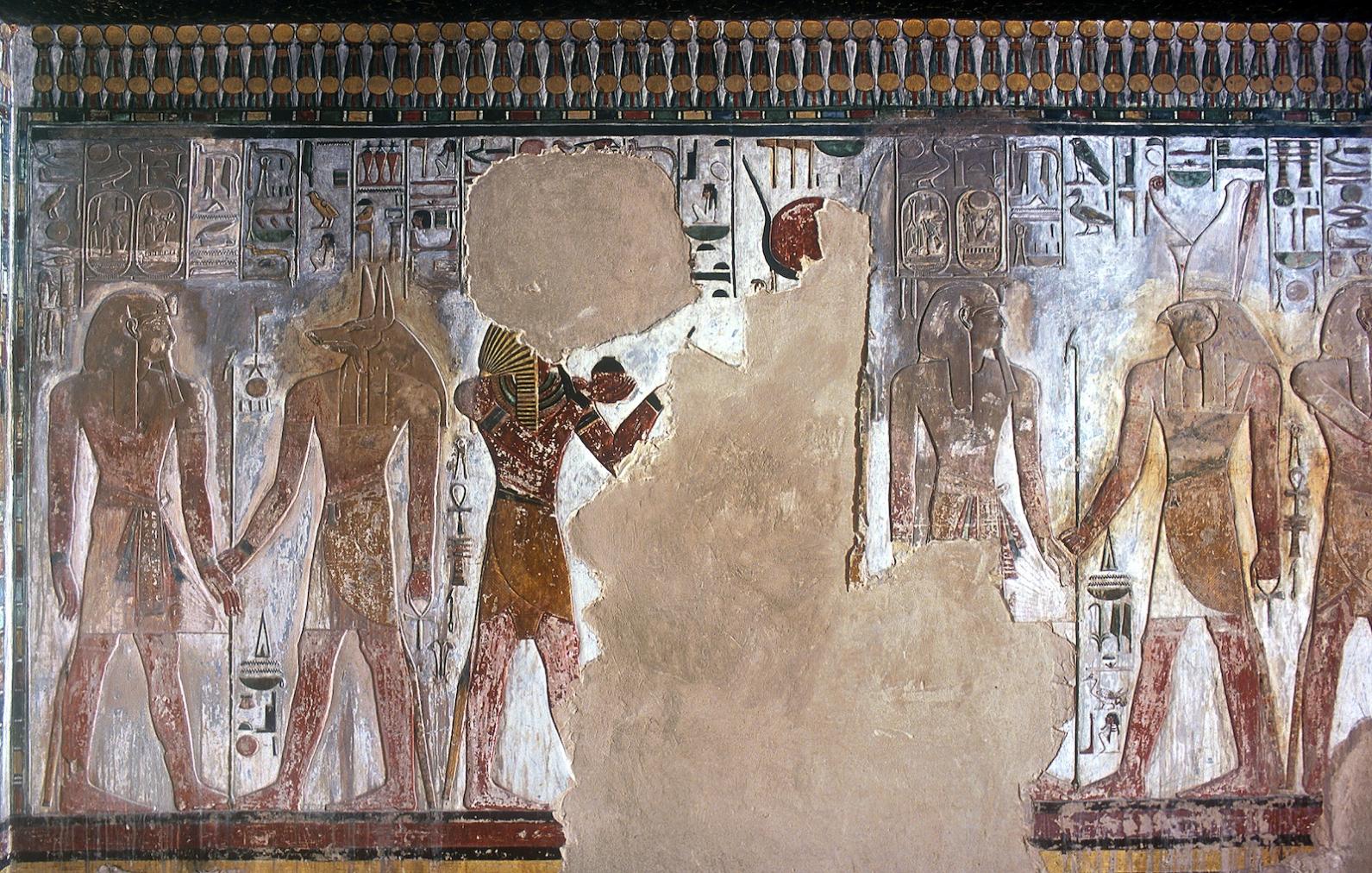
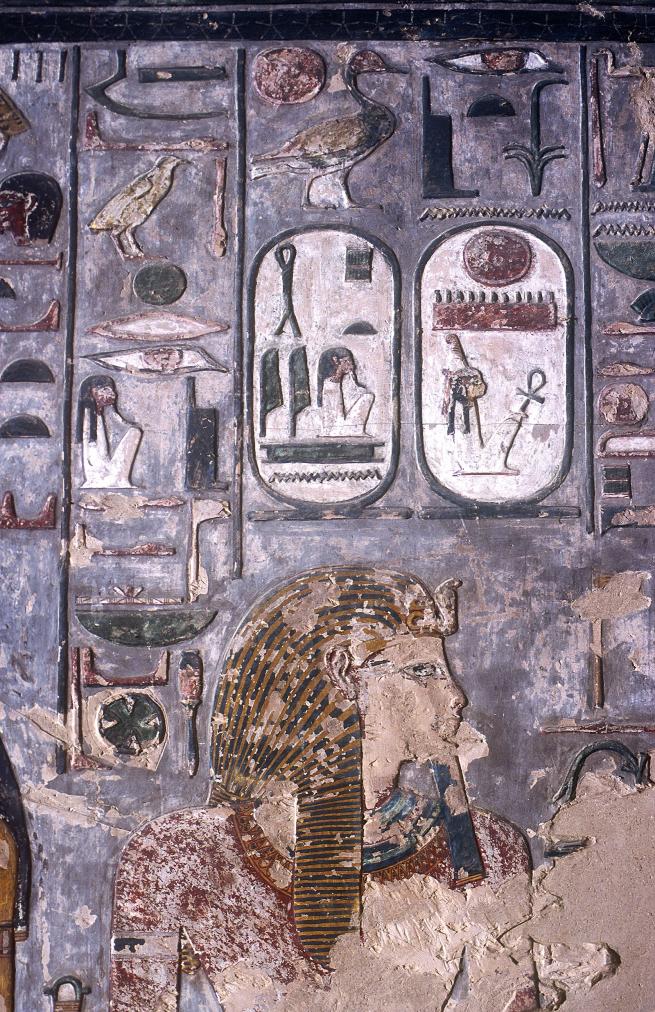
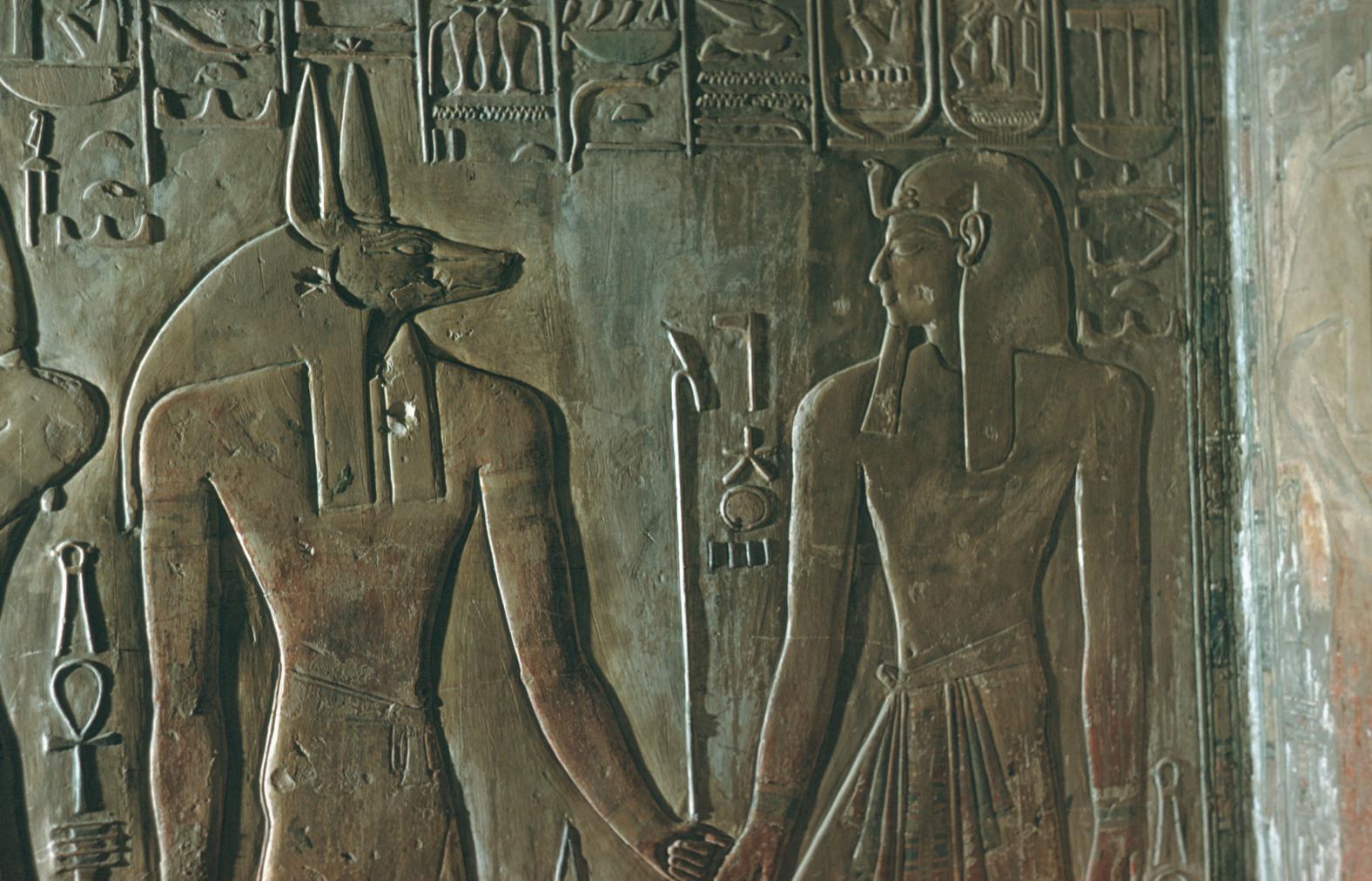
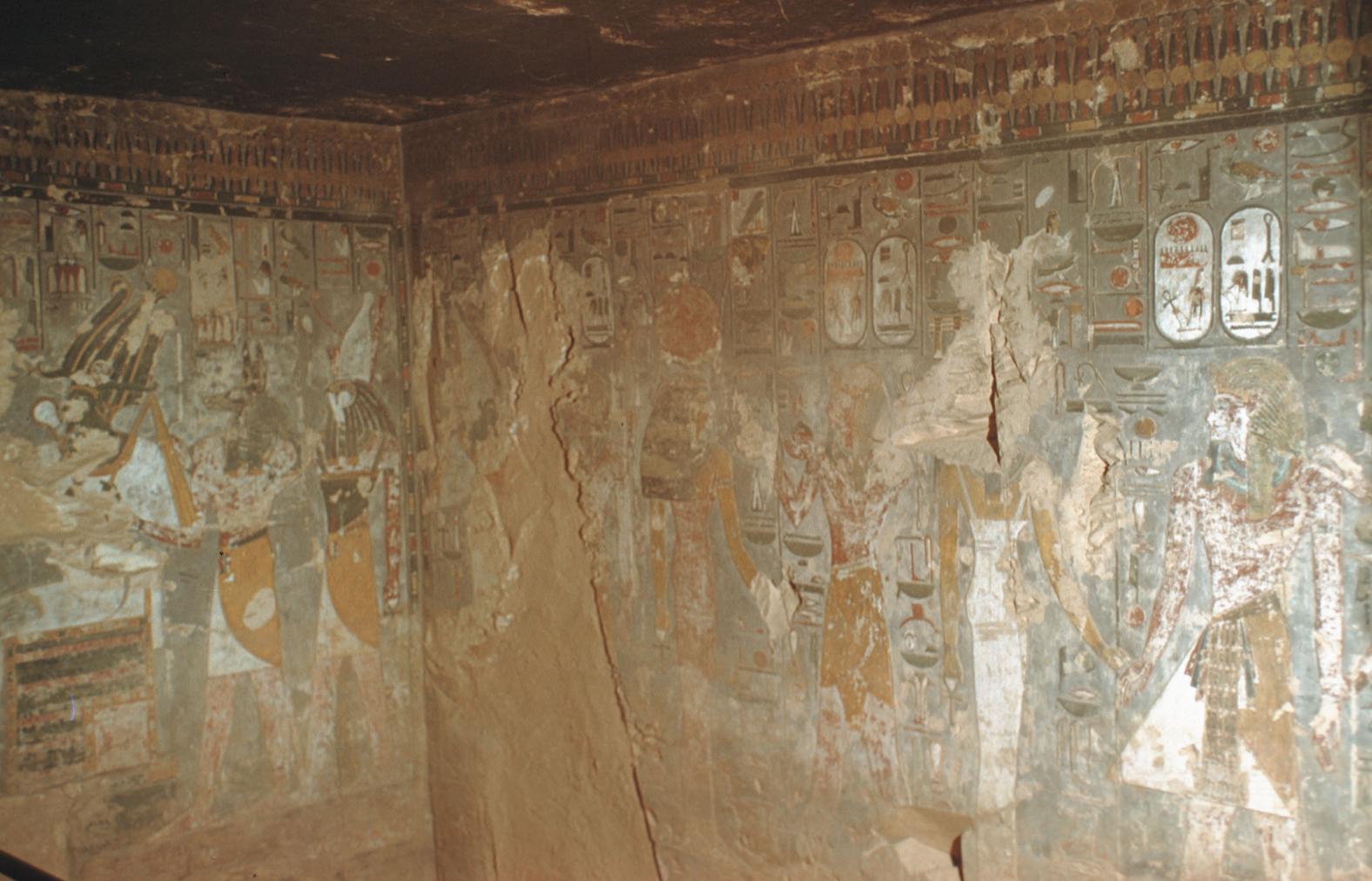
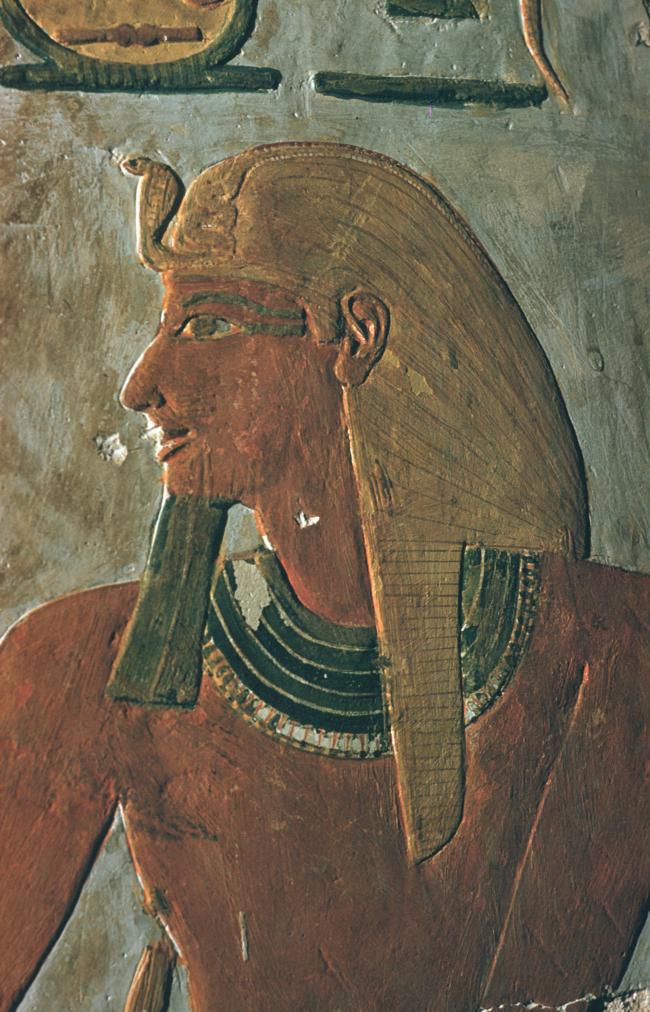
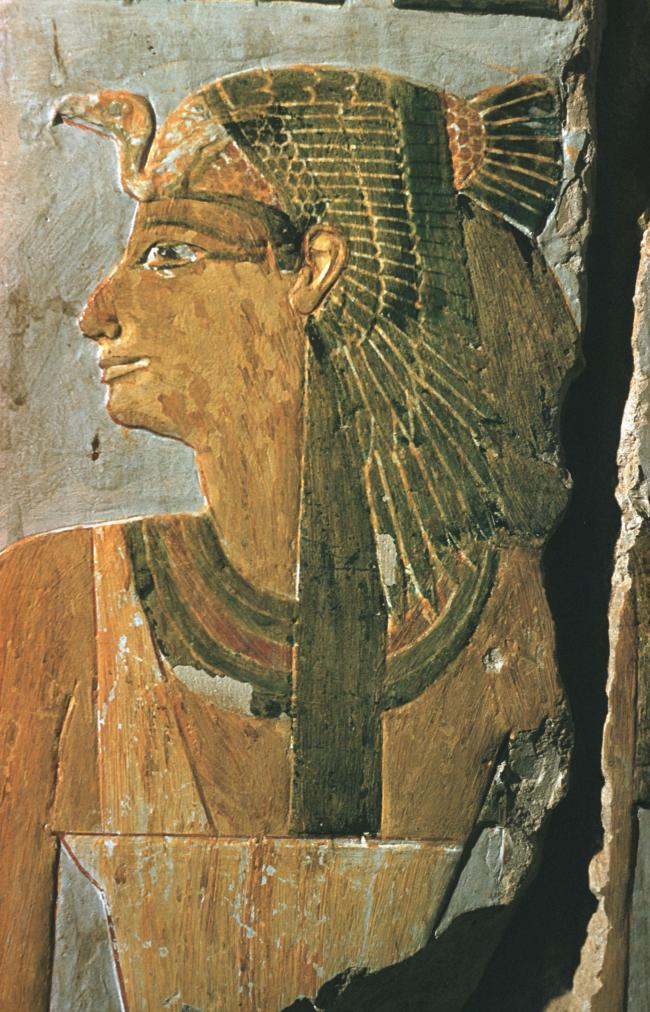
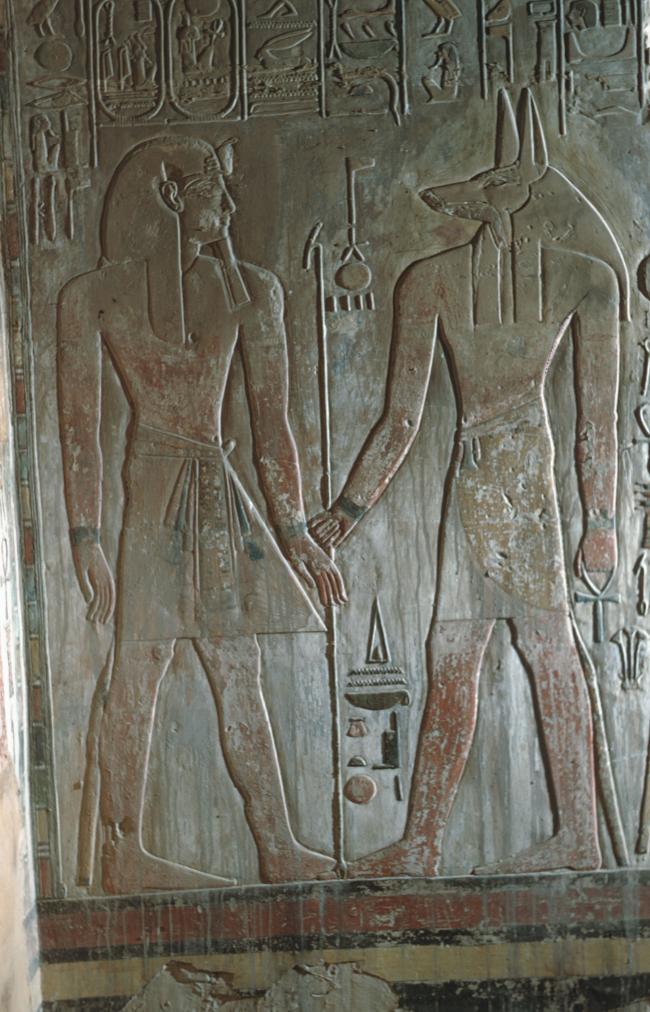
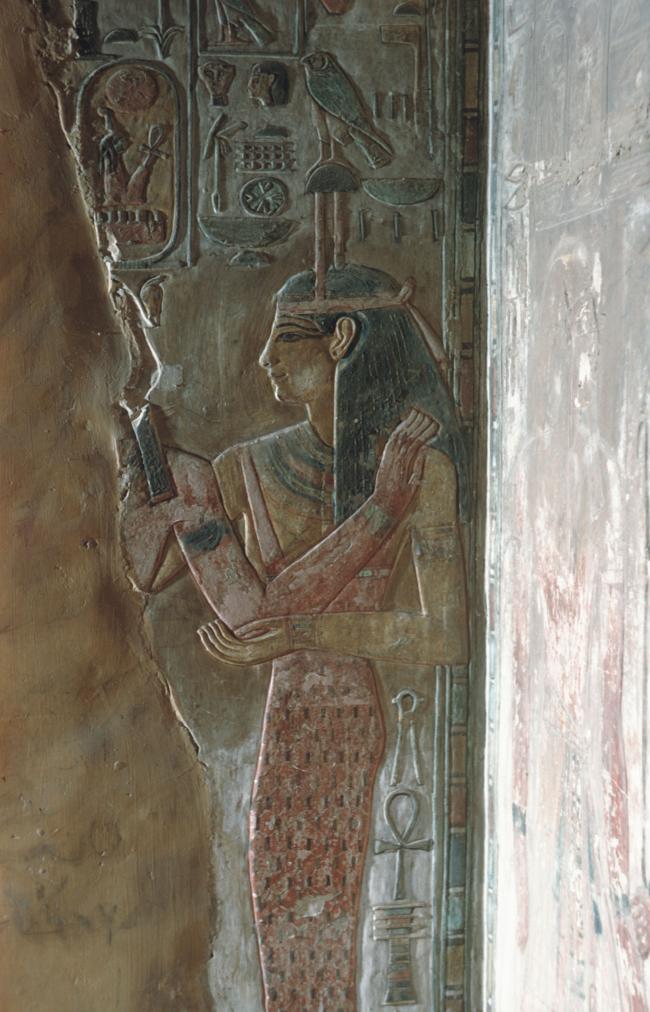
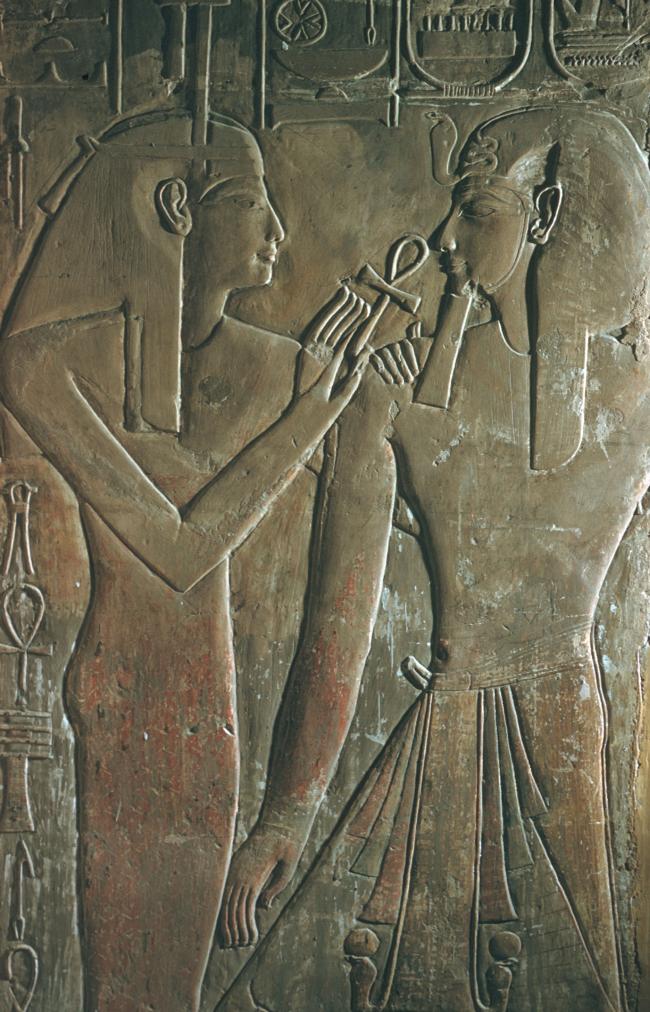
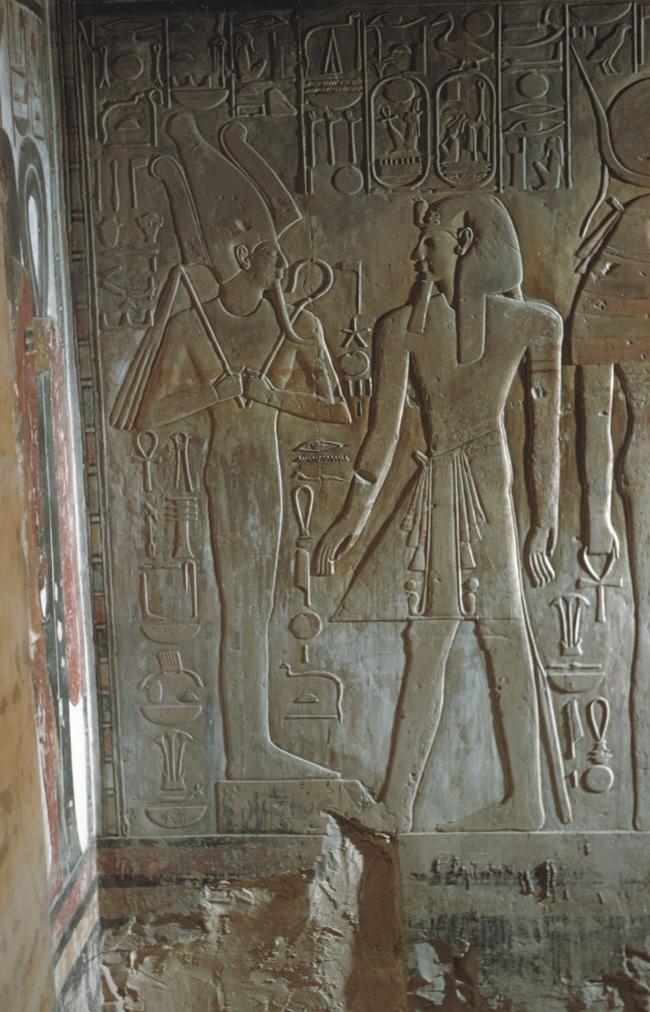
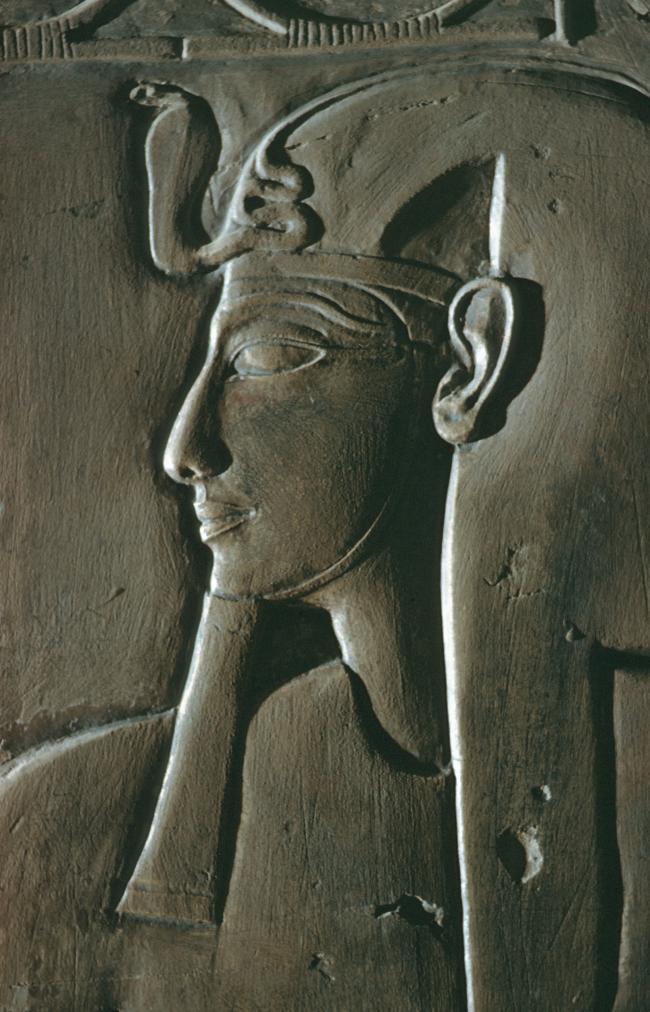
Gate J
See entire tombOn the outer lintel is a winged sun disk. The thicknesses were decorated with the cobra goddesses Nekhbet and Wadjet.
Porter and Moss designation:
Burial chamber J
See entire tombThe burial chamber J is divided into two parts. An initial raised section contains two rows of three pillars arranged along the central axis. Two subsidiary chambers (Ja, Je) lead off from the left (southeast) and right (northwest) walls of this pillared section. Three stepped descents on either side and between the last pair of pillars (3 and 6) lead to the sunken rear part of the burial chamber which has a vaulted ceiling. A rectangular pit is situated at the northwest end of the chamber, giving access to the beginning of corridor K. Gates in the left and right walls lead to subsidiary chambers (Jb) and (Jd), respectively, and a gate at the left (southeast) end of the right wall leads to side chamber Jc. Recesses are located at floor level in the left and right walls, and there are pairs of magical brick niches higher up in these walls.
The walls of the sunken end of the chamber are covered with three hours from the Imydwat, and the walls of the preceding pillared area are decorated with the first, second and fourth divisions (P)/second, third and fifth hours (H) of the Book of Gates. Large winged kneeling figures of Isis and Nephthys are located at the tops of the left and right walls respectively below the vault of the ceiling. On the ceiling itself are astronomical figures. Pillar 2 has suffered structural damage. The face of its mirroring pillar, pillar 5, across the central axis, was removed by Lepsius. On the remaining pillar faces are representations of deities and compositions of the king before various deities. To the southeast there is a recess which served as a small shrine, perhaps for the canopic chest. Its decoration shows the four sons of Horus on the left (northeast) wall, Osiris on the rear (southeast) wall, and Anubis opening the mouth of Osiris, on the right (southwest) wall.
Chamber plan:
RectangularRelationship to main tomb axis:
ParallelChamber layout:
Pillared front upper level, sunken rear lower levelFloor:
Two levelsCeiling:
Vaulted
Porter and Moss designation:
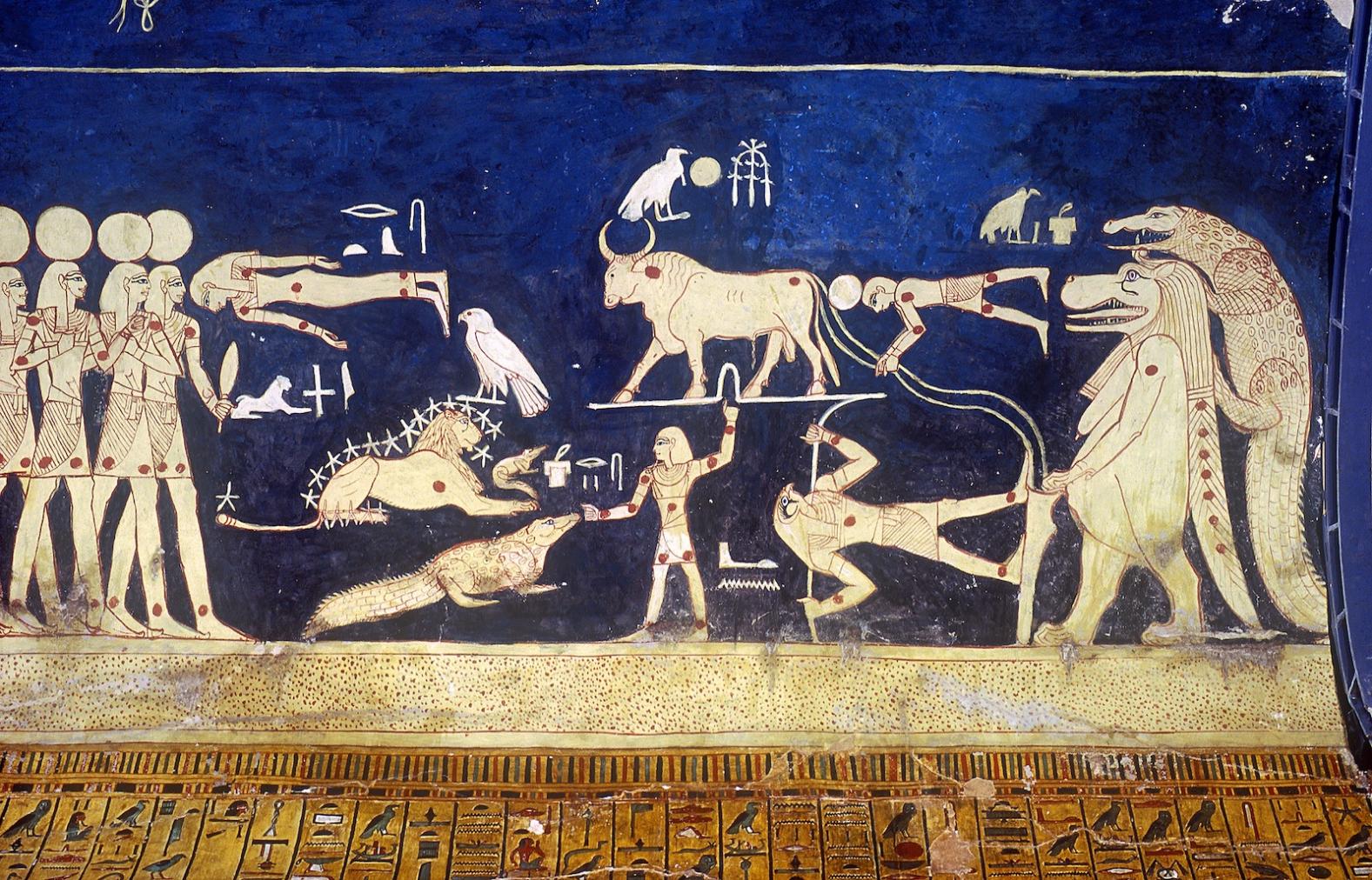
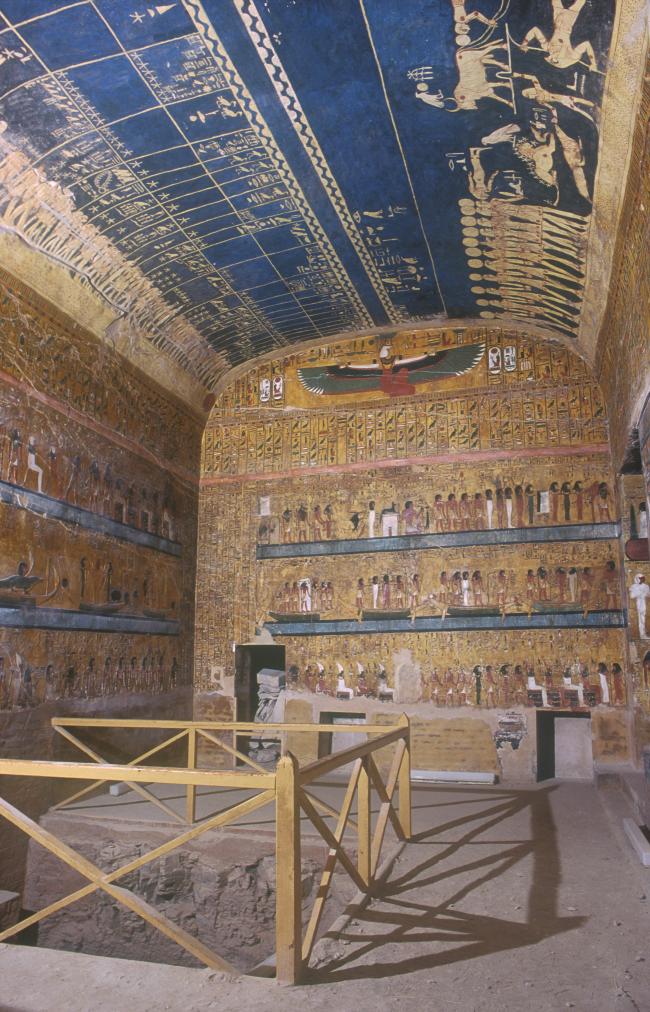
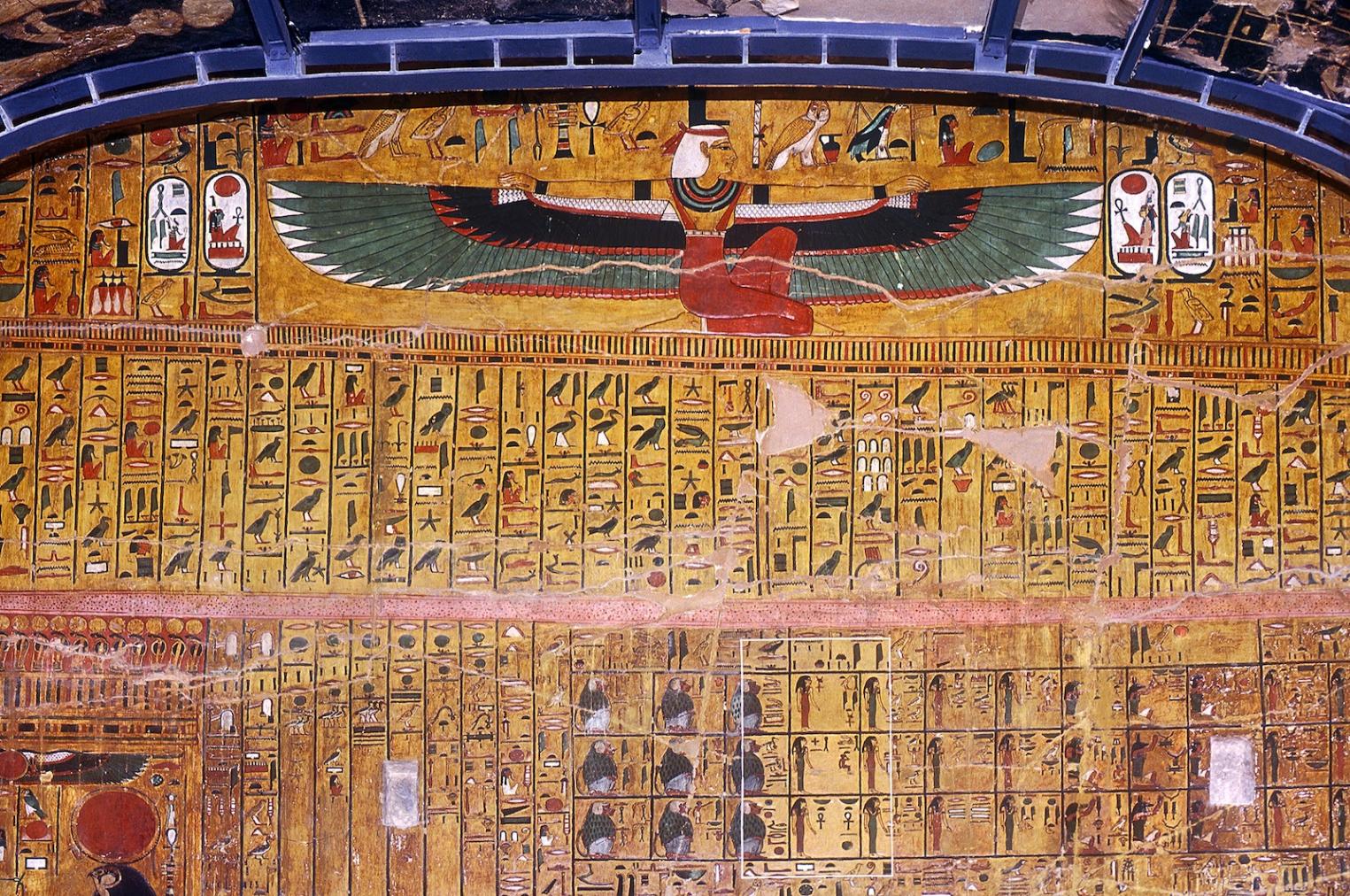
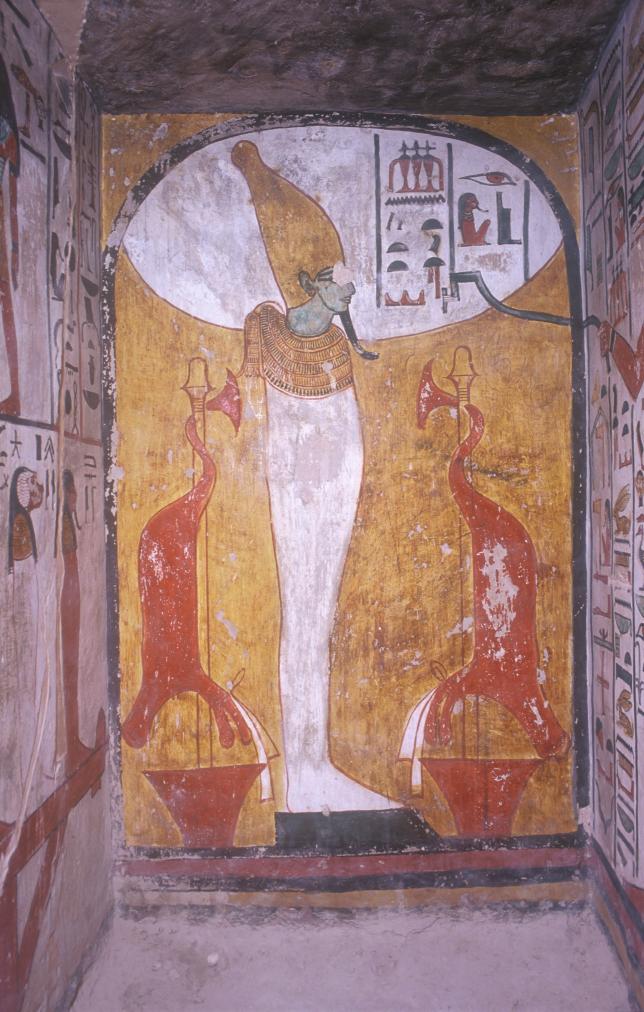
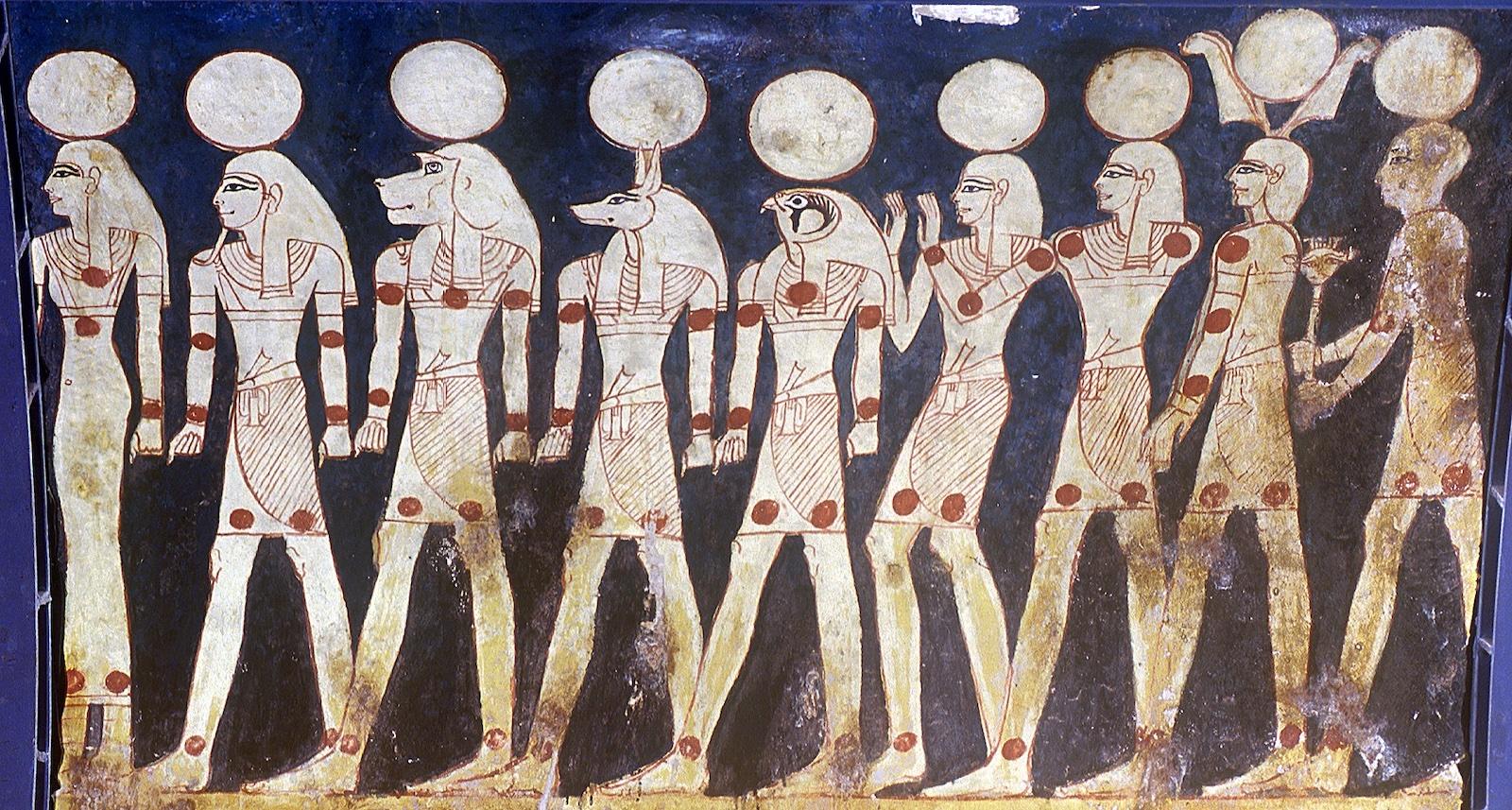
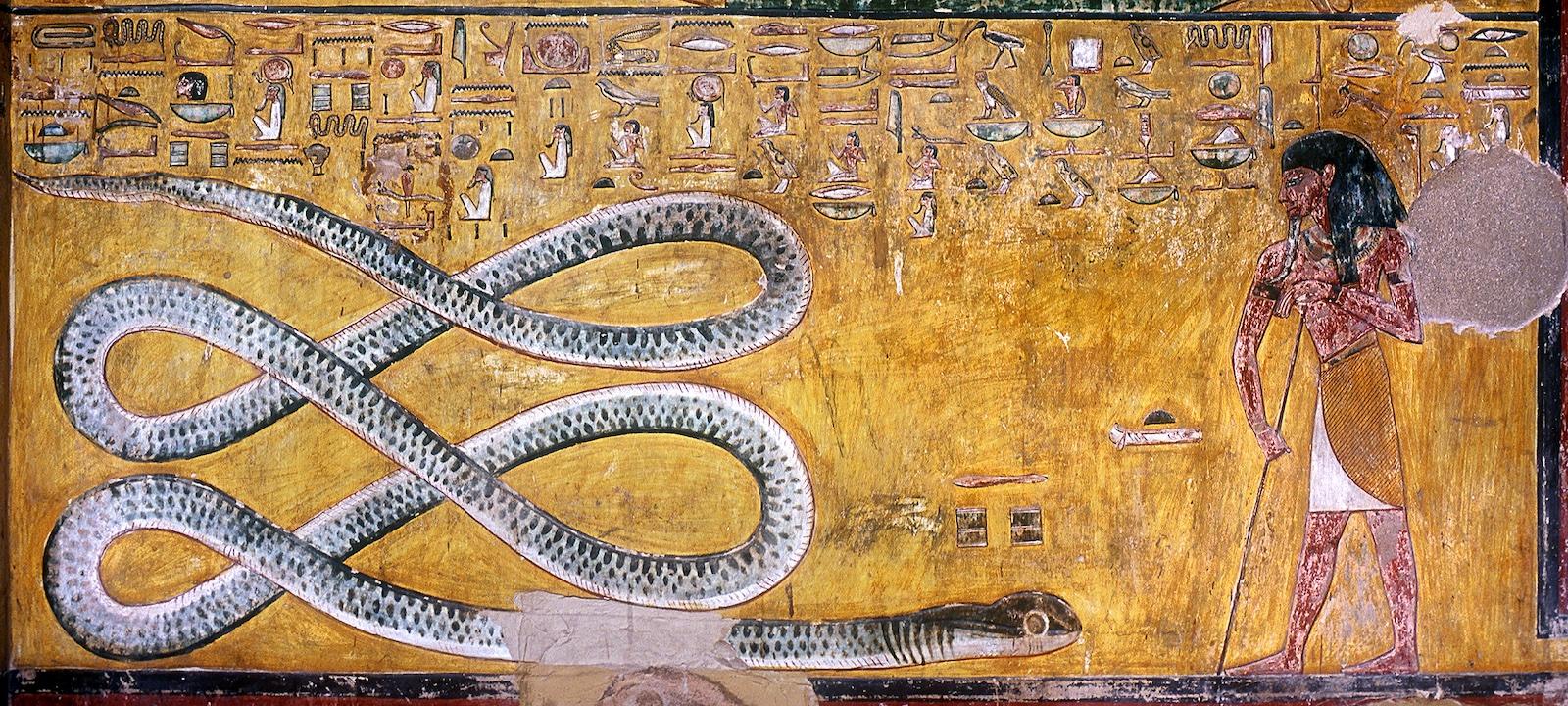
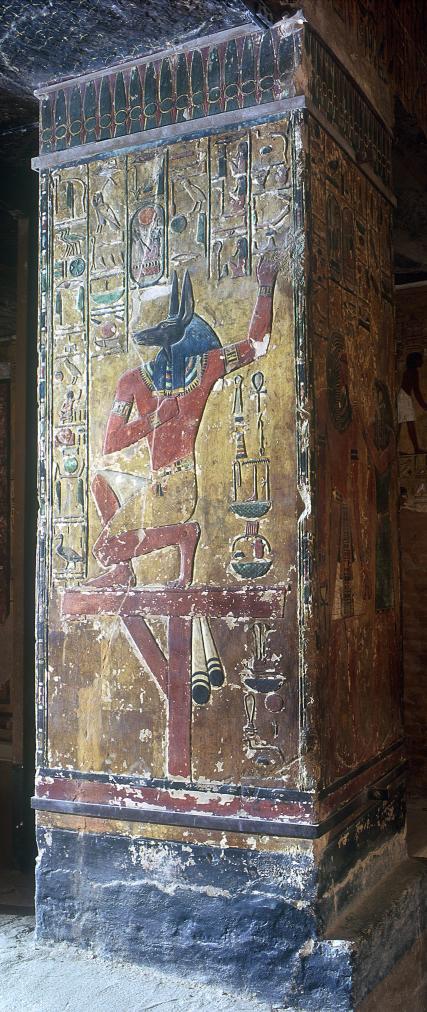
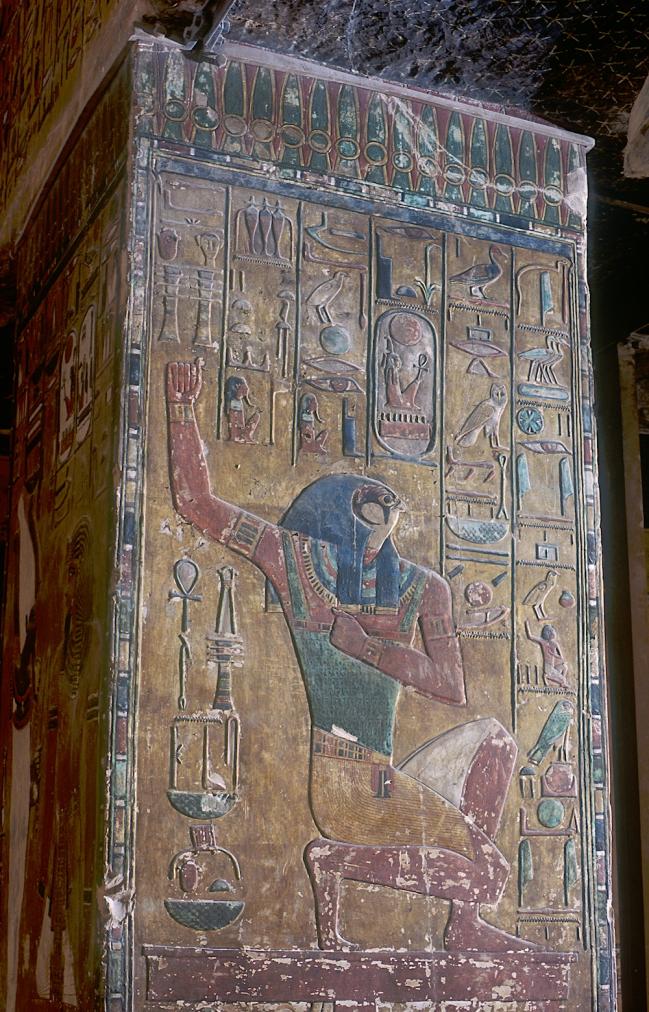
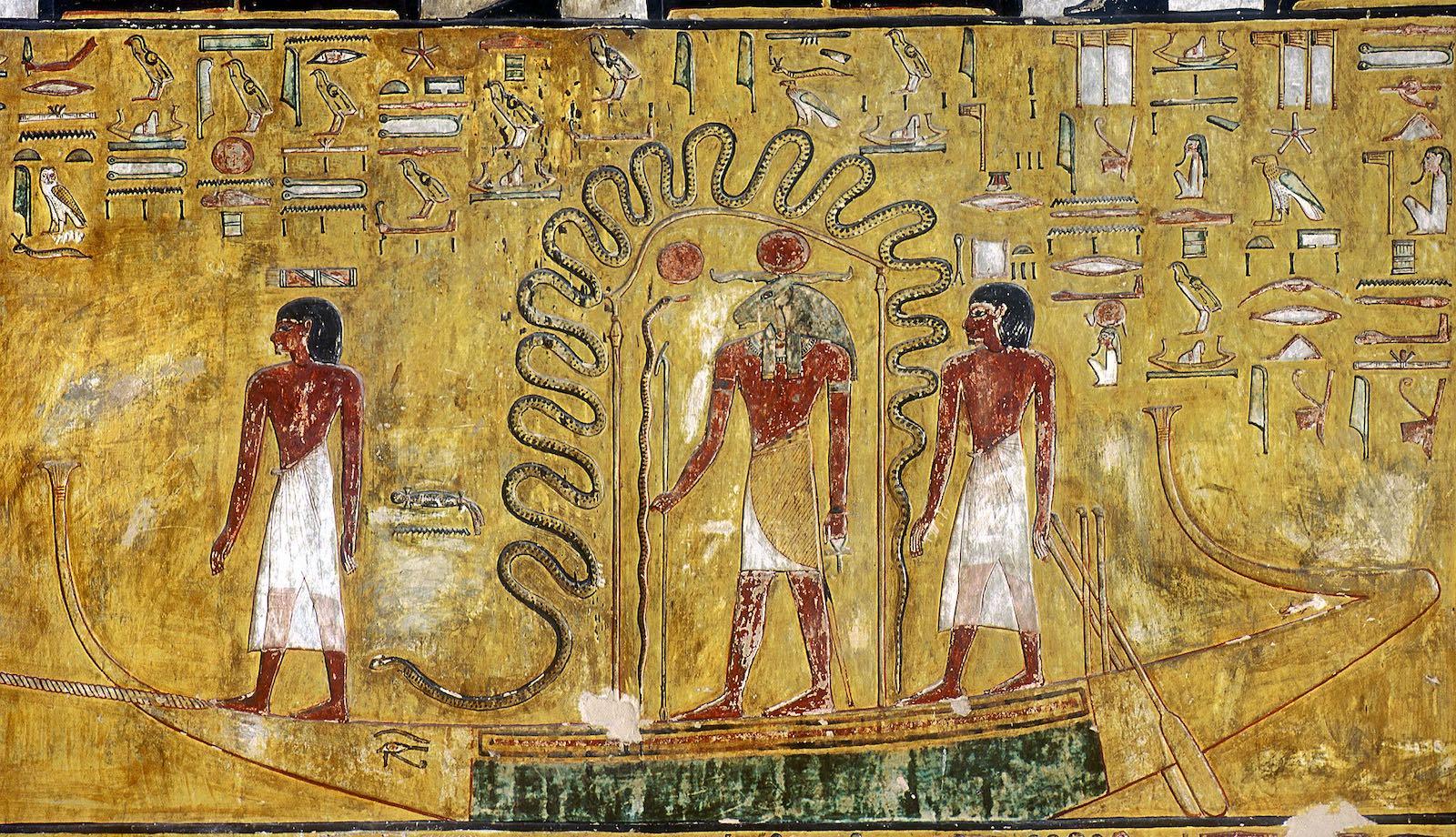
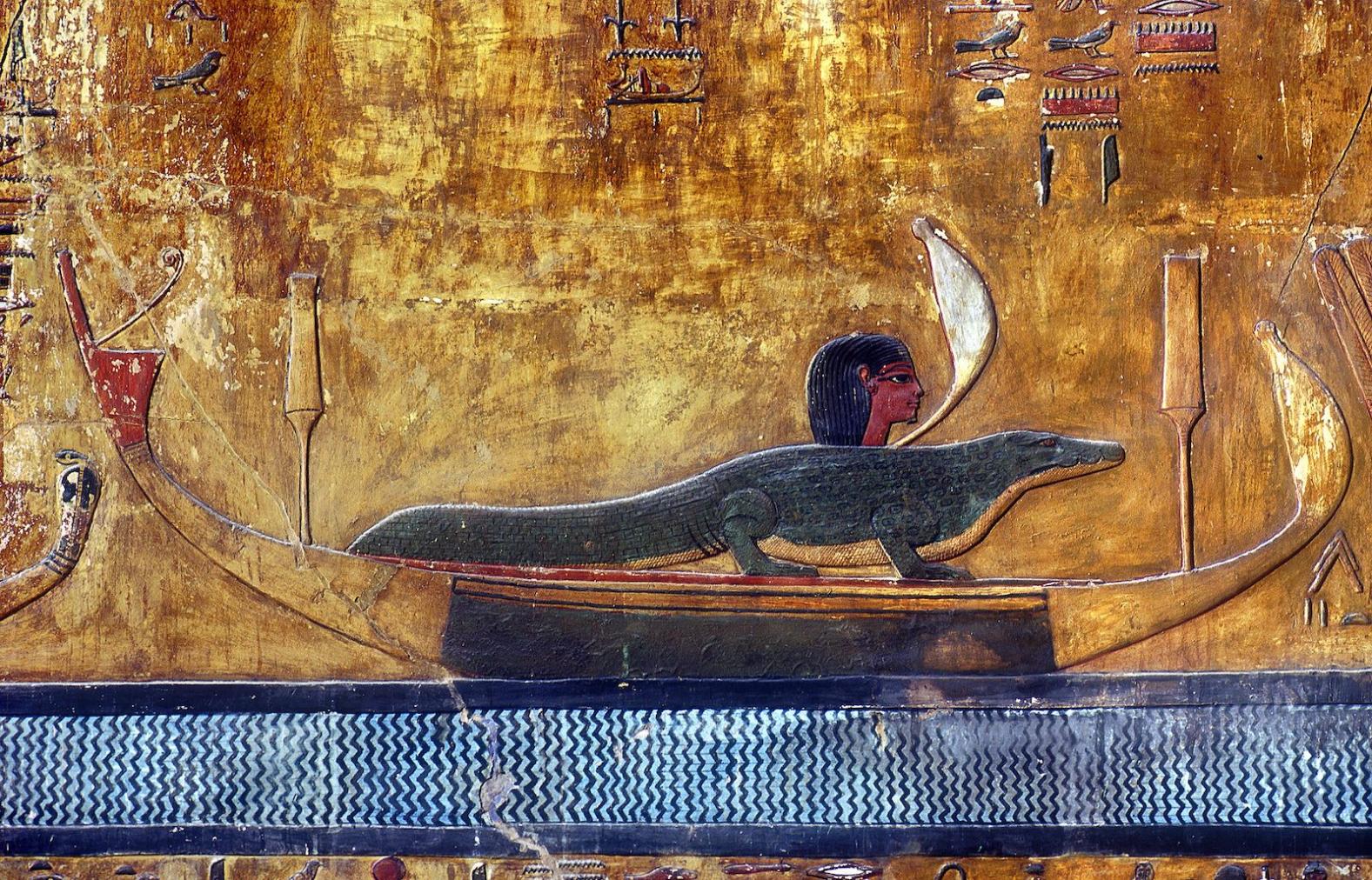
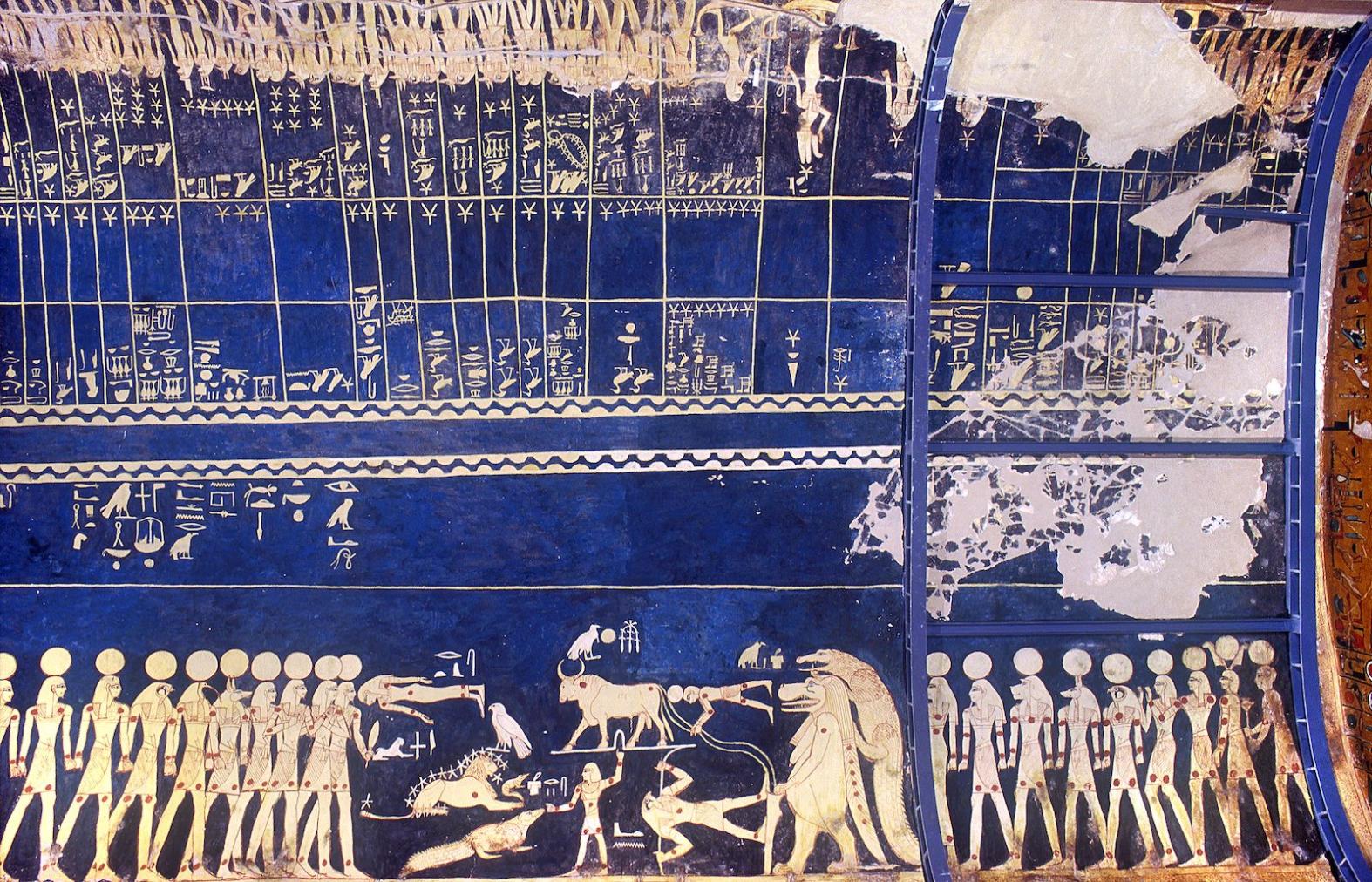
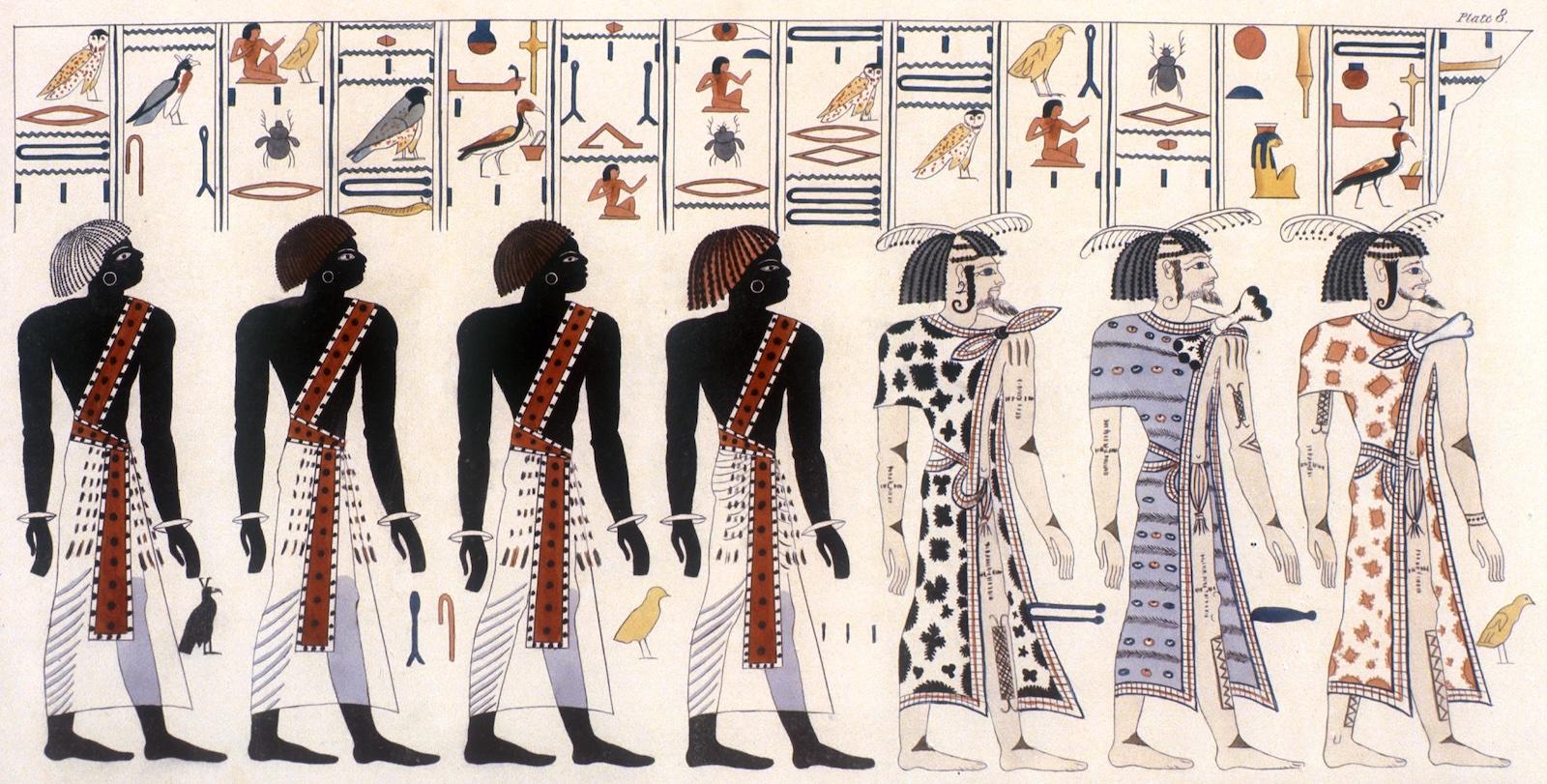
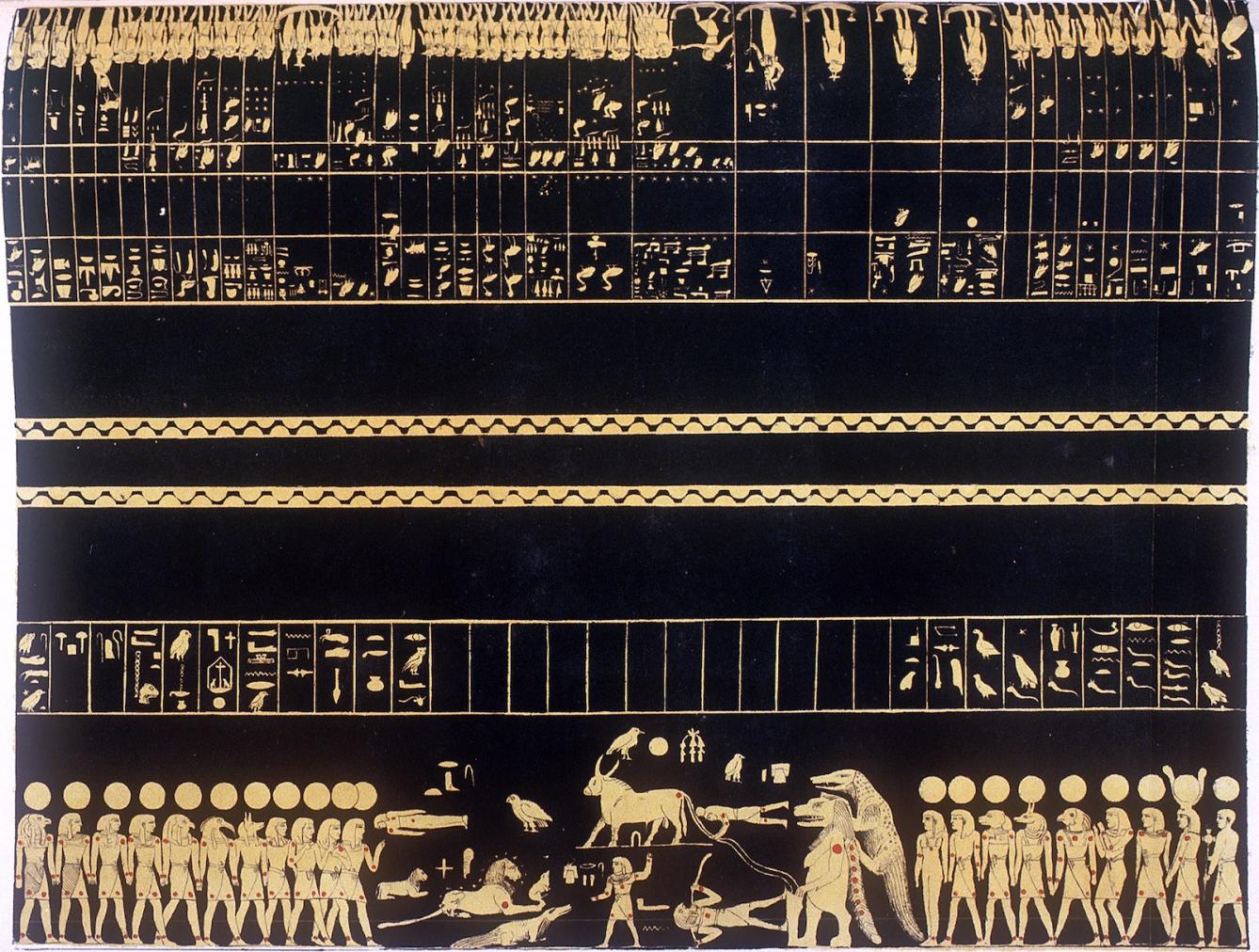
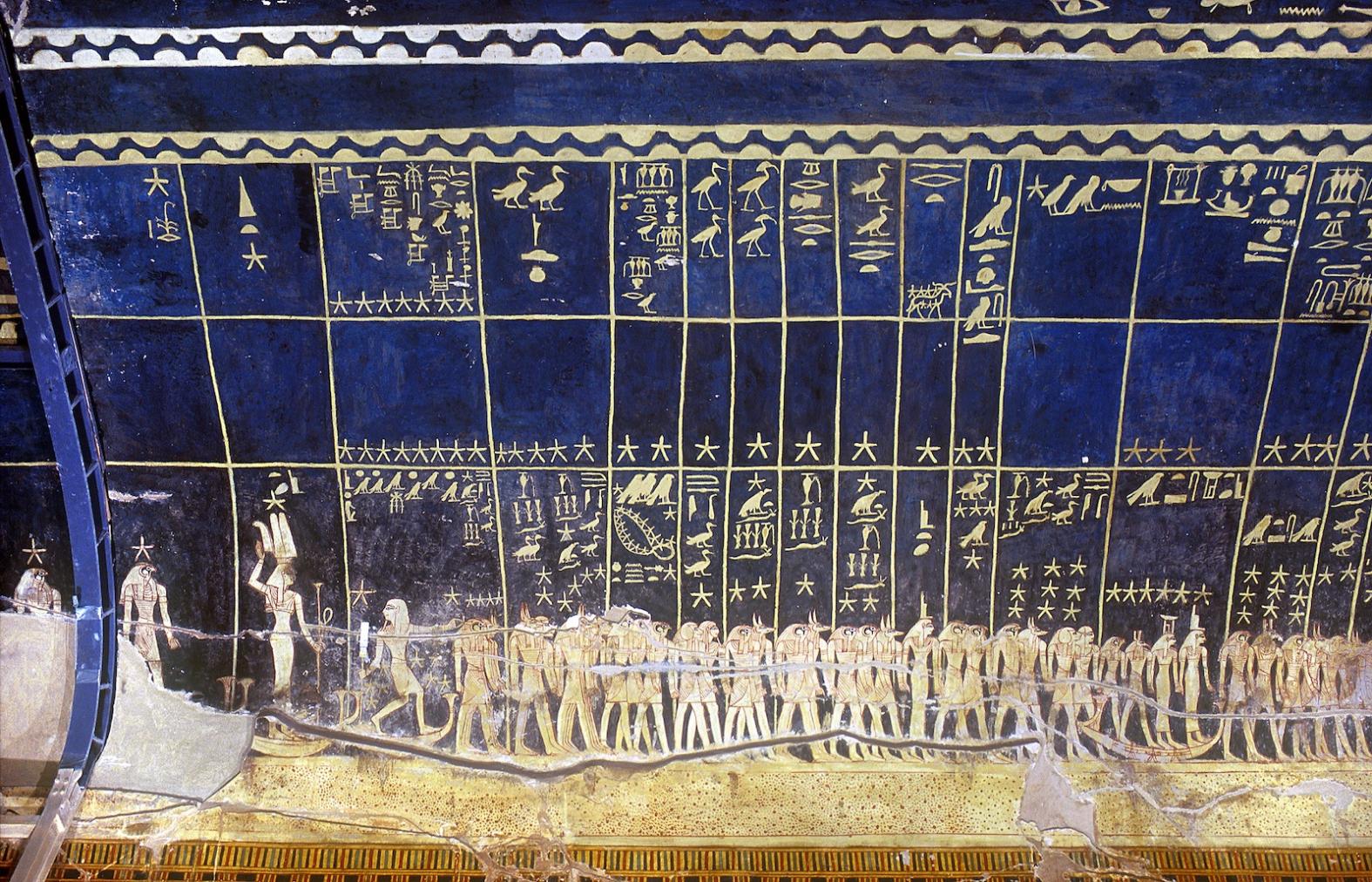
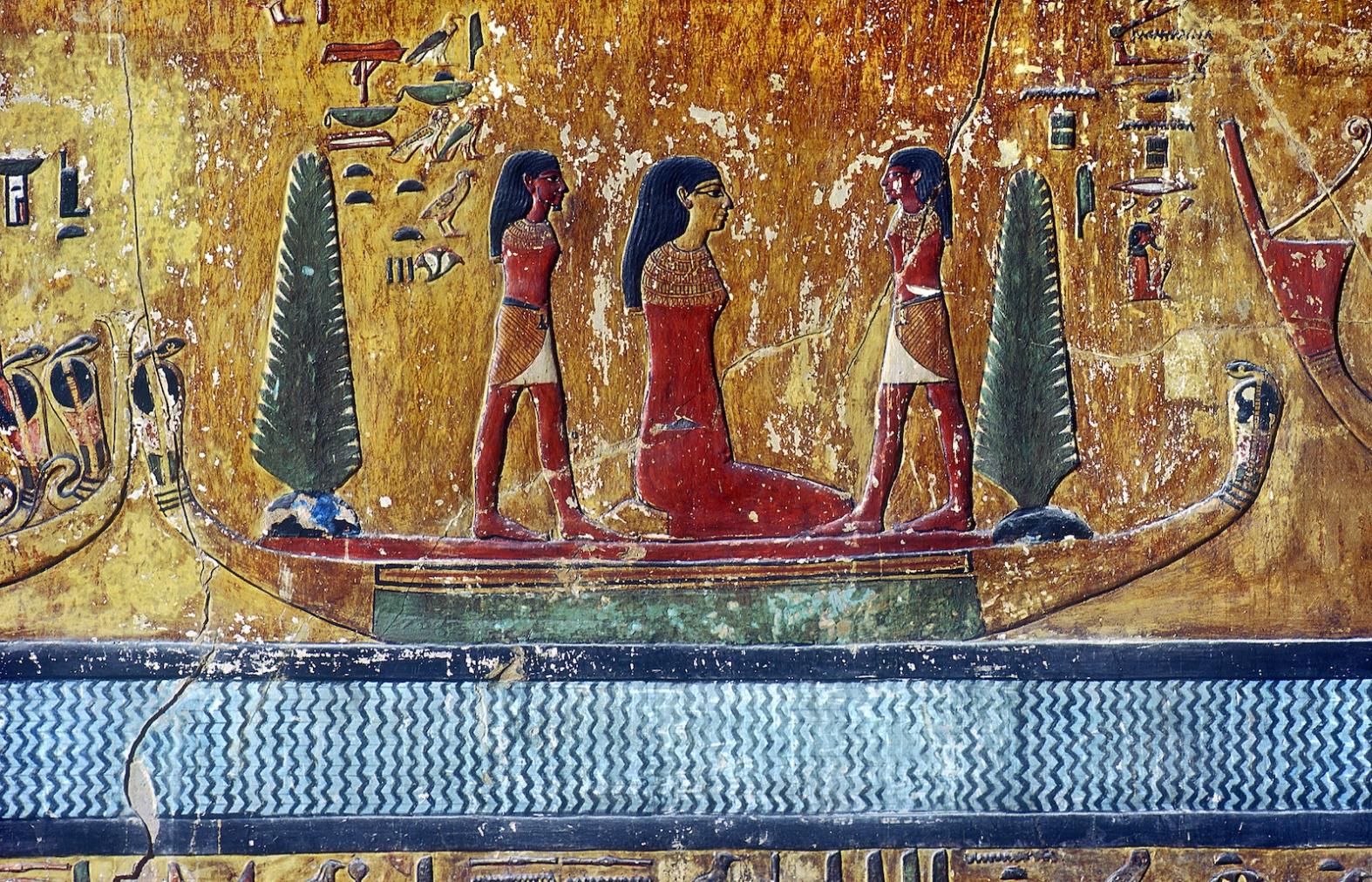
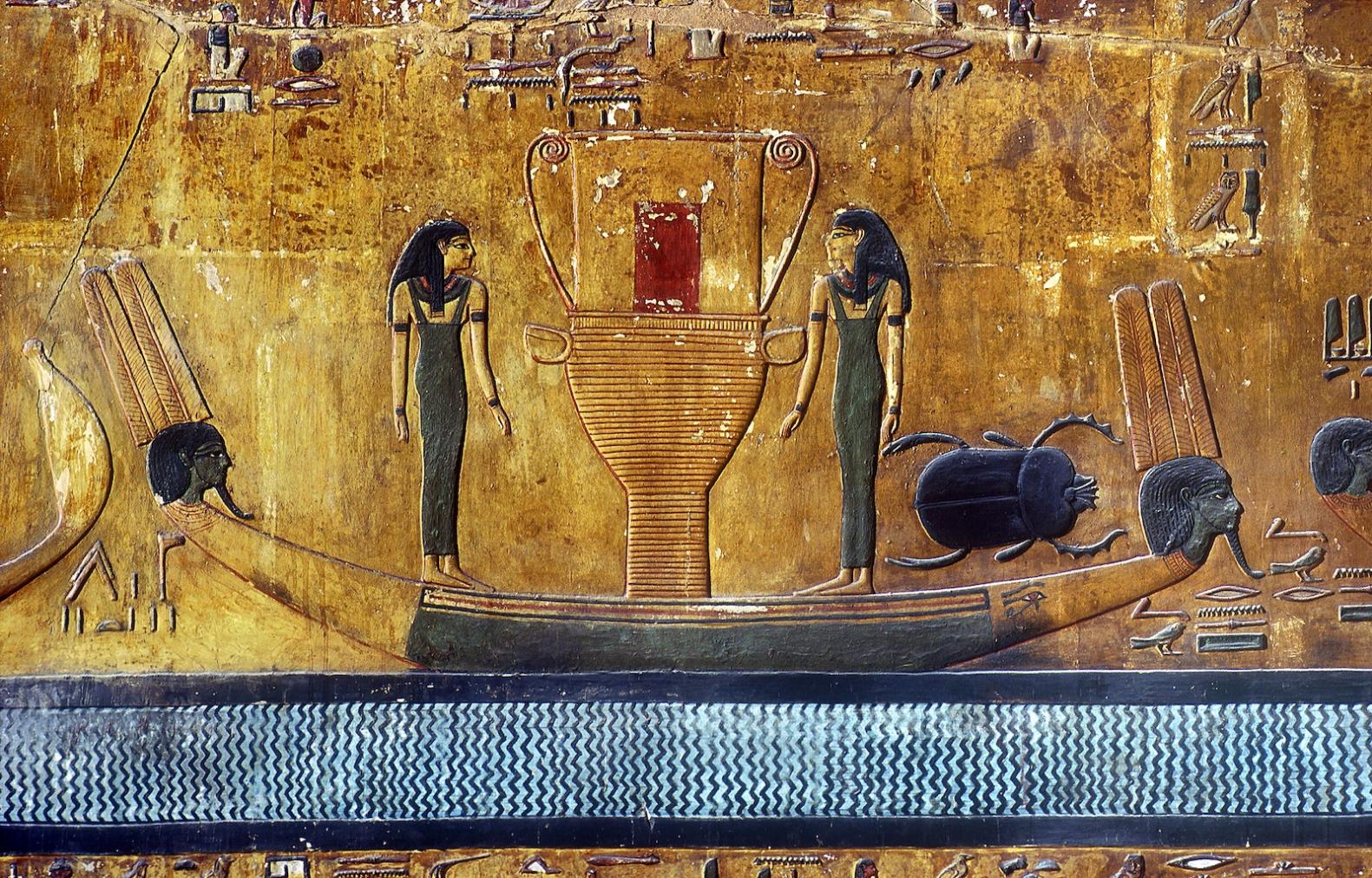
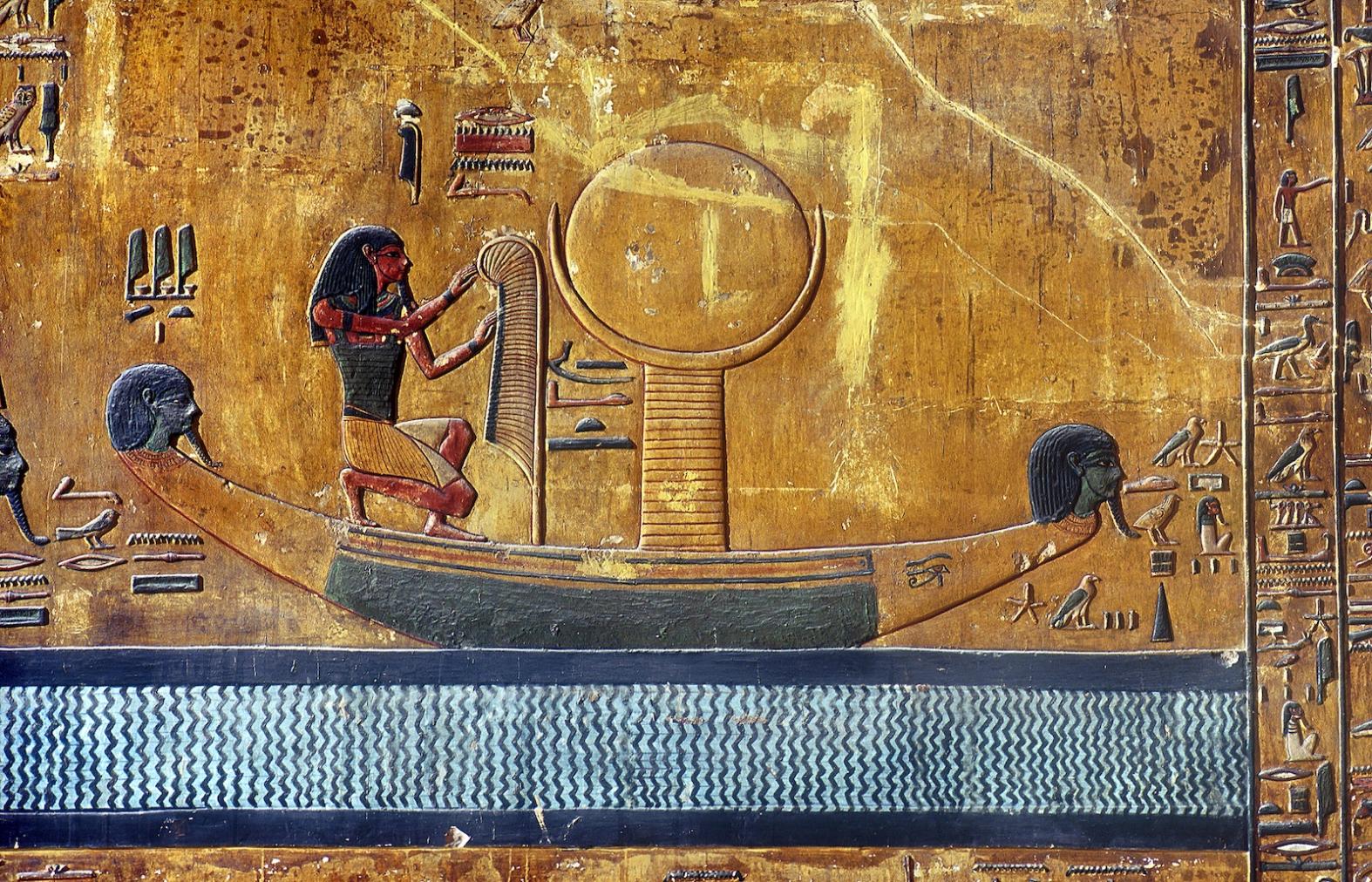
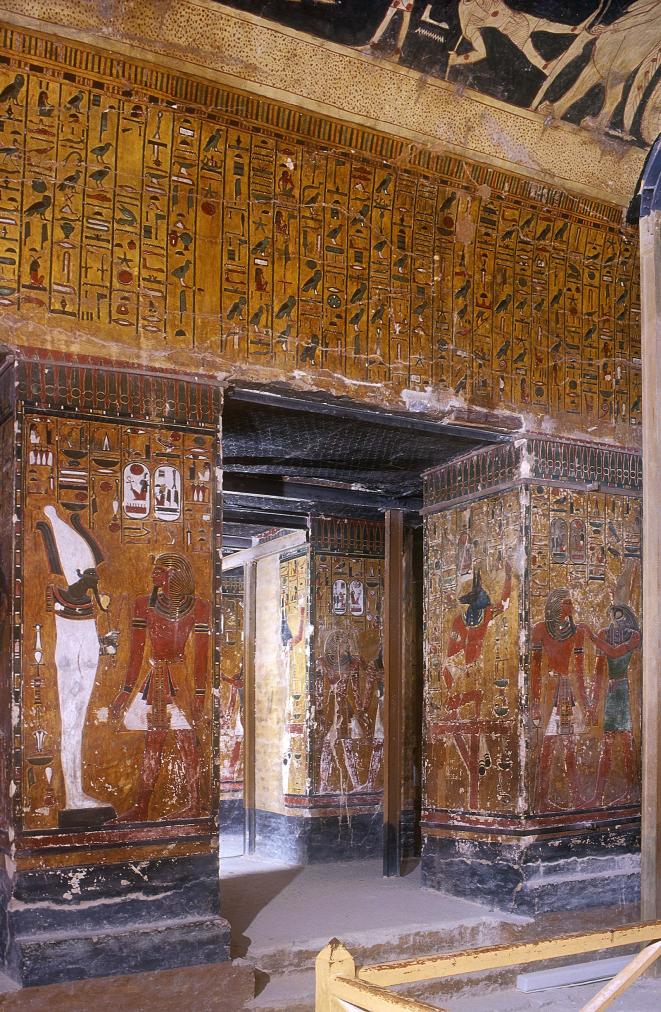
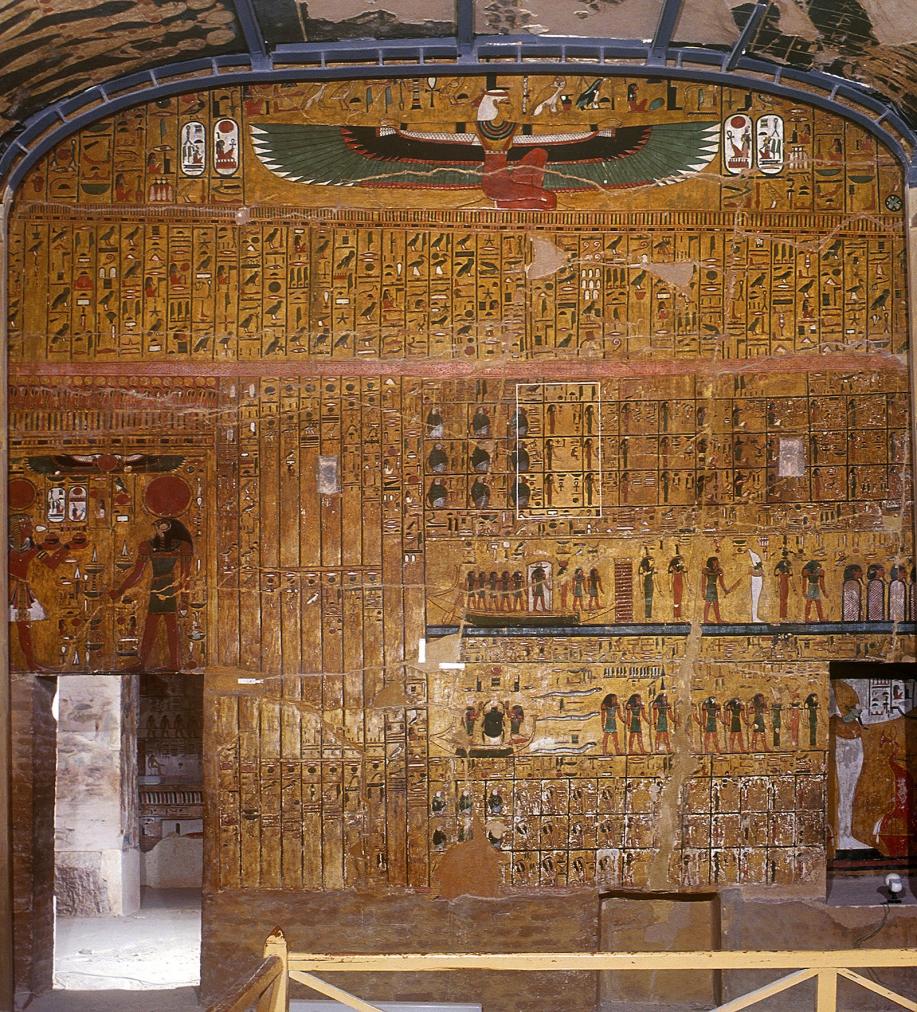
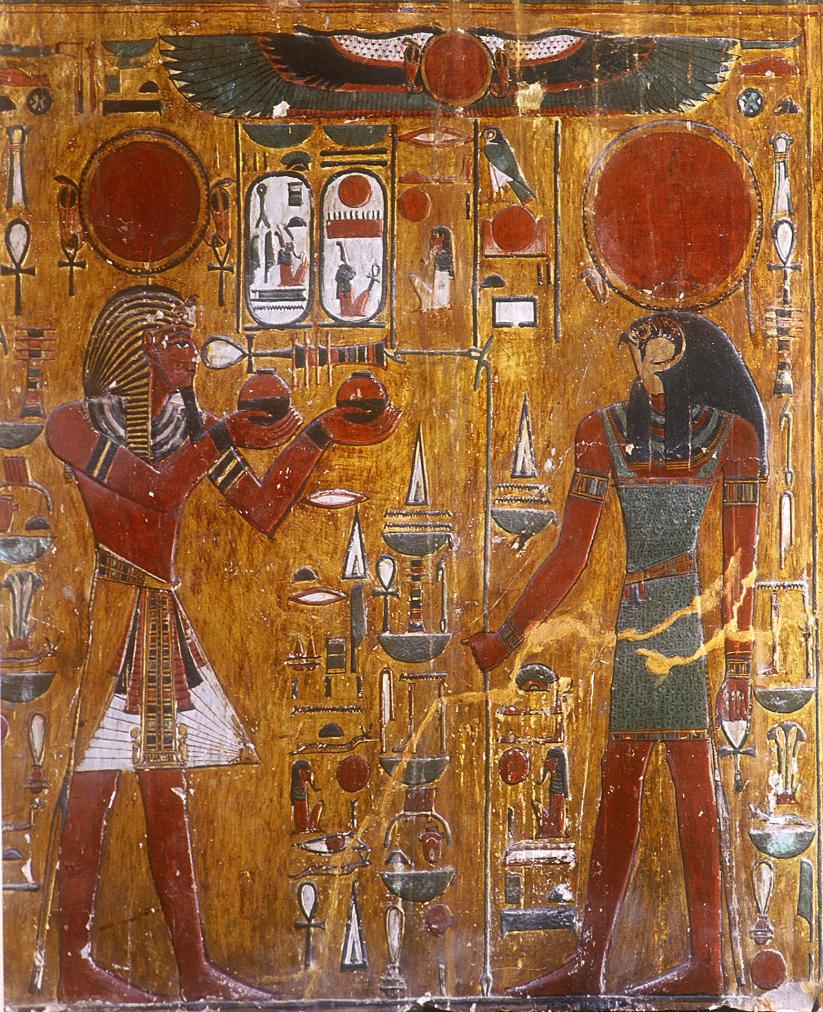
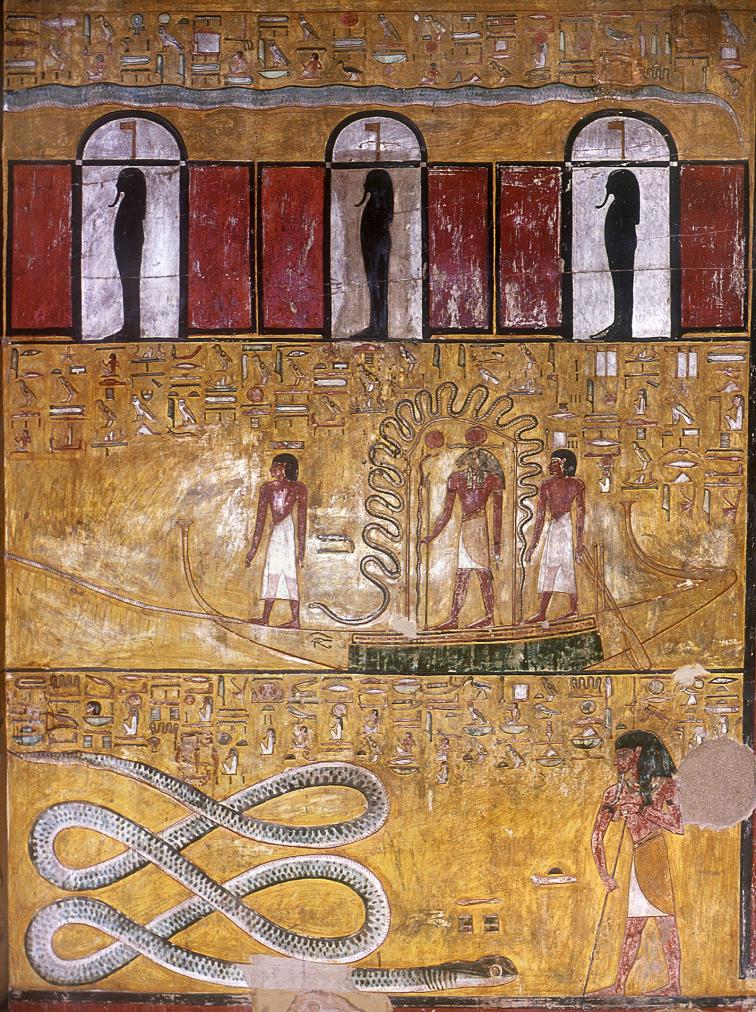
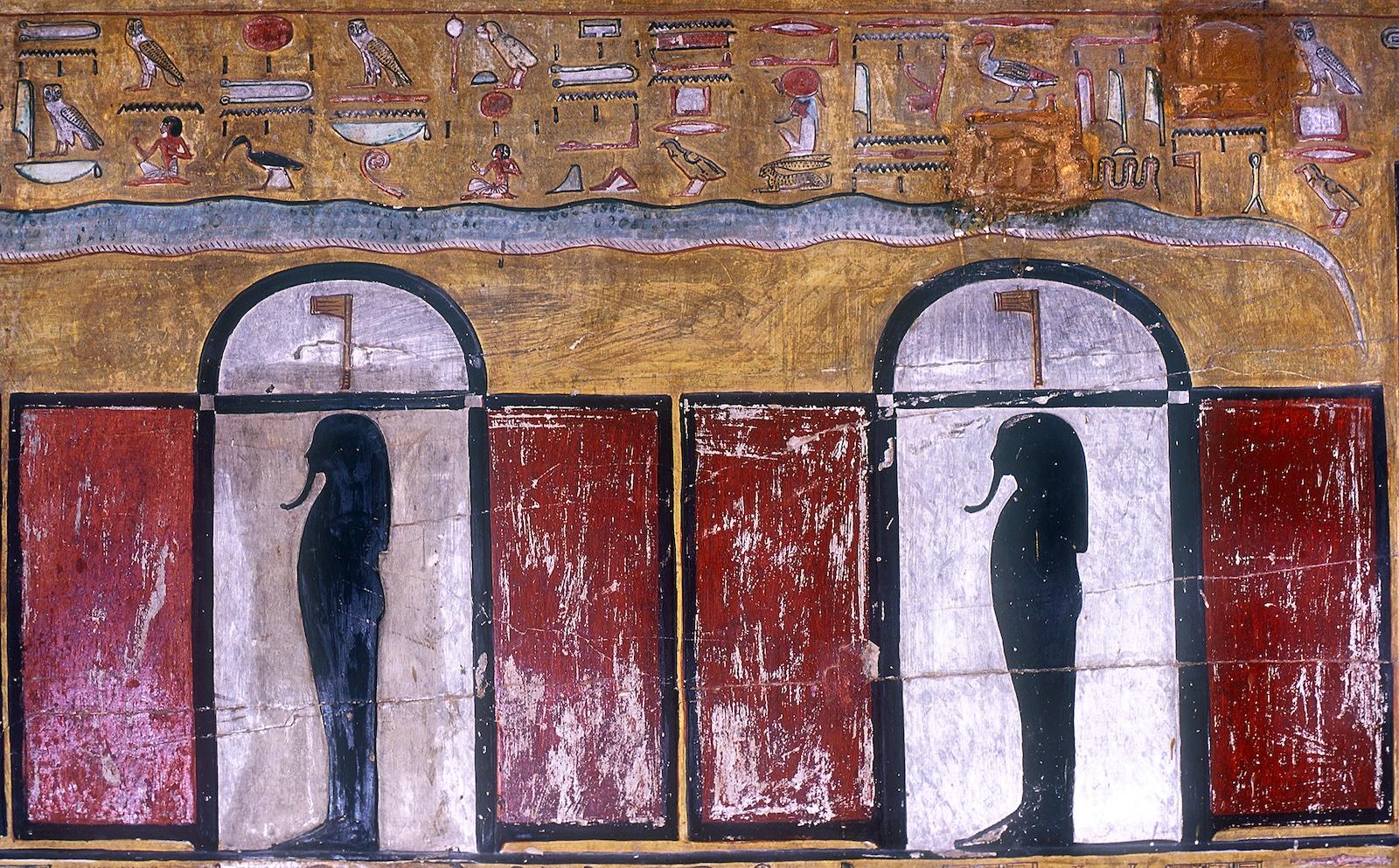

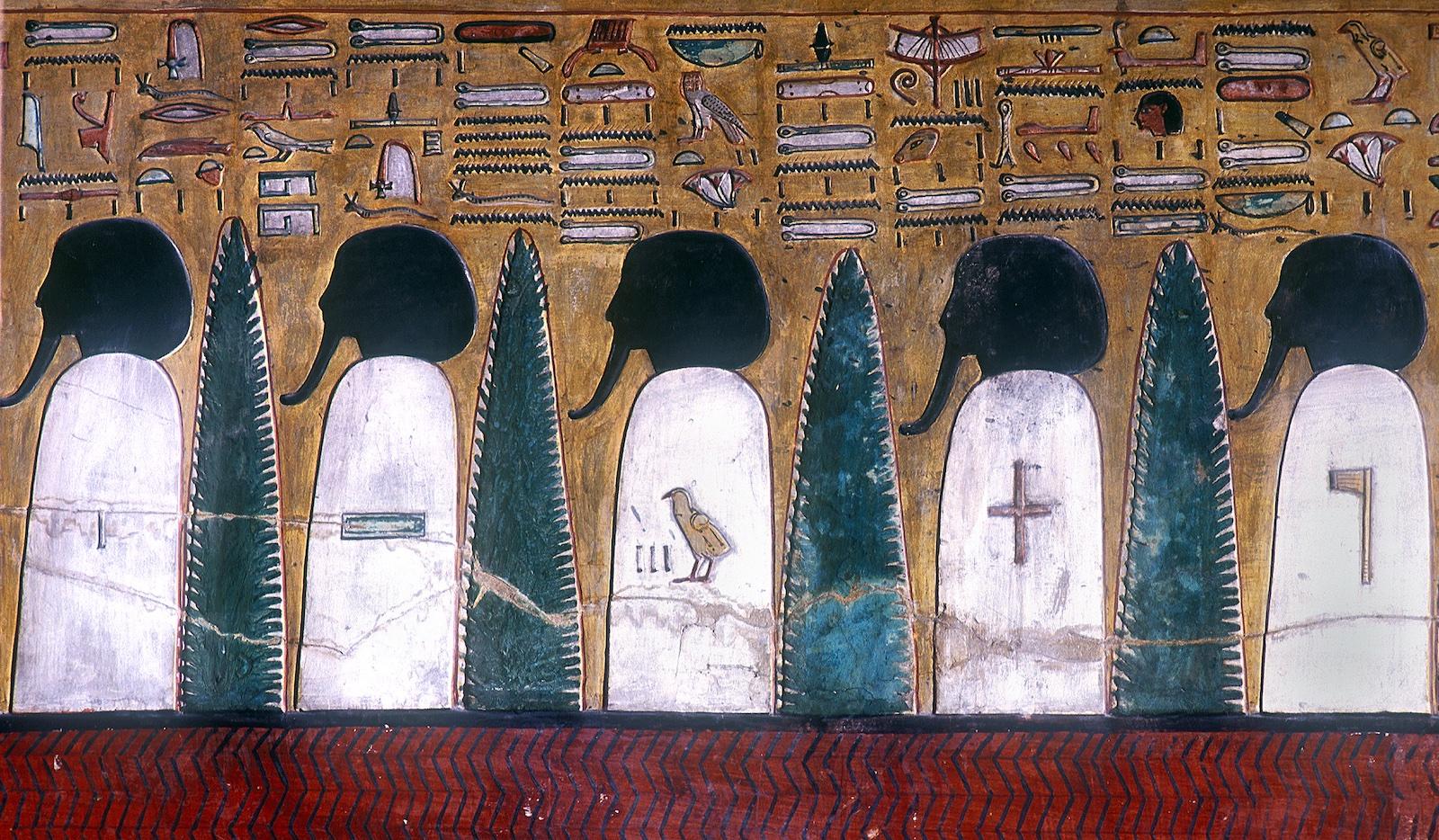
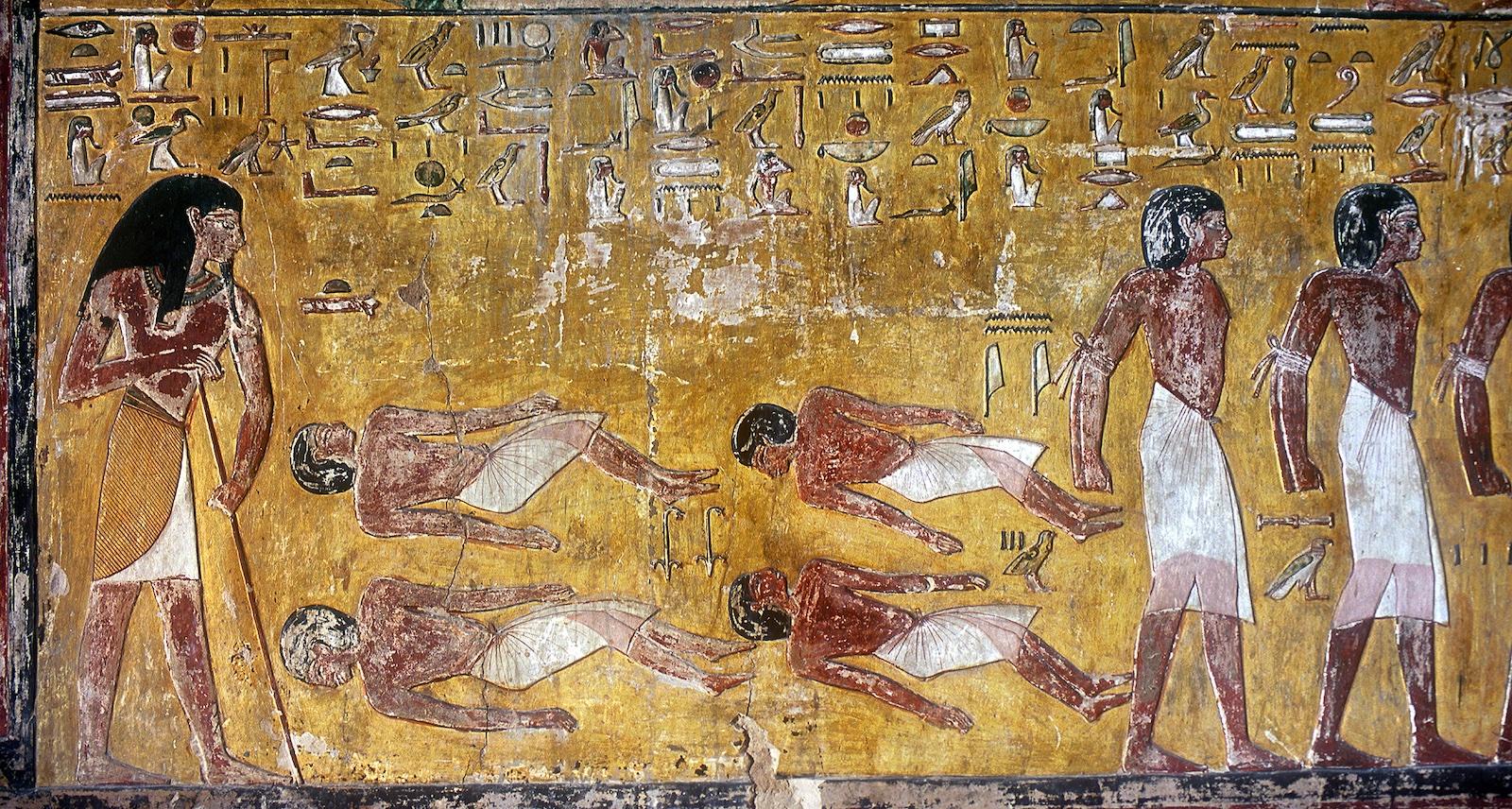
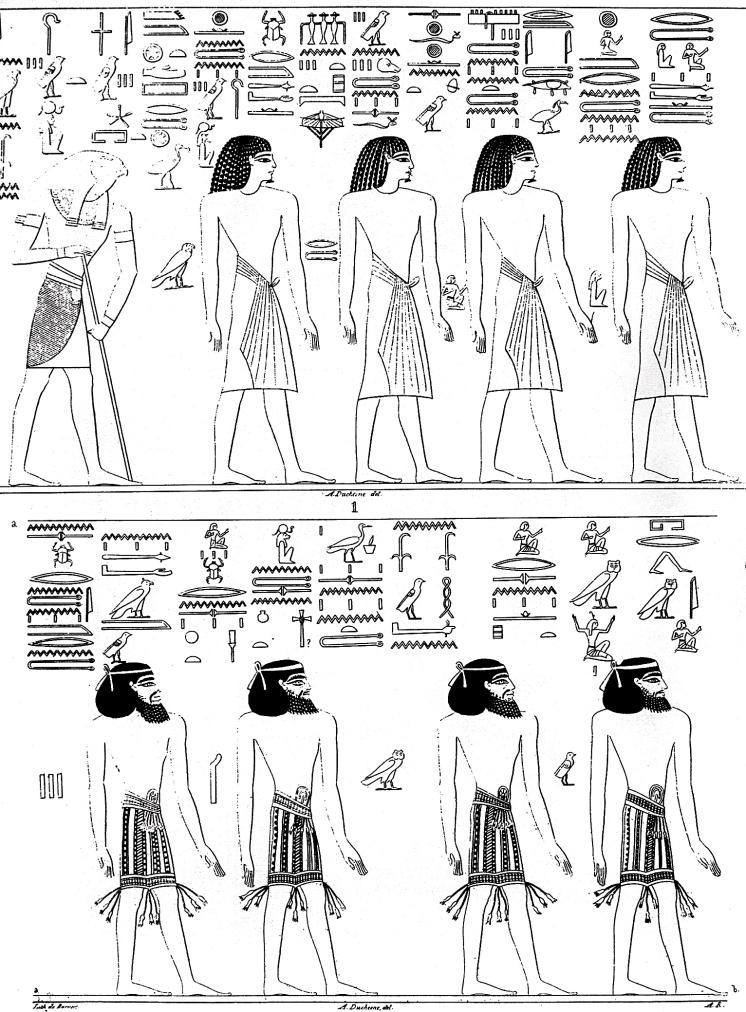
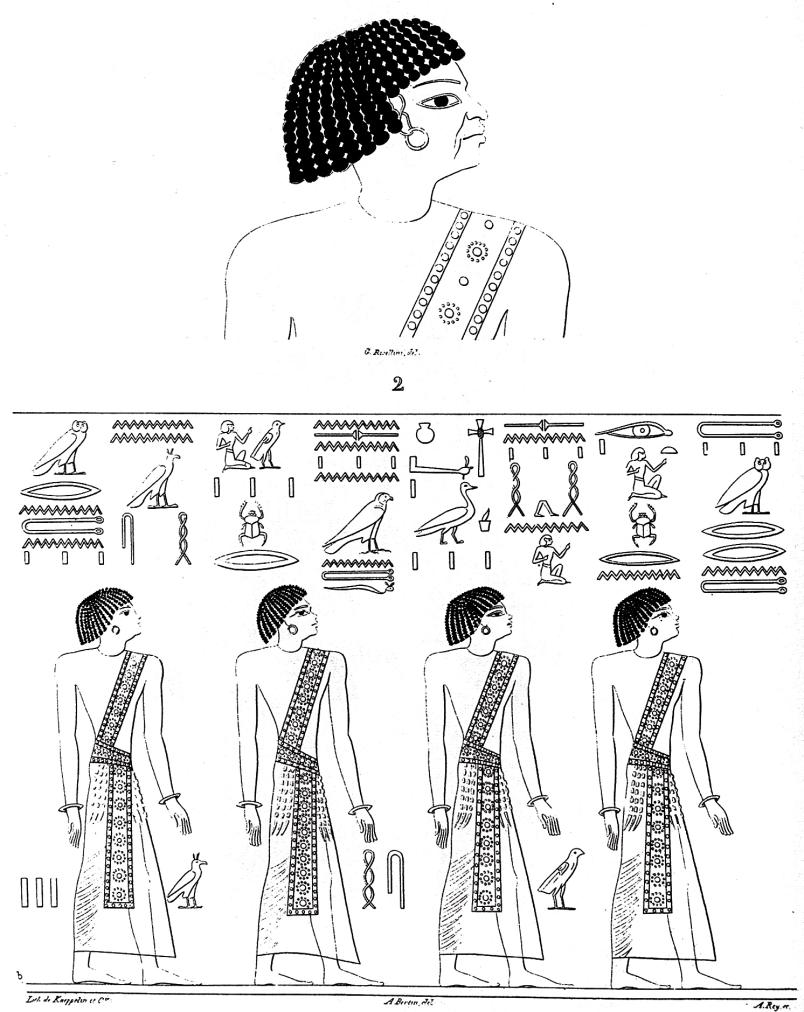
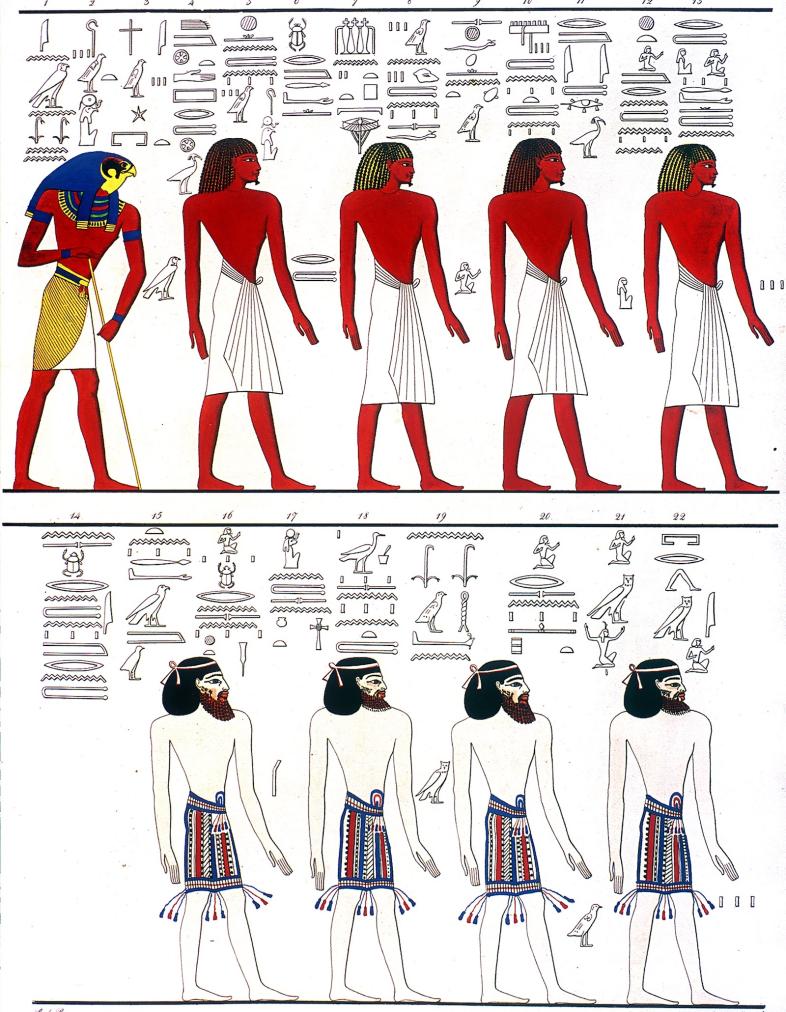
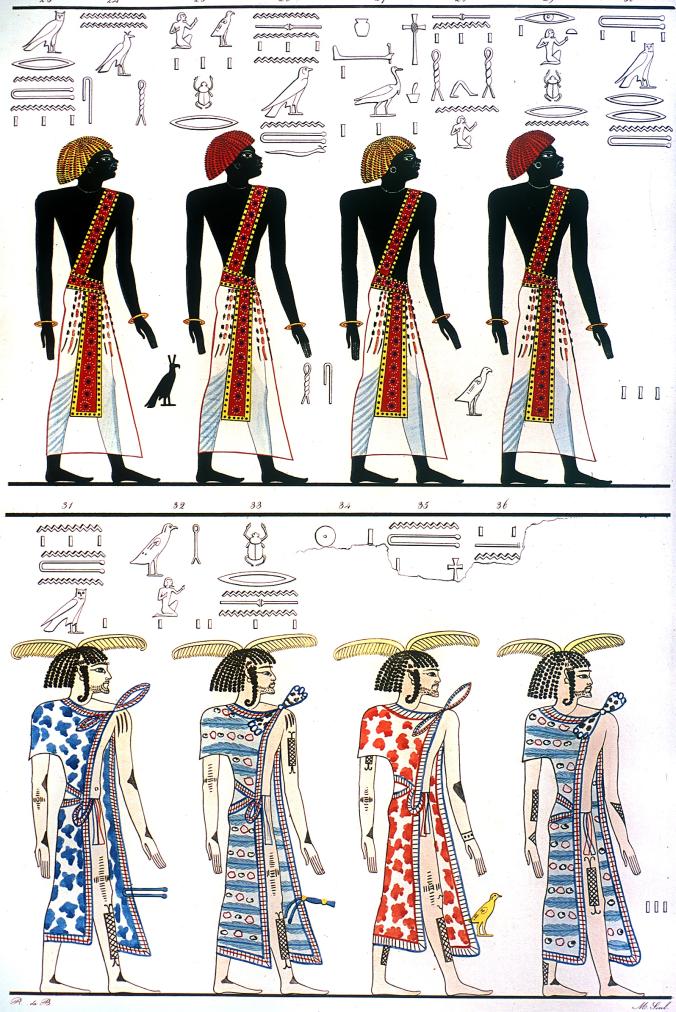
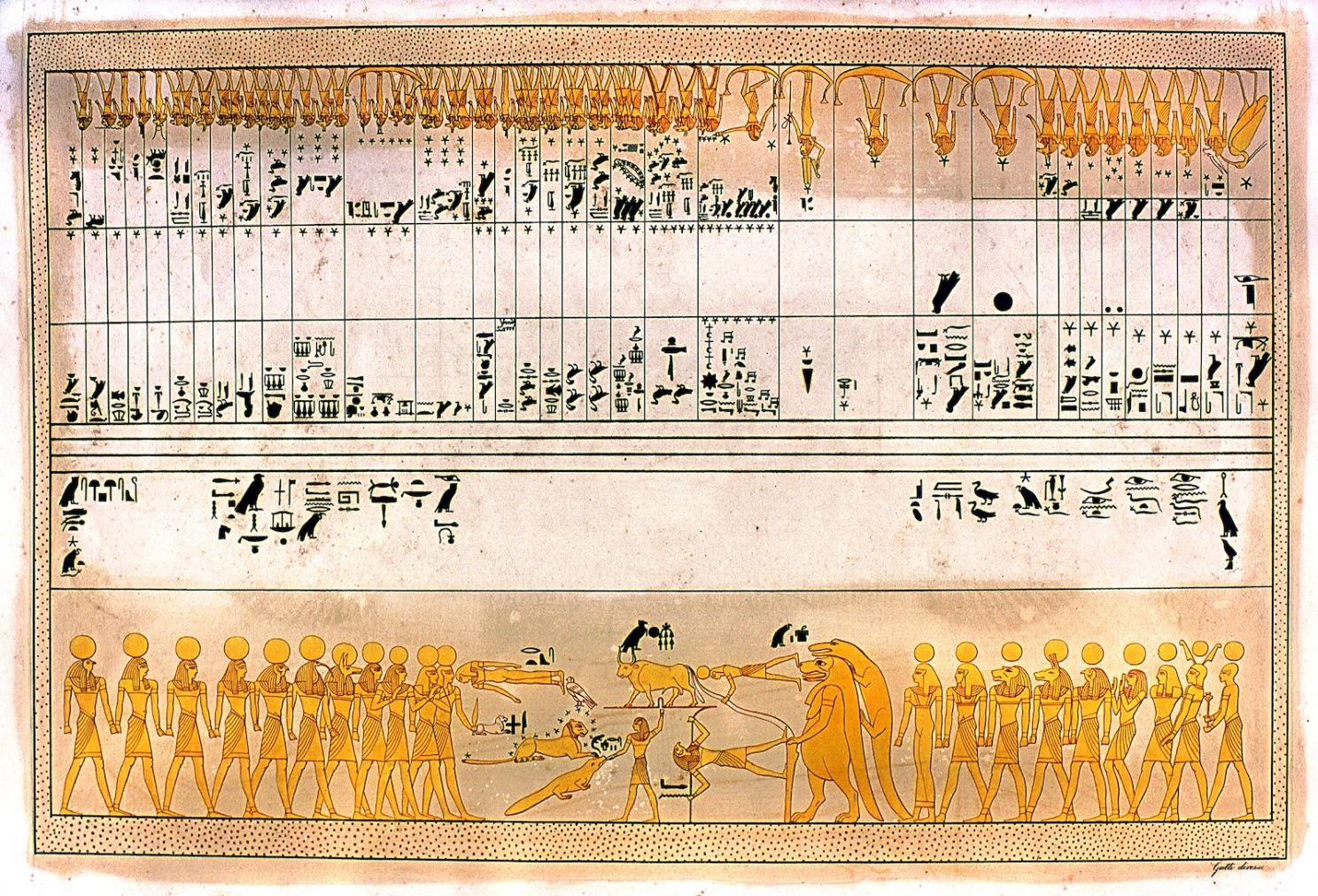
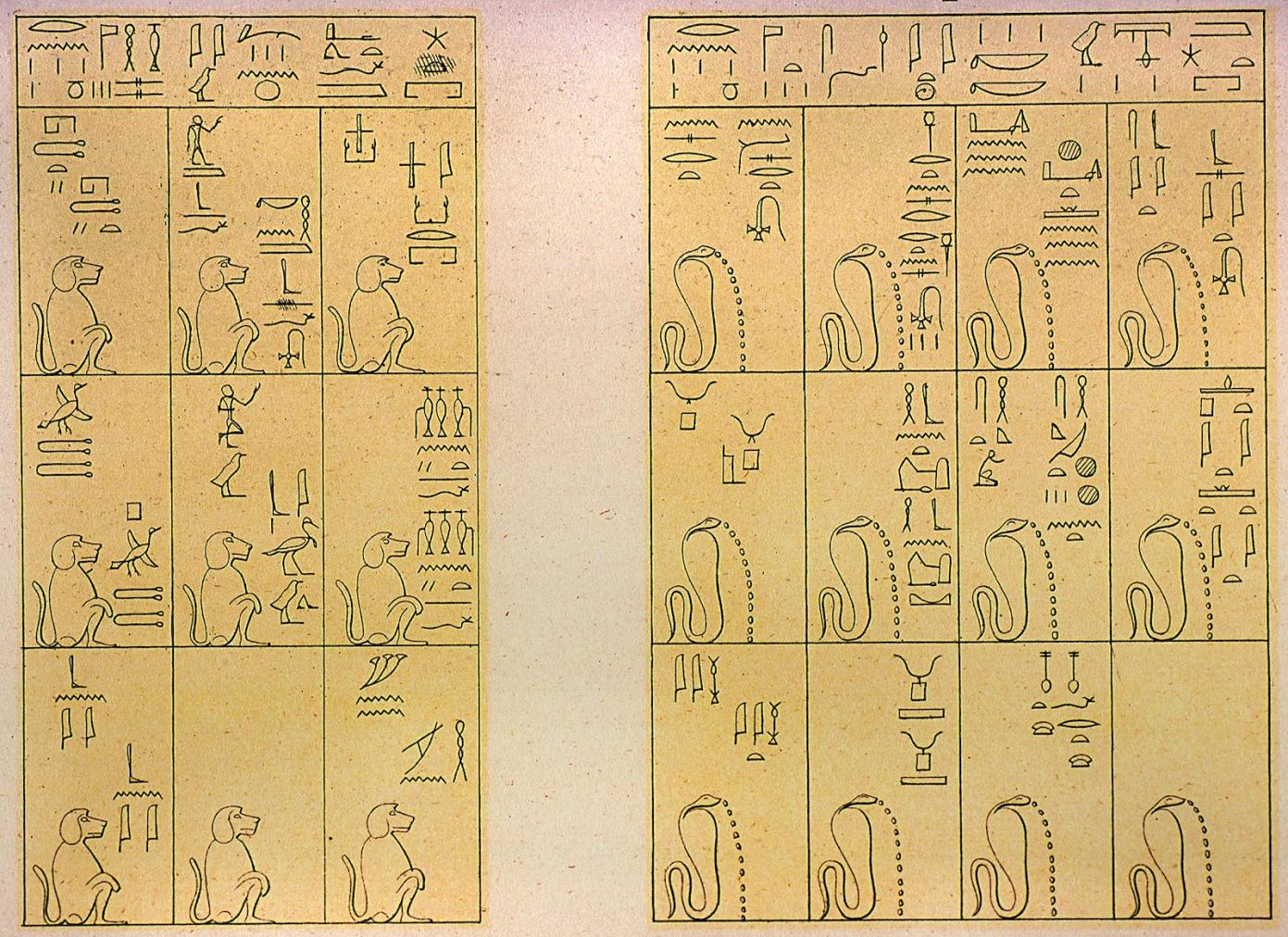
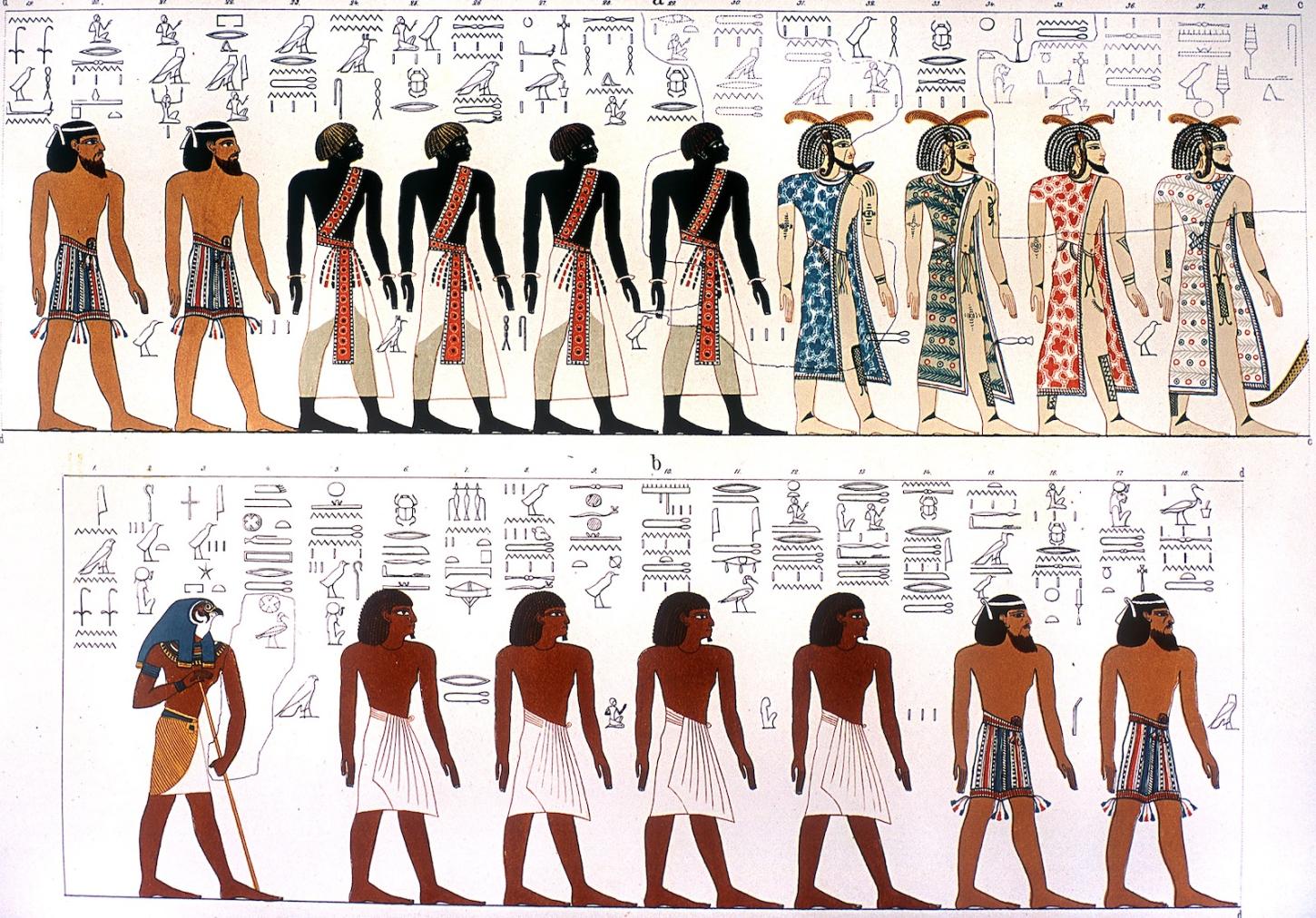
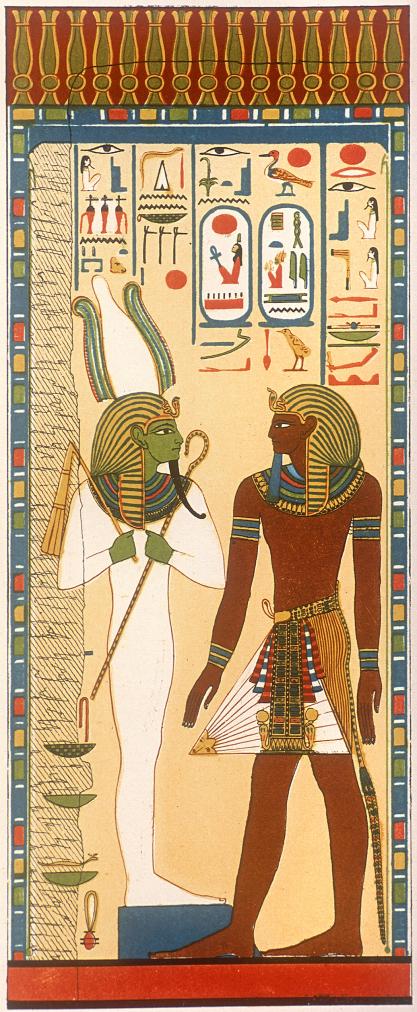
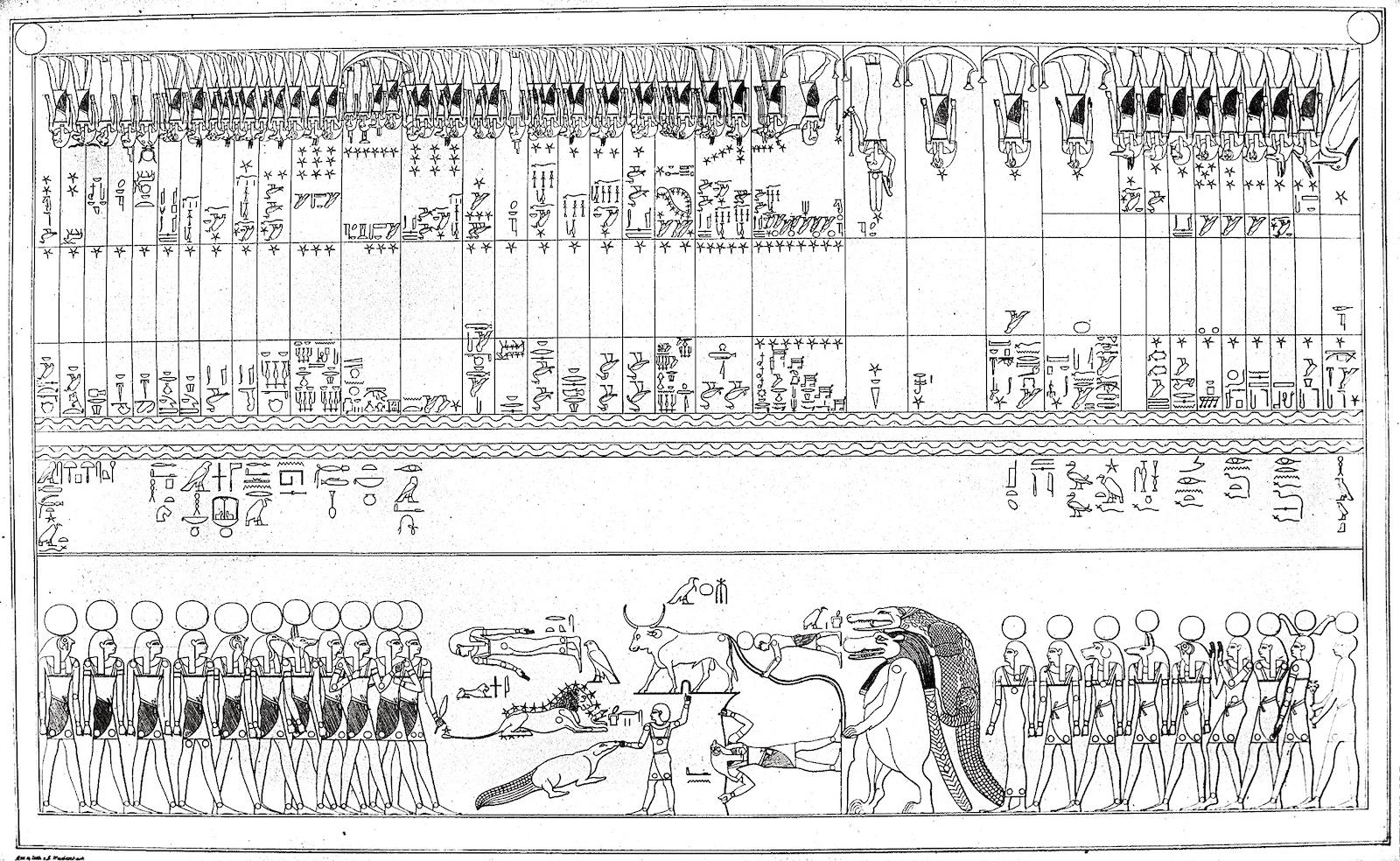
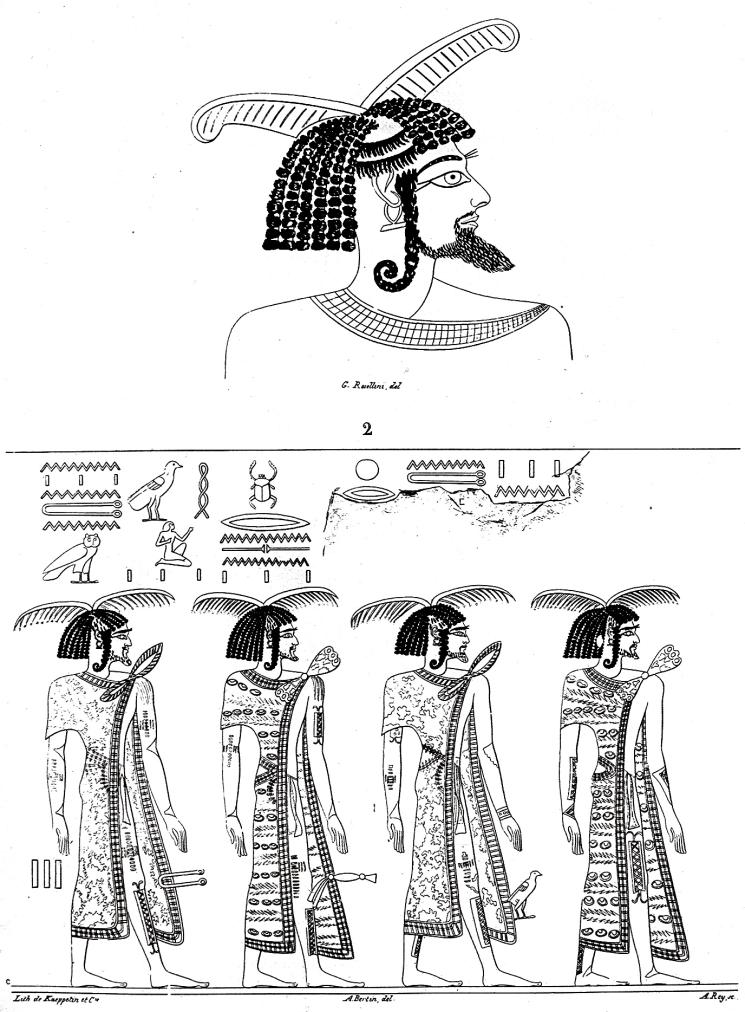
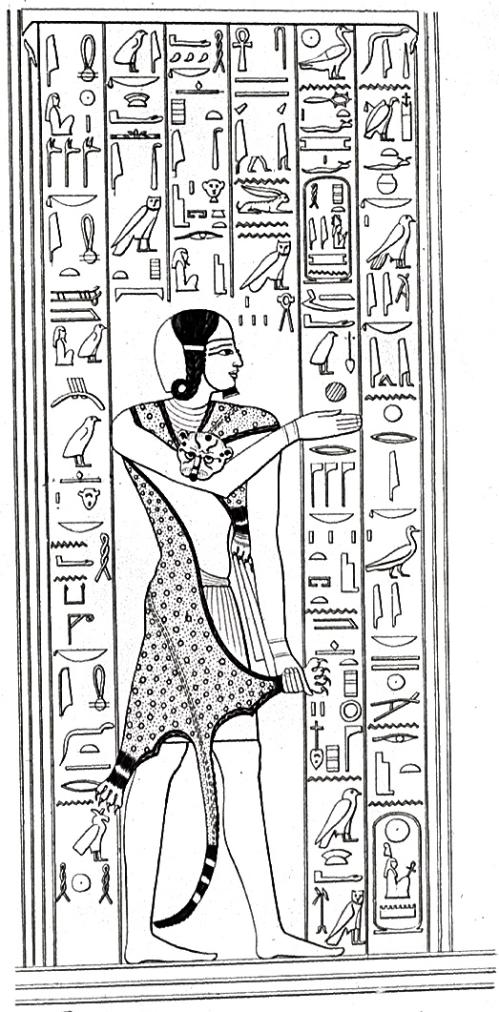
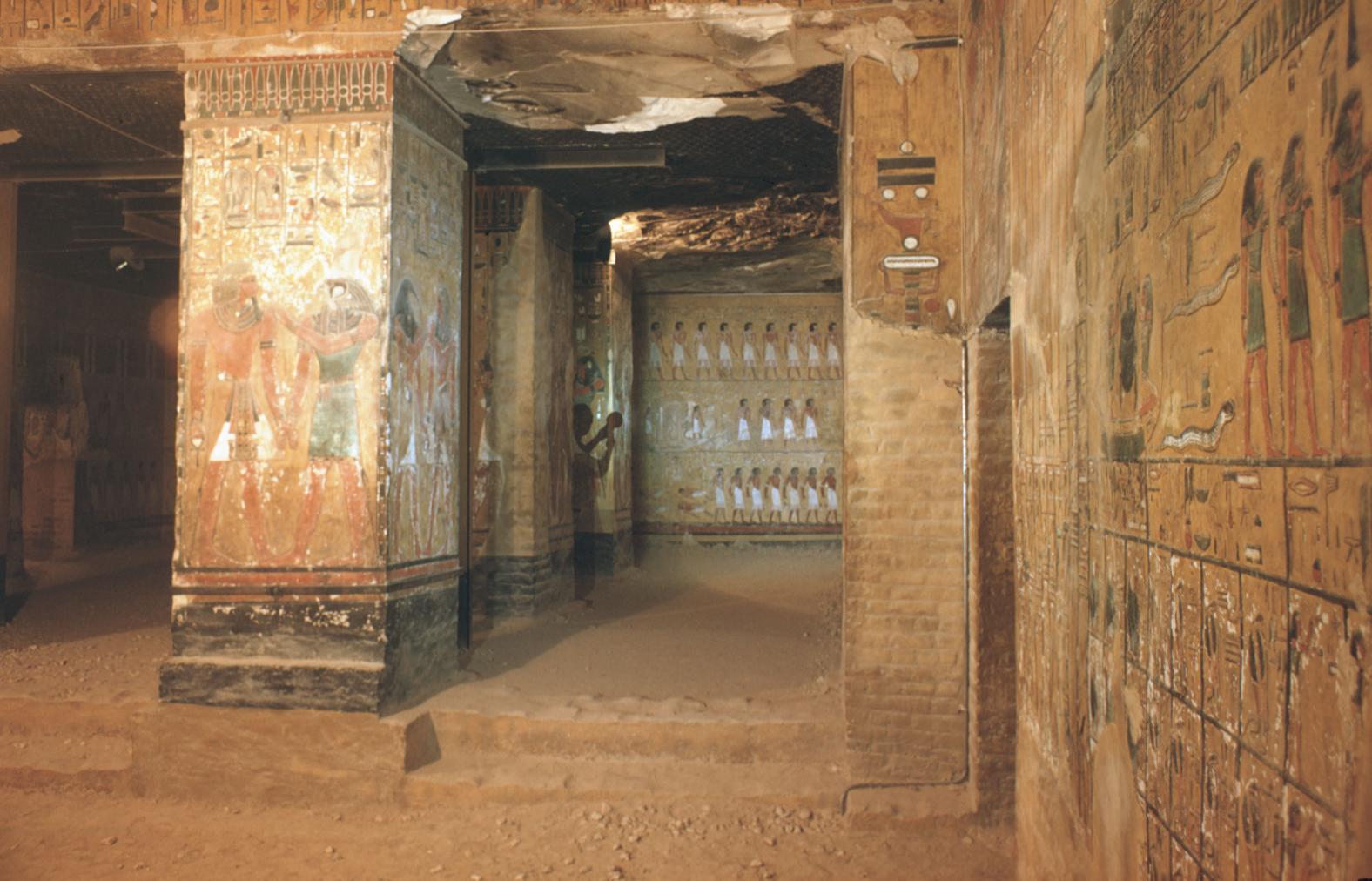
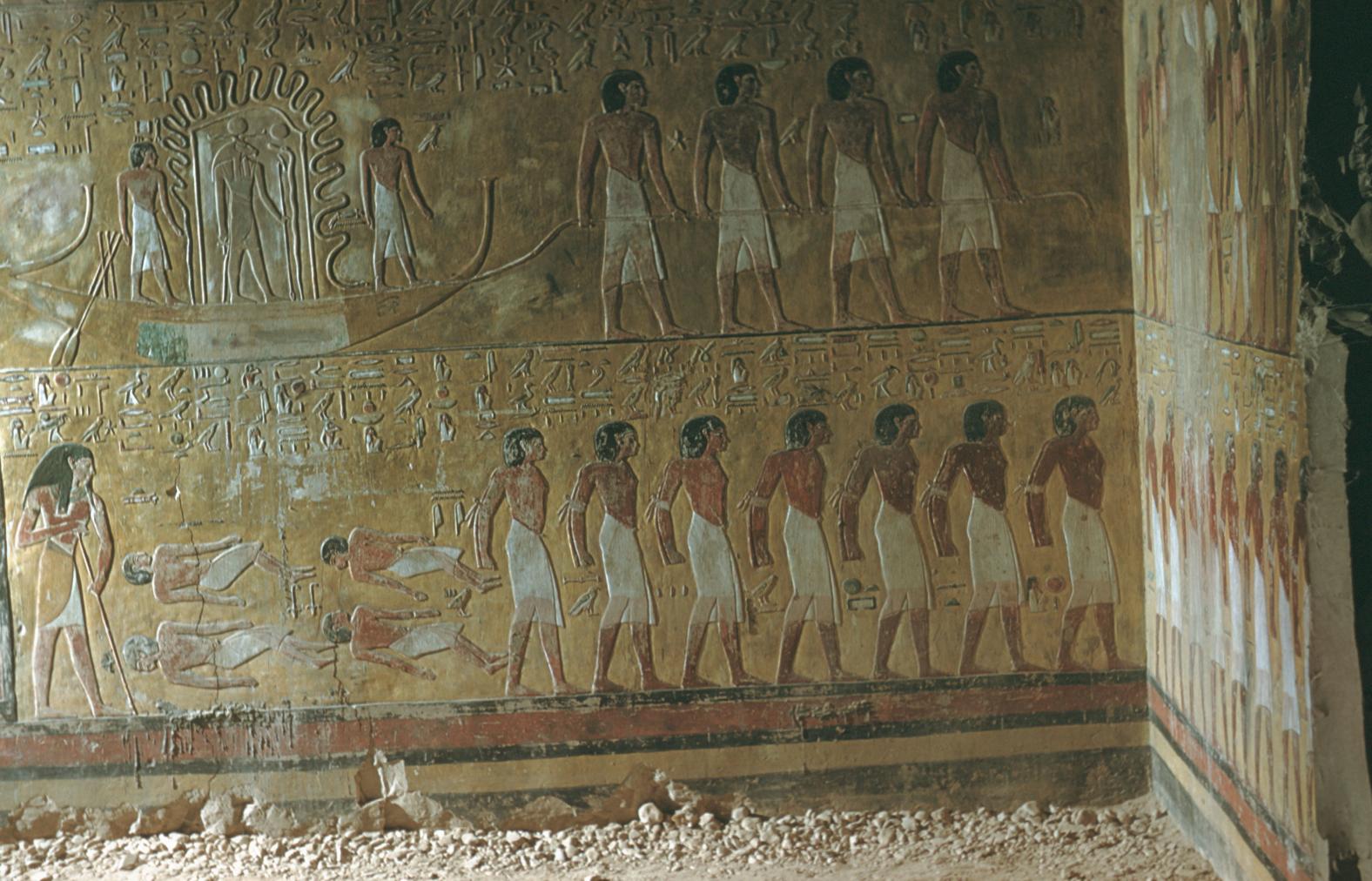
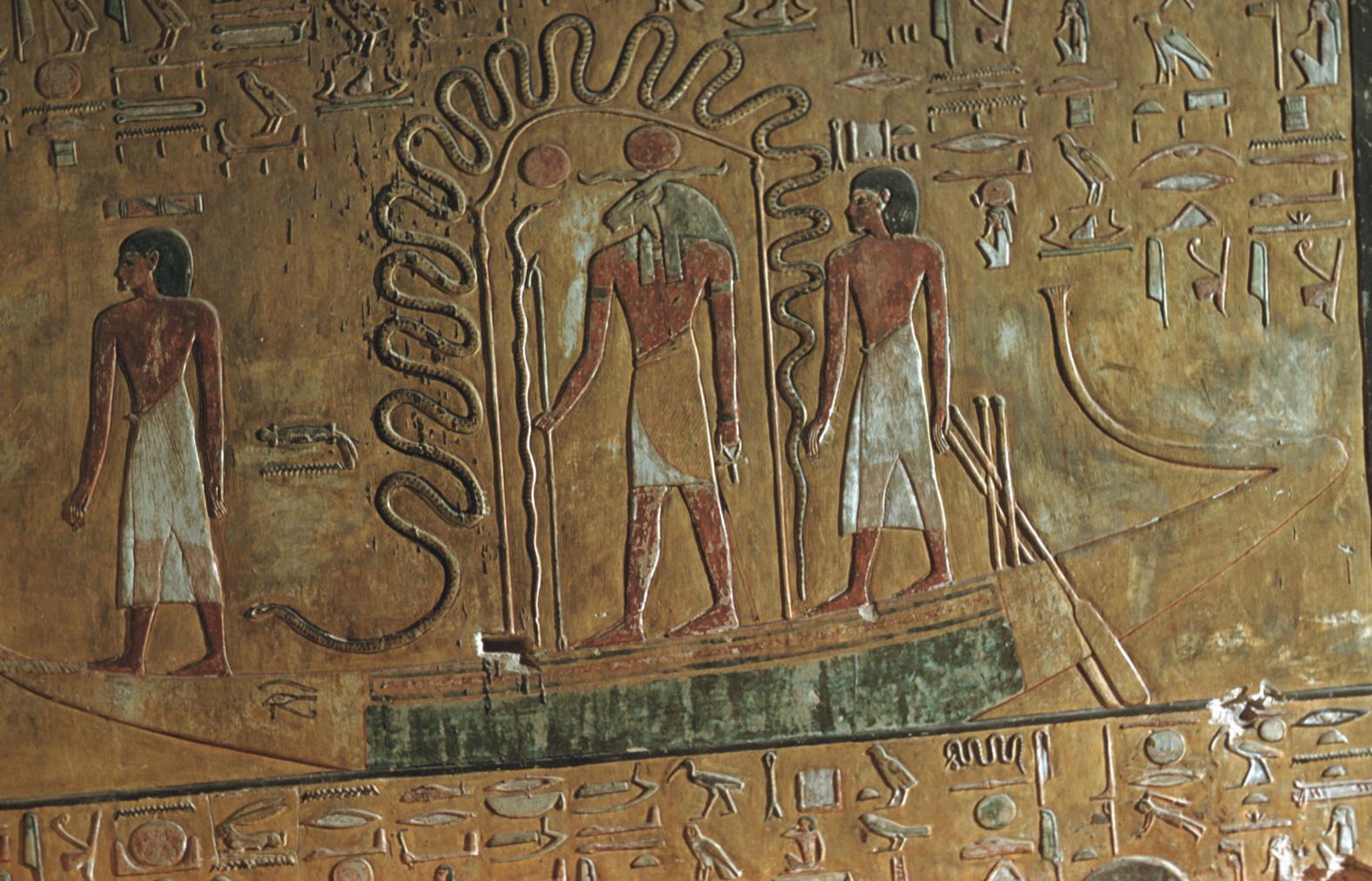
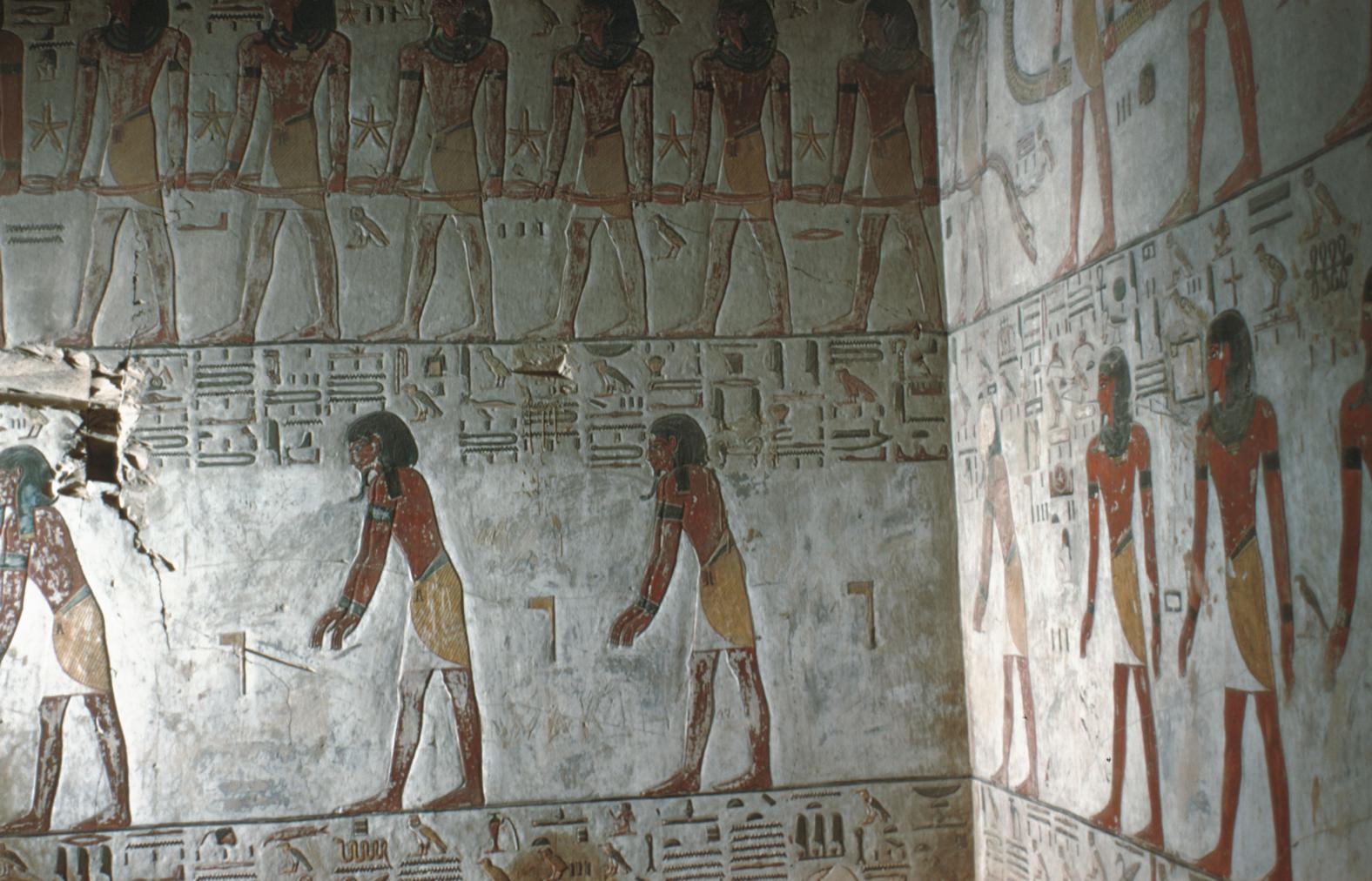
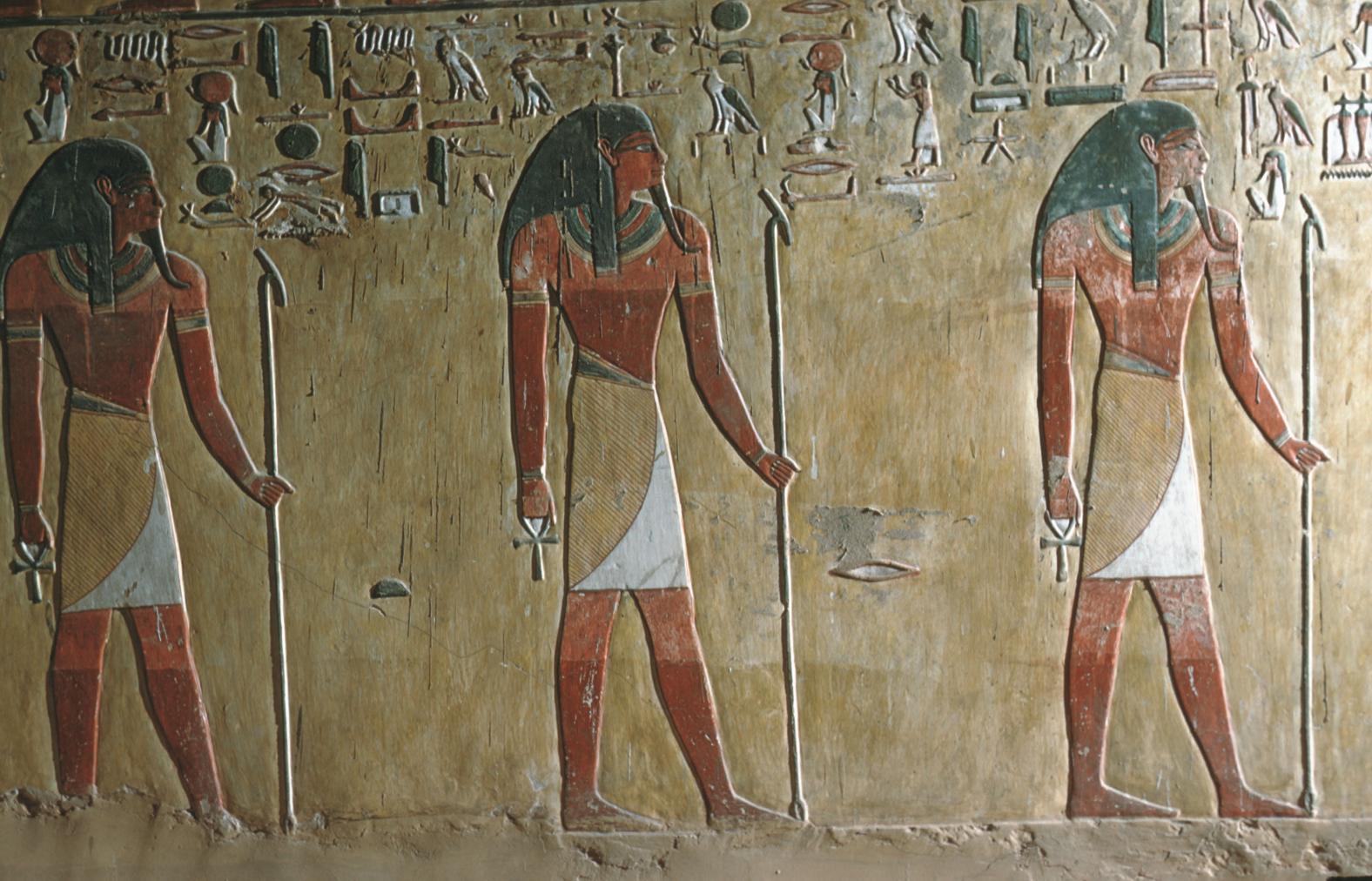
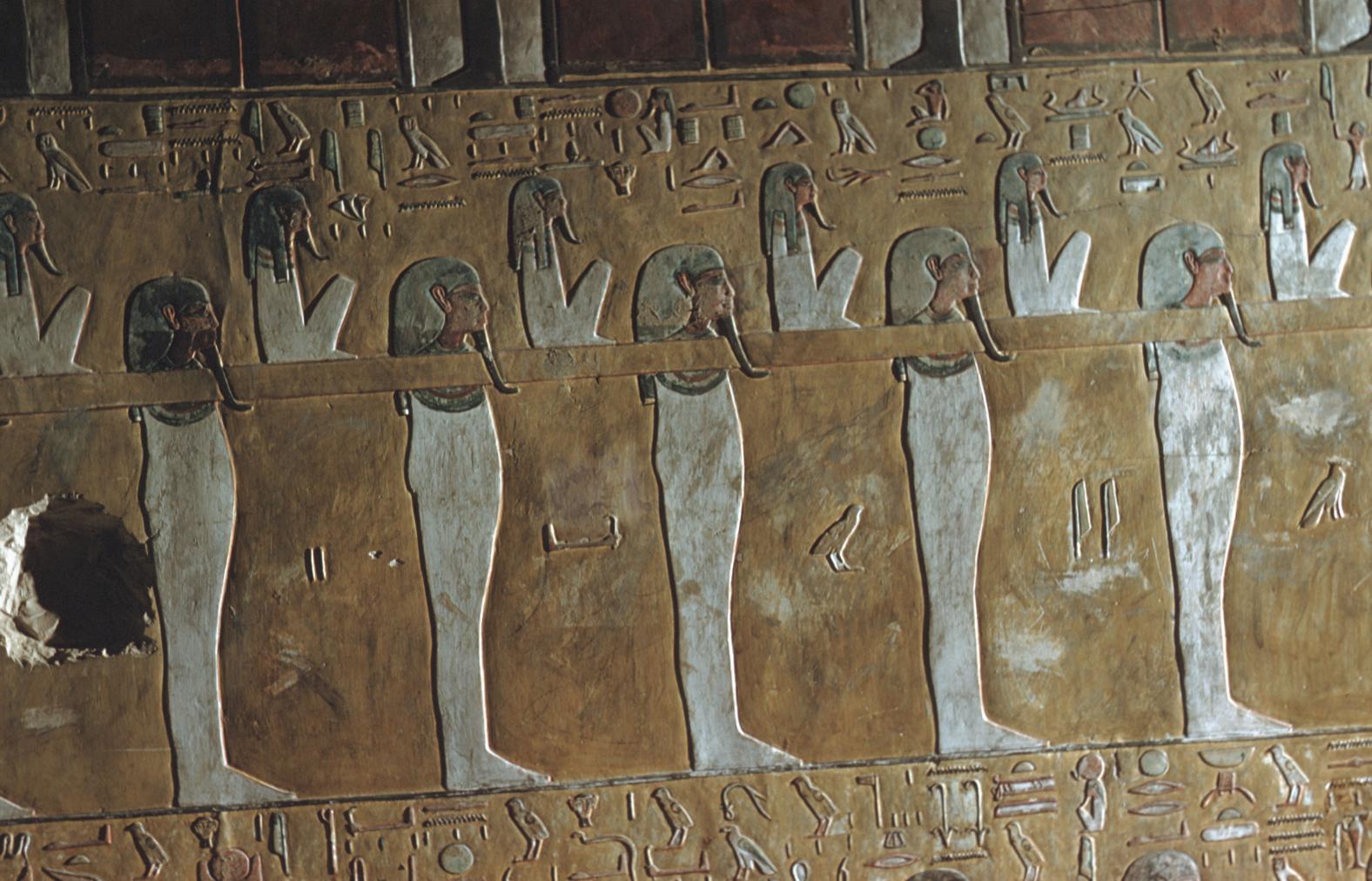
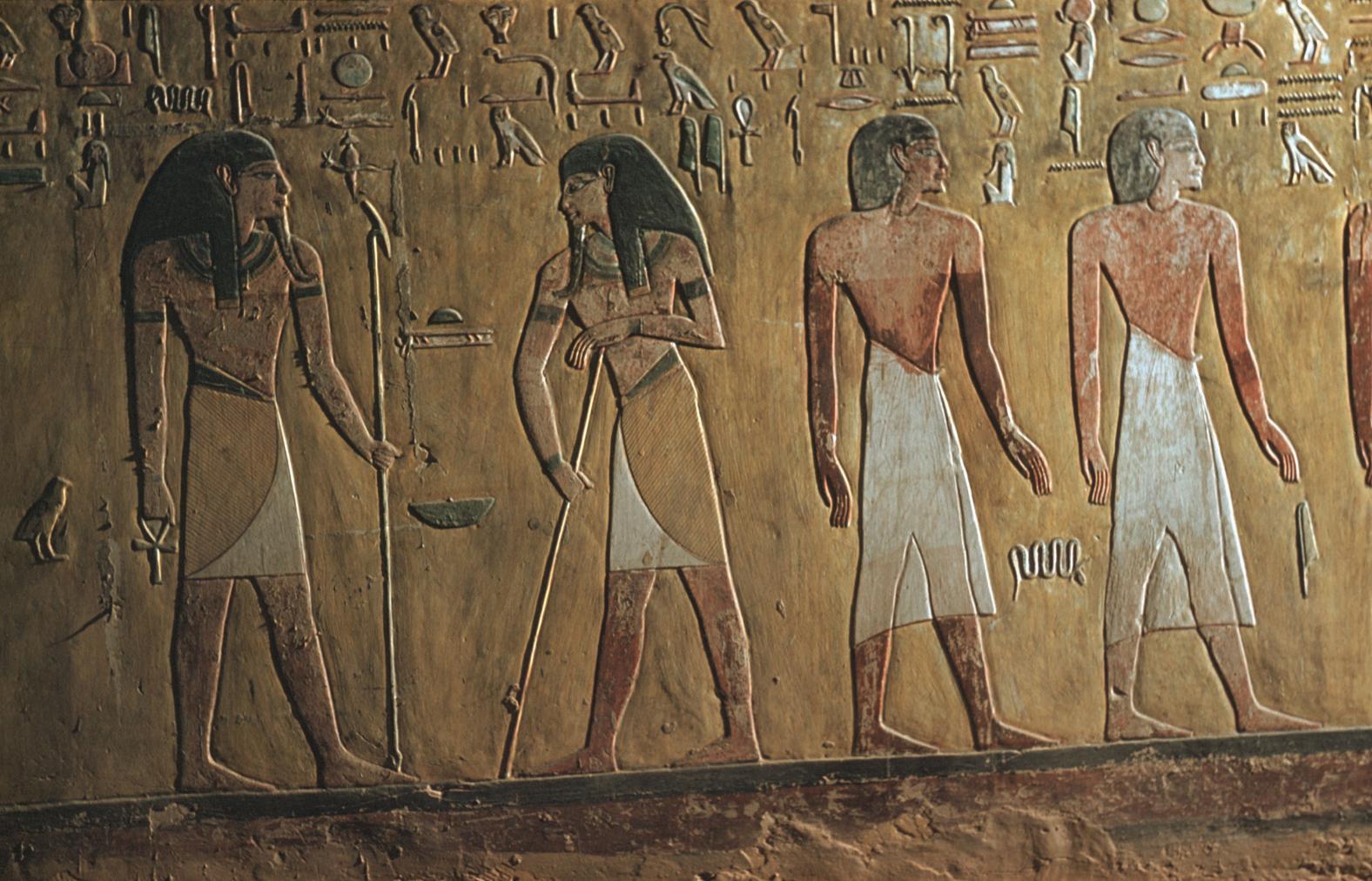
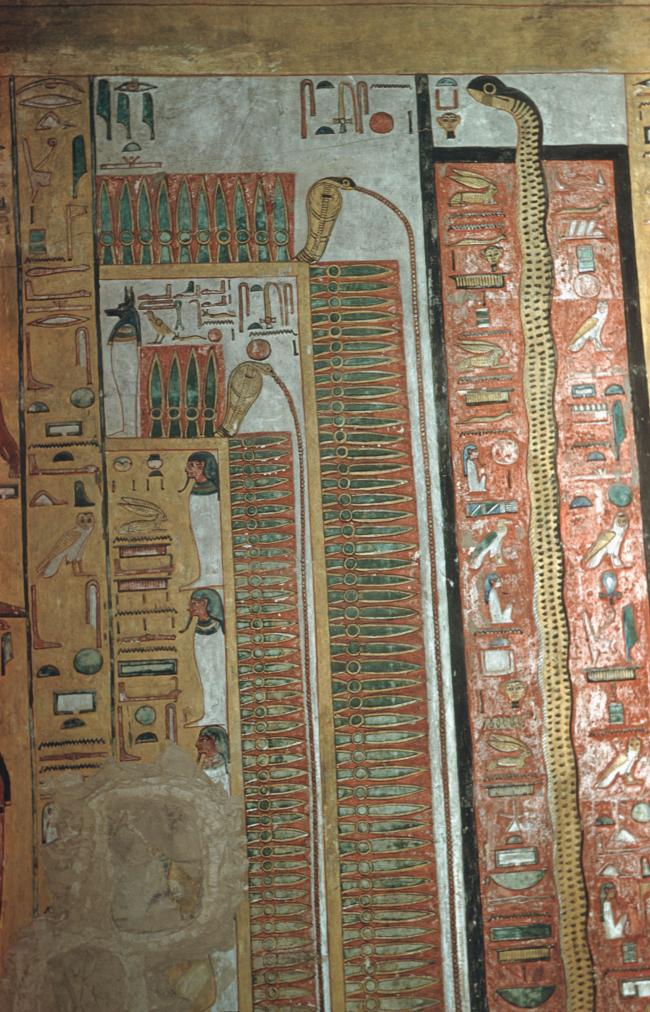
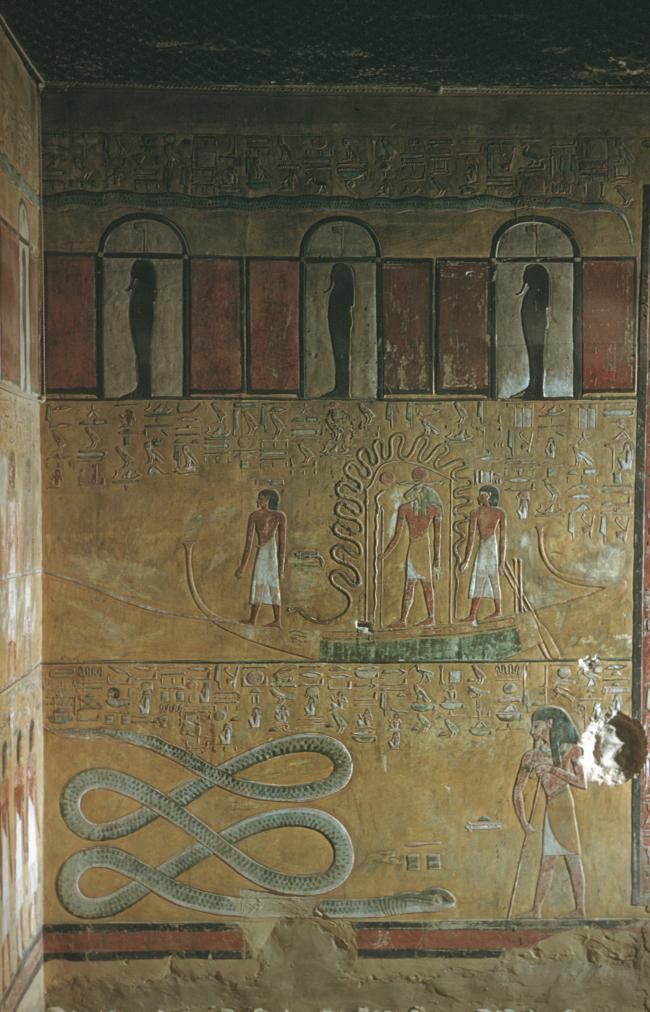
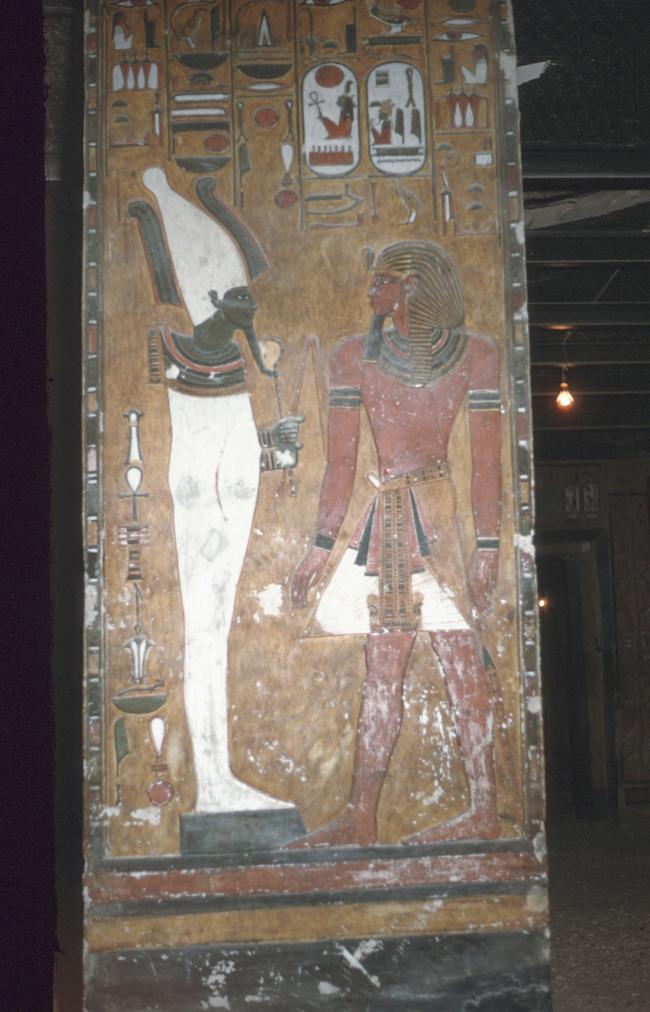
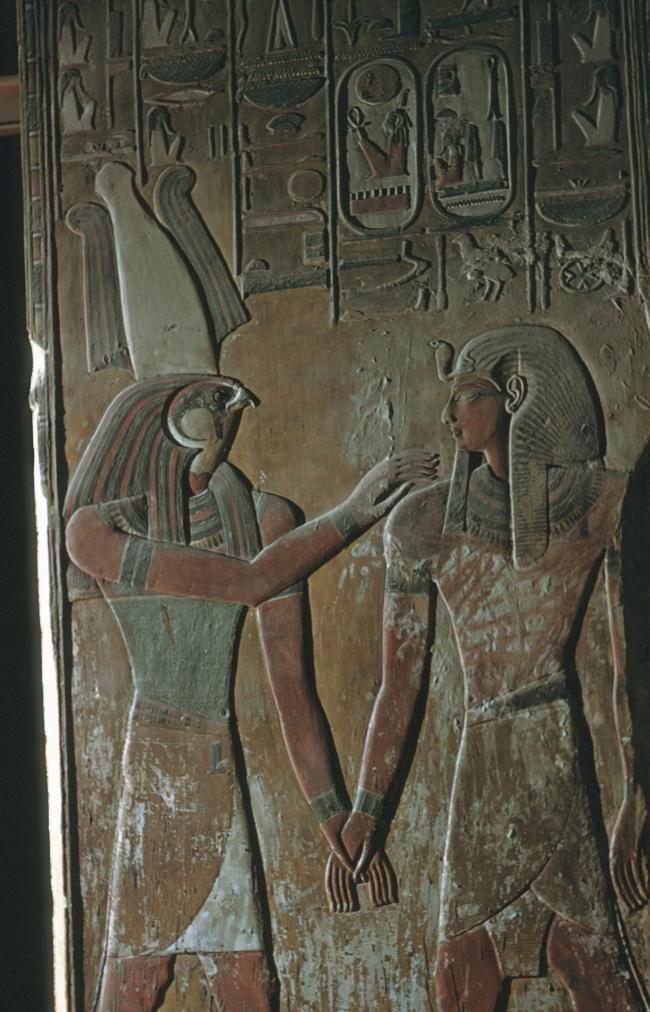
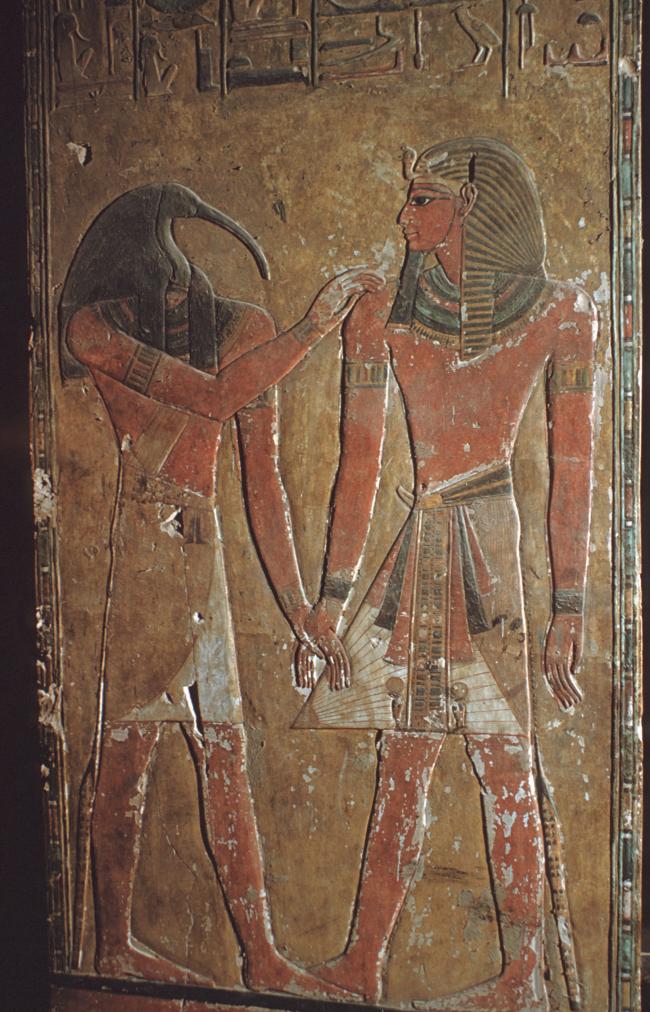
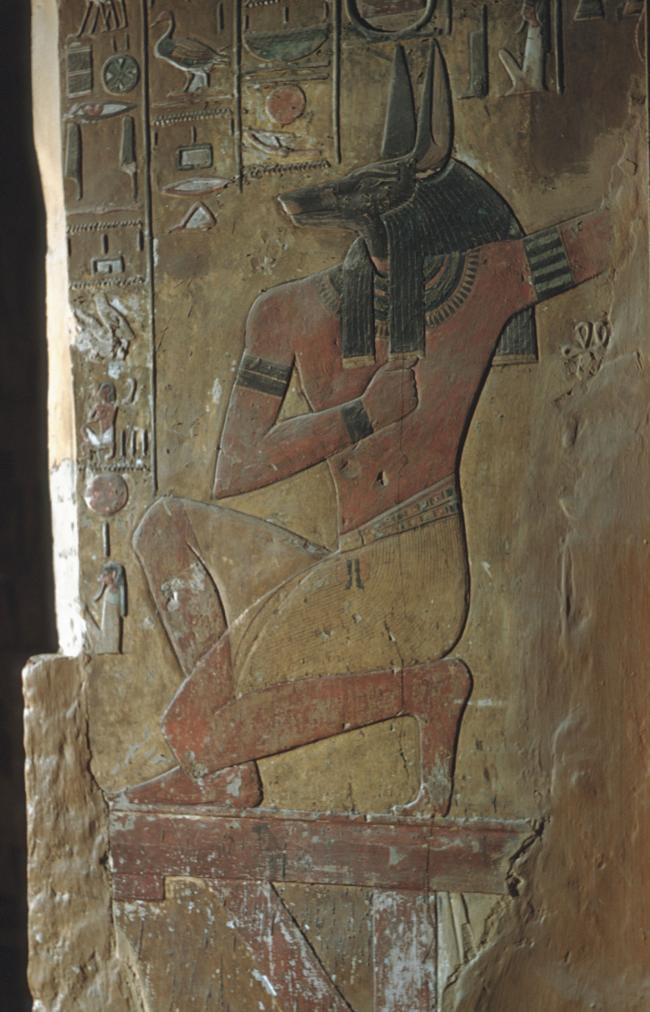
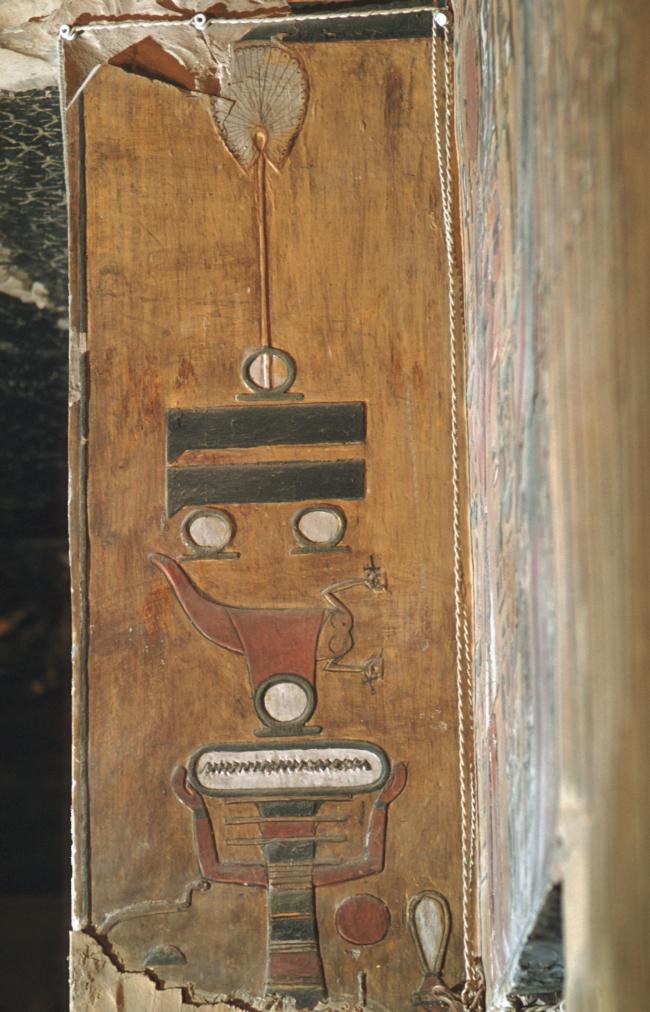
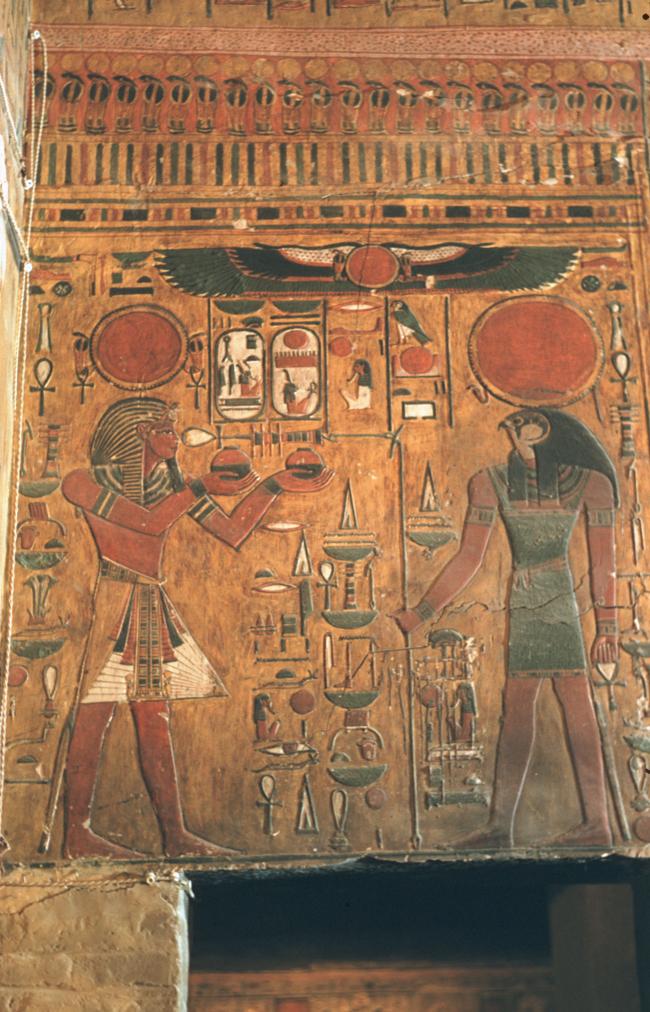
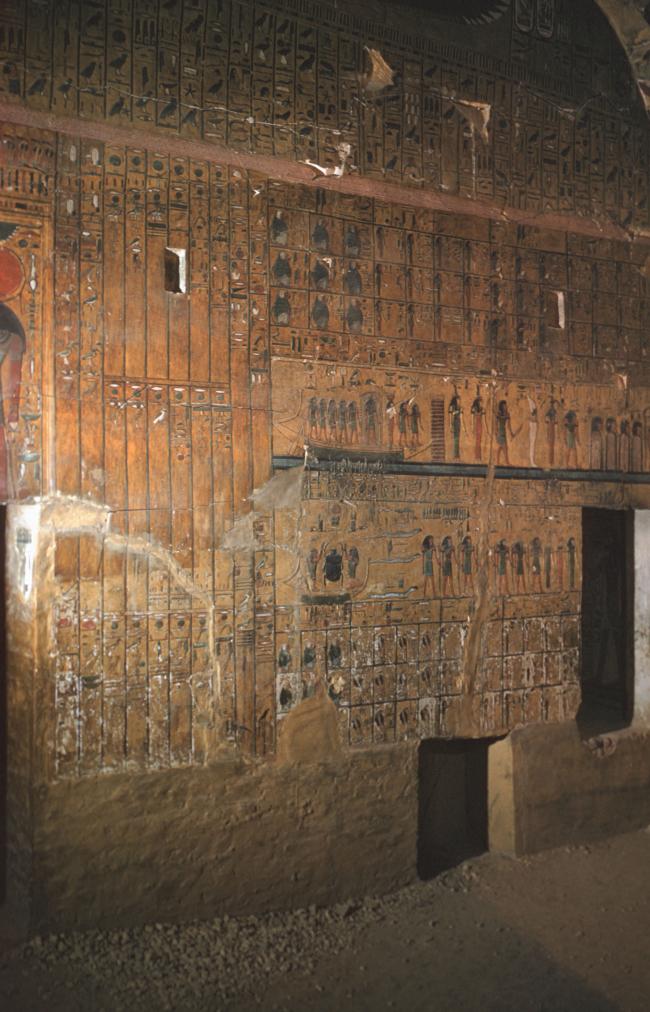
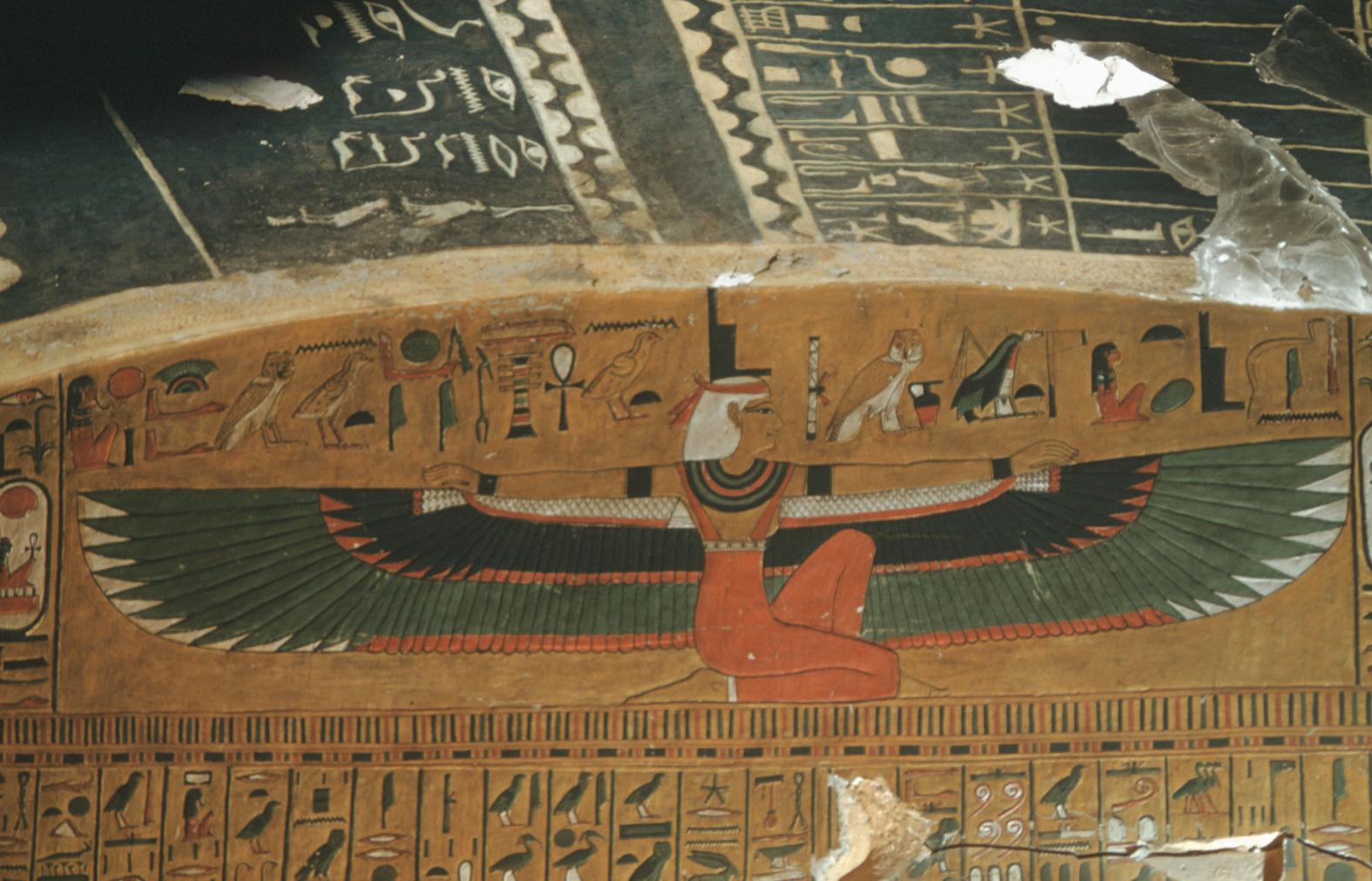
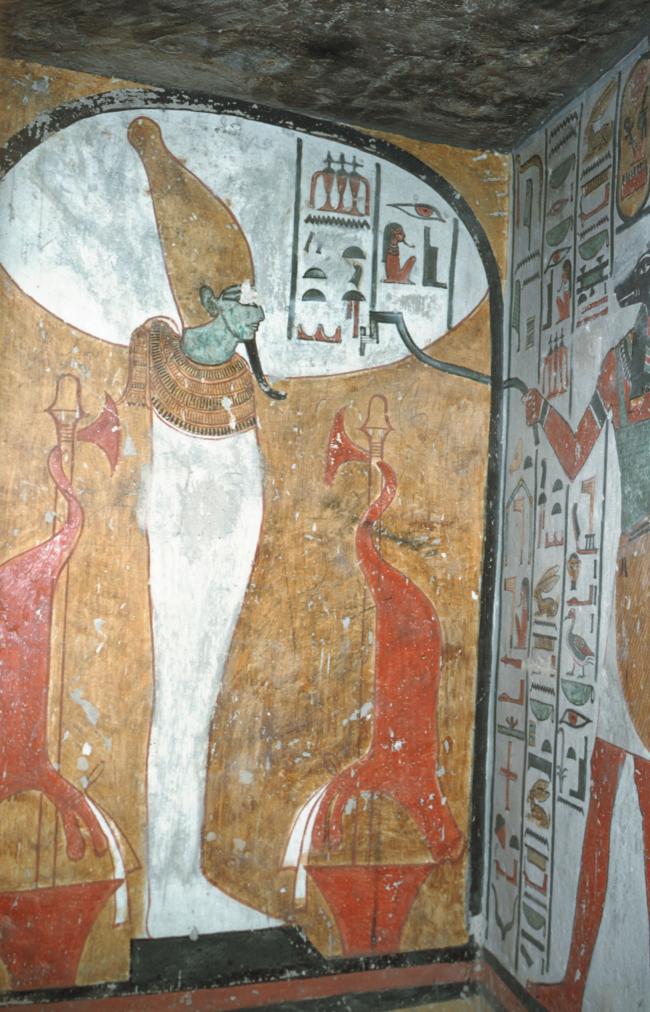
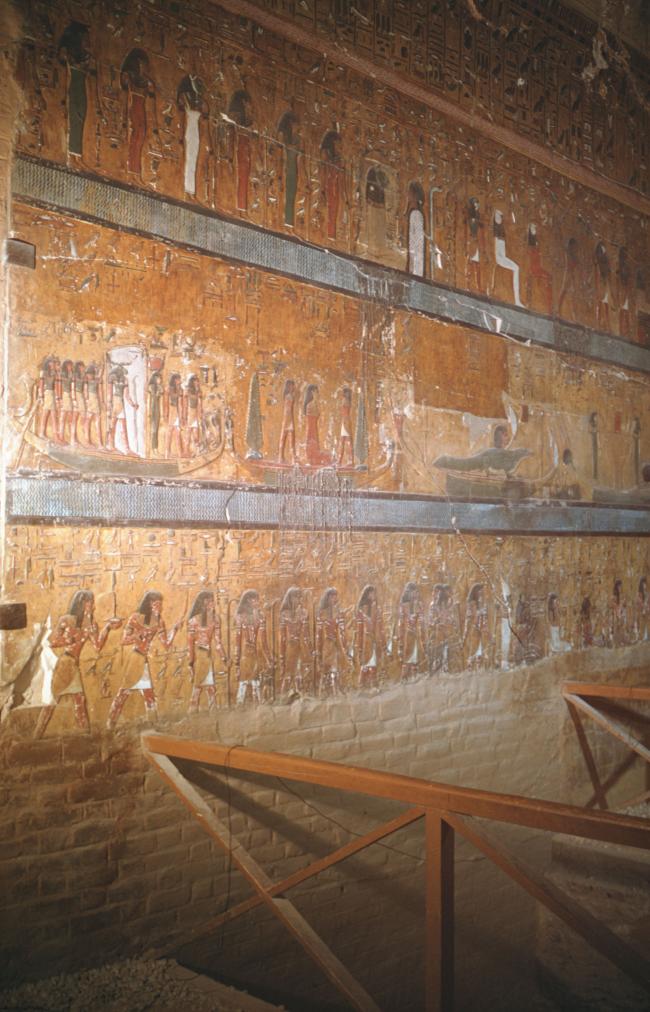
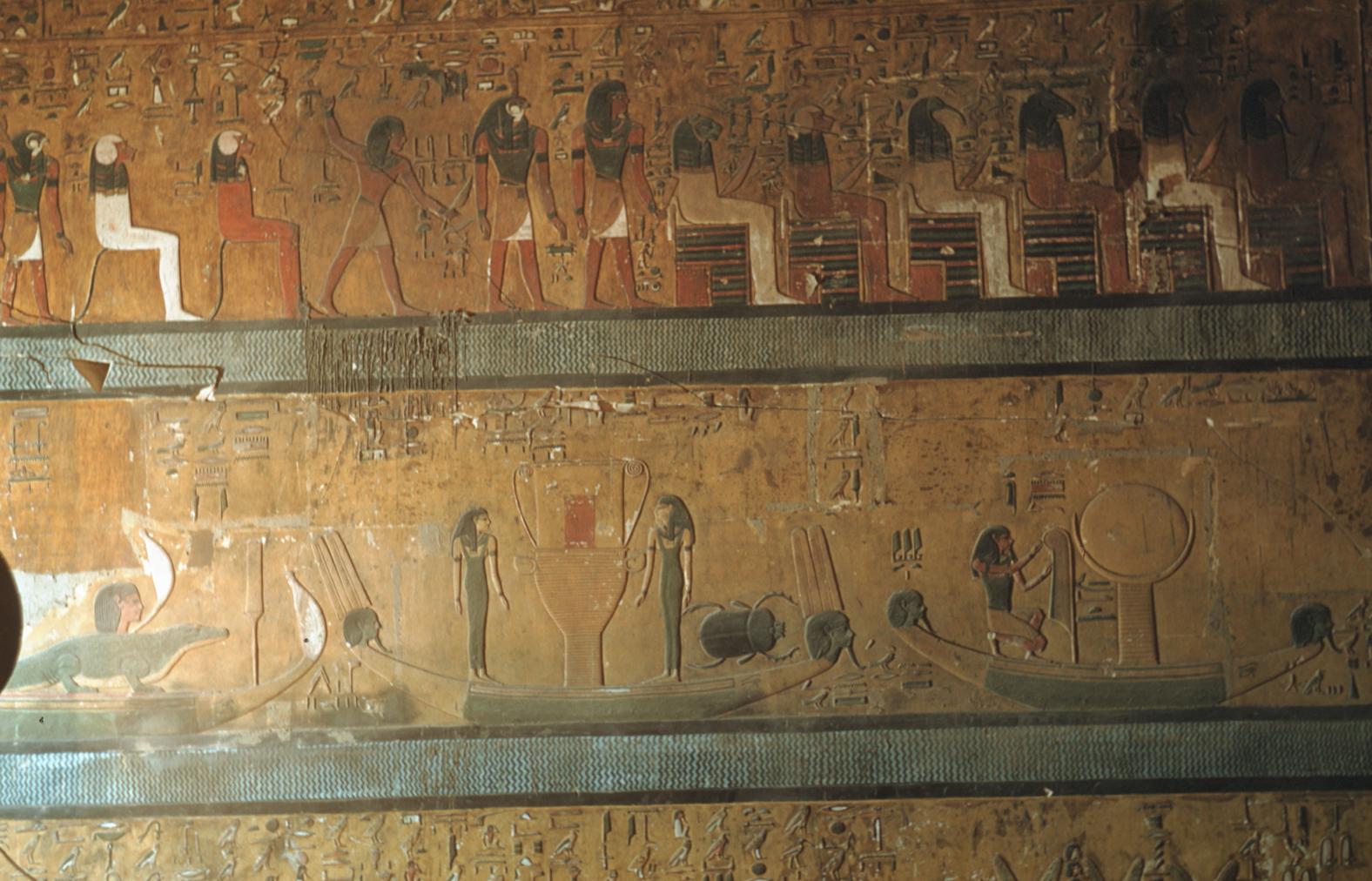
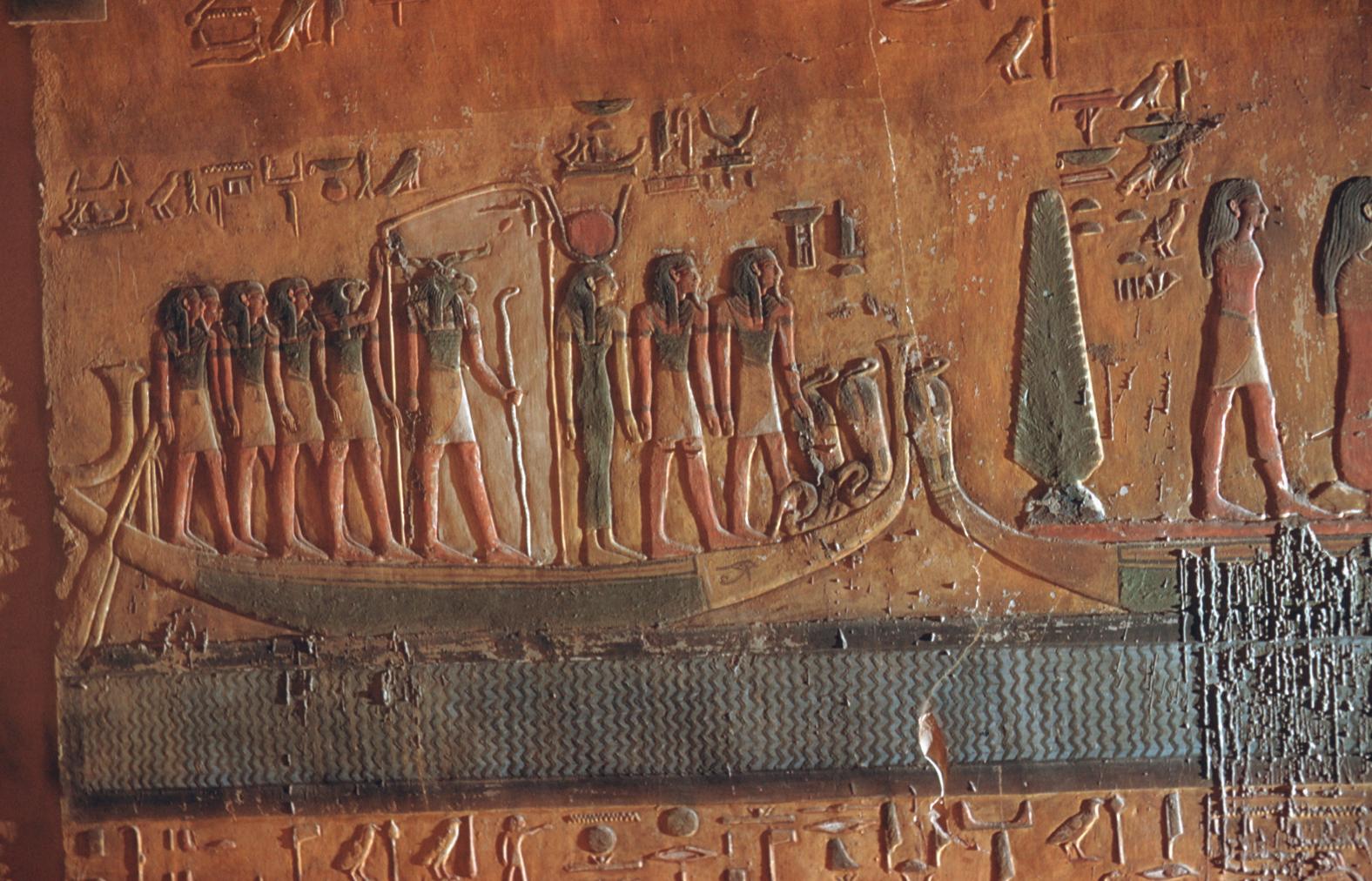
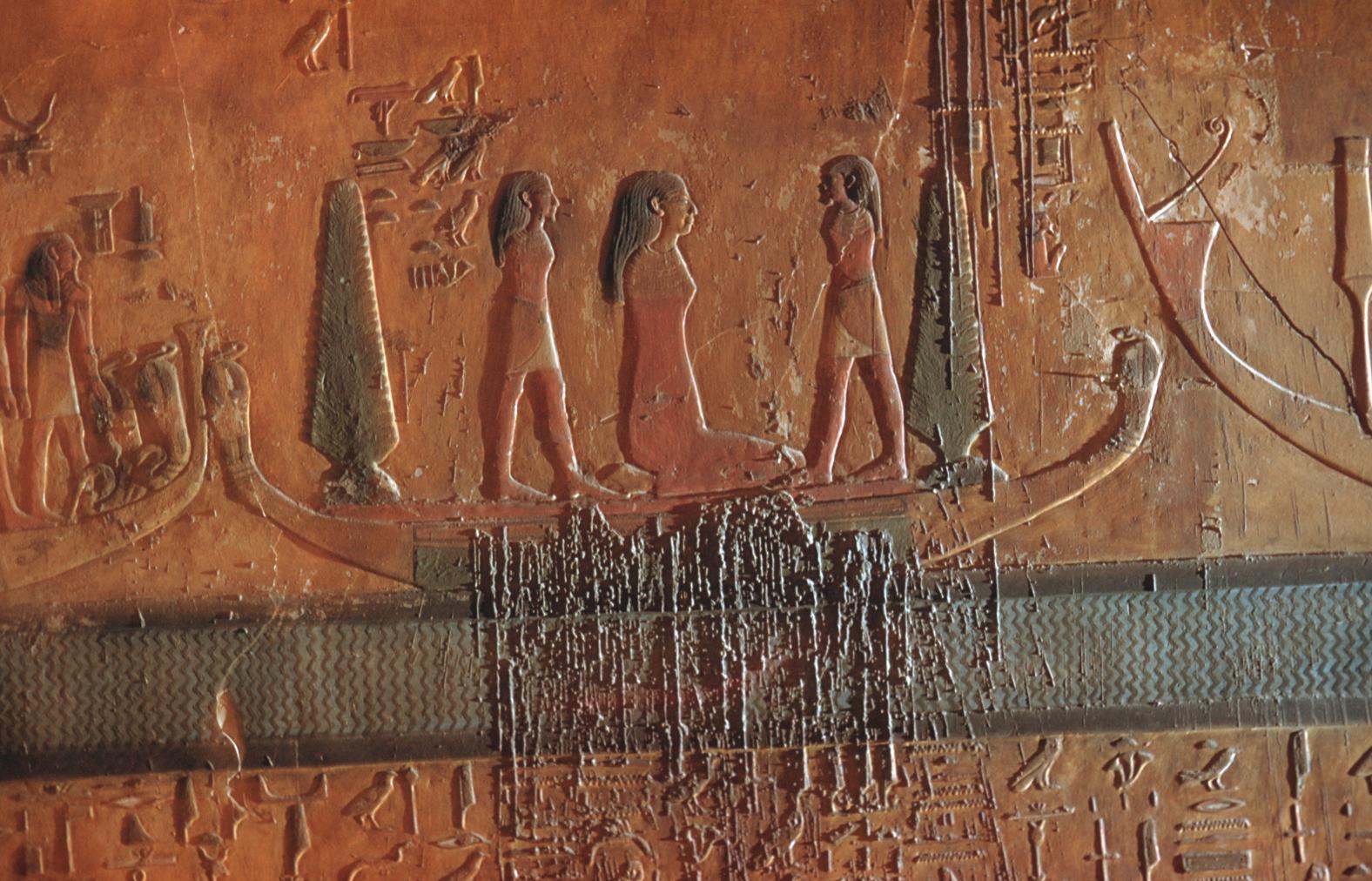
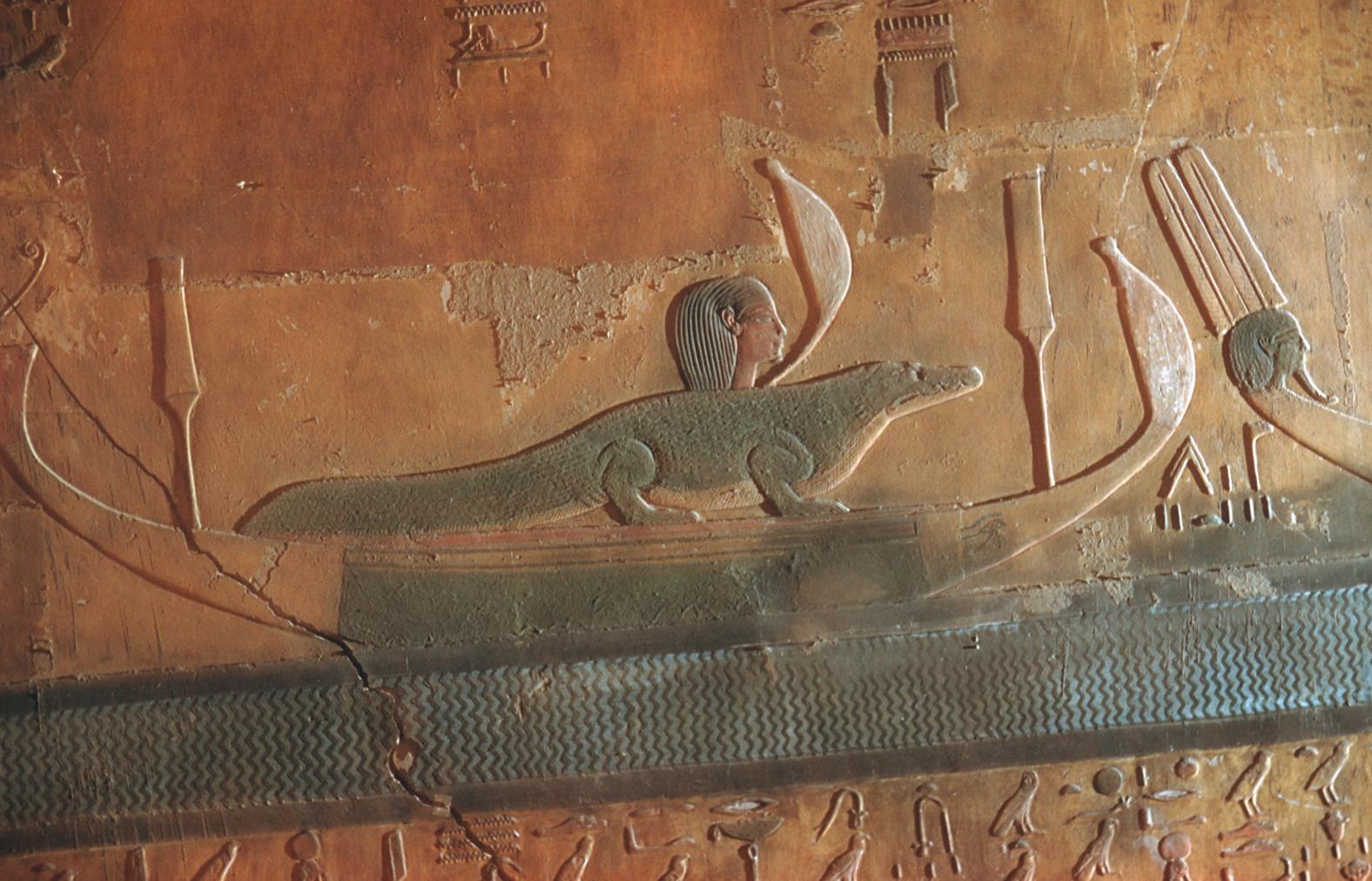
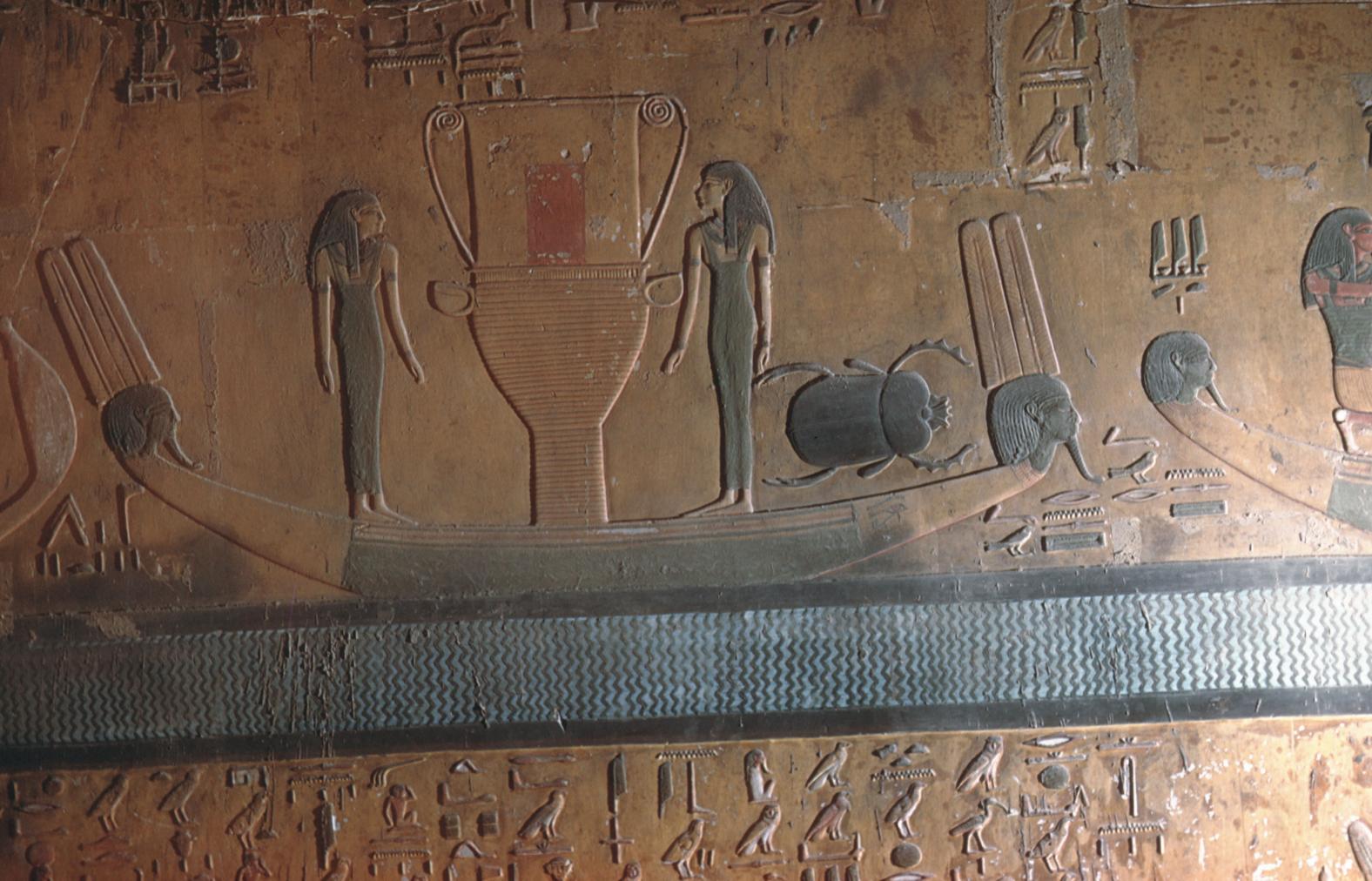
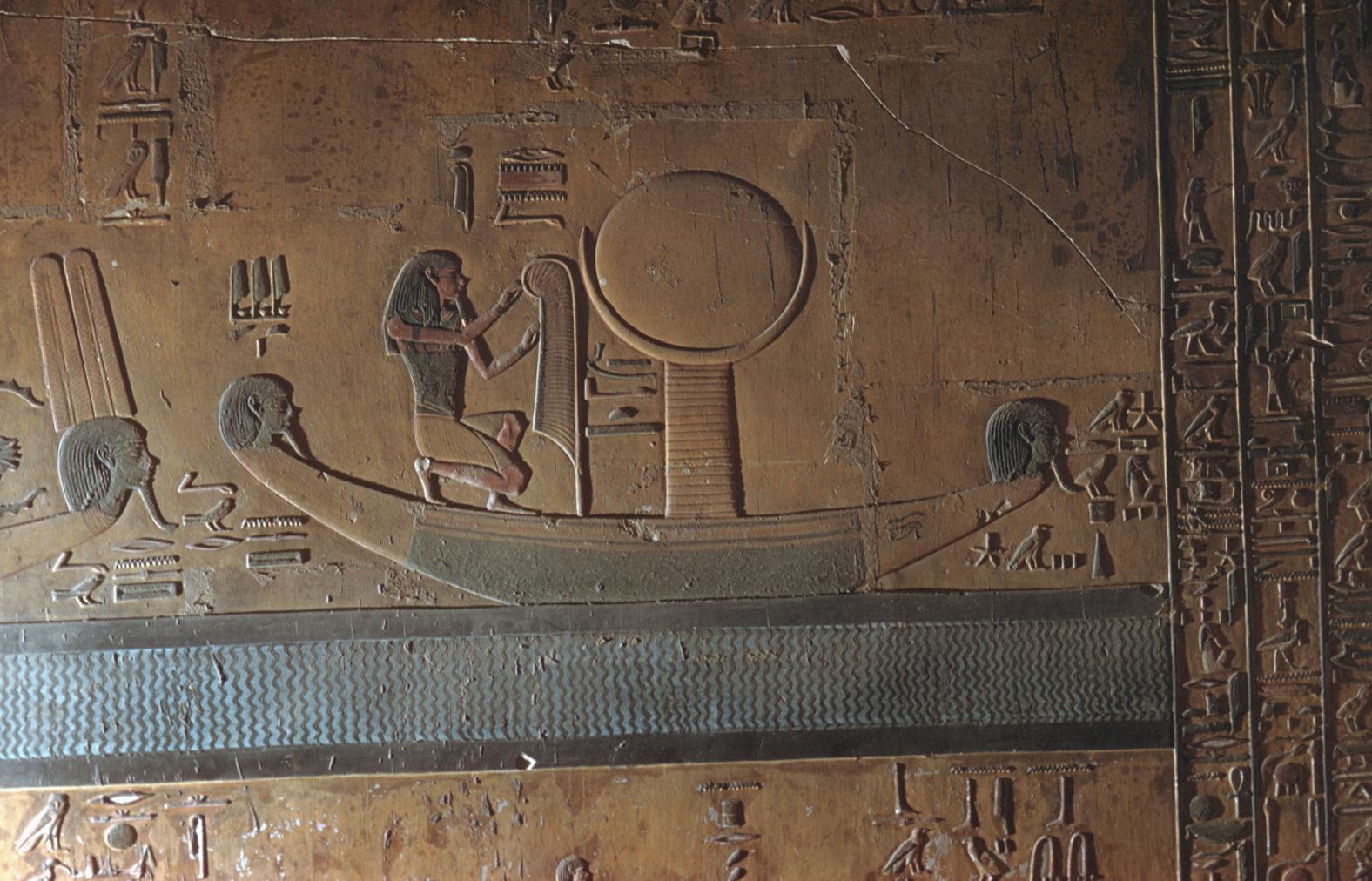
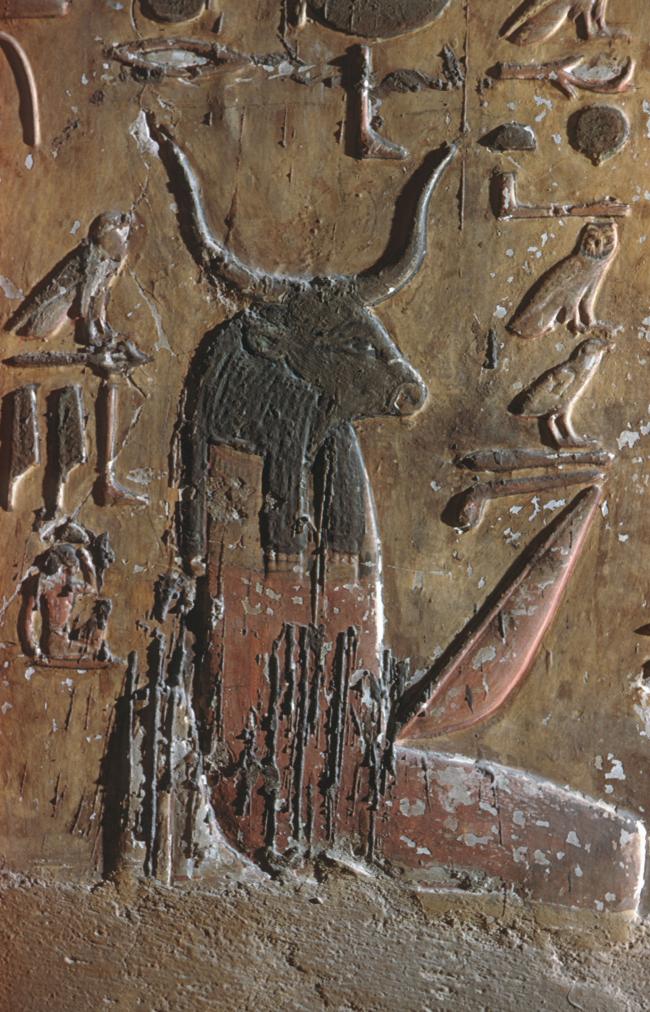
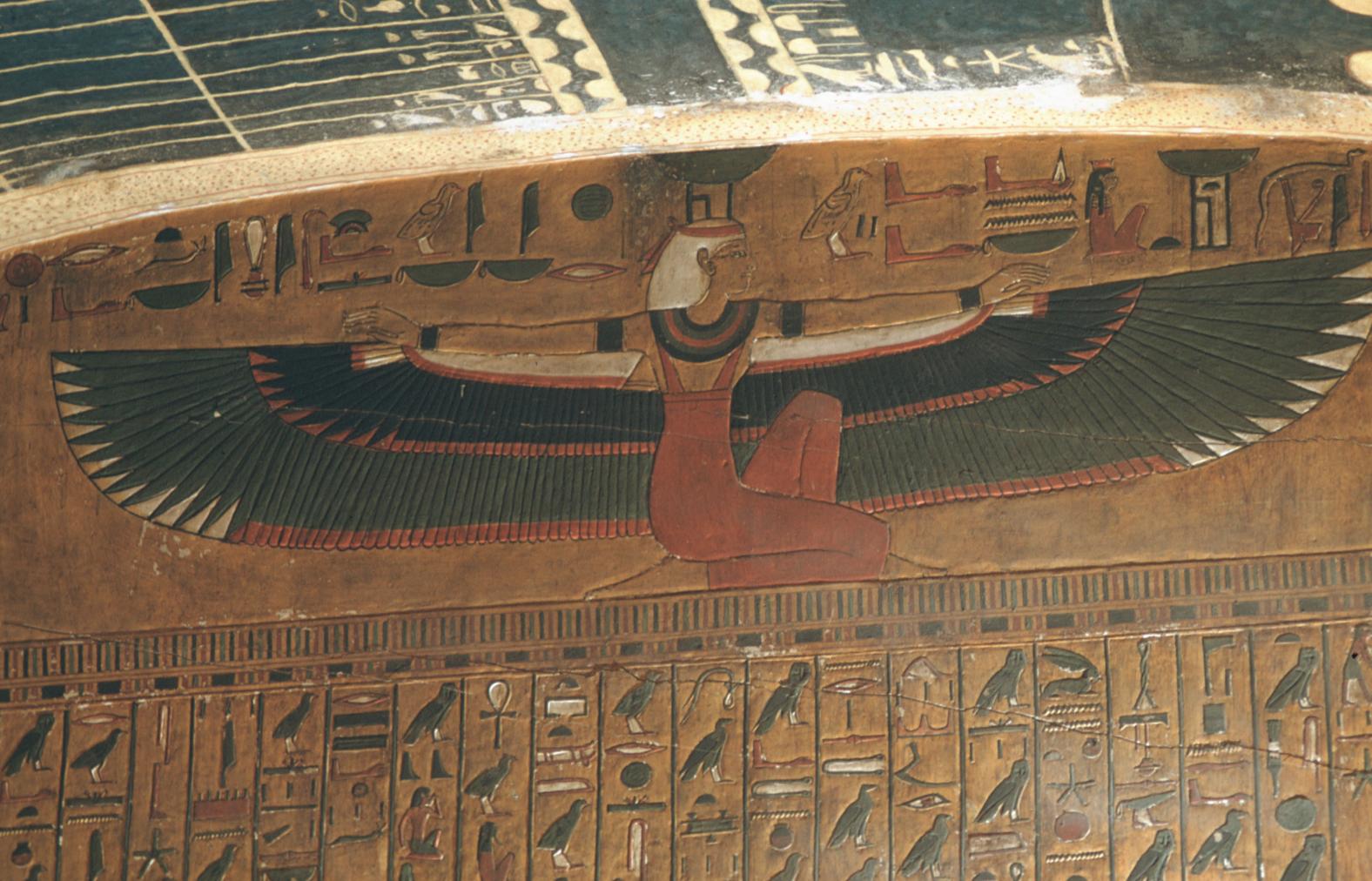
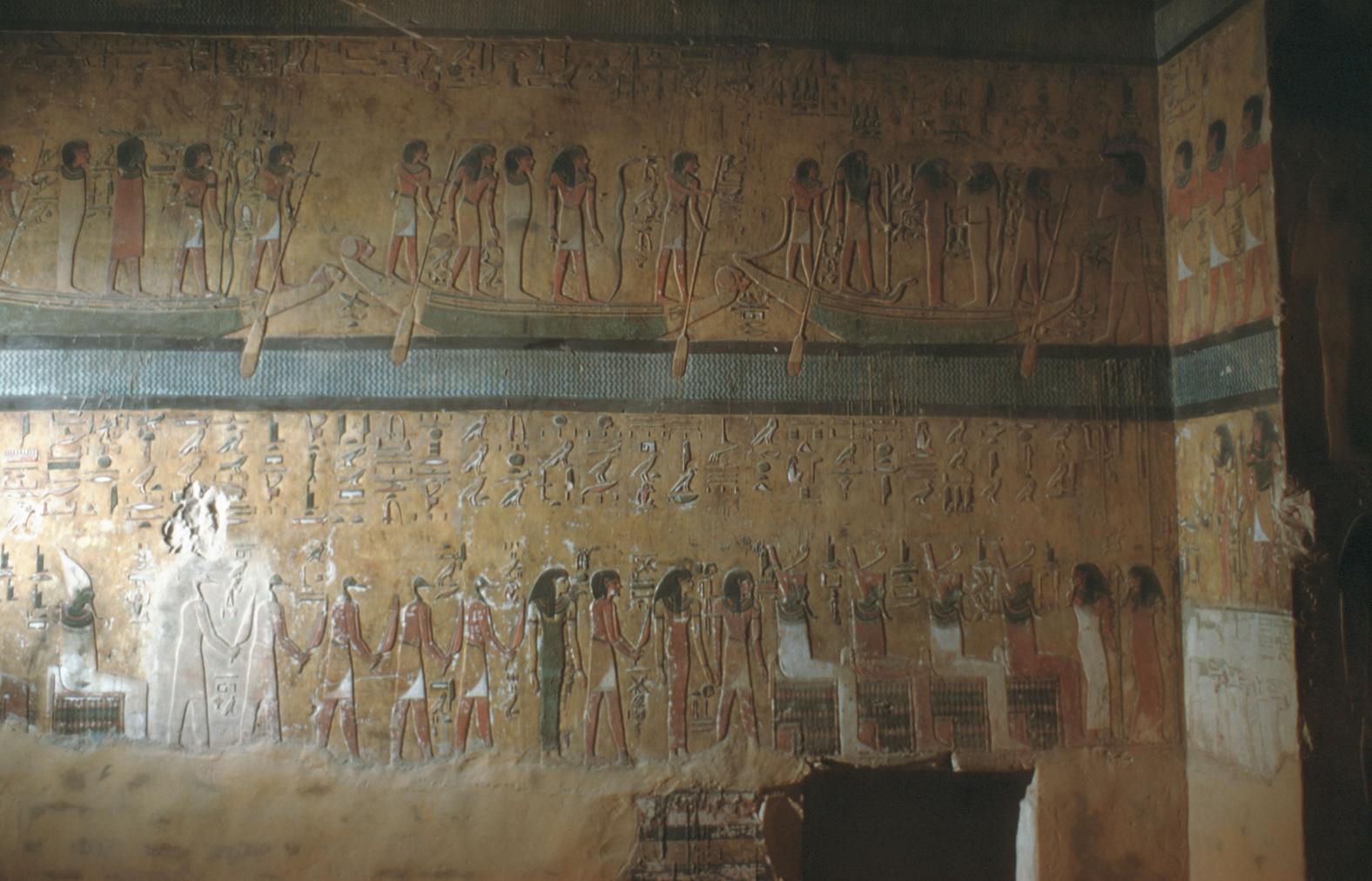
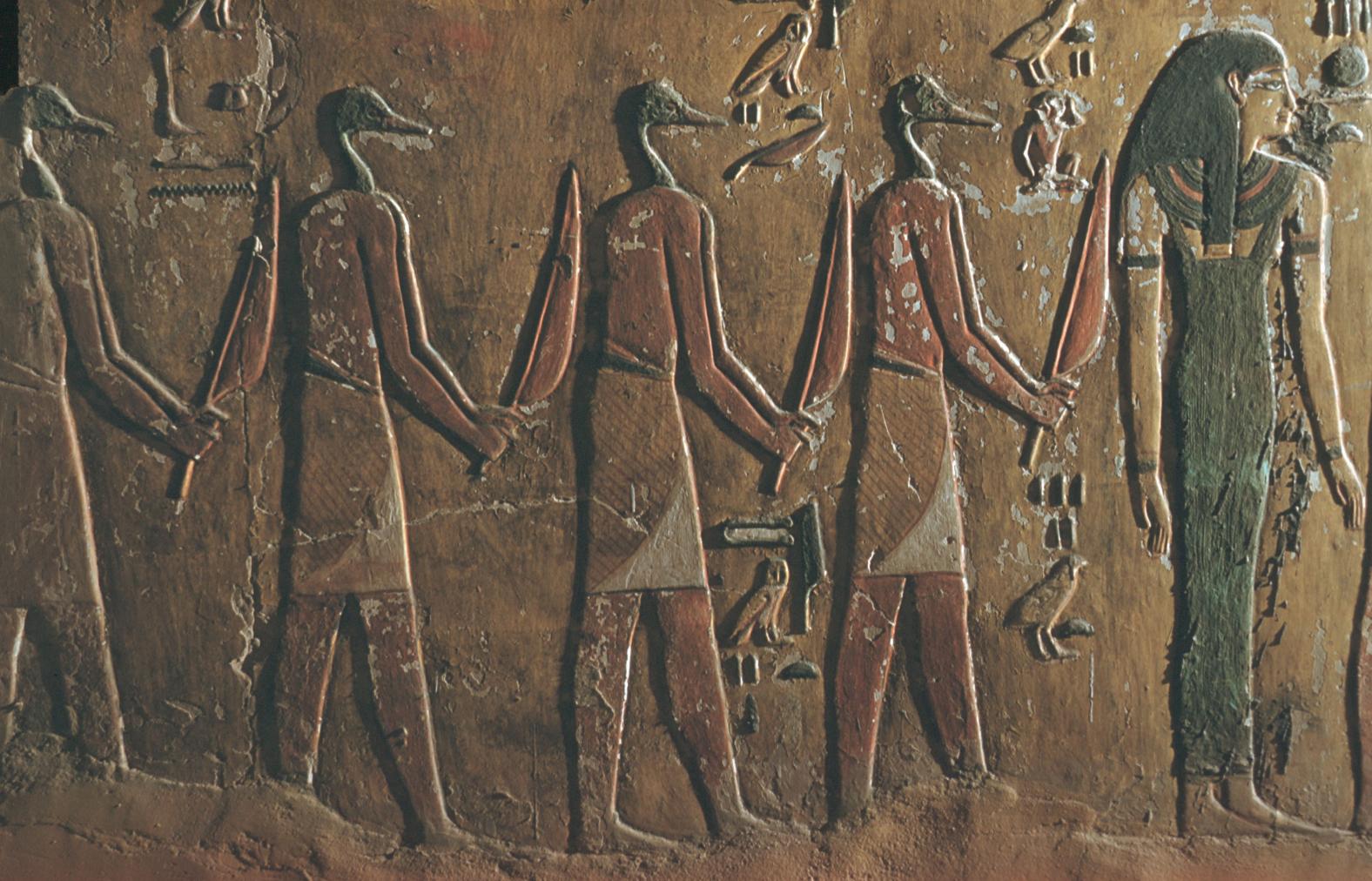
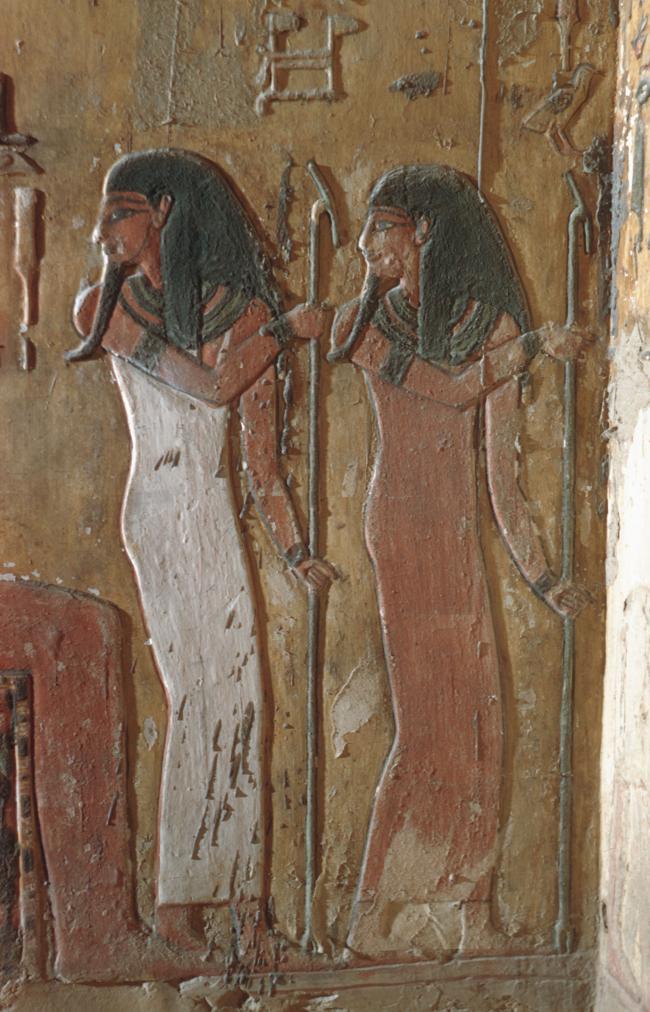
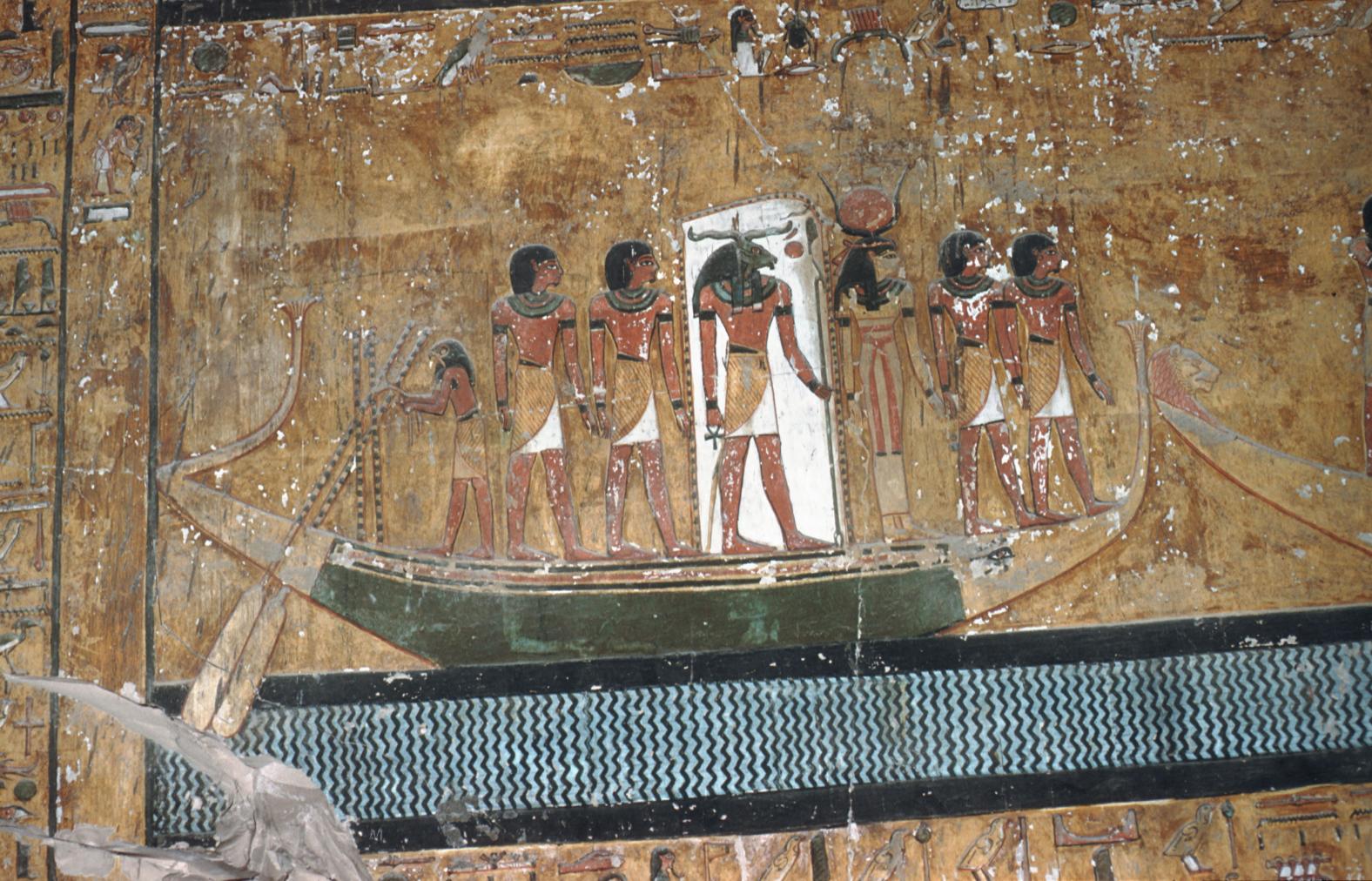
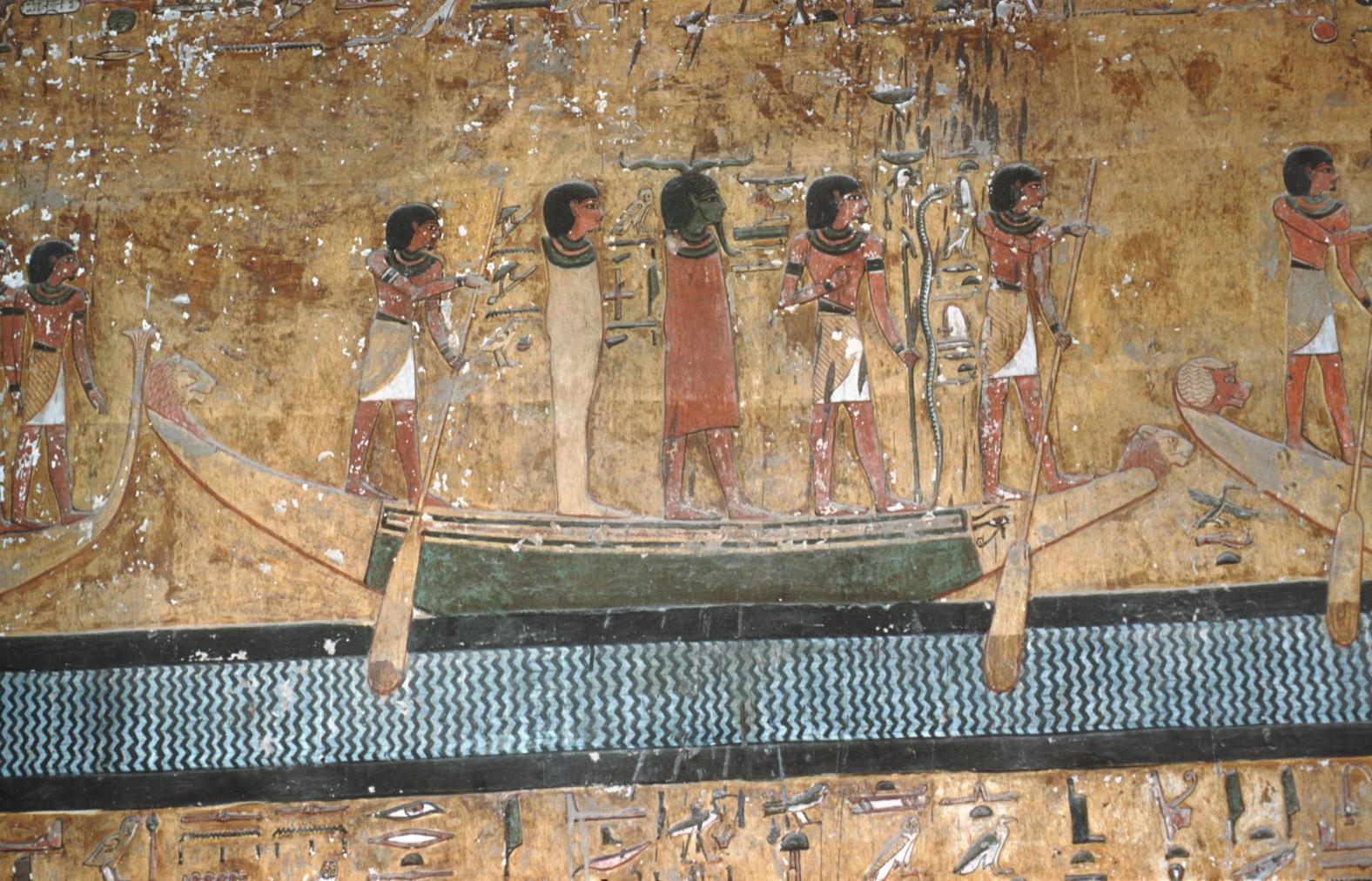
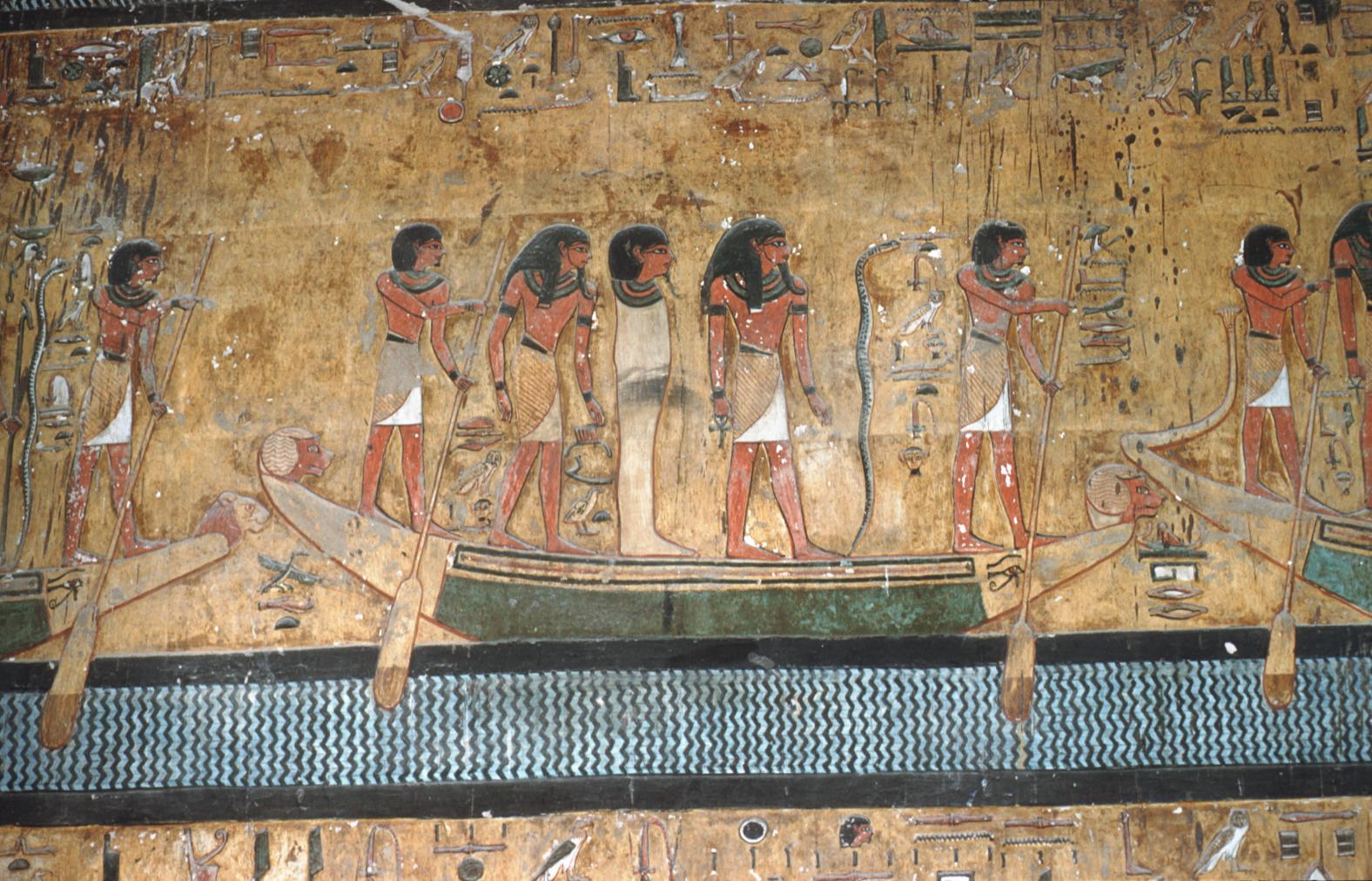
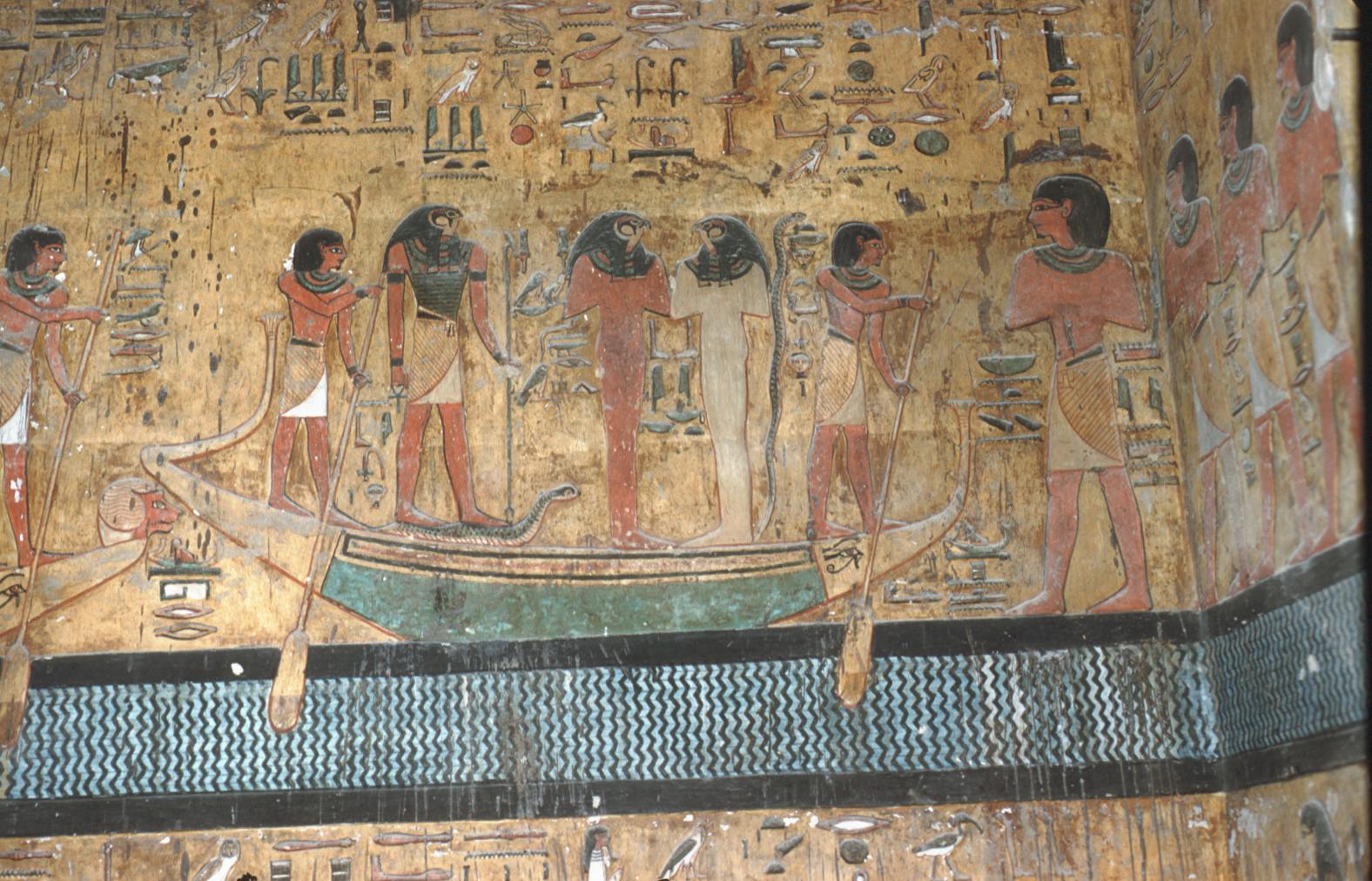
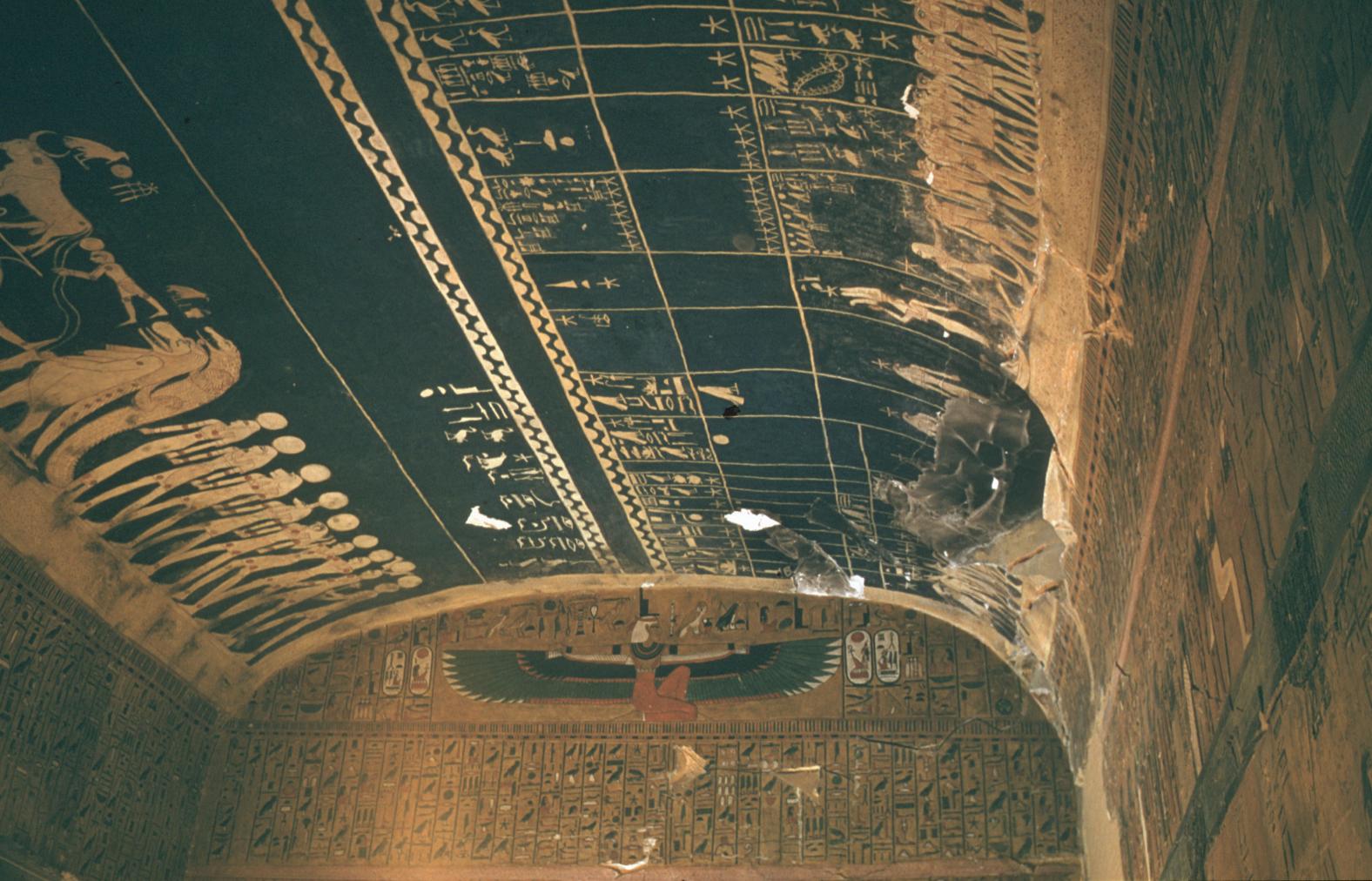
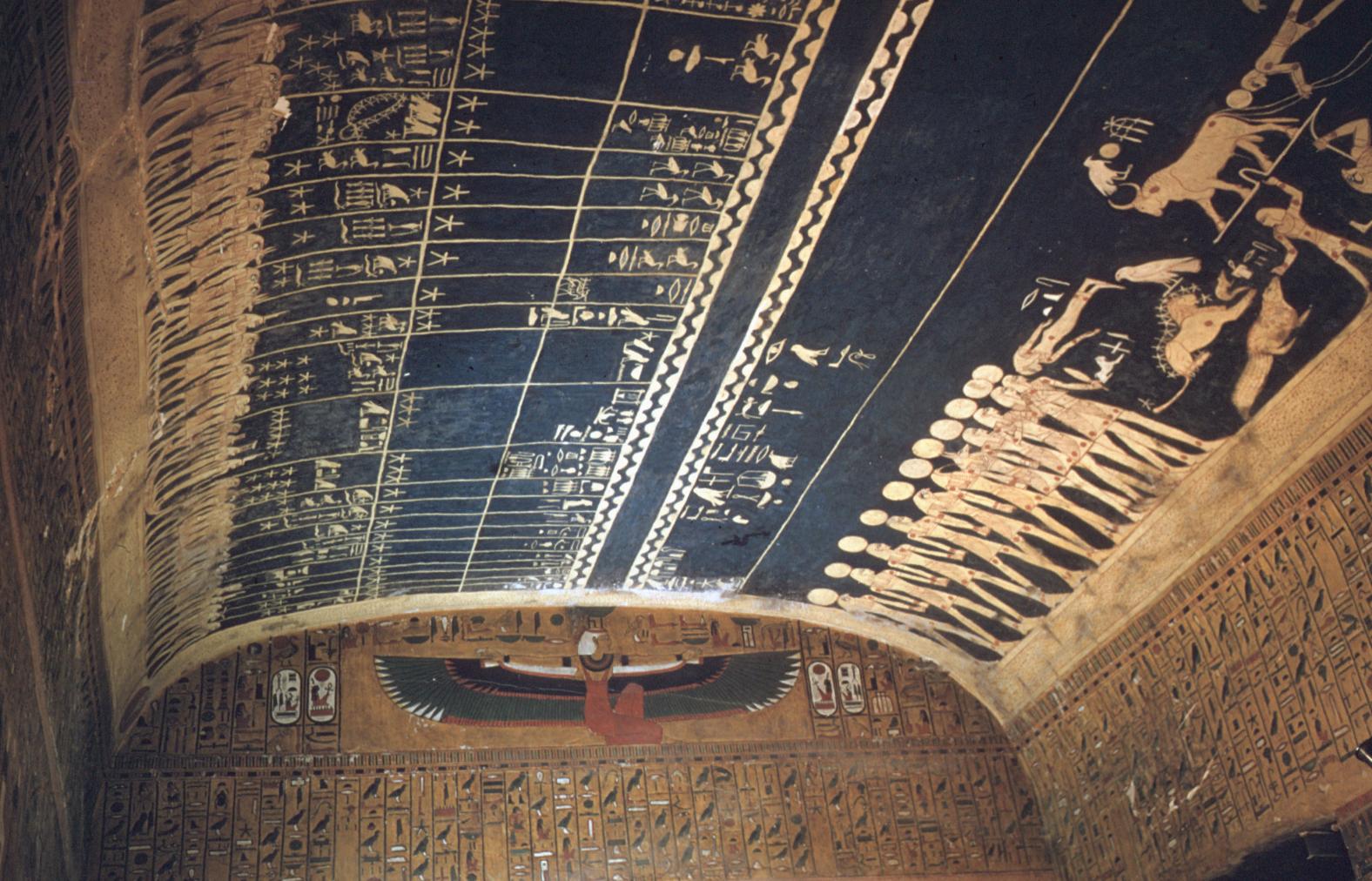
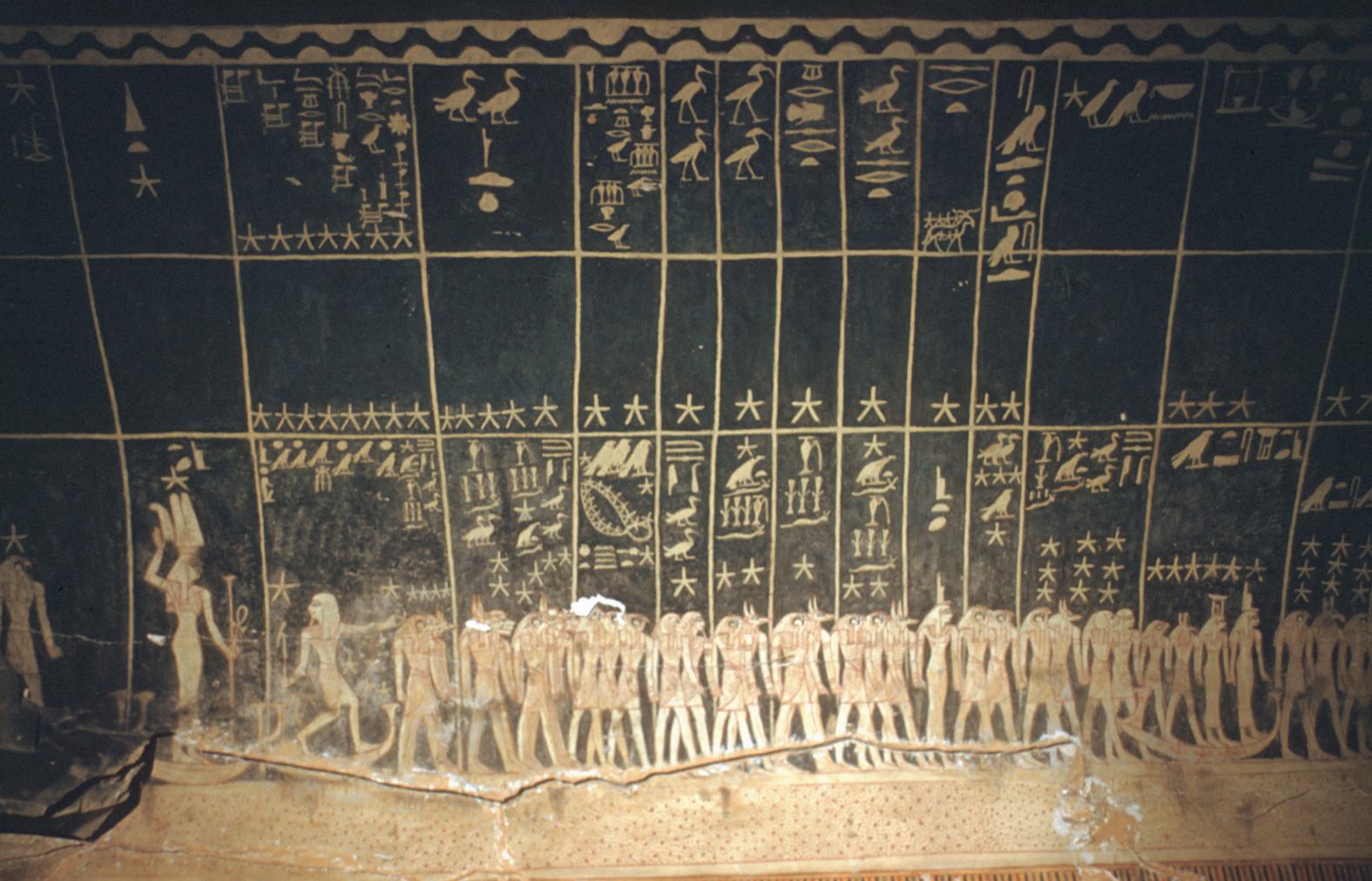
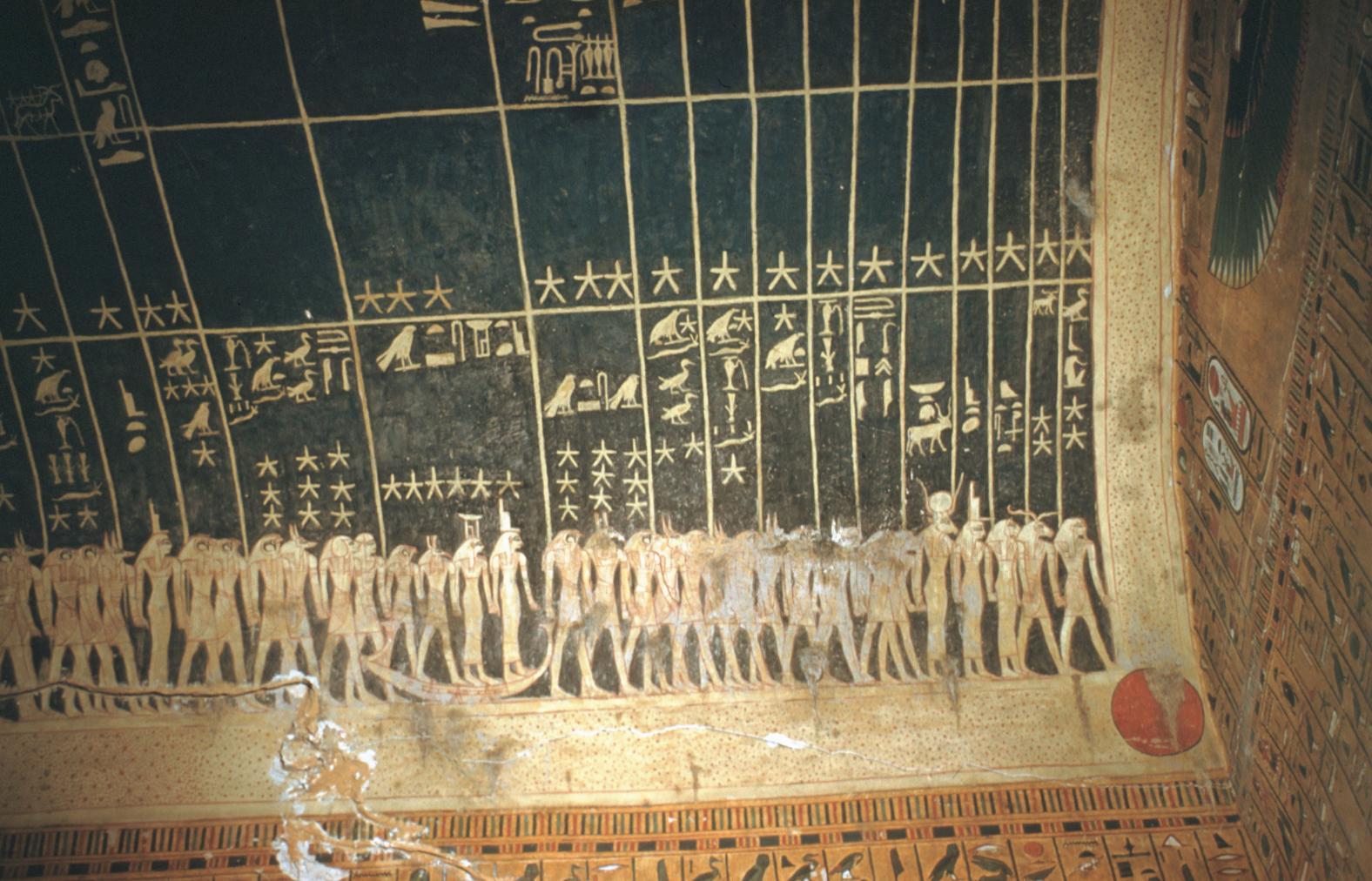
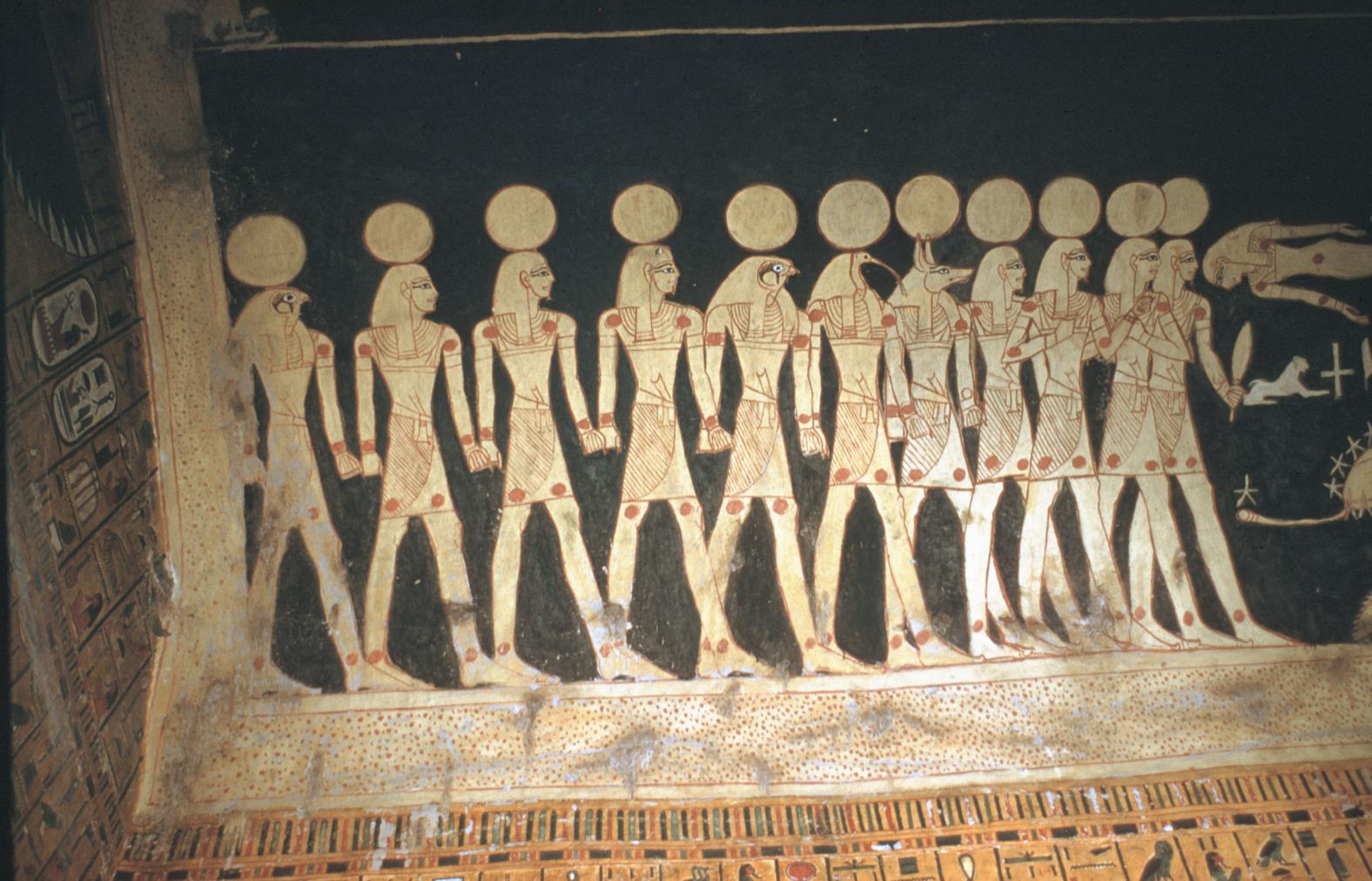
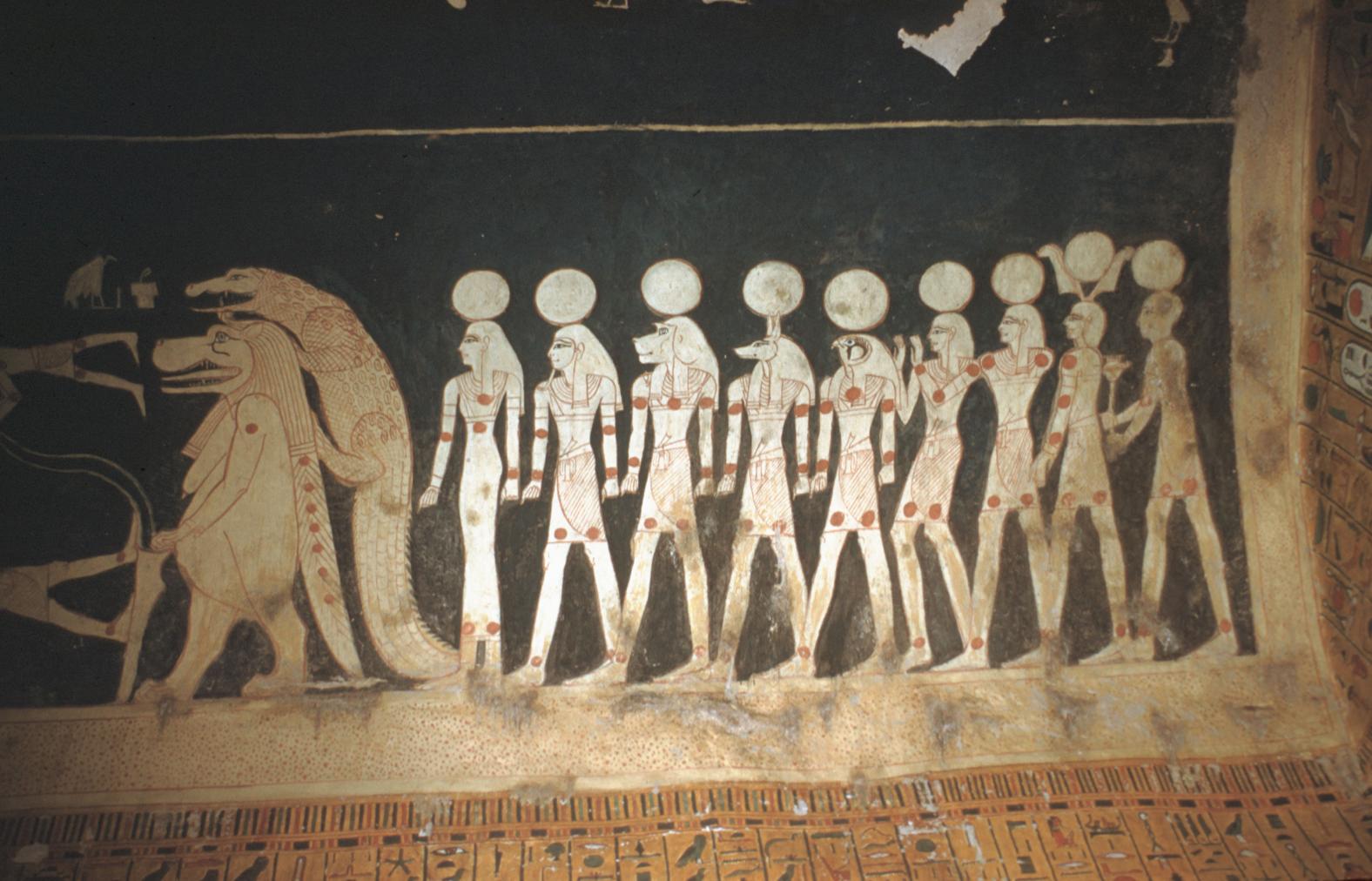
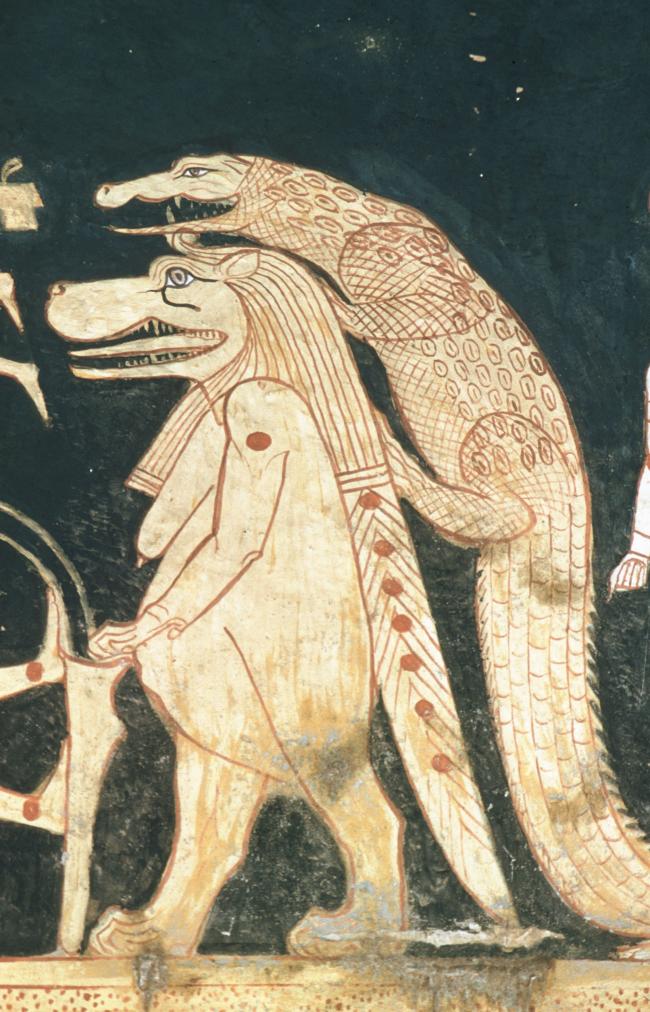
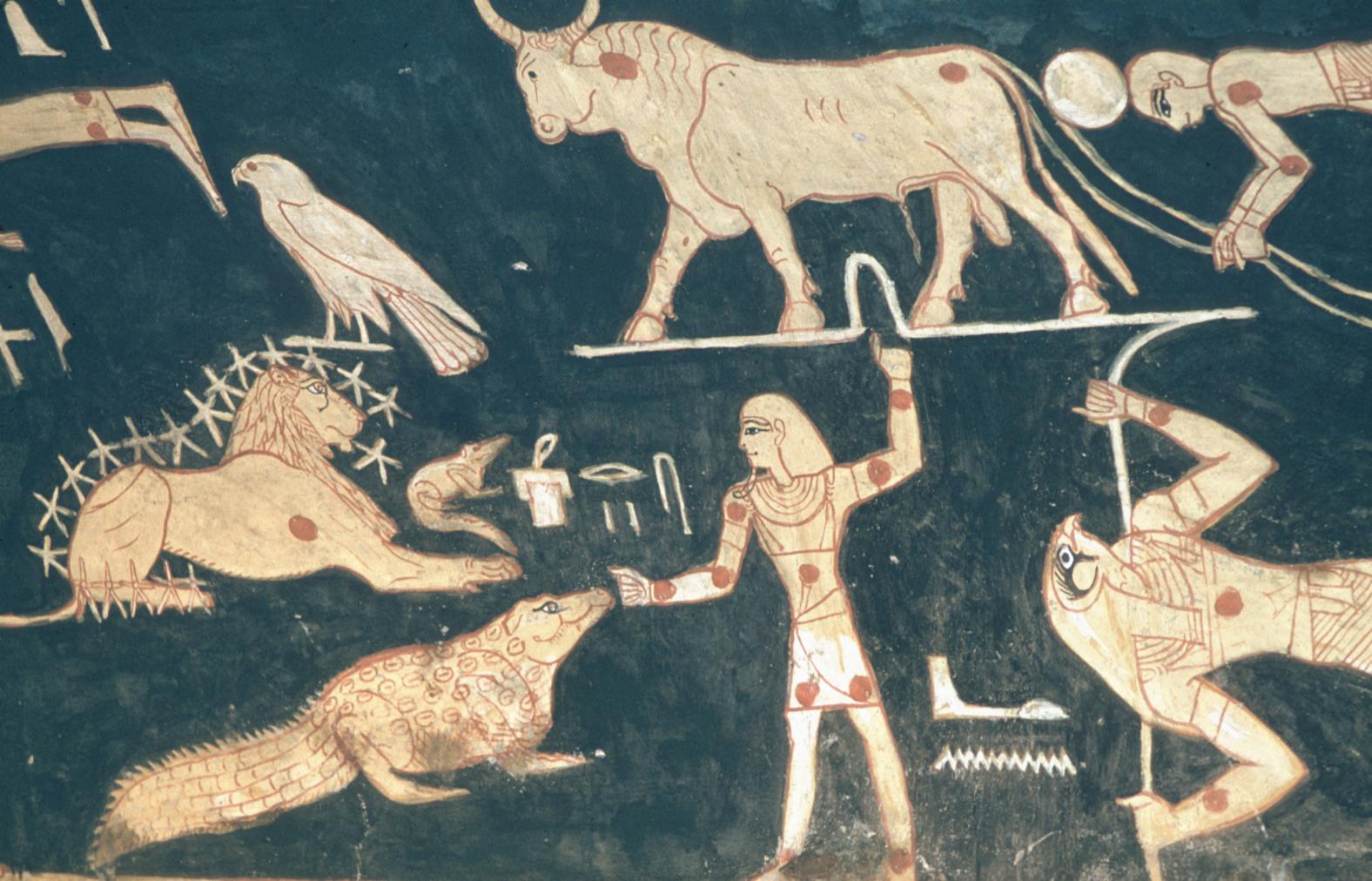
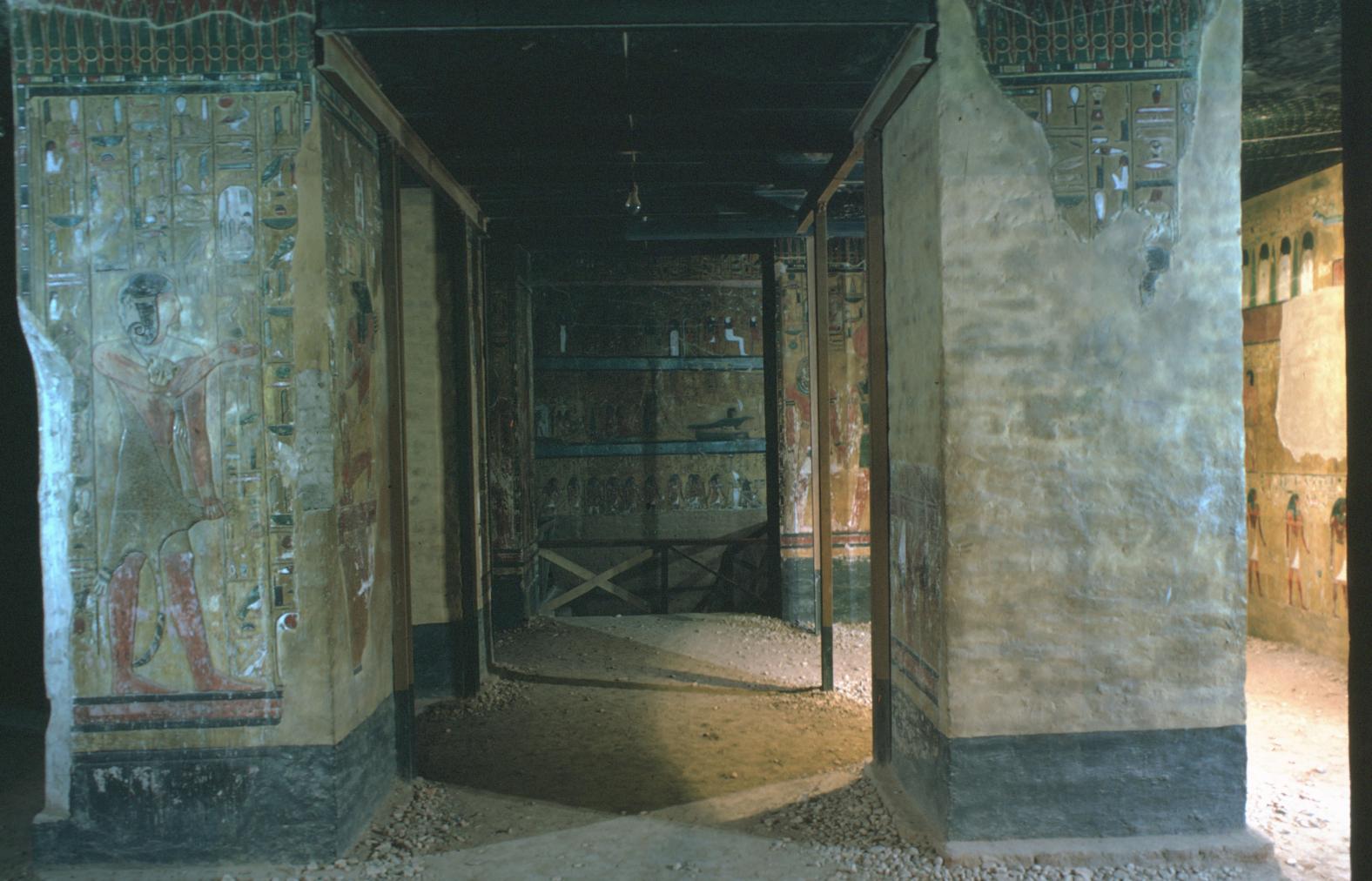
Gate Ja
See entire tombOn the thicknesses of the gate the king and his ka offer ointment.
Porter and Moss designation:
Side chamber Ja
See entire tombThe walls of this subsidiary chamber off the left (southeast) wall of the upper chamber of the burial chamber are decorated with the third division (P)/fourth hour (H) of the Book of Gates.
Porter and Moss designation:
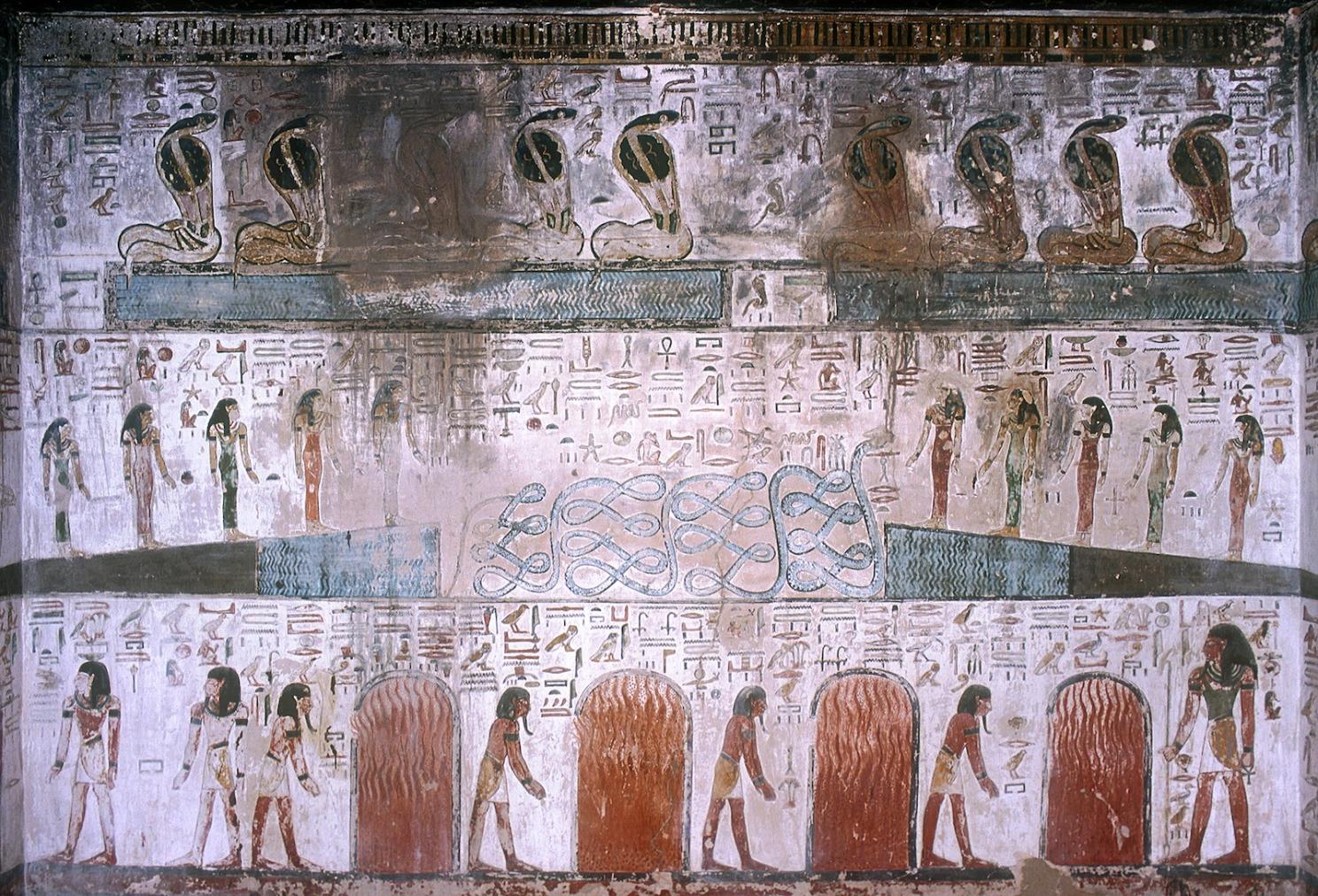
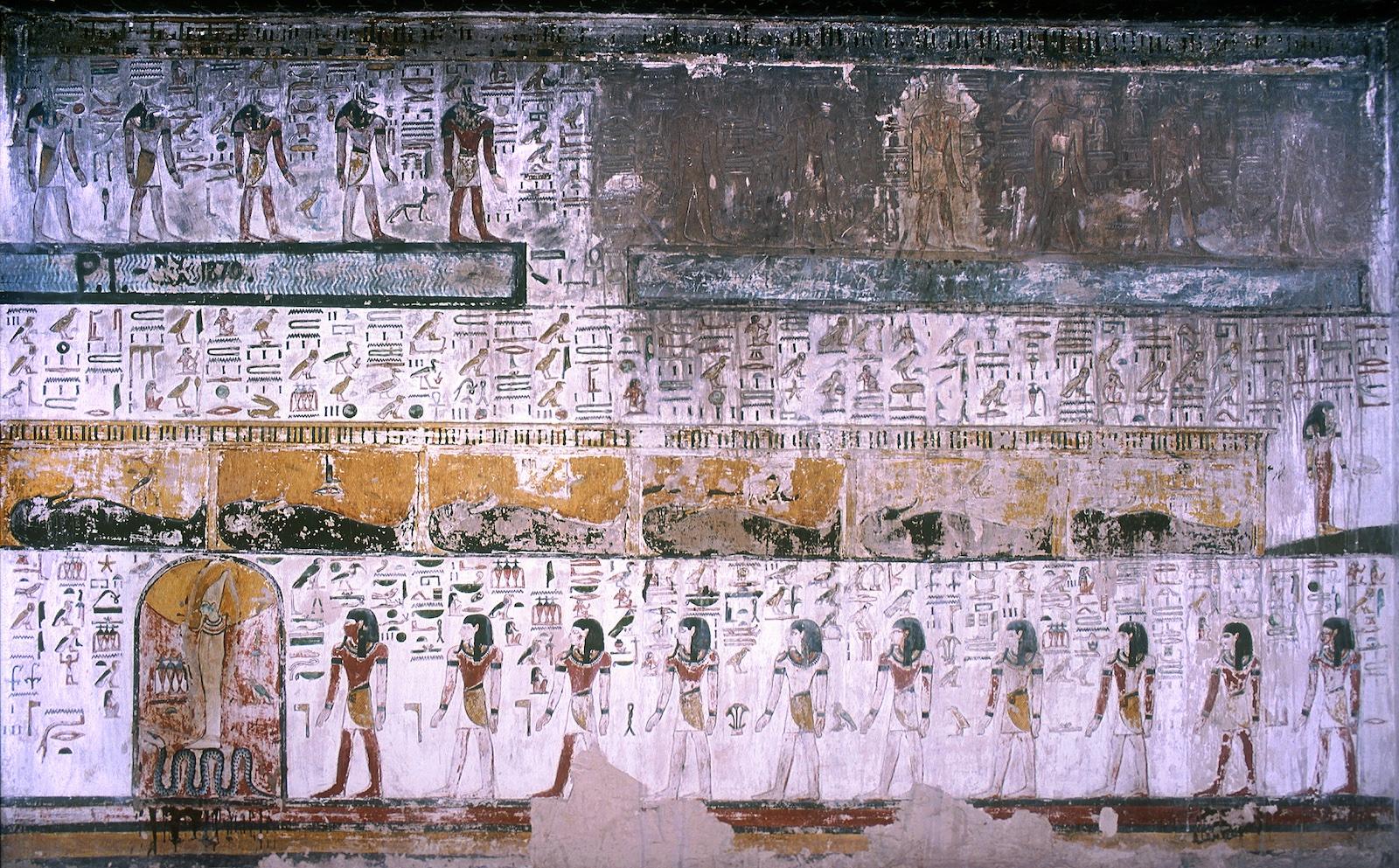
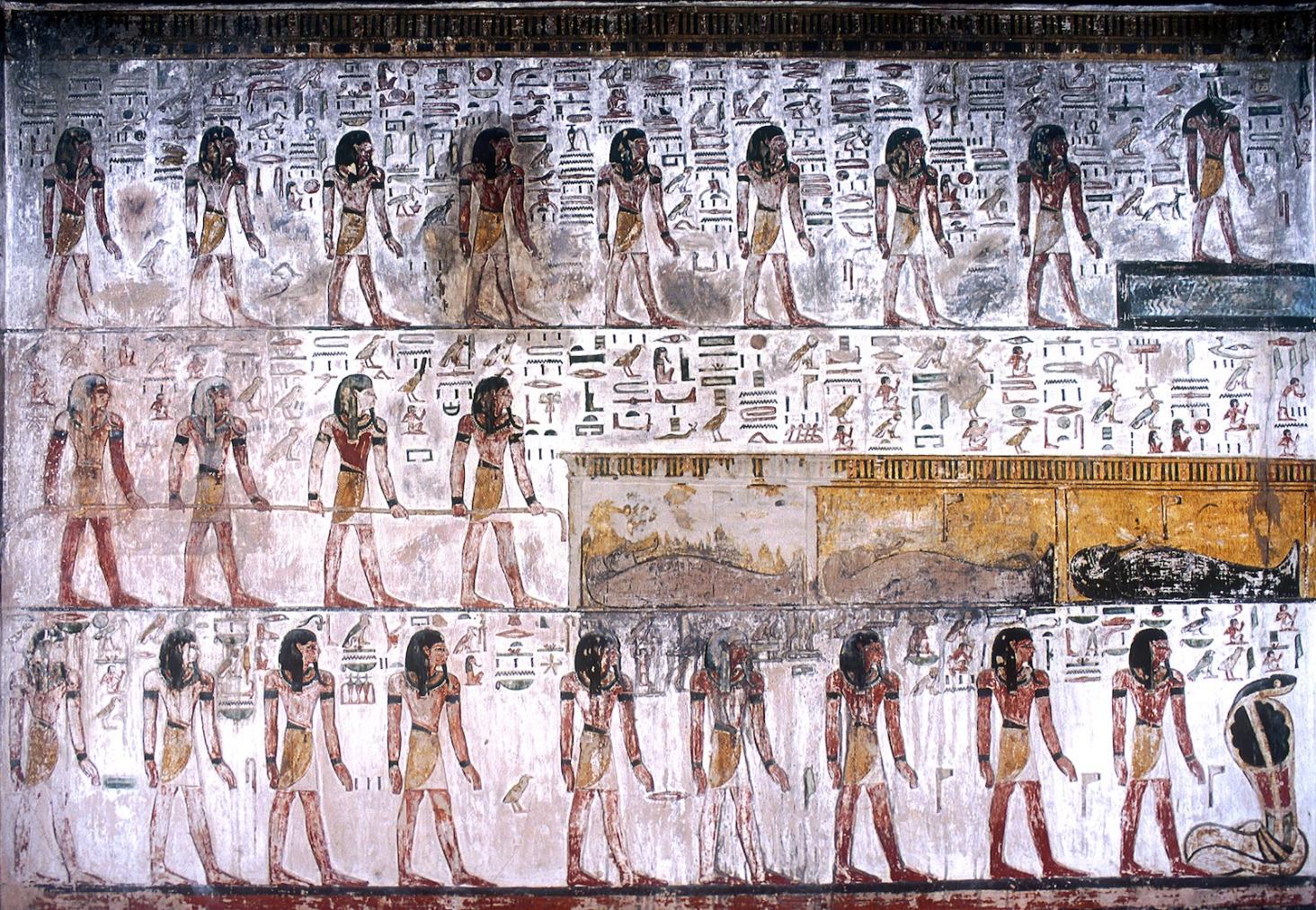
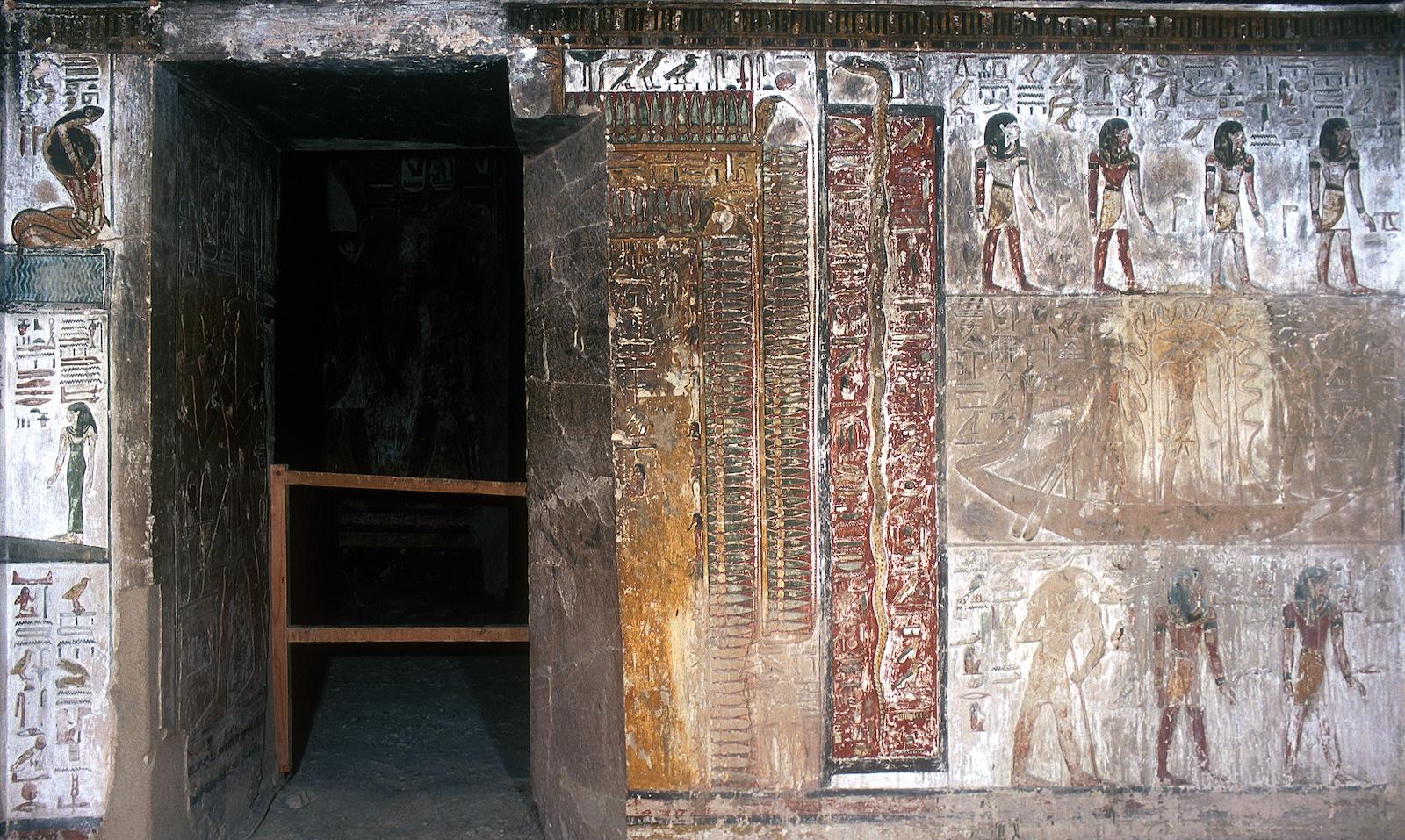
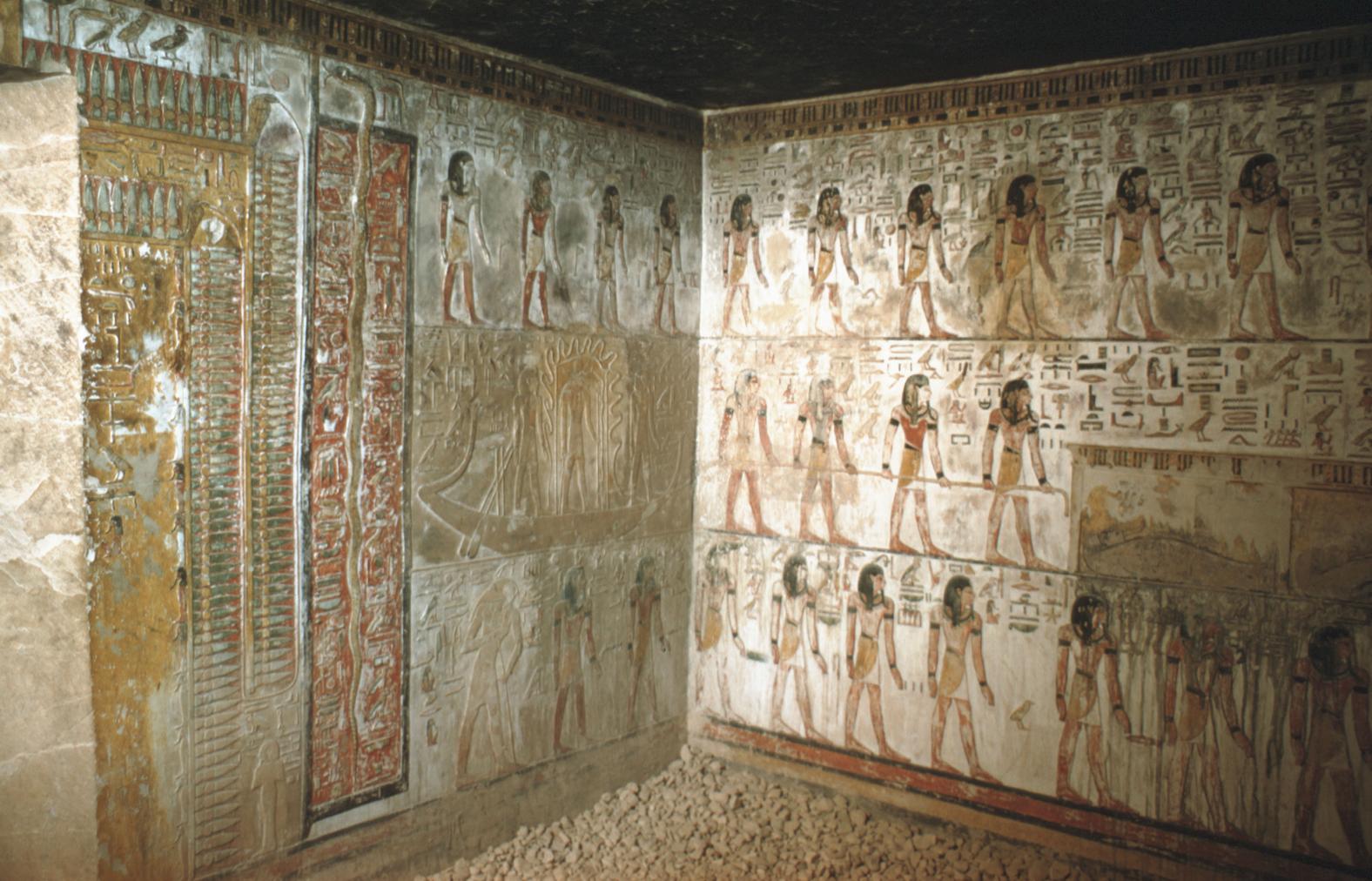
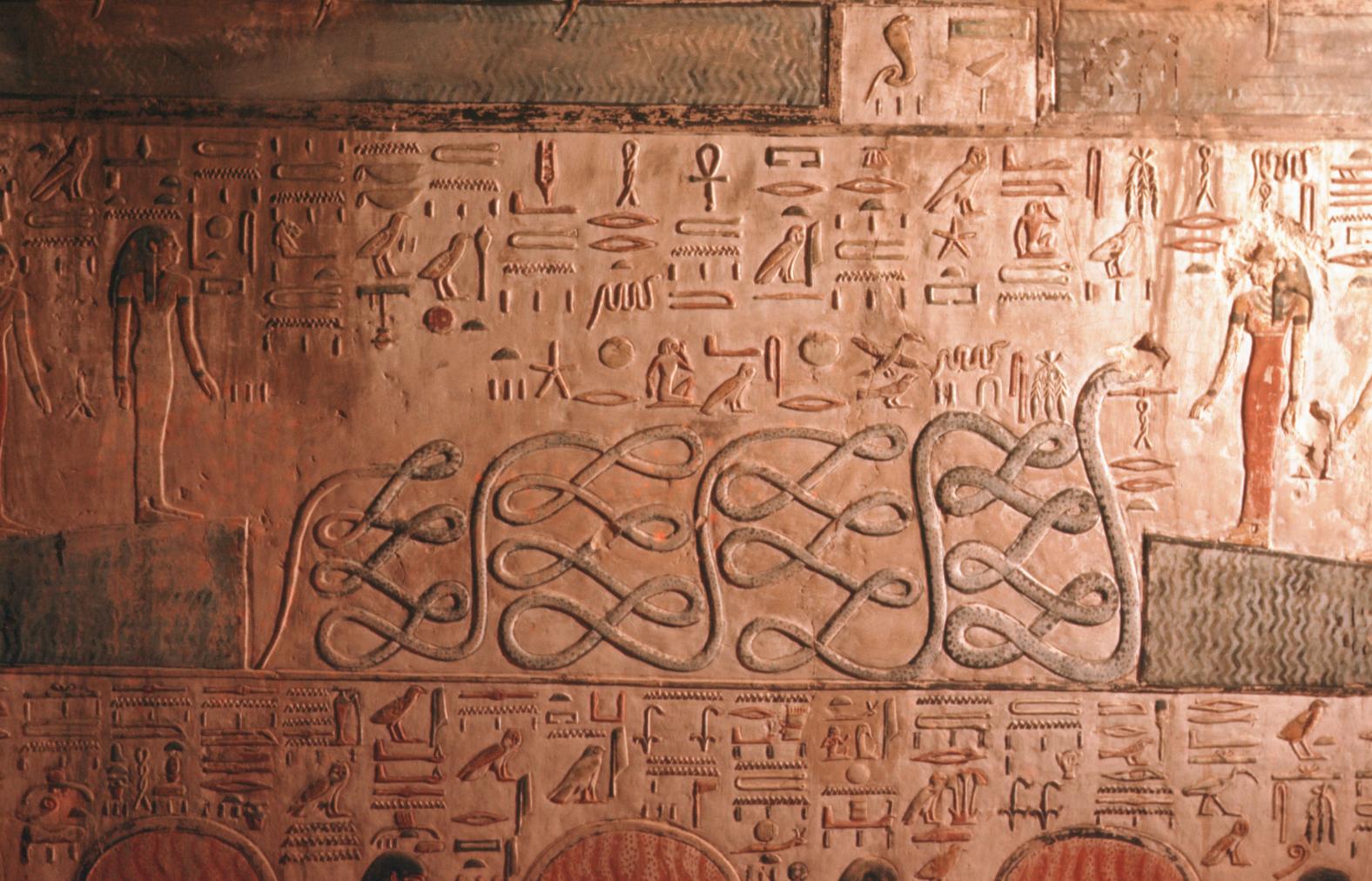
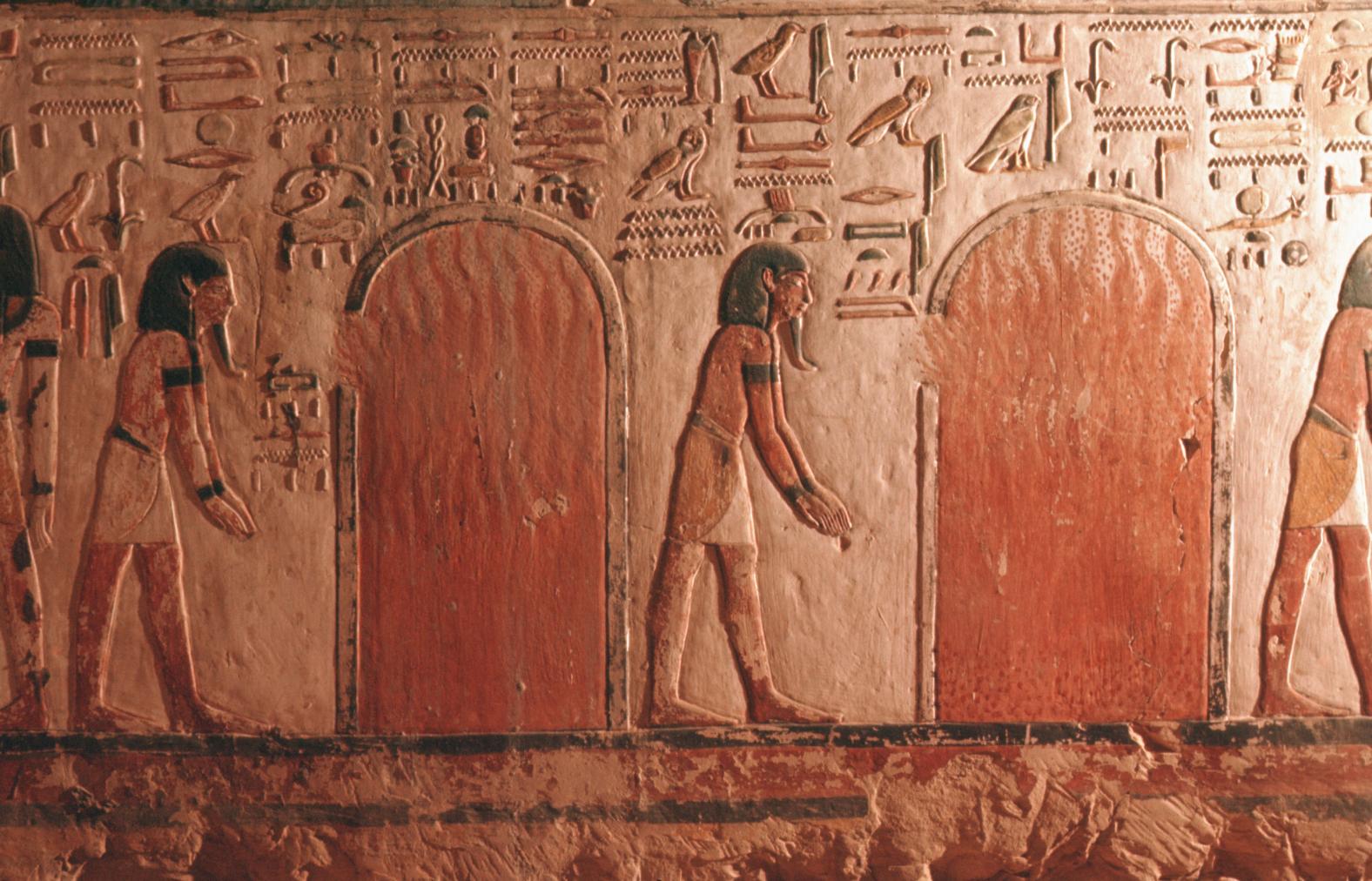
Gate Jb
See entire tombThe inner thicknesses bear representations of Nekhbet and Wadjet as cobras over the plants of Upper and Lower Egypt. The outer thicknesses, which have been partly cut away, had representations of the goddess Hathor.
Porter and Moss designation:
Side chamber Jb
See entire tombChamber Jb has two pillars and wide benches midway up the left (northeast), right (southwest) and rear (southeast) walls. There are four shallow recesses in each of the vertical faces below decorated with depictions of funerary objects, such as animal-headed beds, chests, and shrines. The walls above the benches are decorated with the sixth, seventh and eighth hours of the Imydwat. Depictions of Osiris are found on the pillars, although the front (northwest) faces have been damaged. The left (northwest) end of the left bench has also been broken. A recess has been cut in the left (southeast) end of the right wall above the bench. A panel above the gate gives the king's names protected by Wadjet and Nekhbet and a dado pattern of pairs of djed pillars and tyet knots is located on the front (northwest) wall.
Porter and Moss designation:
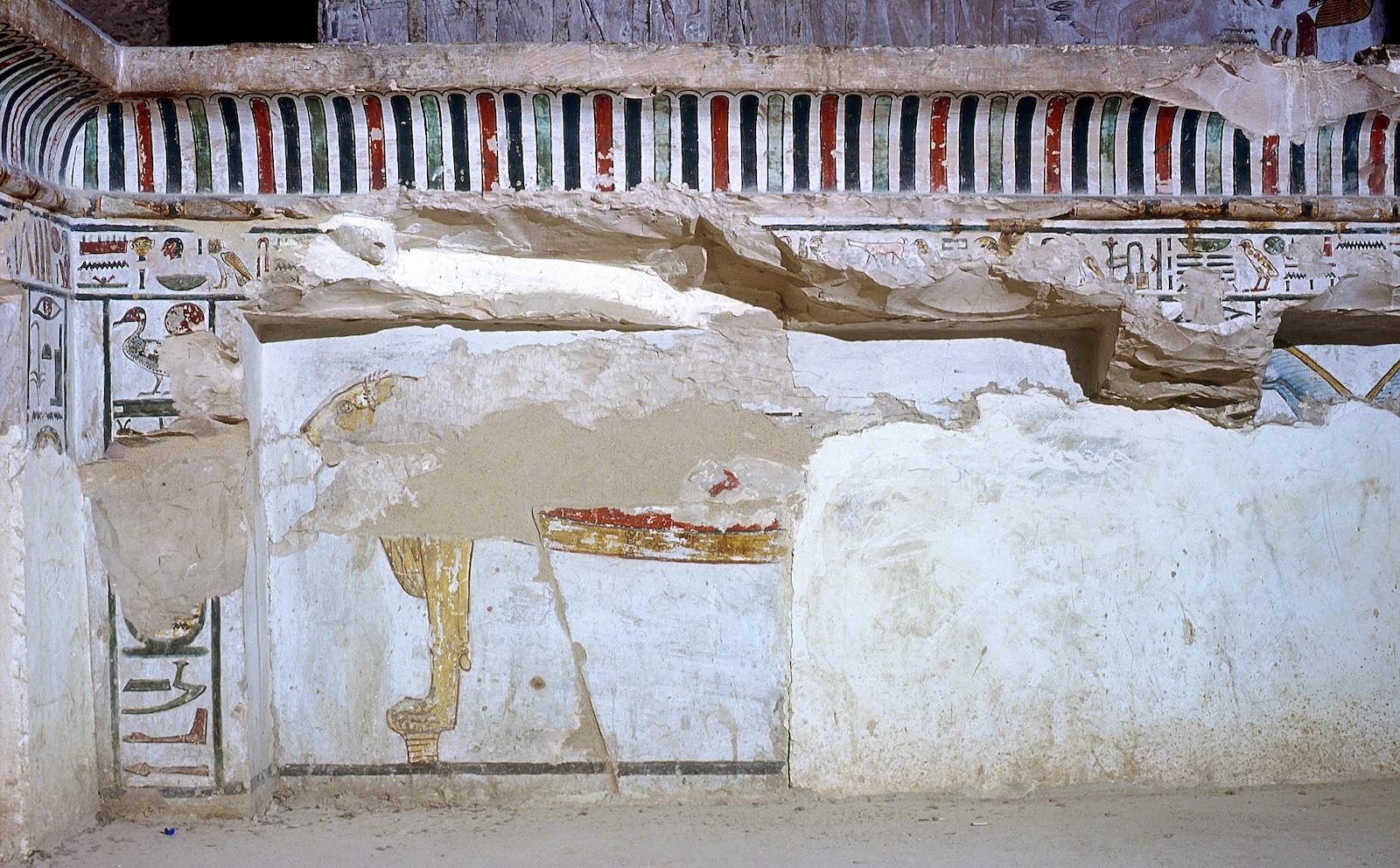
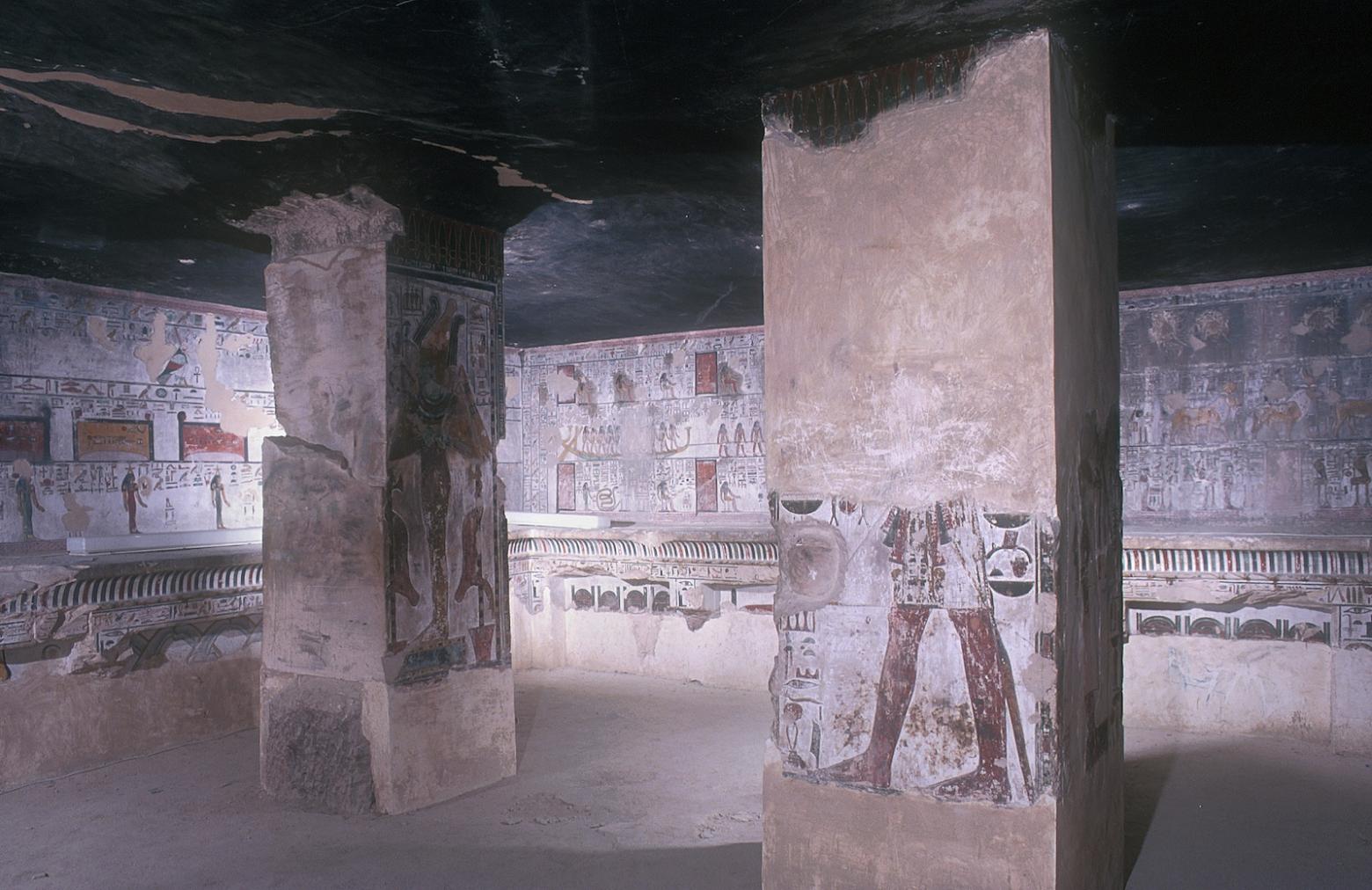
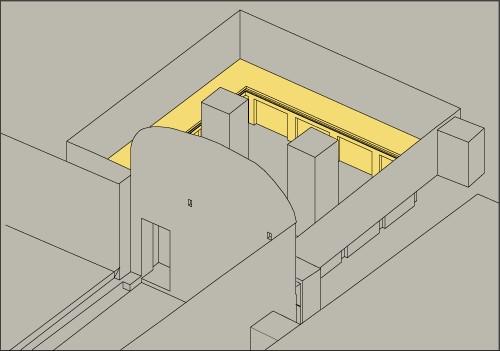
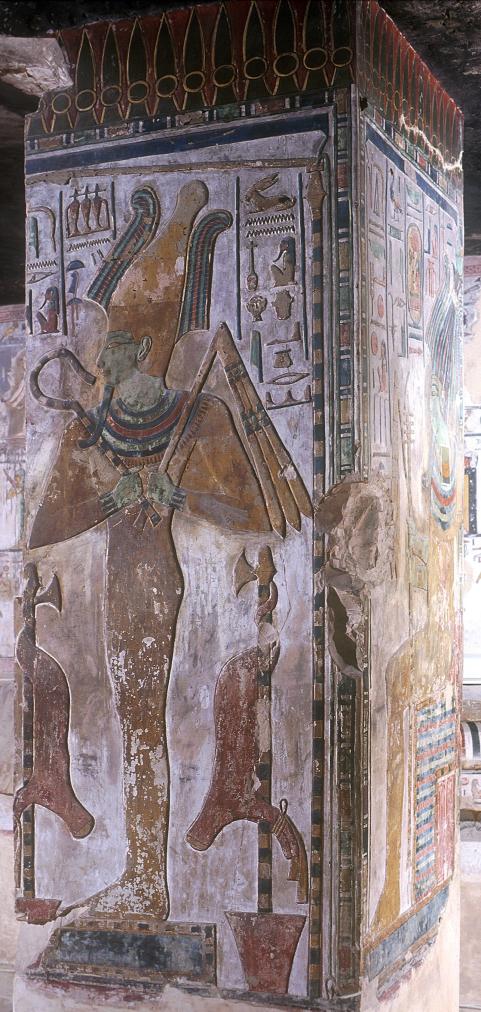
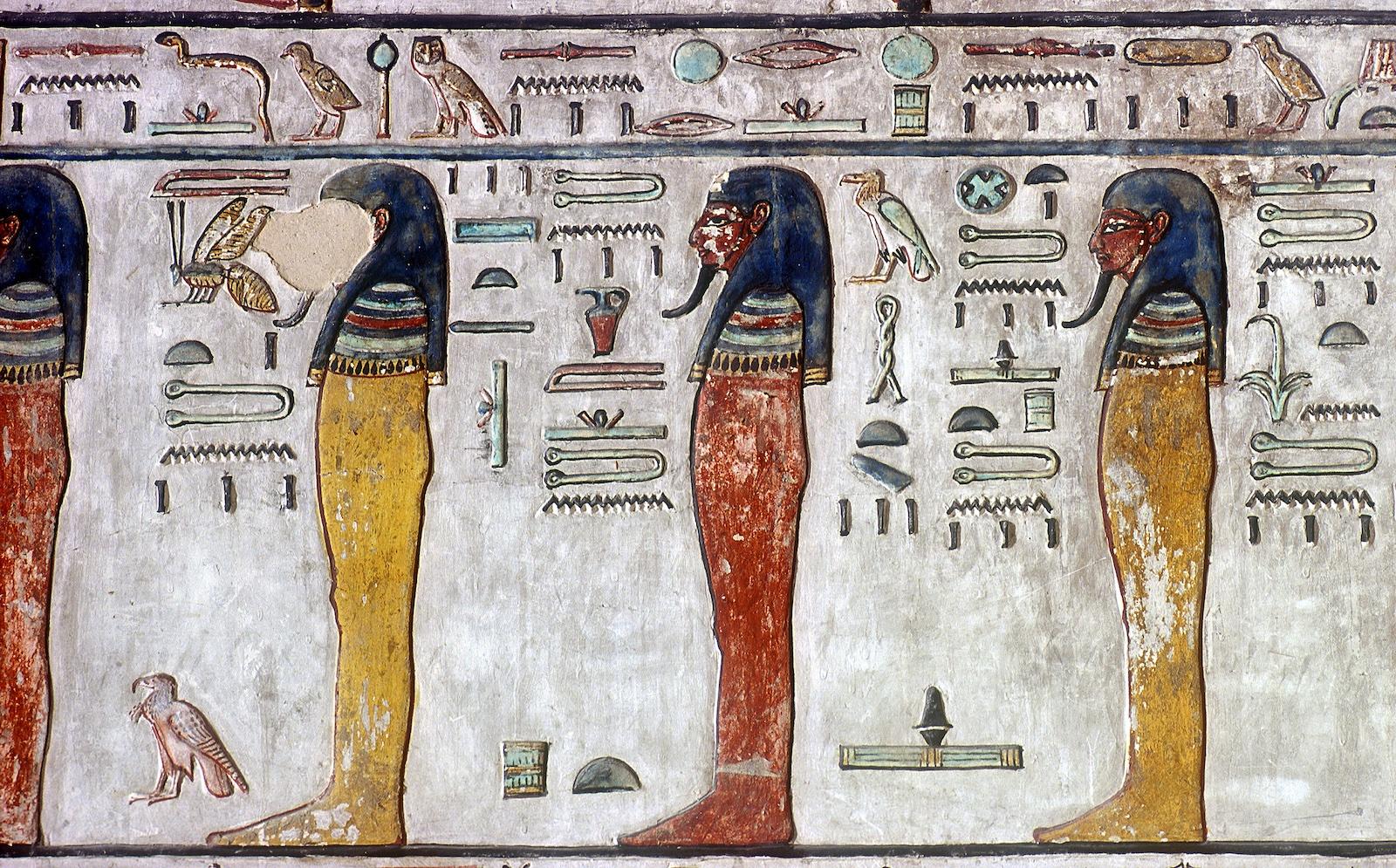
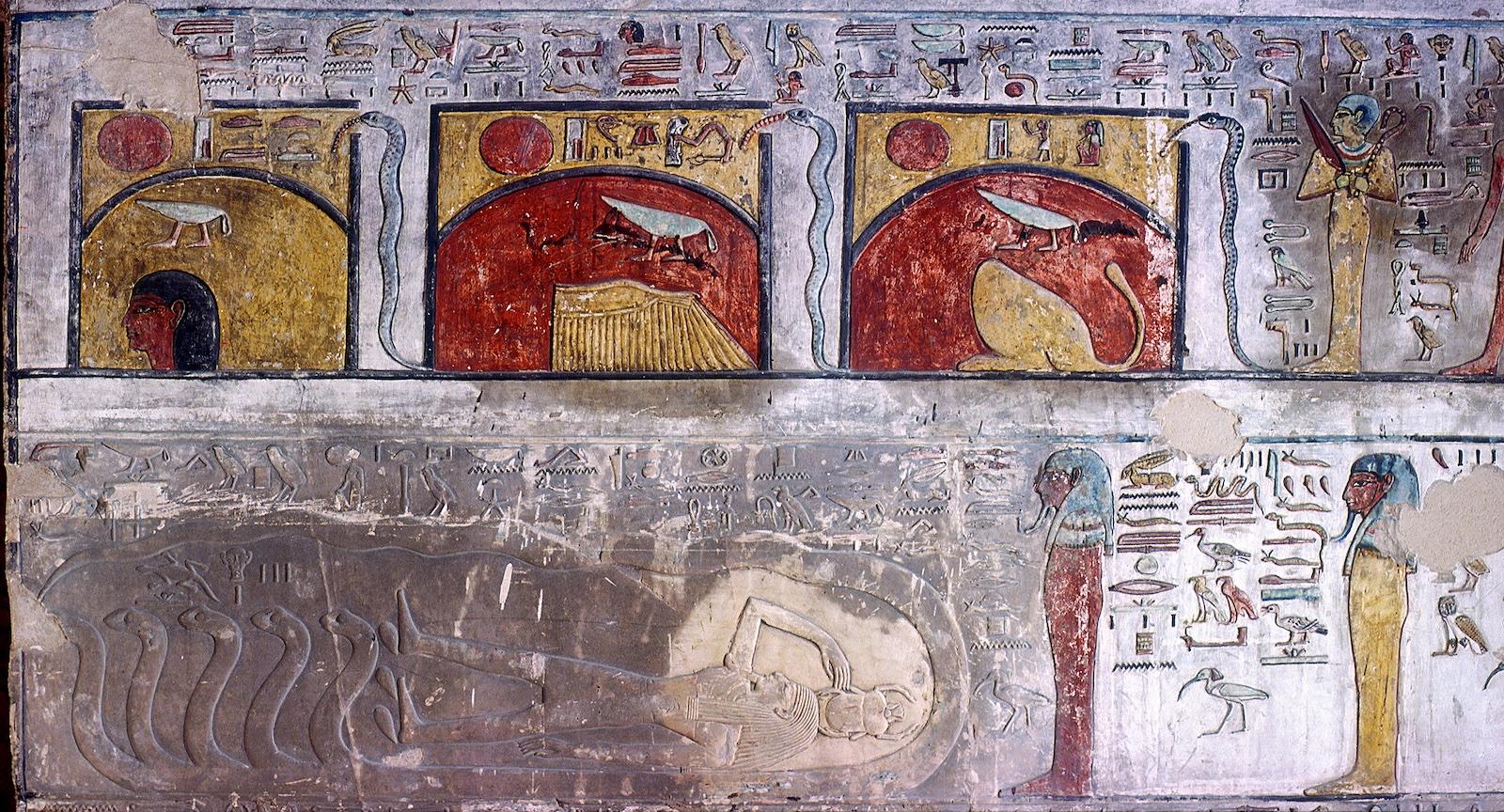
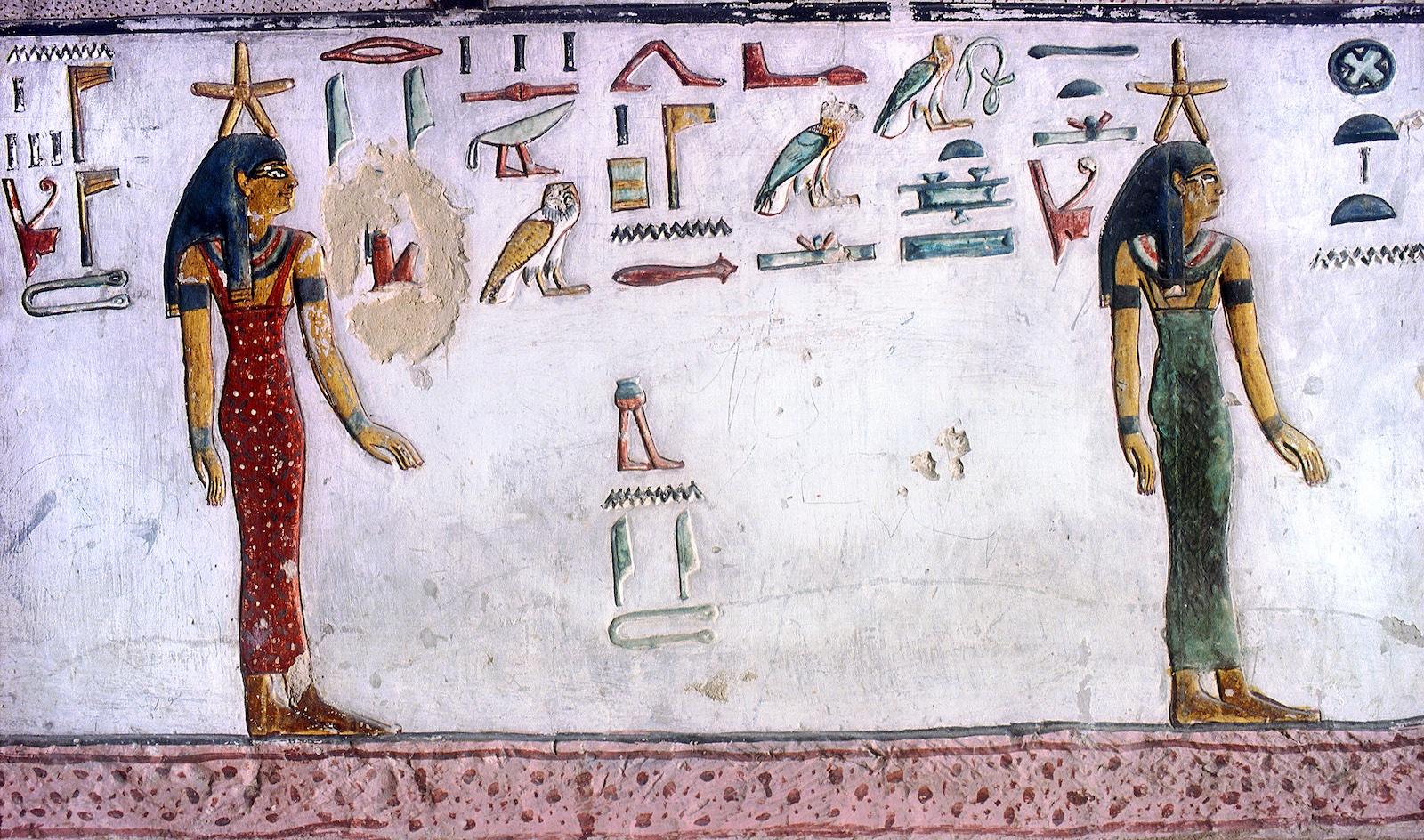
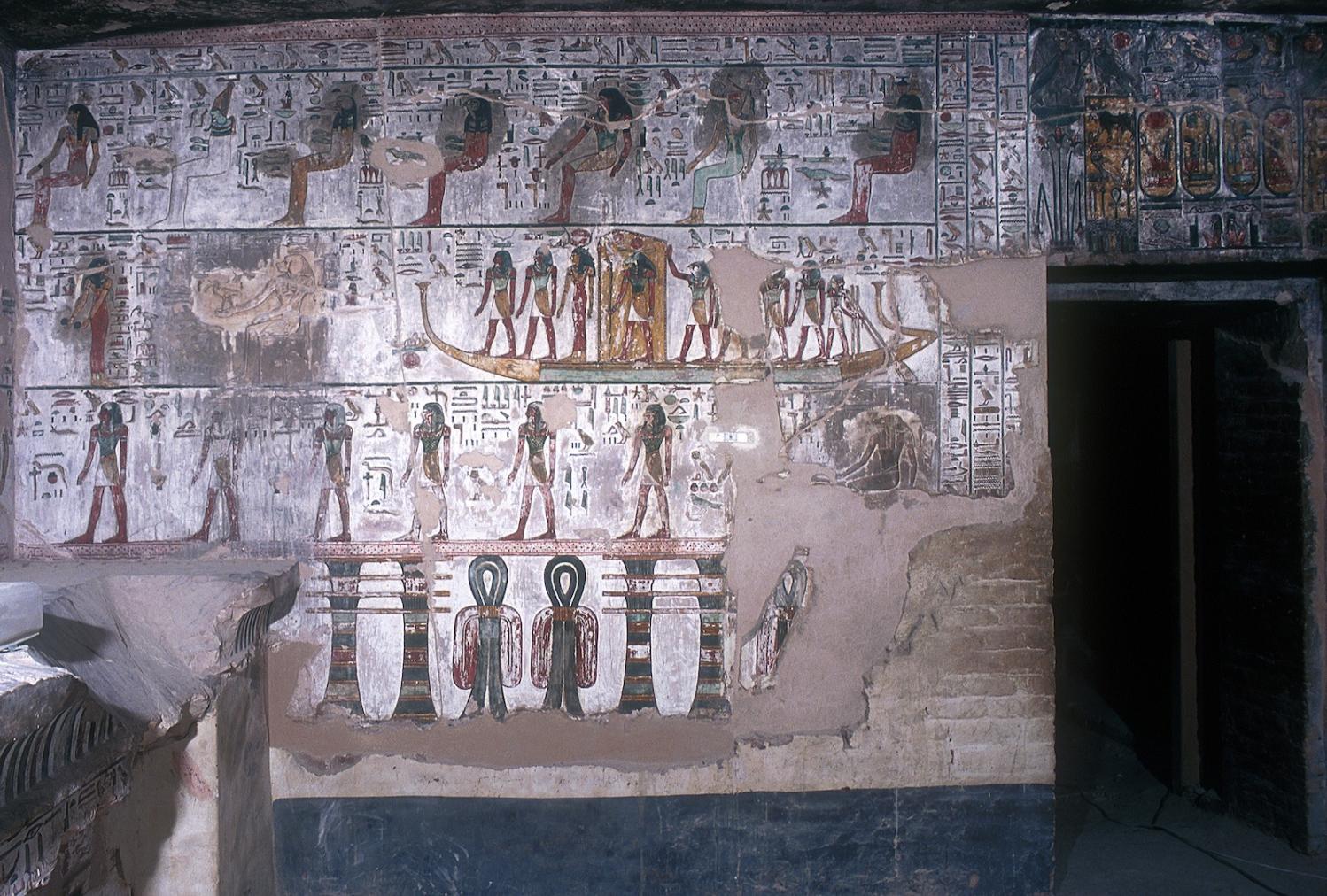
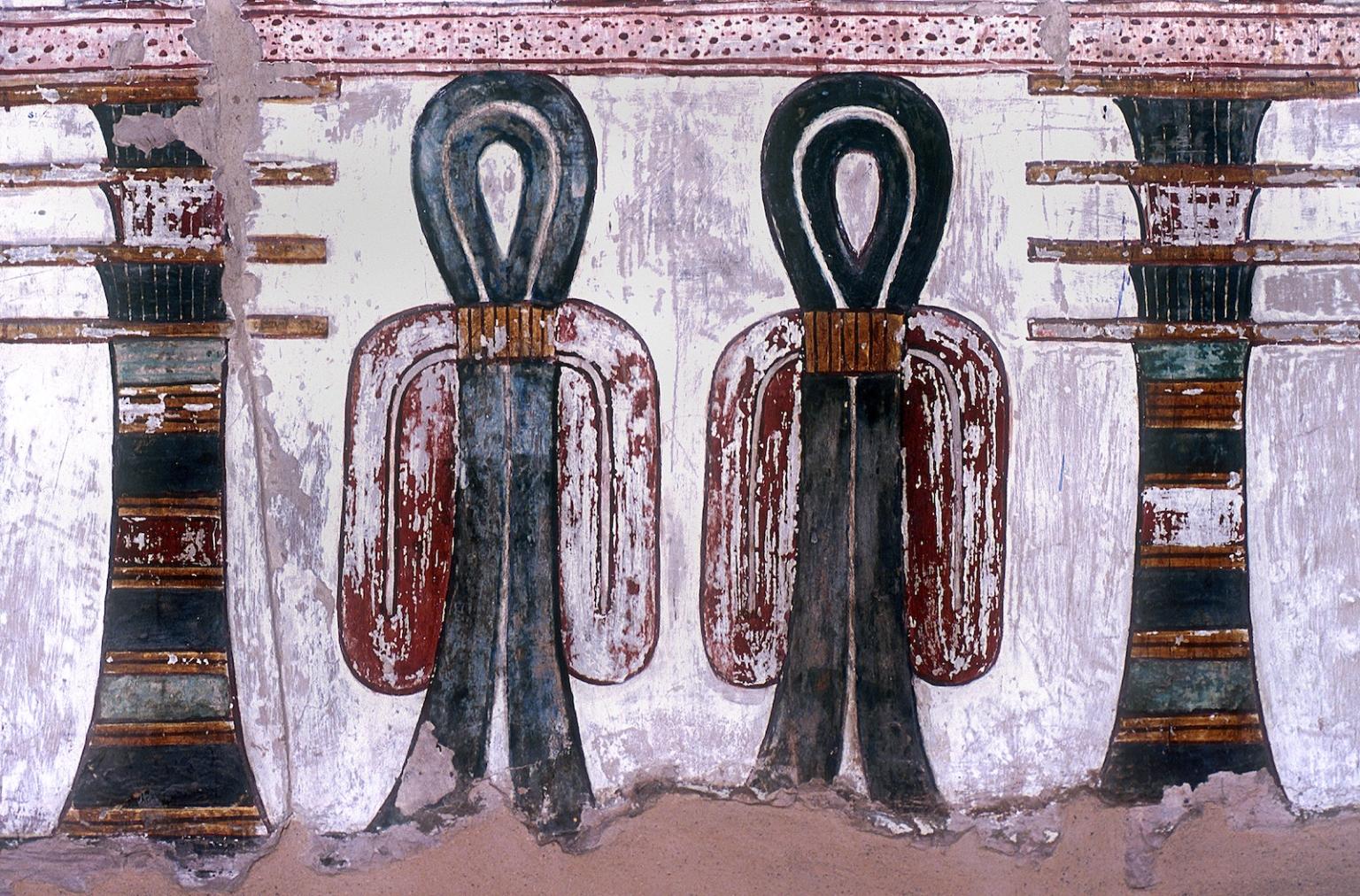
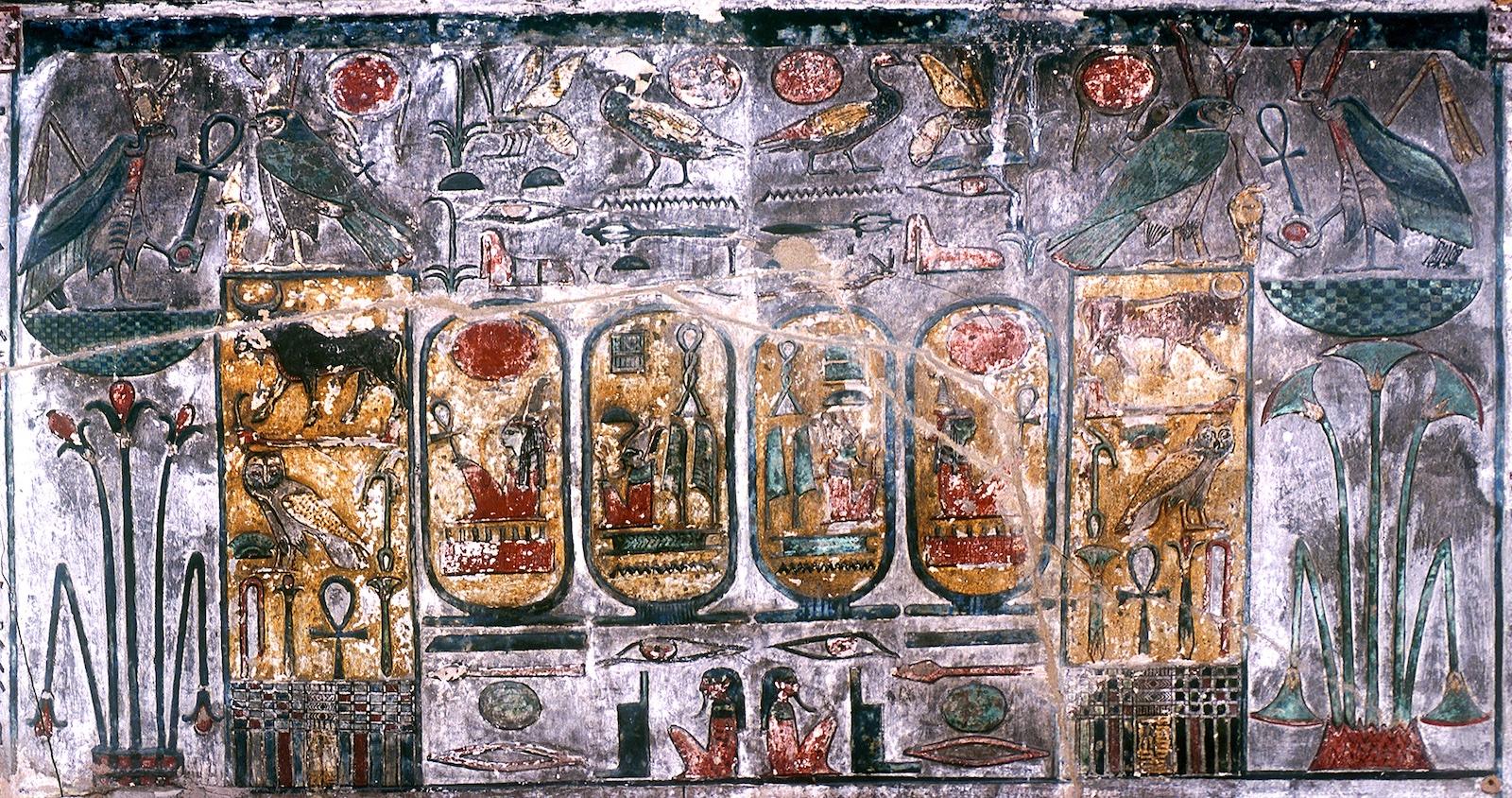
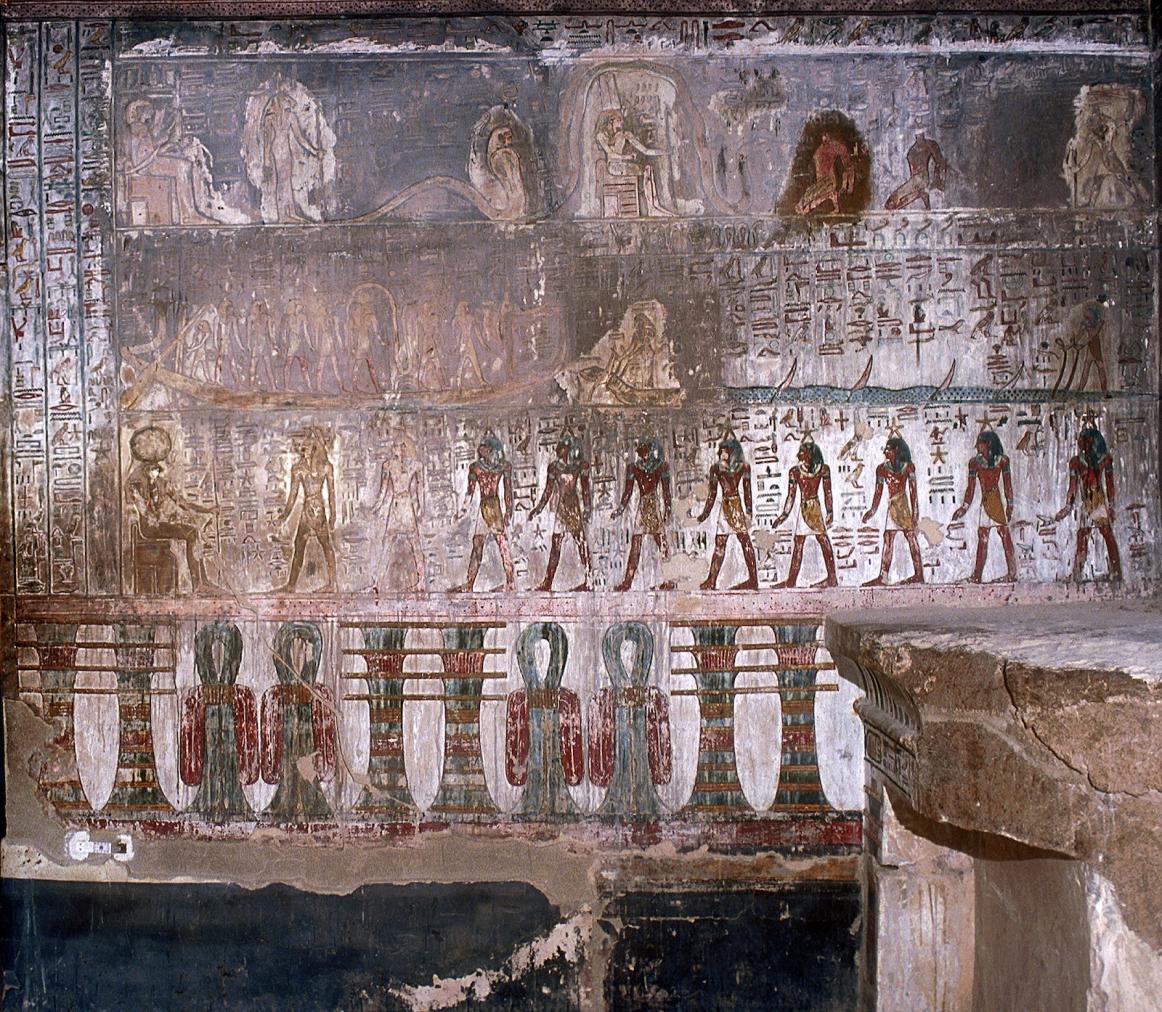
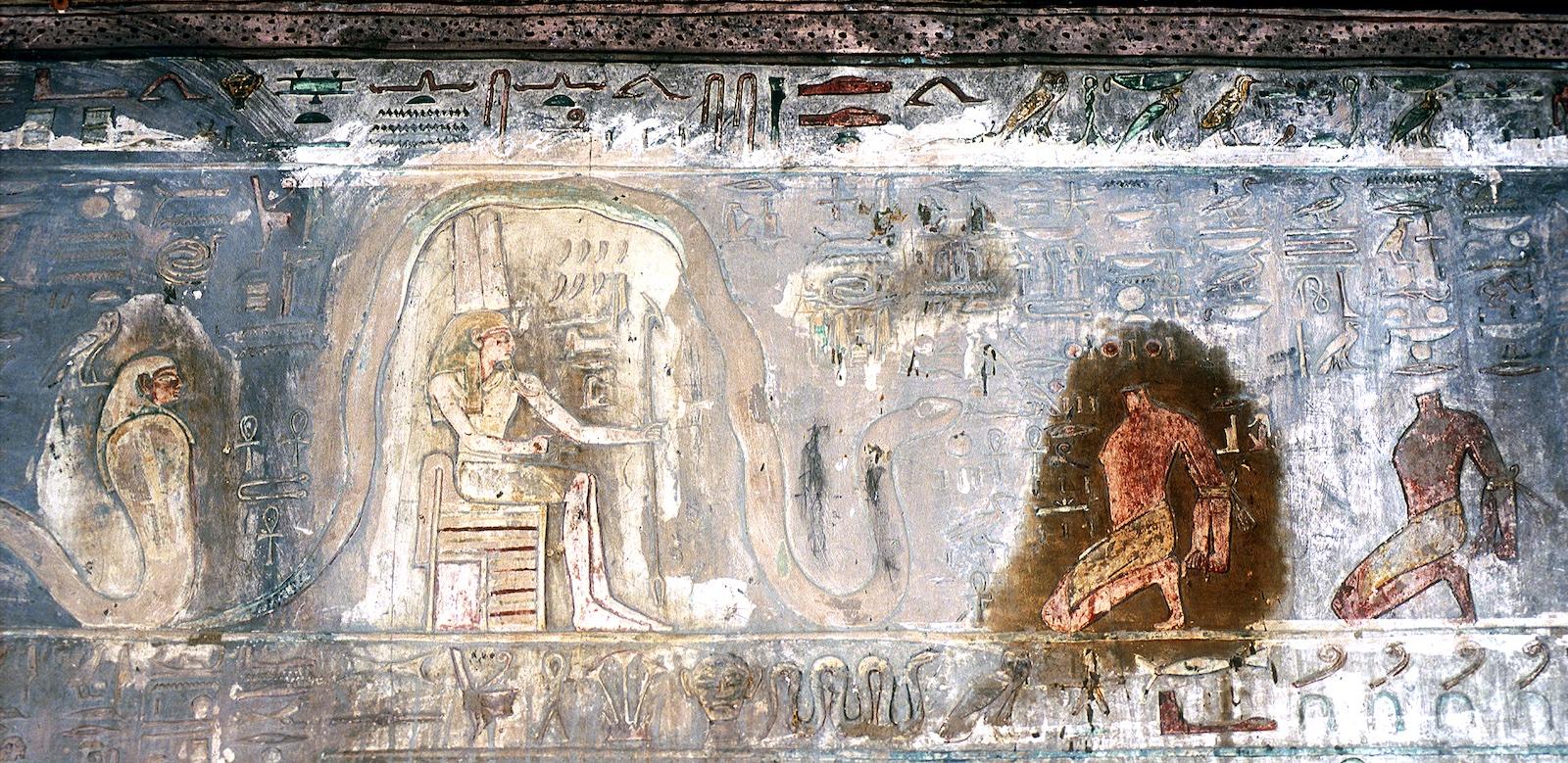
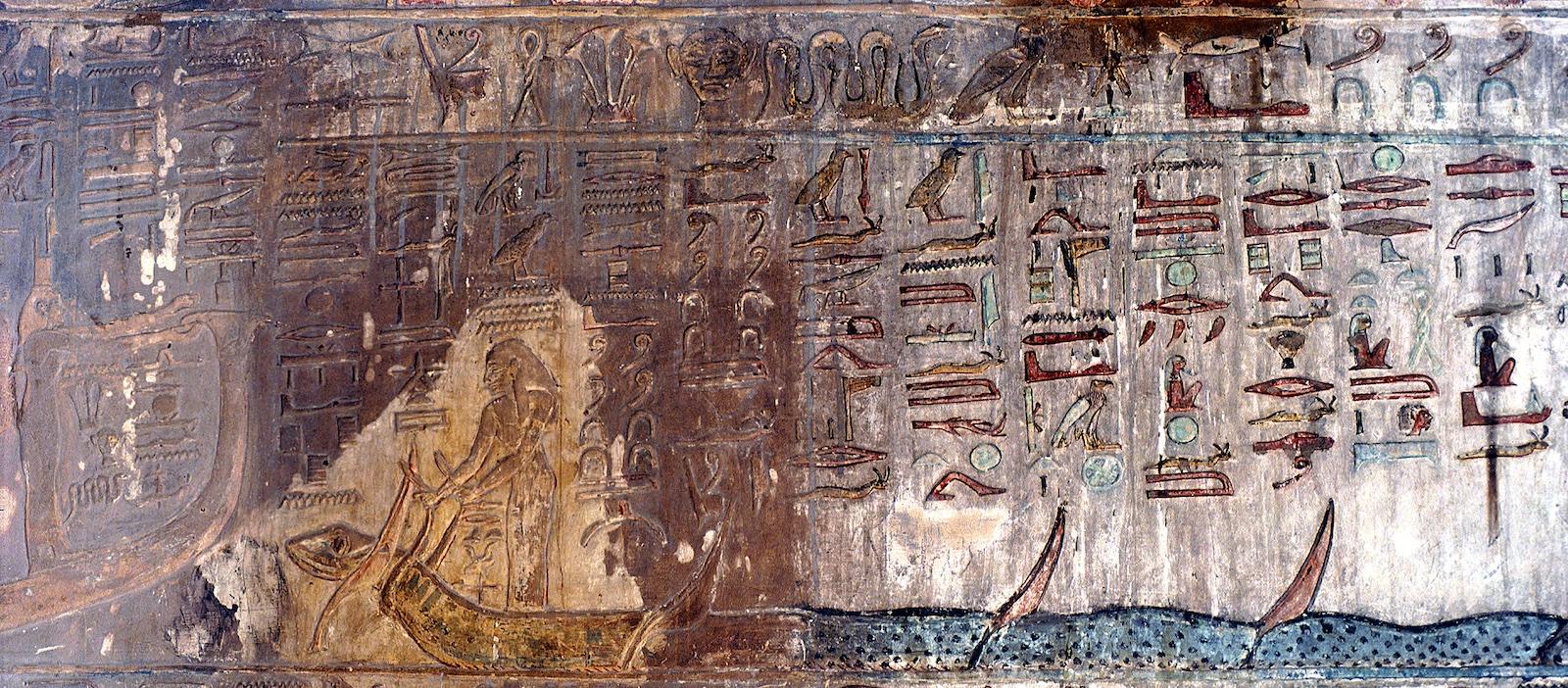
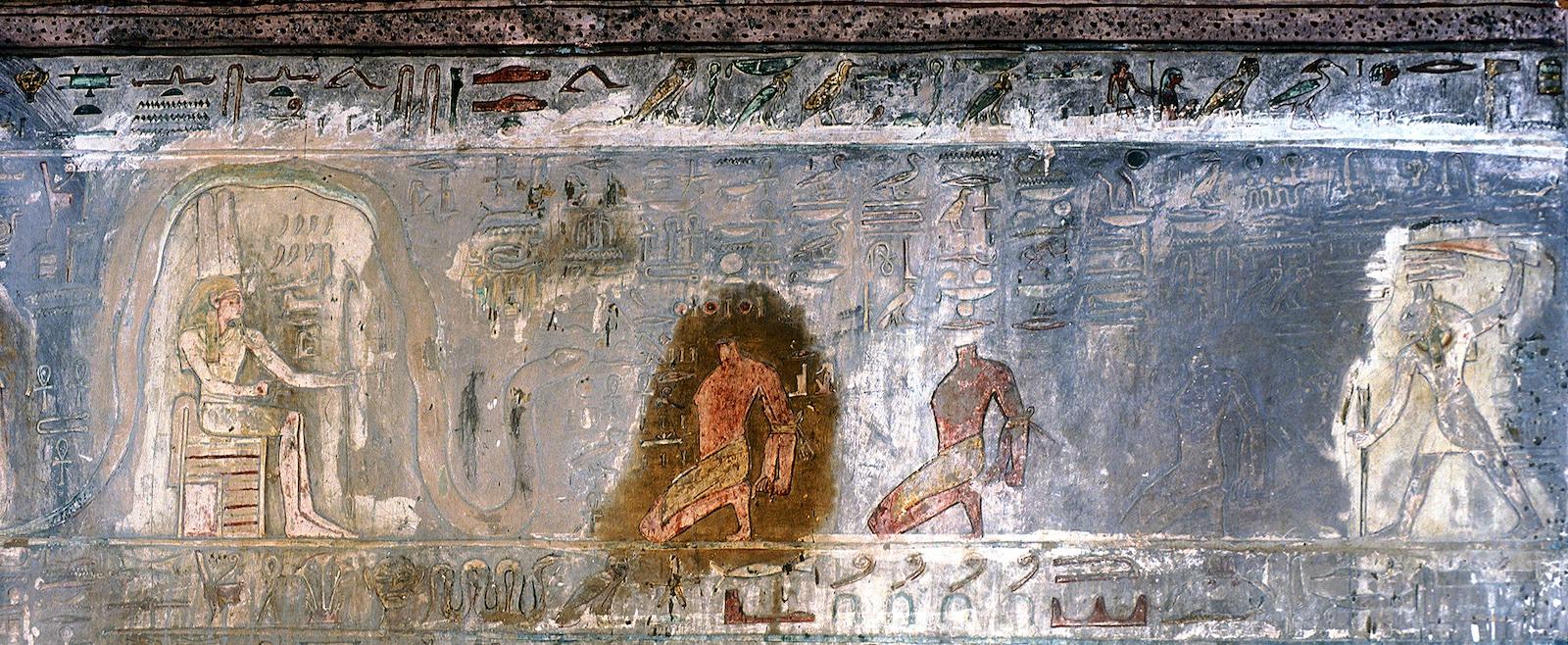
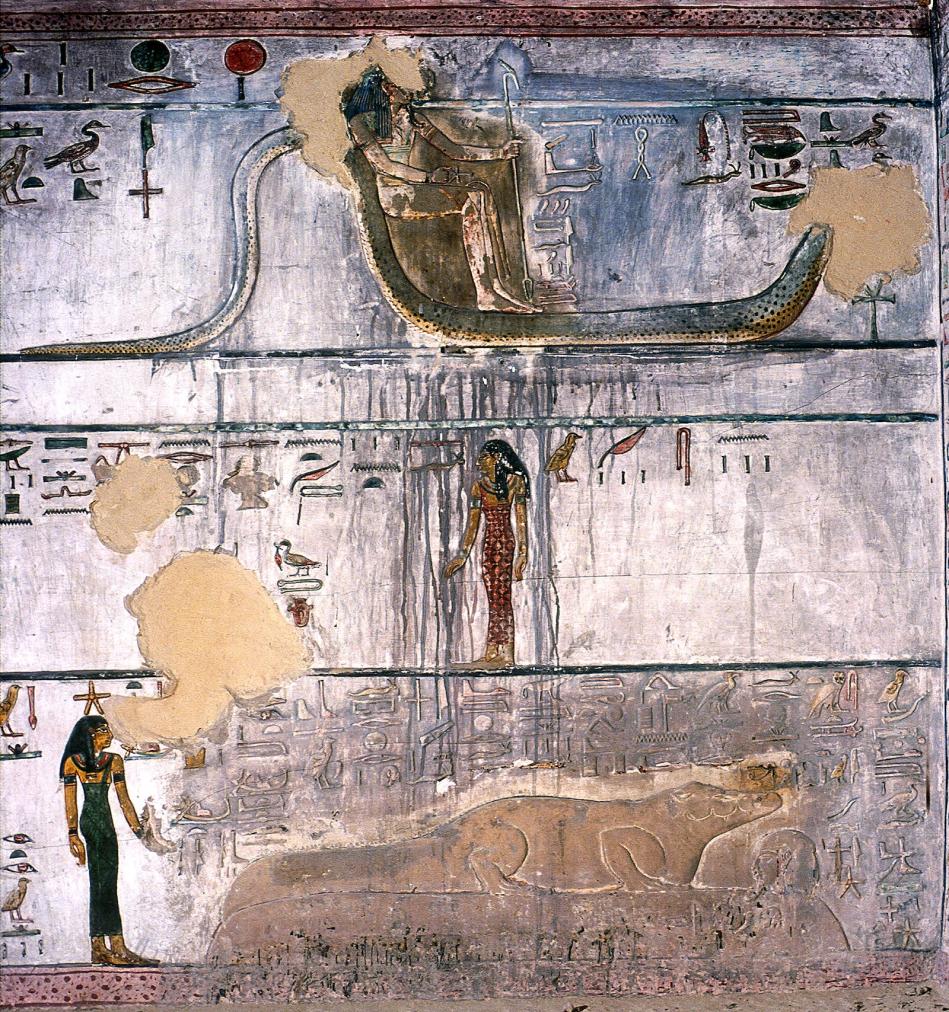
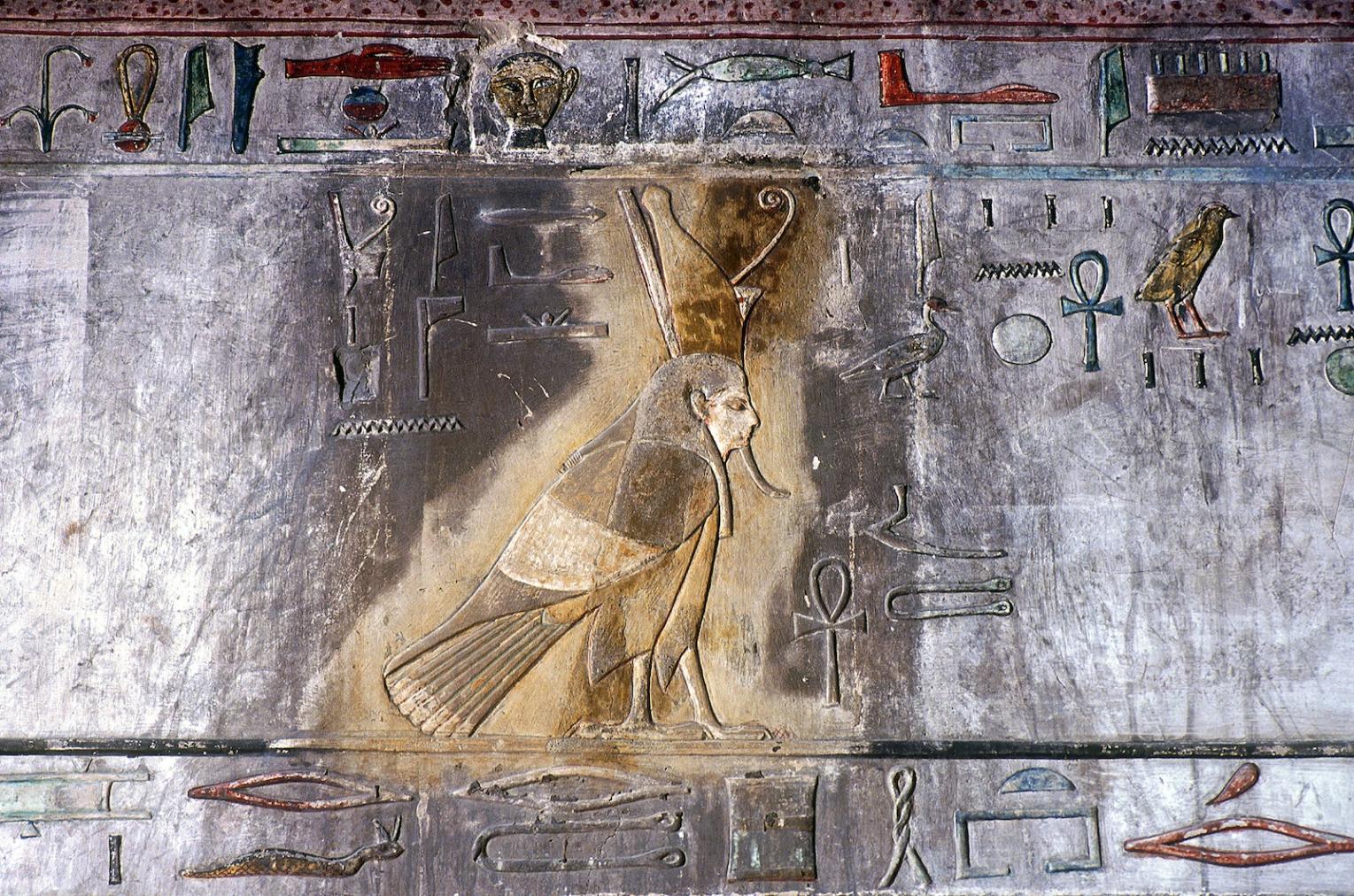
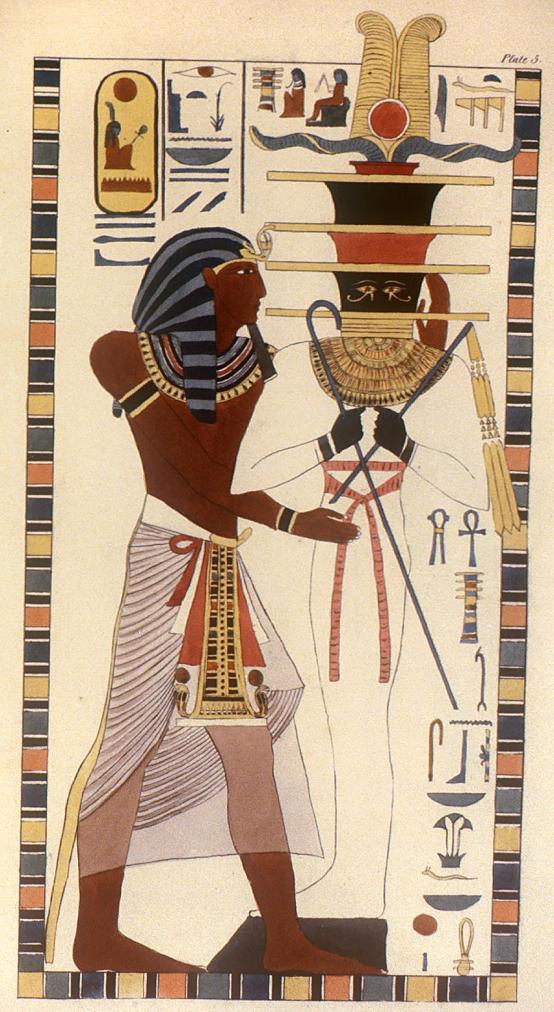
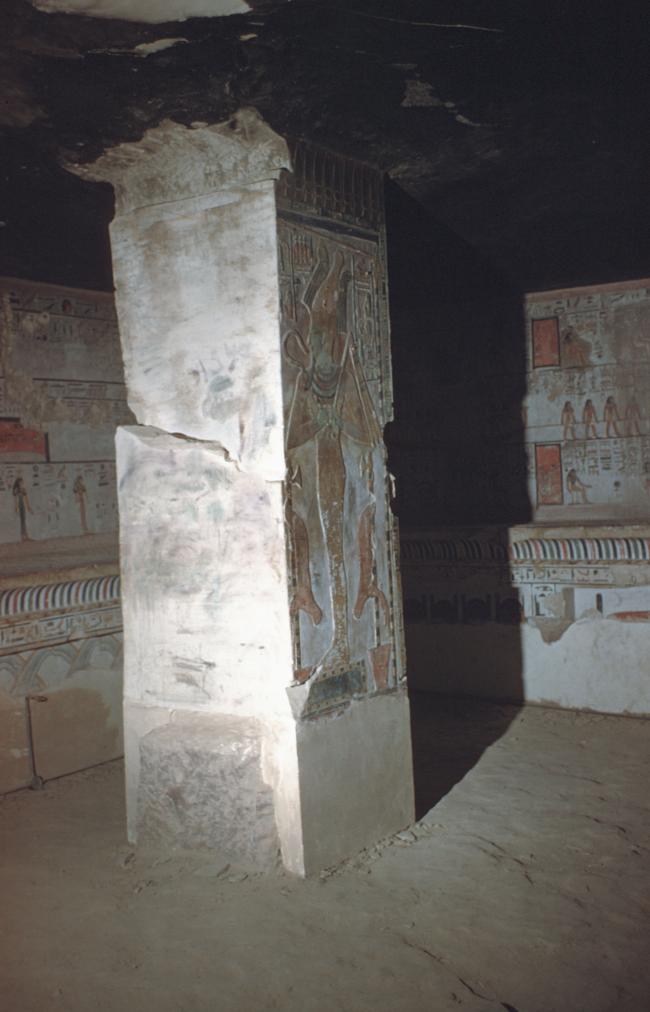
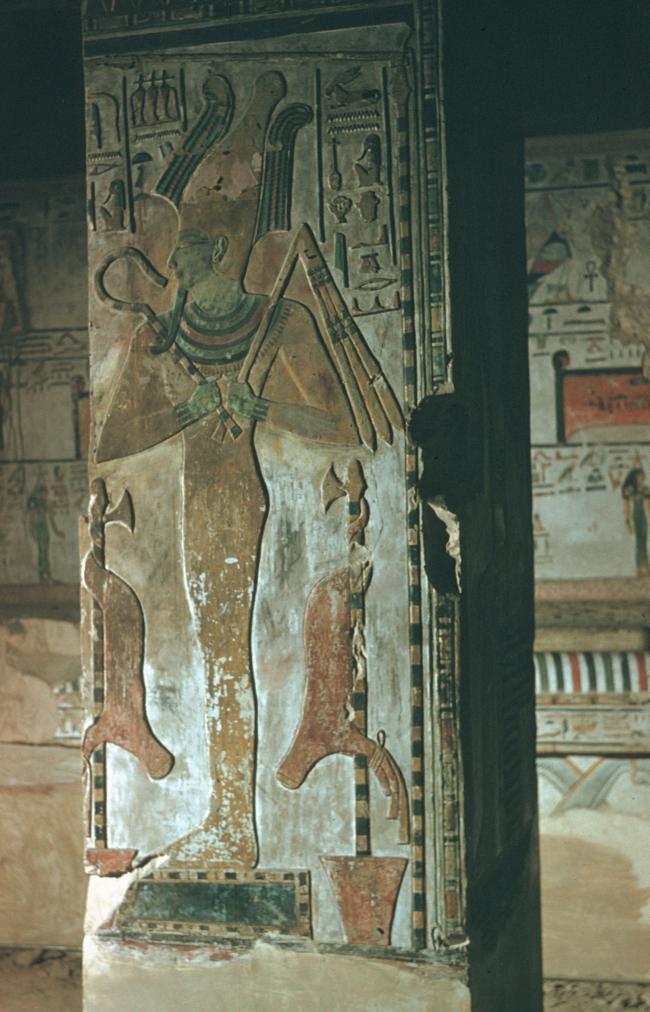
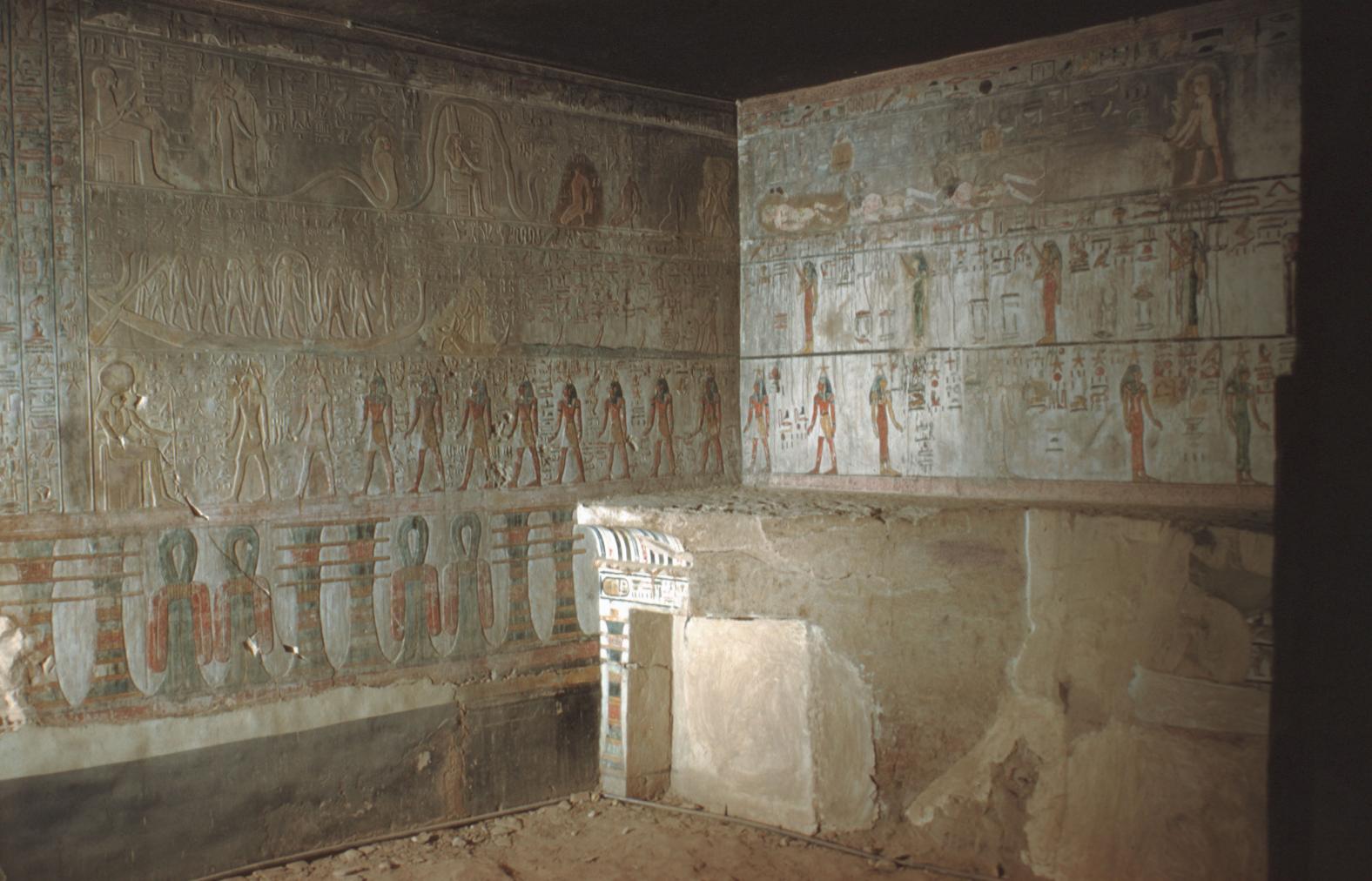
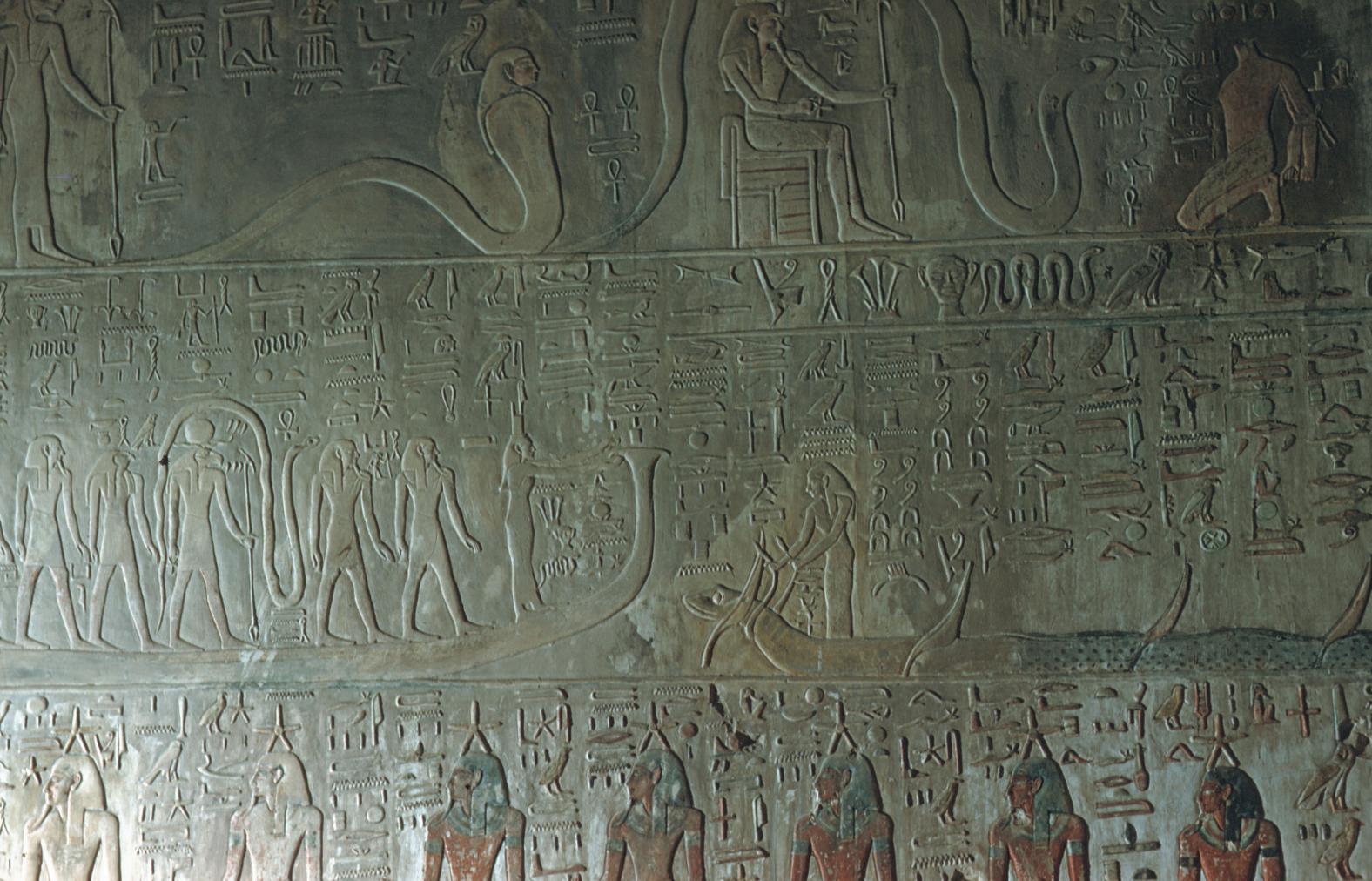
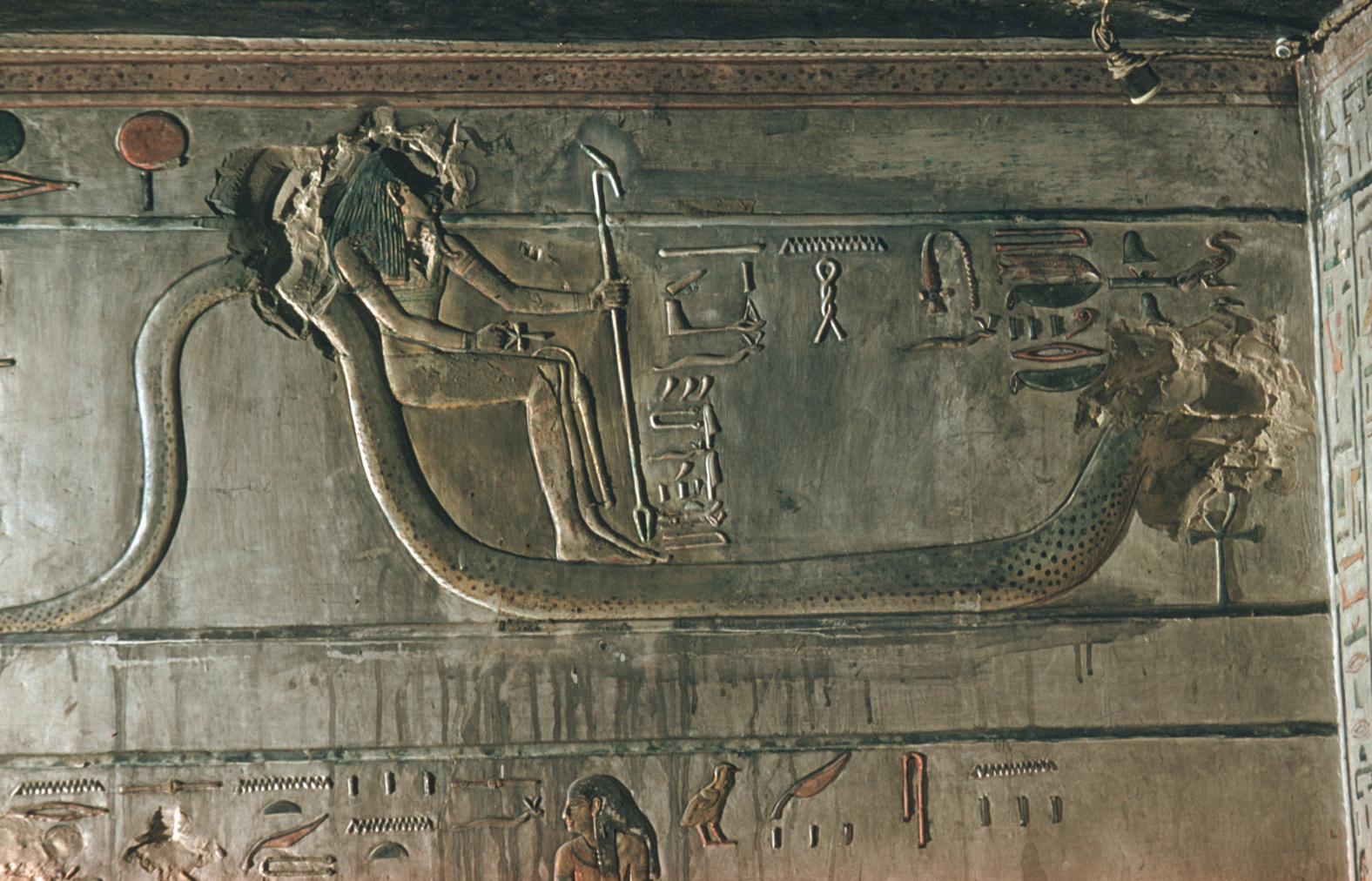
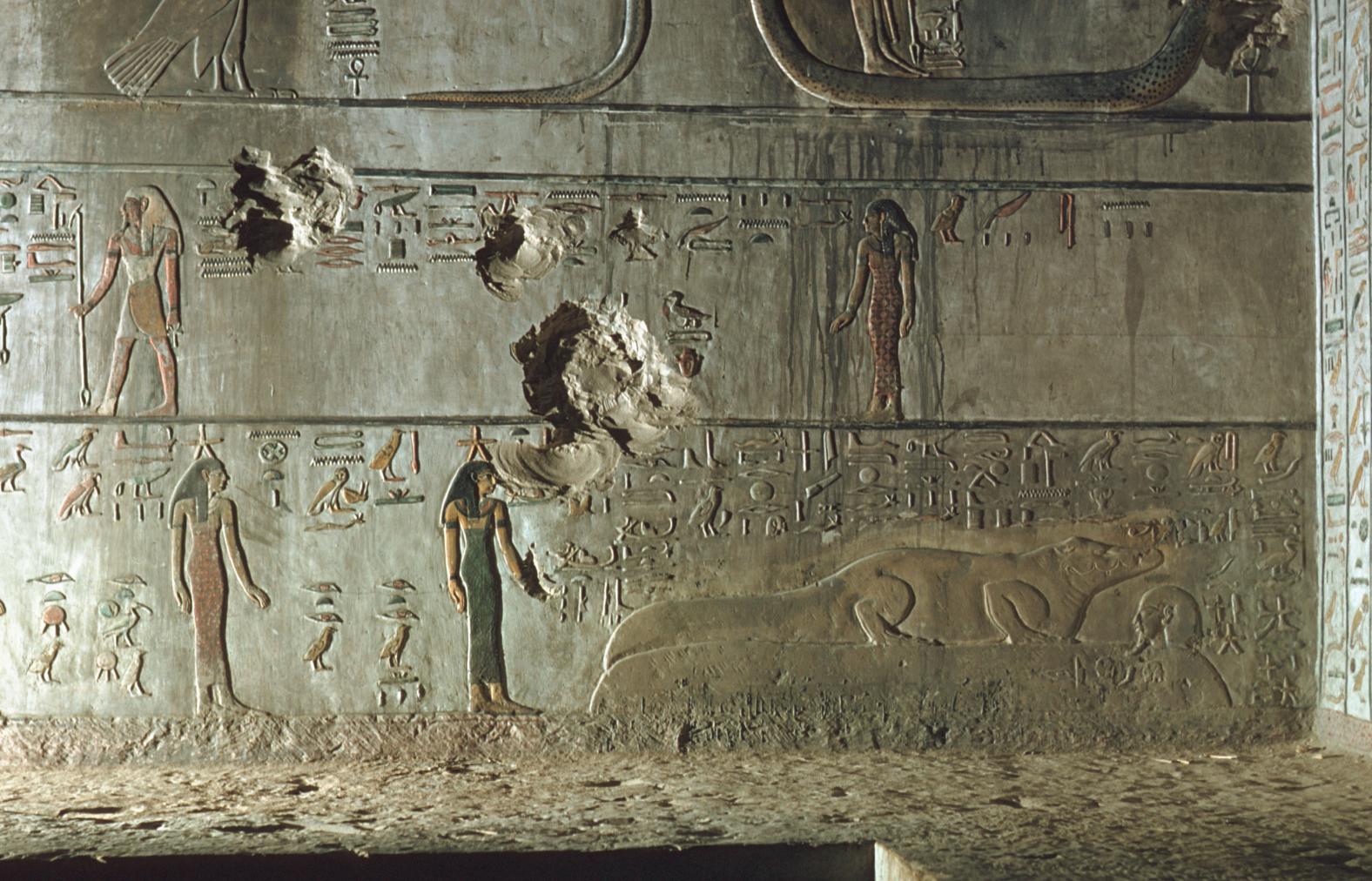
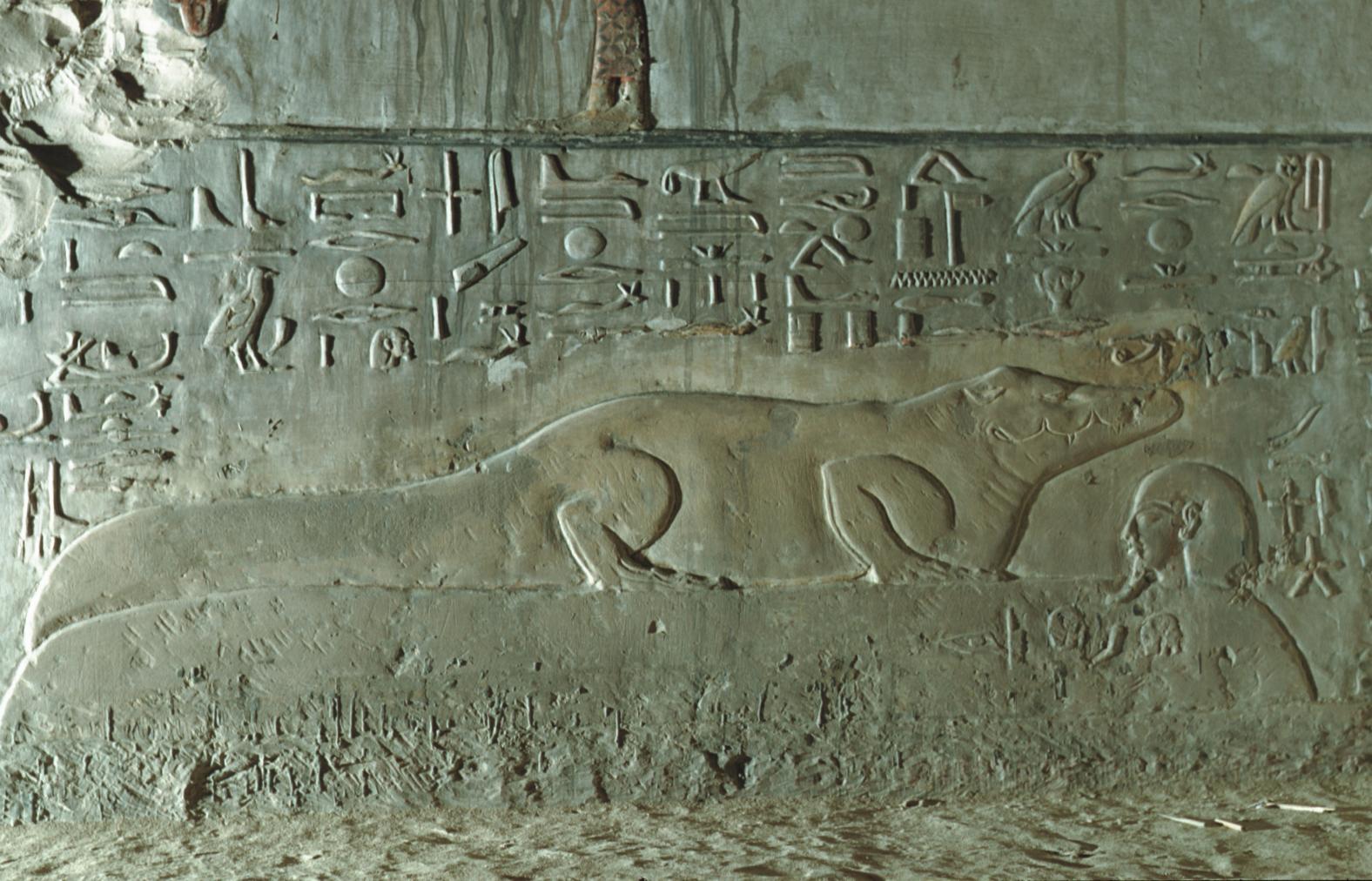
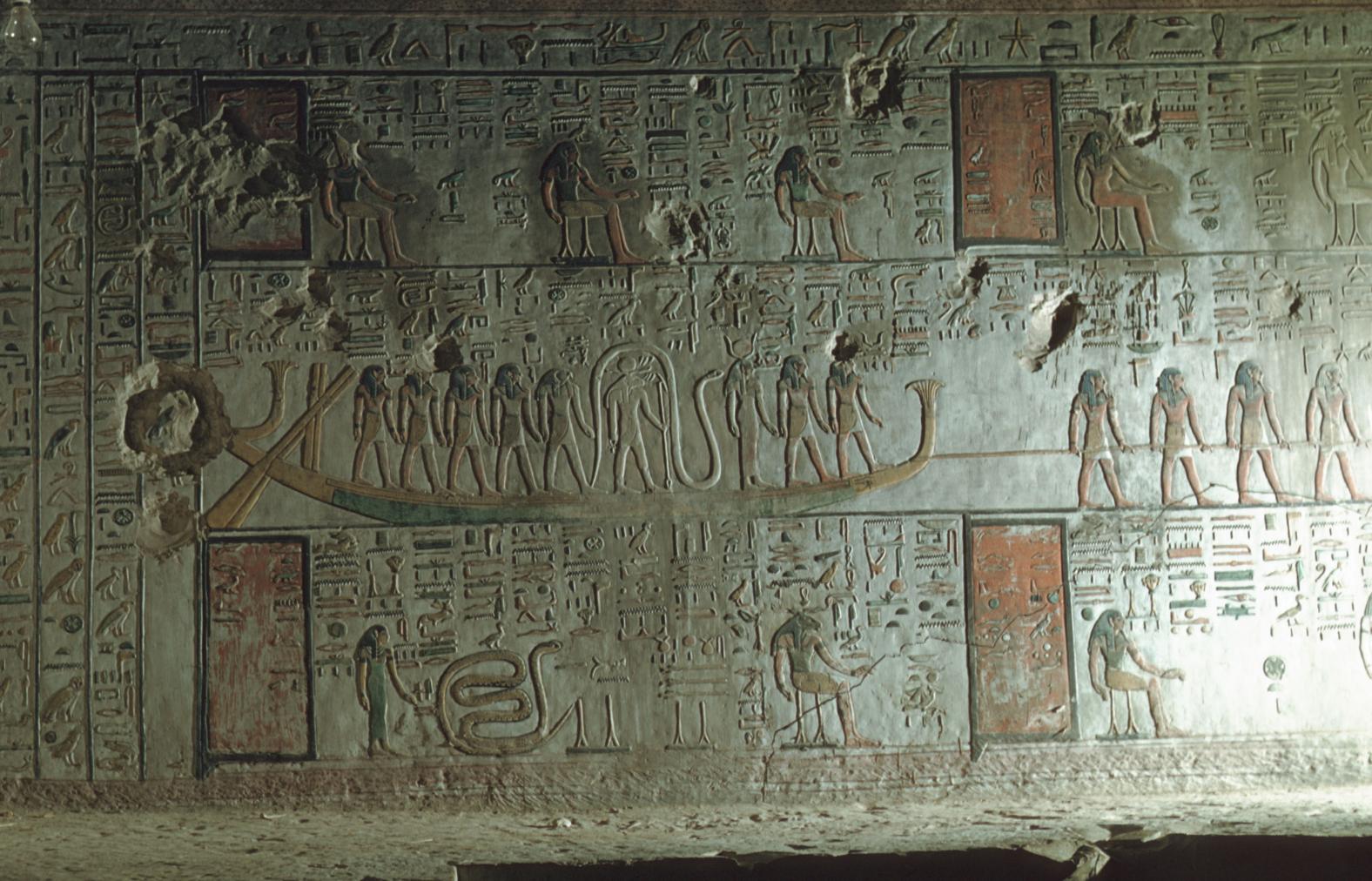
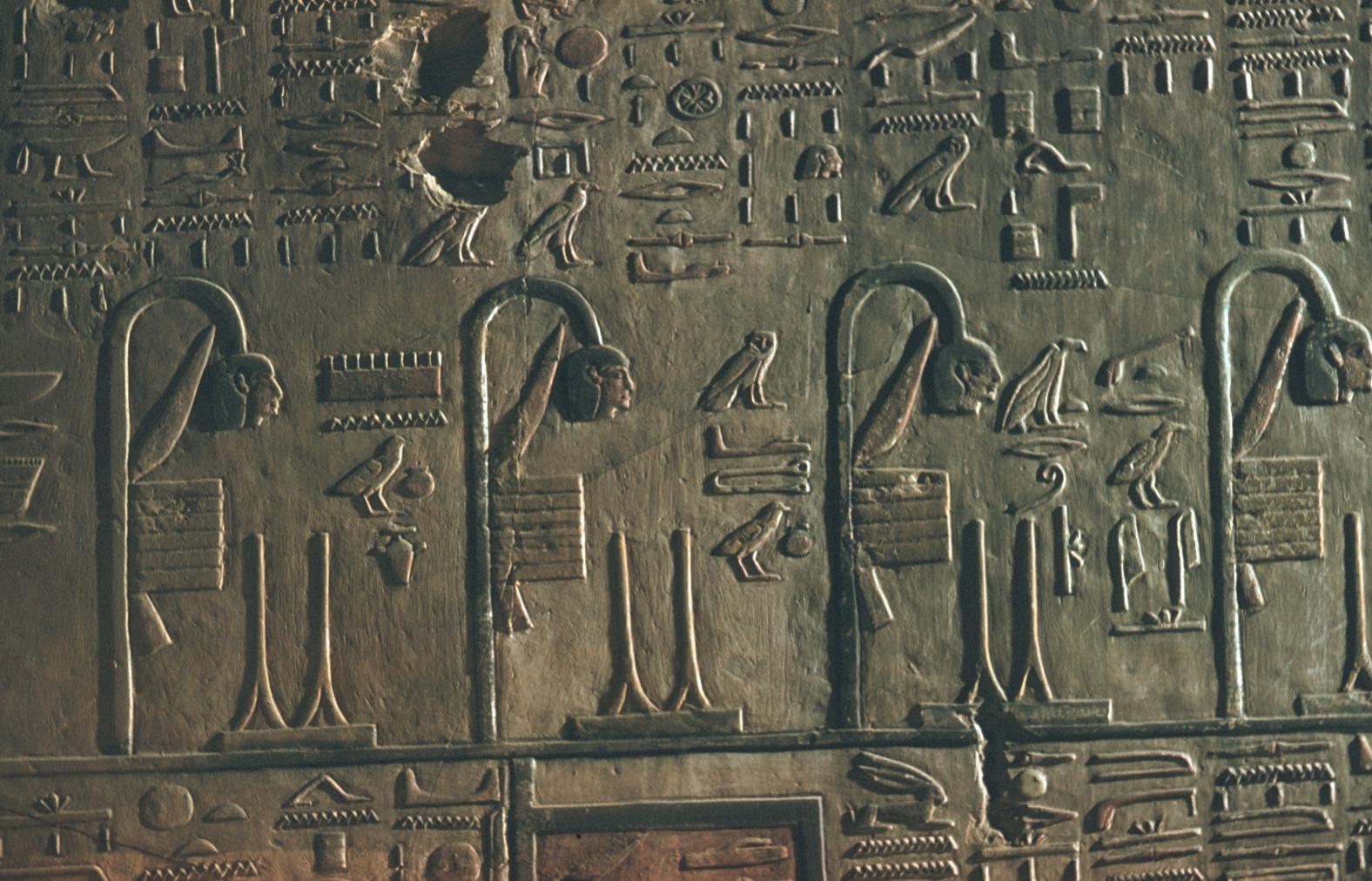
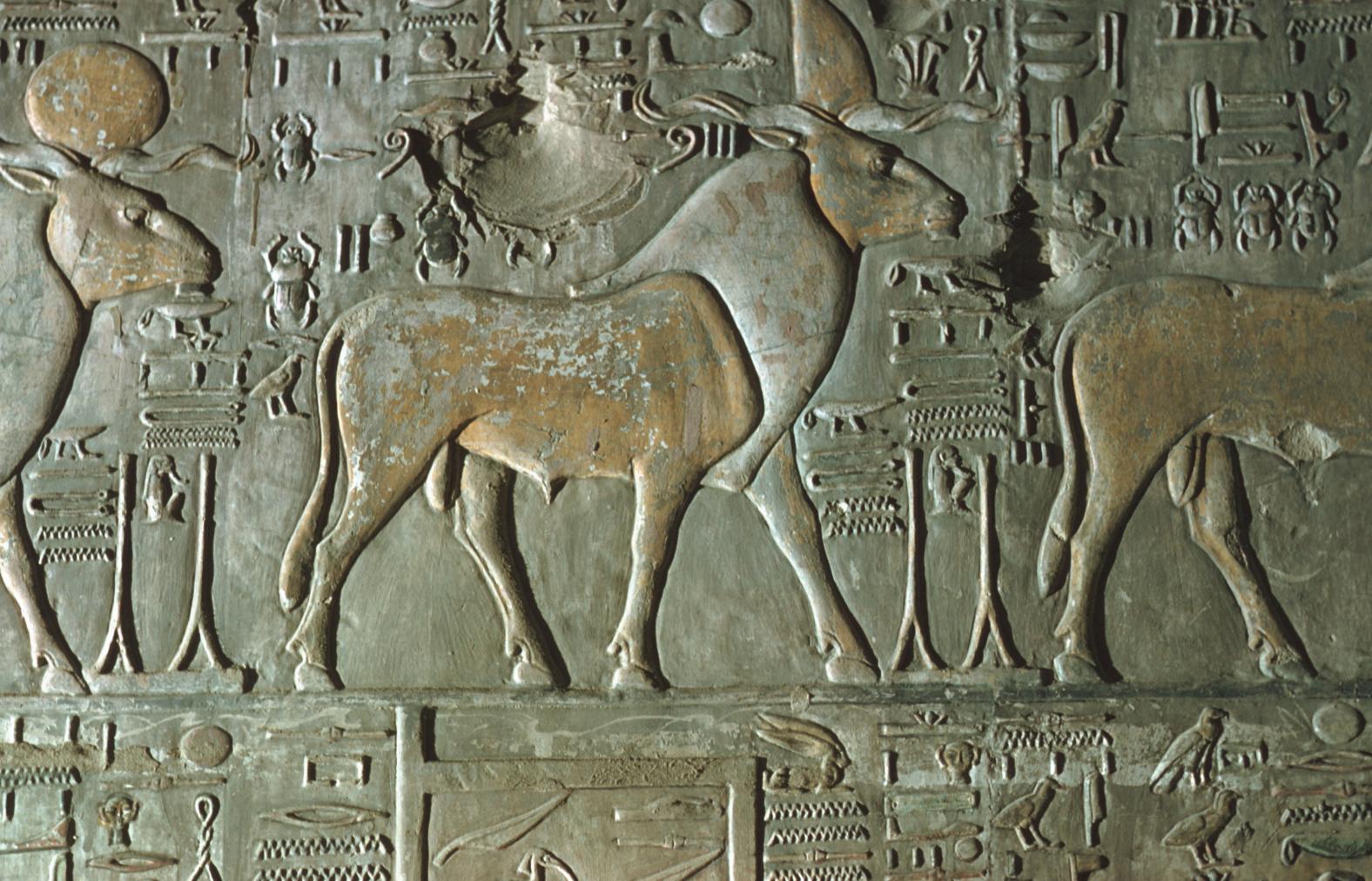
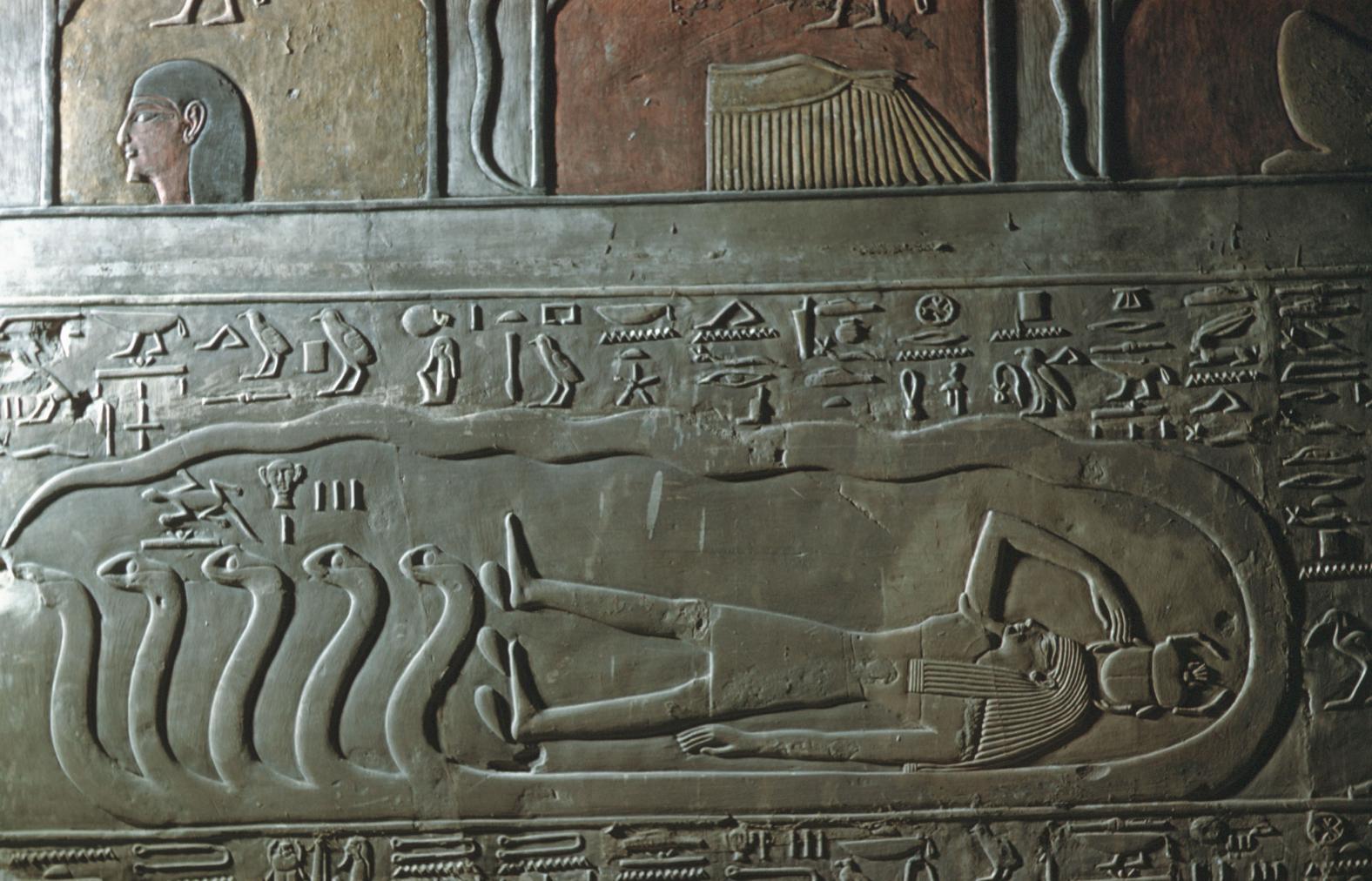
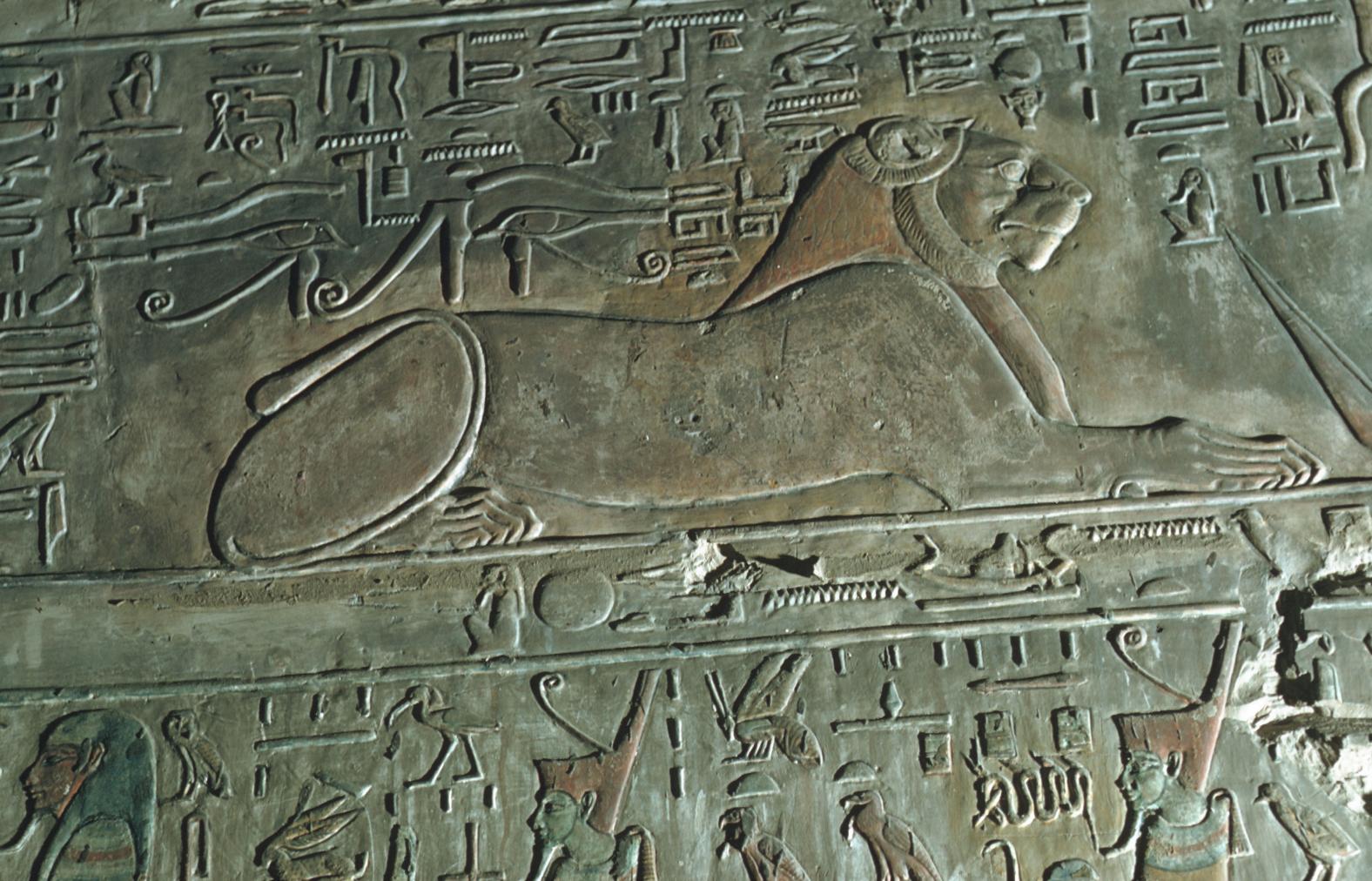
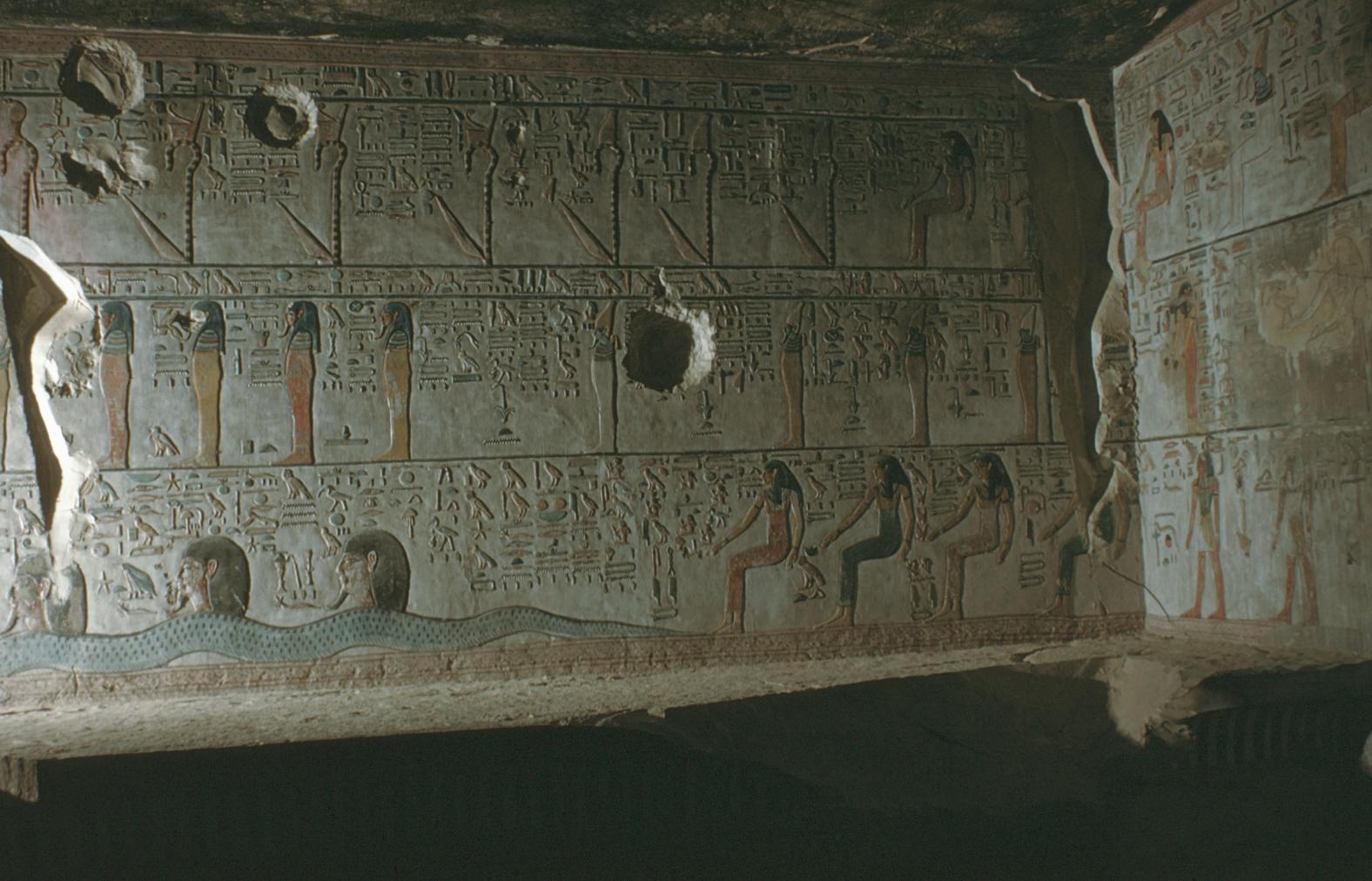
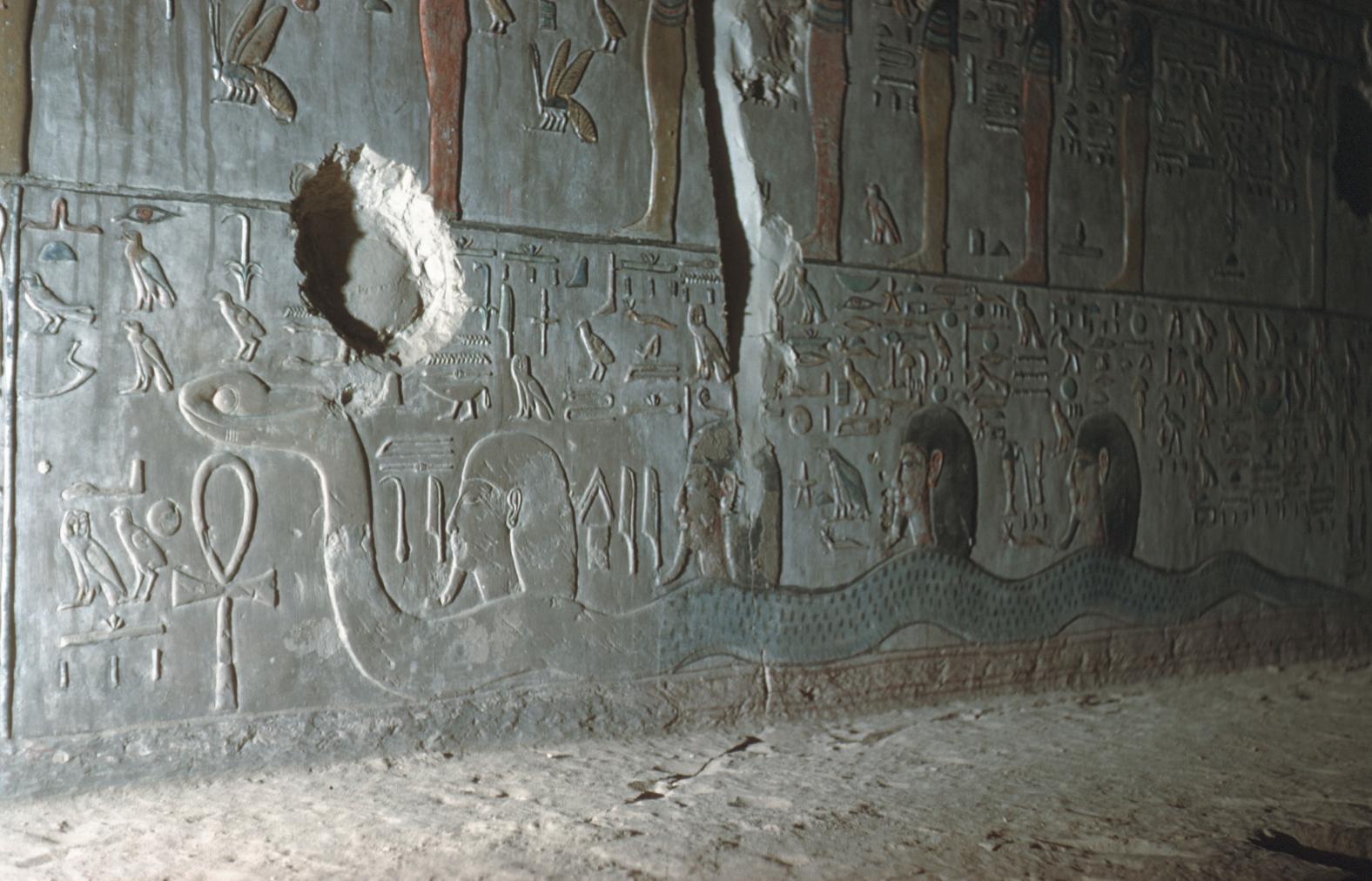
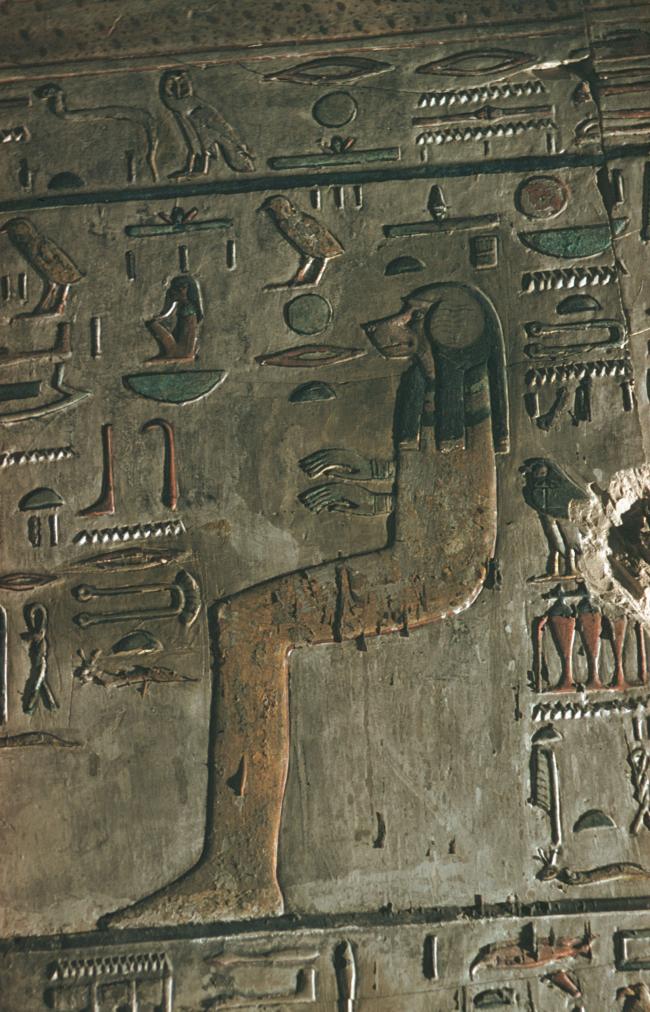
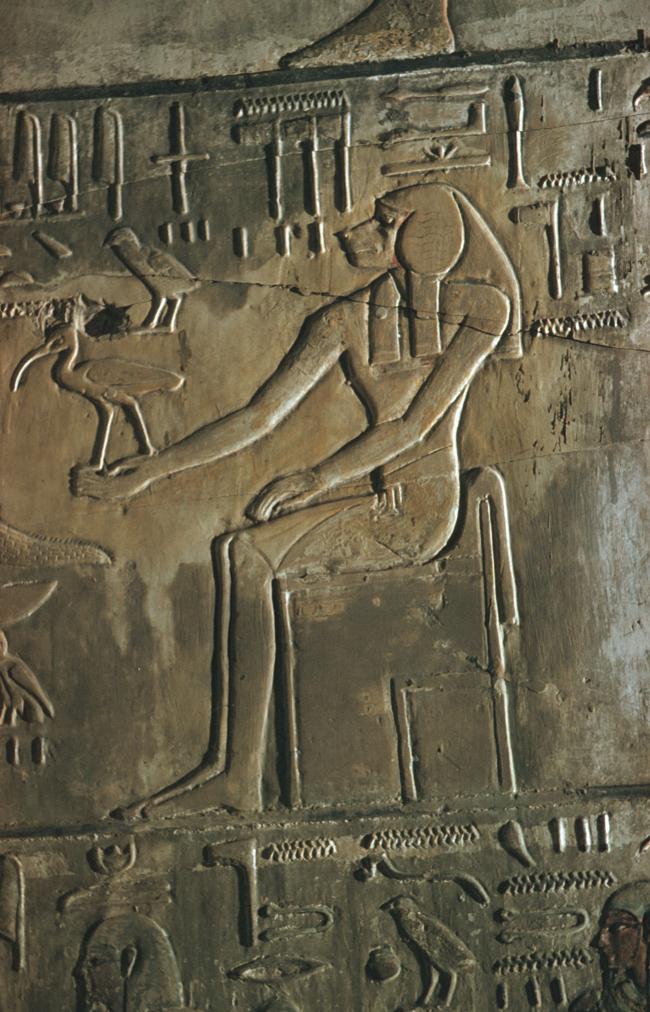
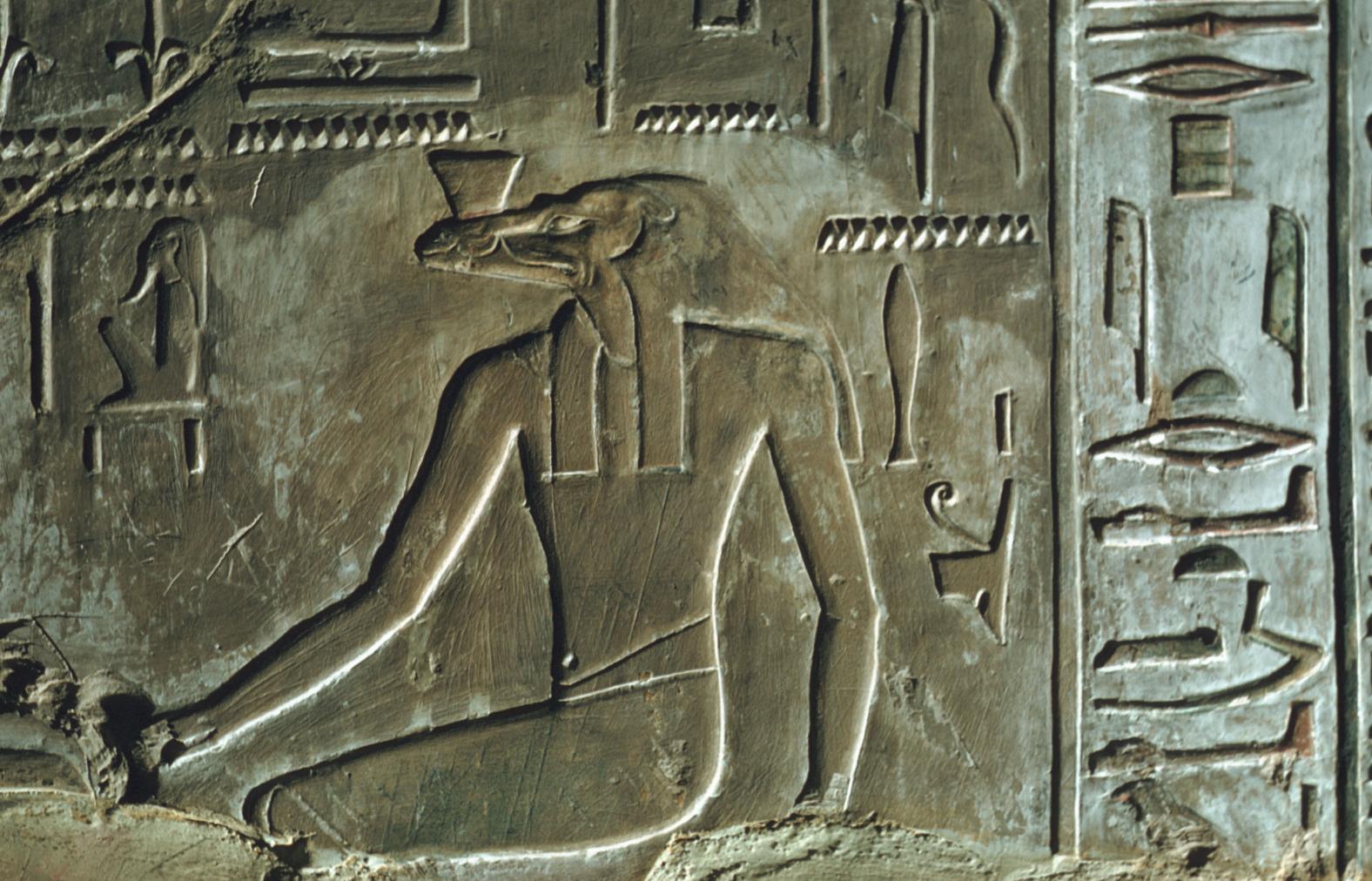
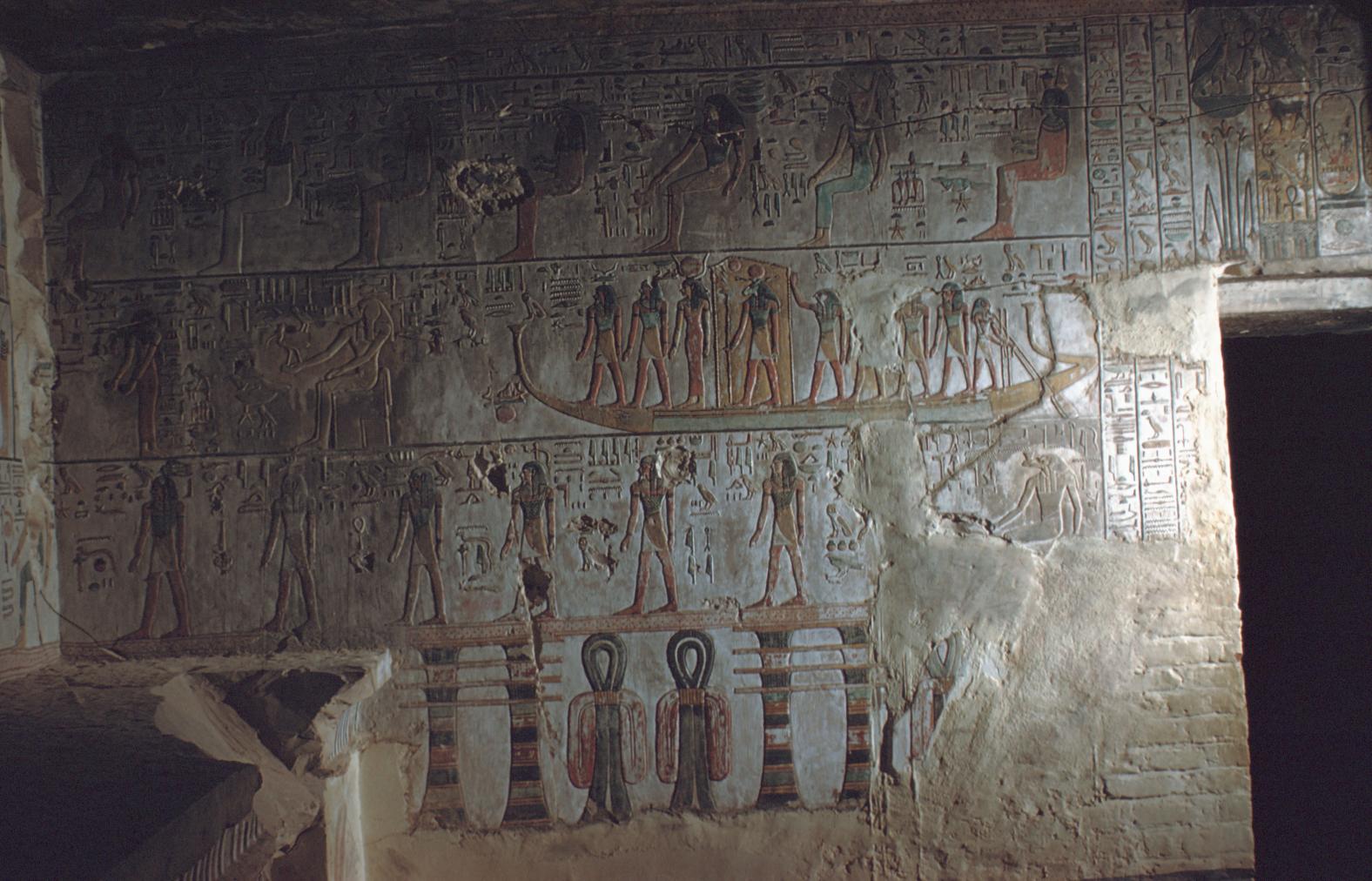
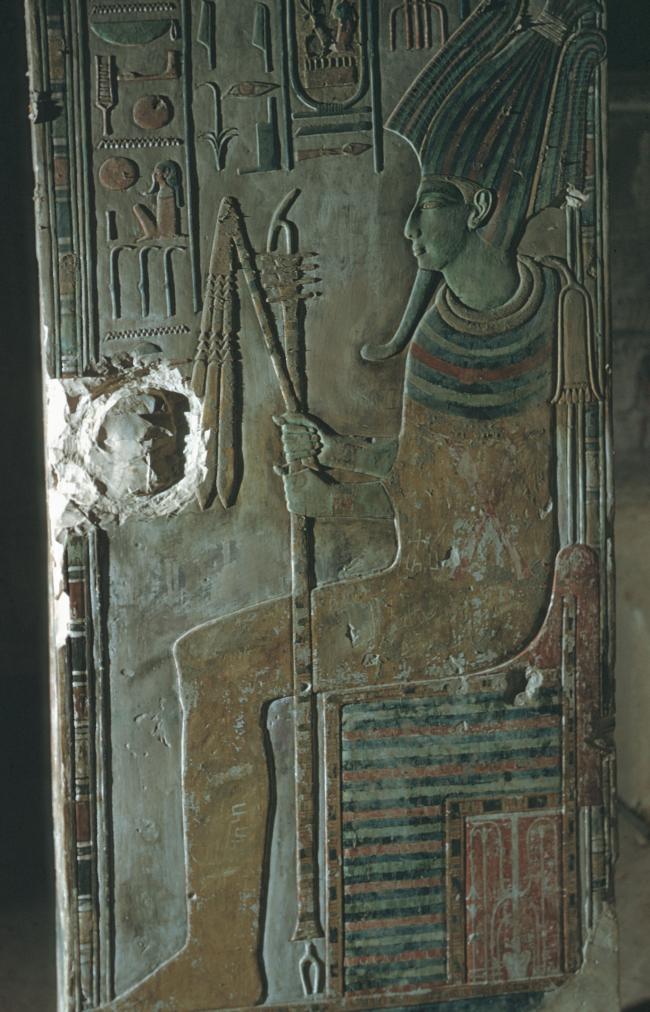
Side chamber Jc
See entire tombA passage at the rear of the burial chamber leads to this unfinished, undecorated chamber. Four pillars stand in a row on a southeast/northwest axis and have suffered damage from rock movement, particularly pillars 3 and 4, over corridor K.
Gate Jc
See entire tombCarter completely rebuilt this gate in the left (southeast) end of the rear (southwest) wall of burial chamber J in brick masonry, topped with an arch, to repair substantial damage to this wall due to collapse brought about by weakening of the stone at the base of the wall over corridor K. The gate is unusually thick and may originally have had compound jambs.
Gate Jd
See entire tombThis gate in the left (northwest) end of the right (northwest) wall of the lower part of the burial chamber has traces of anthropomorphized djed pillars painted on the thicknesses.
Porter and Moss designation:
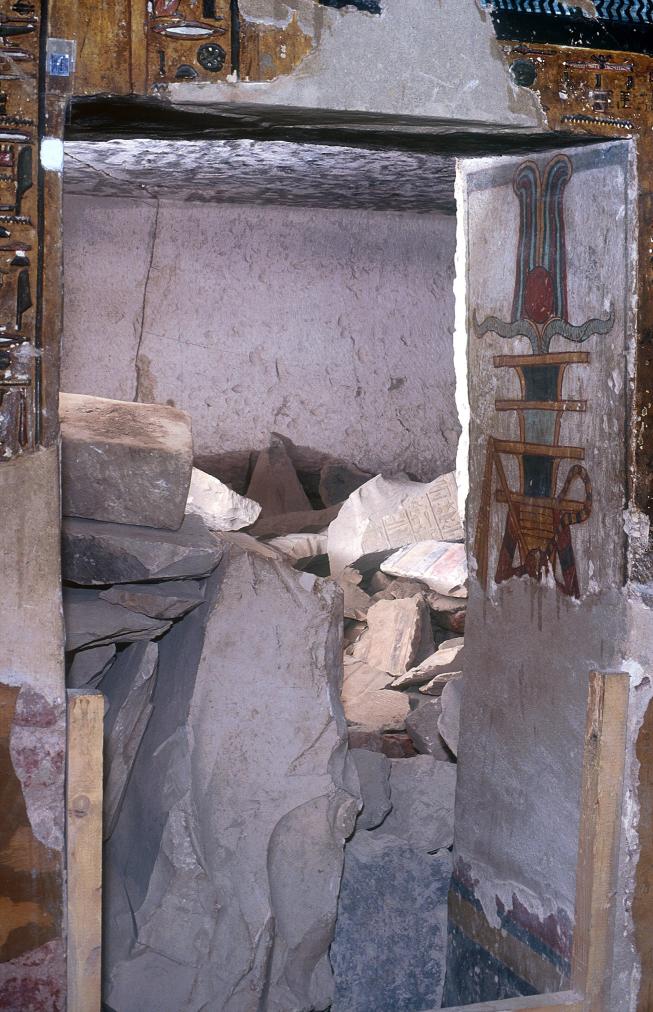
Side chamber Jd
See entire tombThis undecorated chamber is located to the southwest of burial chamber J
Porter and Moss designation:

Gate Je
See entire tombThis gate is cut in the right (northwest) wall of the front raised part of the burial chamber J. The right (northeast) thickness shows Sety I offering boxes of colored cloth.
Porter and Moss designation:
Side chamber Je
See entire tombThe walls are decorated with the Book of the Heavenly Cow. The figure of the cow depicted on the rear (northwest) wall has suffered loss of color due to squeezes taken in the nineteenth century. Other walls have suffered acts of vandalism.
Porter and Moss designation:
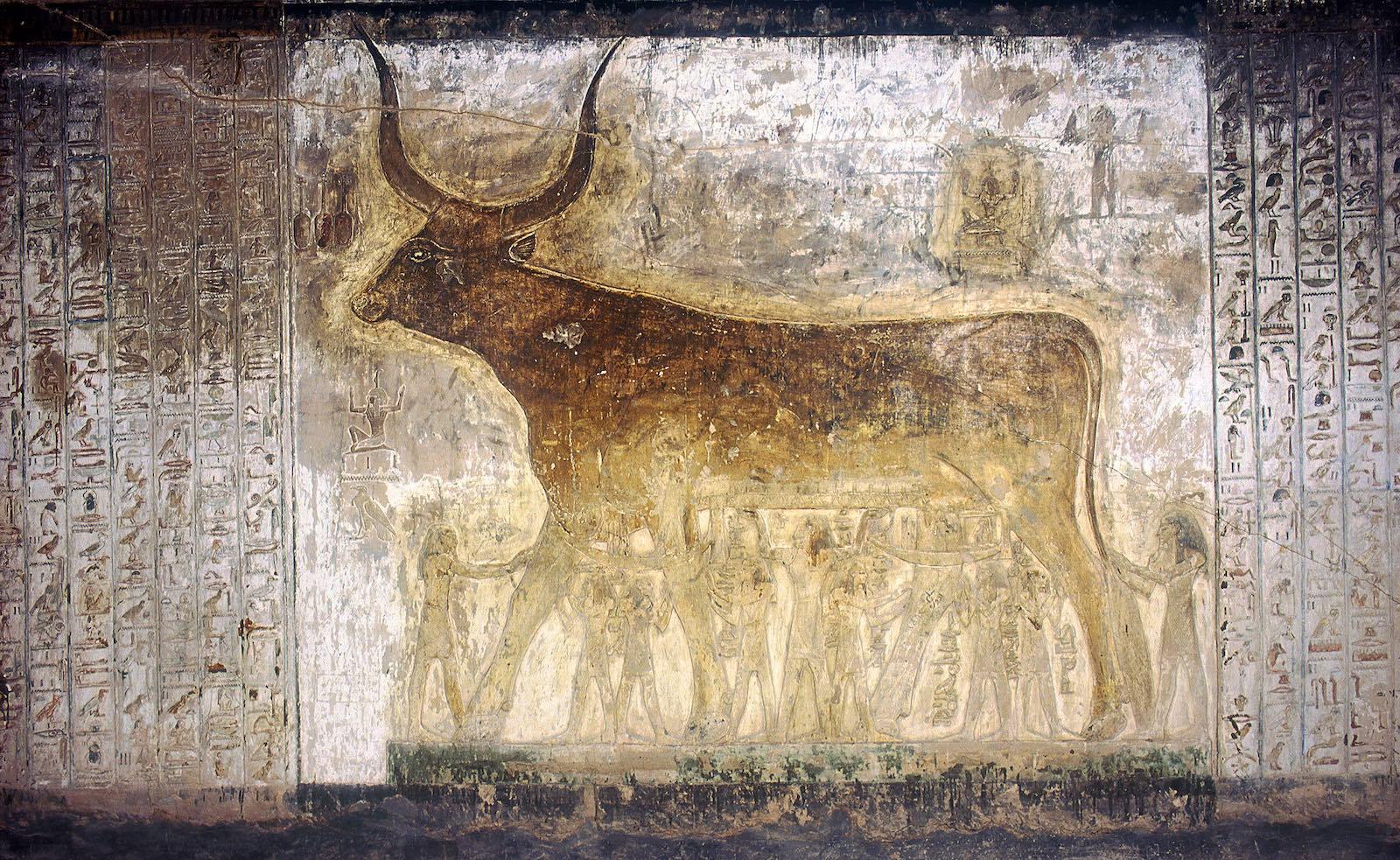
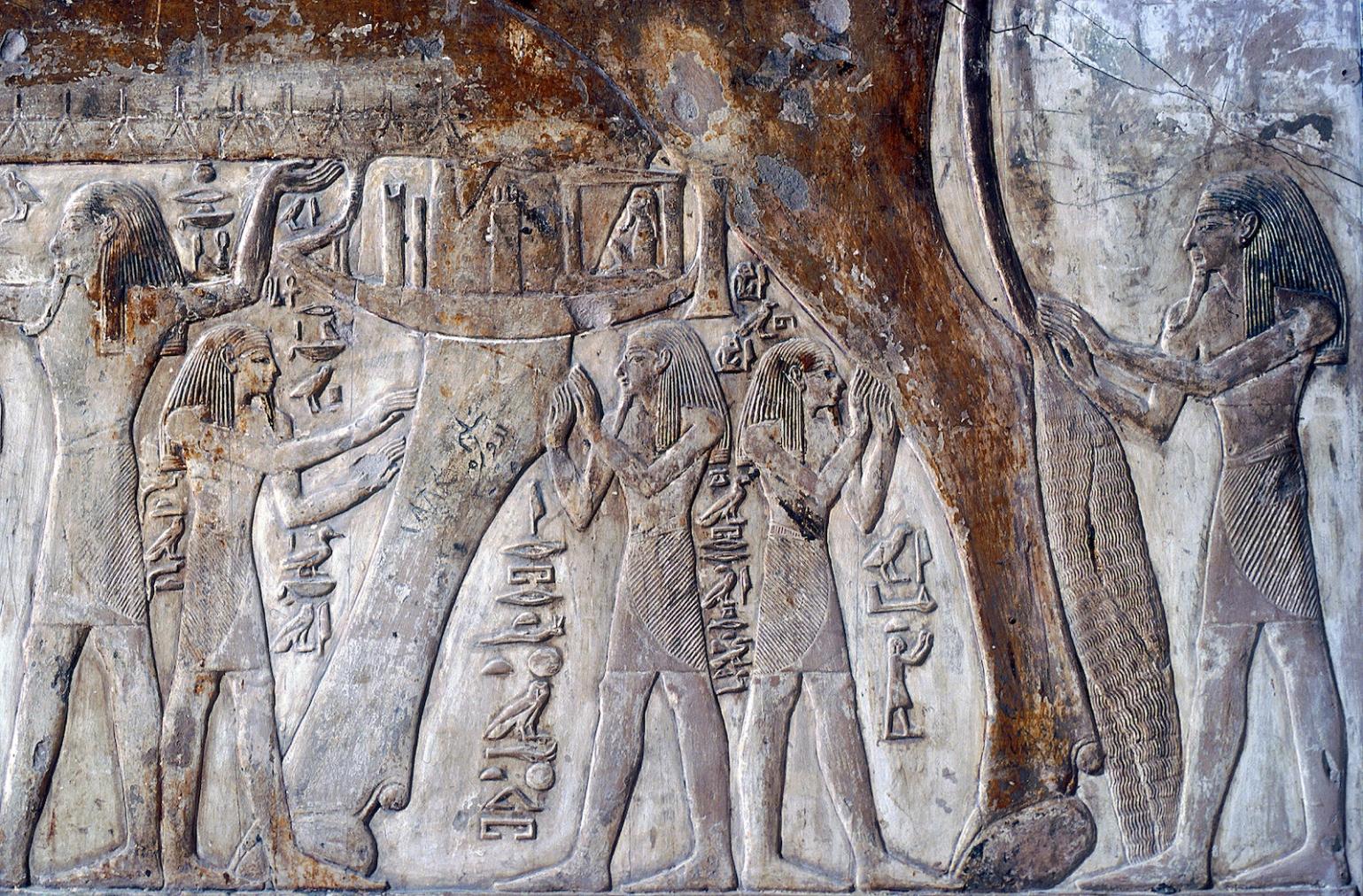
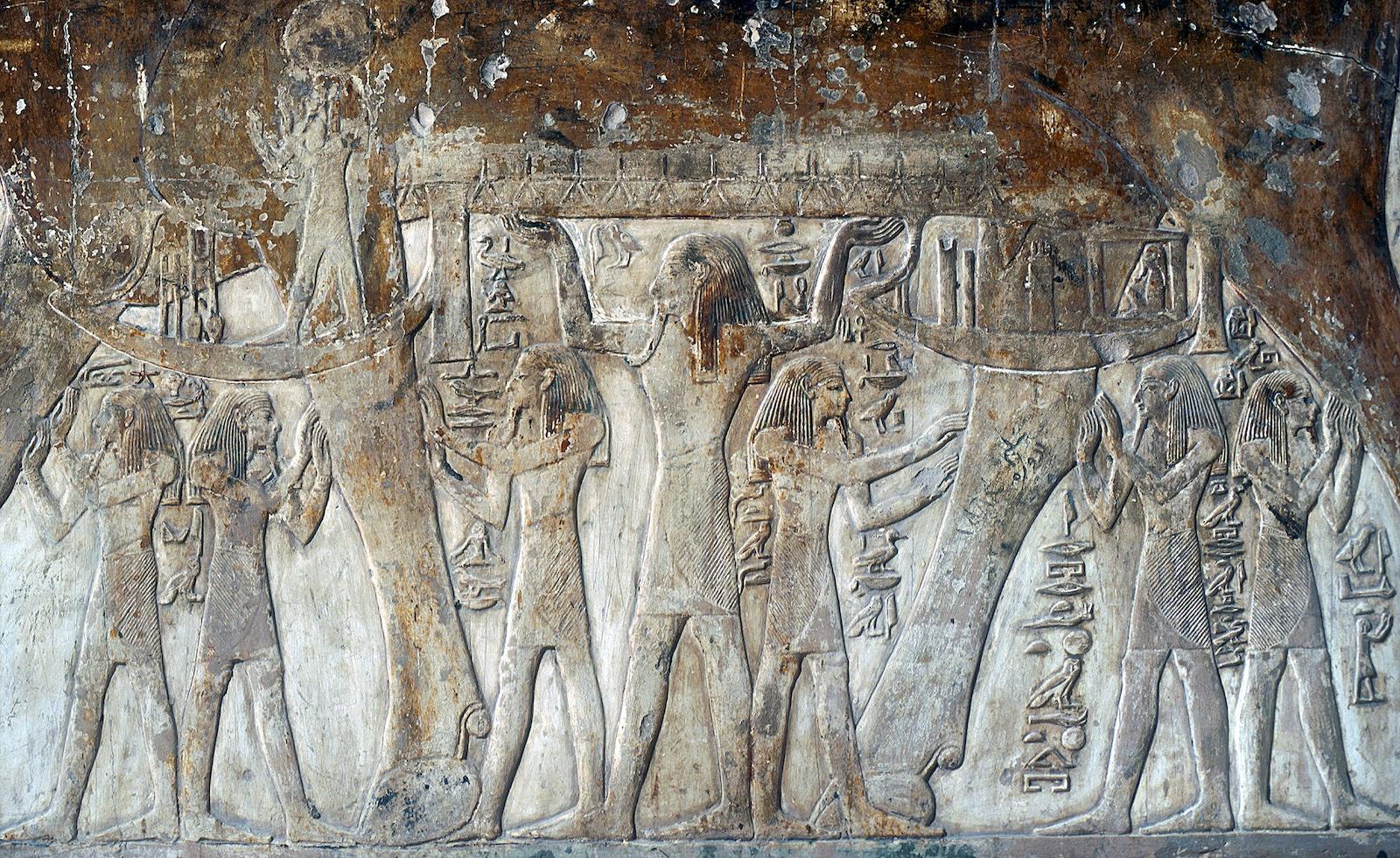
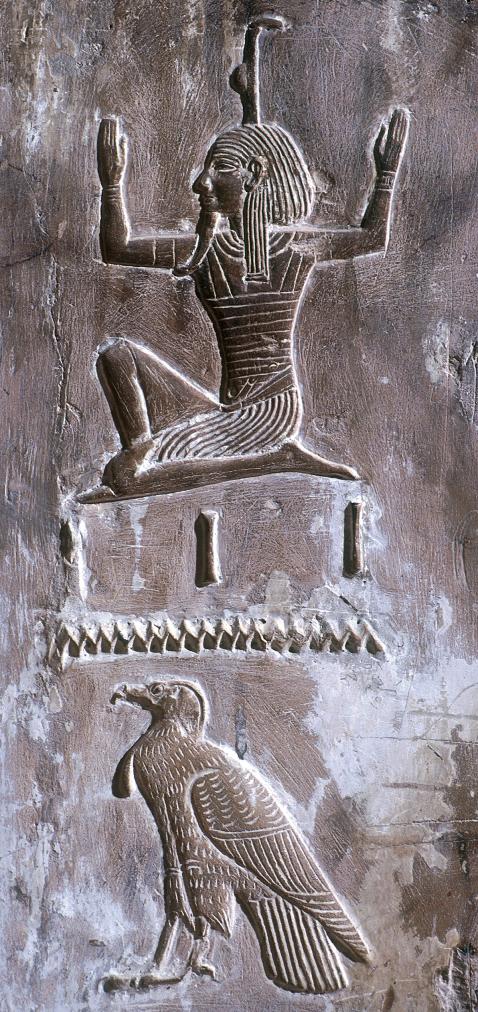
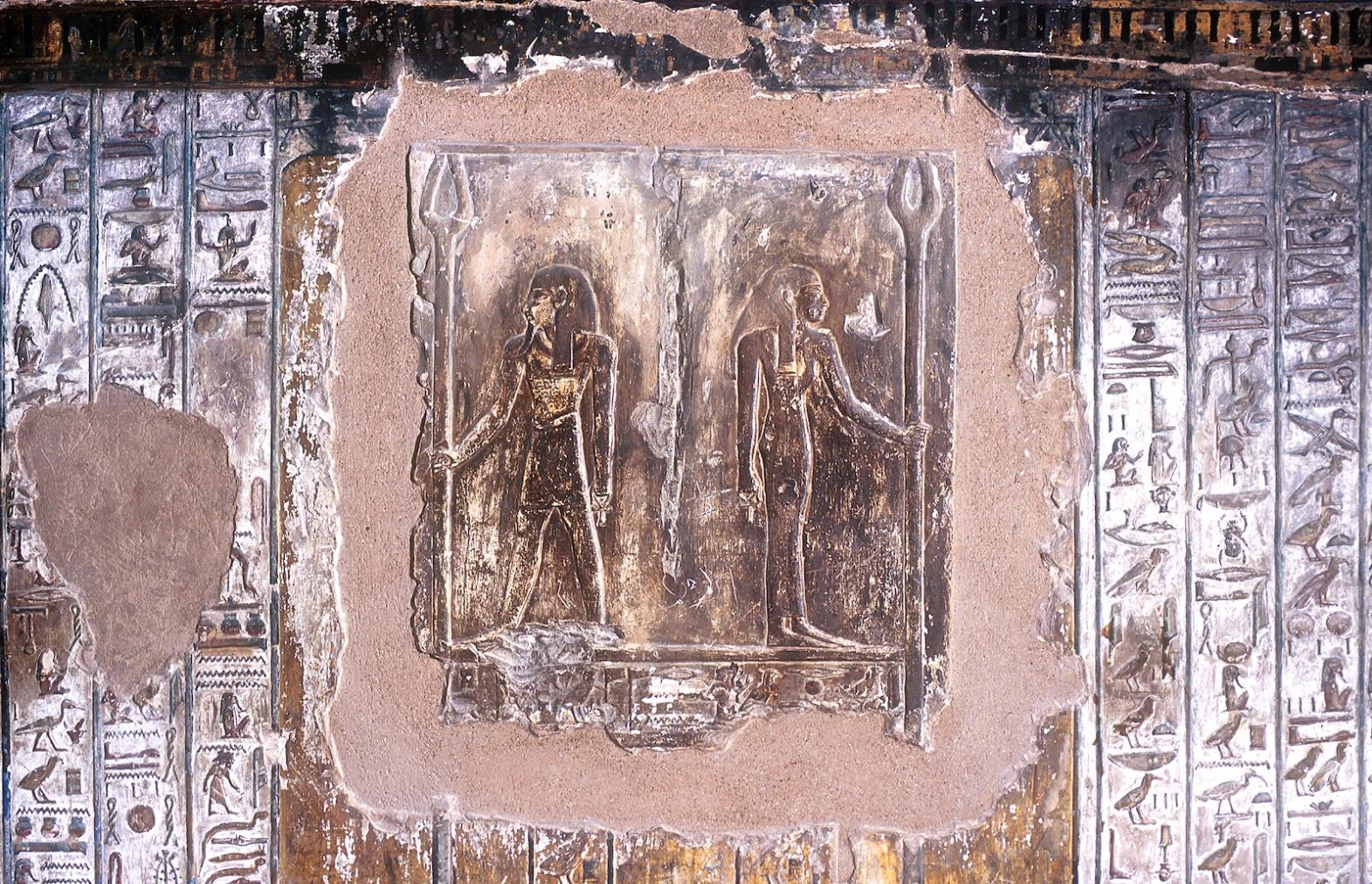
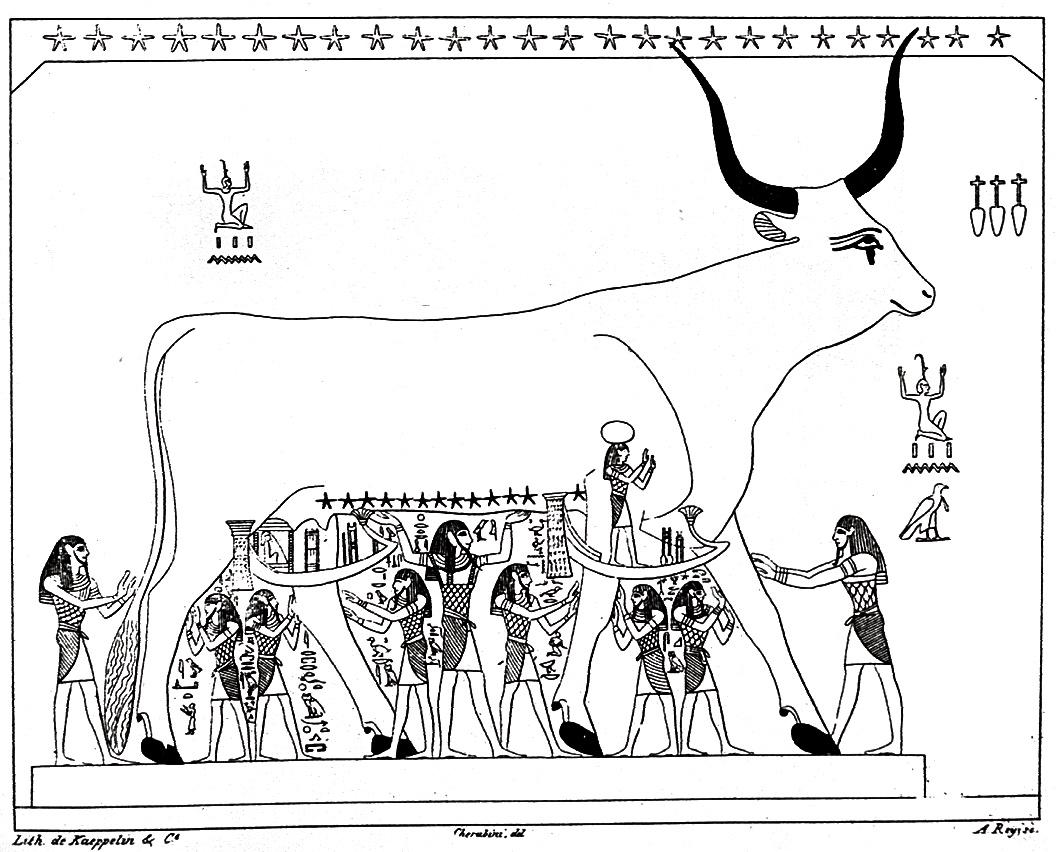
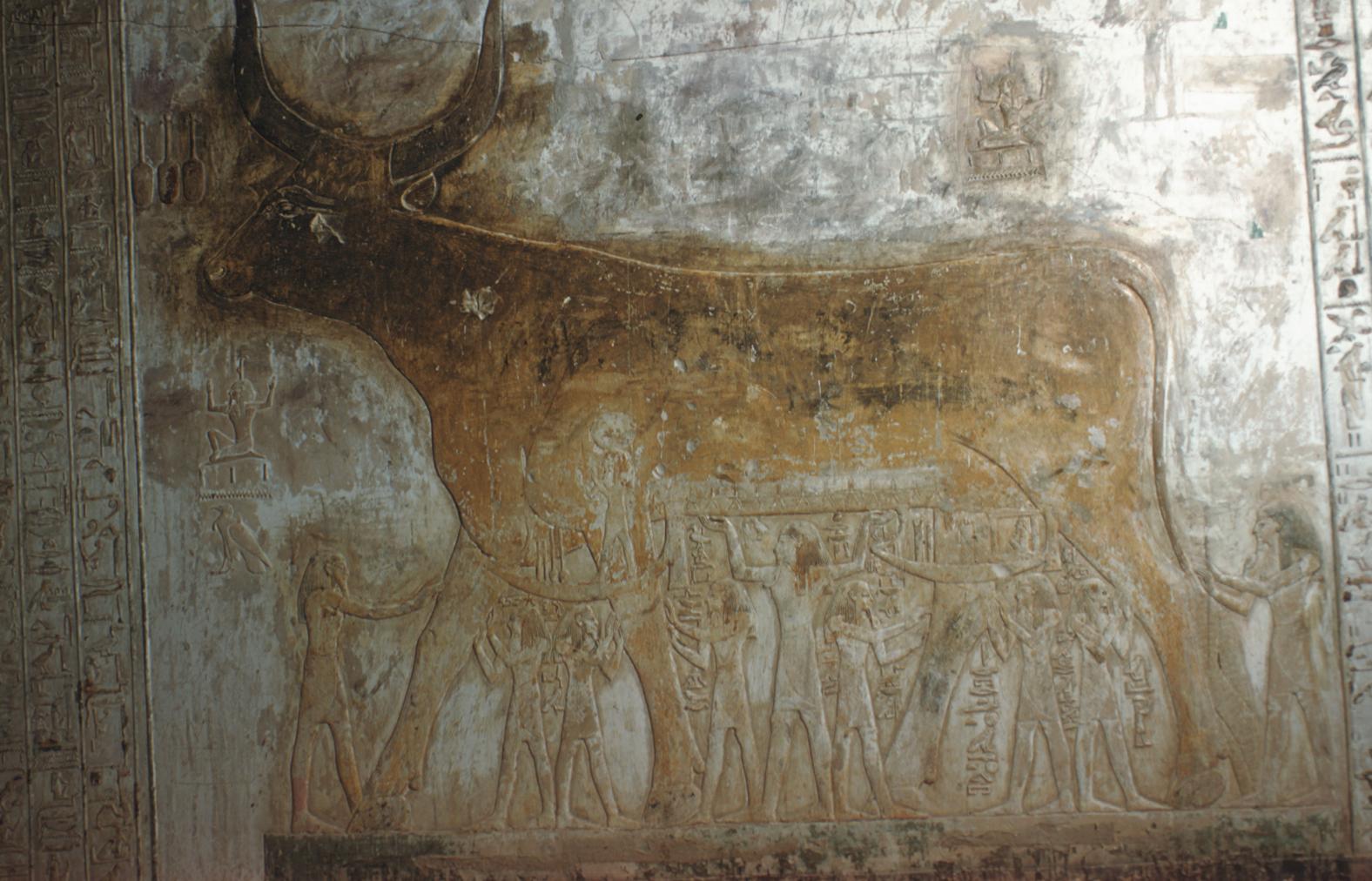
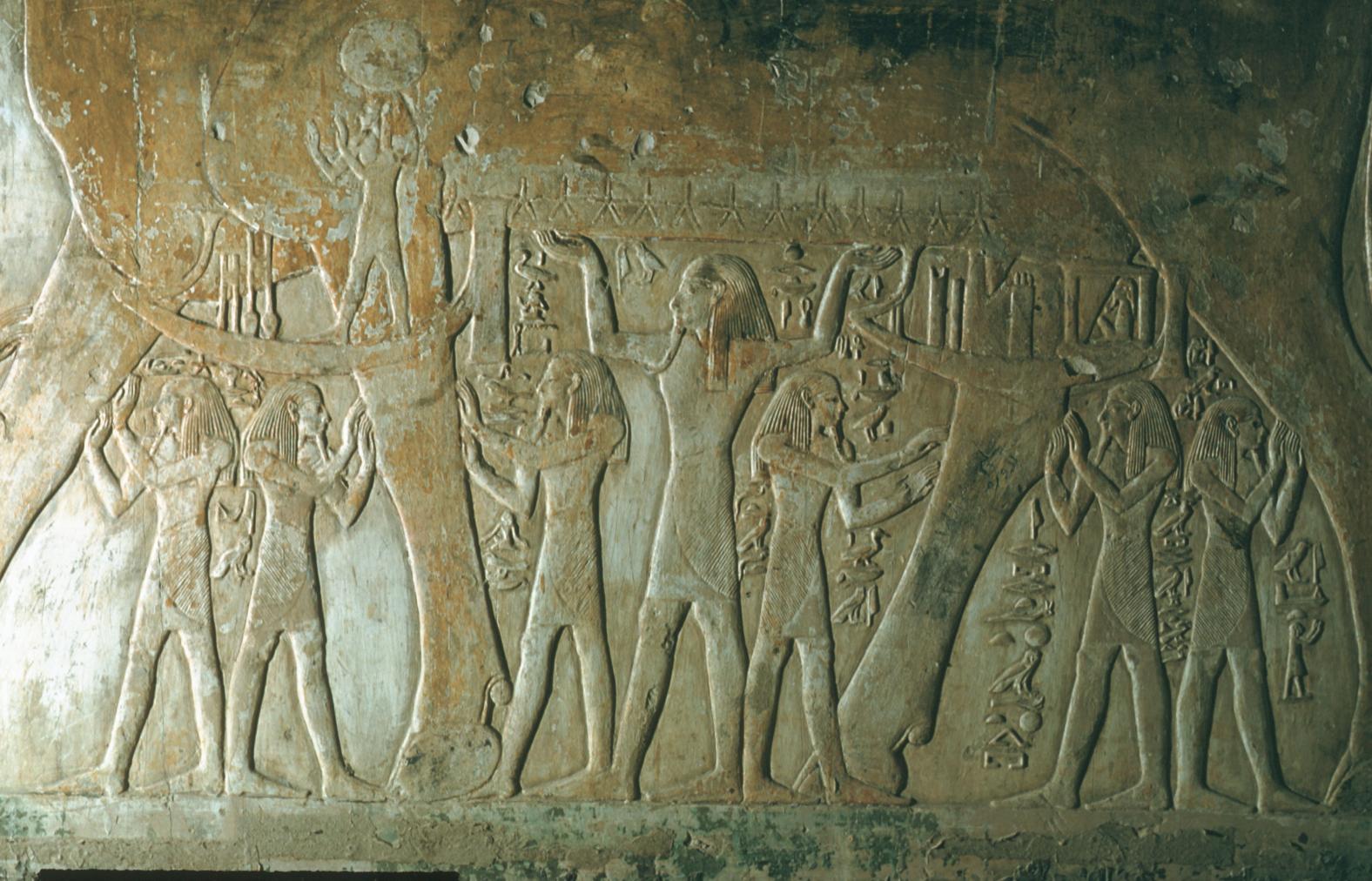
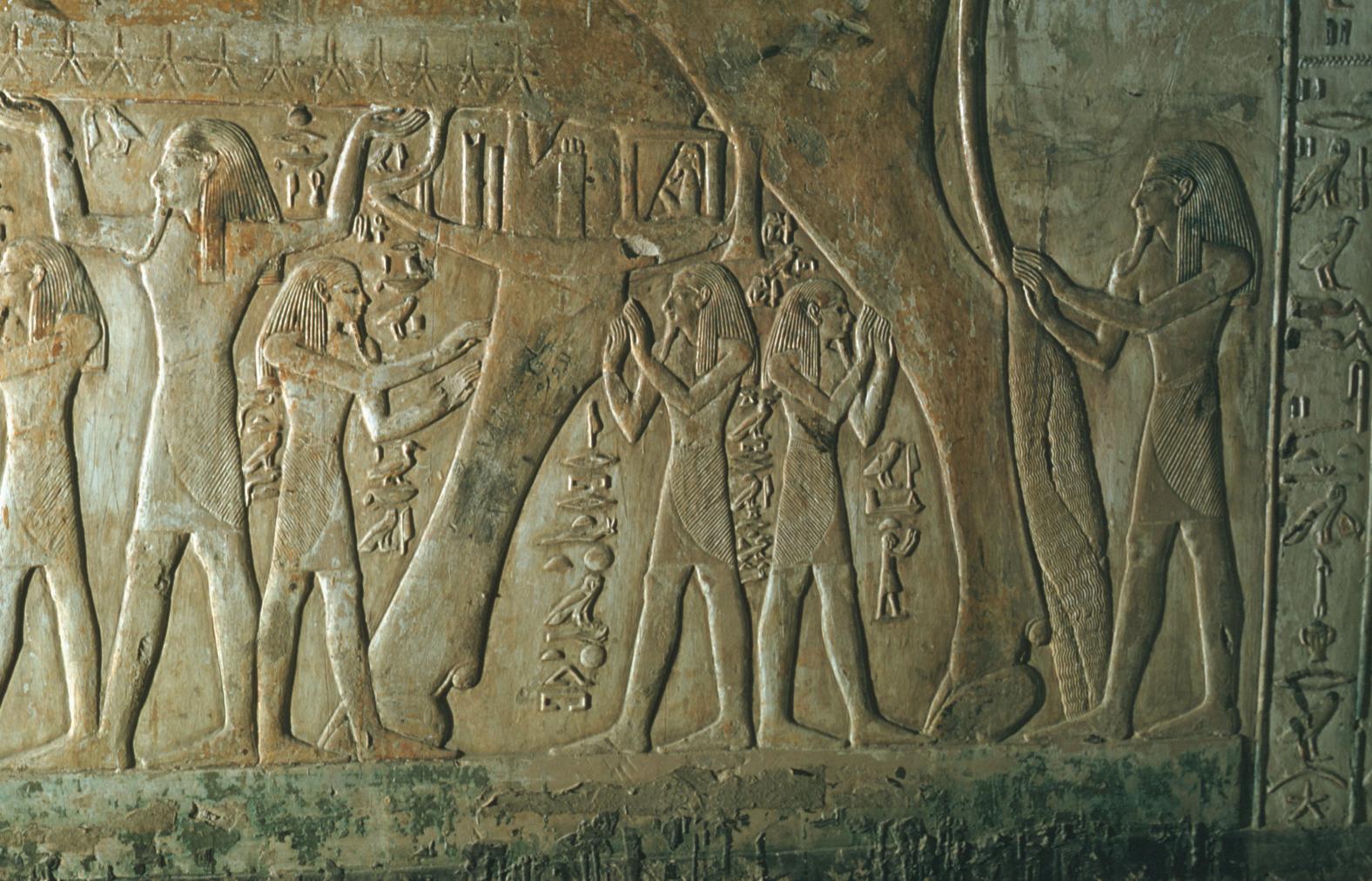
Corridor K
See entire tombThe entrance to the corridor is reached through the floor at the rear of the burial chamber J. Belzoni found the sarcophagus of Sety I, now in Soane's Museum, London, atop the entrance to this tunnel. At least the first part of the tunnel consisted of a divided stairway. The tunnel has not been properly excavated. In places, probes throughout the debris indicated that the walls were smooth and well carved. The floor consisted of a divided stairway and the ceilings were smooth and sloped down regularly, although at the beginning of the corridor a series of stepped red brick arches constructed by Carter covers the original ceiling. Gates appear to have been placed at intervals down the length of the tunnel, the first of which is visible on the Theban Mapping Project plan of the tomb. In 2001, a project to geophysically explore the corridor was approved by the Supreme Council of Antiquities. No results have yet been published.
About
About
KV 17, located in the southeast branch of the Wadi, is the longest and deepest of all the tombs in the Valley of the Kings. It is the first tomb to be decorated with a complete program of religious texts. The tomb is decorated with the Litany of Ra (corridor B, gate C, stairwell C), Book of the Dead (stairwell C), Imydwat (stairwell C, corridor D, gate Fa, side chamber Fa, side chamber Jb, burial chamber J), Book of Gates (pillared chamber F, gate Fa, side chamber Ja, burial chamber J), Opening of the Mouth ritual (corridor G, corridor H, gate H), Book of the Heavenly Cow (side chamber Je), astronomical scenes (burial chamber J), Sety I with deities (corridor B, well chamber E, pillared chamber F, chamber I, side chamber Fa, burial chamber J, gate G), deities (stairwell C, gate D, gate J, gate Jb, gate Jd, side chamber Jb, burial chamber J), and representations of the king alone (gate Ja, gate Je).
It is also the first tomb to have a vaulted burial chamber. The tomb of Sety I consists of a total of seven corridors and ten chambers, decorated with painted, raised relief (with the exception of Fa). Three sloping corridors (B, C, D), lead to a well chamber (E) and pillared chamber (F) with side chamber (Fa). A side descent and two sloping corridors (G, H) lead to a chamber (I) beyond which lies burial chamber J. This has five side chambers (Ja-Je), and a long passage (K) at the rear.
For a virtual tour of the tomb, see Factum Arte's 3D Virtual Tour
Noteworthy features:
KV 17 is one of the most completely decorated tombs in the Valley of the Kings, with painted raised relief decoration of the highest quality. There is an unusually long descending passage (K) in the floor of the burial chamber J. Recesses were cut in the benches of Jb.
Site History
After Sety I's burial the tomb was used as a temporary cache for other royal mummies including Rameses I and Rameses II. These mummies were all subsequently moved to TT 320.
Dating
This site was used during the following period(s):
Exploration
Conservation
Conservation History
In 1825, Burton finished building protective dykes around the tomb entryway to prevent flood waters from entering the tomb. Carter did a large amount of consolidation work in 1902-1903, particularly in the burial chamber J, making extensive use of brick masonry to support gate J, the lower portions of the walls and gate Jd, as well as the upper part of corridor K. In 2001, work was begun to change the modern walls around the tomb's entrance to reduce potential flood damage.
Site Condition
In the year following the opening of the tomb, flood waters from rains entered the lower chambers. Belzoni had filled the shaft in well chamber E with debris, but had failed to complete the construction of protective dykes outside the tomb entrance. As a result of the expansion and contraction of the stone and loosening of the plaster, large pieces of the walls and ceiling fell. James Burton completed Belzoni's dykes and cleared well E of debris; the tomb has not flooded since.
As a part of his conservation work, Carter repaired damage to the walls, but cracks have reappeared and the condition of the walls continues to worsen. The tomb has also suffered at the hands of vandals who have hacked away at its walls searching for hidden chambers or trying to remove painted relief. For several reasons, the once bright colors of the painted reliefs have faded. Some painted reliefs, such as the walls from chamber I, faded because of the wet squeezes taken by Belzoni, Wilkinson and other Egyptologists; others have faded simply as a result of time. The smoke from candles and torches used by early visitors to the tomb has blackened the walls and left soot deposits on the painted reliefs.
Hieroglyphs
Sety I
 King of Upper and Lower Egypt, Eternal is the Justice of Ra, Son of Ra, He who Belongs to Seth, Beloved of Ptah
King of Upper and Lower Egypt, Eternal is the Justice of Ra, Son of Ra, He who Belongs to Seth, Beloved of Ptah
niswt-bity mn-mAat-Raw sA-Raw tit(w)-4tX mry-n-PtH
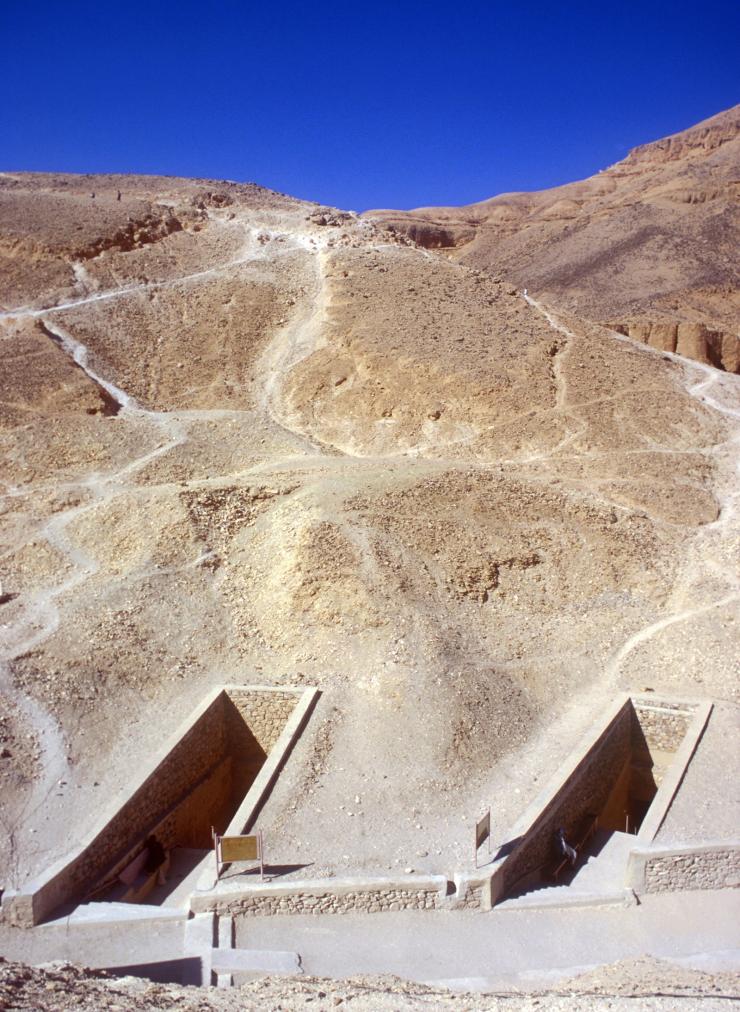






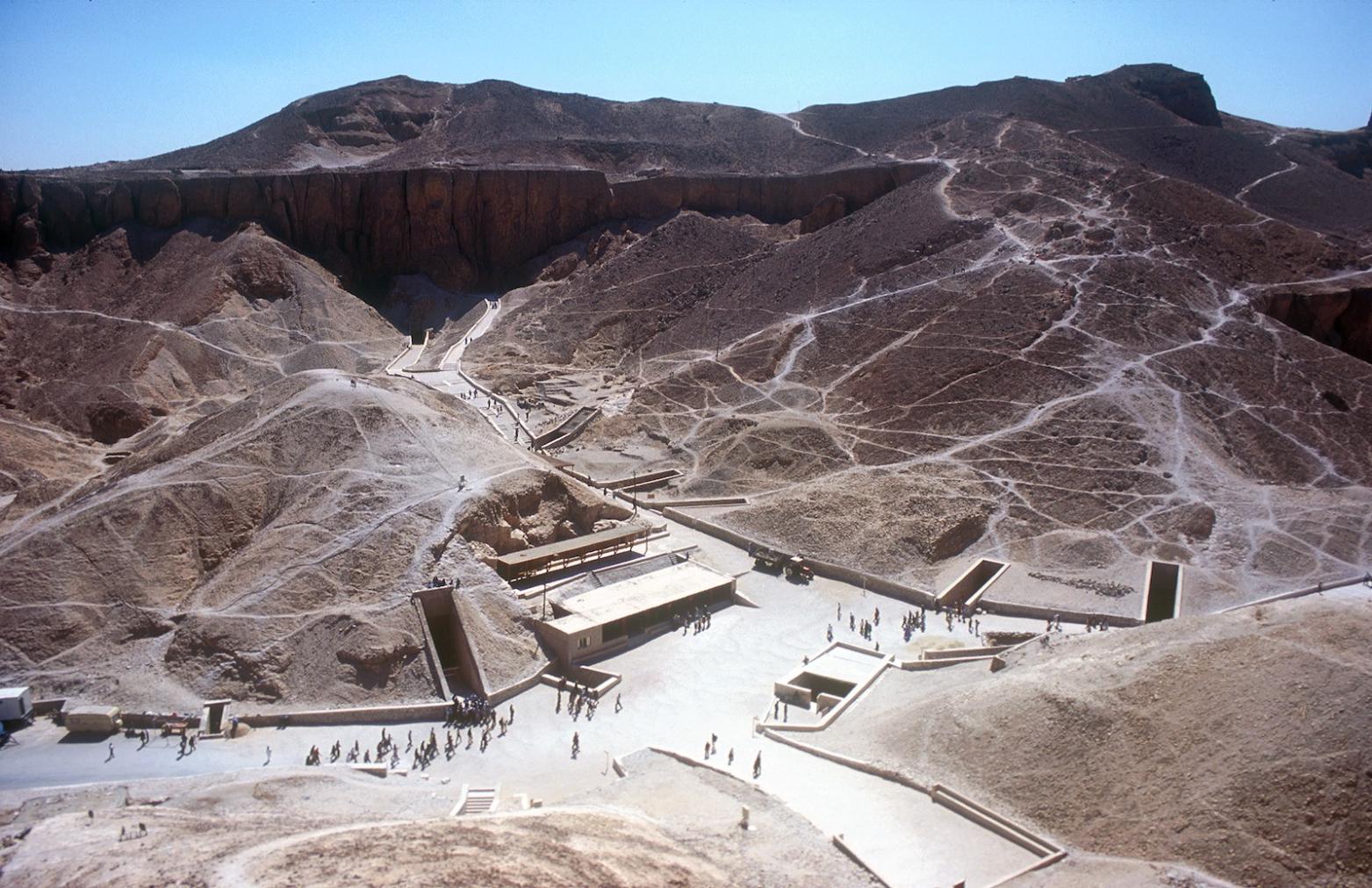
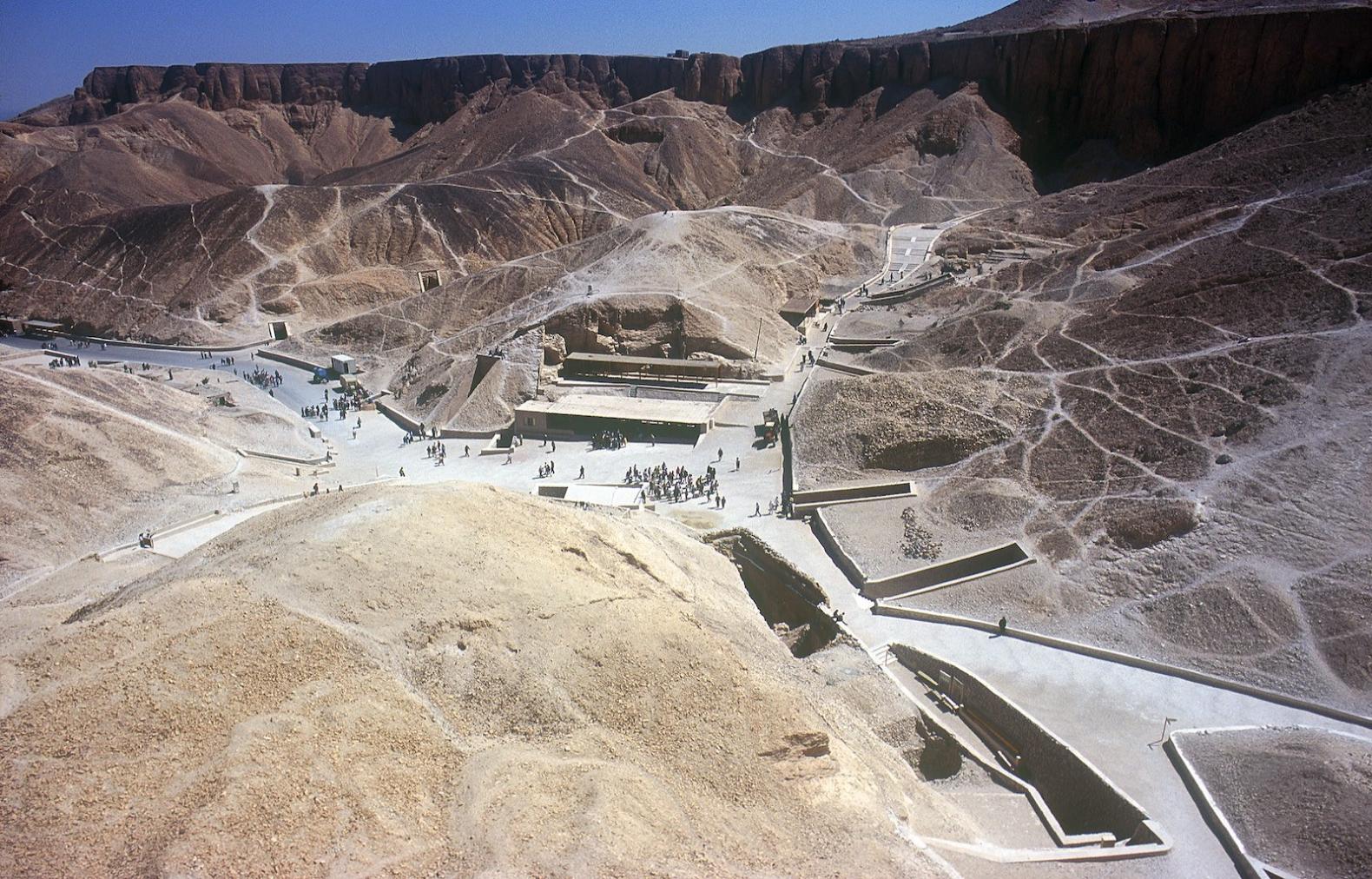





















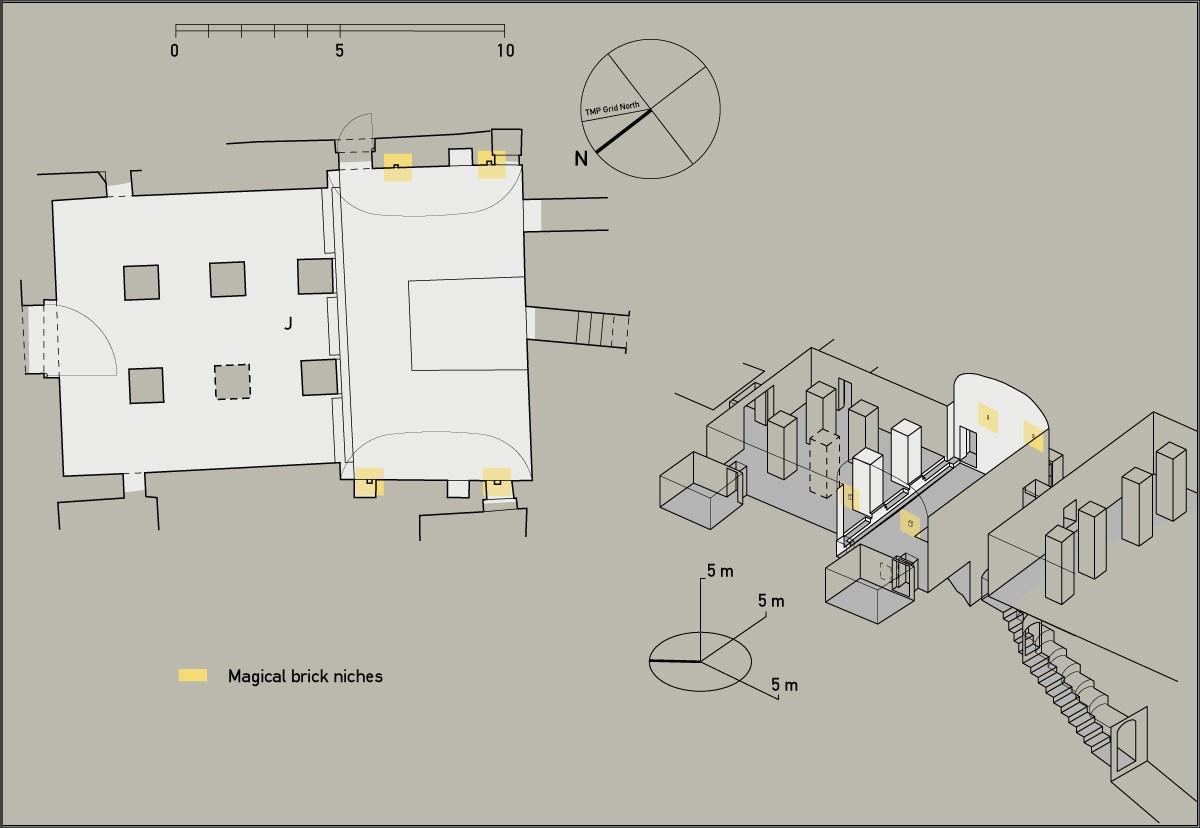


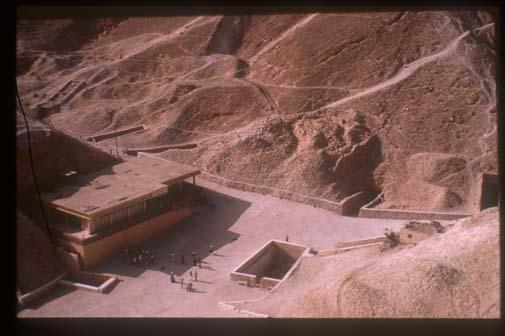
Old rest house, KV 18, KV 17, KV 16, KV 55, KV 62, KV 9, KV 10 and KV 11.




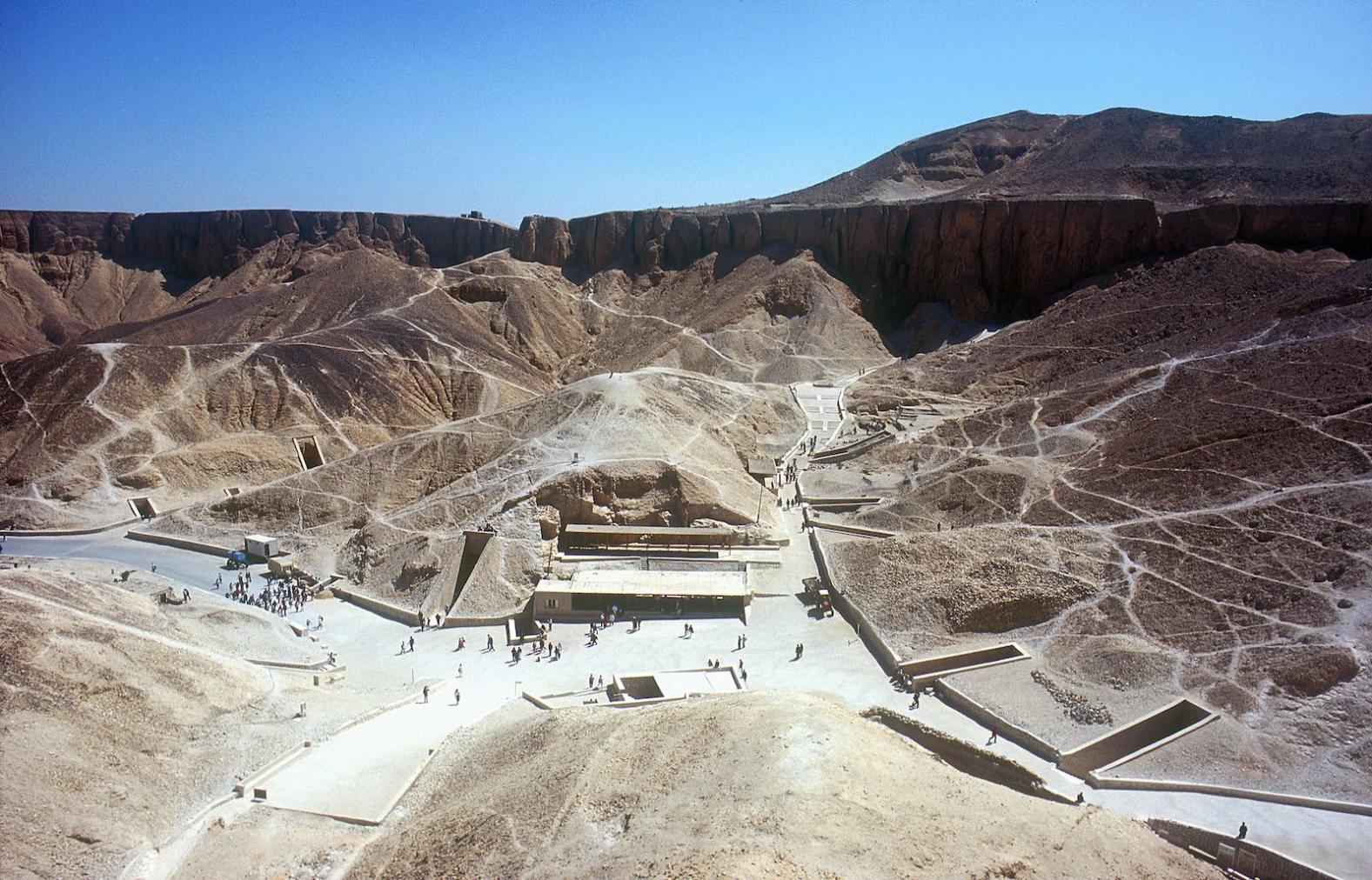










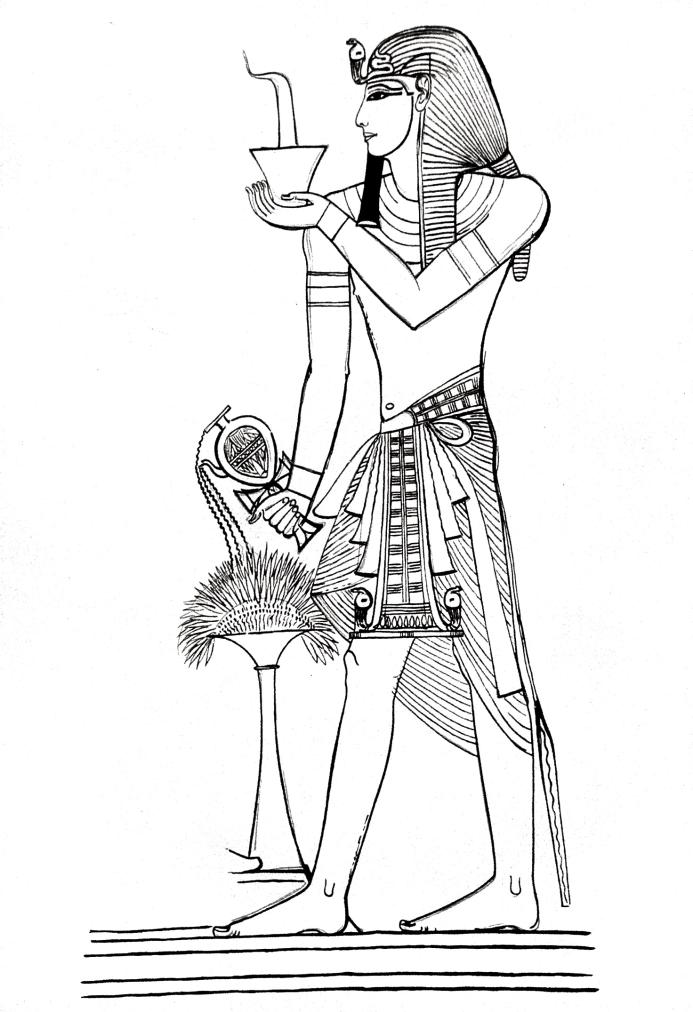














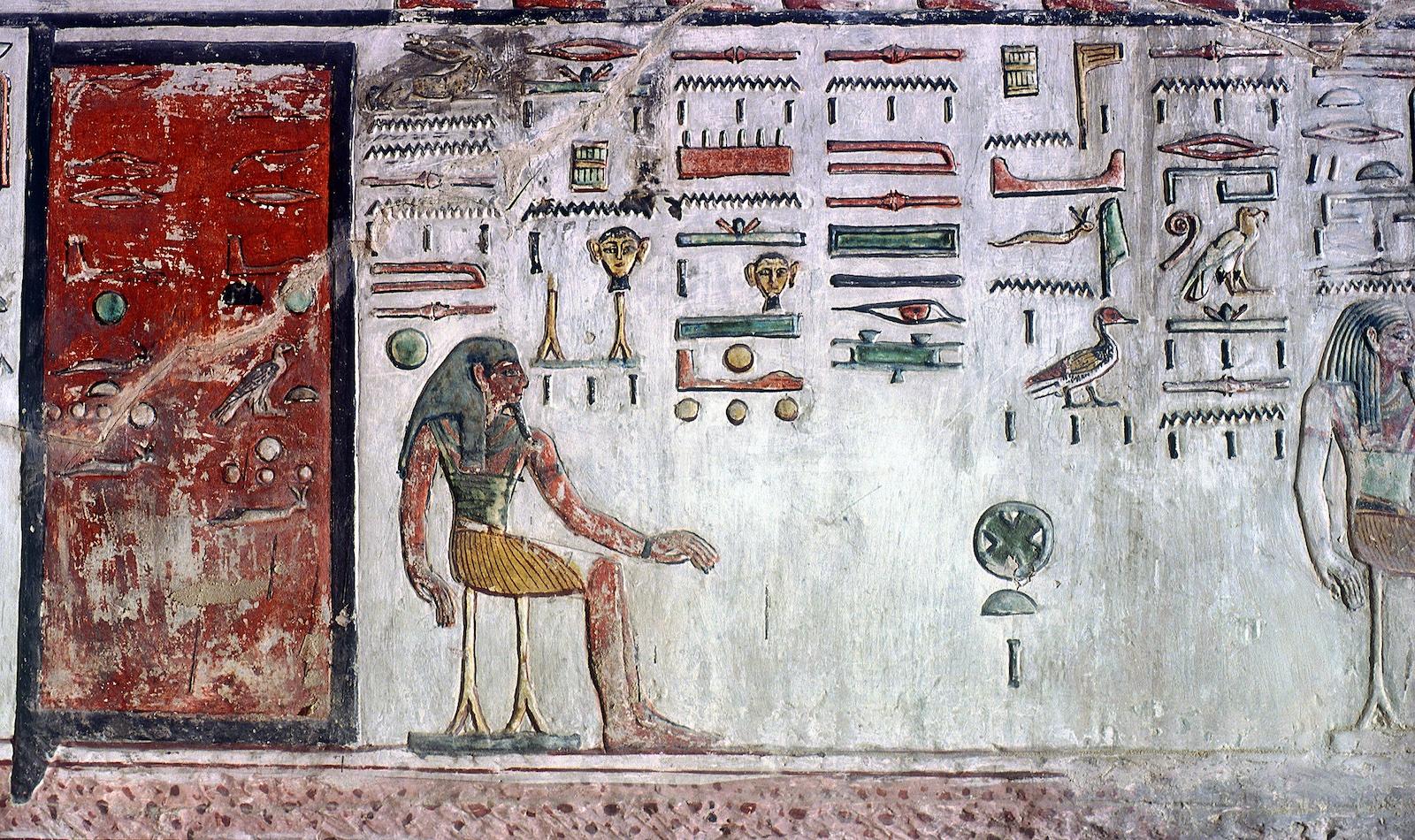
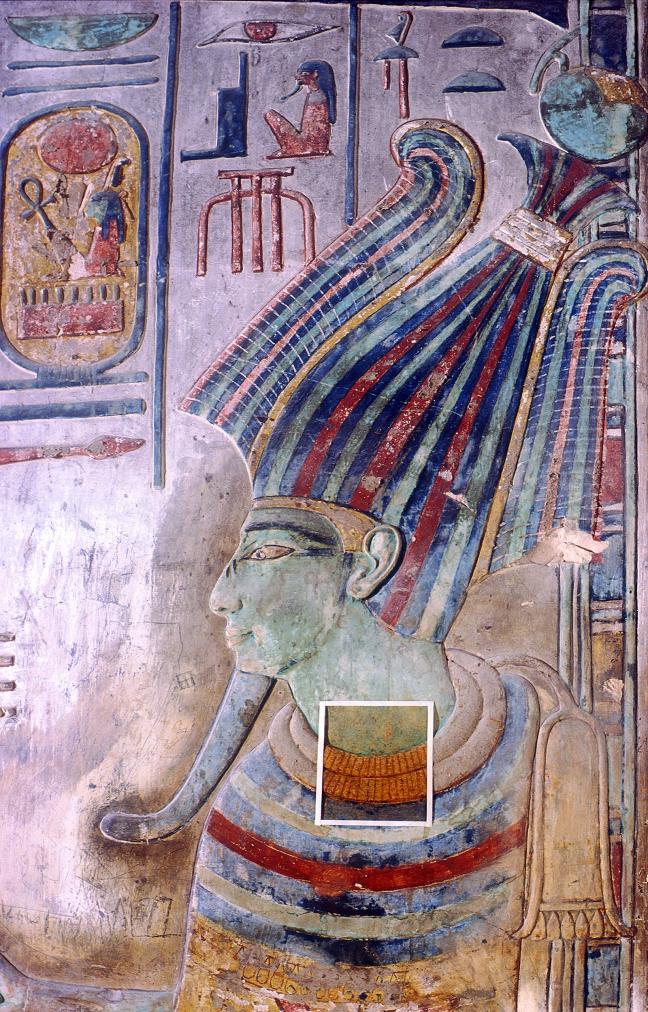




































































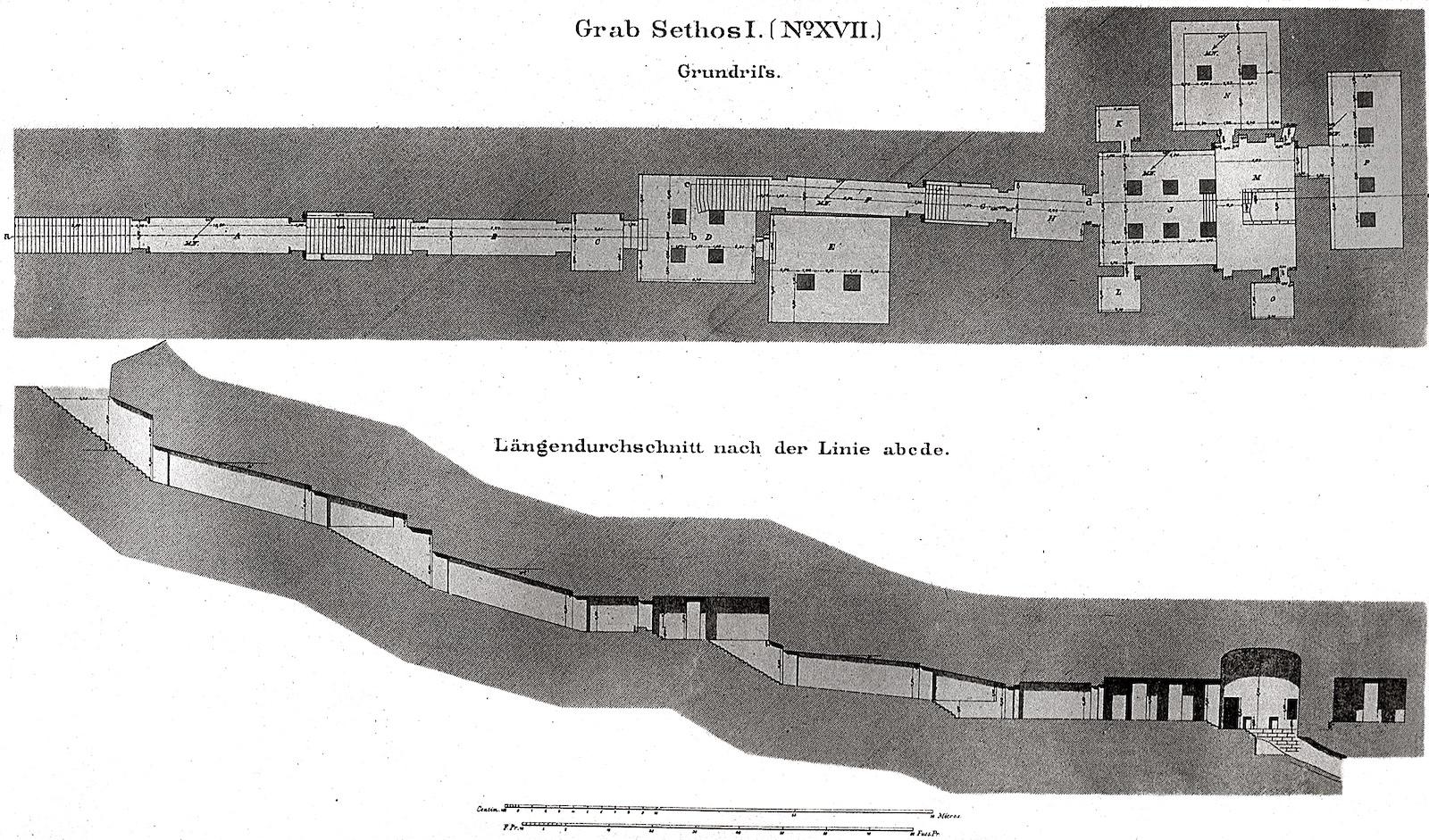













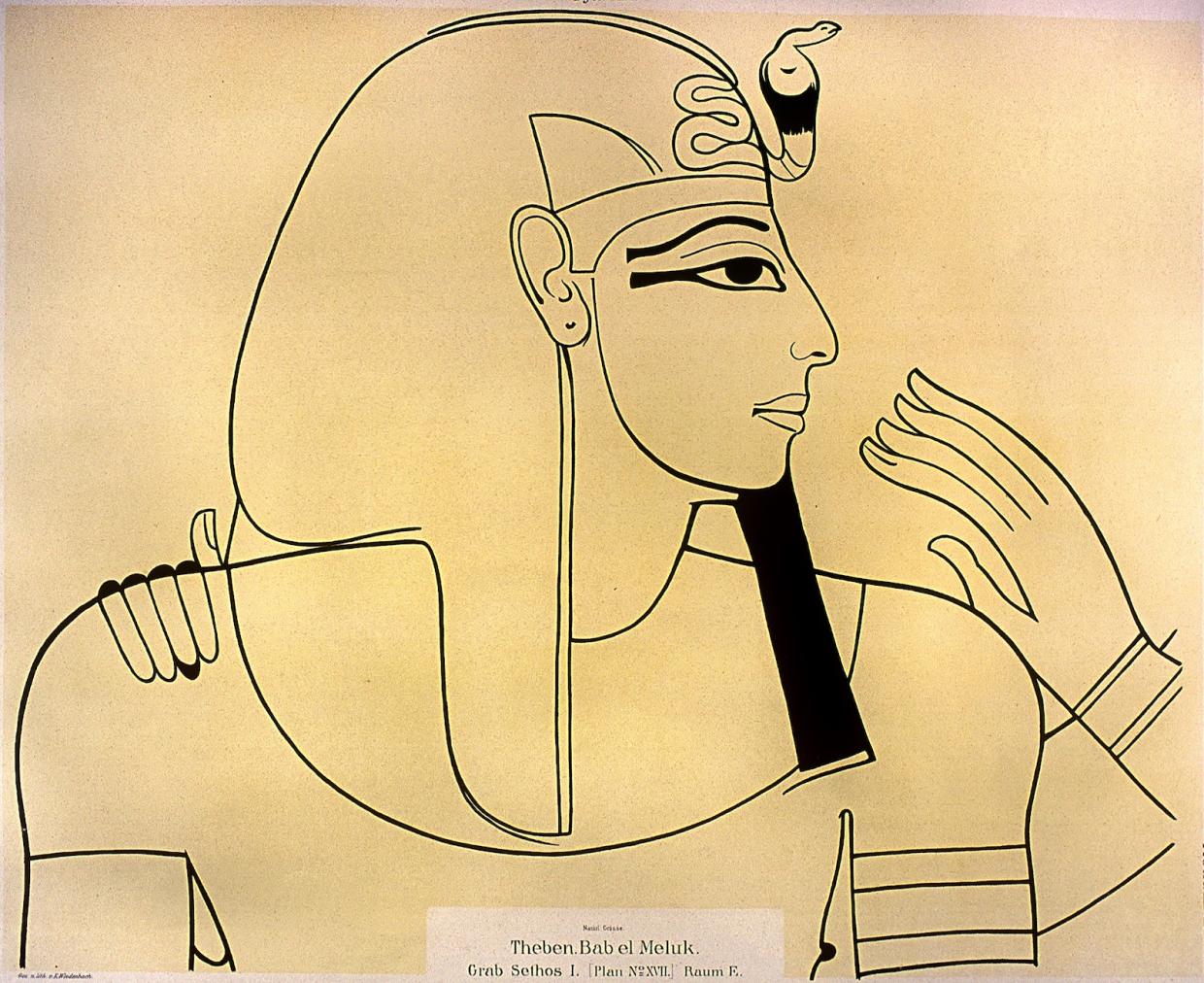













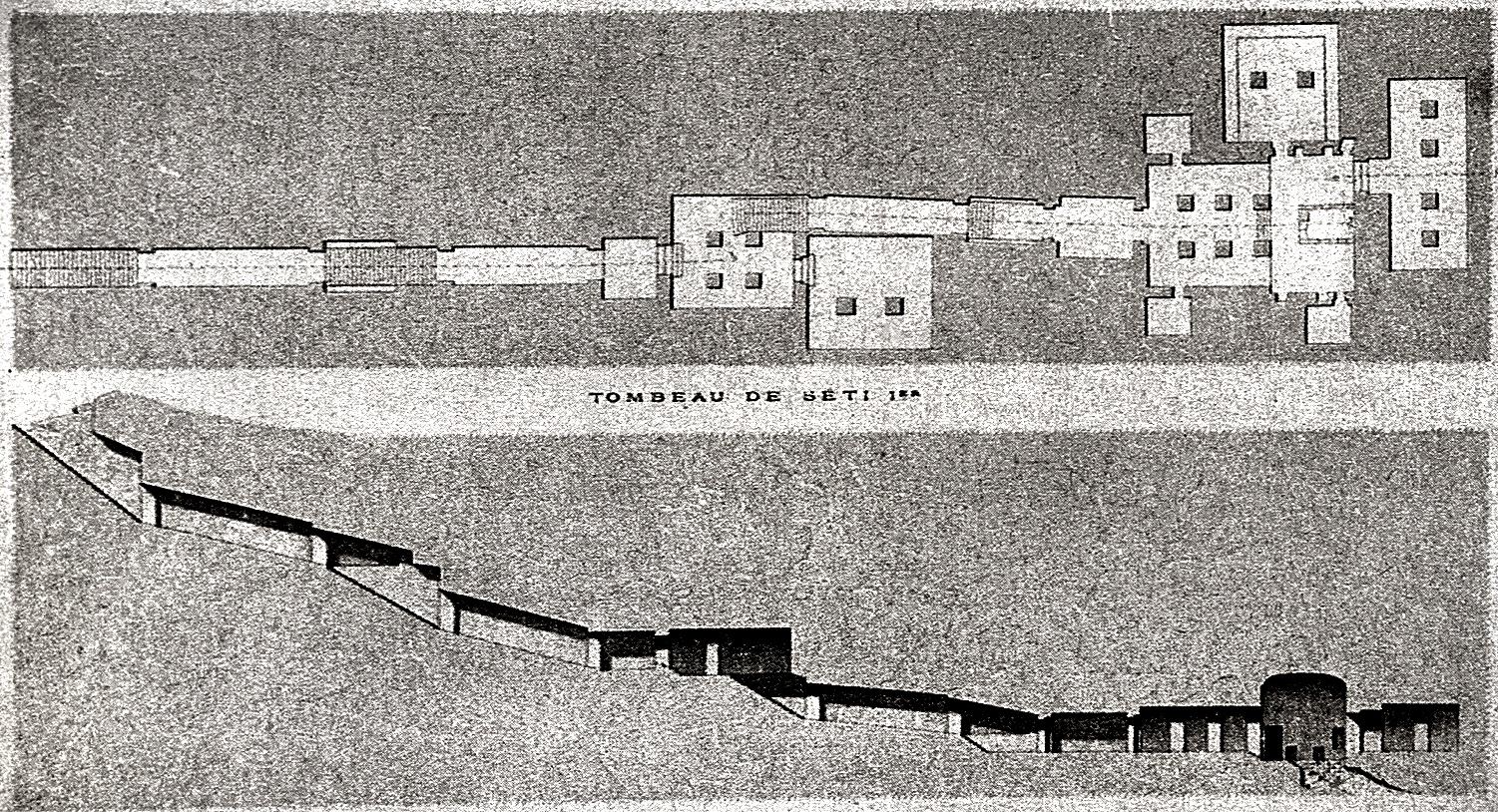





































Bibliography
Jones, Michael. The Work of the American Research Center in Egypt in the Tomb of Sety I in the Valley of the Kings, 1998-1999. In: Zahi Hawass and Lyla Pinch Brock (eds.). Egyptology at the Dawn of the Twenty-first Century: Proceedings of the Eighth International Congress of Egyptologists, Cairo, 2000. Cairo: American University in Cairo Press, 2003. I: 252-261.
Jones, Michael. The Work of the American Research Center in Egypt in the Tomb of Sety I in the Valley of the Kings, 1998-1999. In: Zahi Hawass (ed..), Egyptology at the Dawn of the Twenty-first Century: Proceedings of the Eighth International Congress of Egyptologists, Cairo, 2000. Cairo: AUC Press, 2003. I, 138-146.
Lefébure, Eugène. Les hypogées royaux de Thebes, I: Le tombeau de Seti I. Paris: E. Leroux, 1886.
Lipinska, Jadwiga. The Mysterious Tunnel. In: Christopher Eyre, Anthony Leahy and Lisa Leahy (eds.). Unbroken Reed: Studies in the Culture and Heritage of Ancient Egypt in Honour of A.F. Shore. London: EES, (1994): 193-194.
Masquelier-Loorius, Julie. Séthi Ier et le début de la XIXe dynastie. Les grands pharaons. Paris: Pygmalion, 2013. Pp. 286-319.
Porter, Bertha and Rosalind Moss. Topographical Bibliography of Ancient Egyptian Hieroglyphic Text, Reliefs, and Paintings. I, 2. The Theban Necropolis: Royal Tombs and Smaller Cemeteries. Oxford: Clarendon Press, 1964. Pp. 535-545.
Reeves, Carl Nicholas. Valley of the Kings: The Decline of a Royal Necropolis (= Studies in Egyptology). London: KPI, 1990. Pp. 92-94.
Ridley, Ronald T. Champollion in the Tomb of Seti I: An Unpublished Letter. Chronique d’Égypte: Bulletin périodique de la Fondation égypto-logique Reine Elisabeth. Brussels. 66 (1991): 23-30.
Romer, John. Valley of the Kings. New York: Morrow, 1981.
